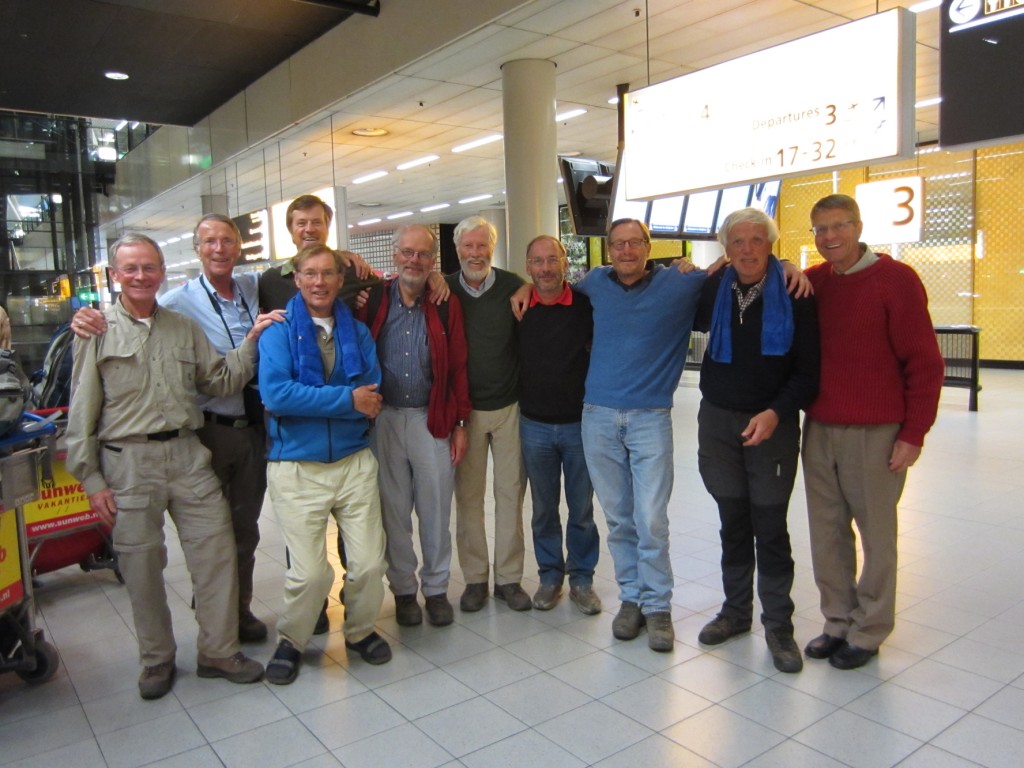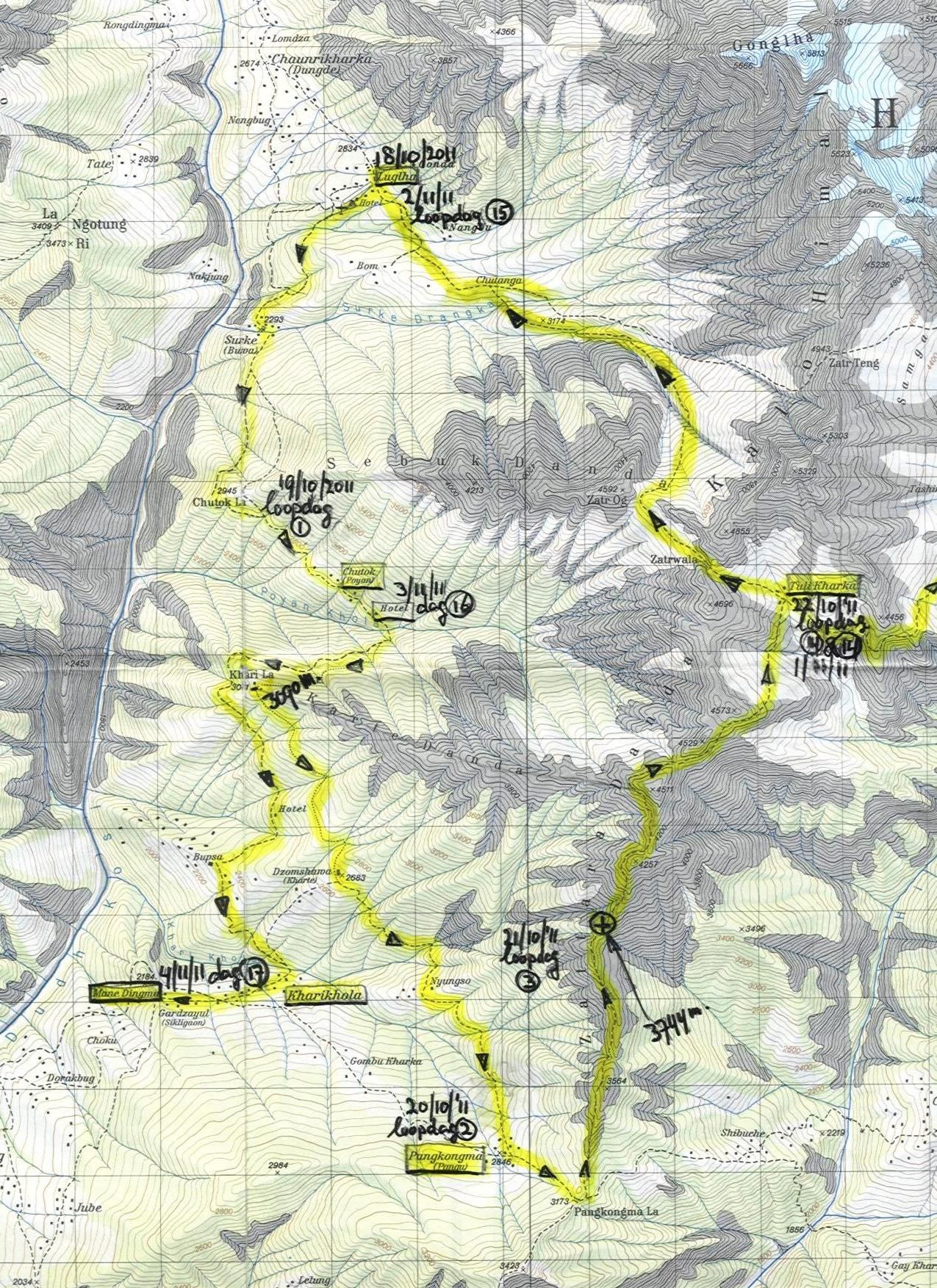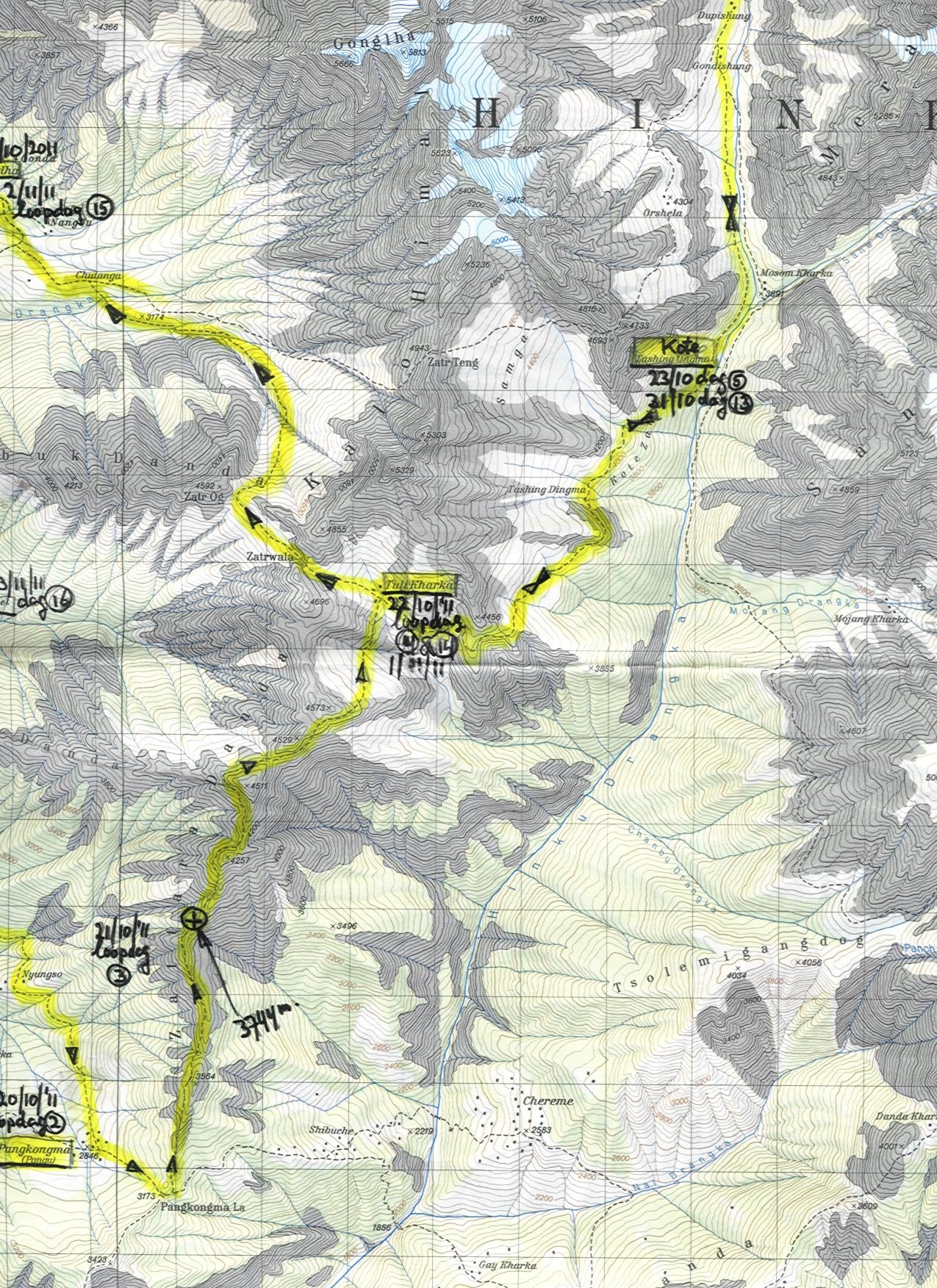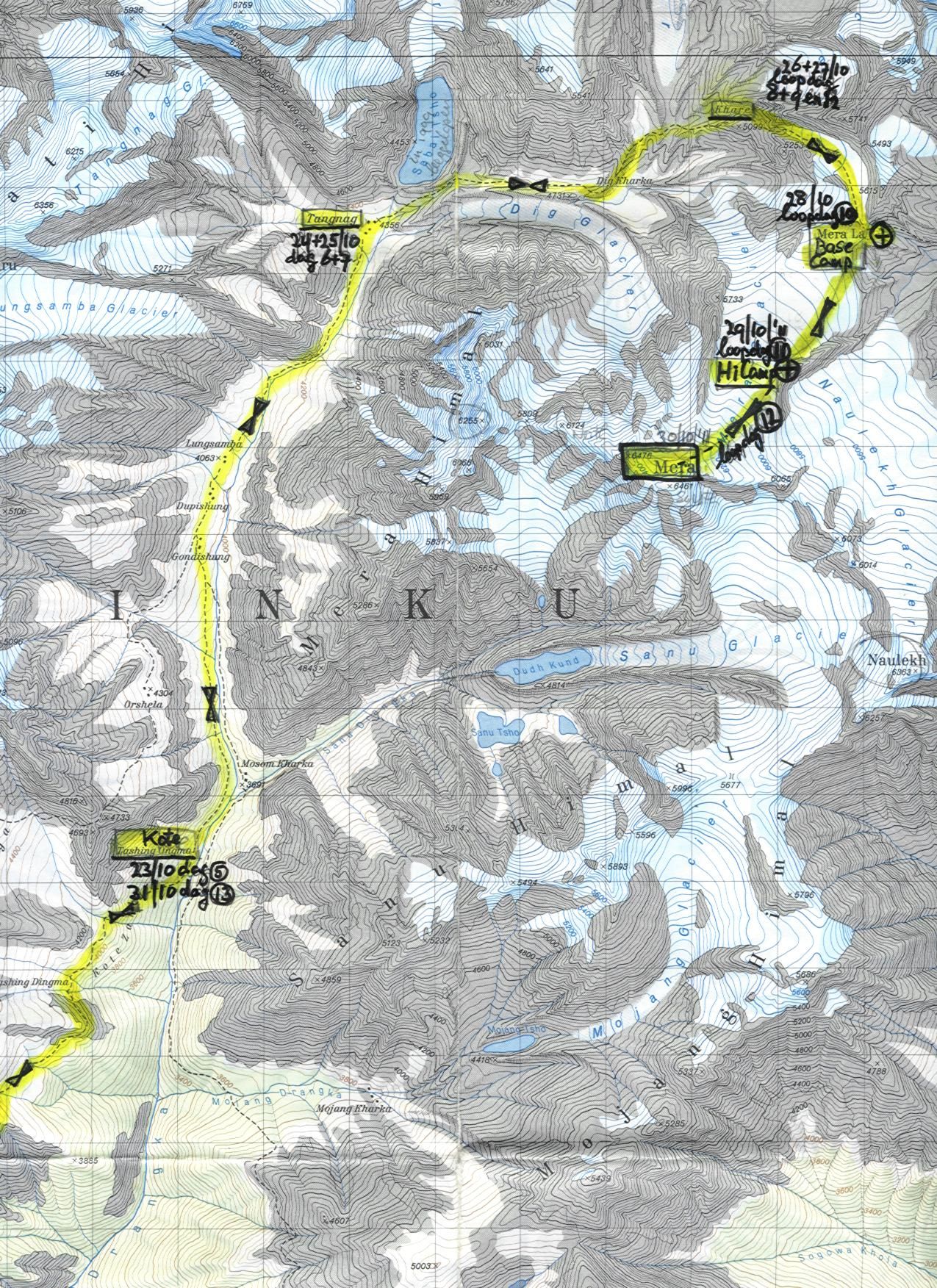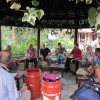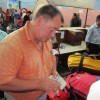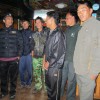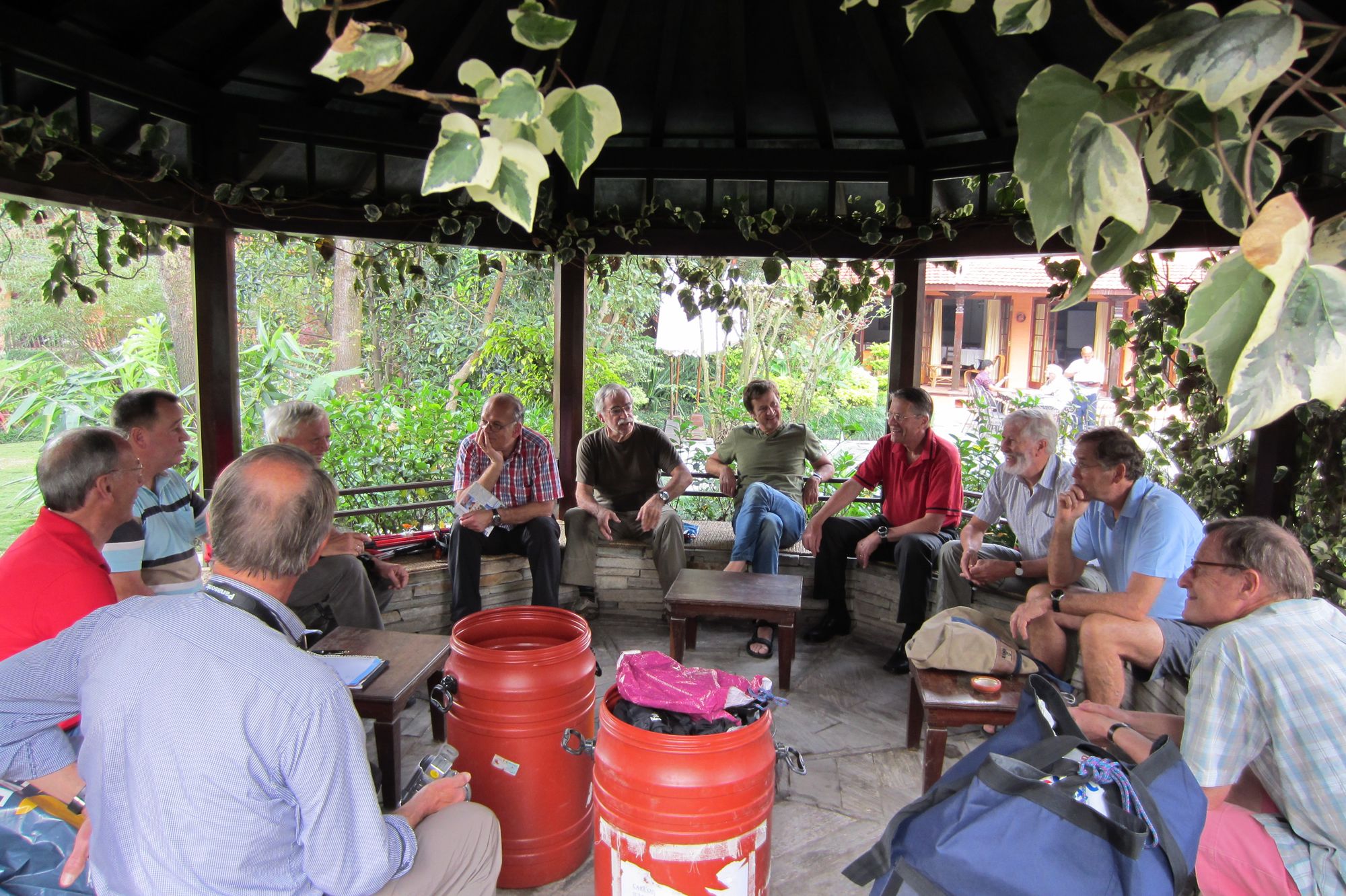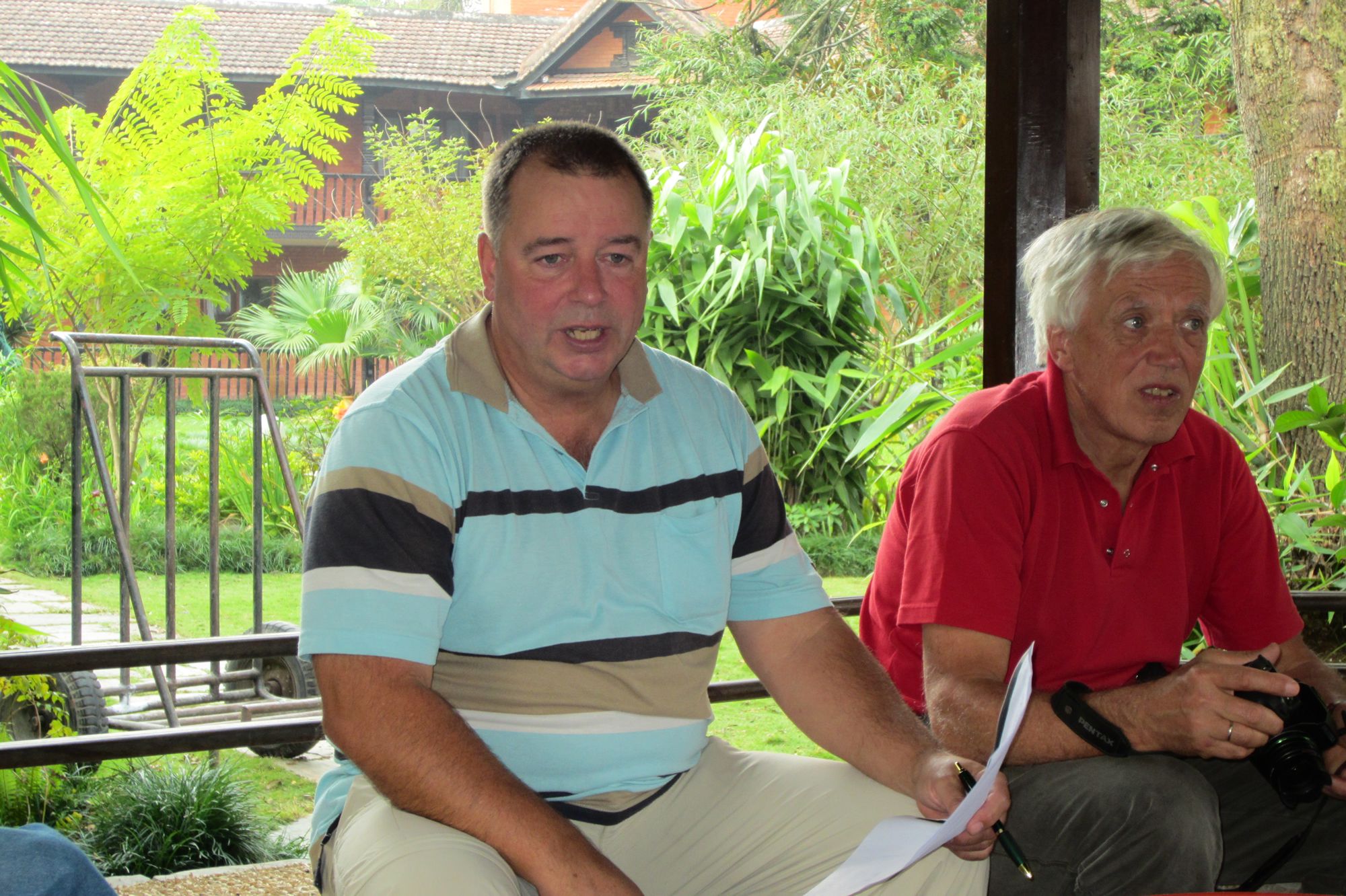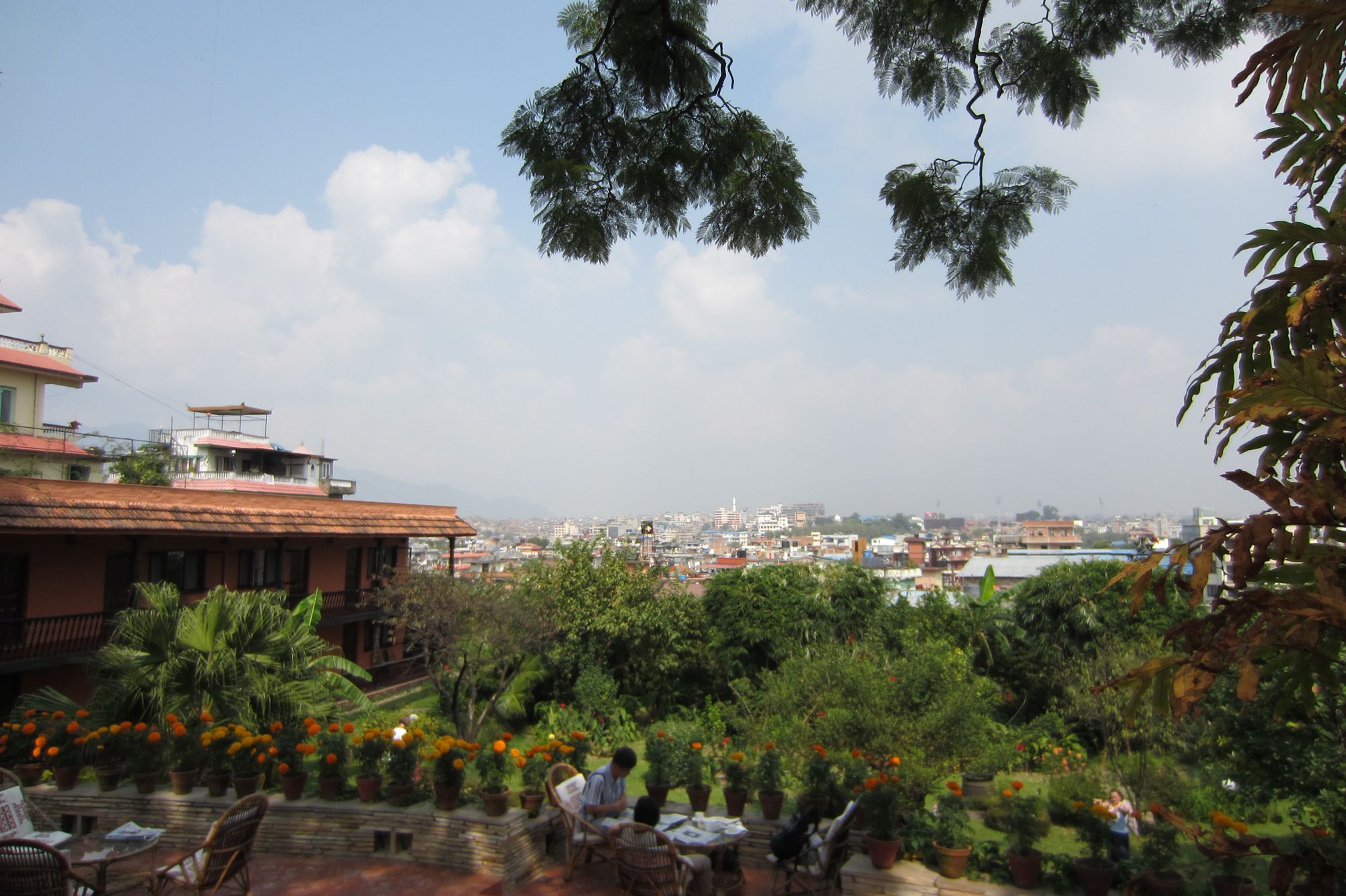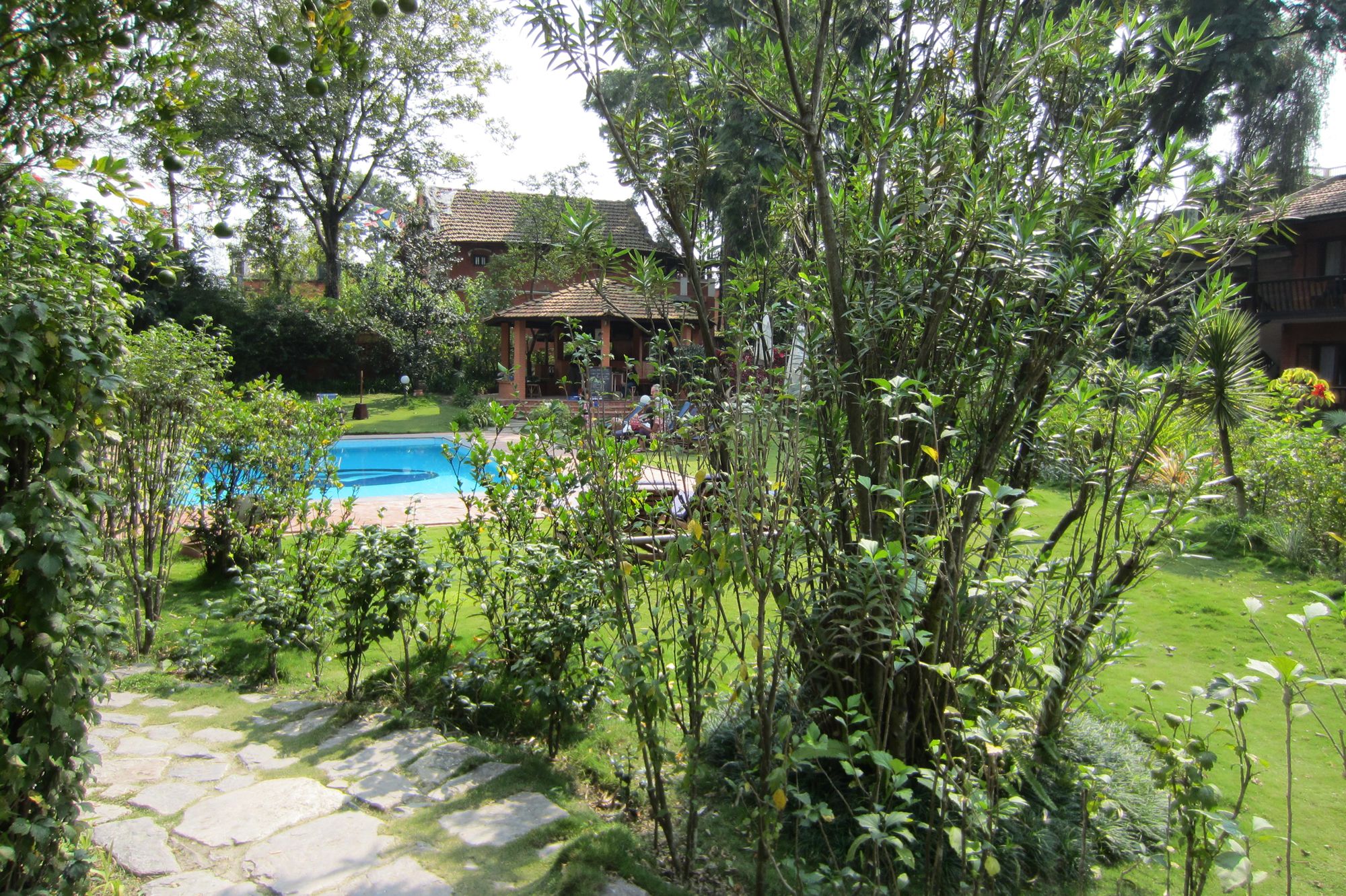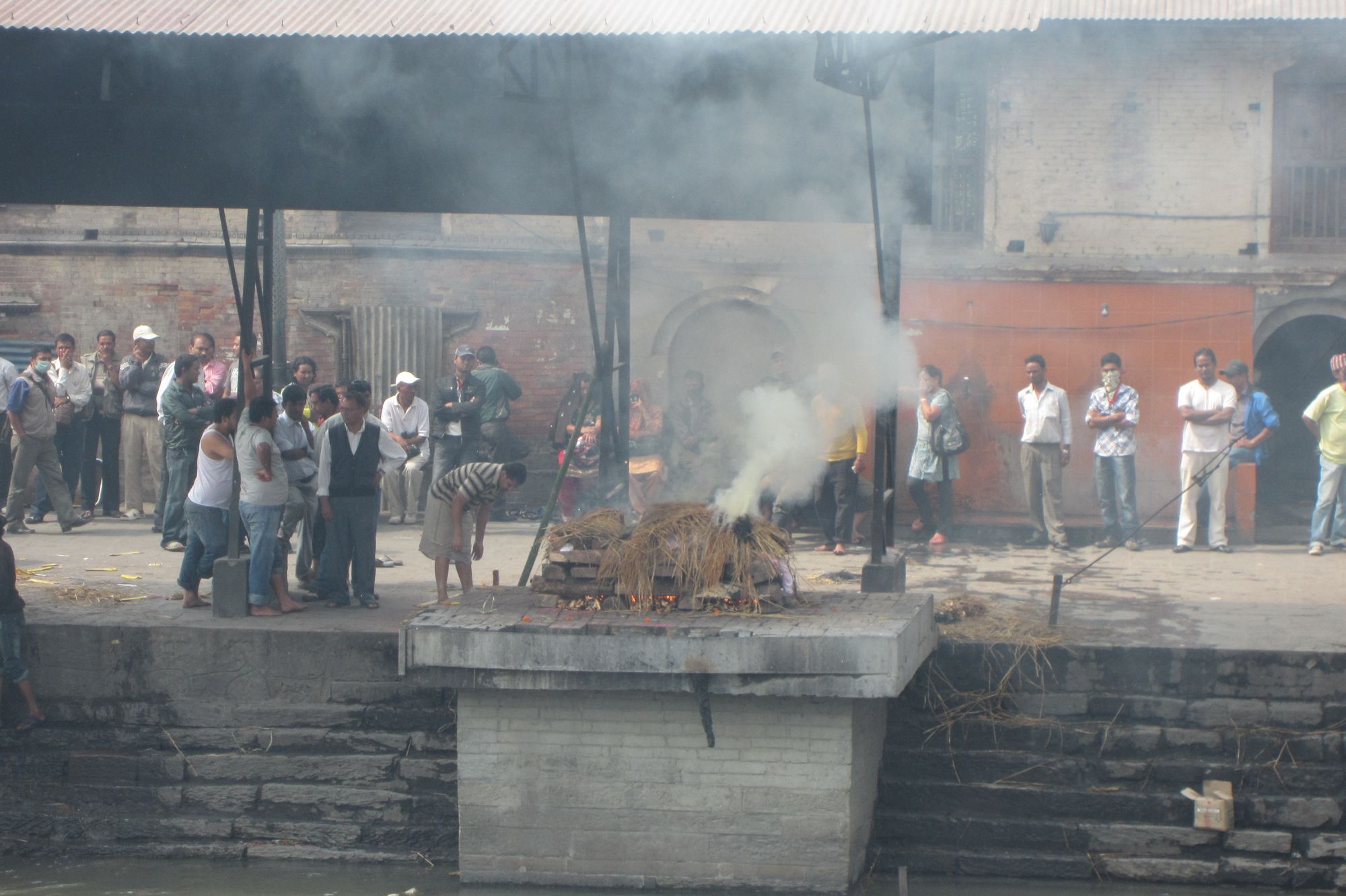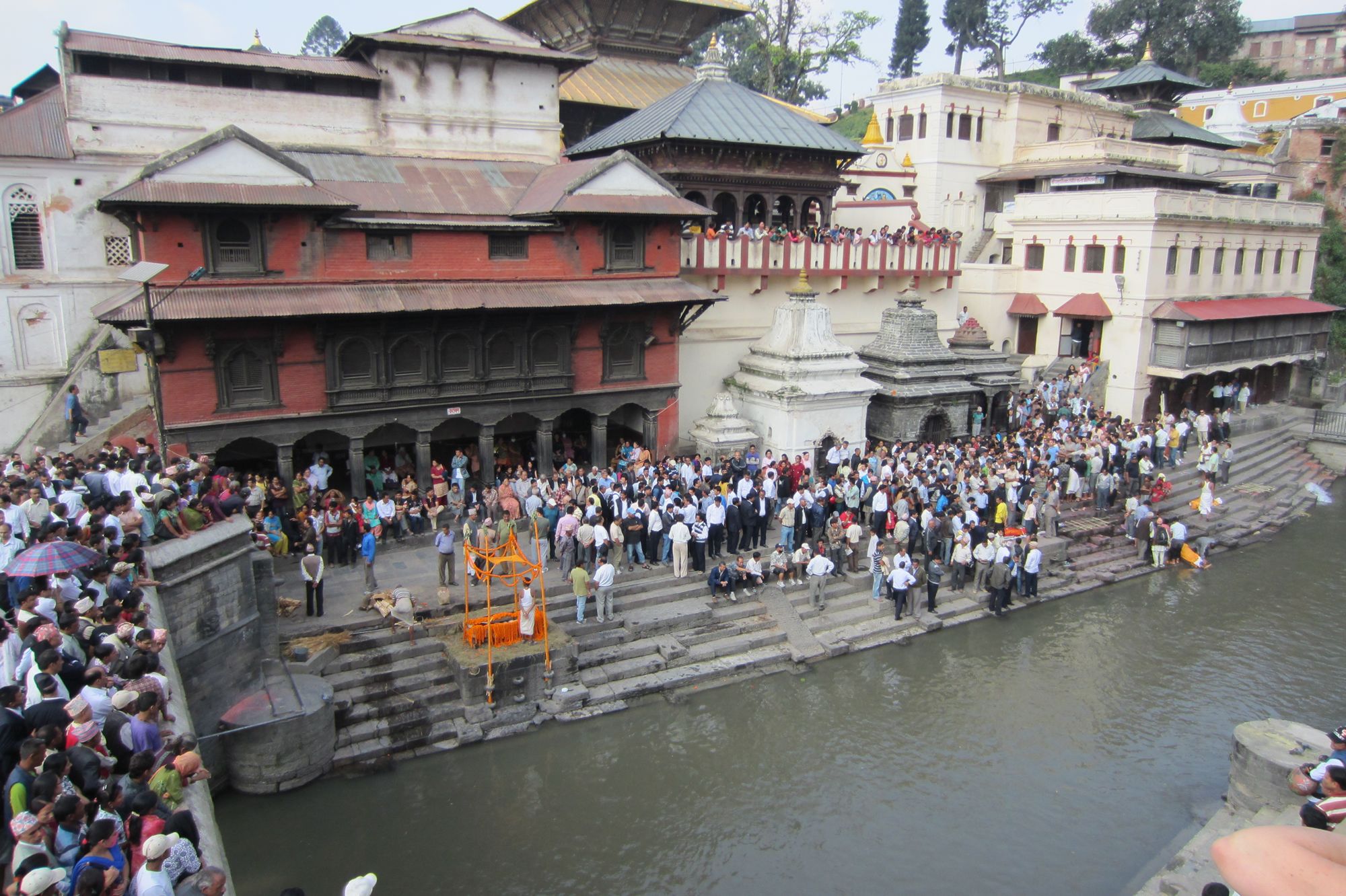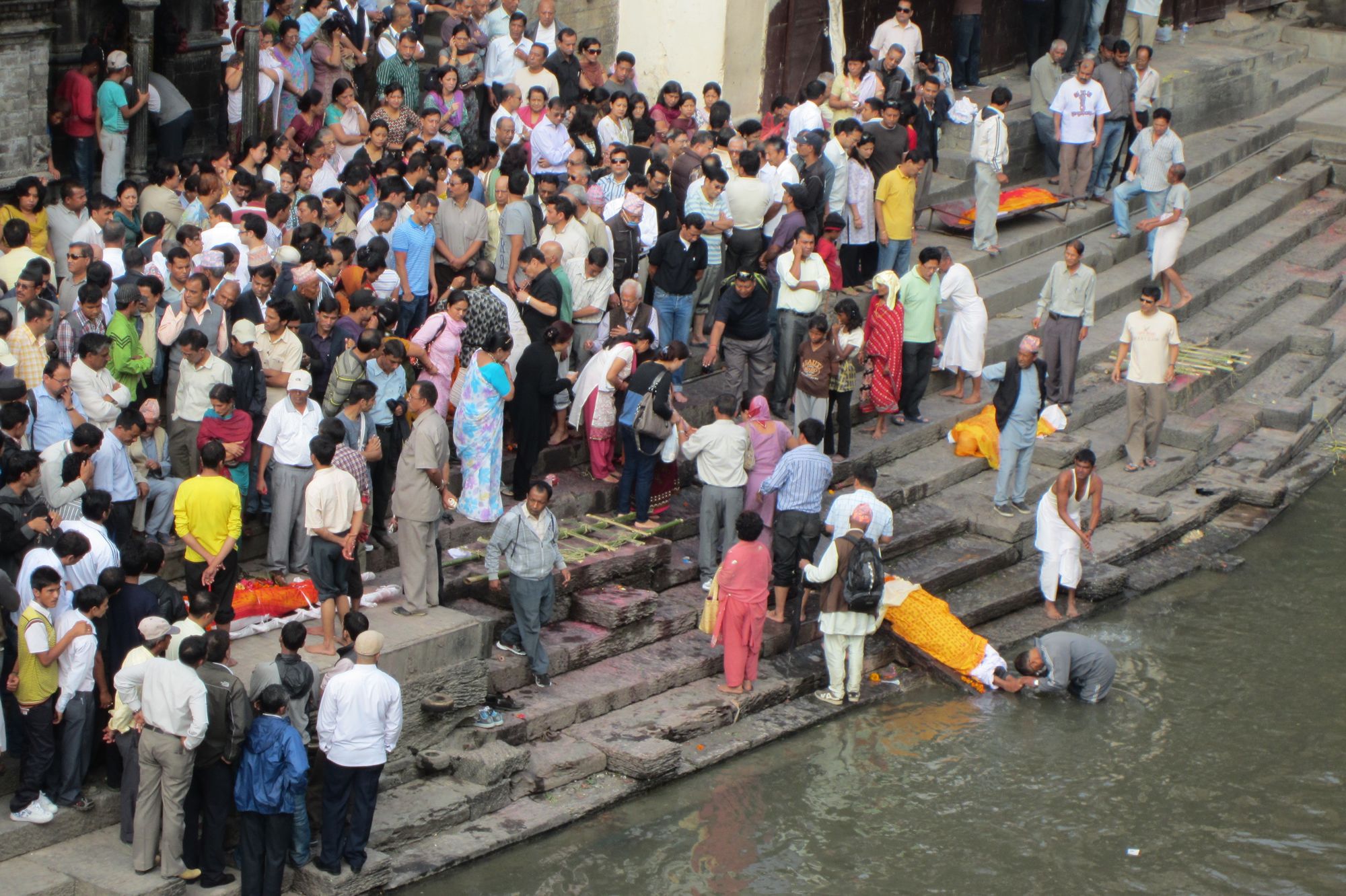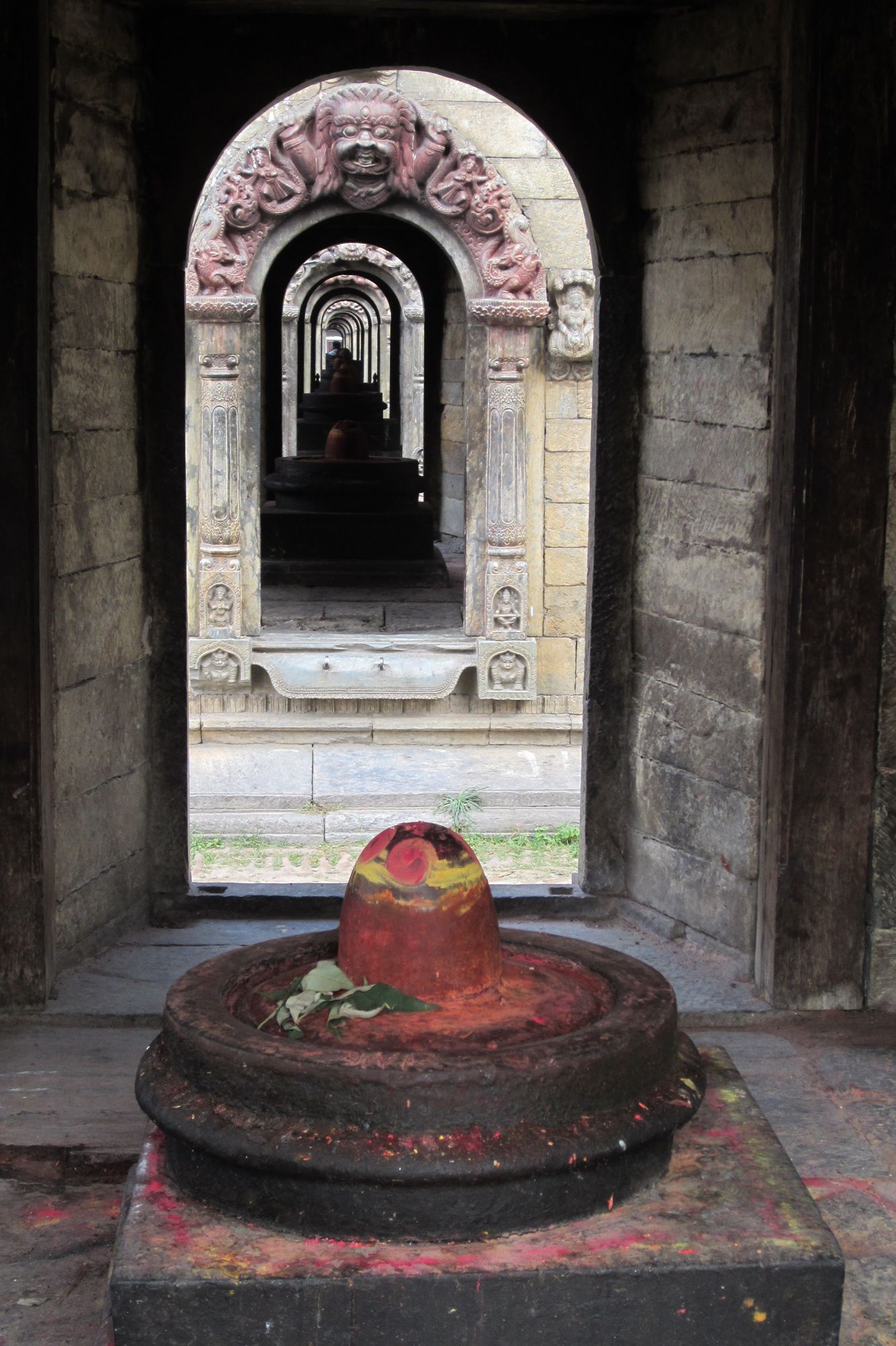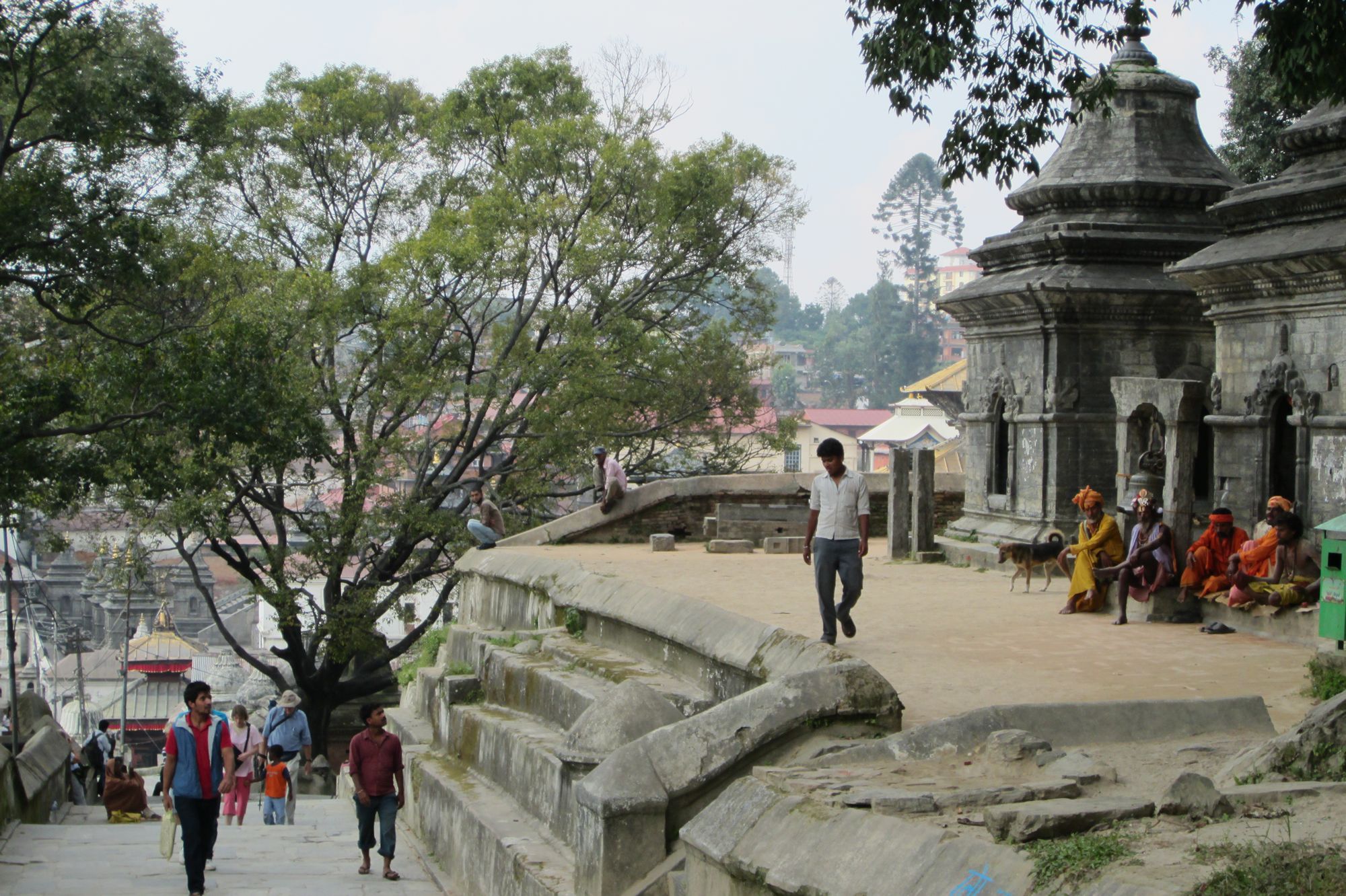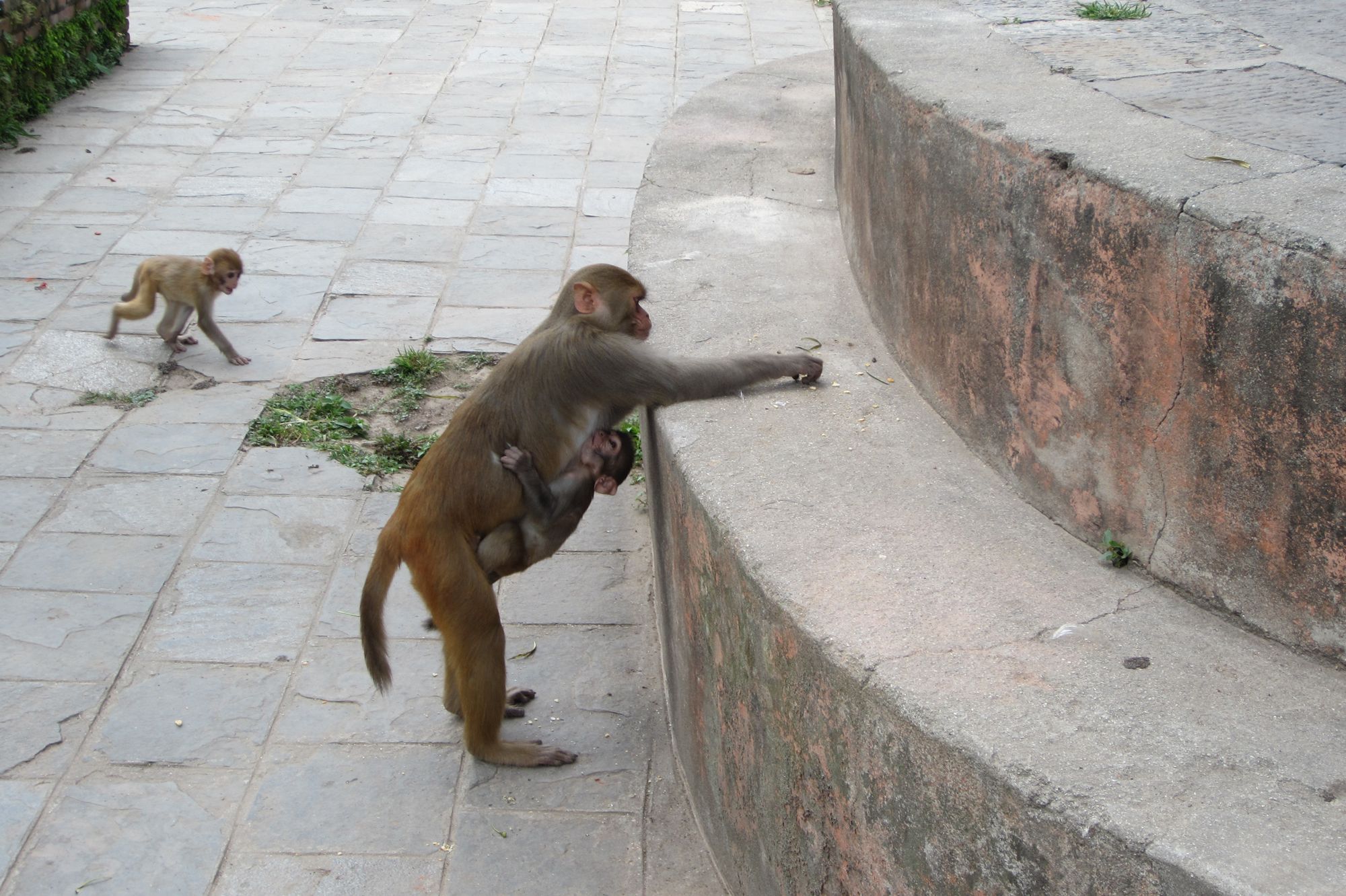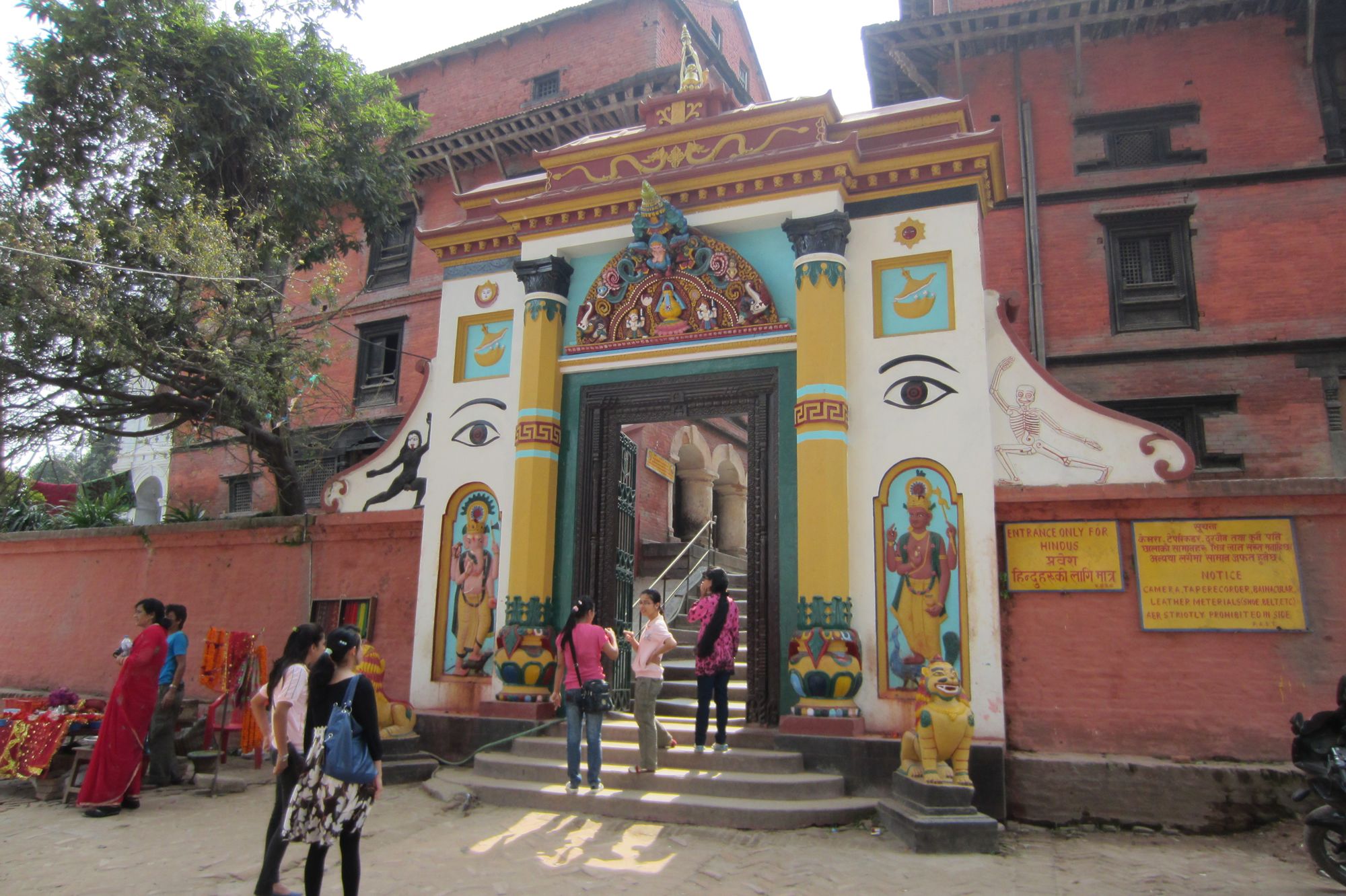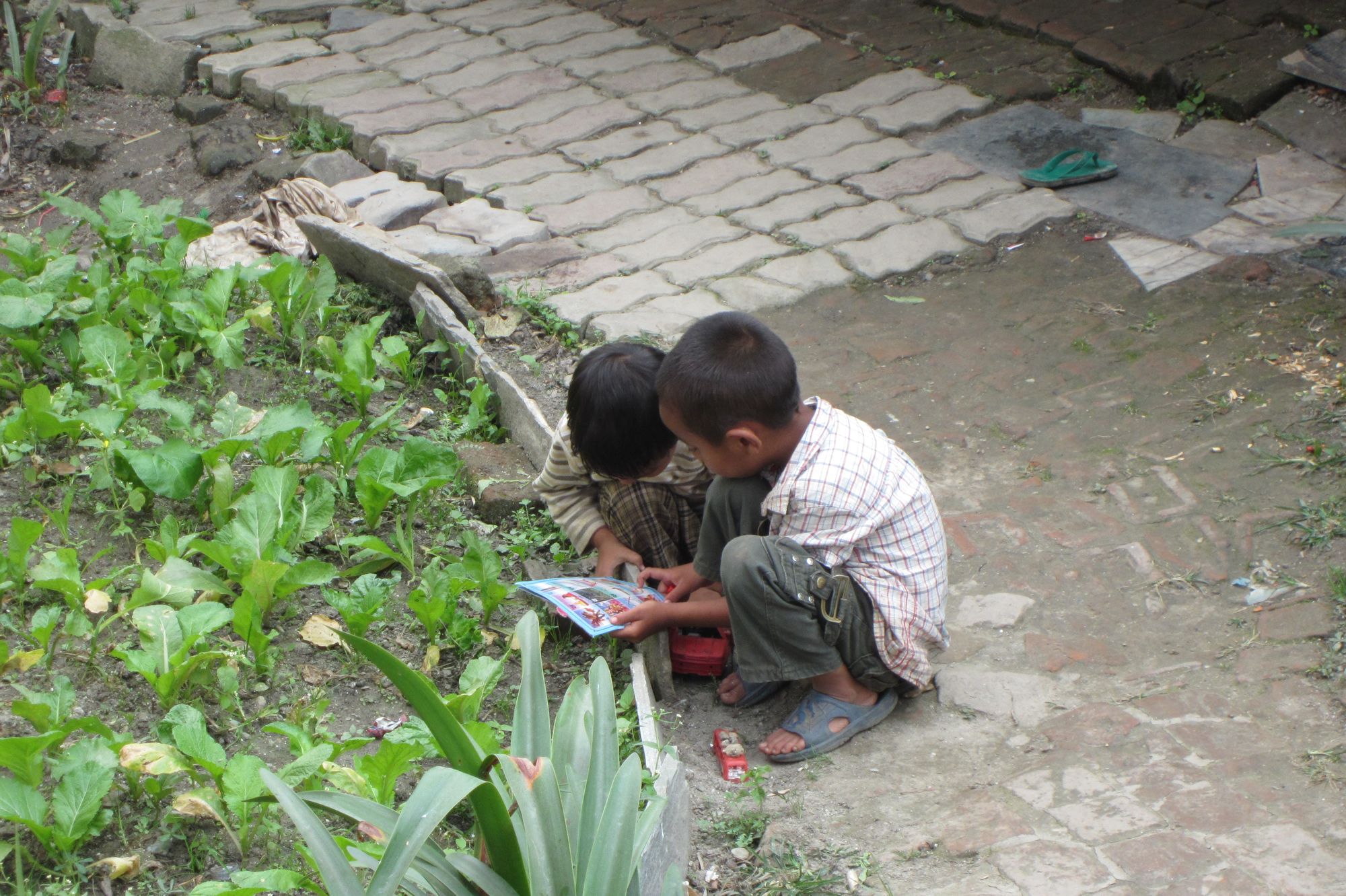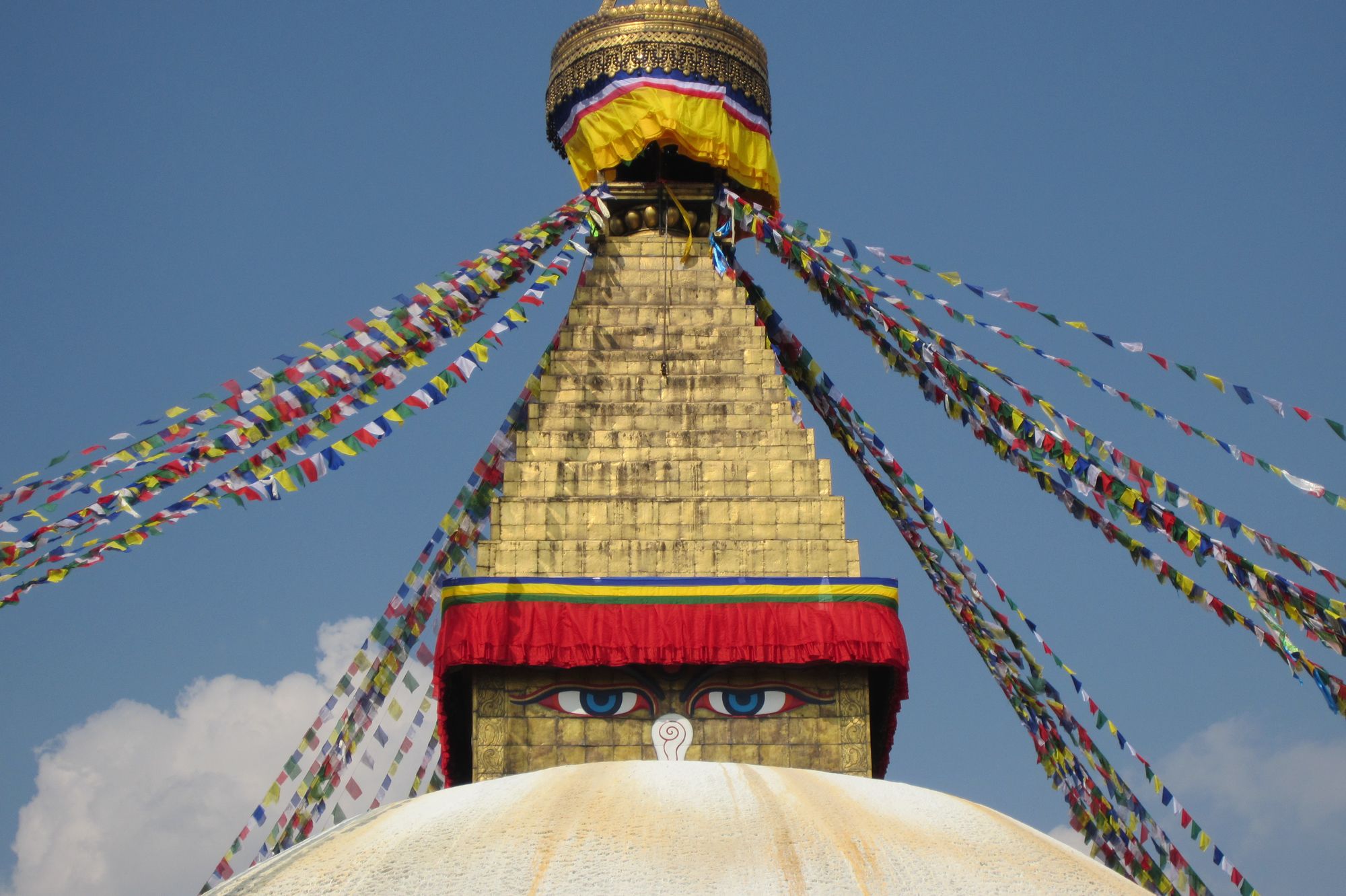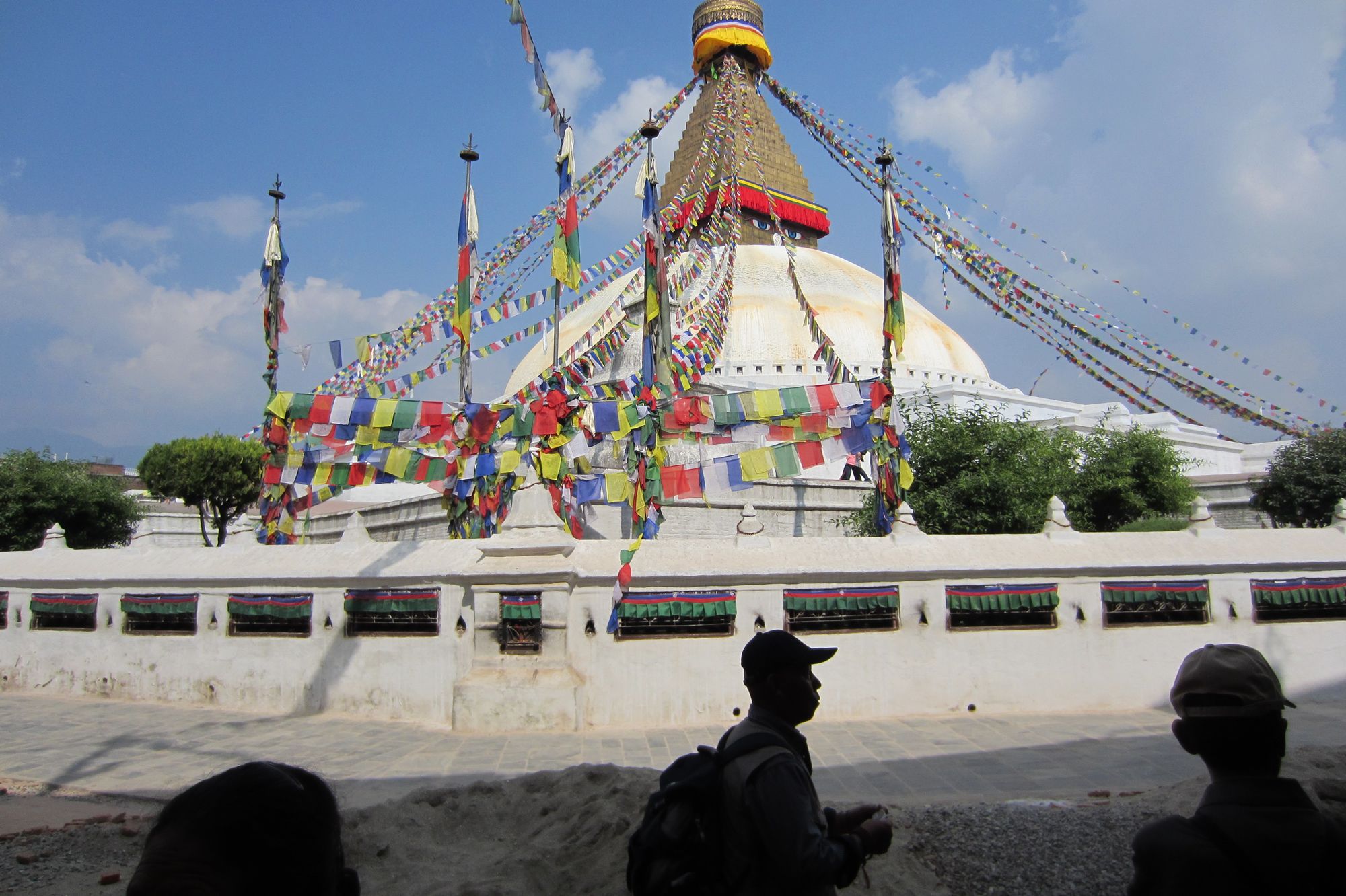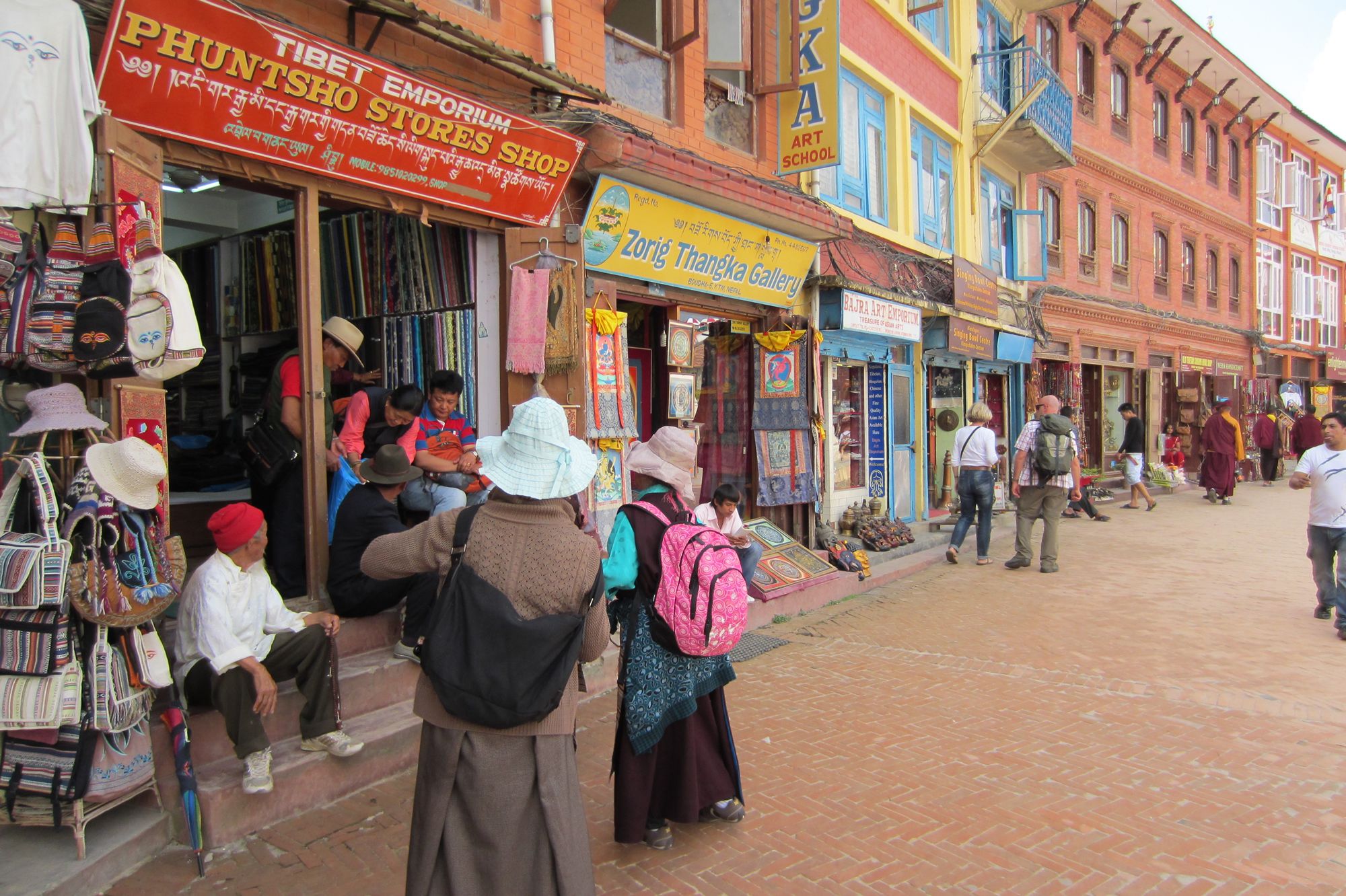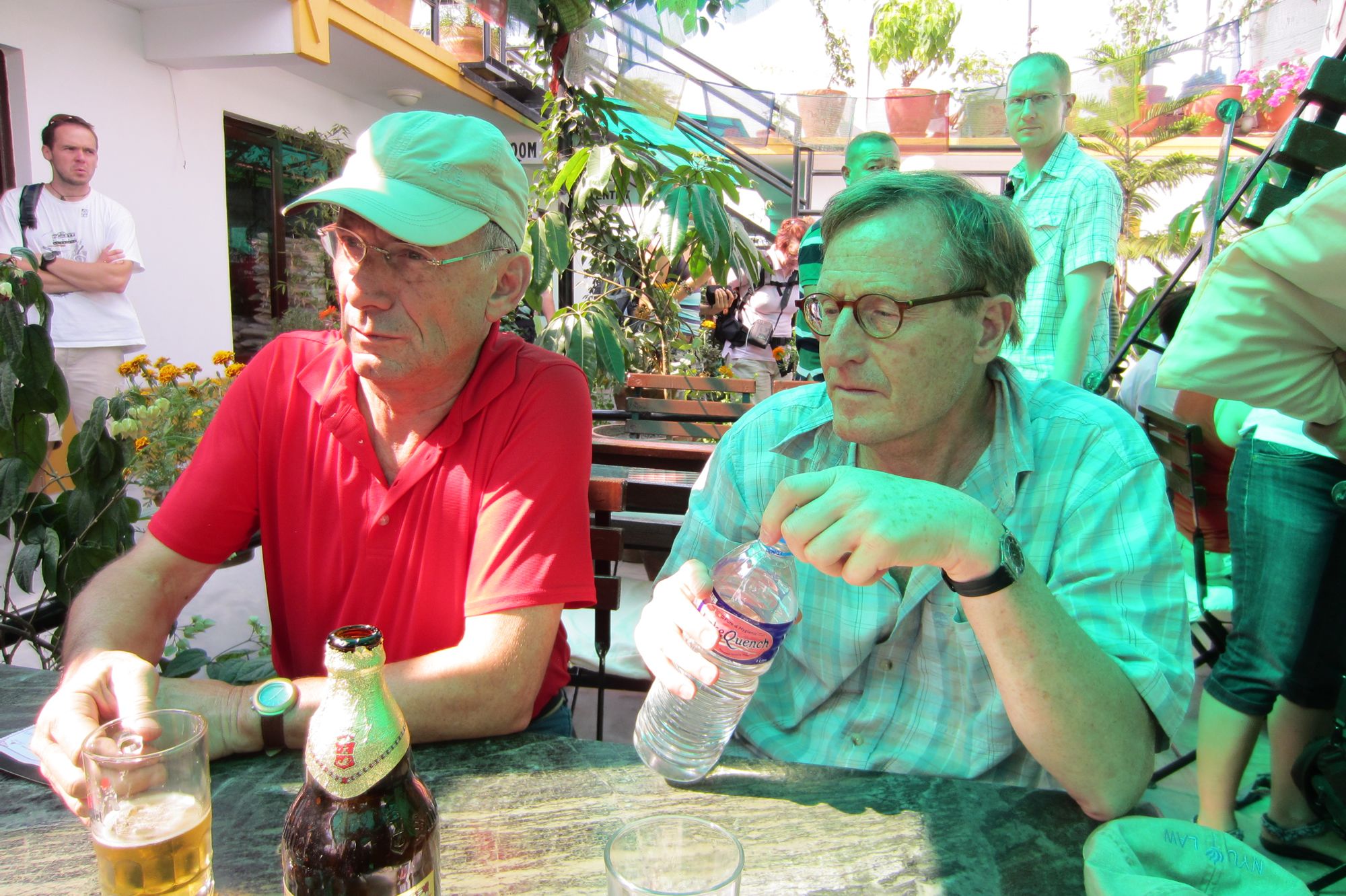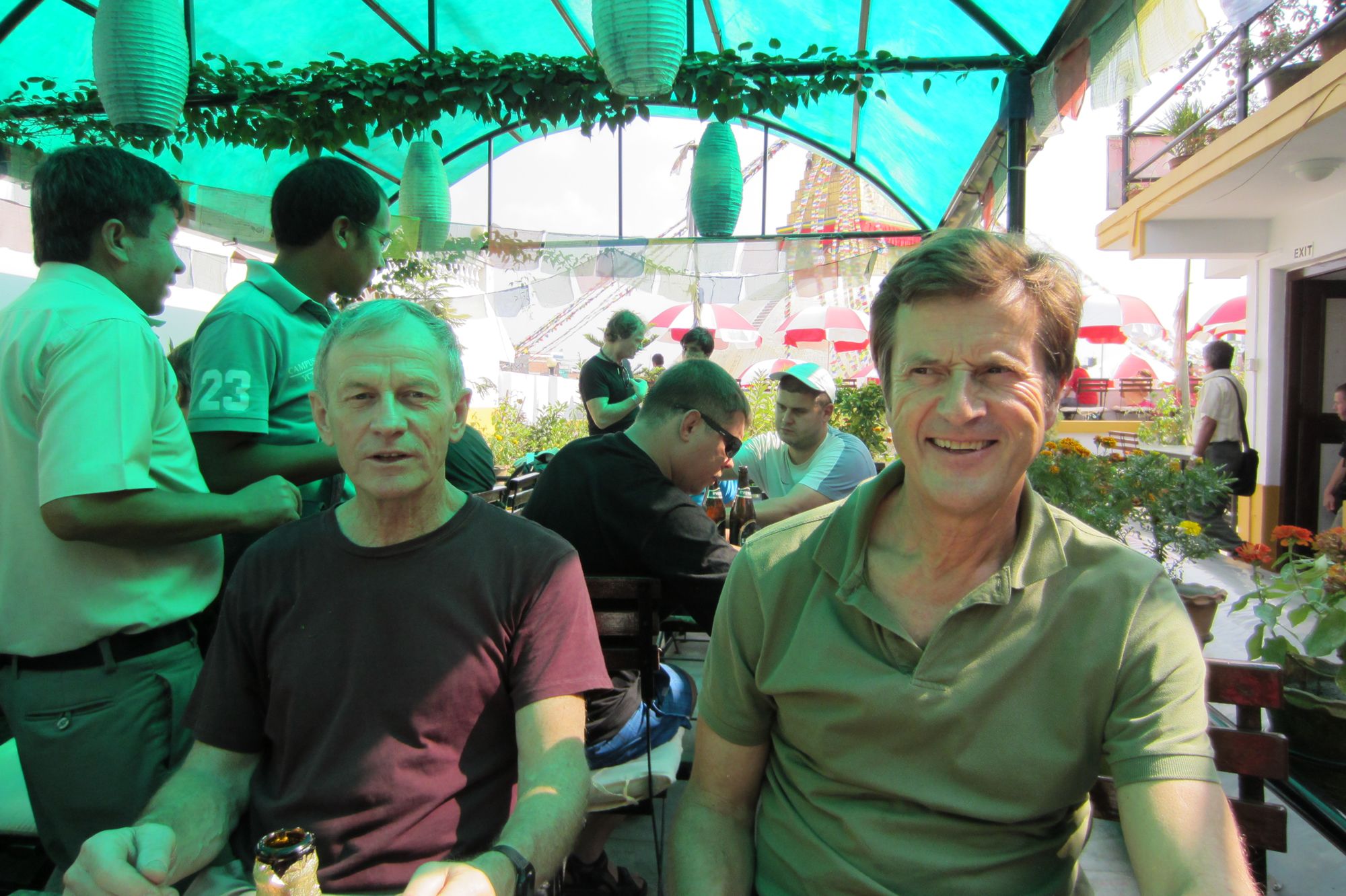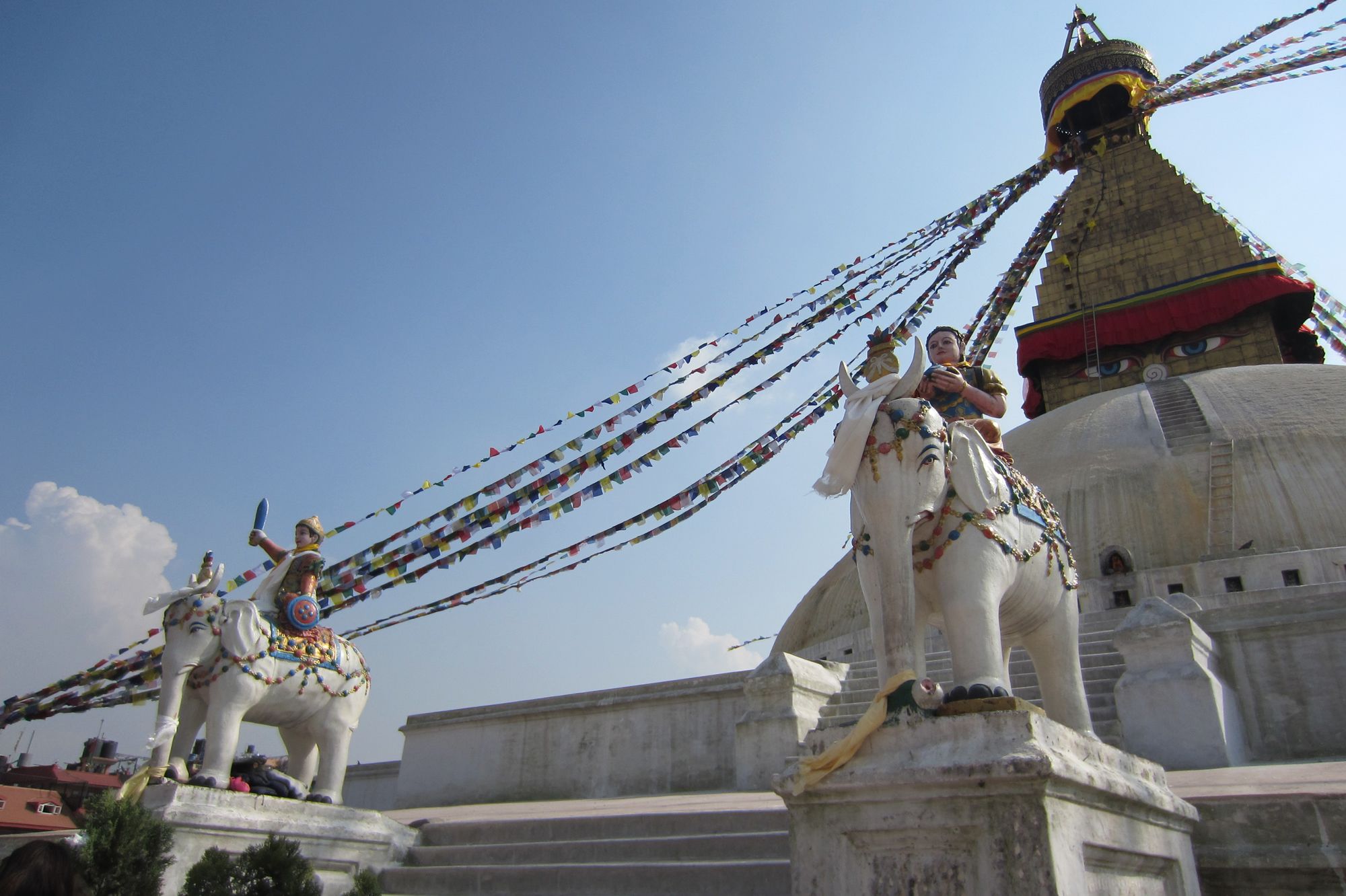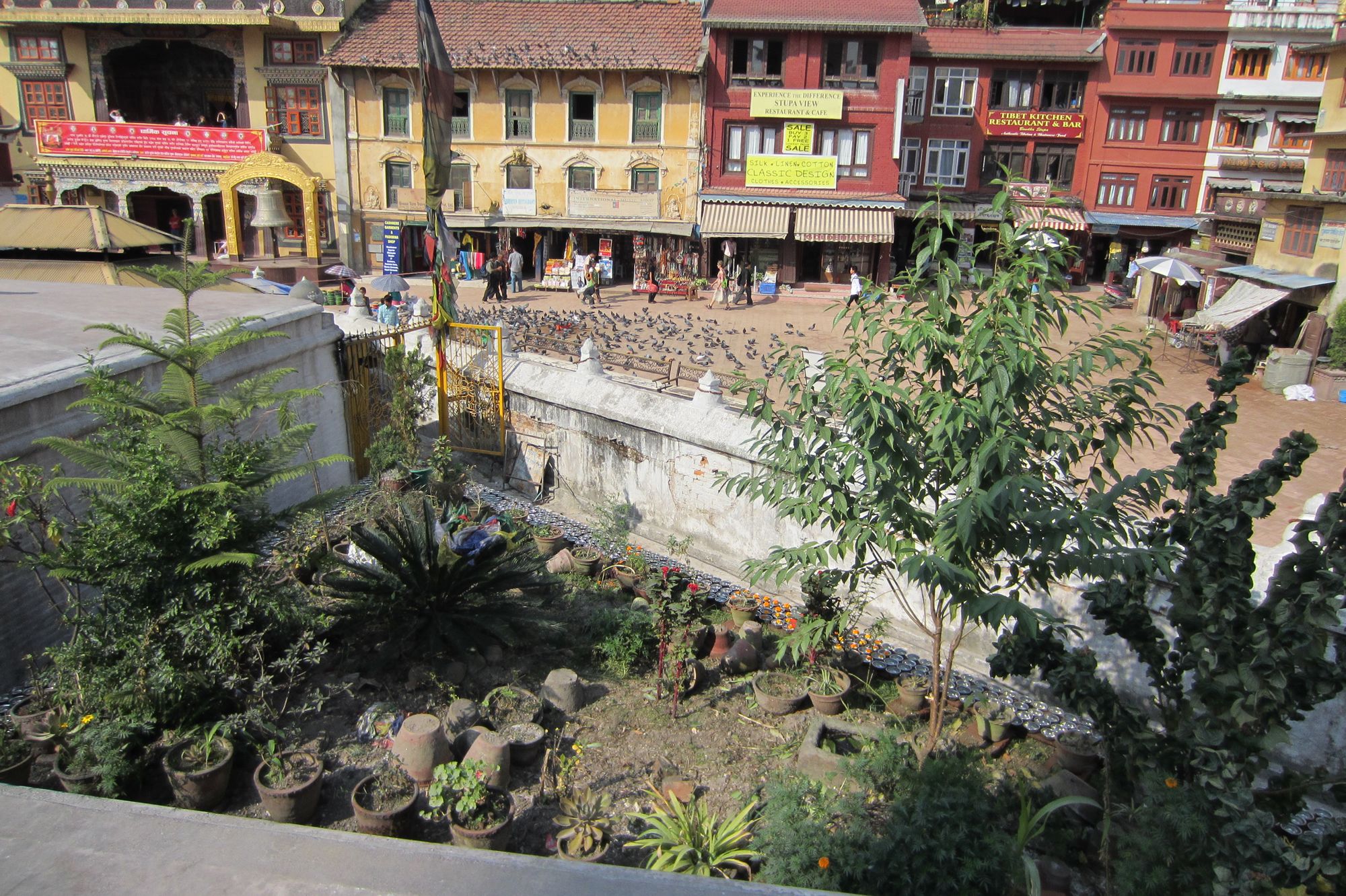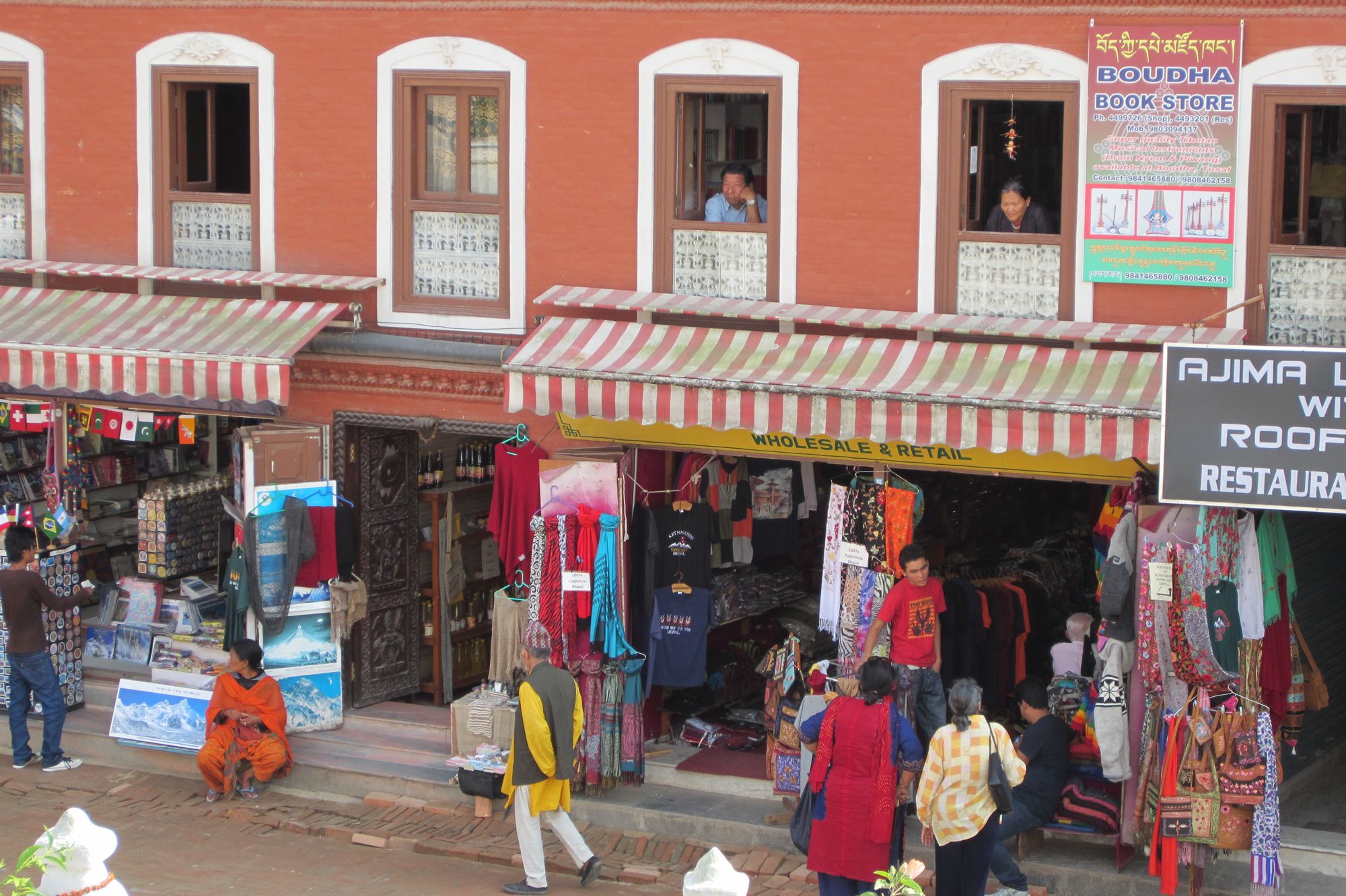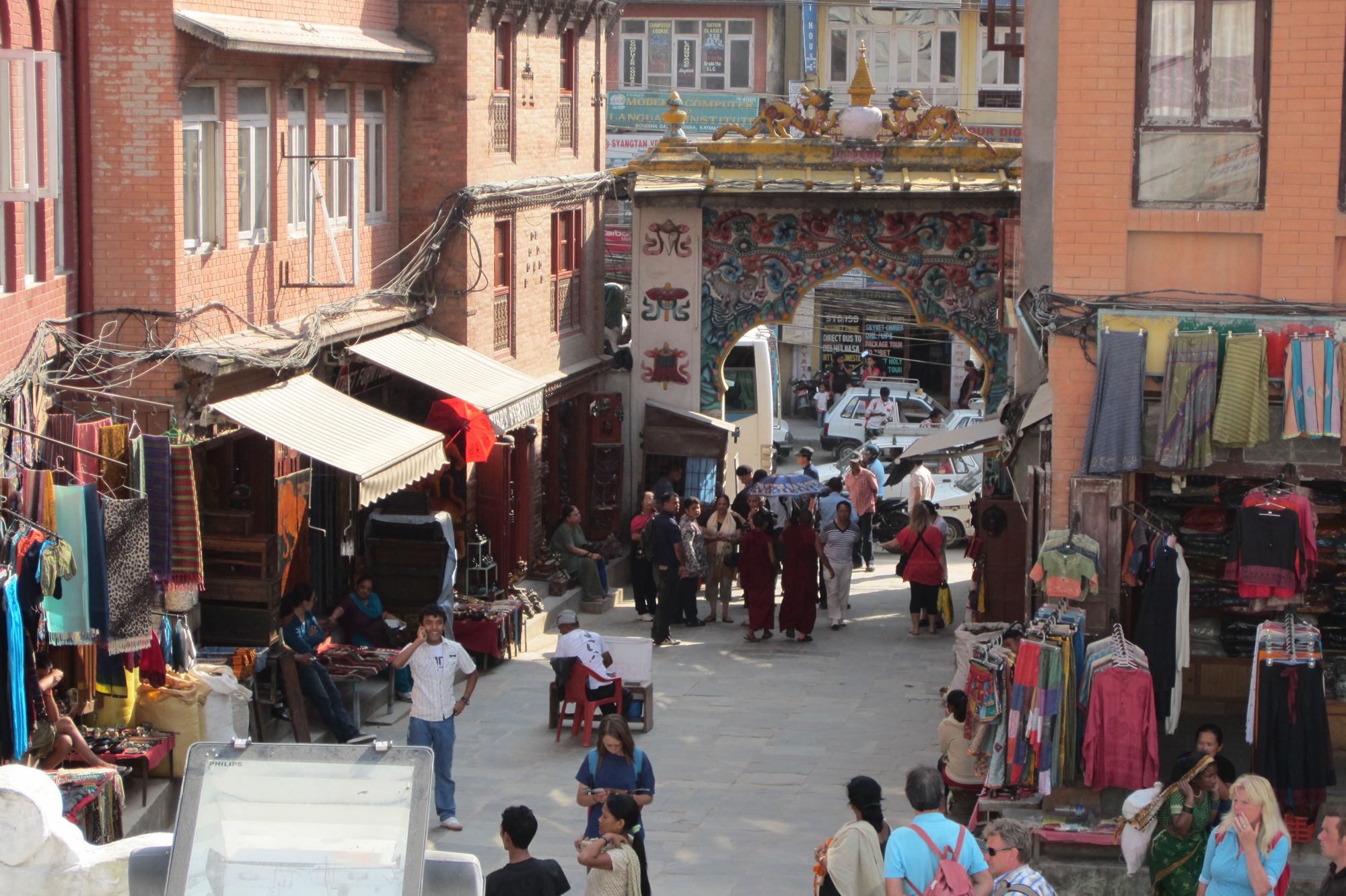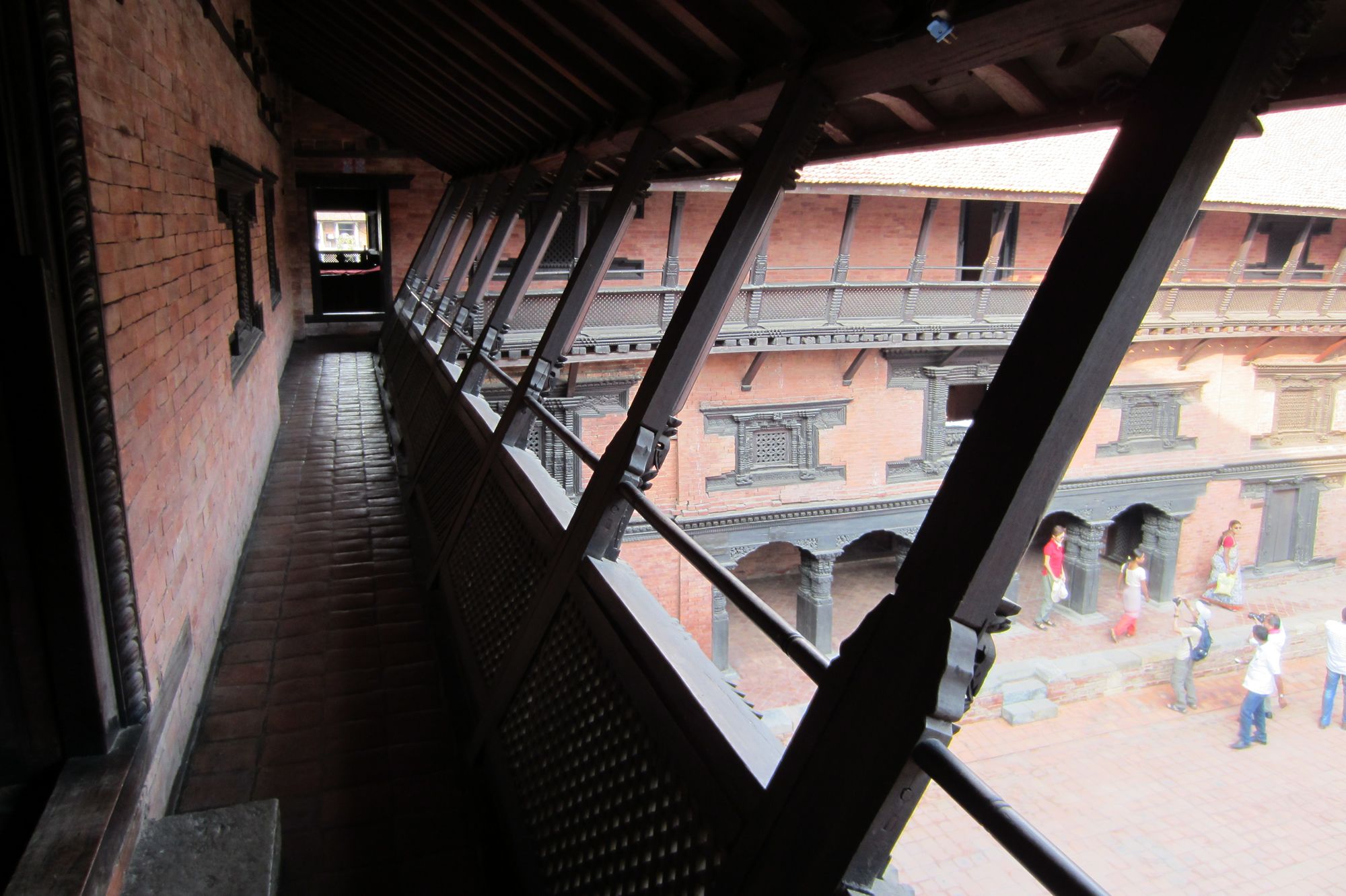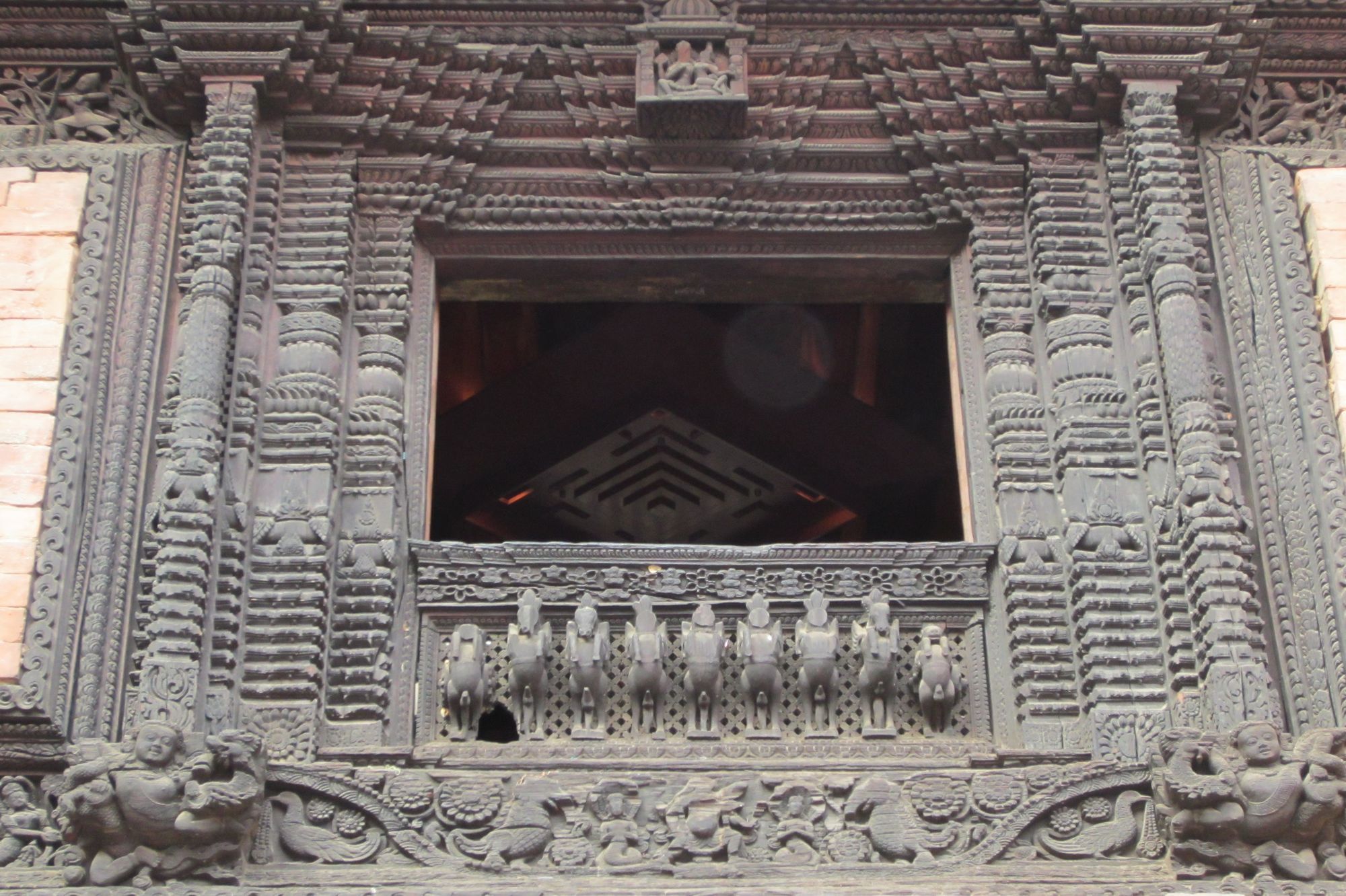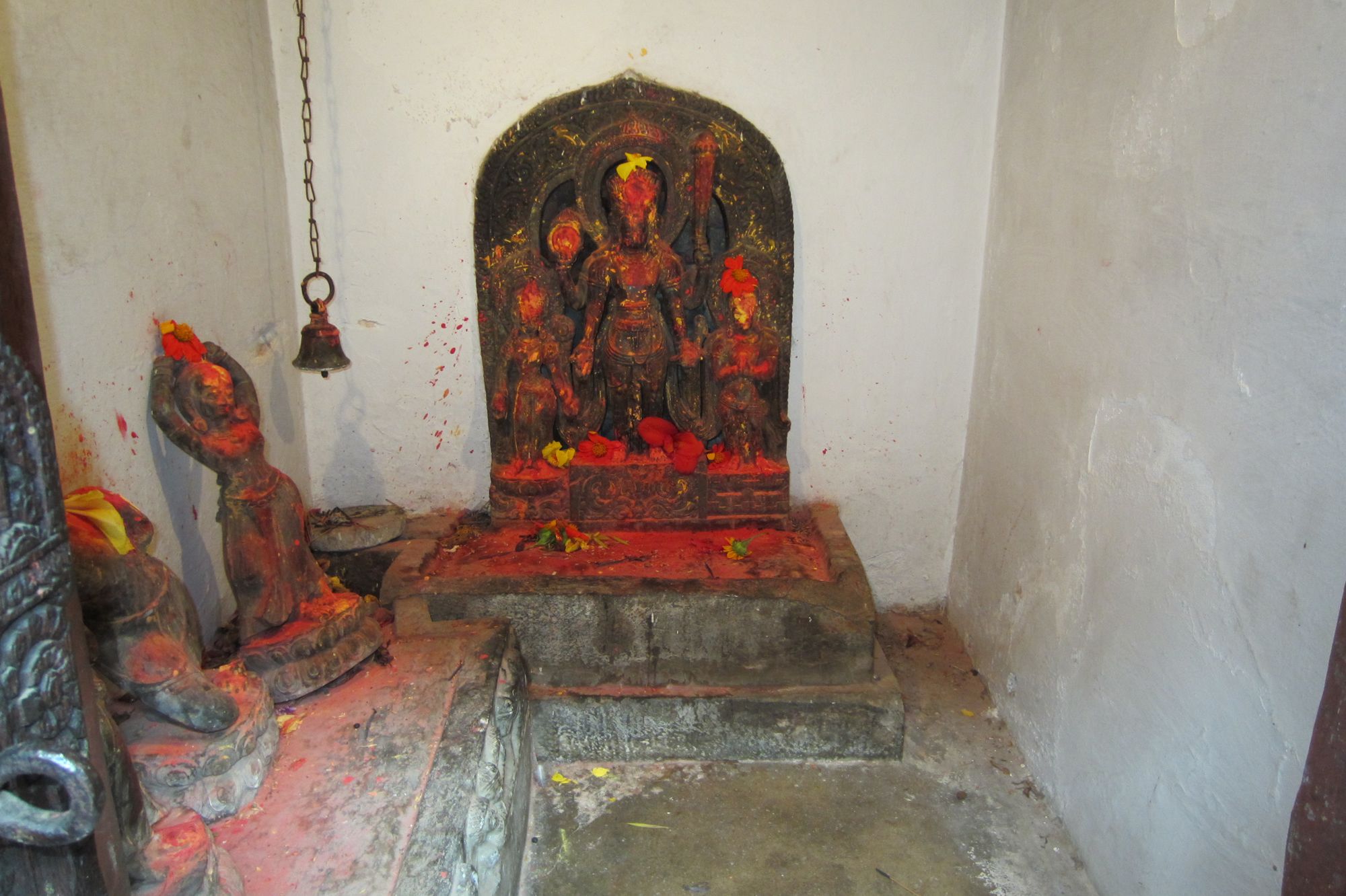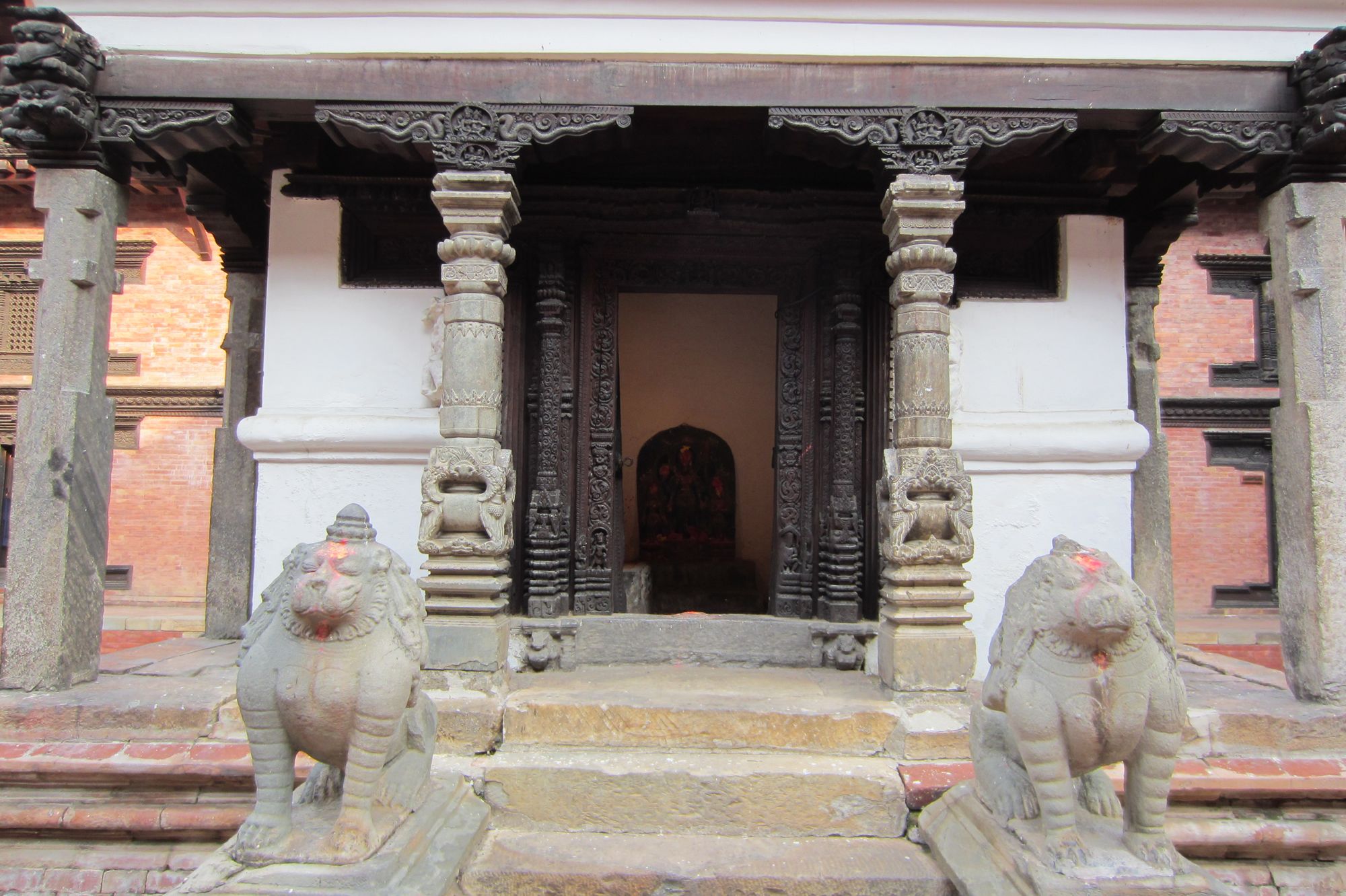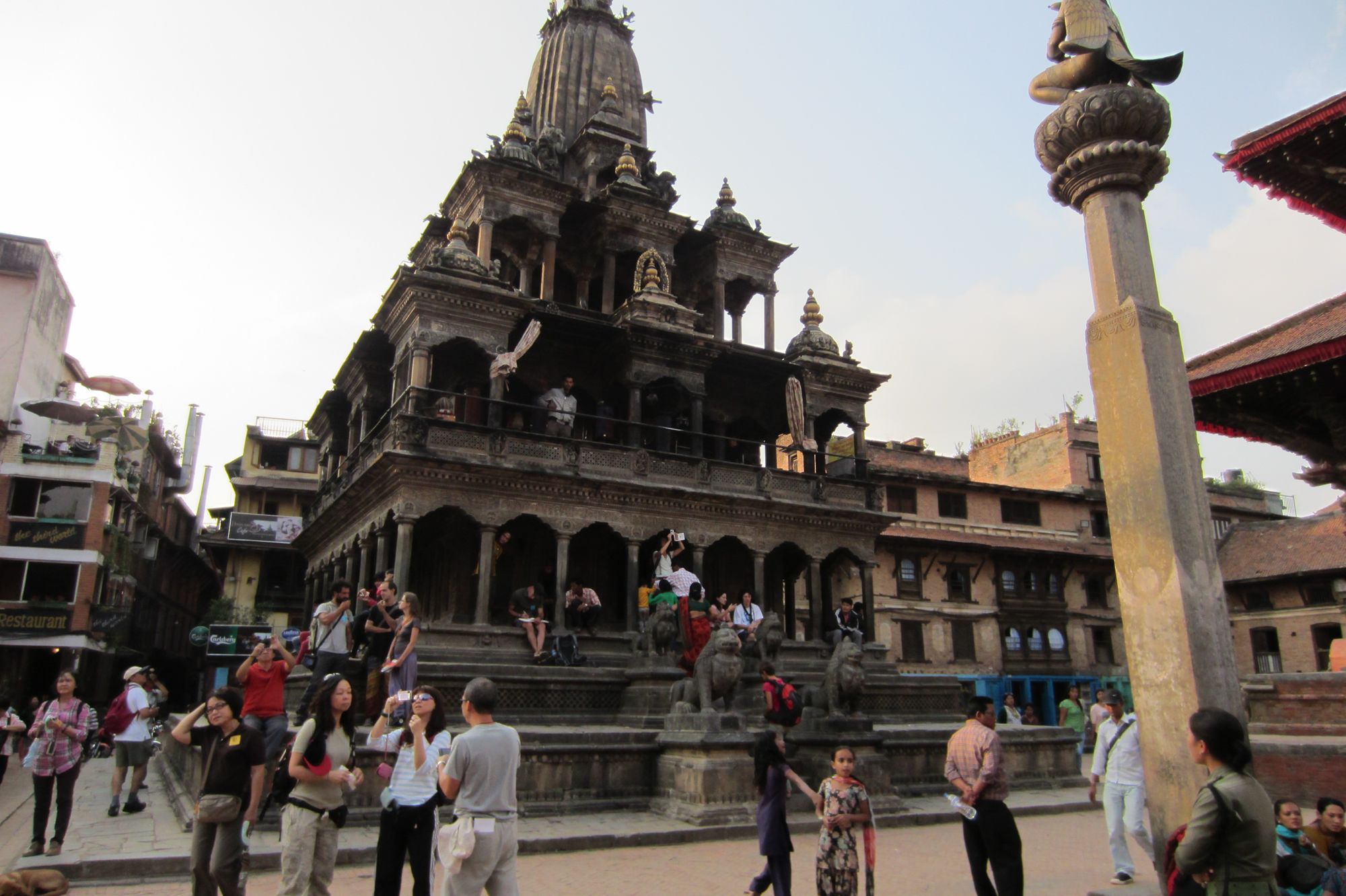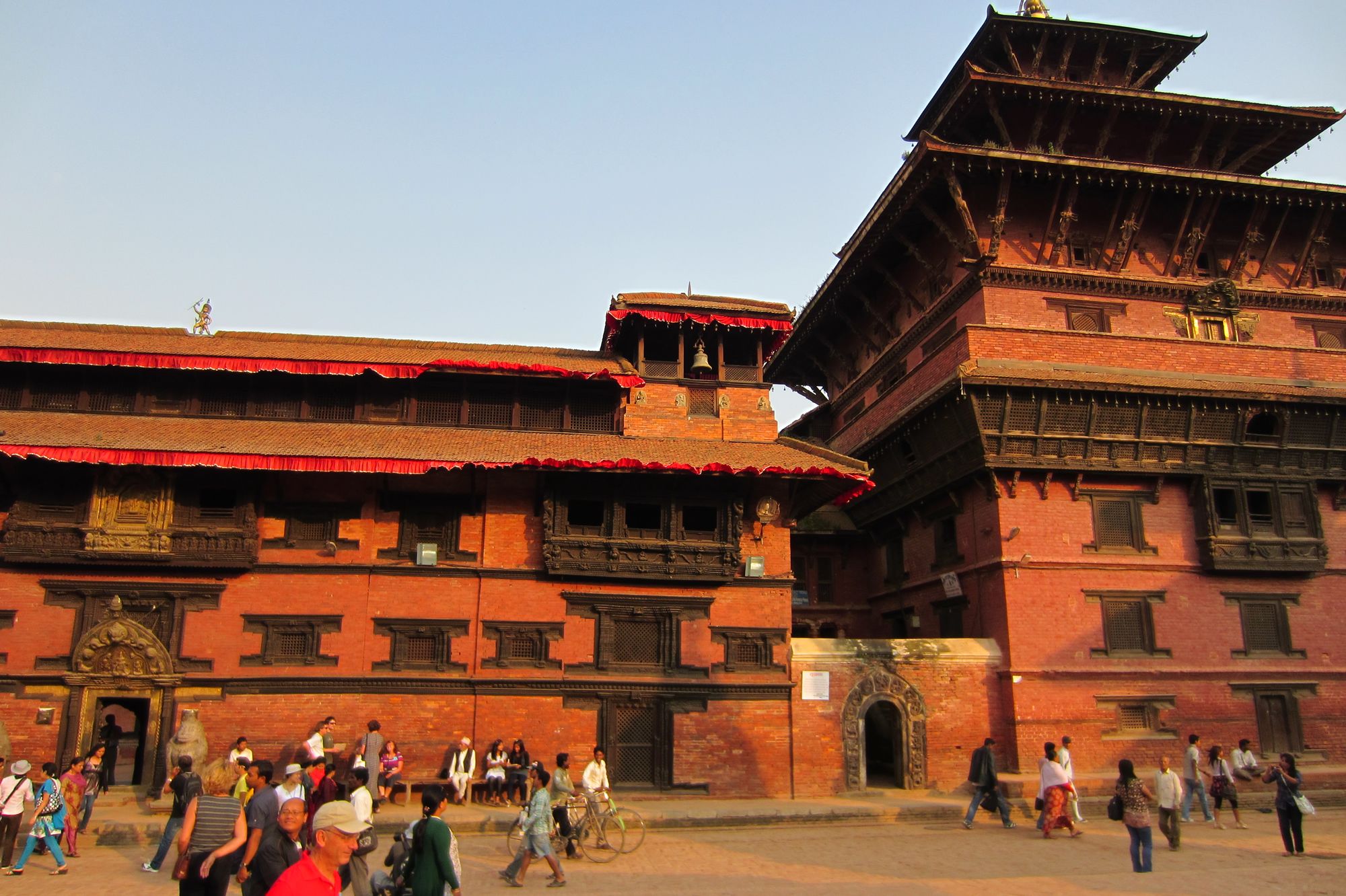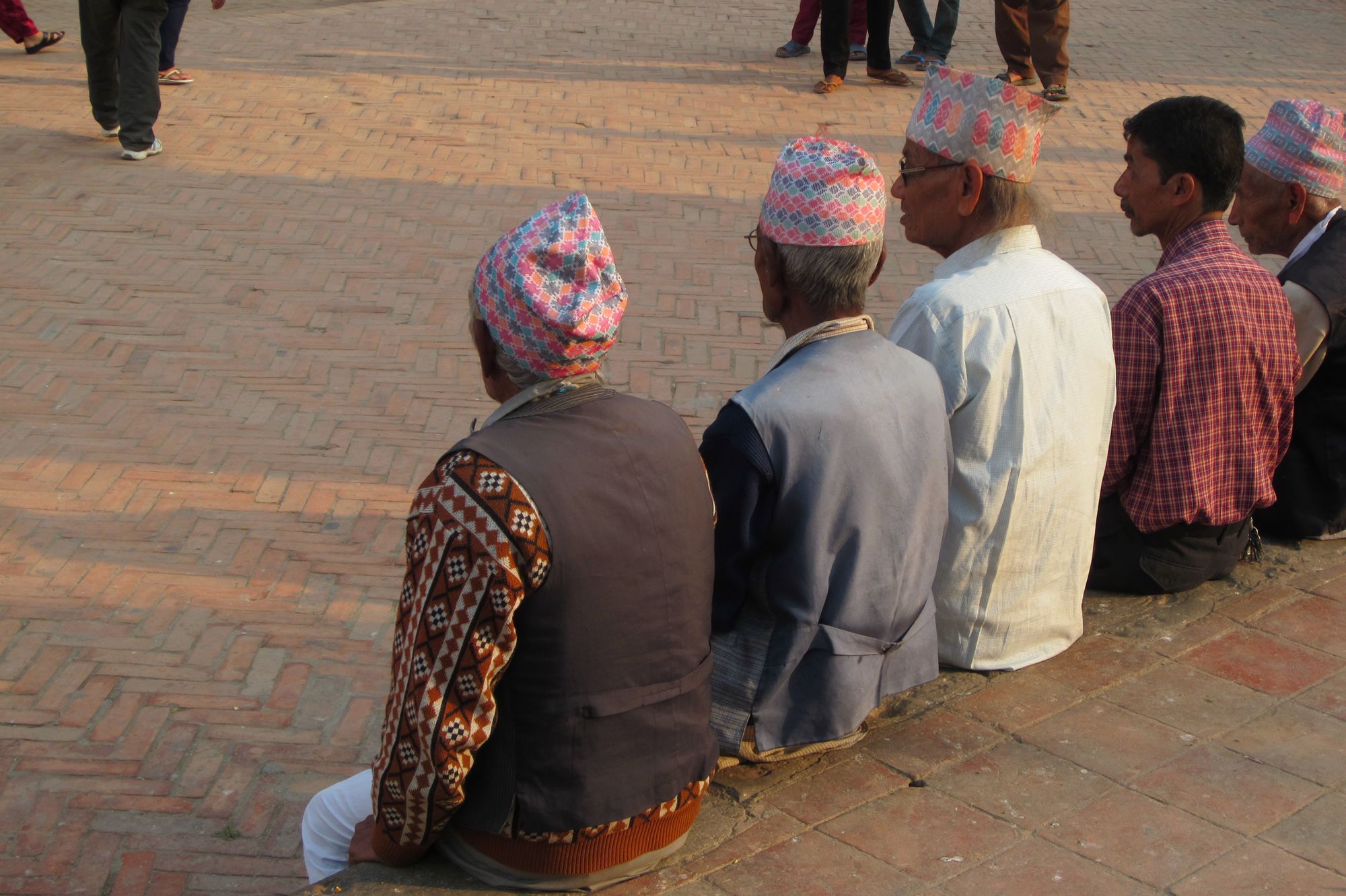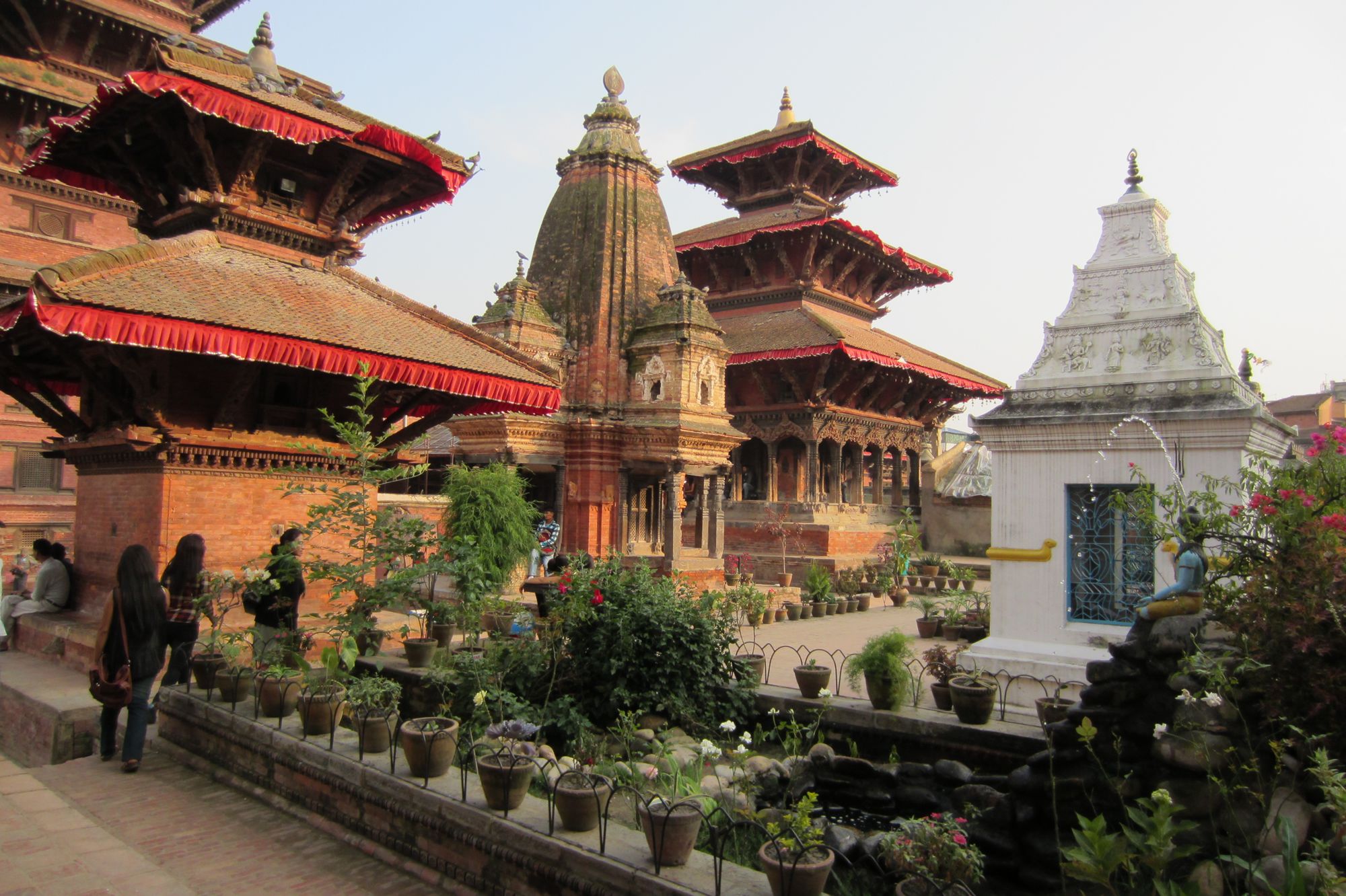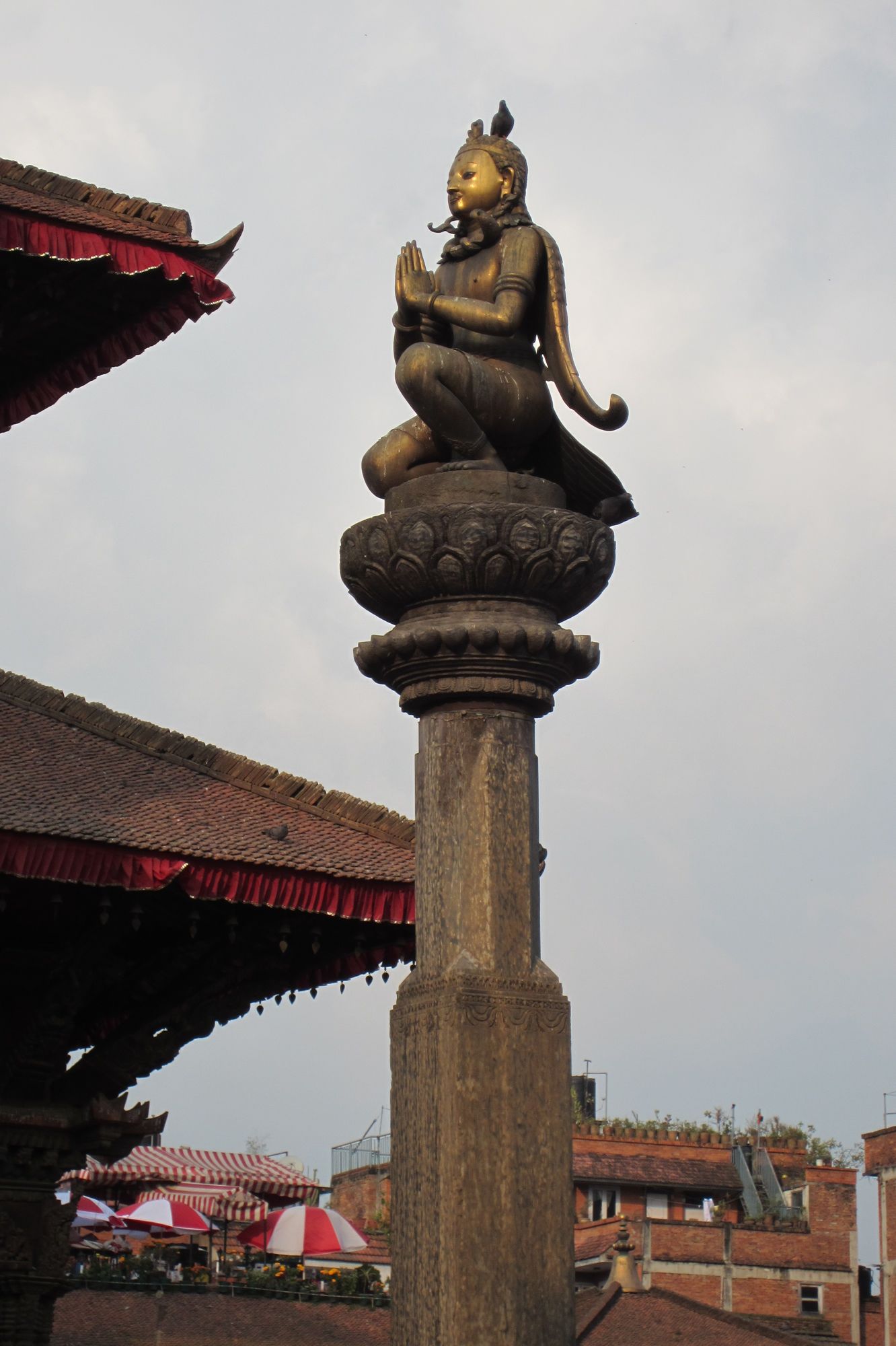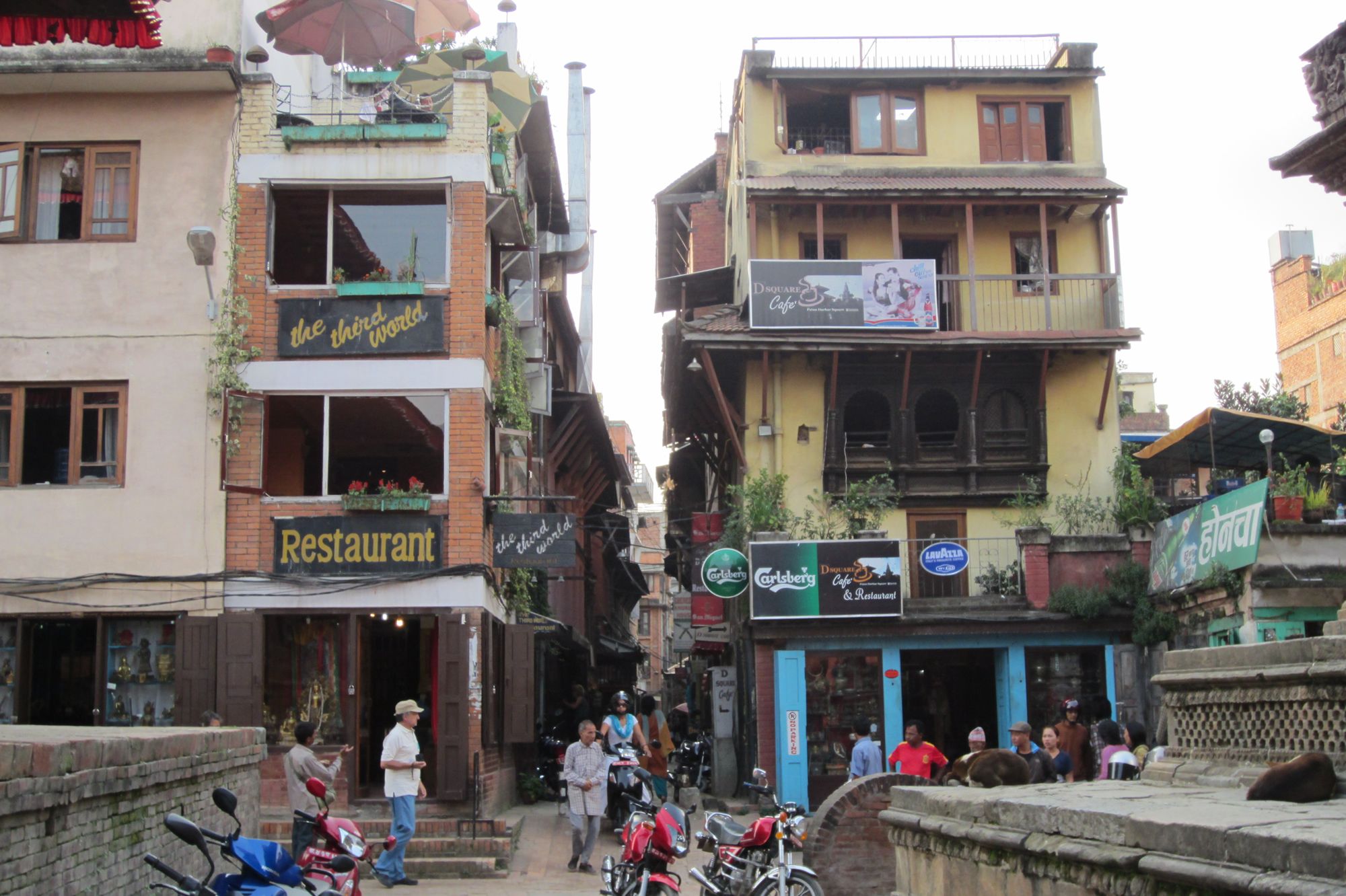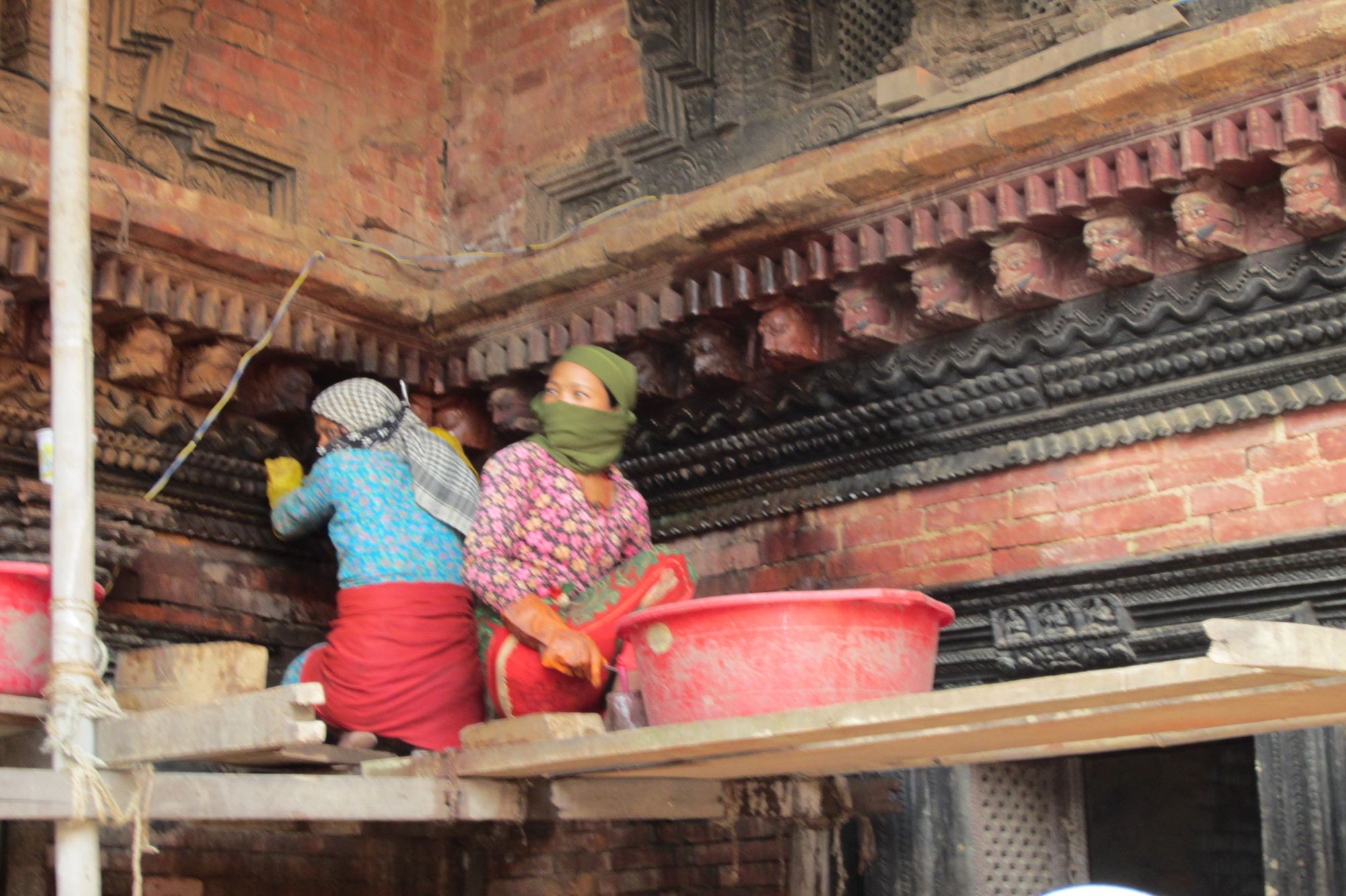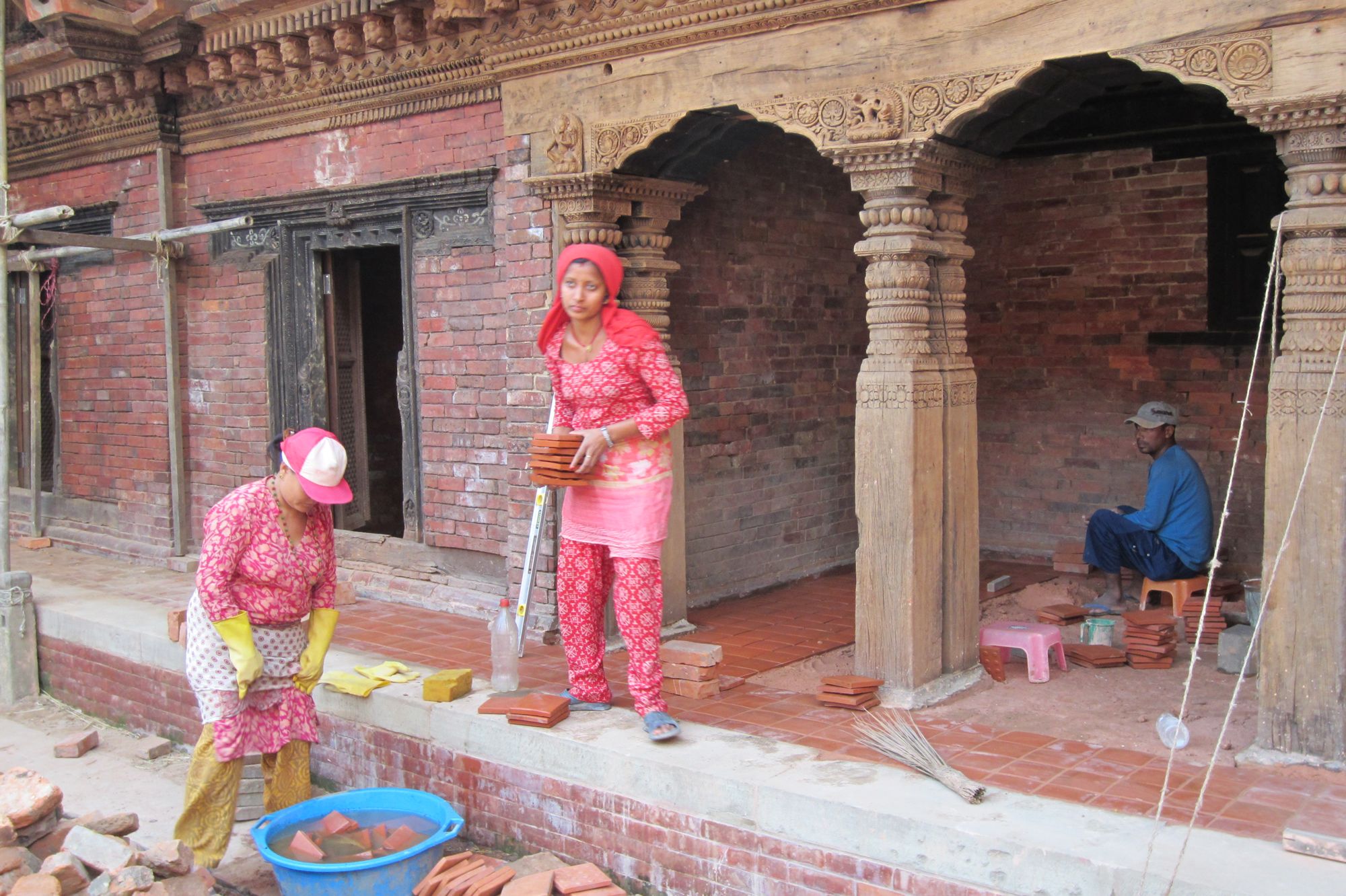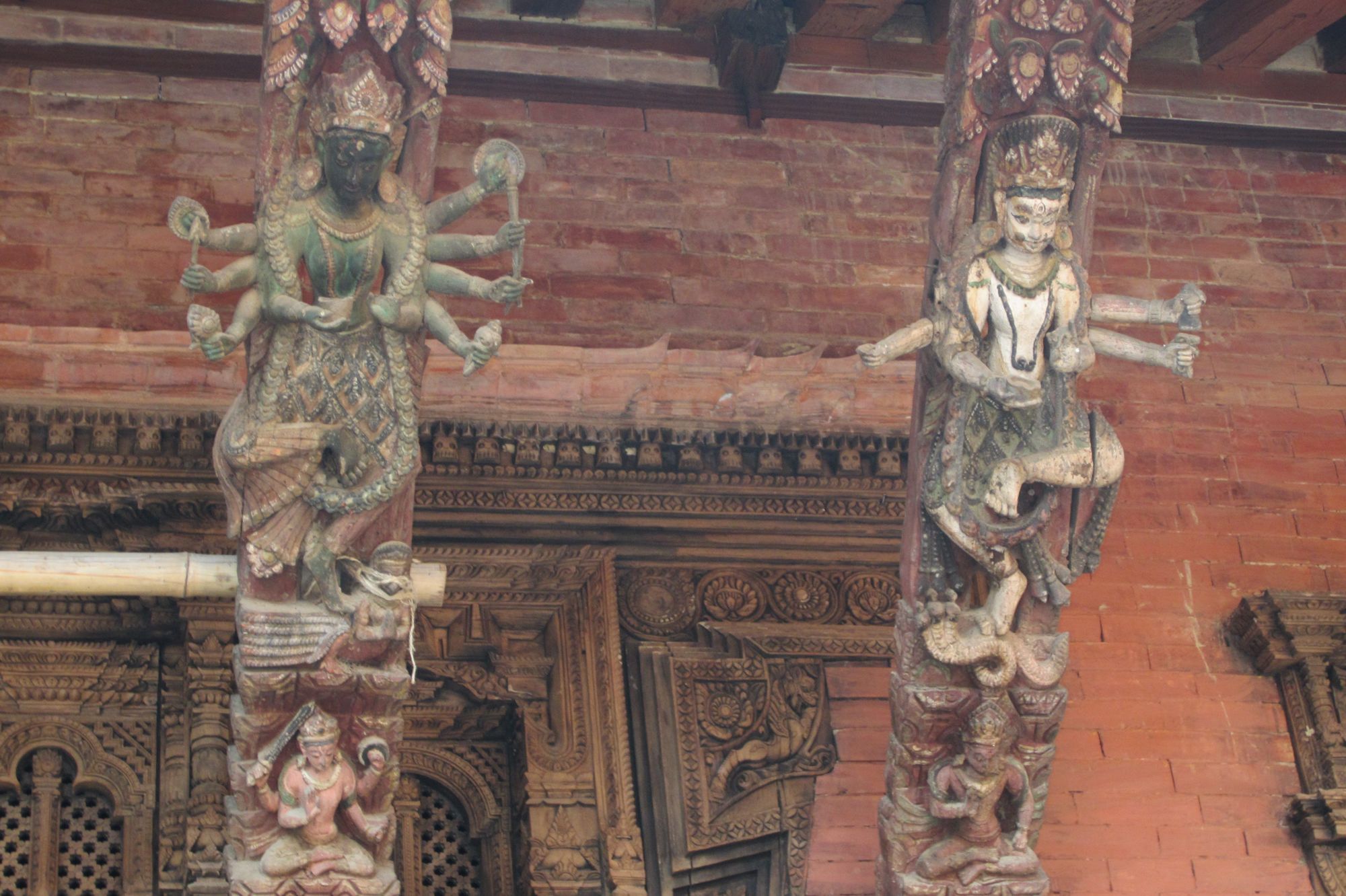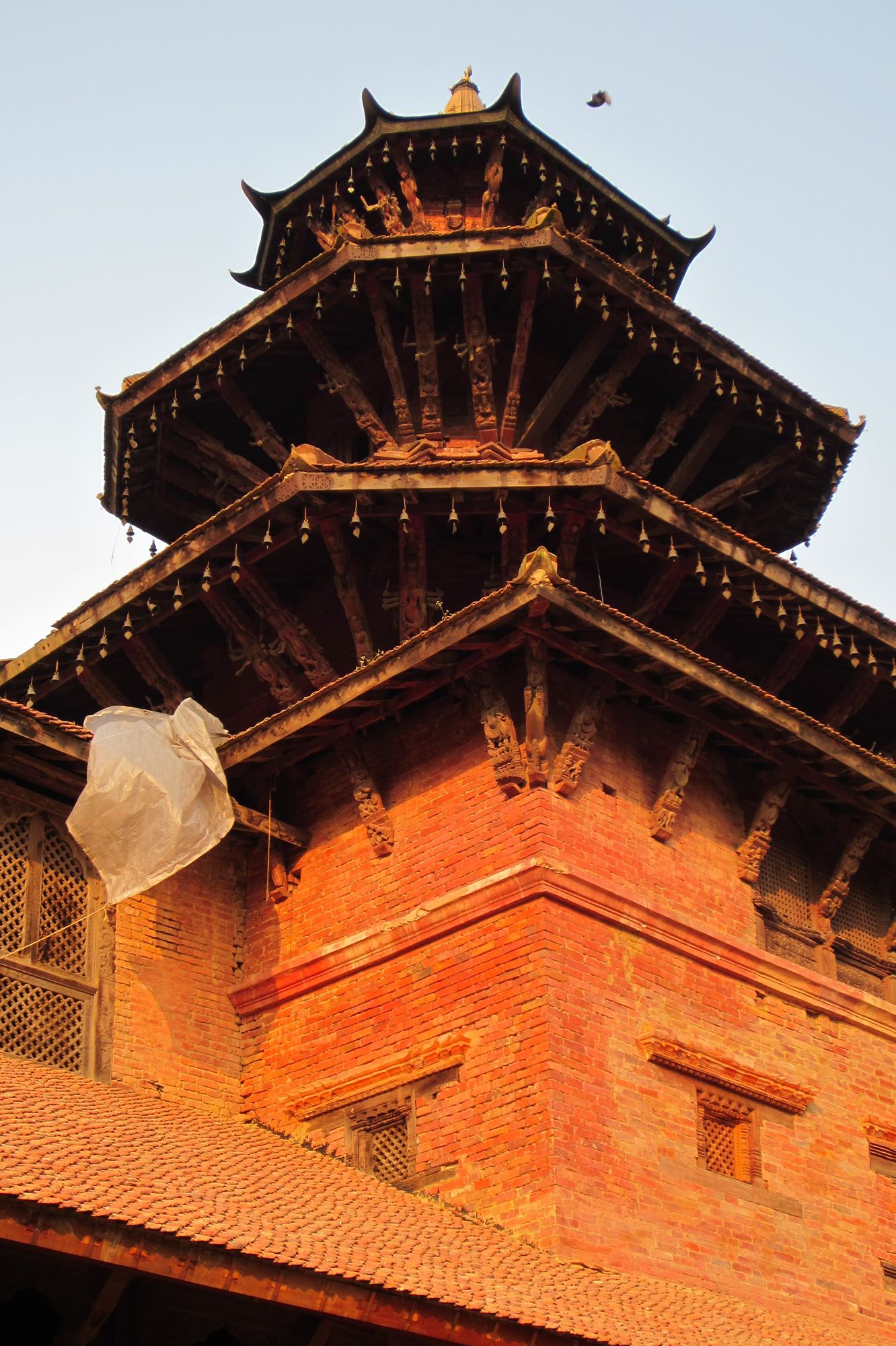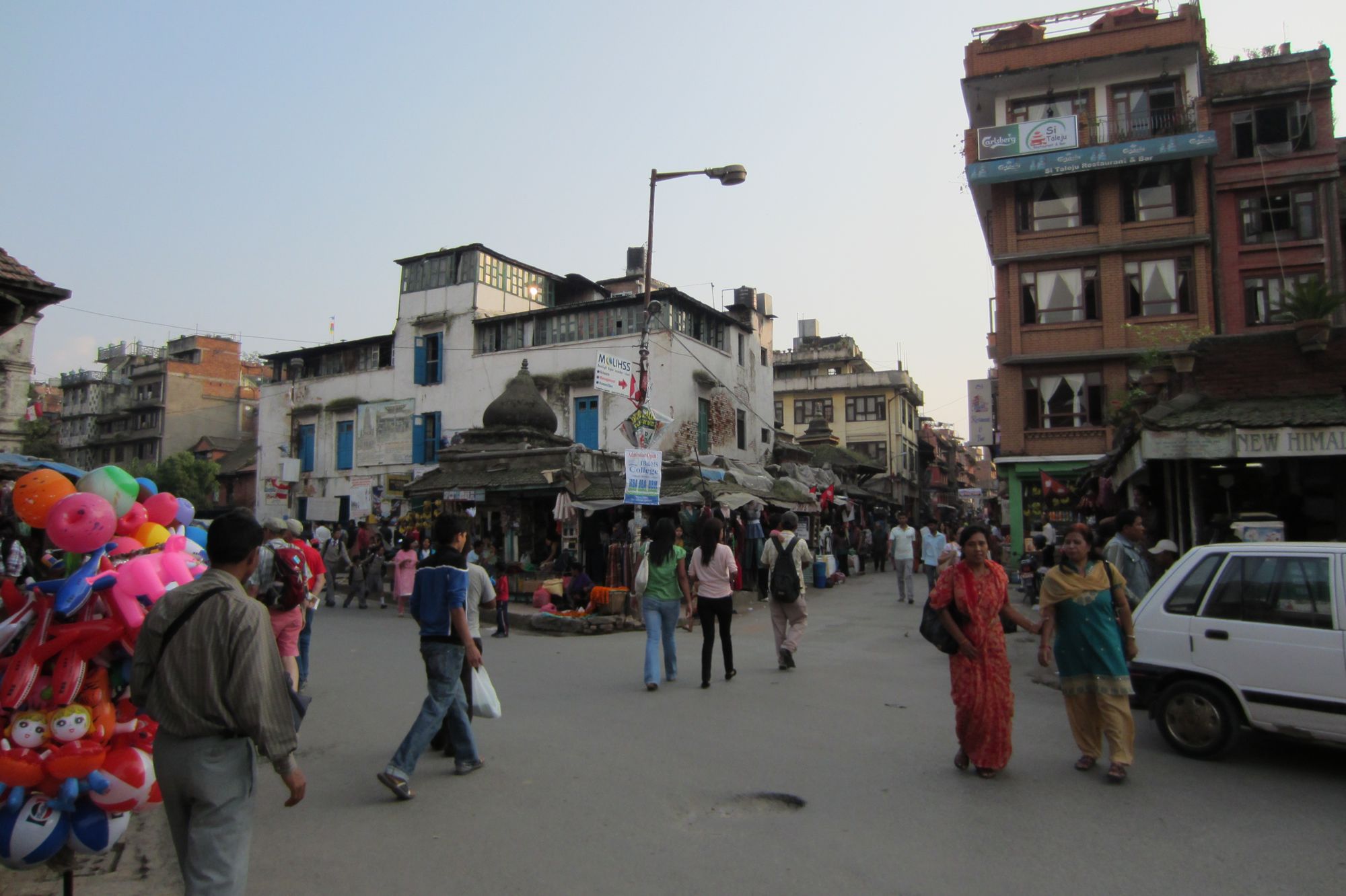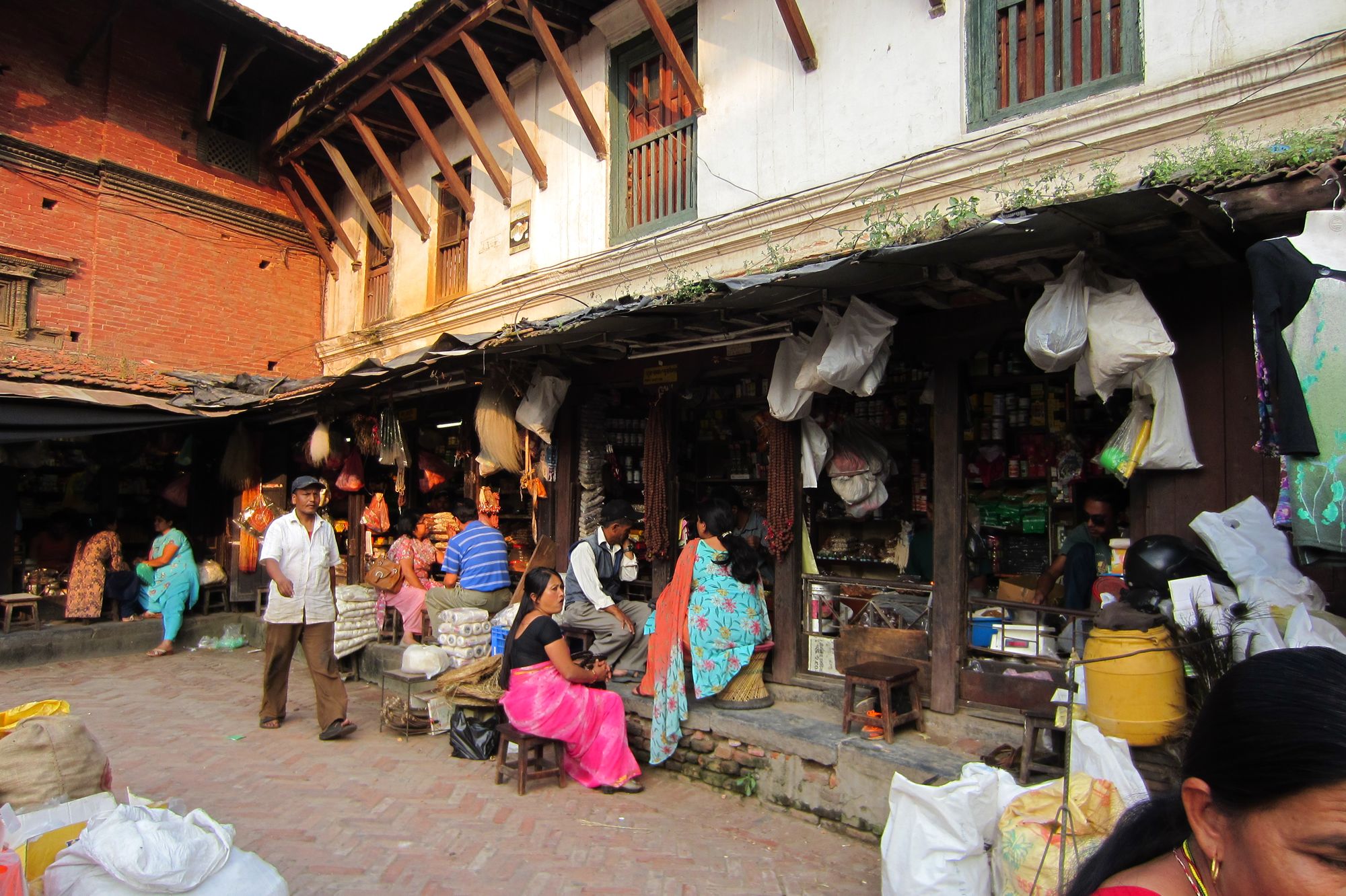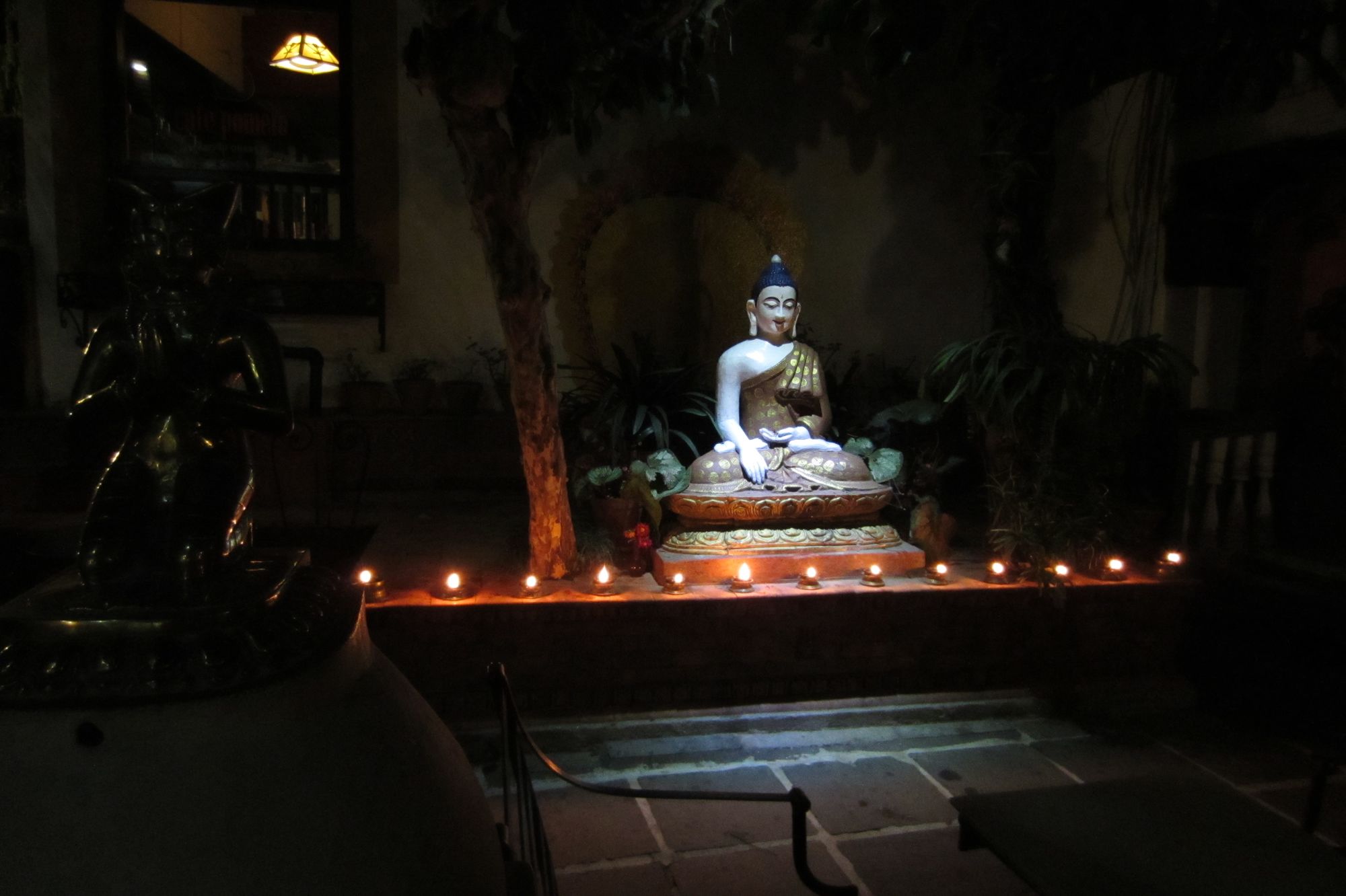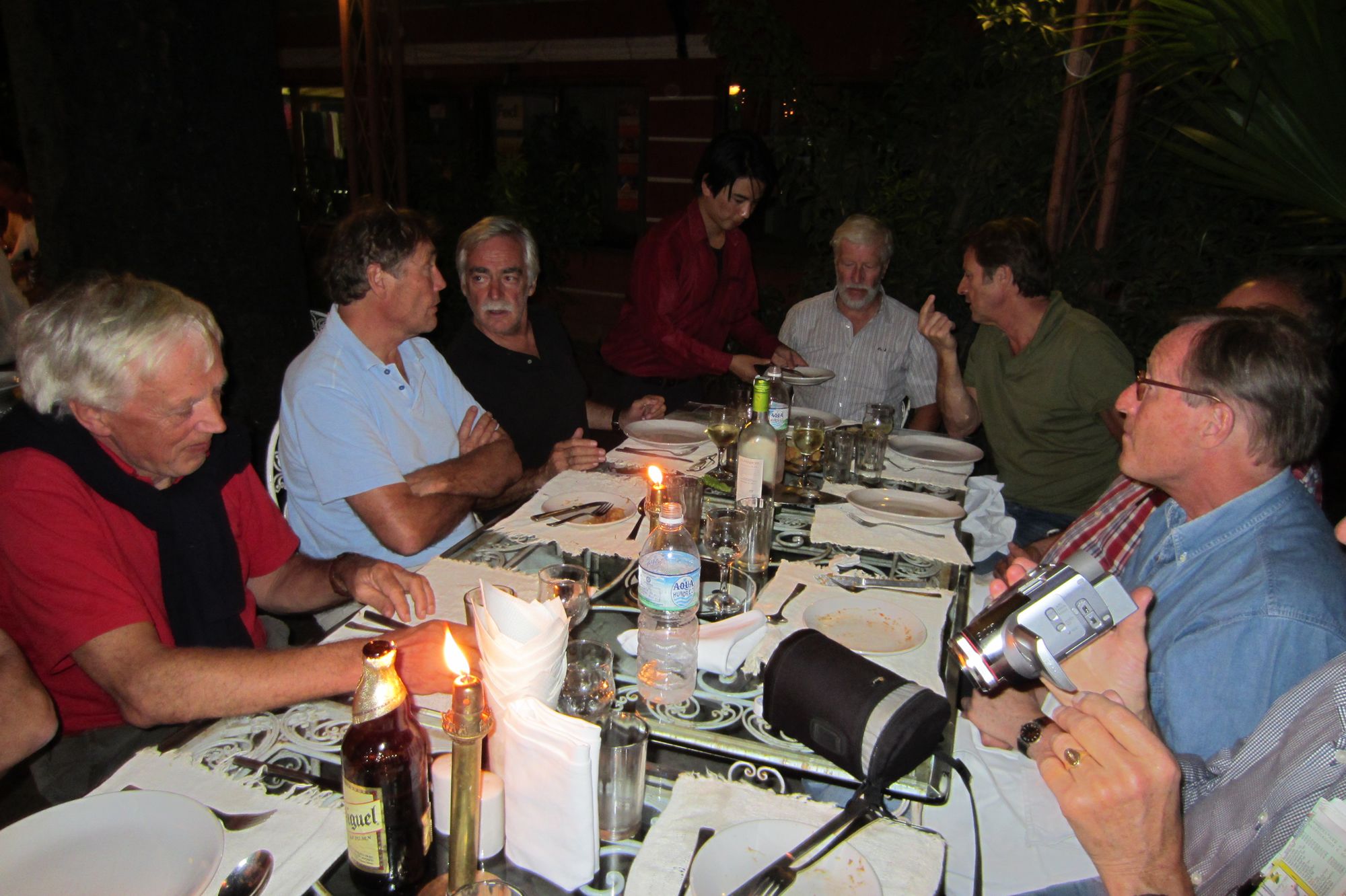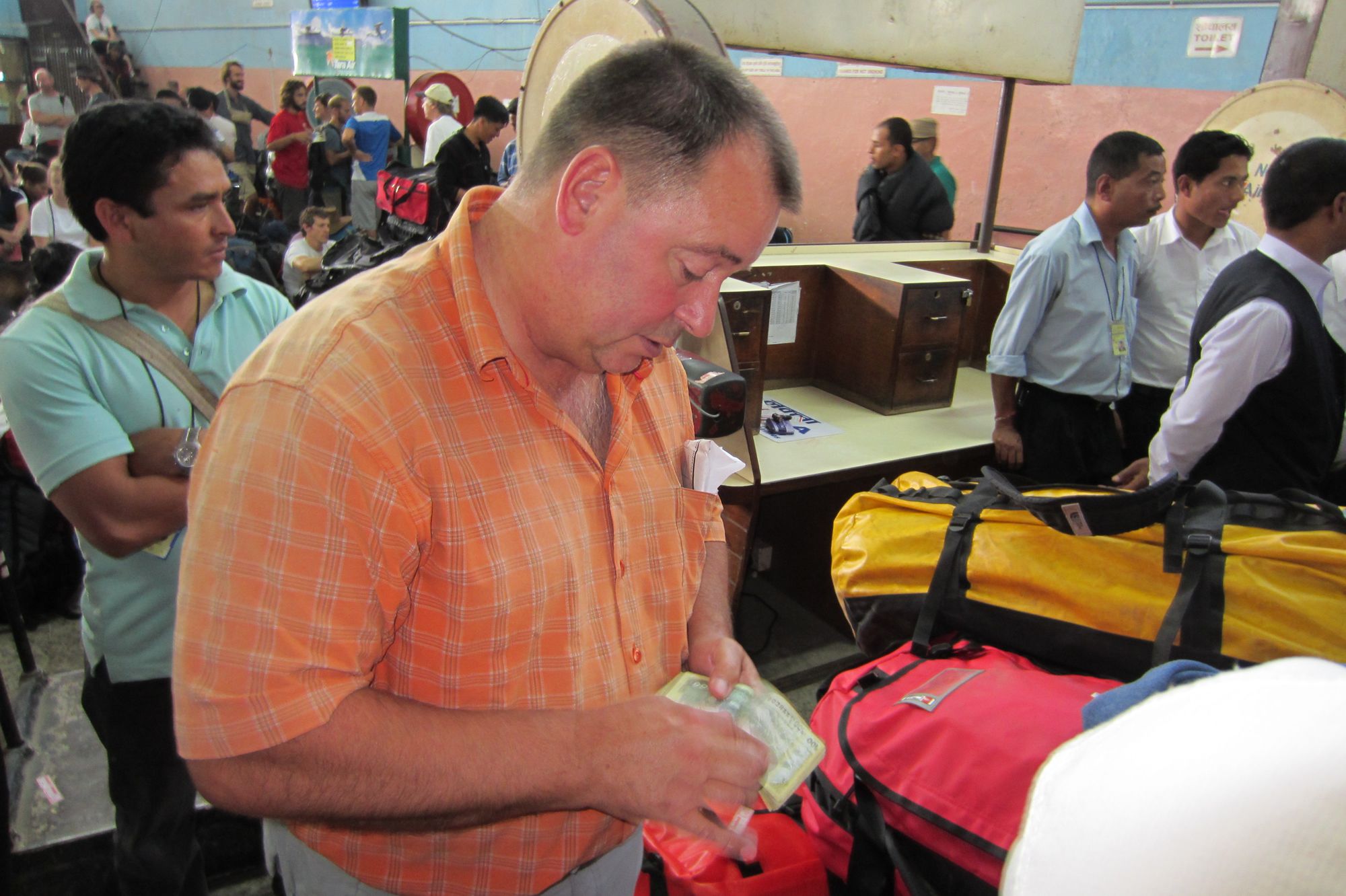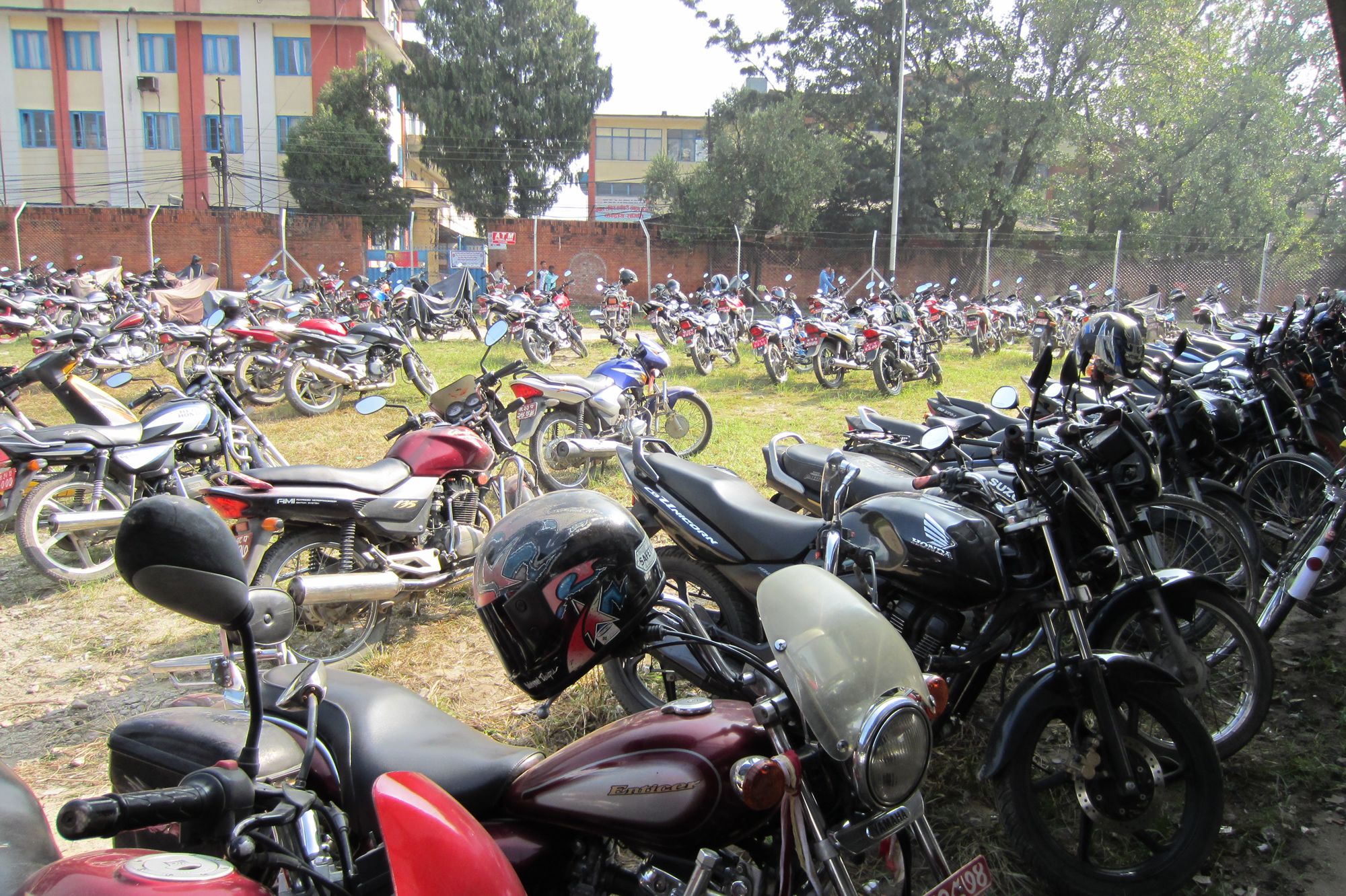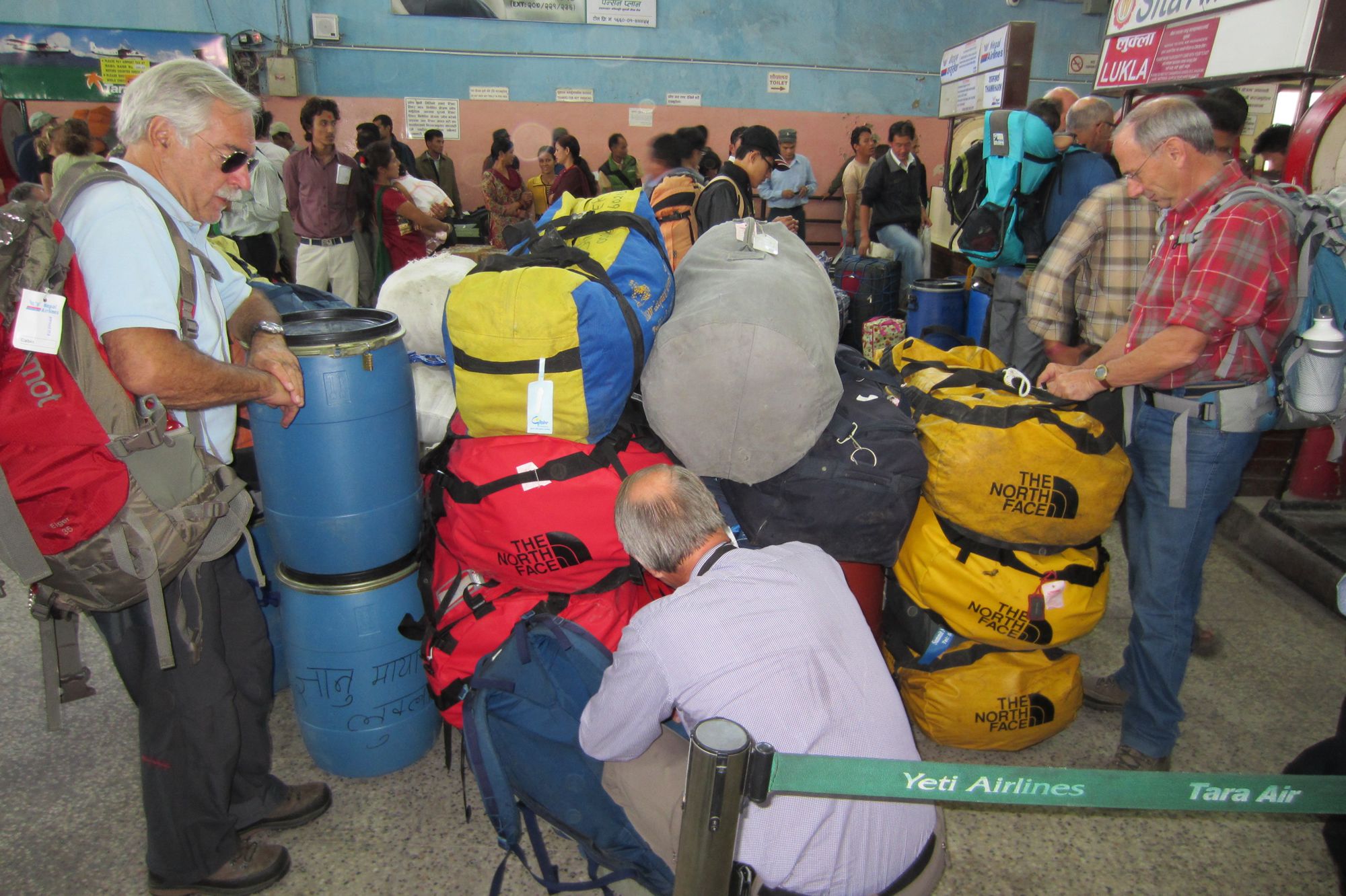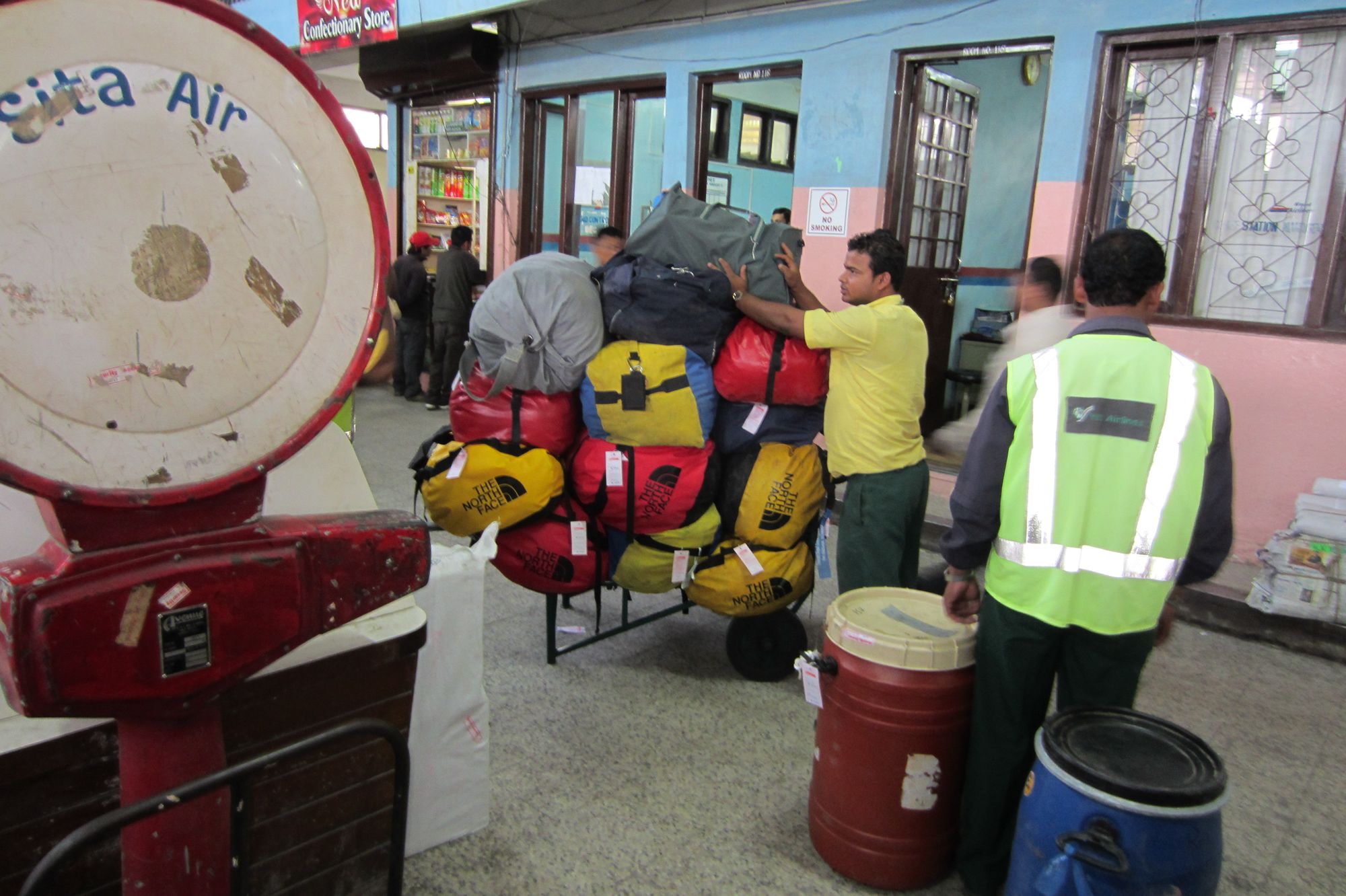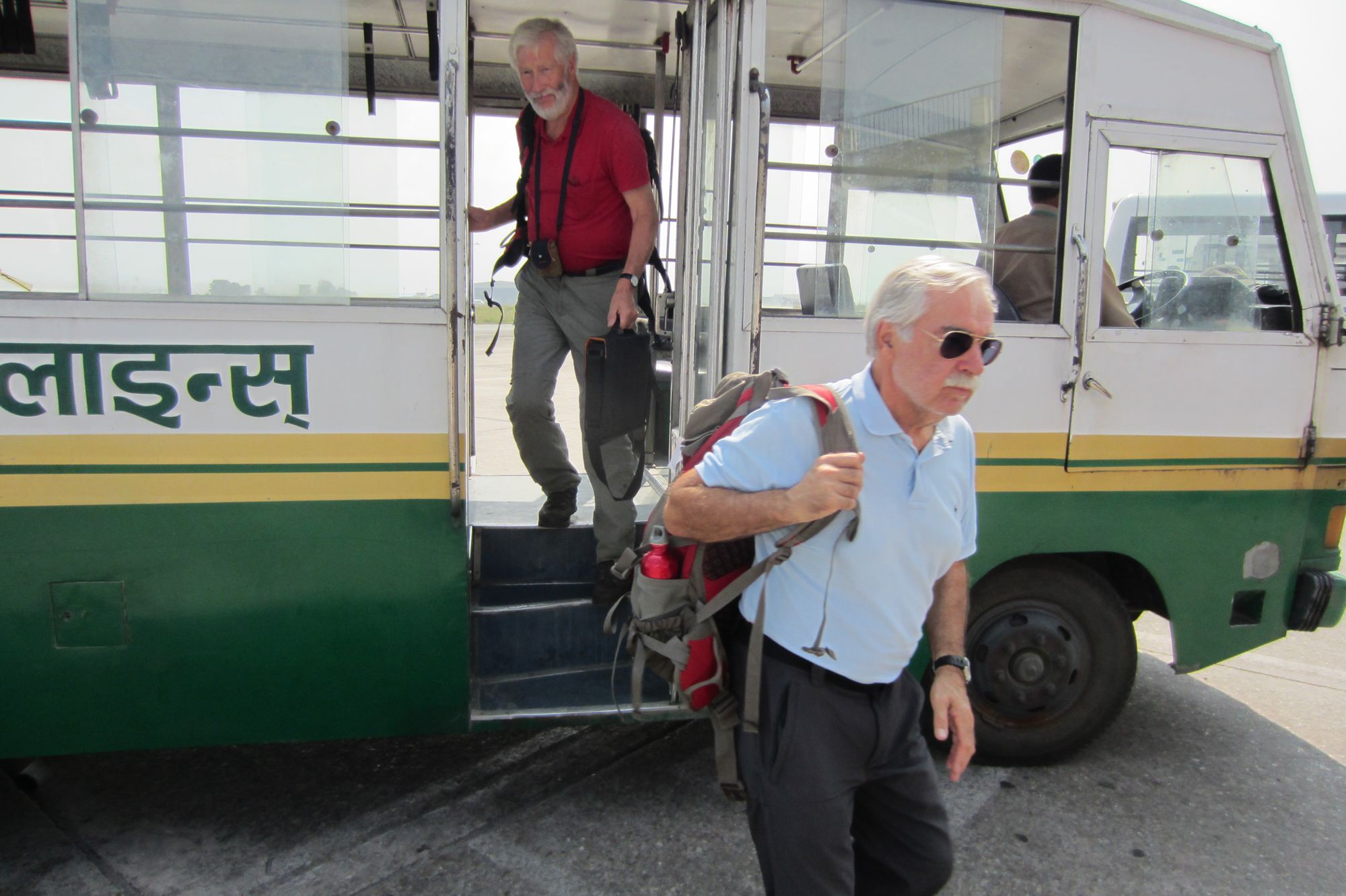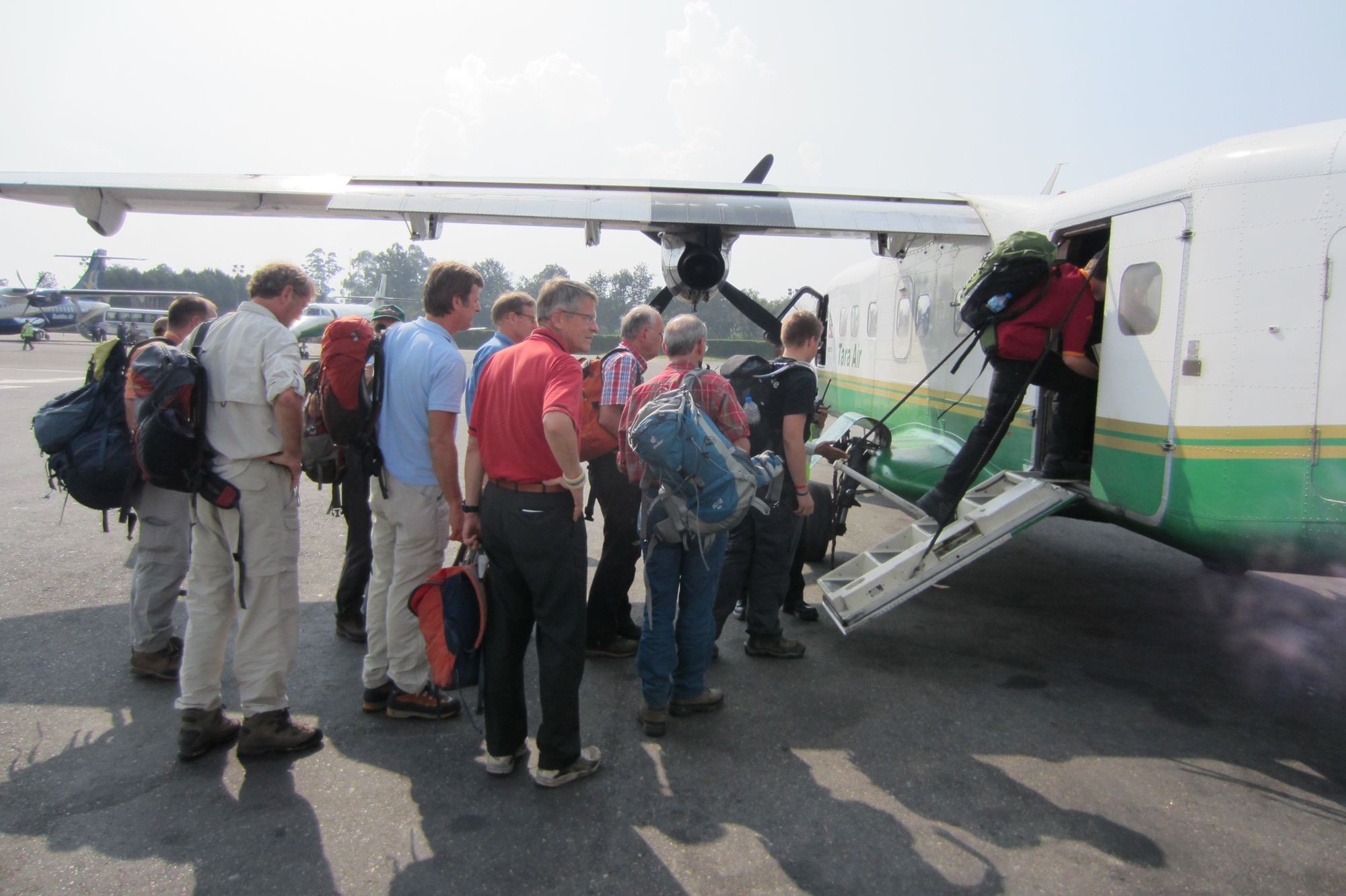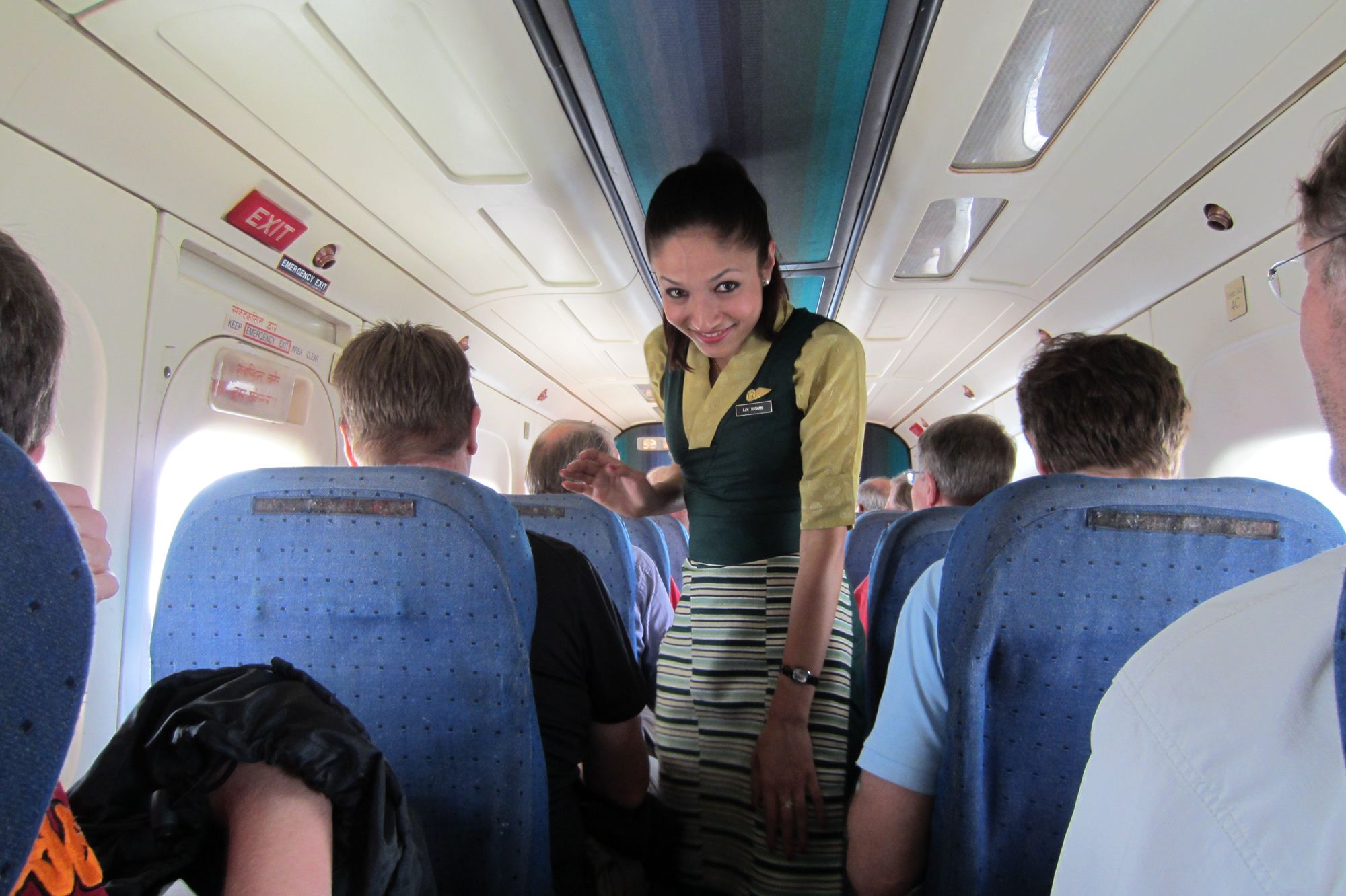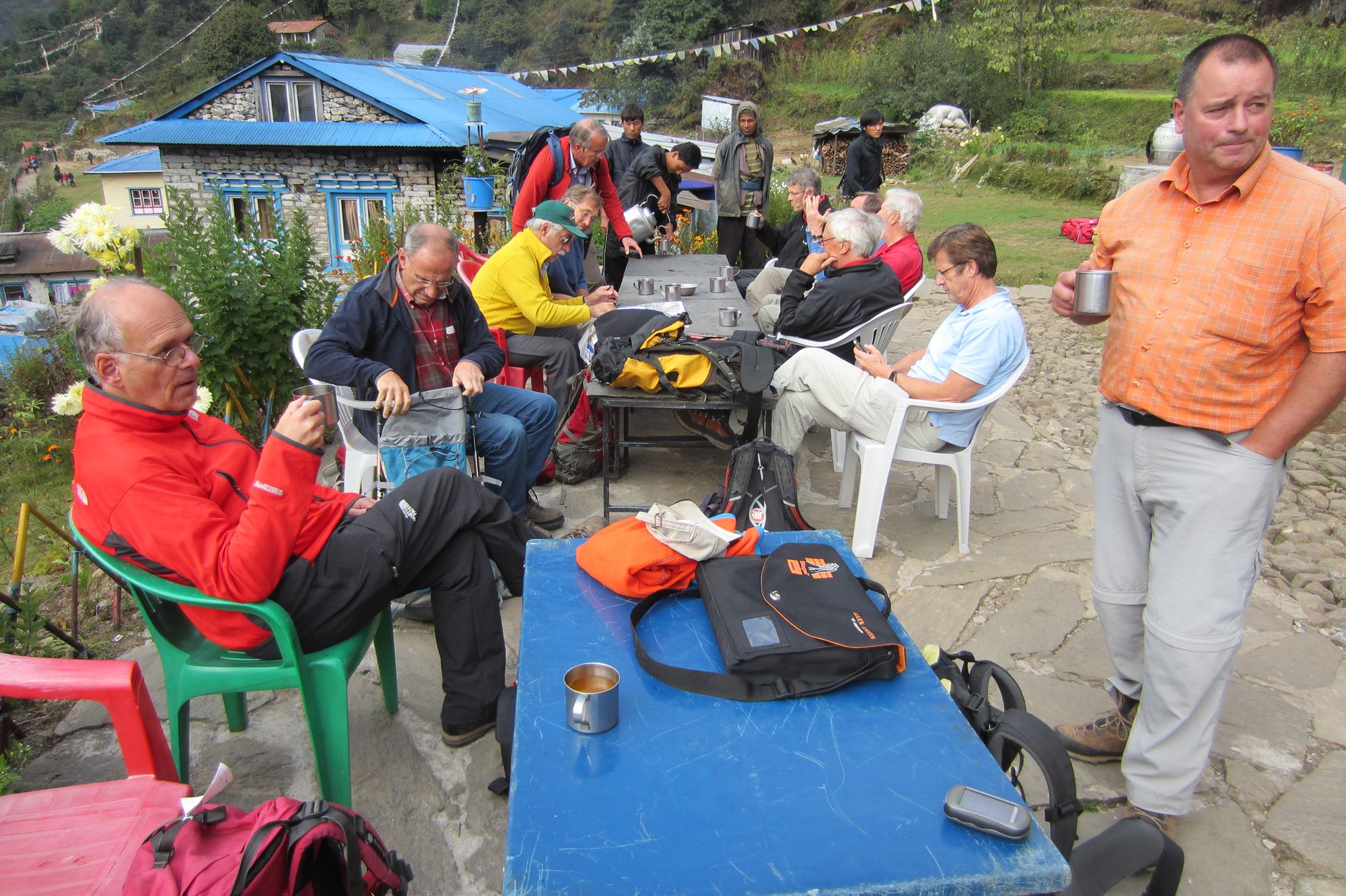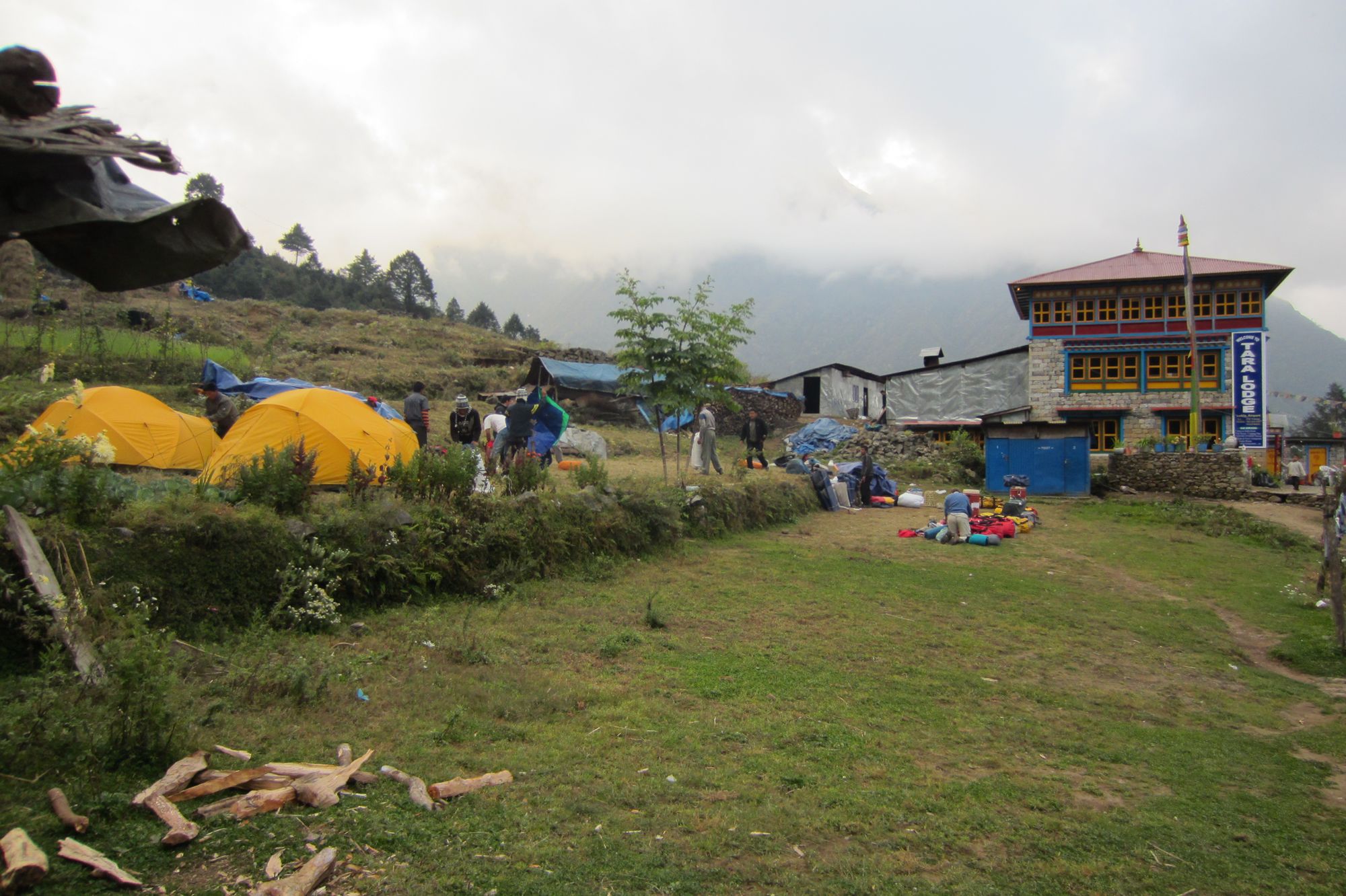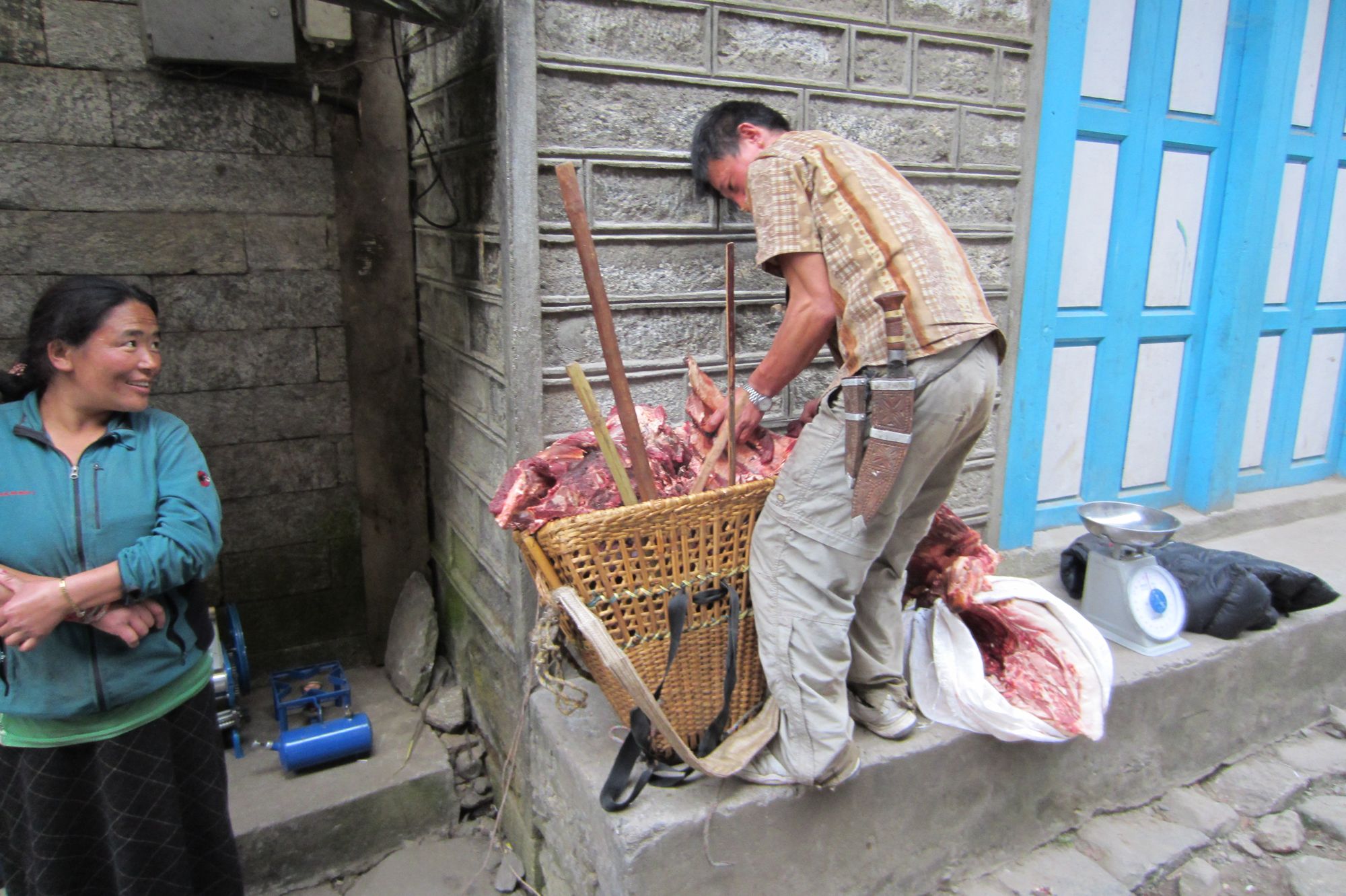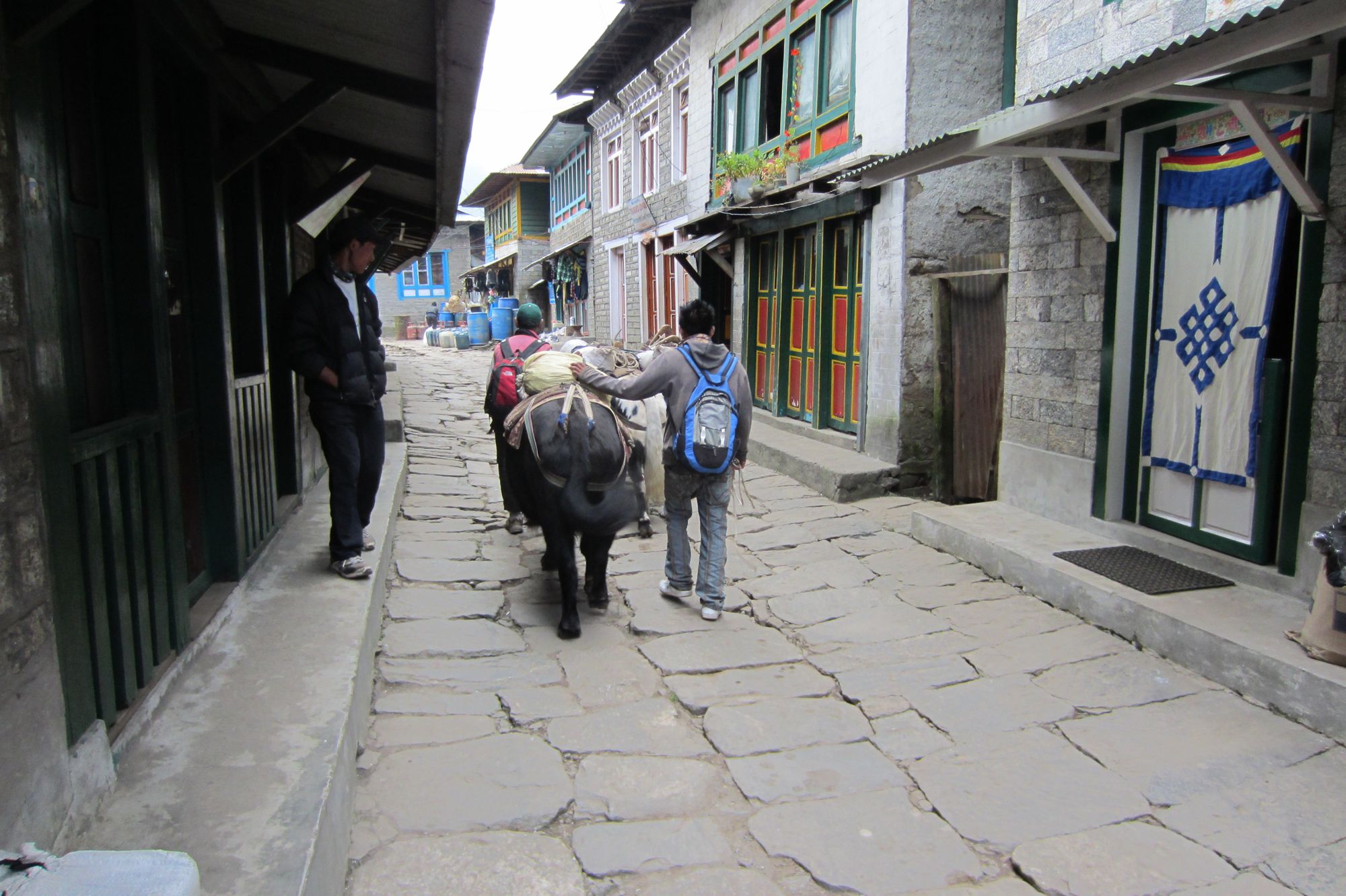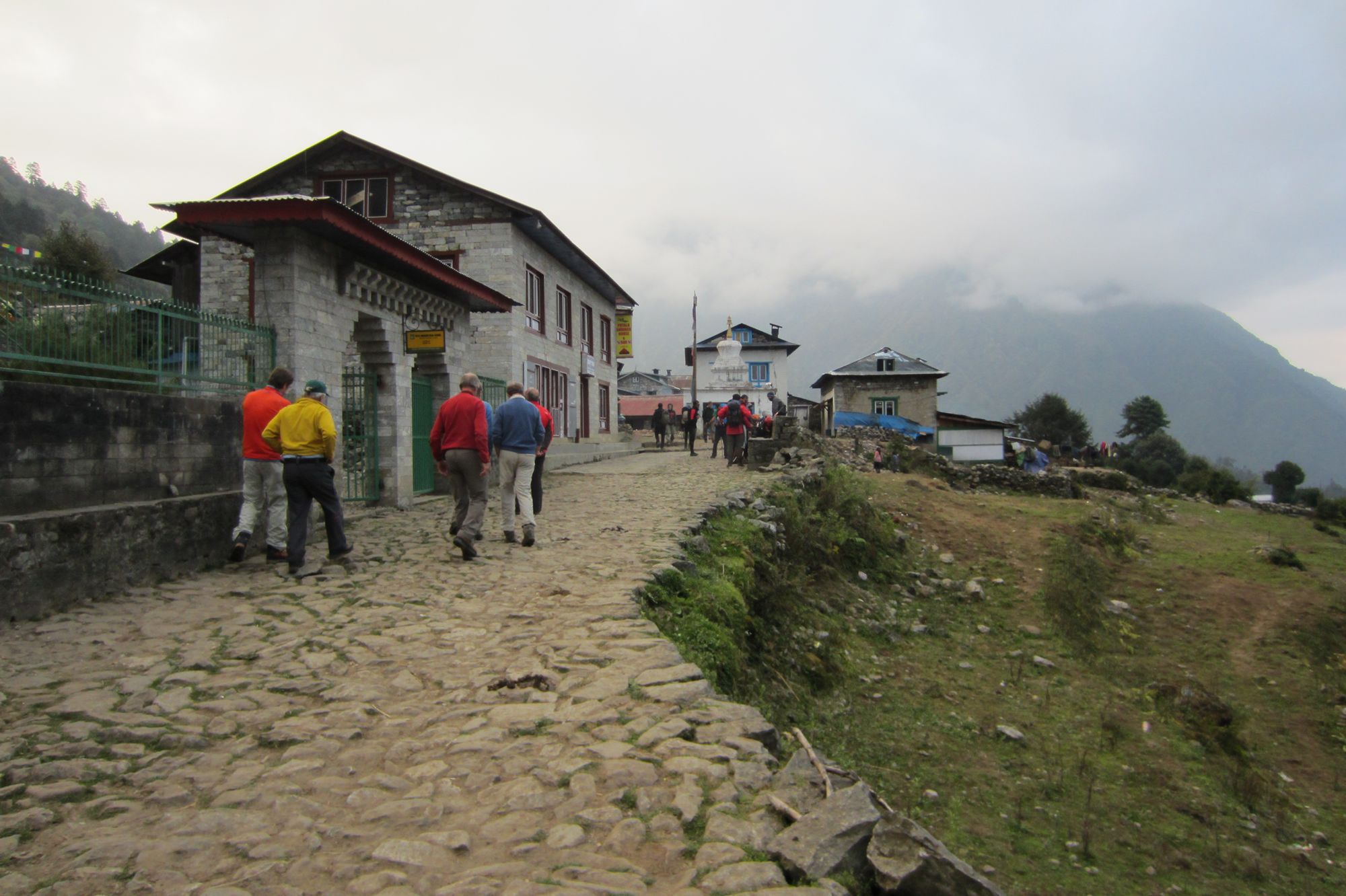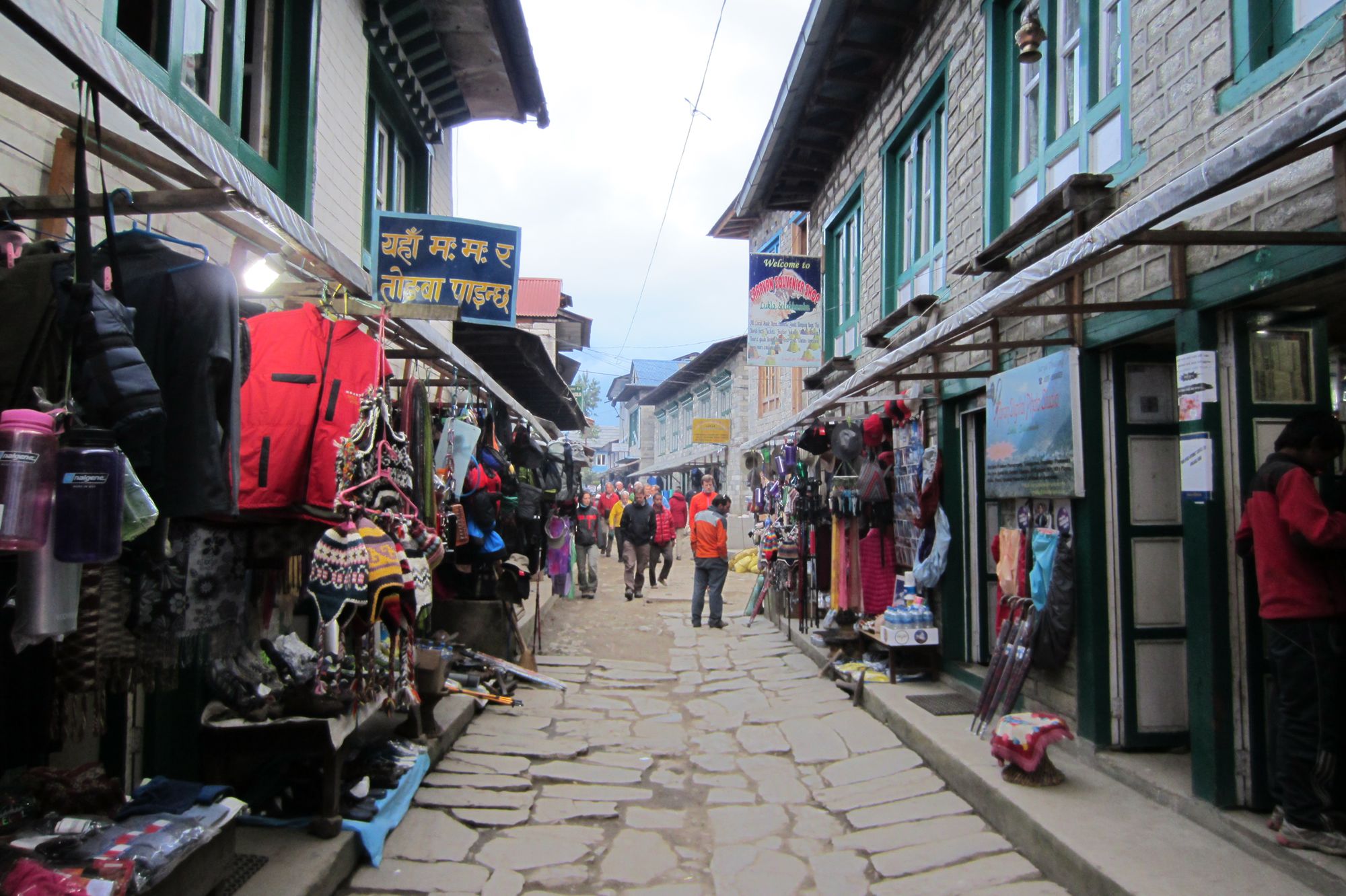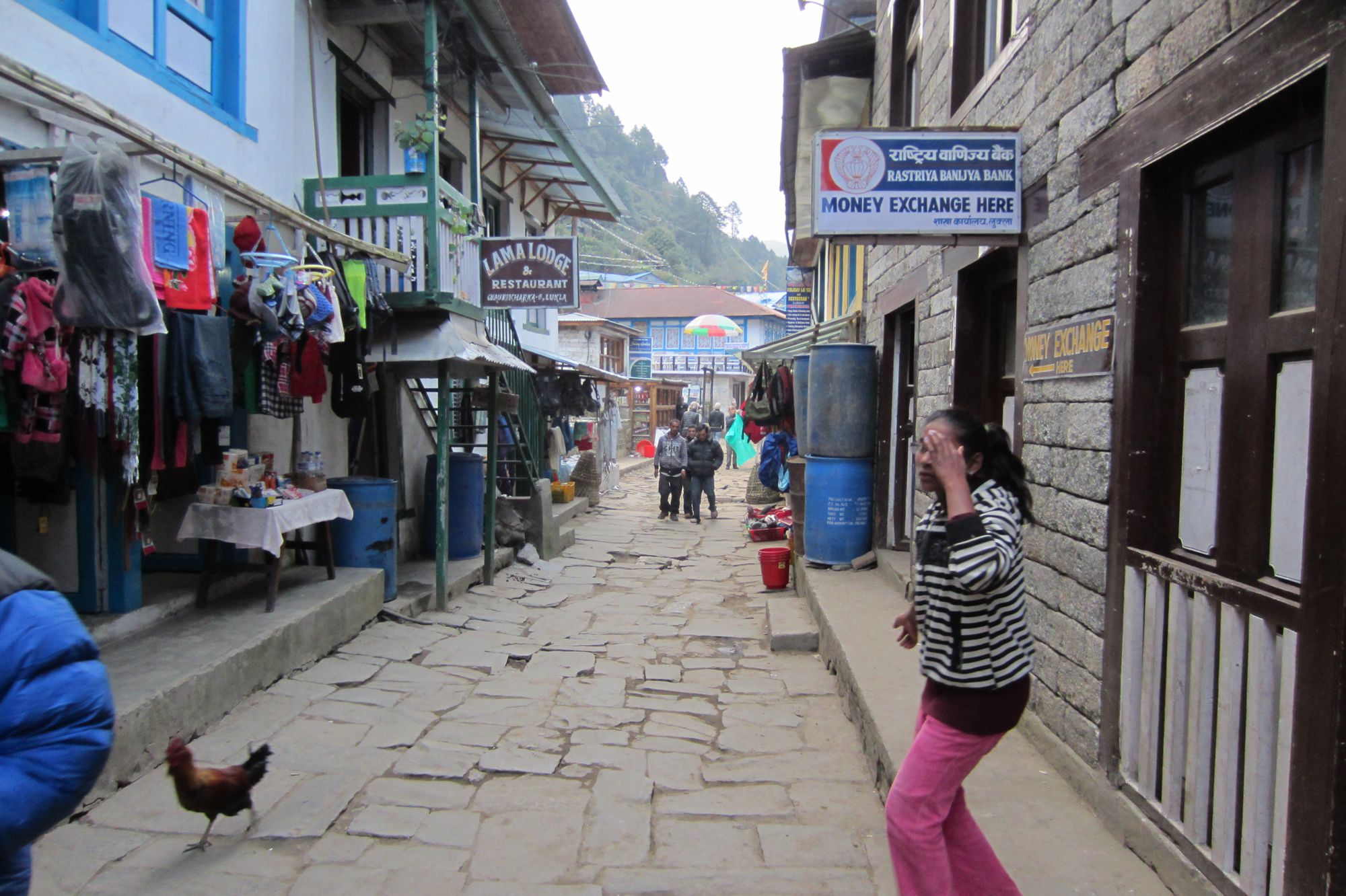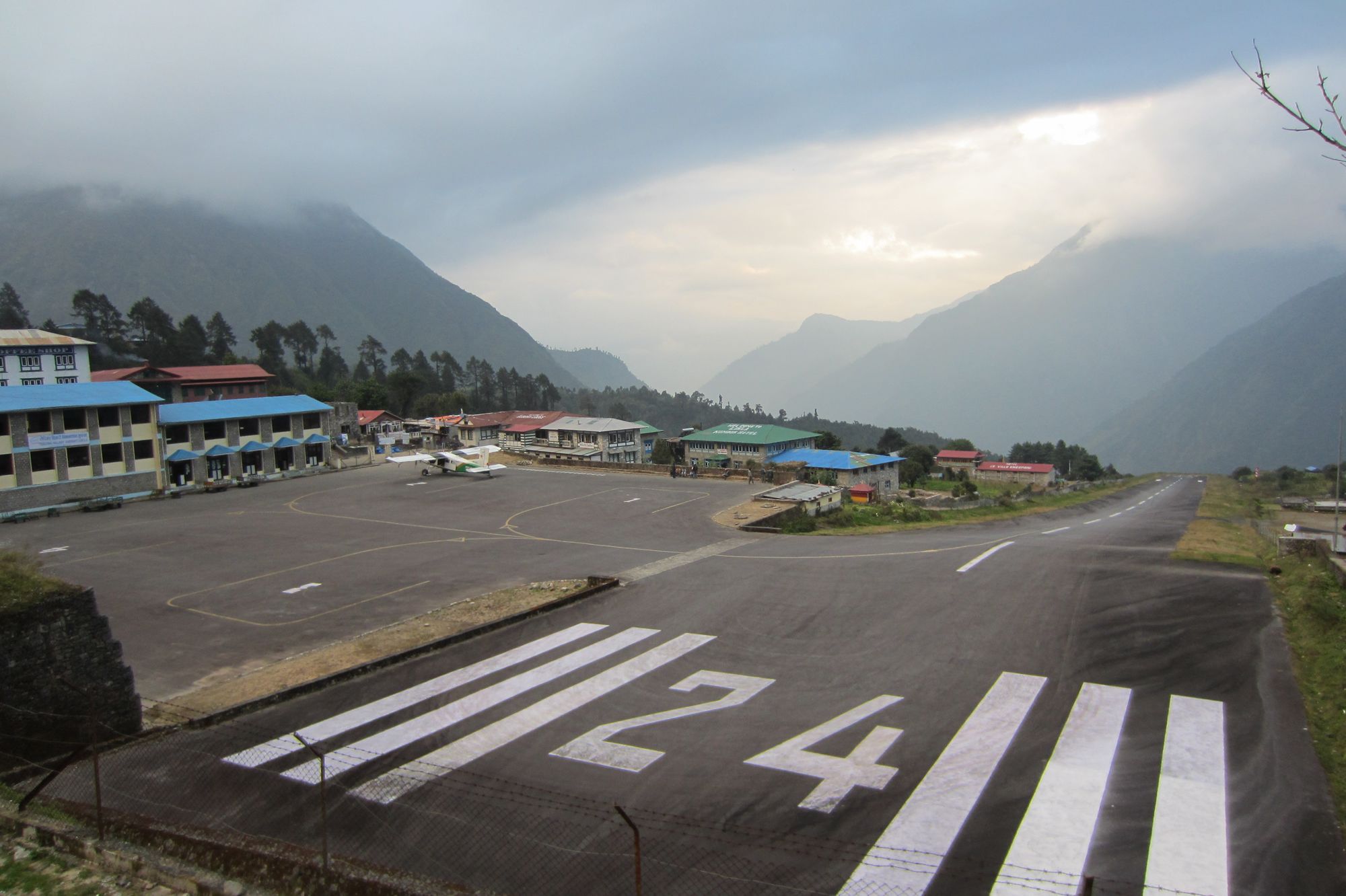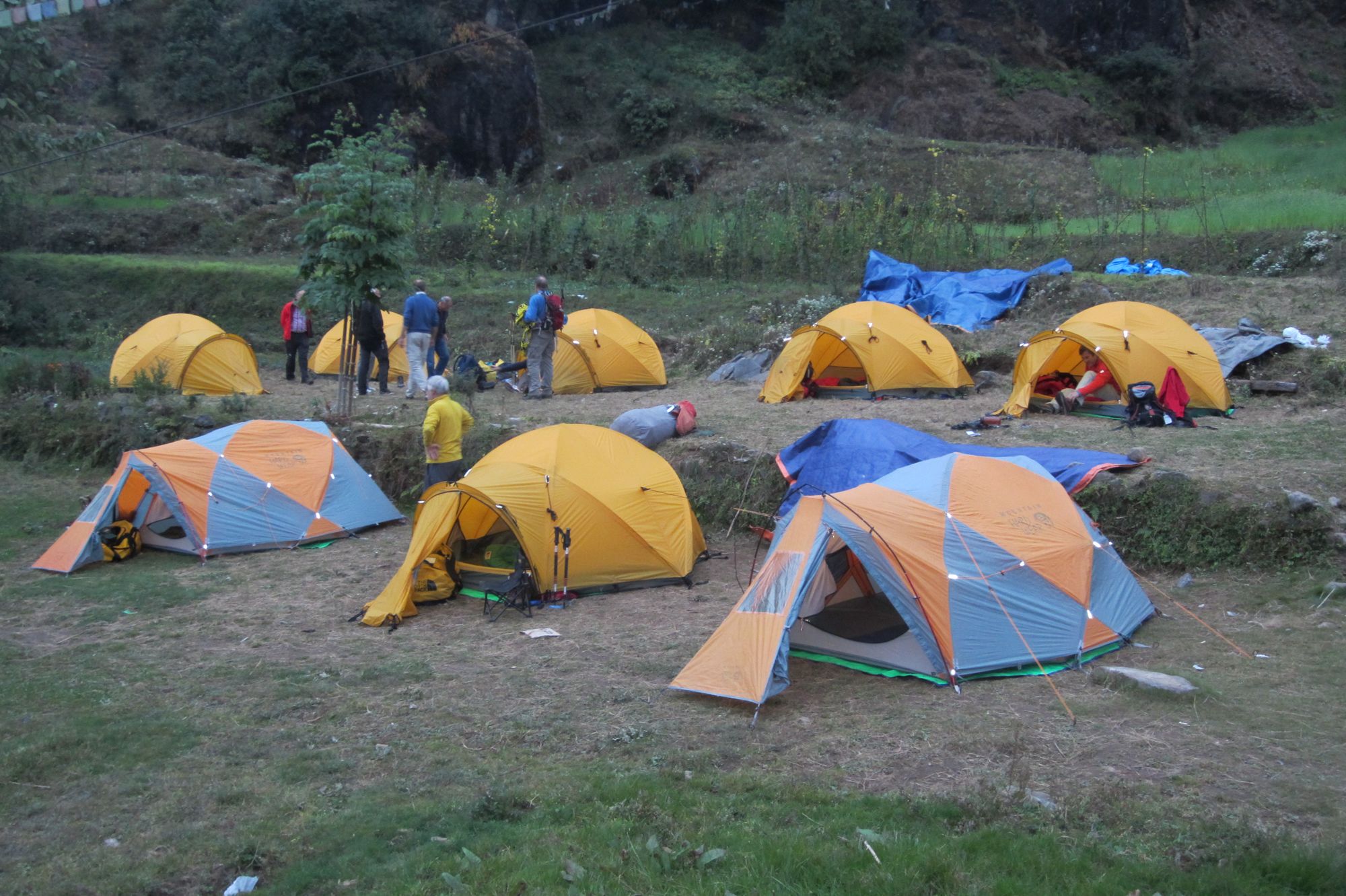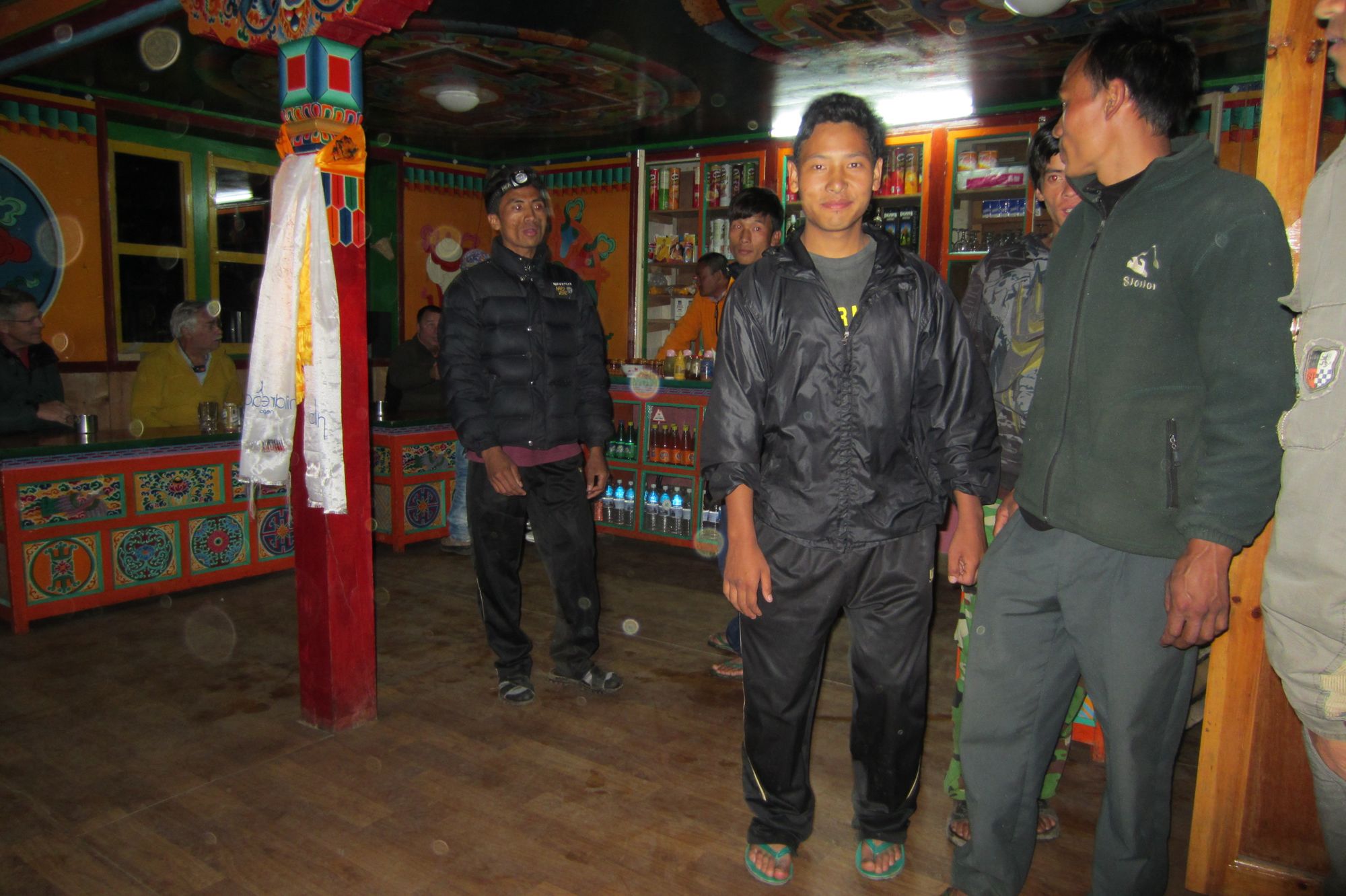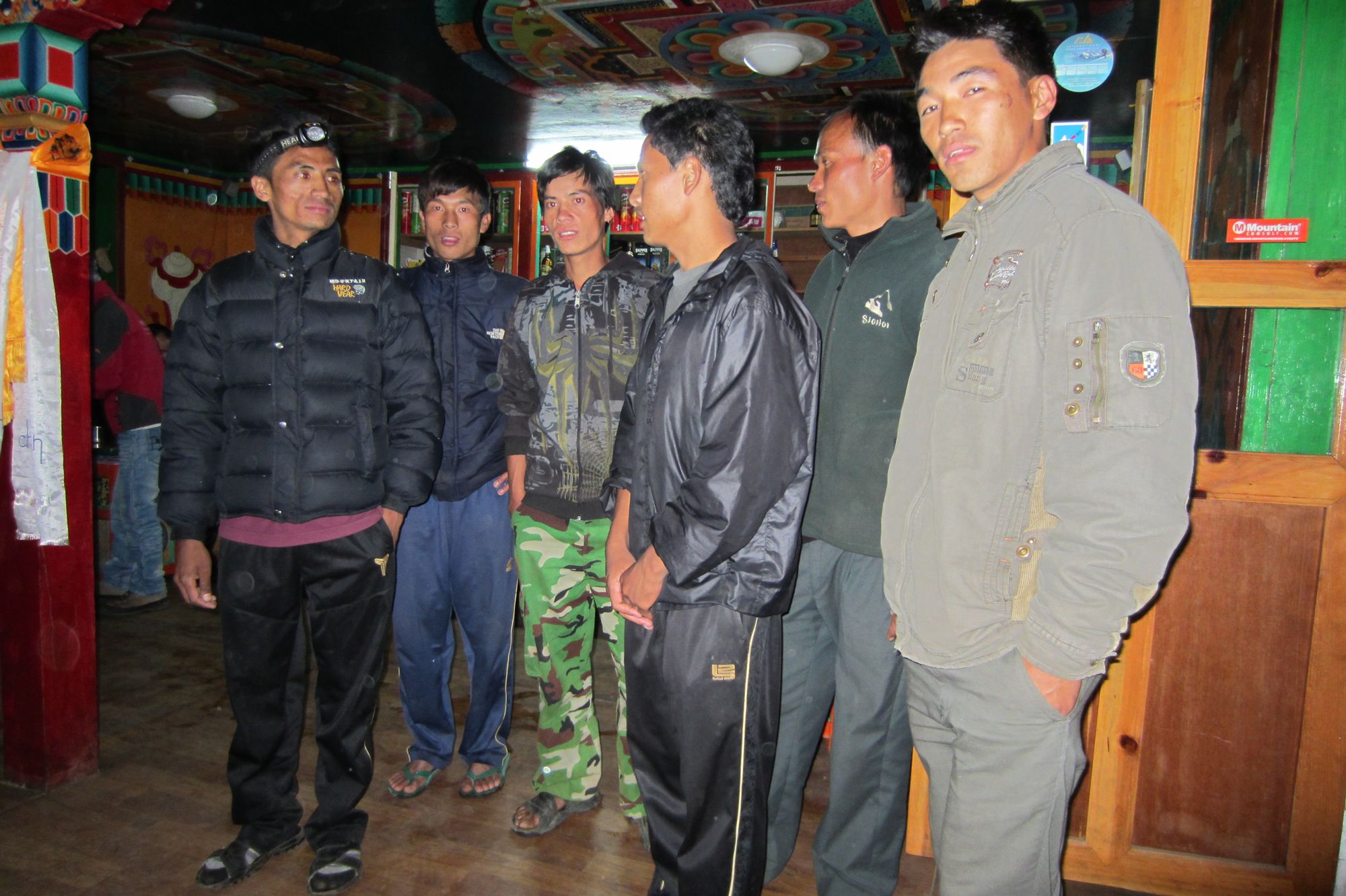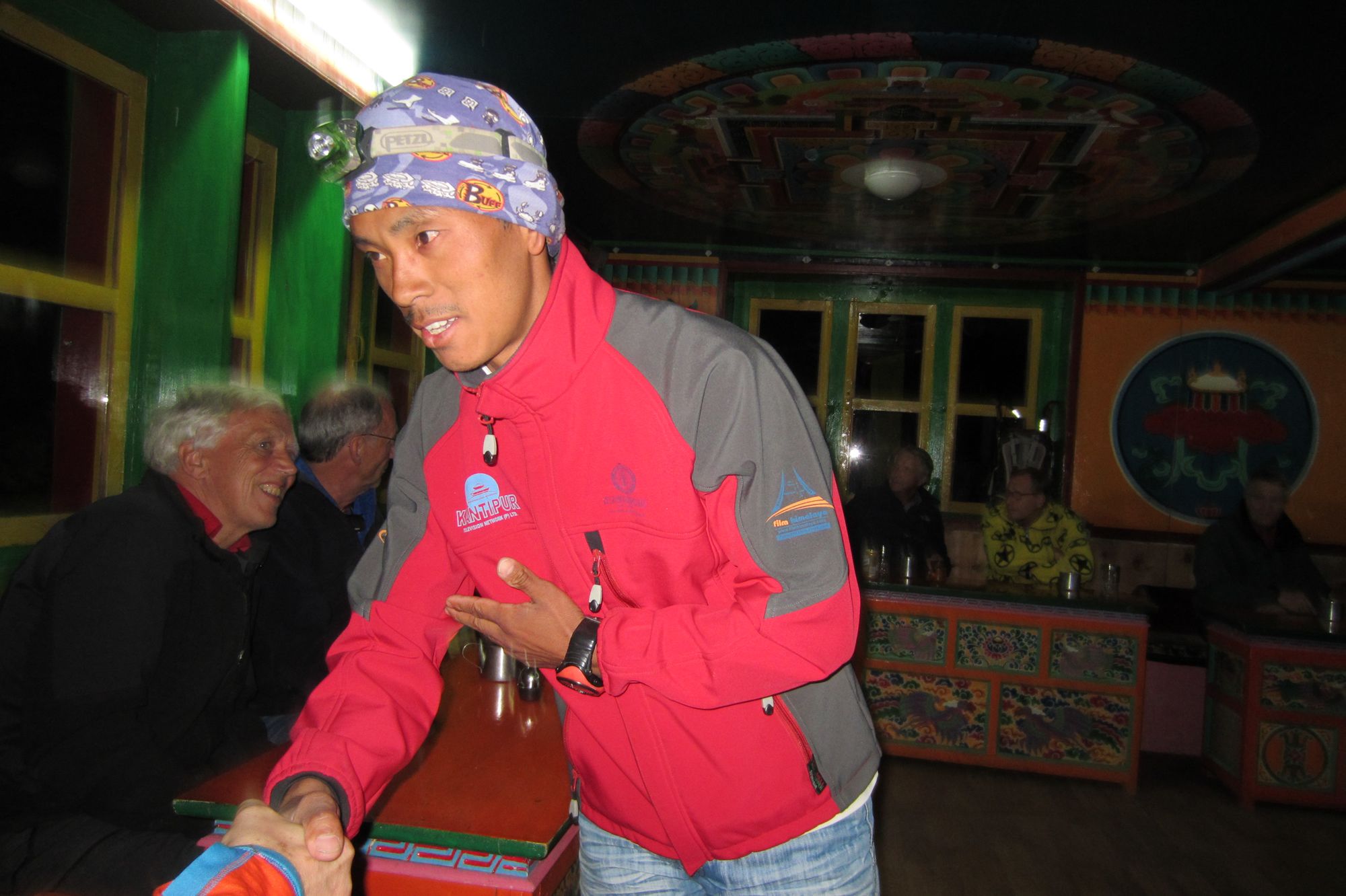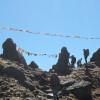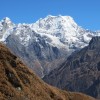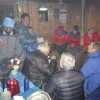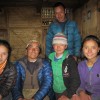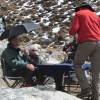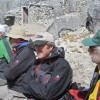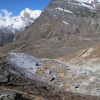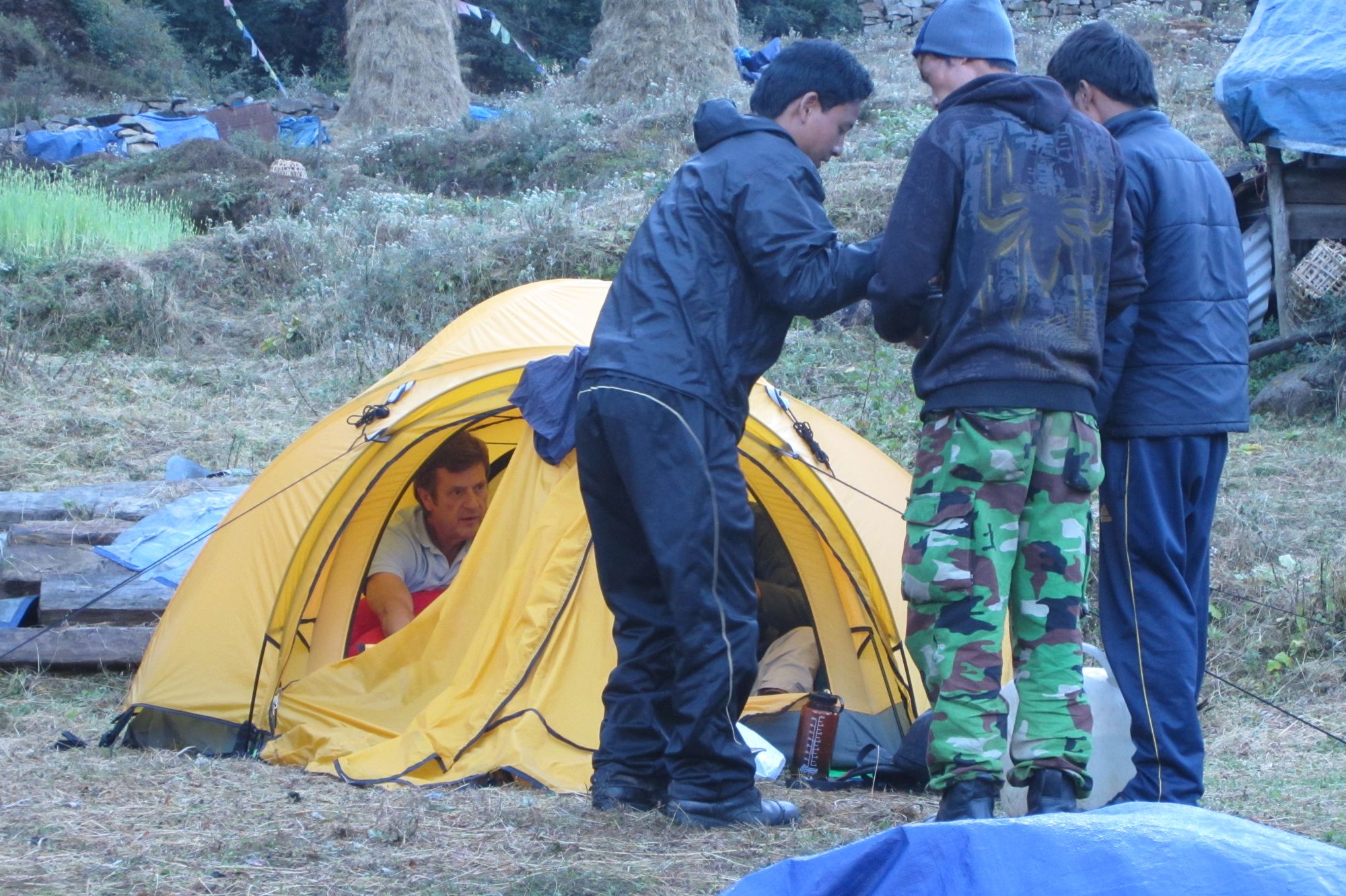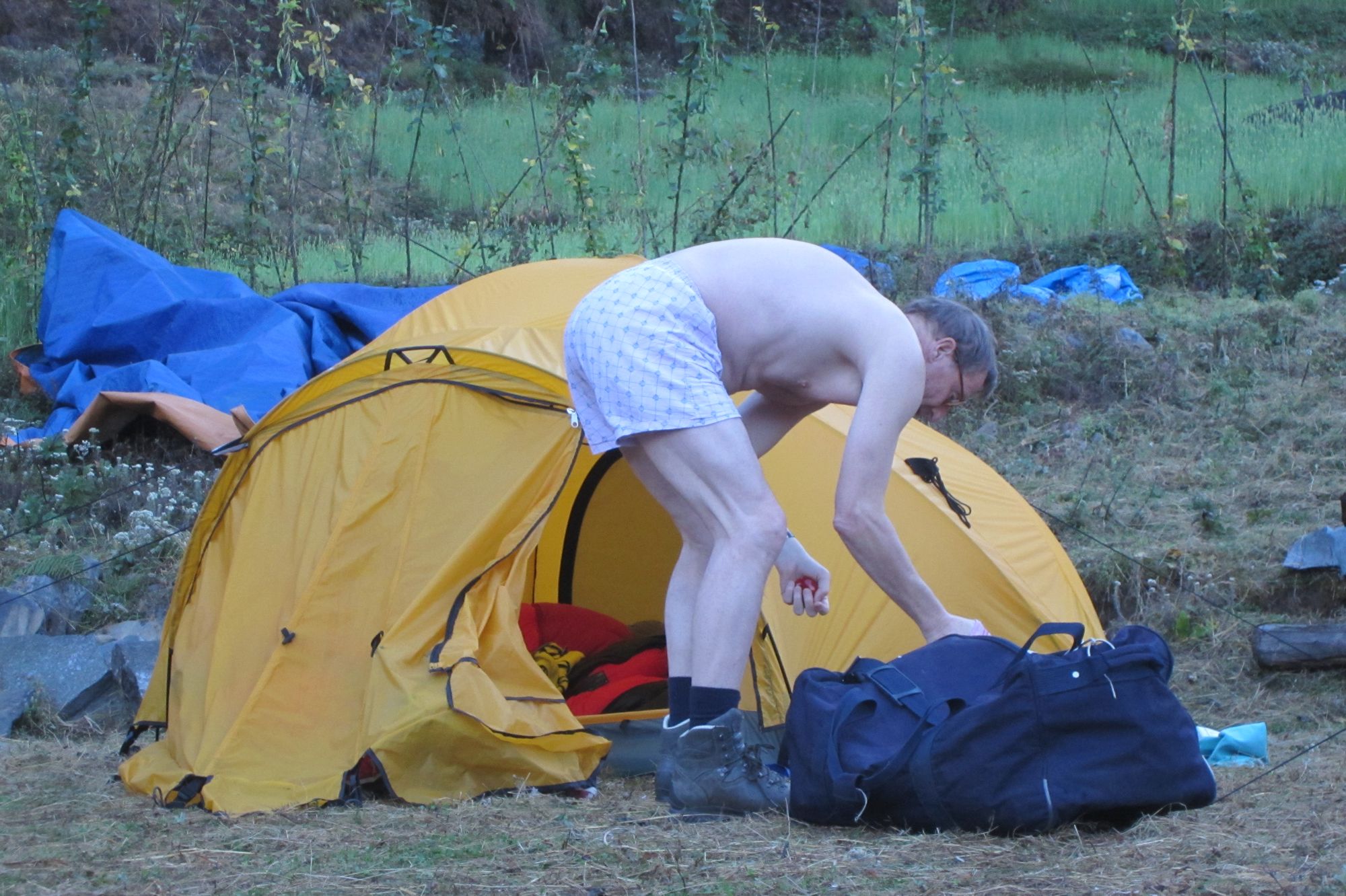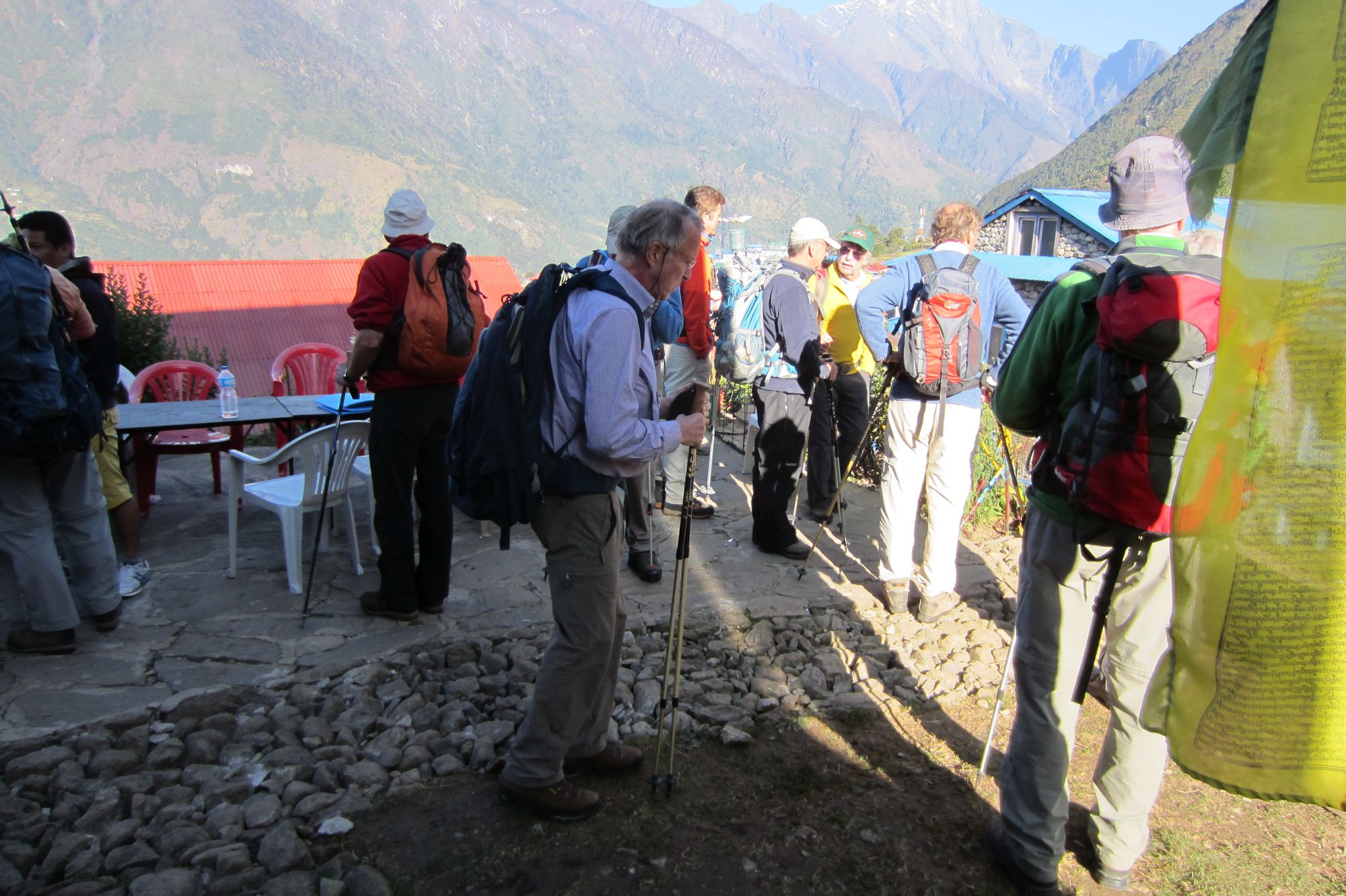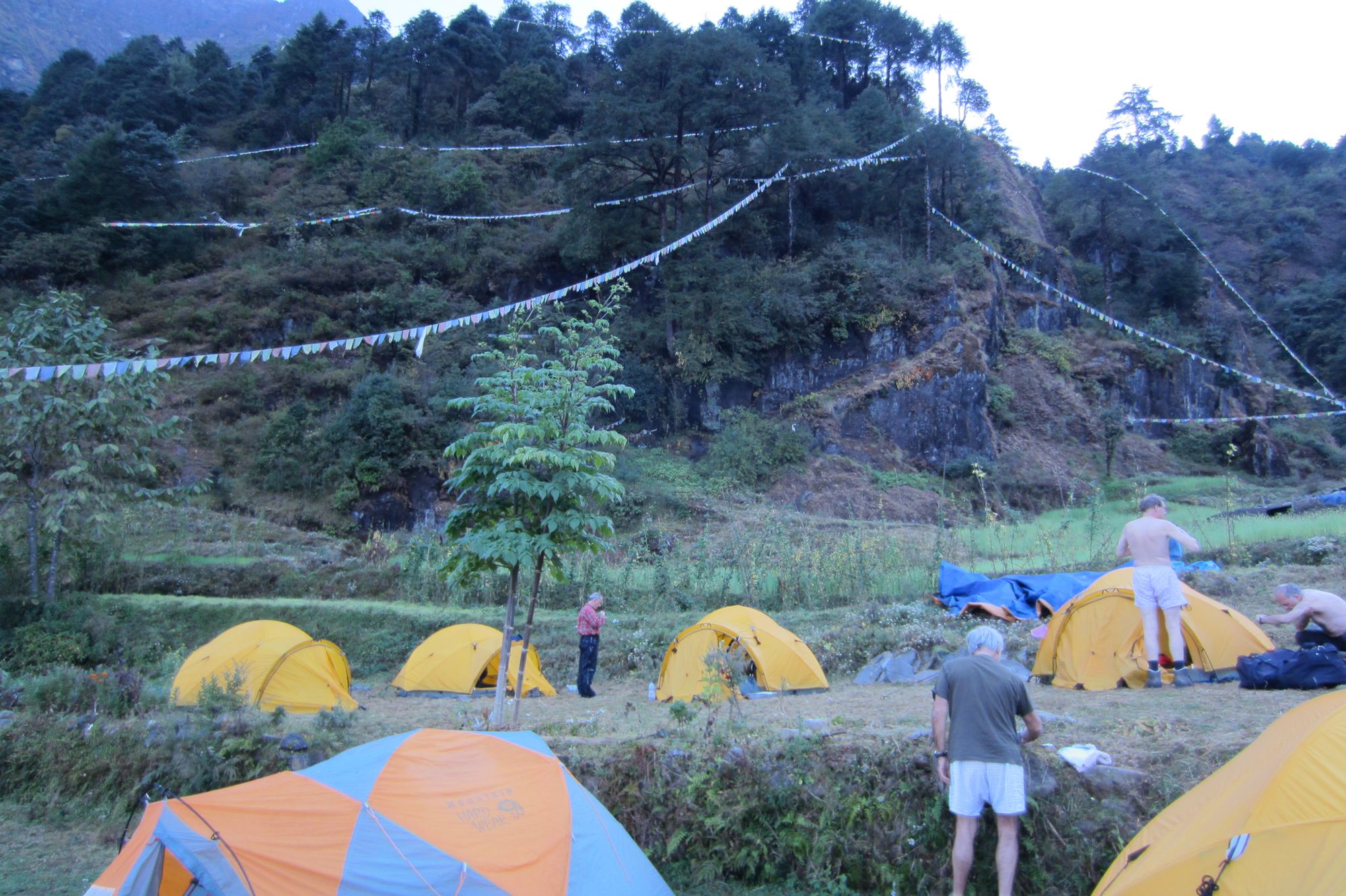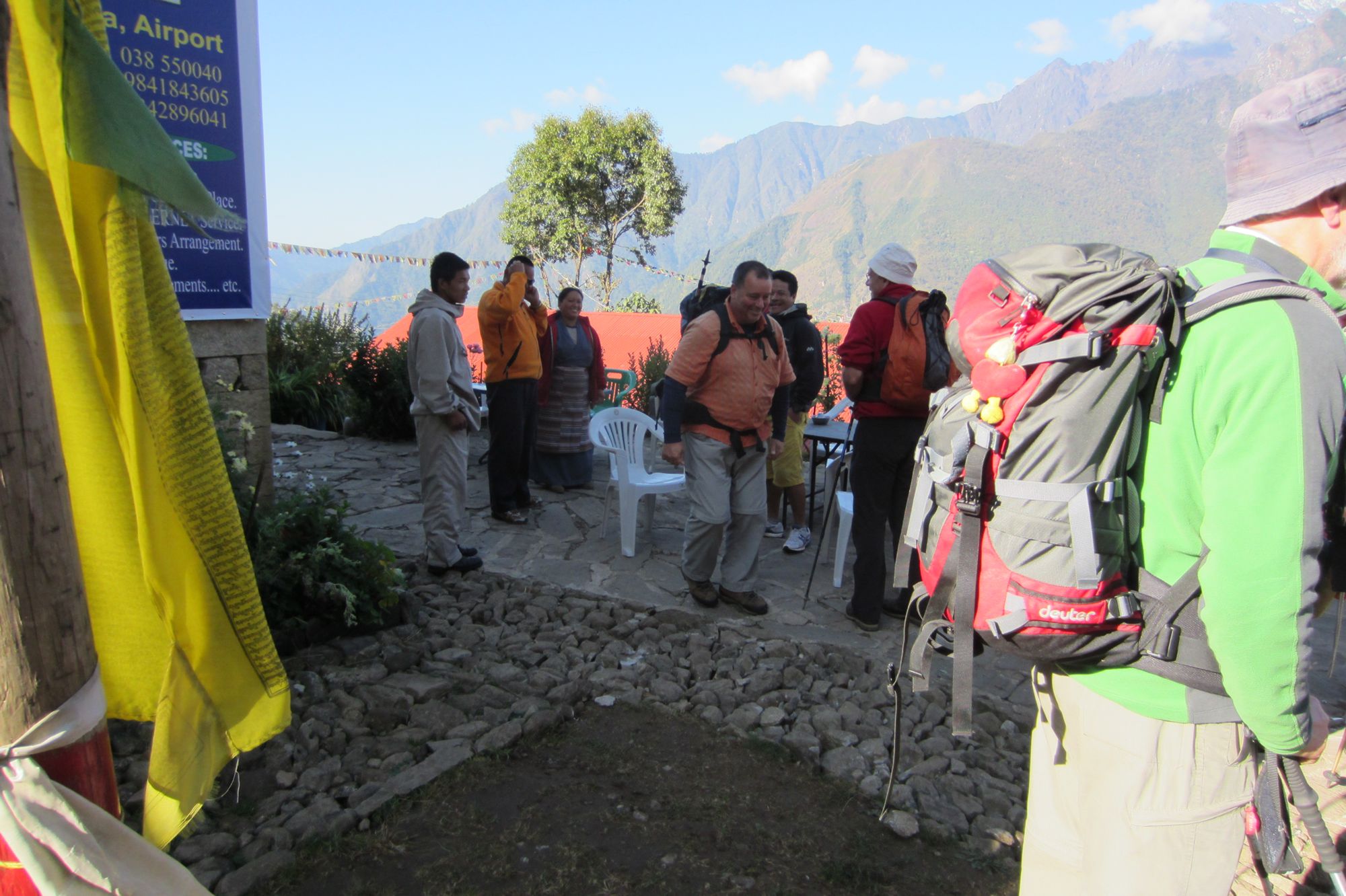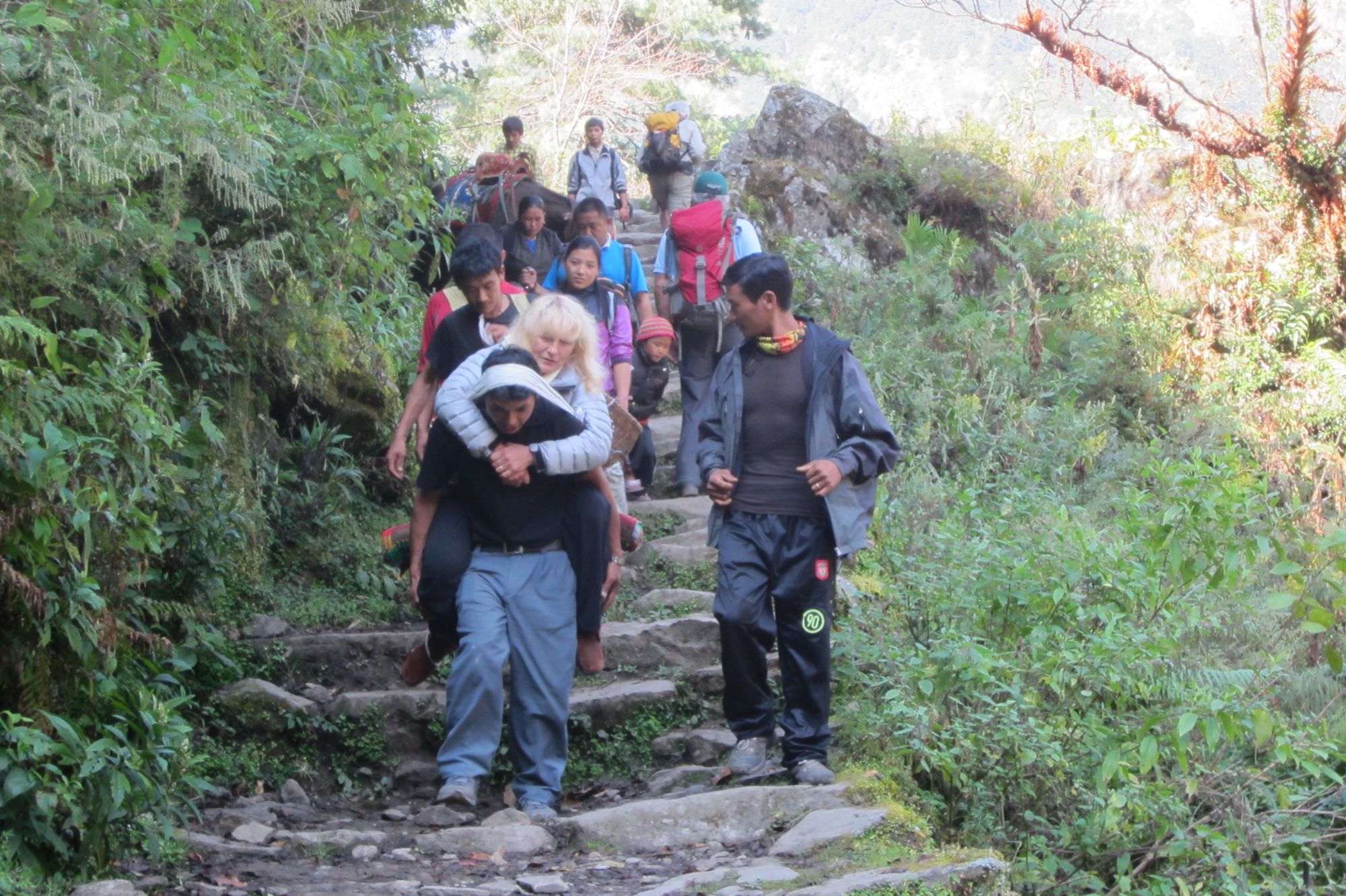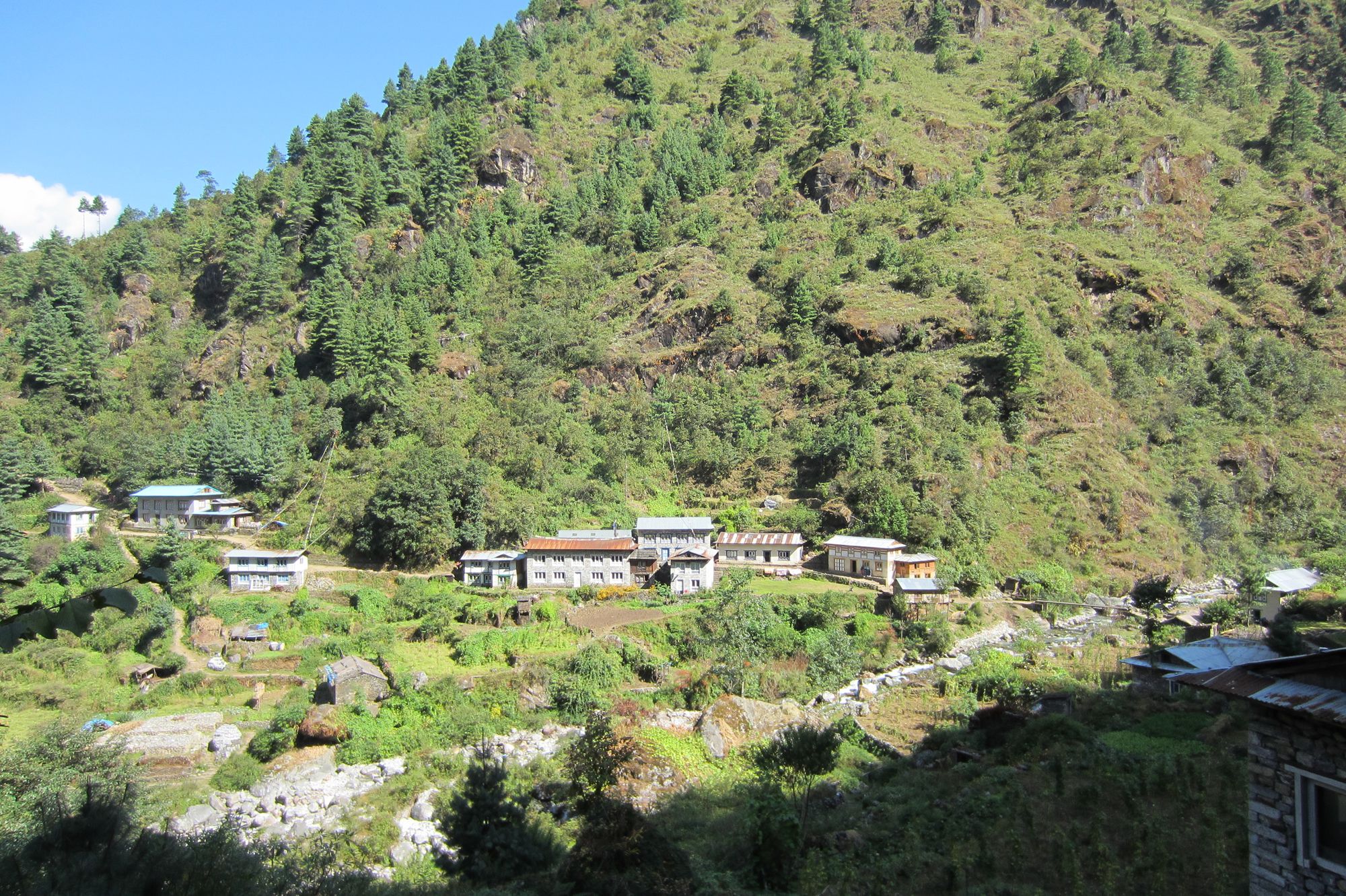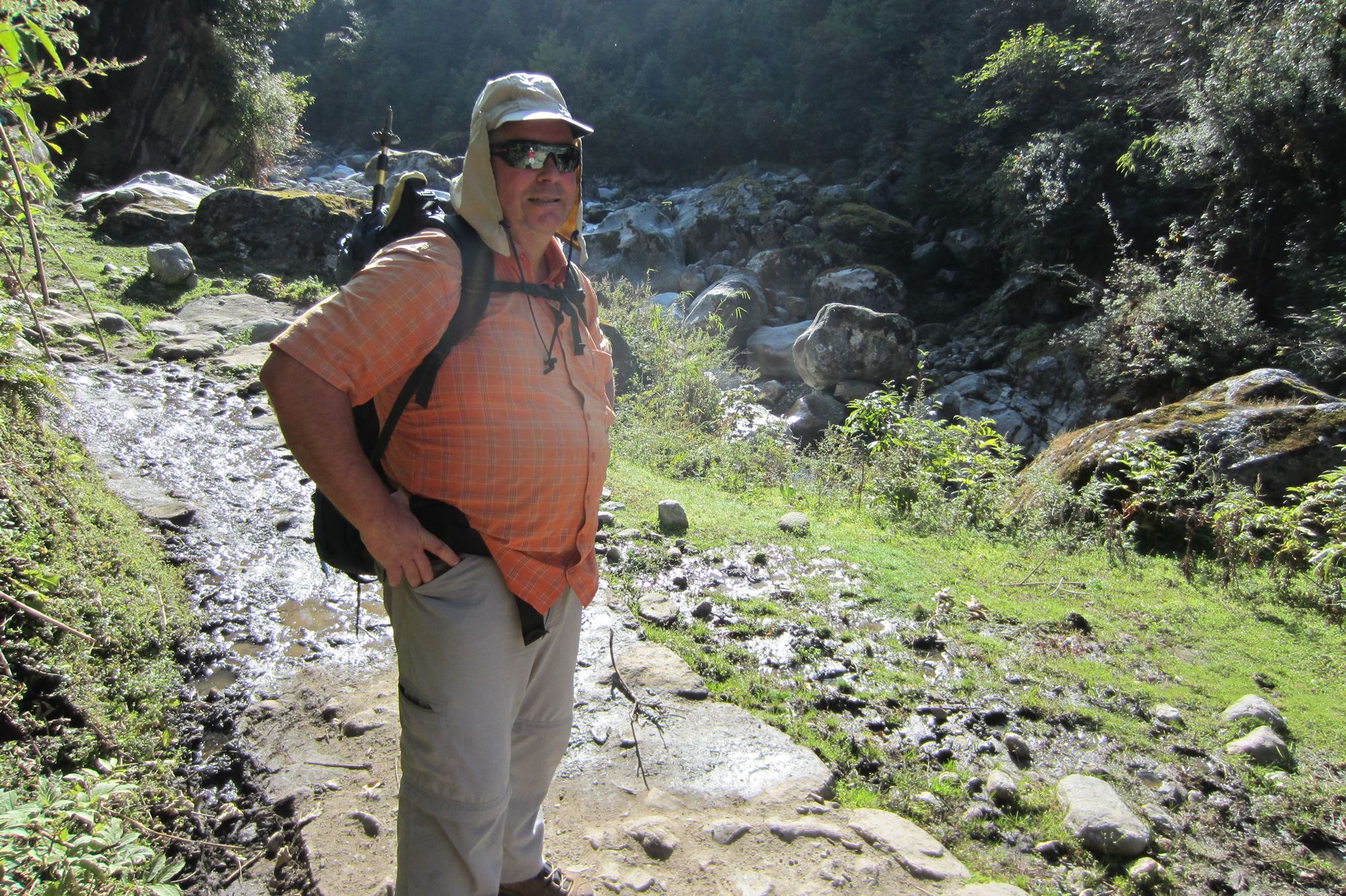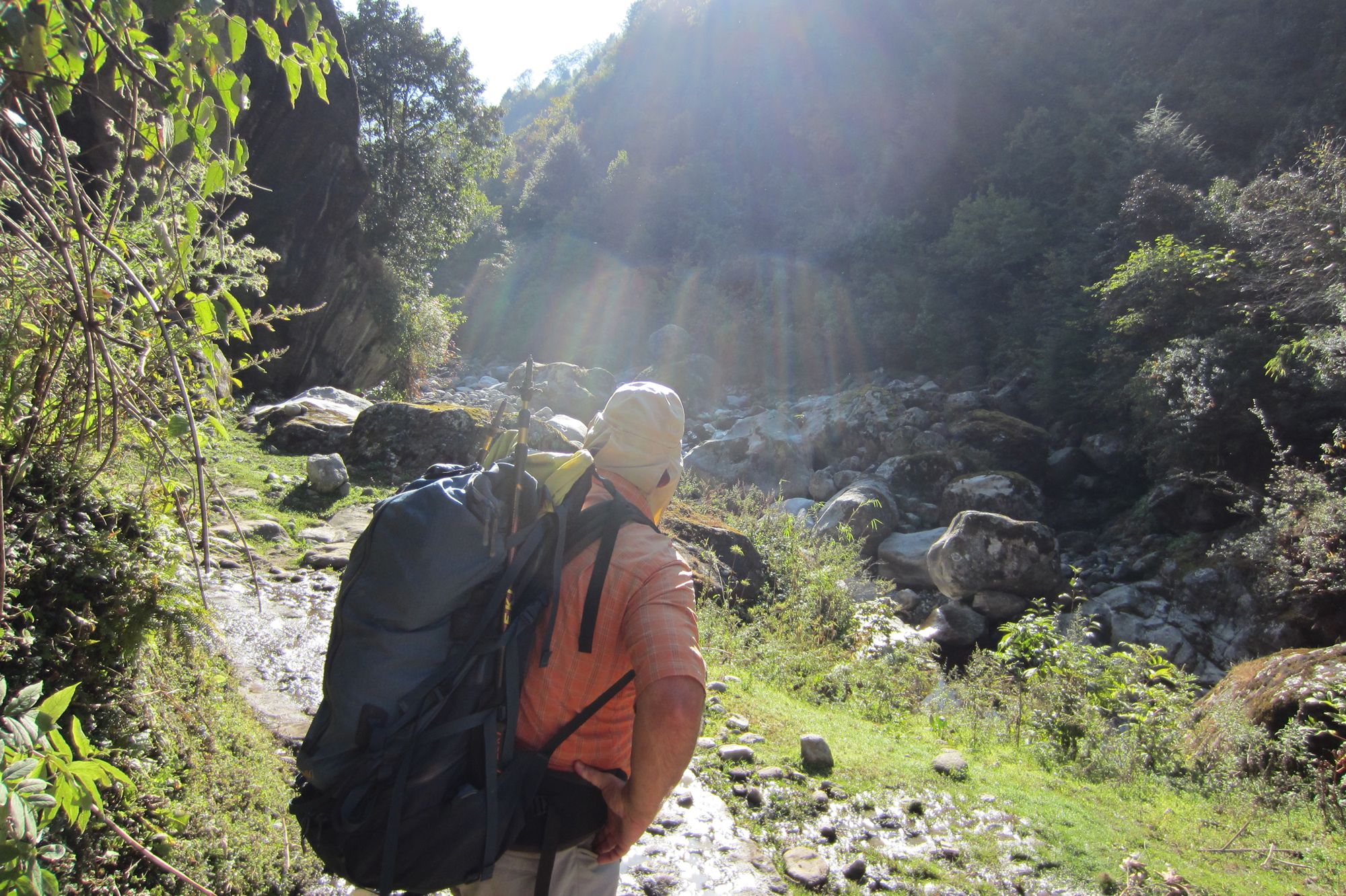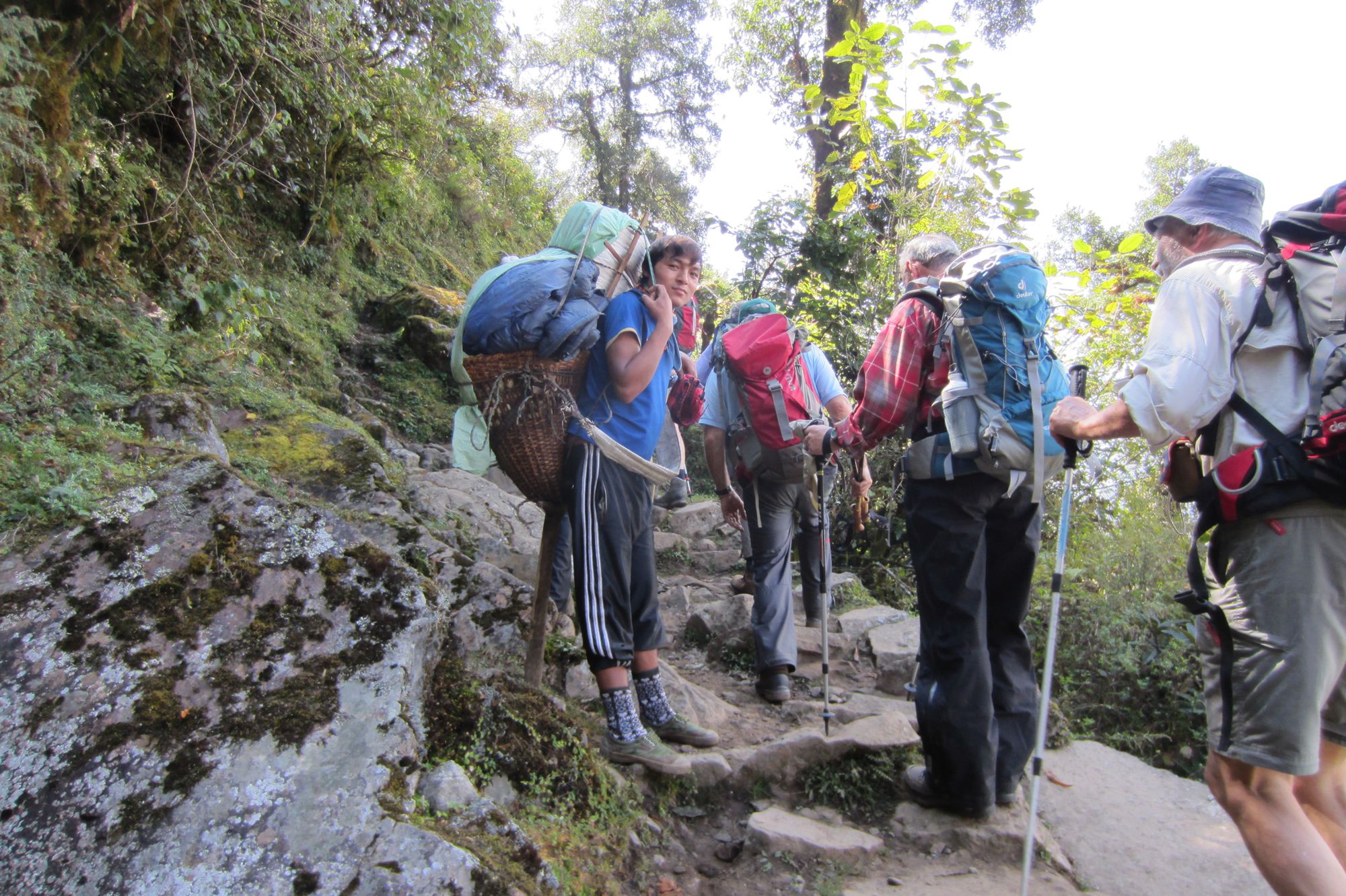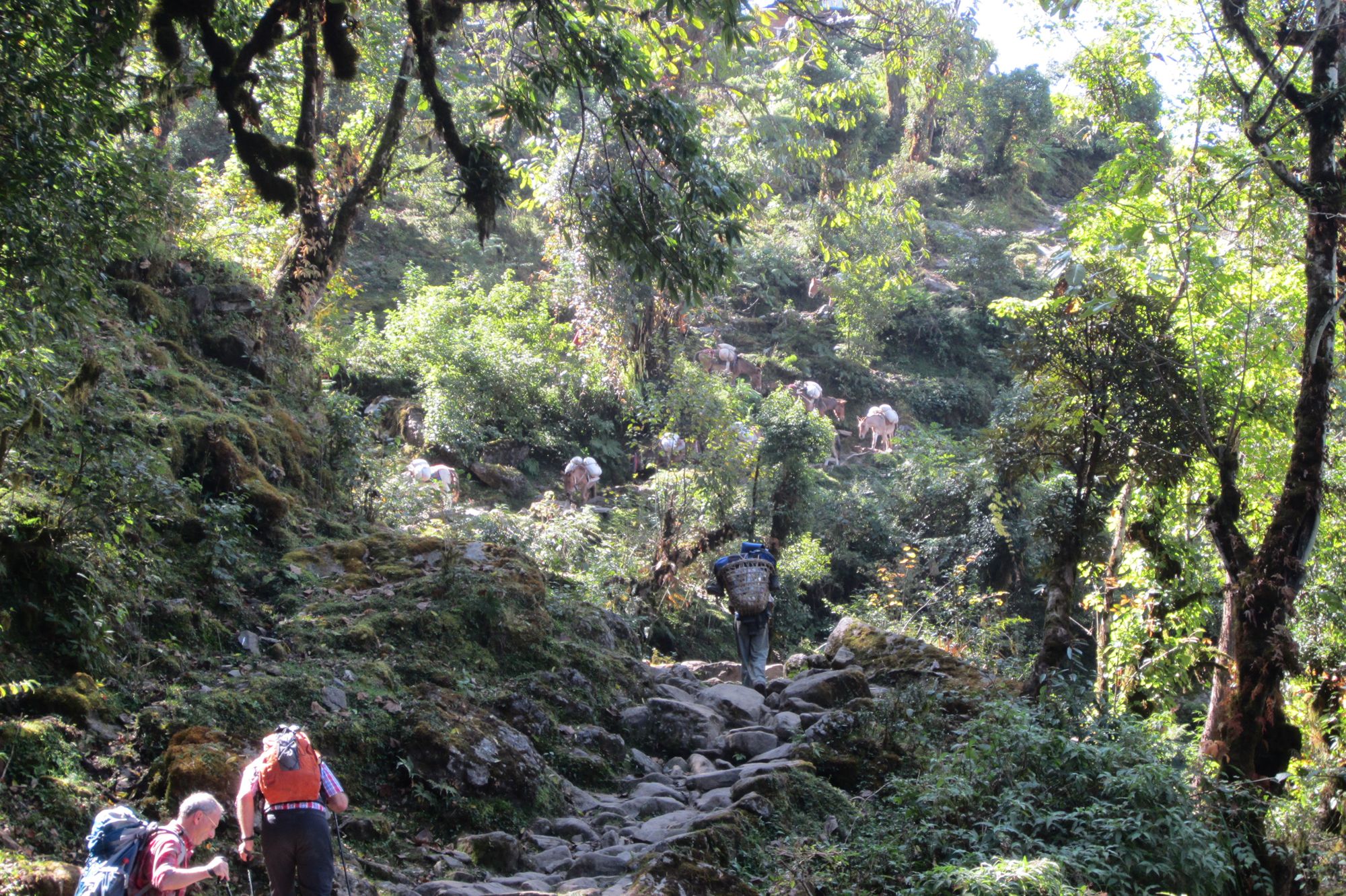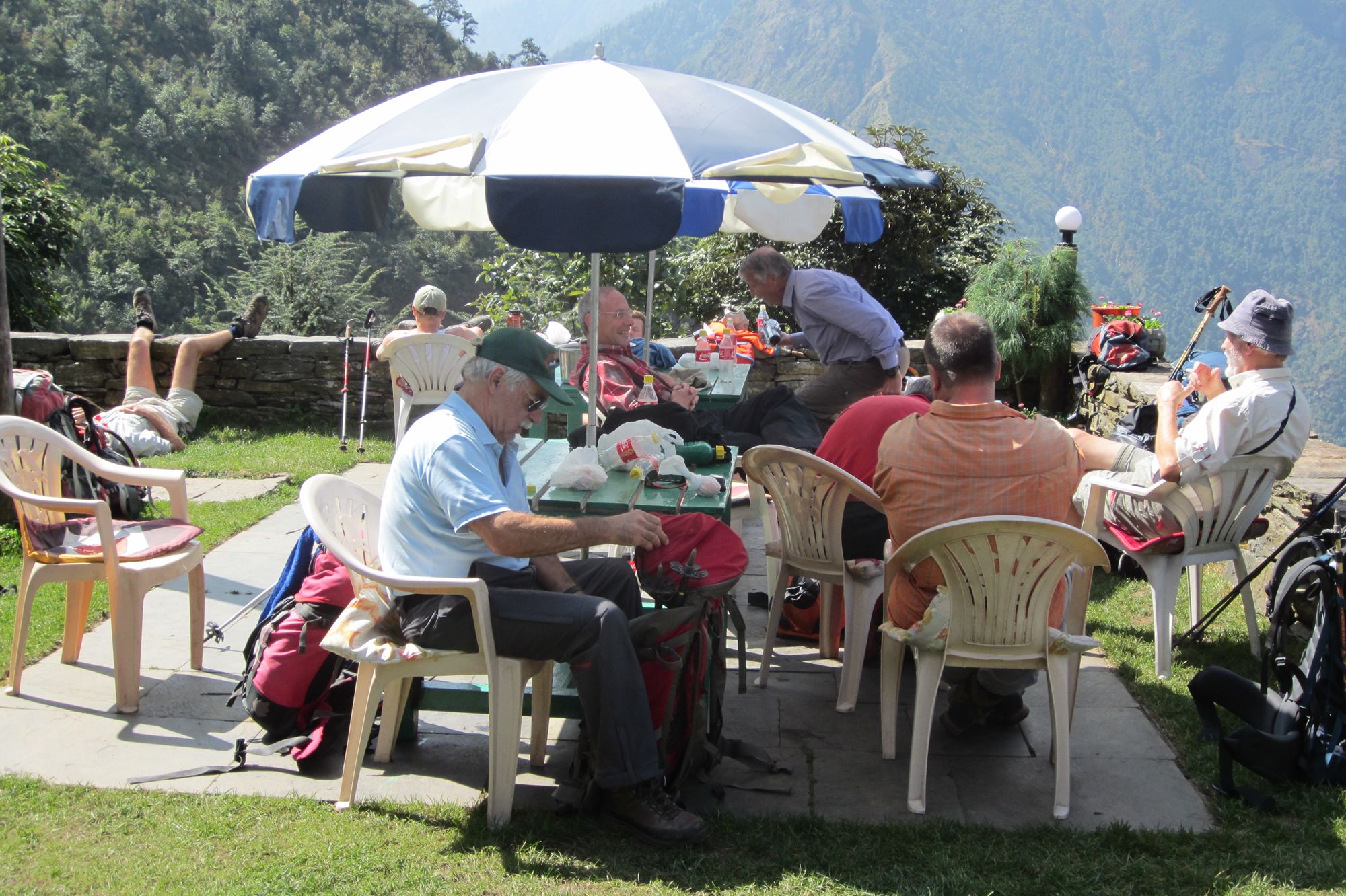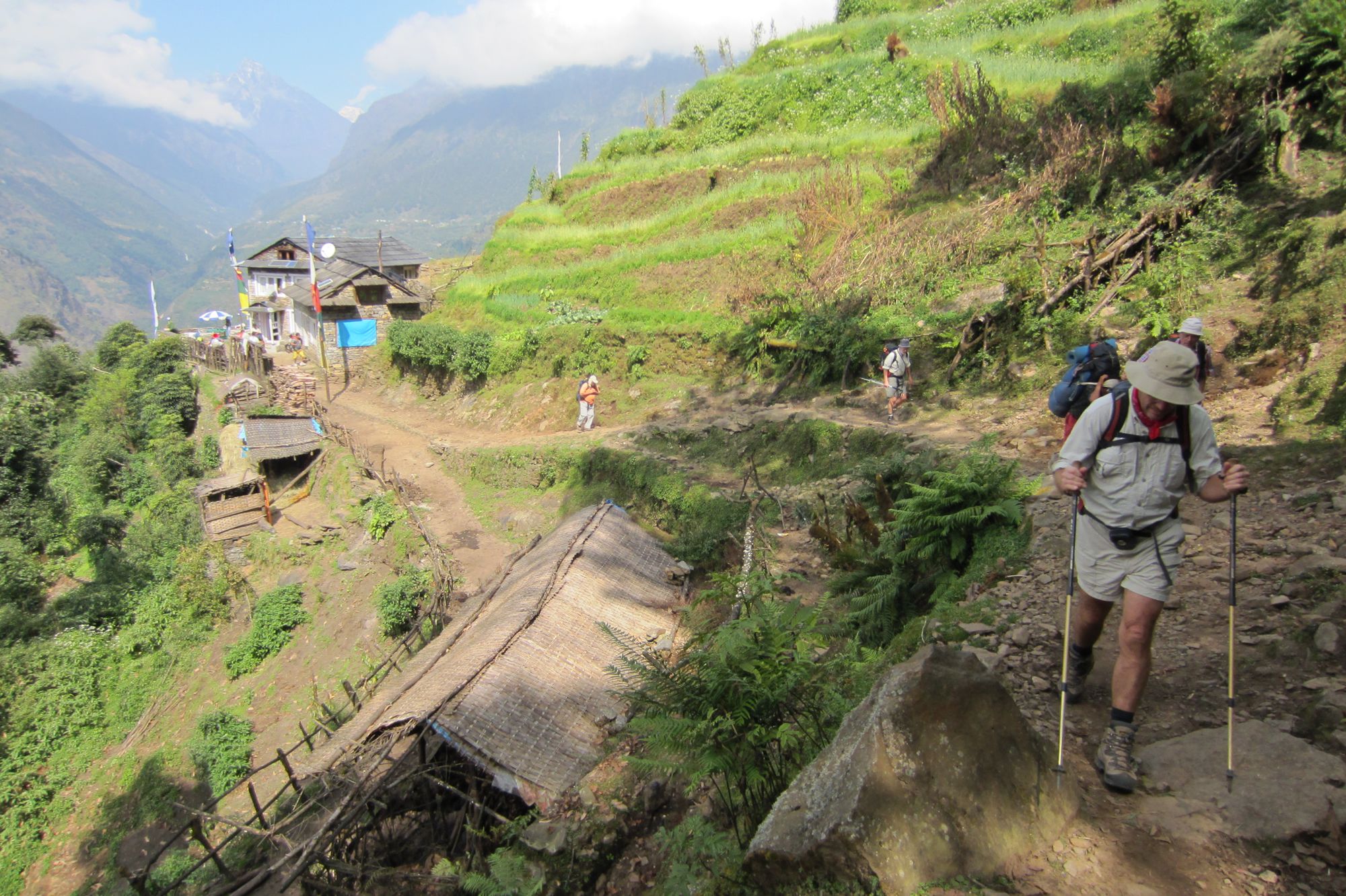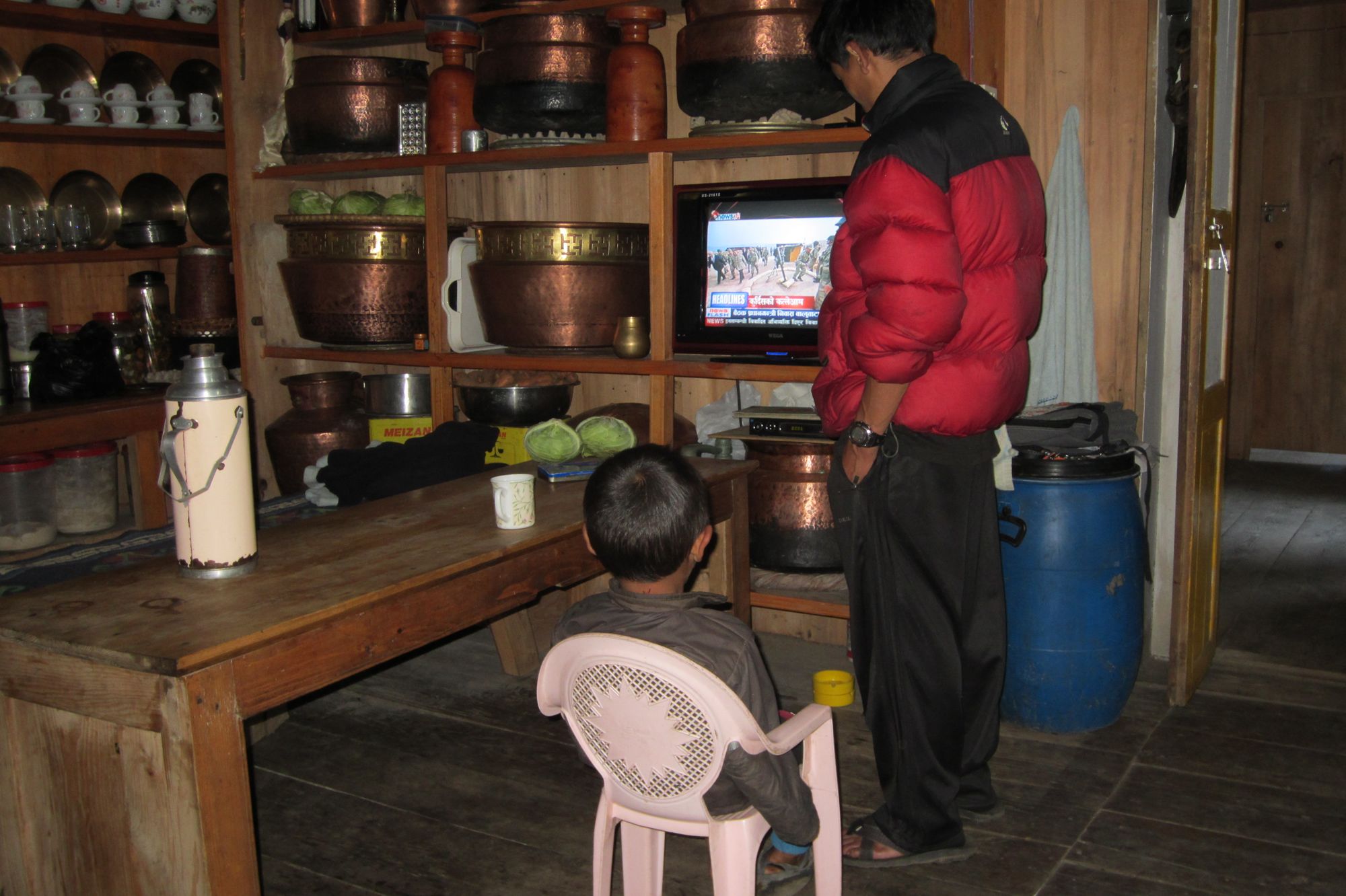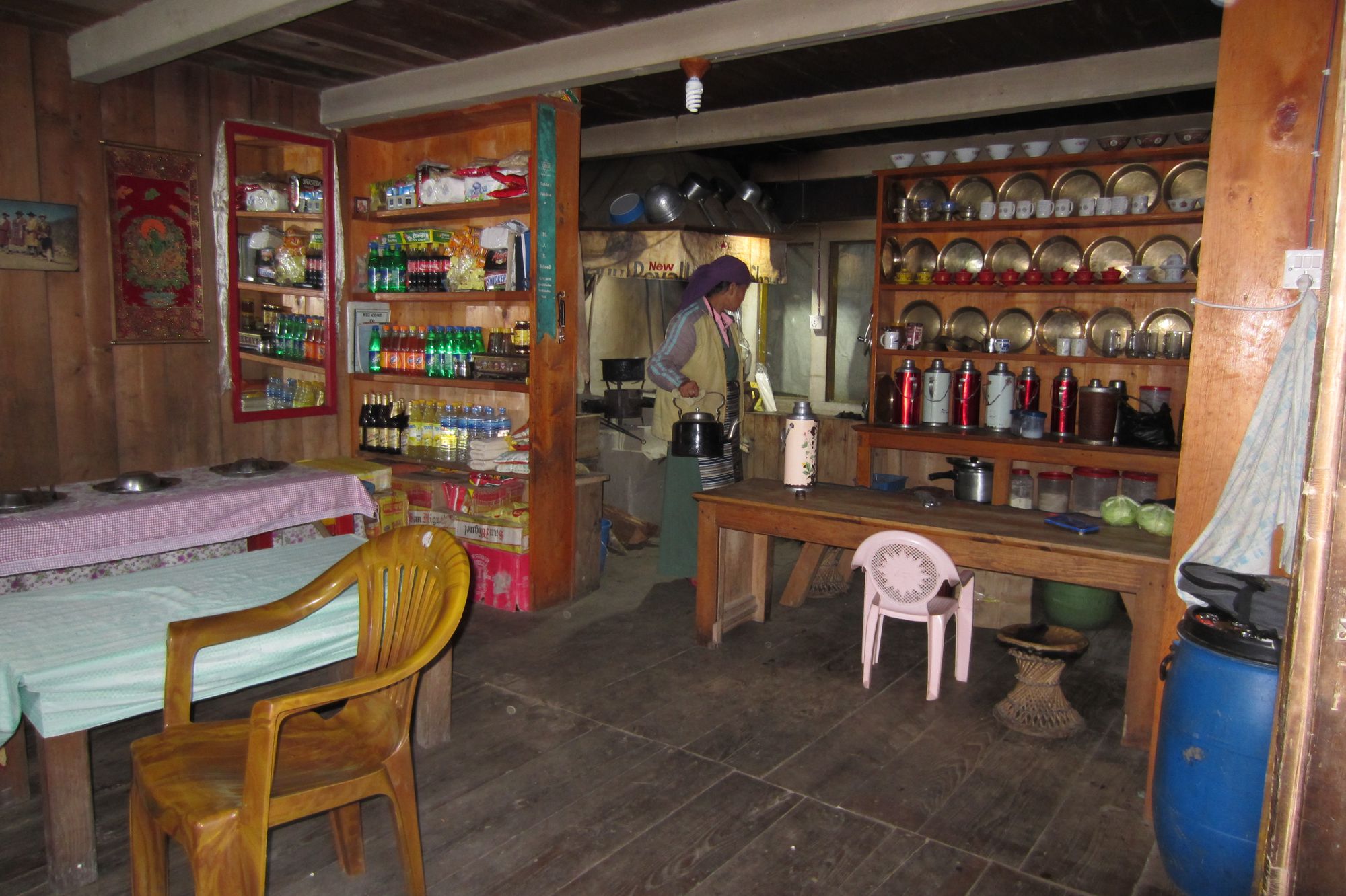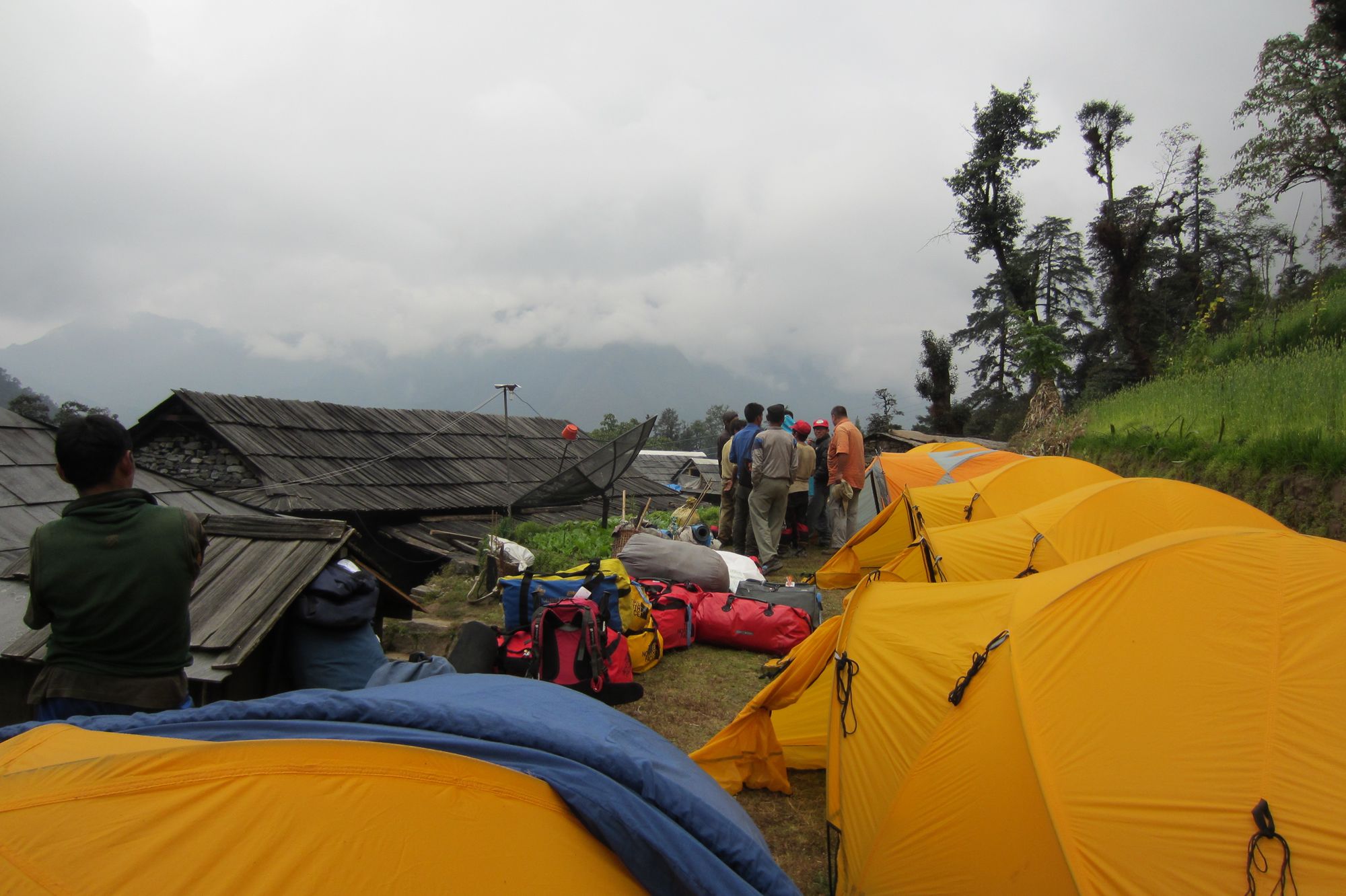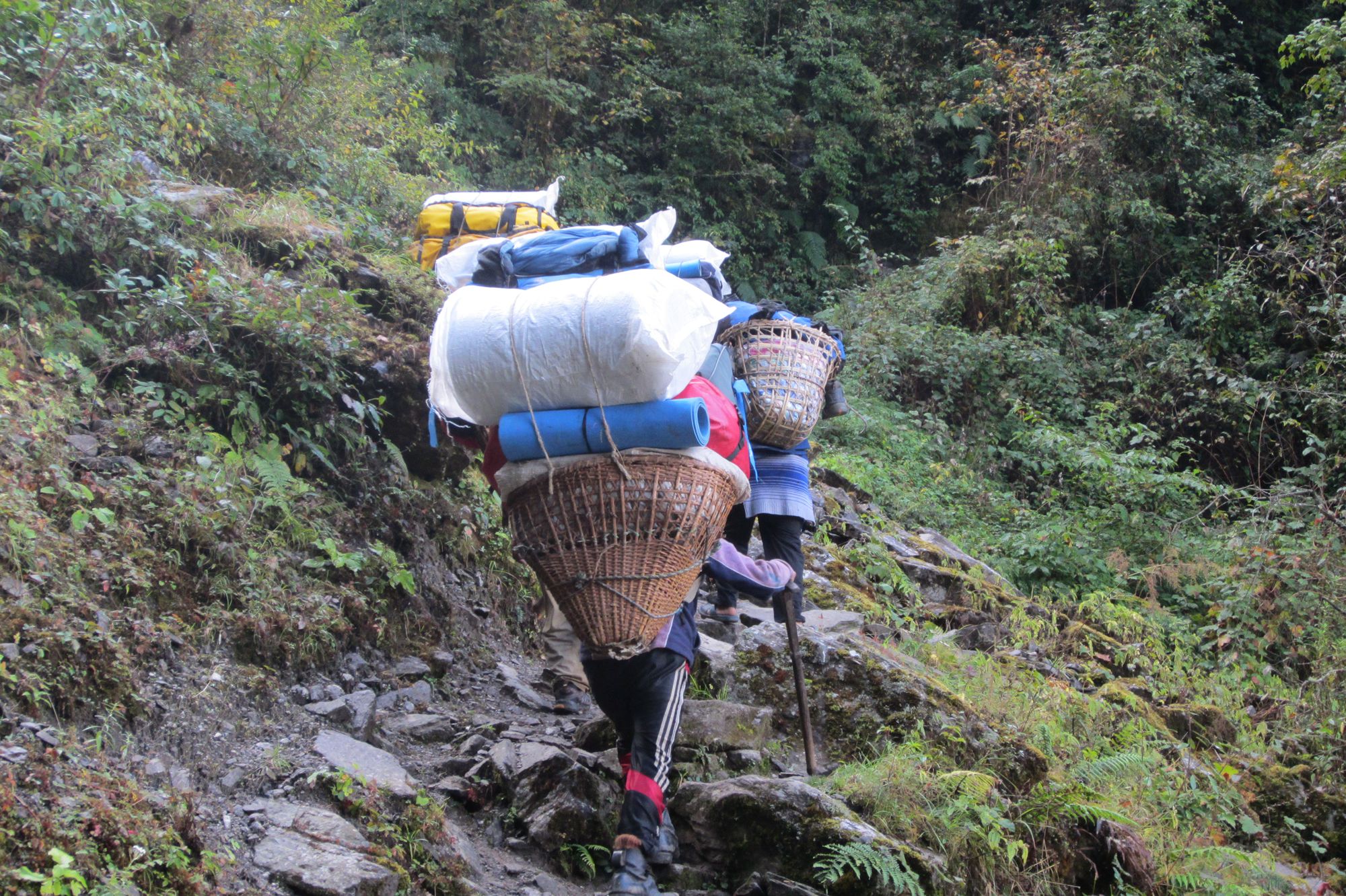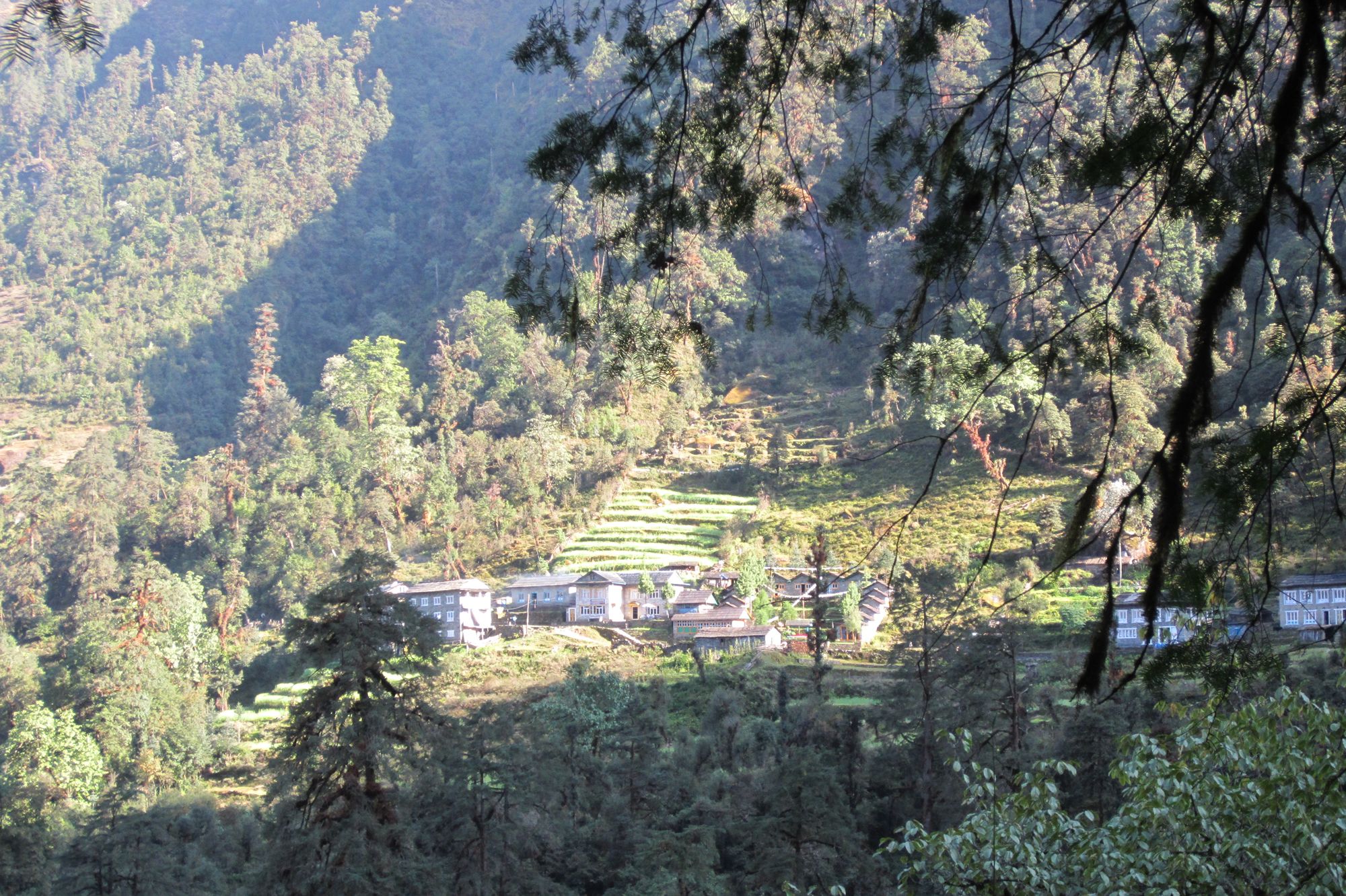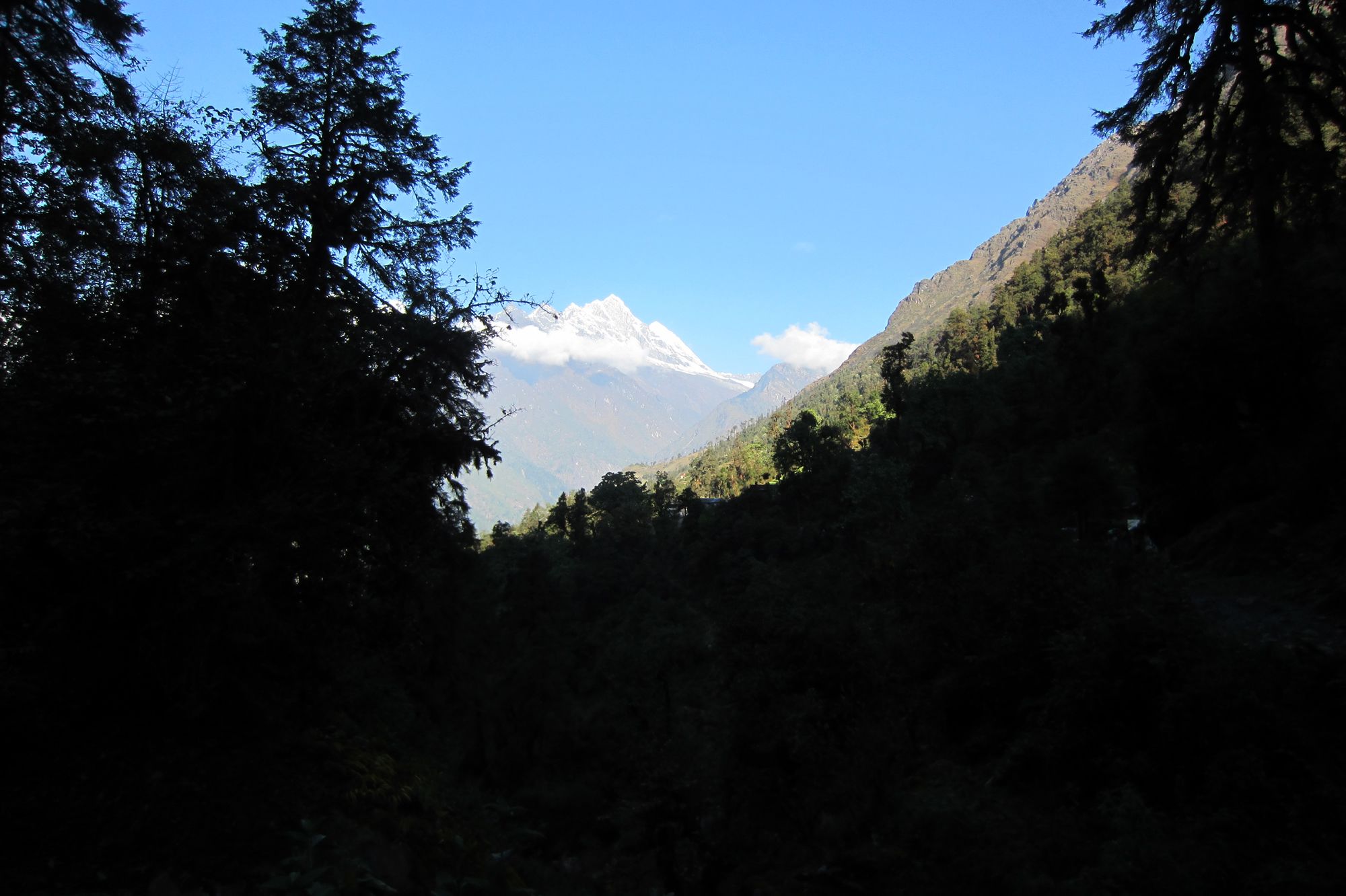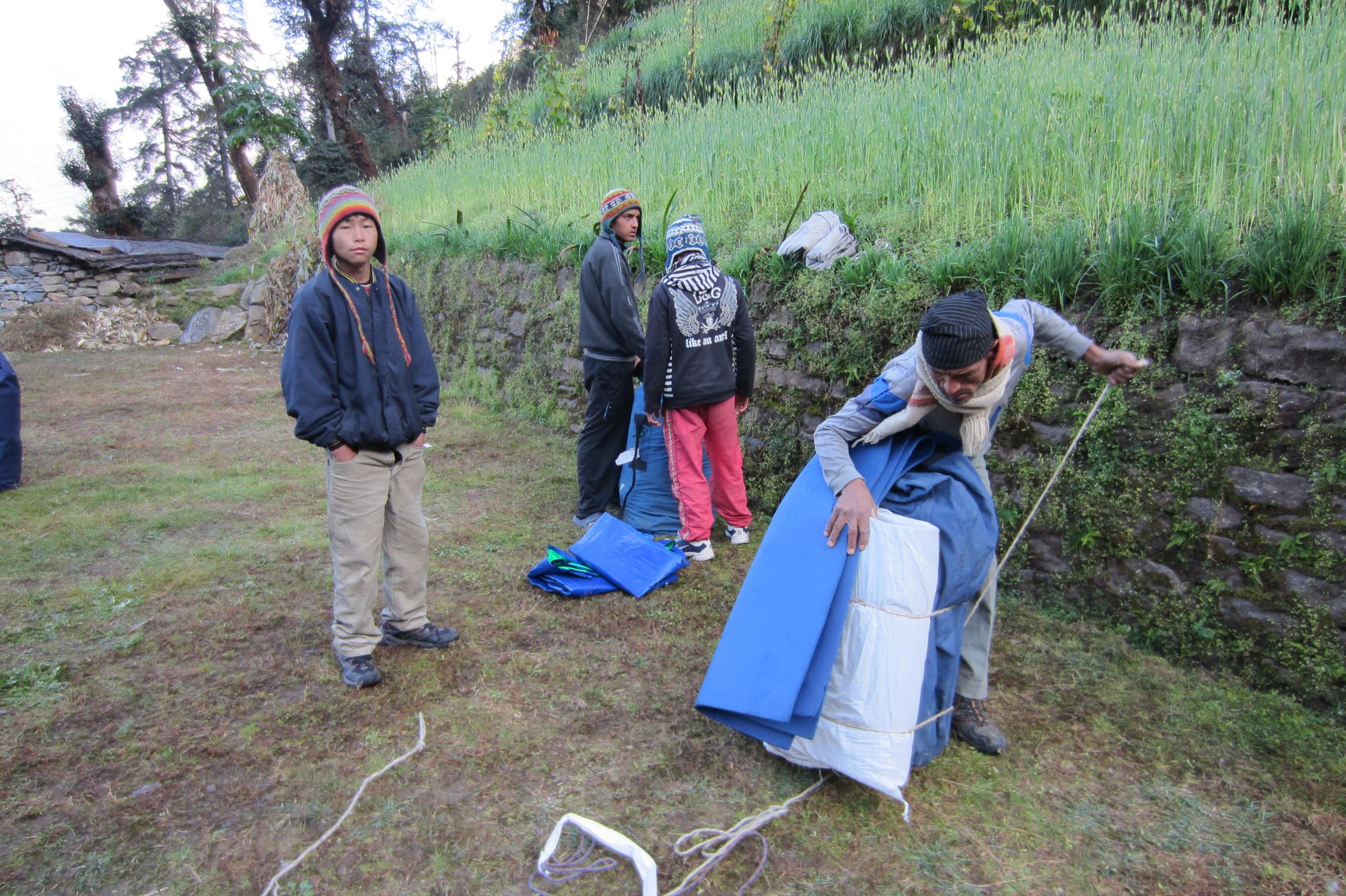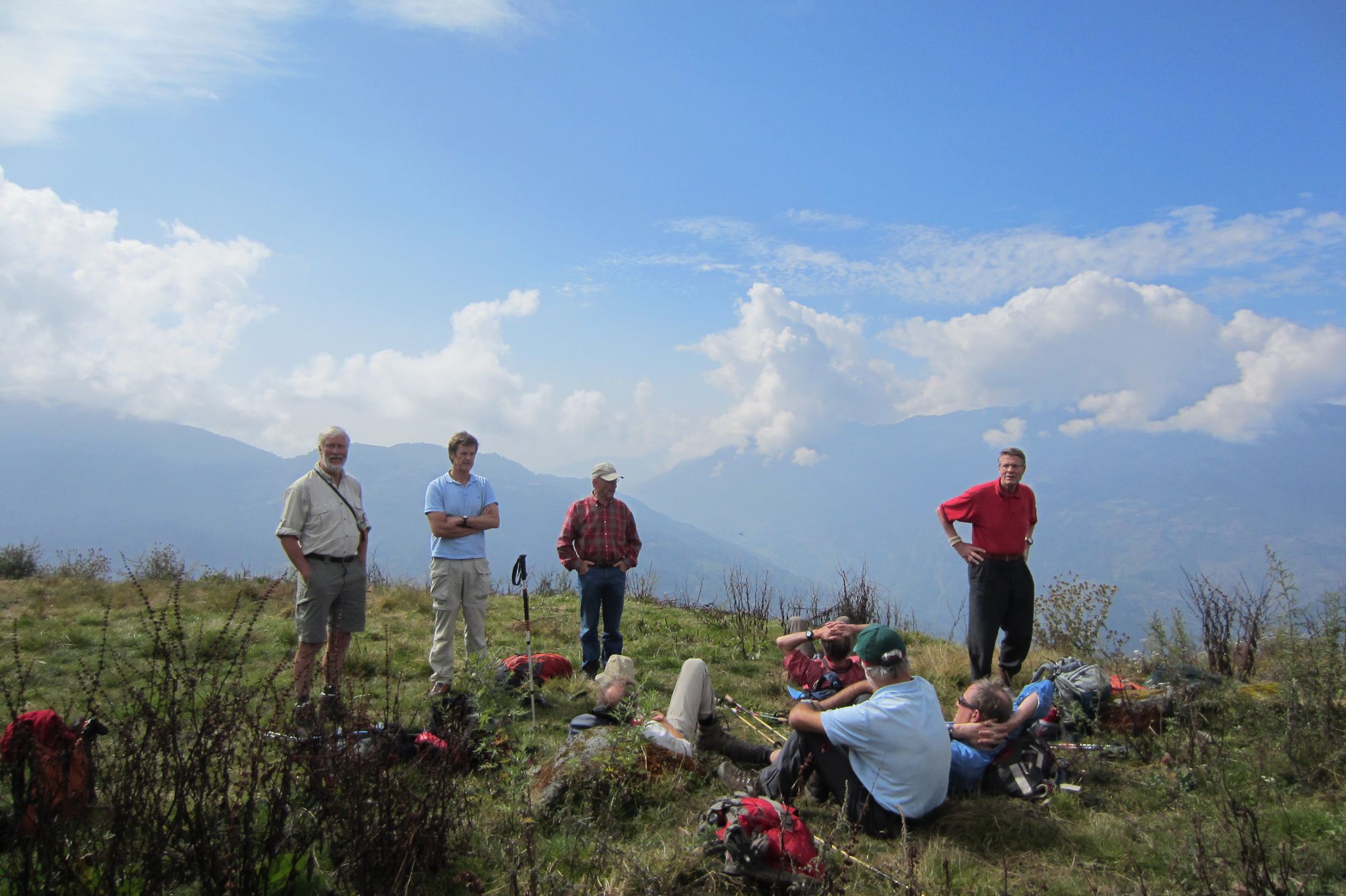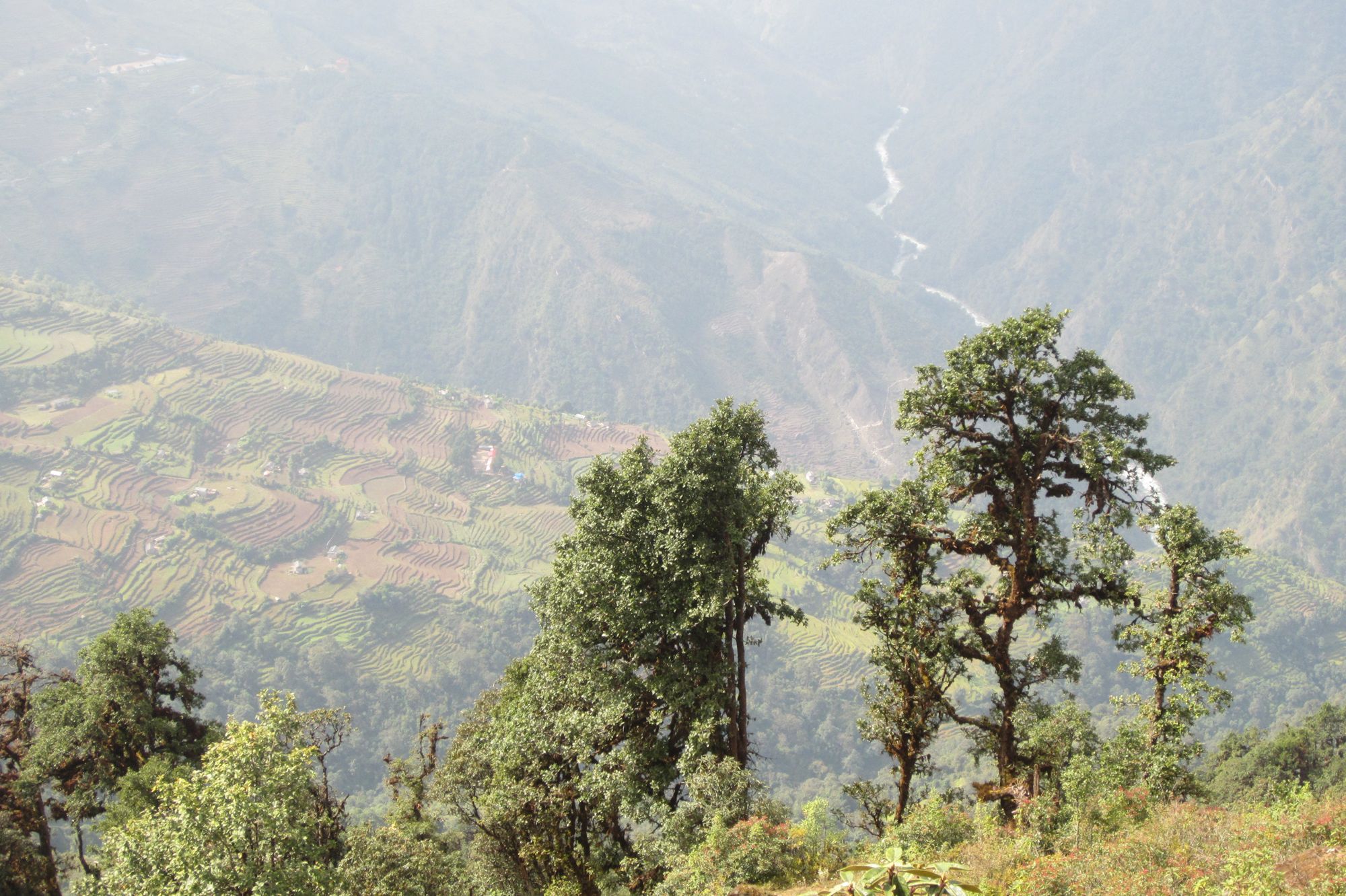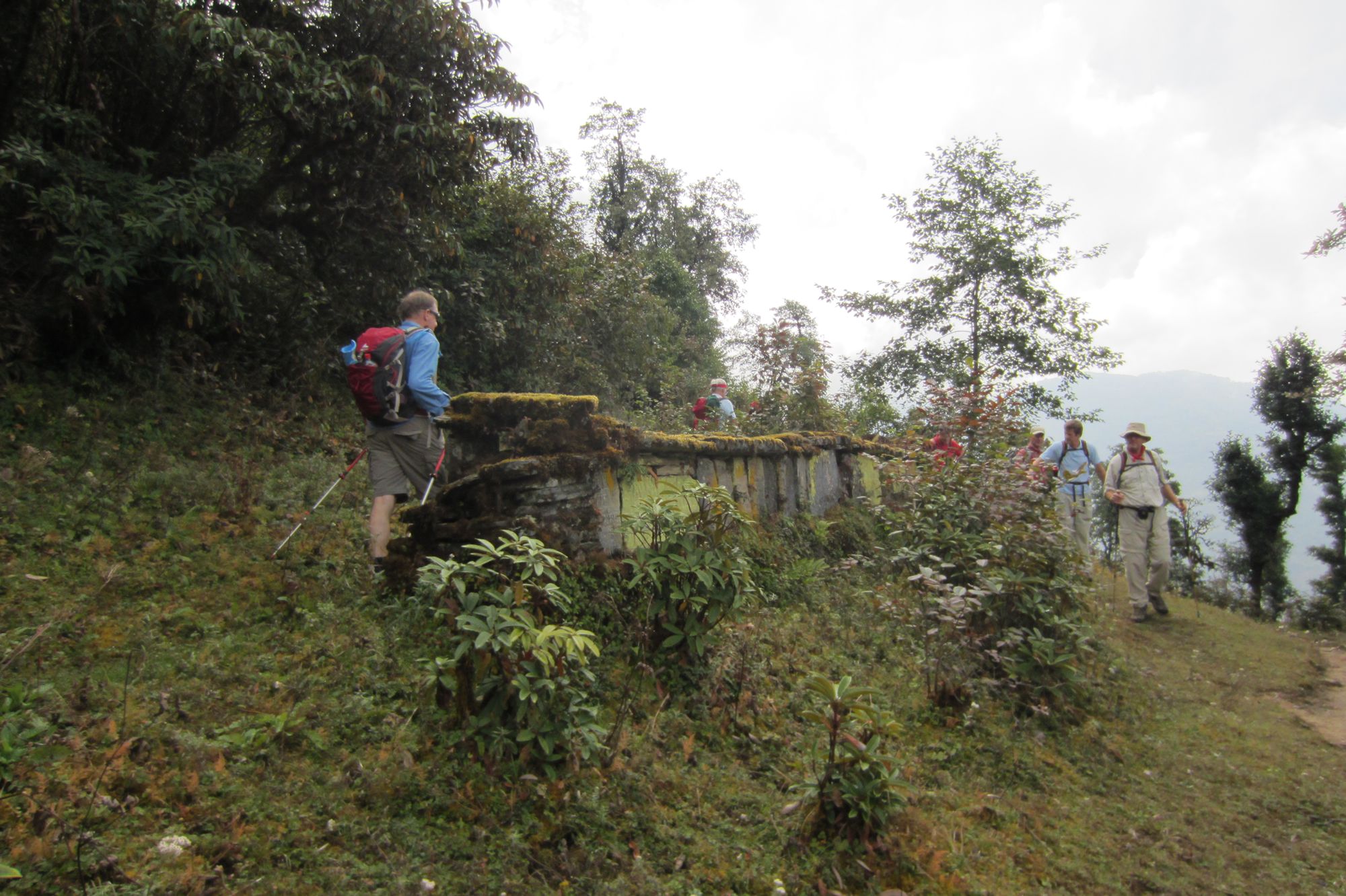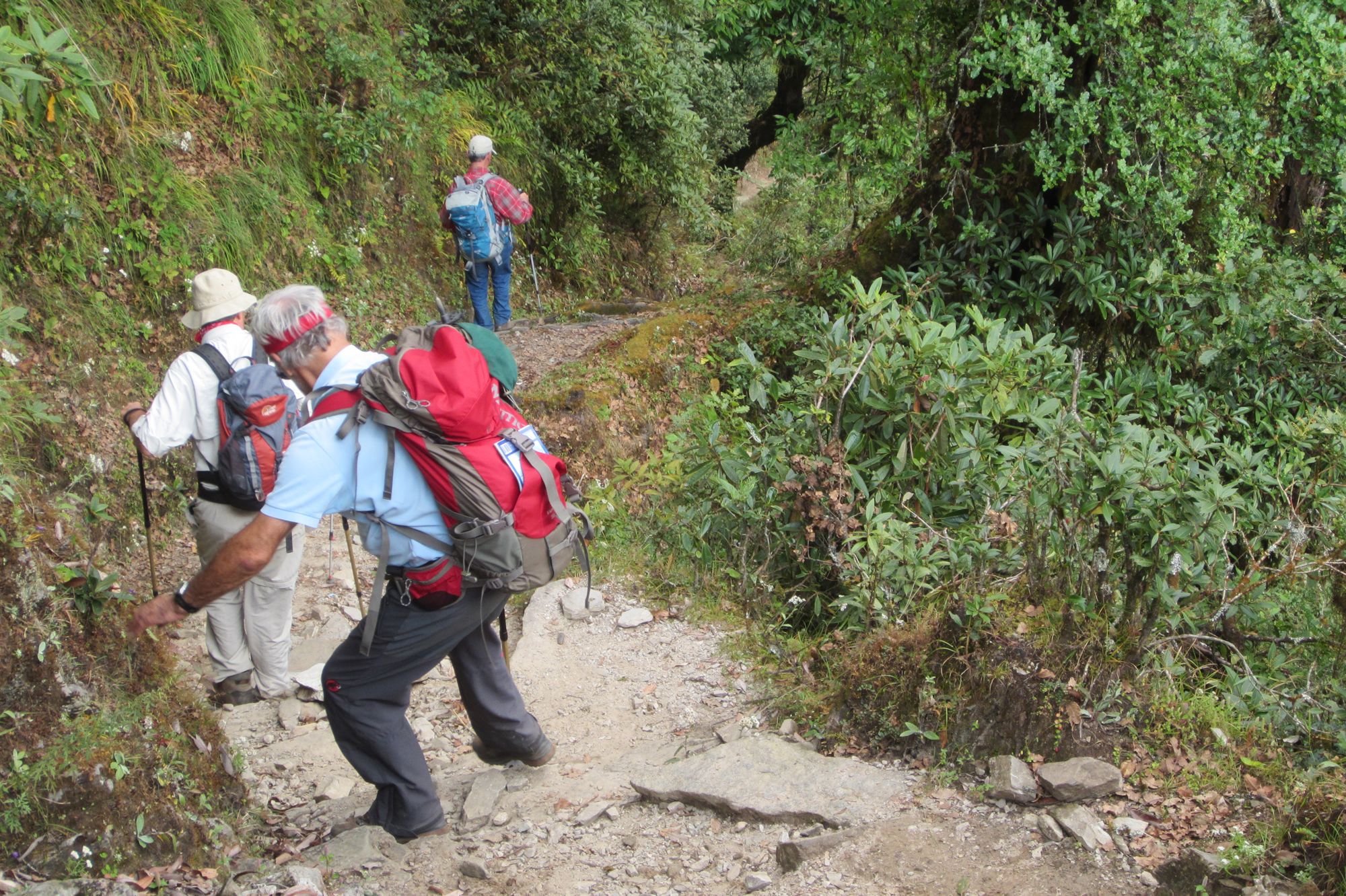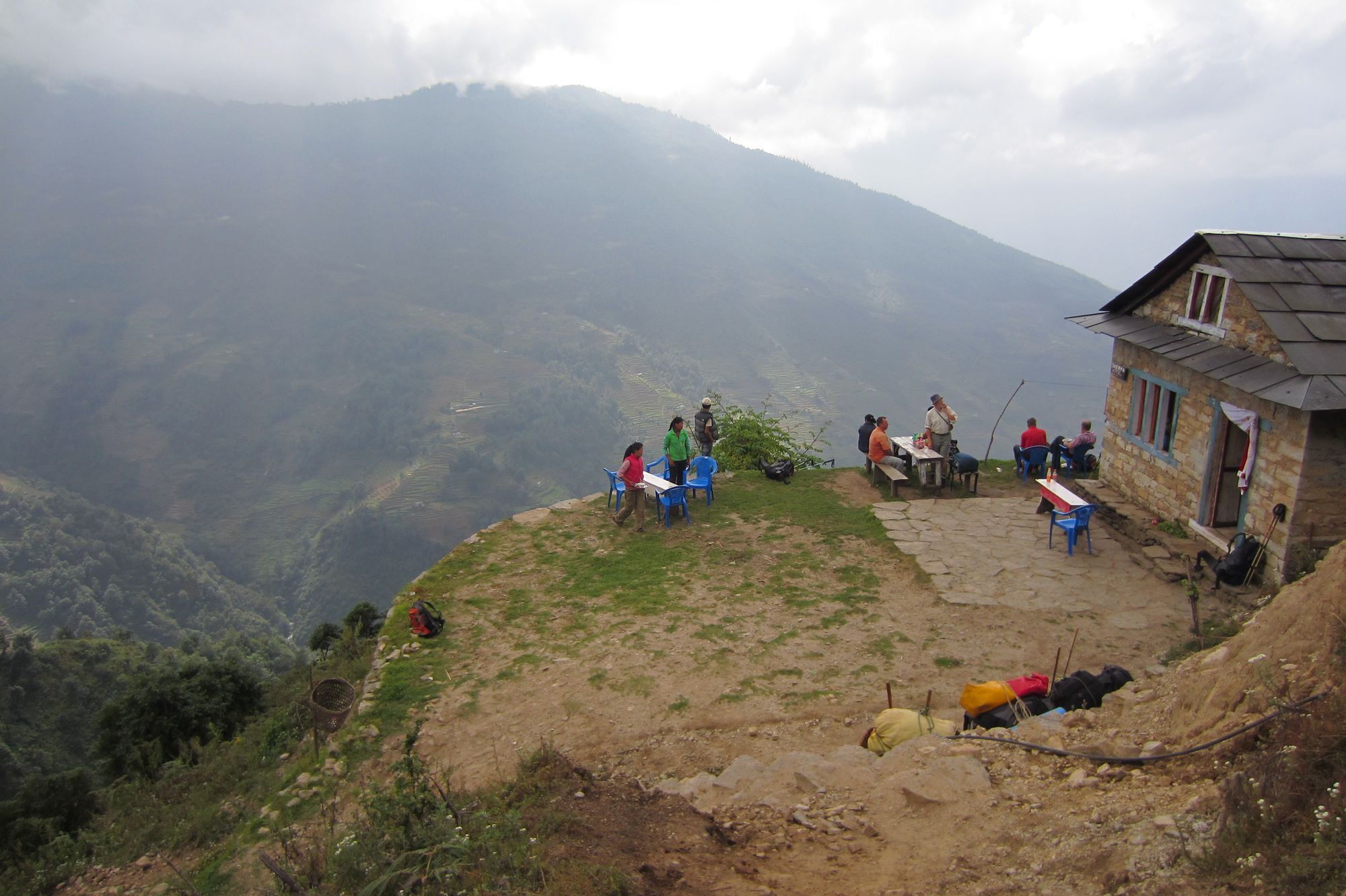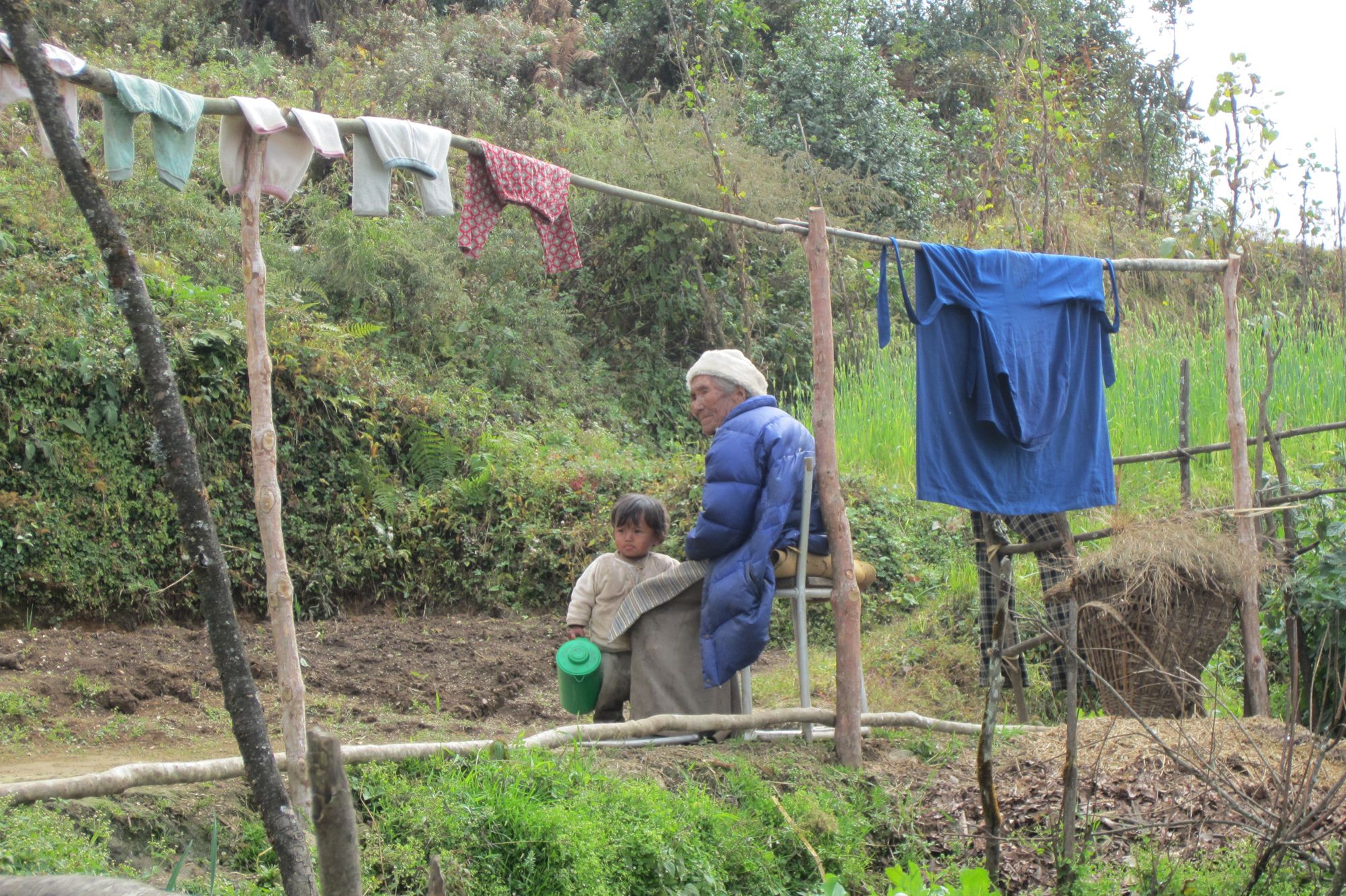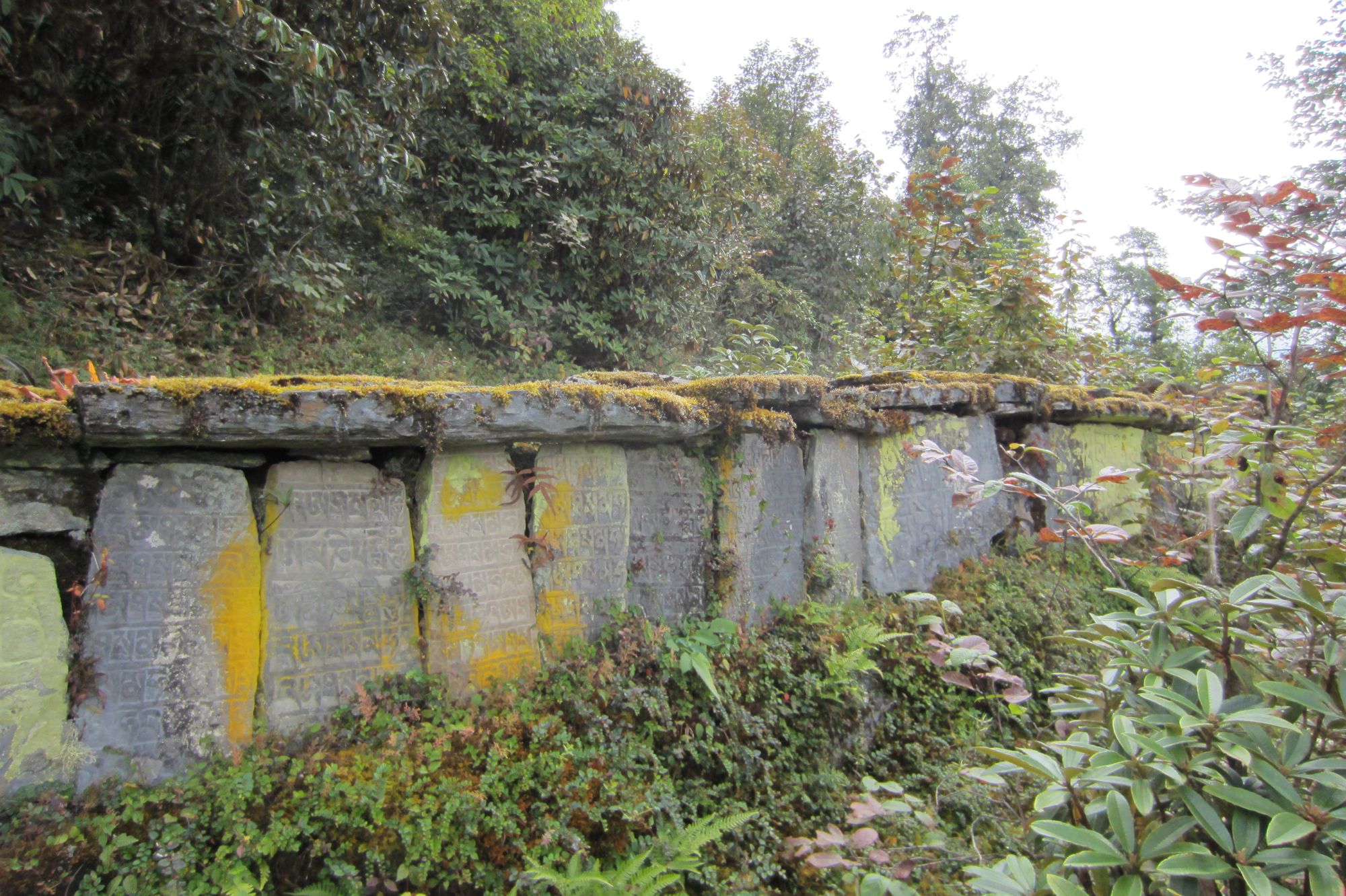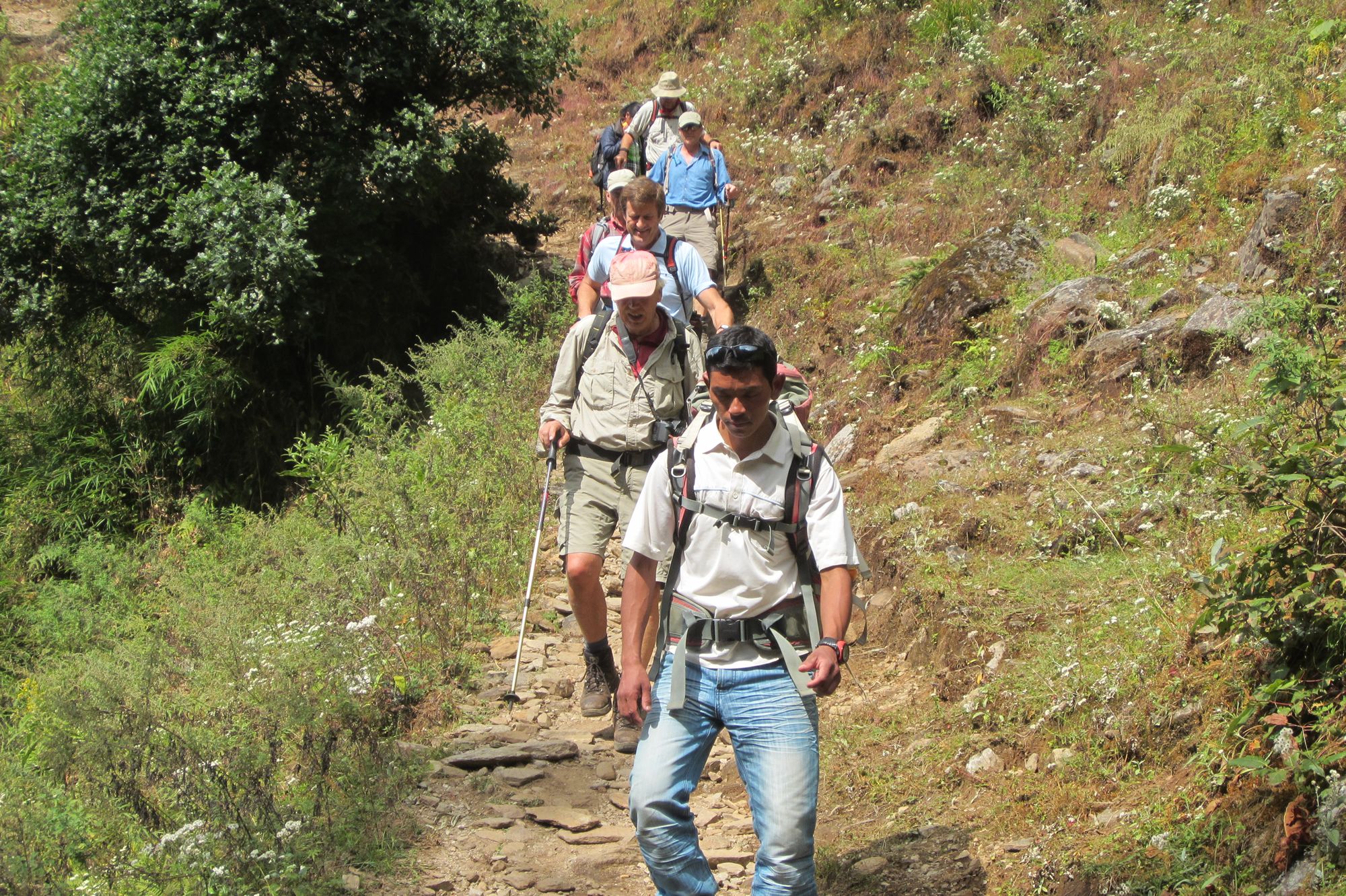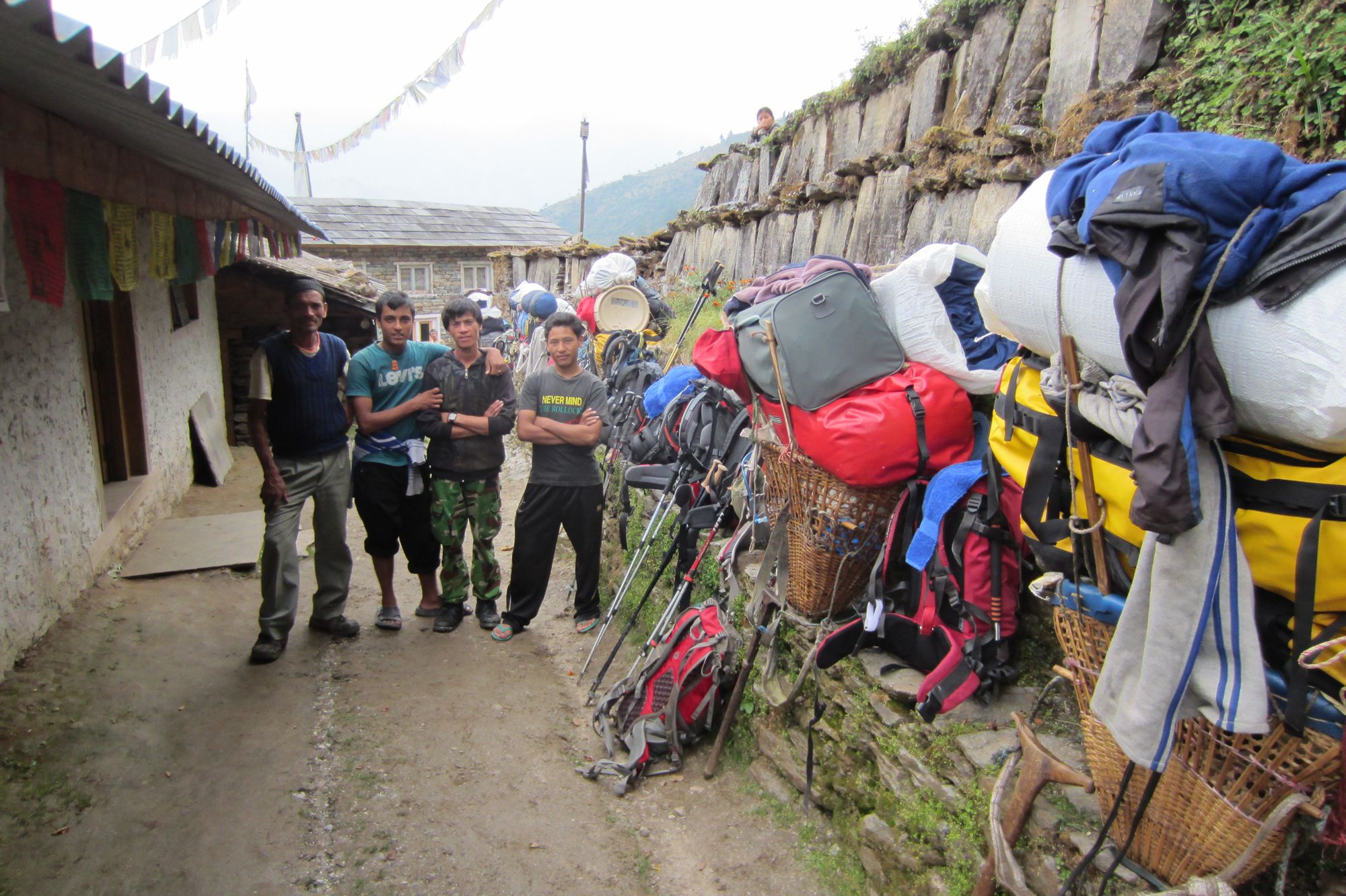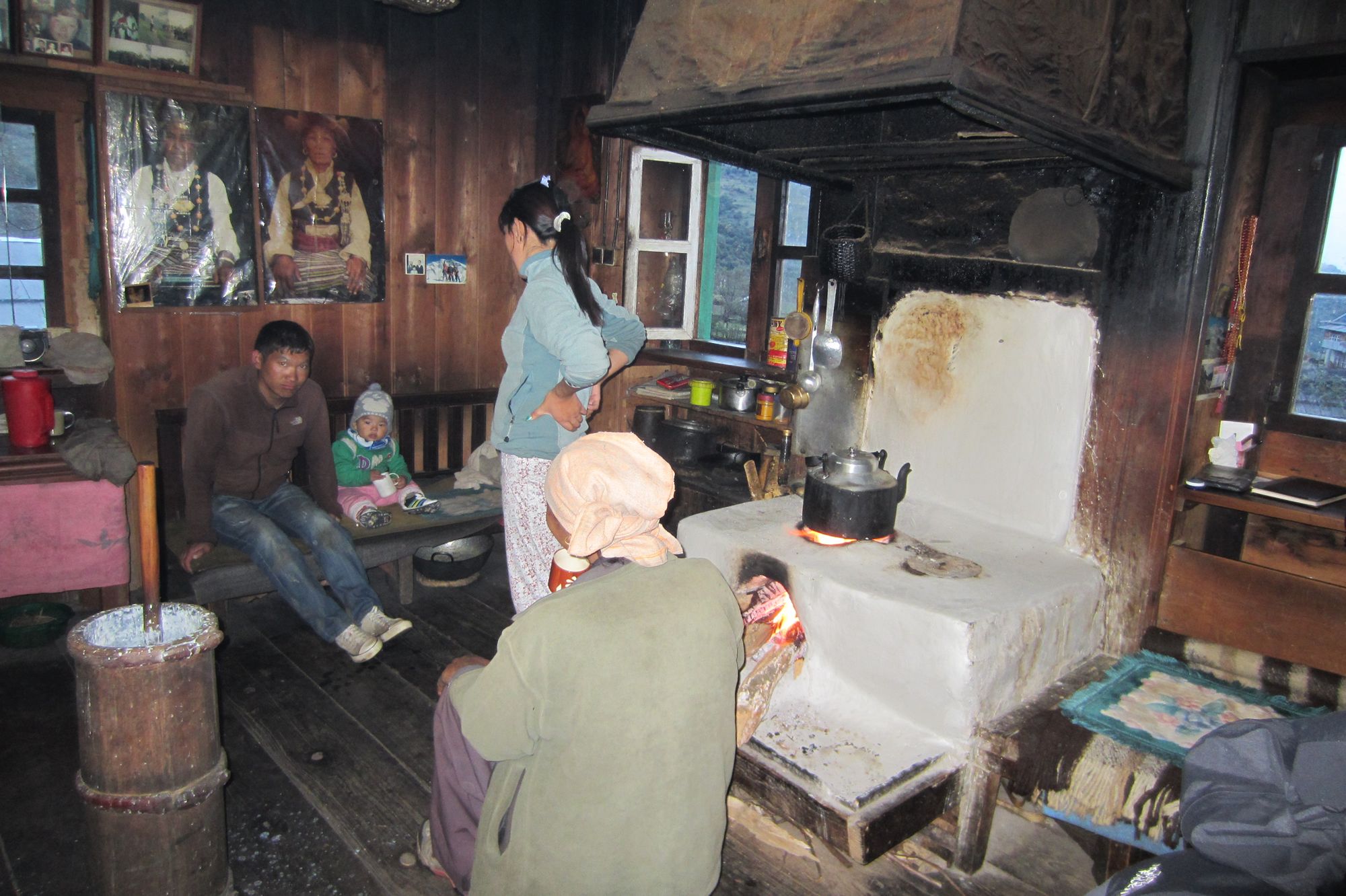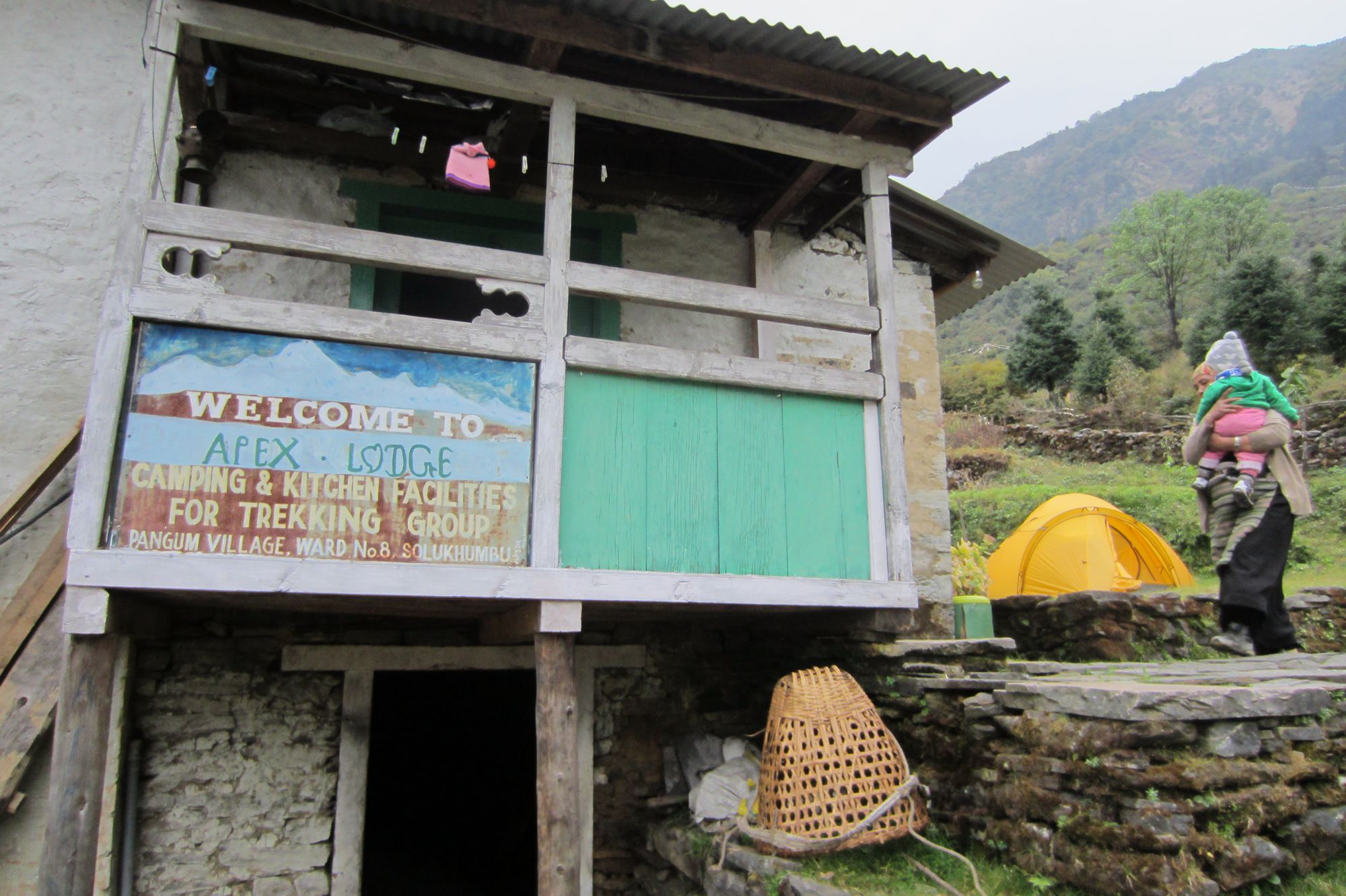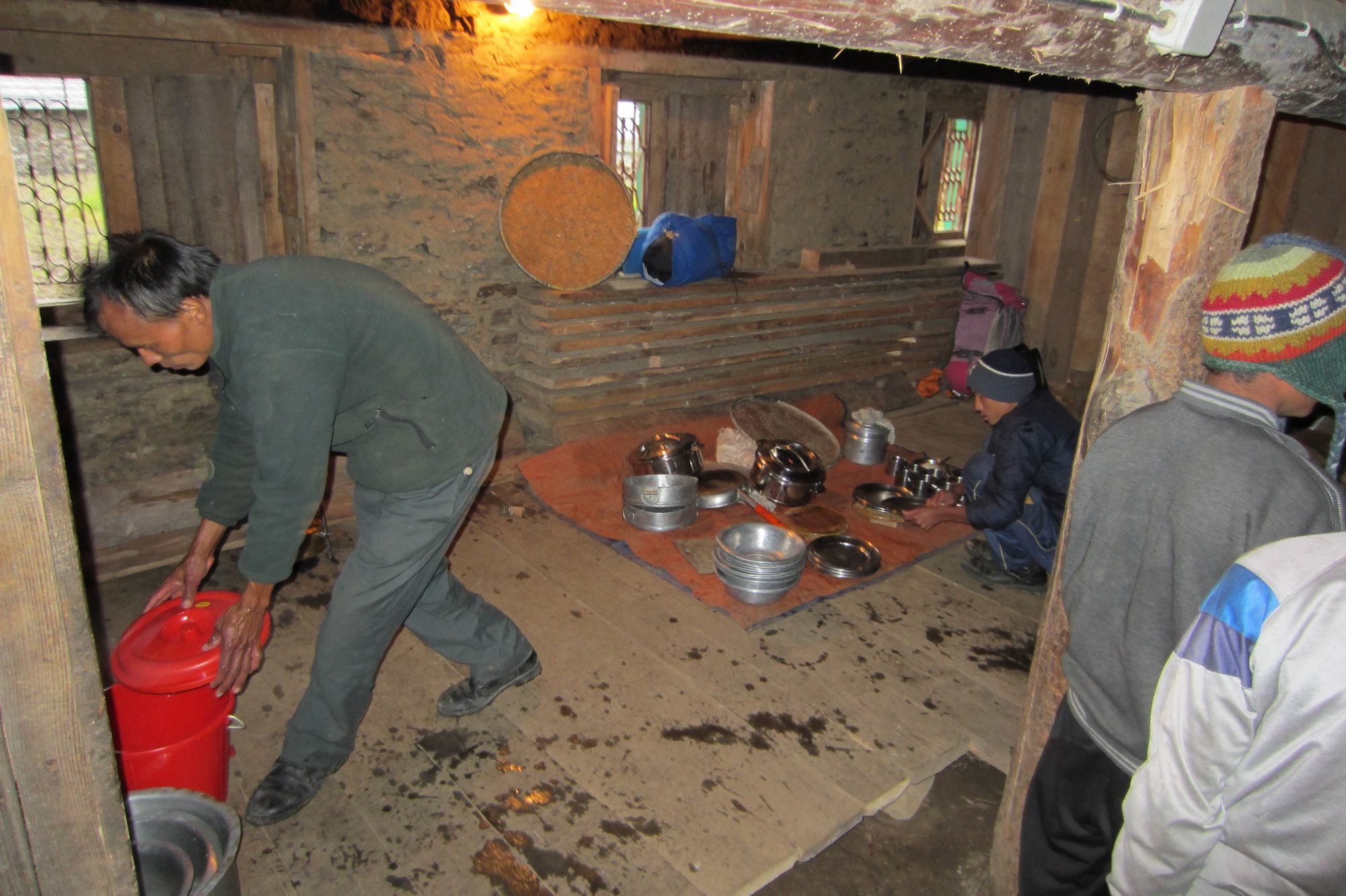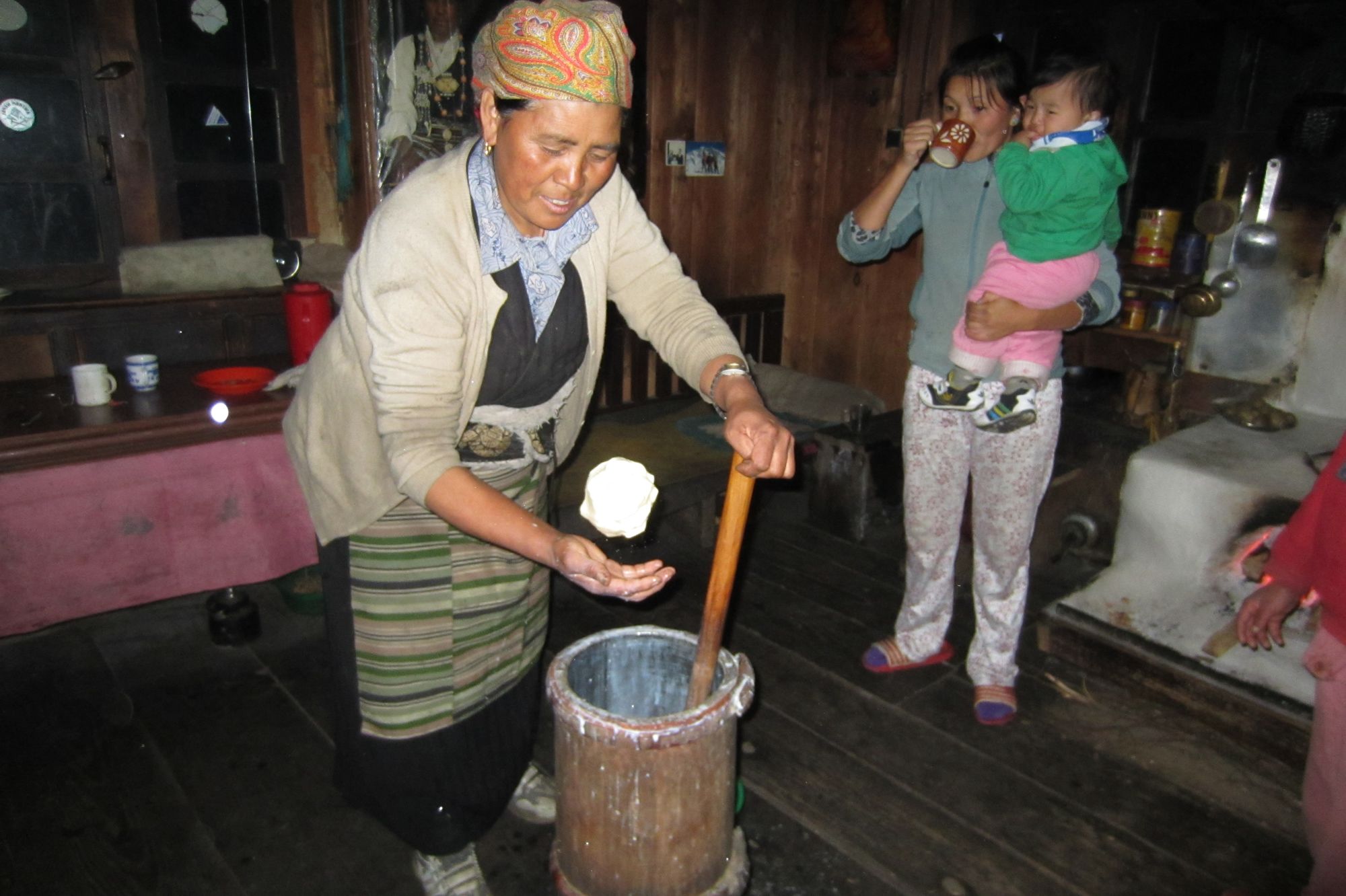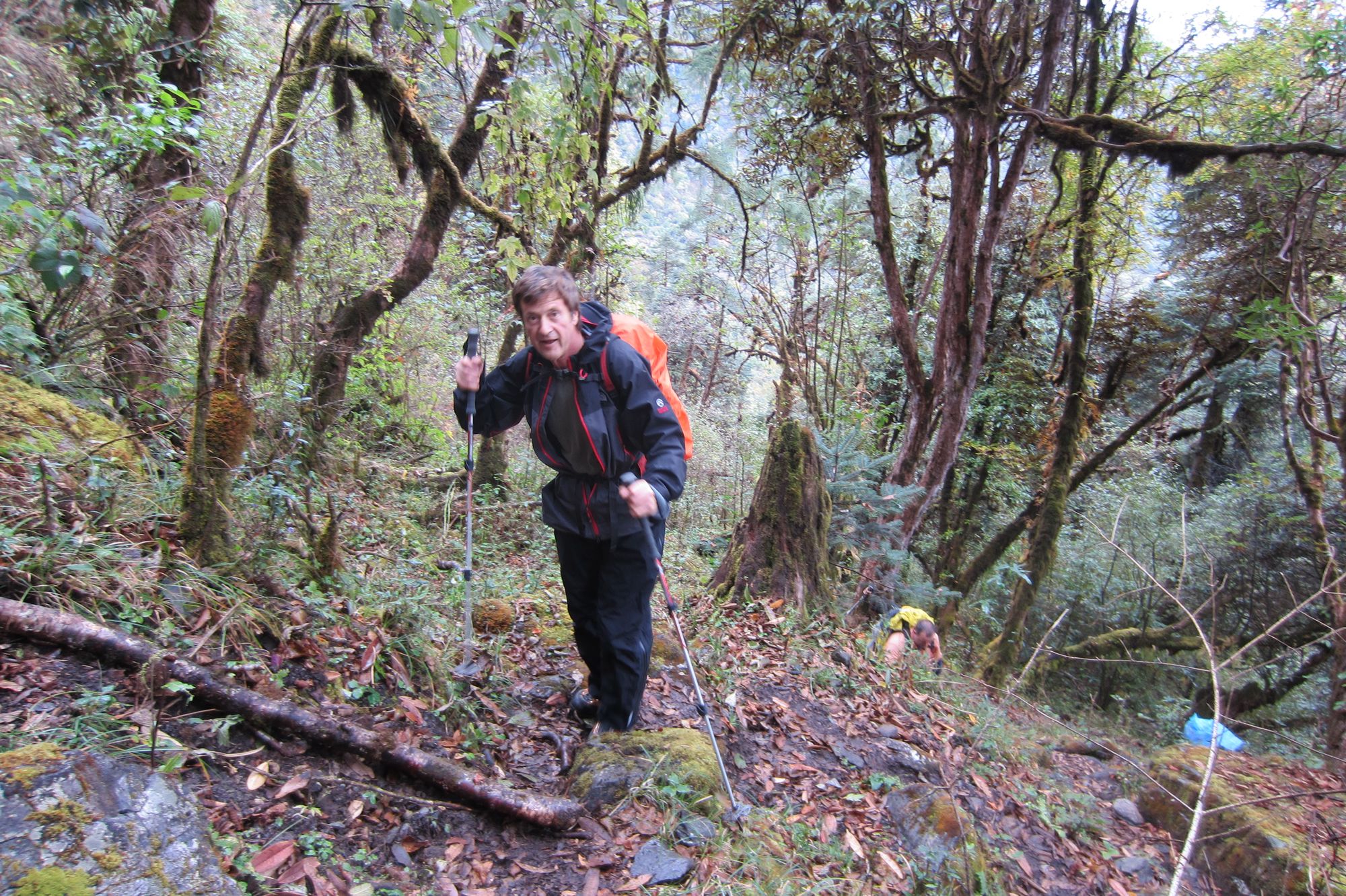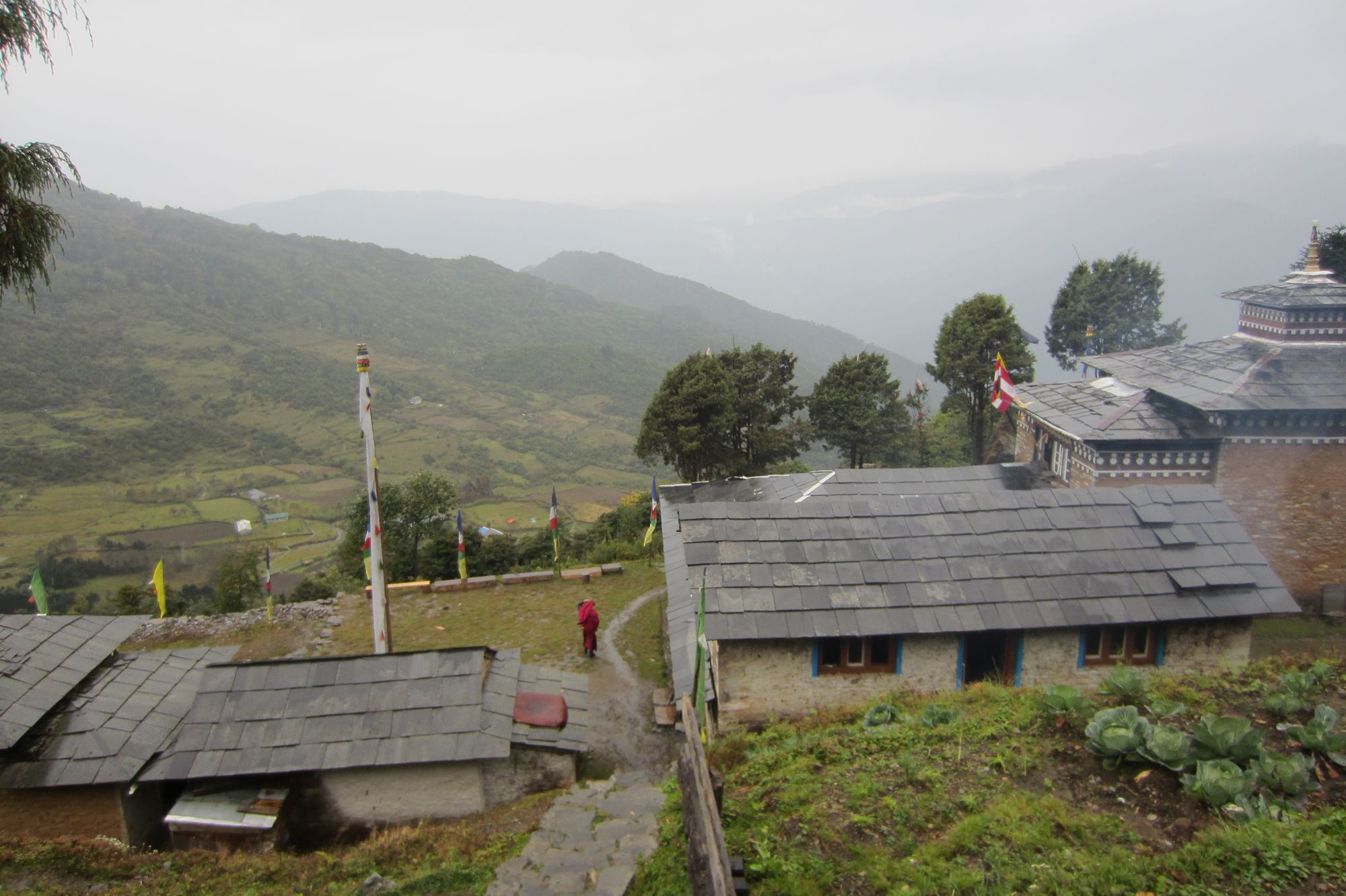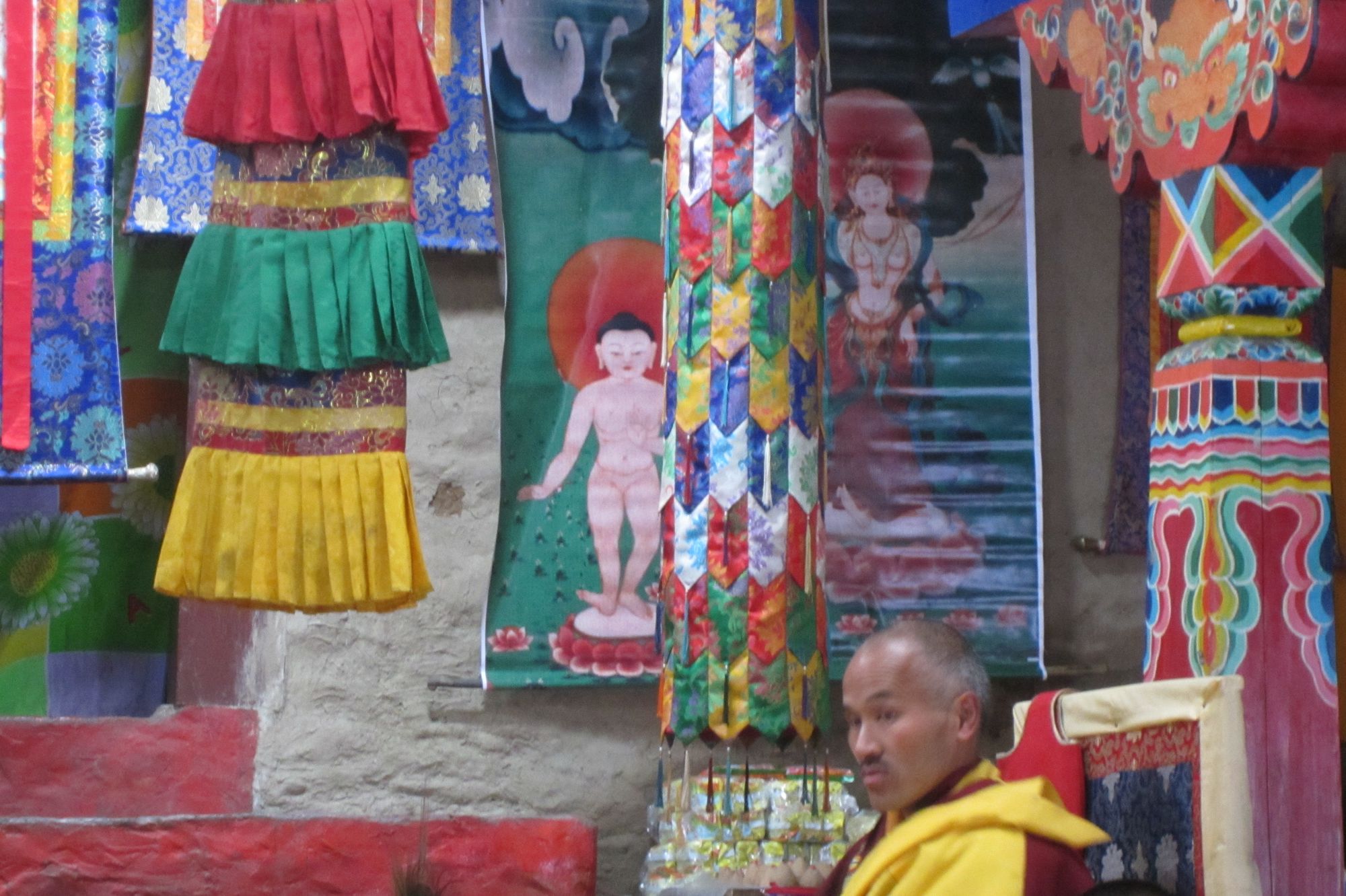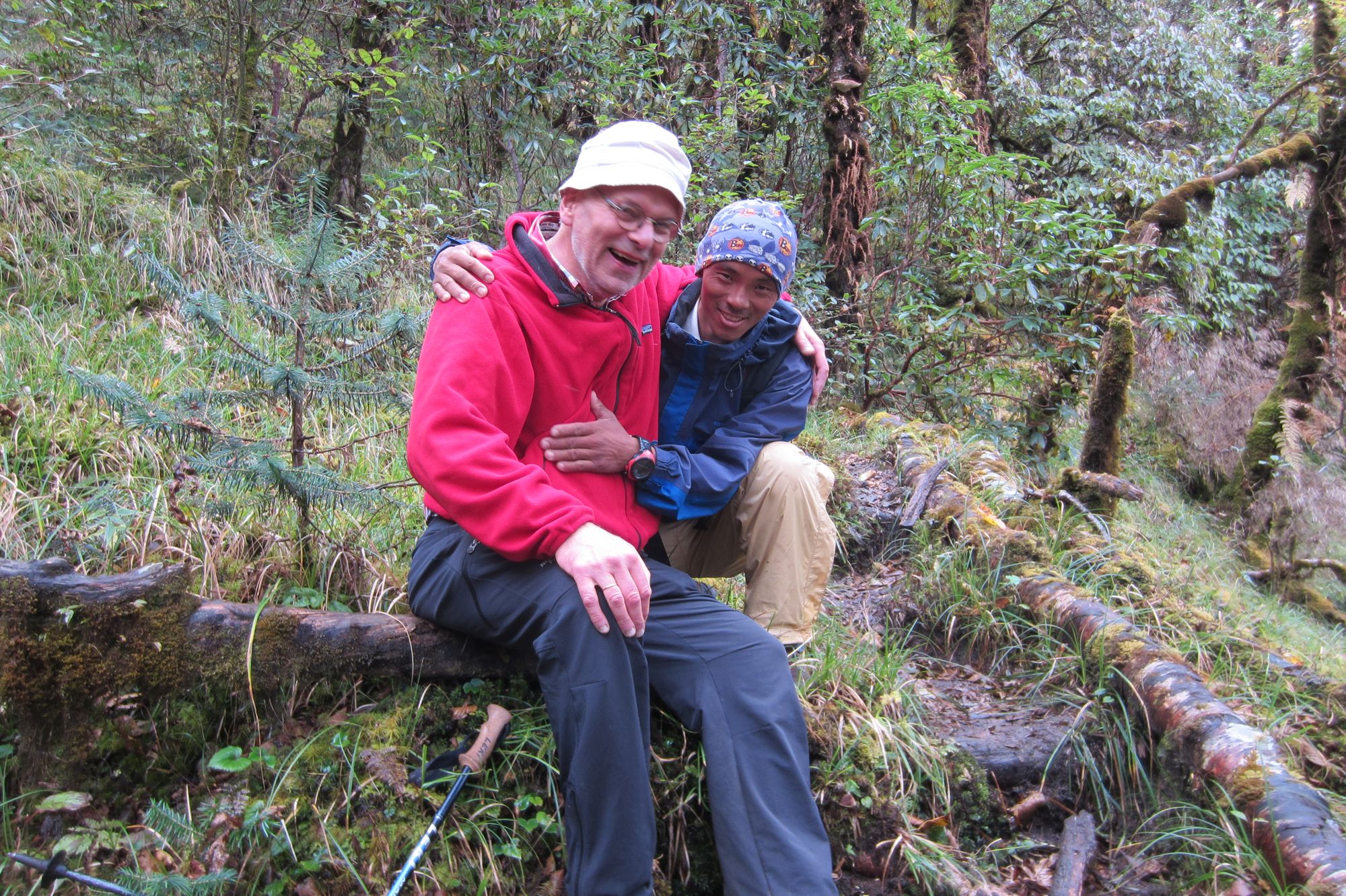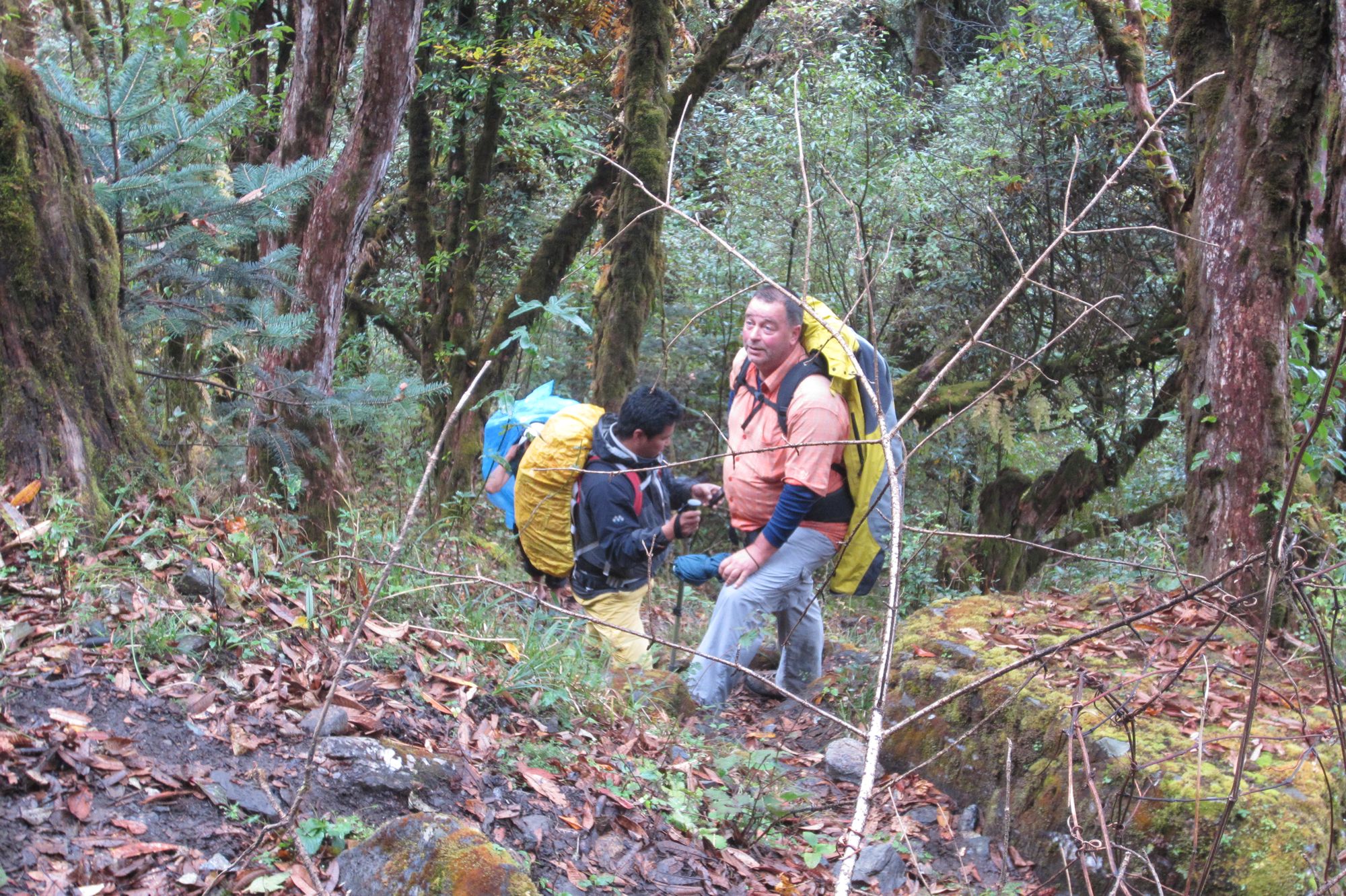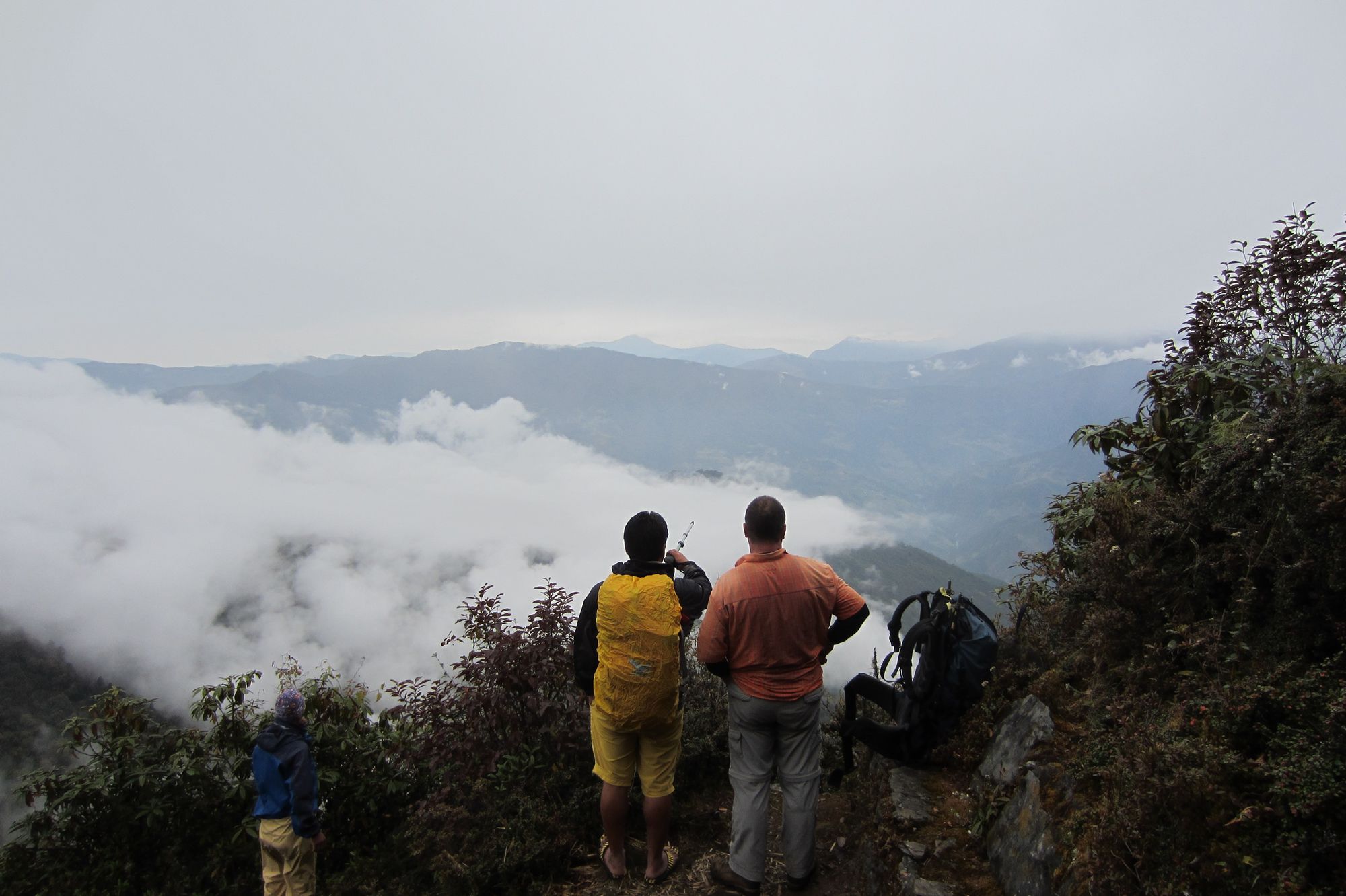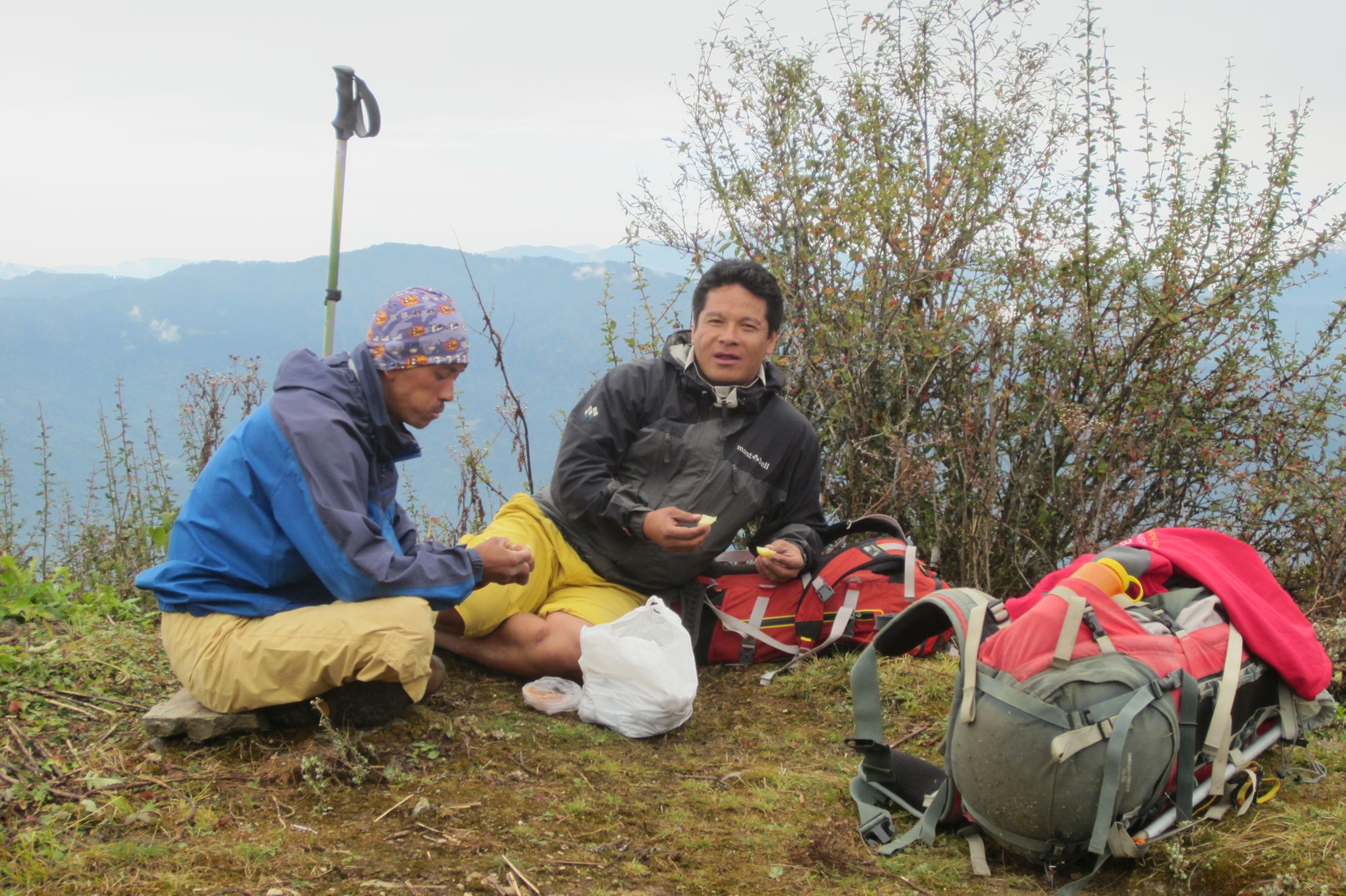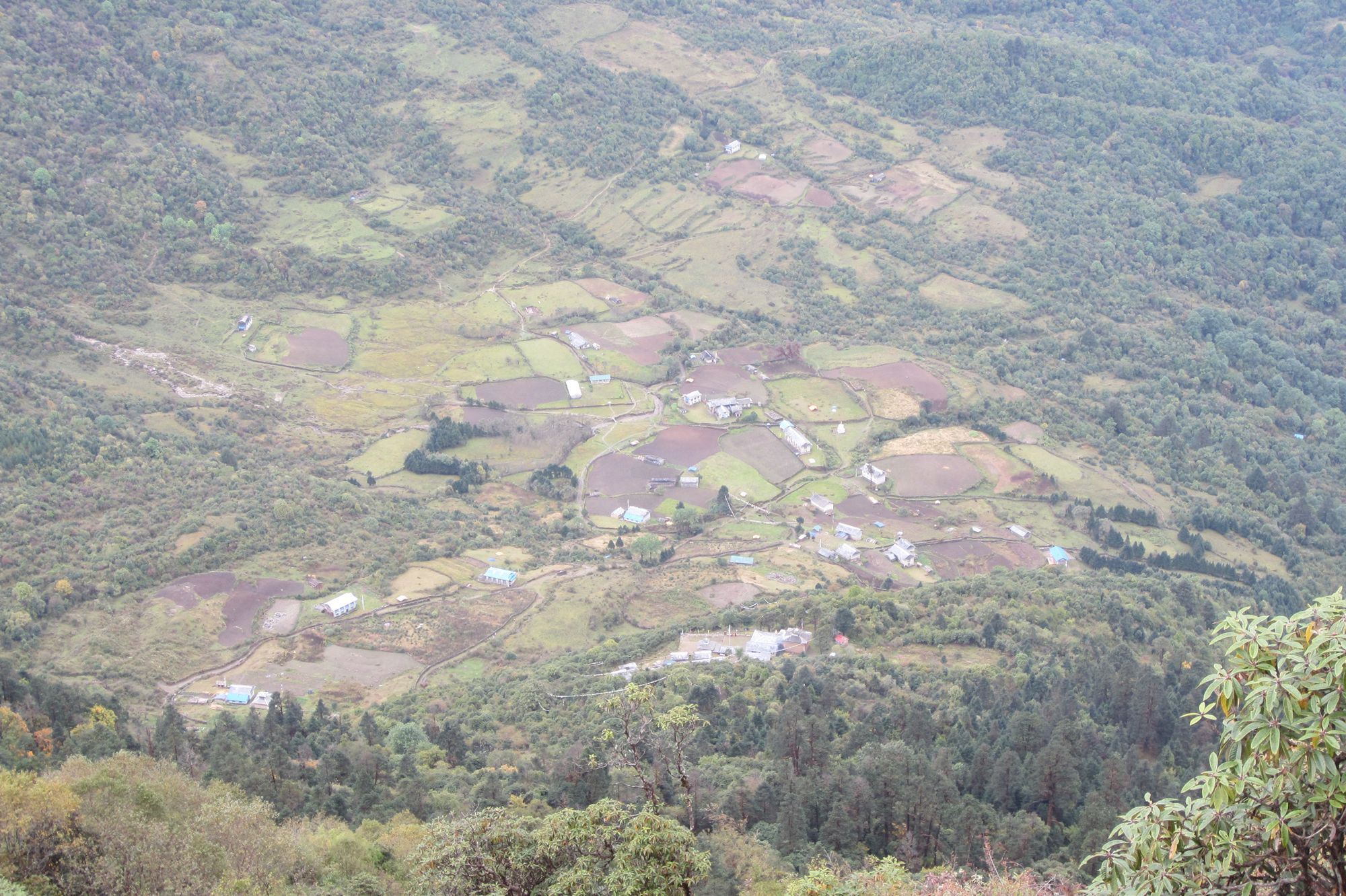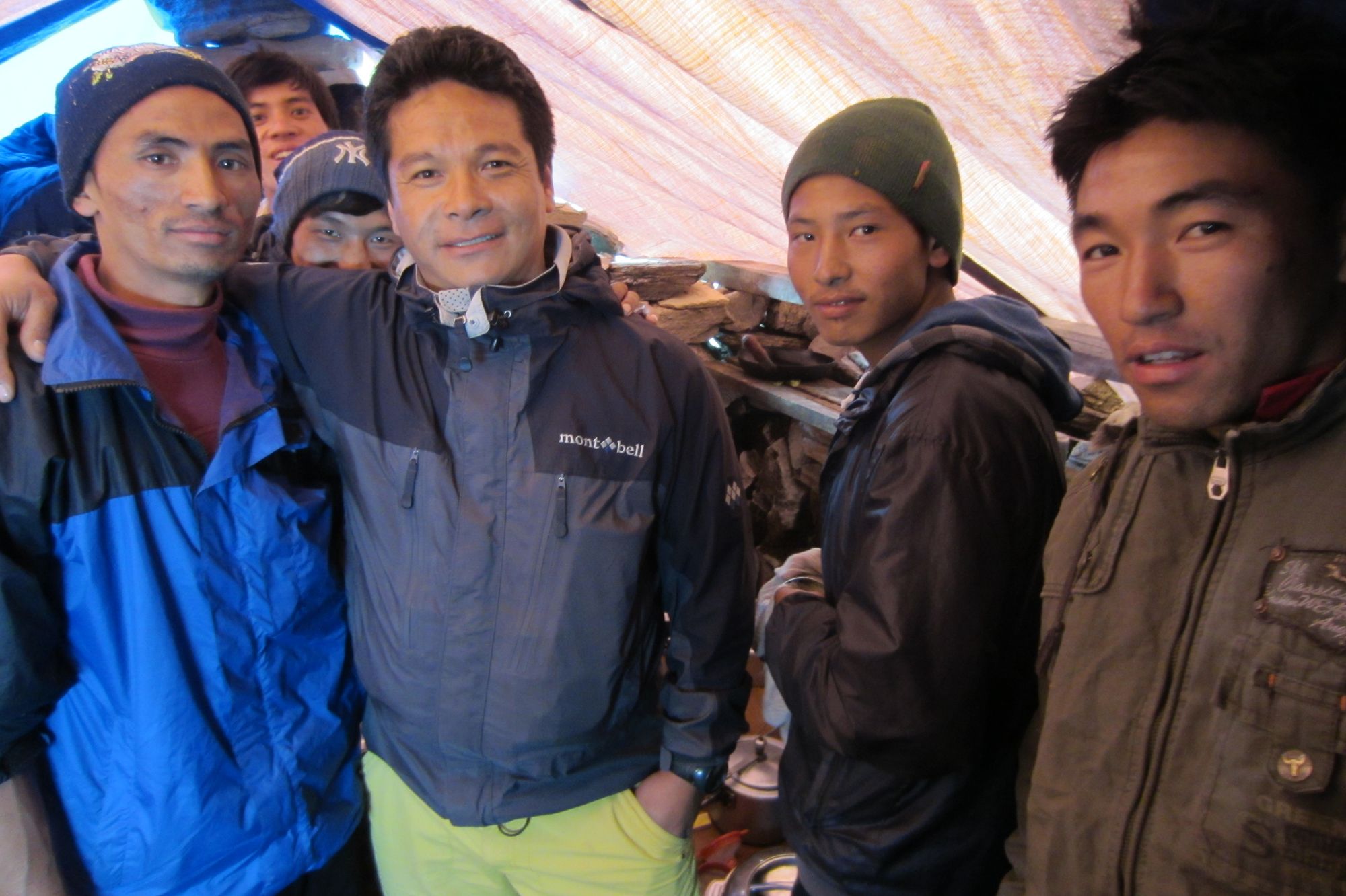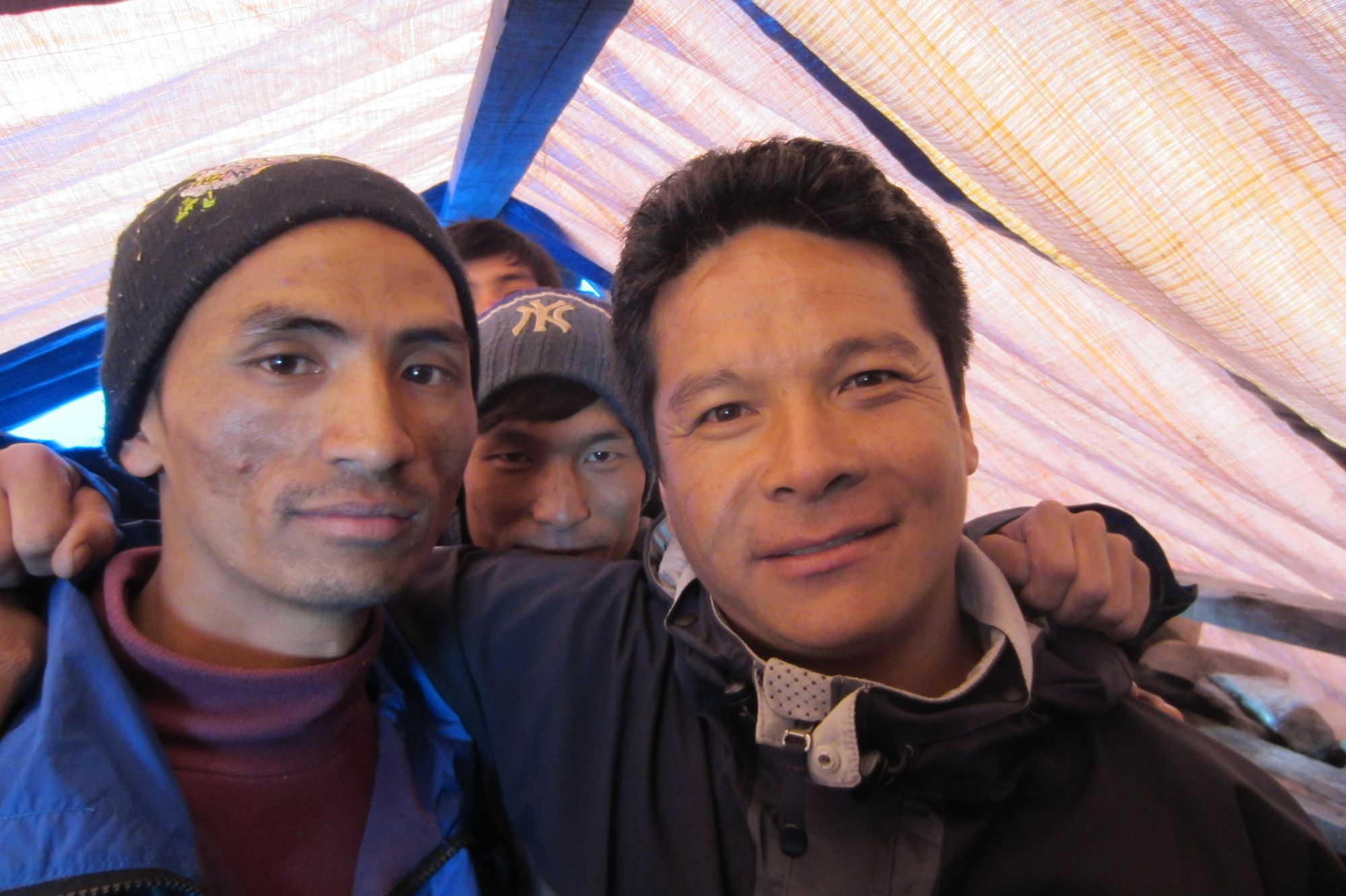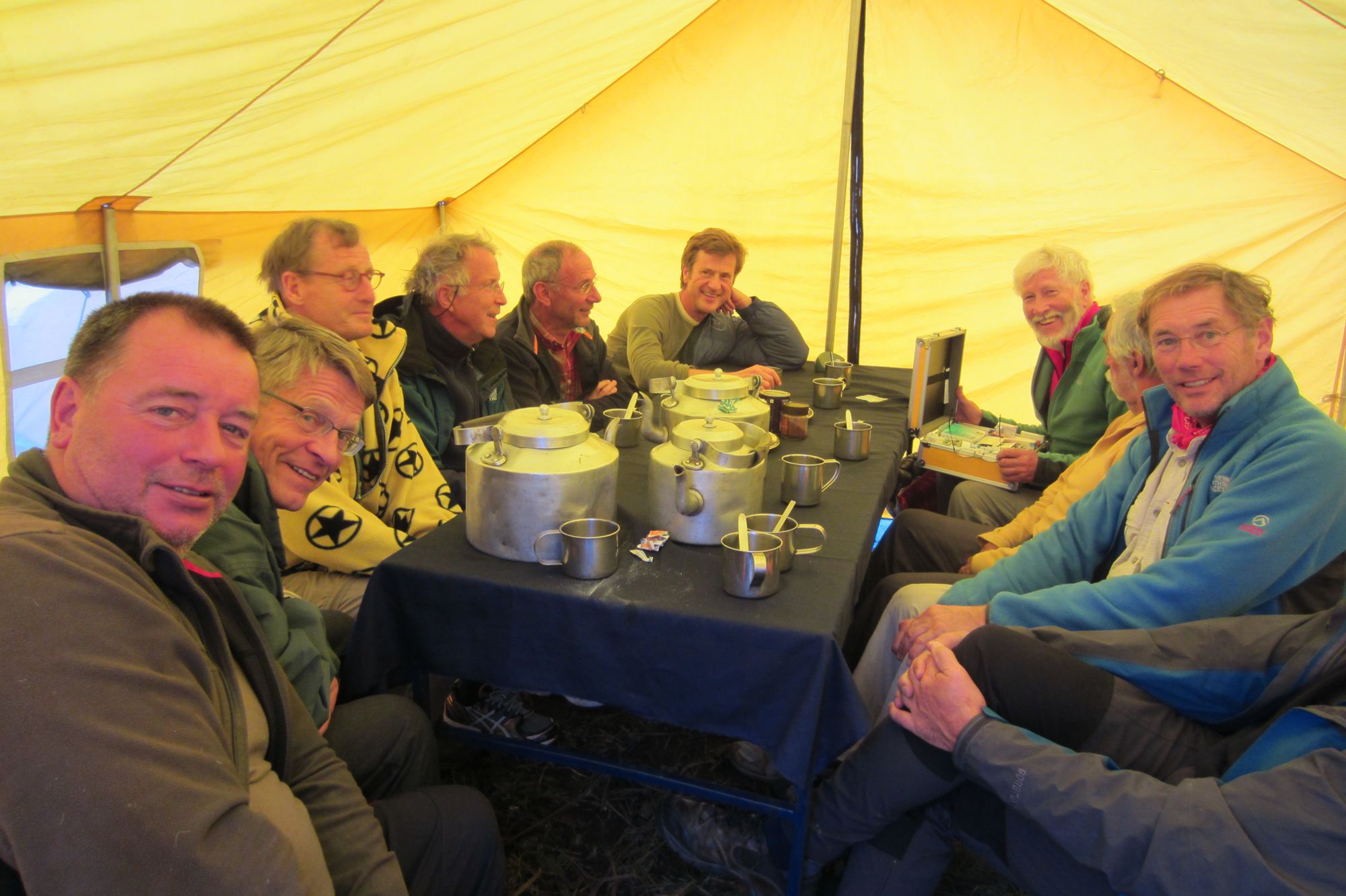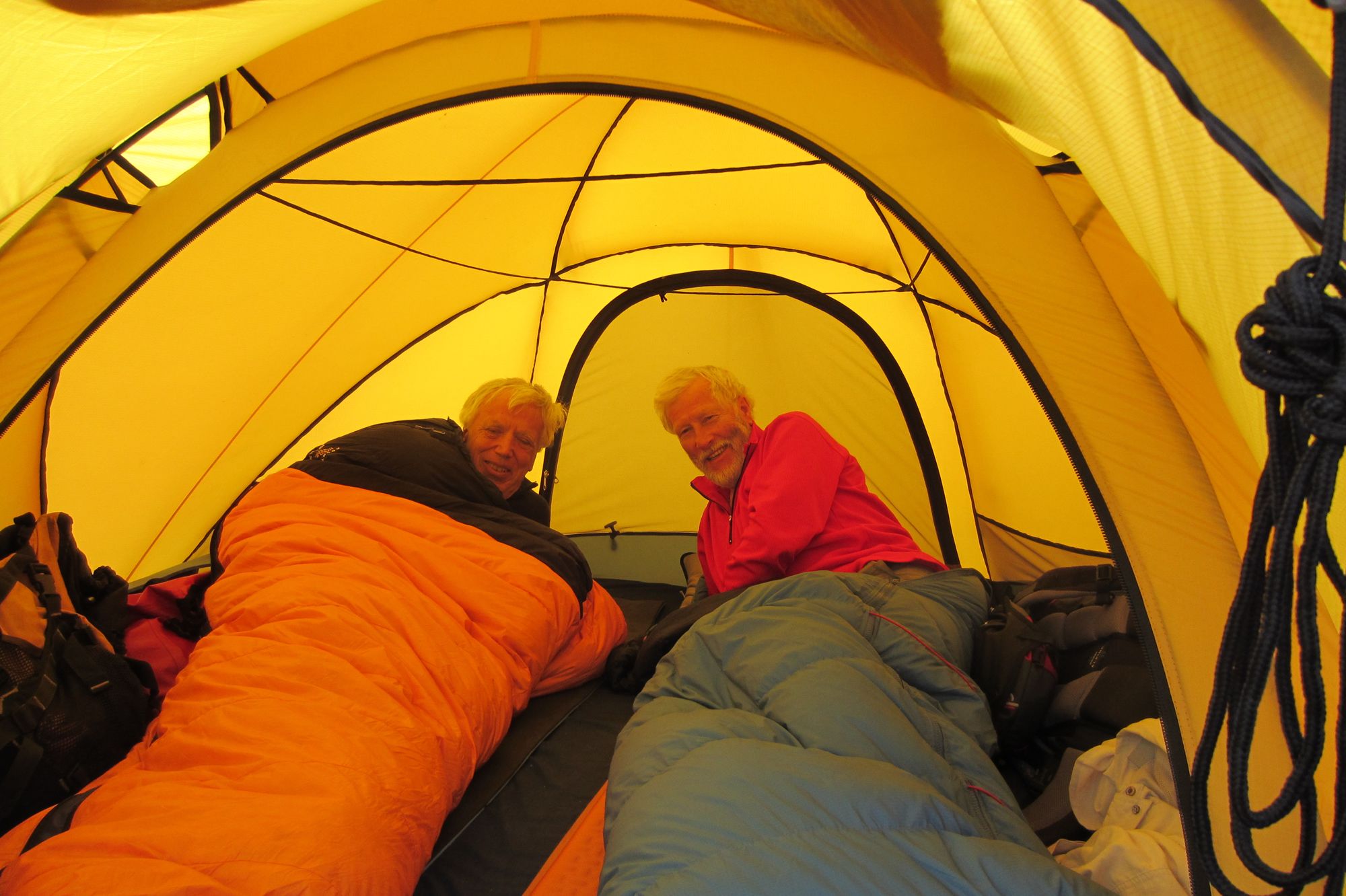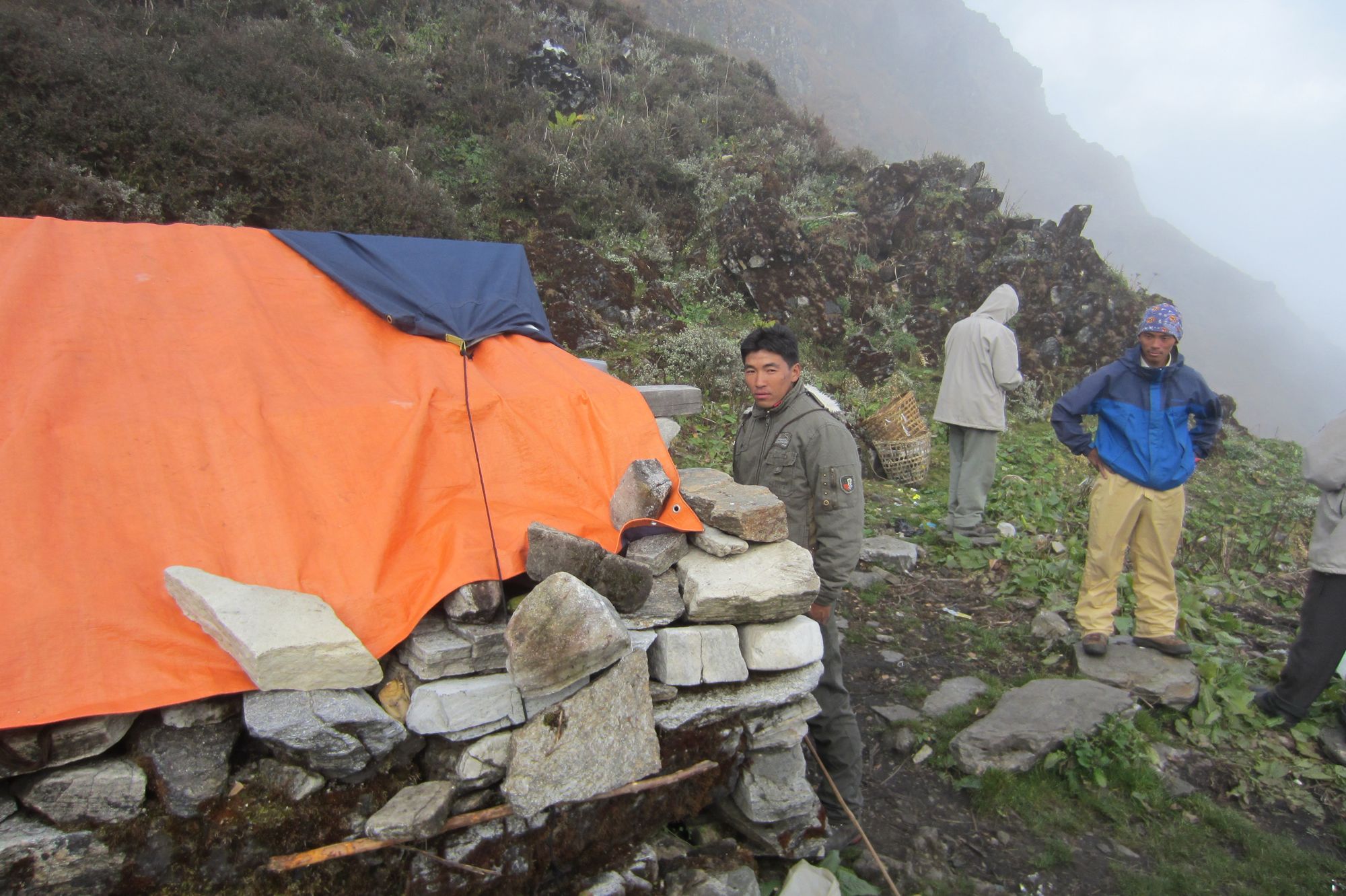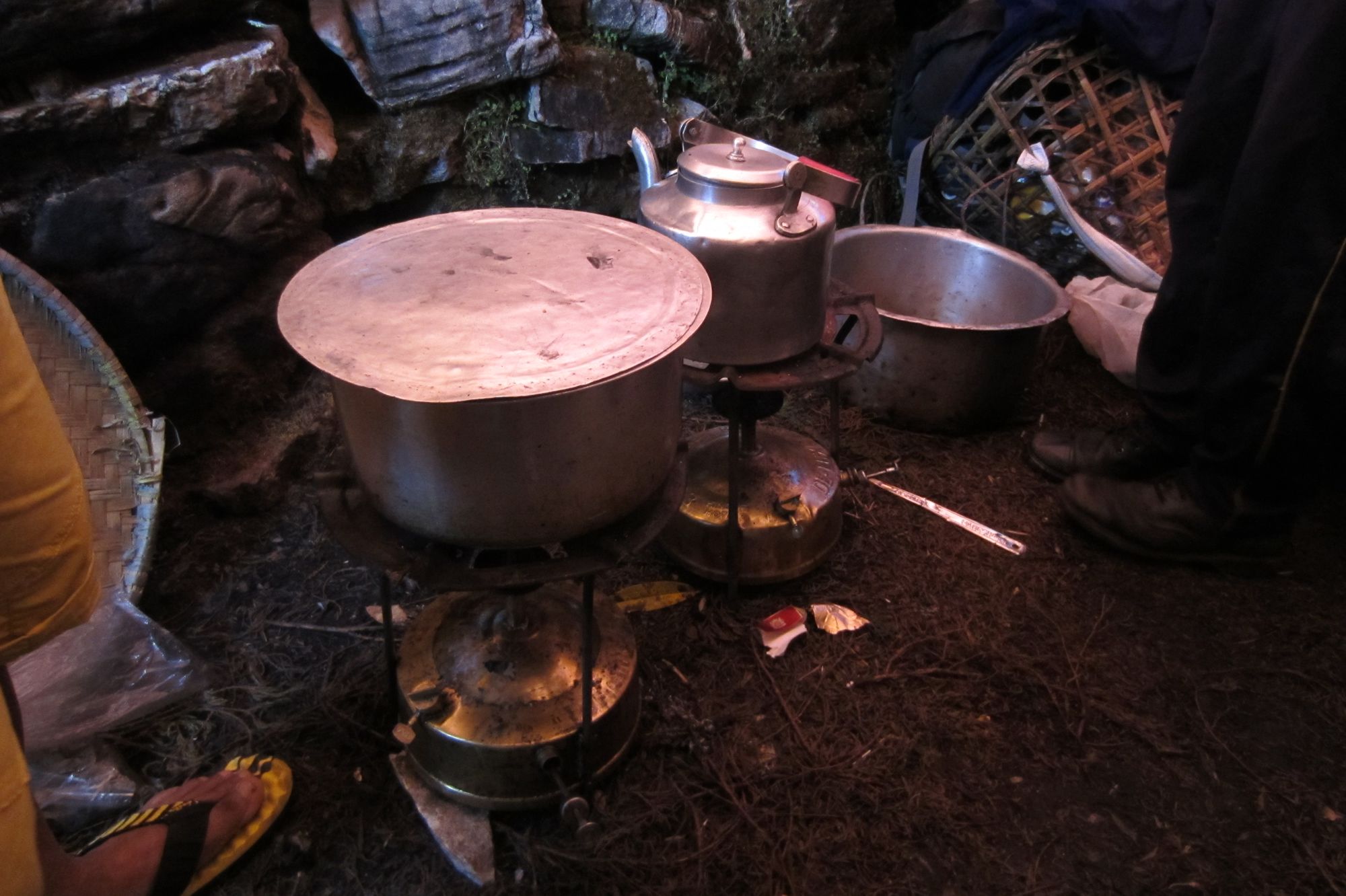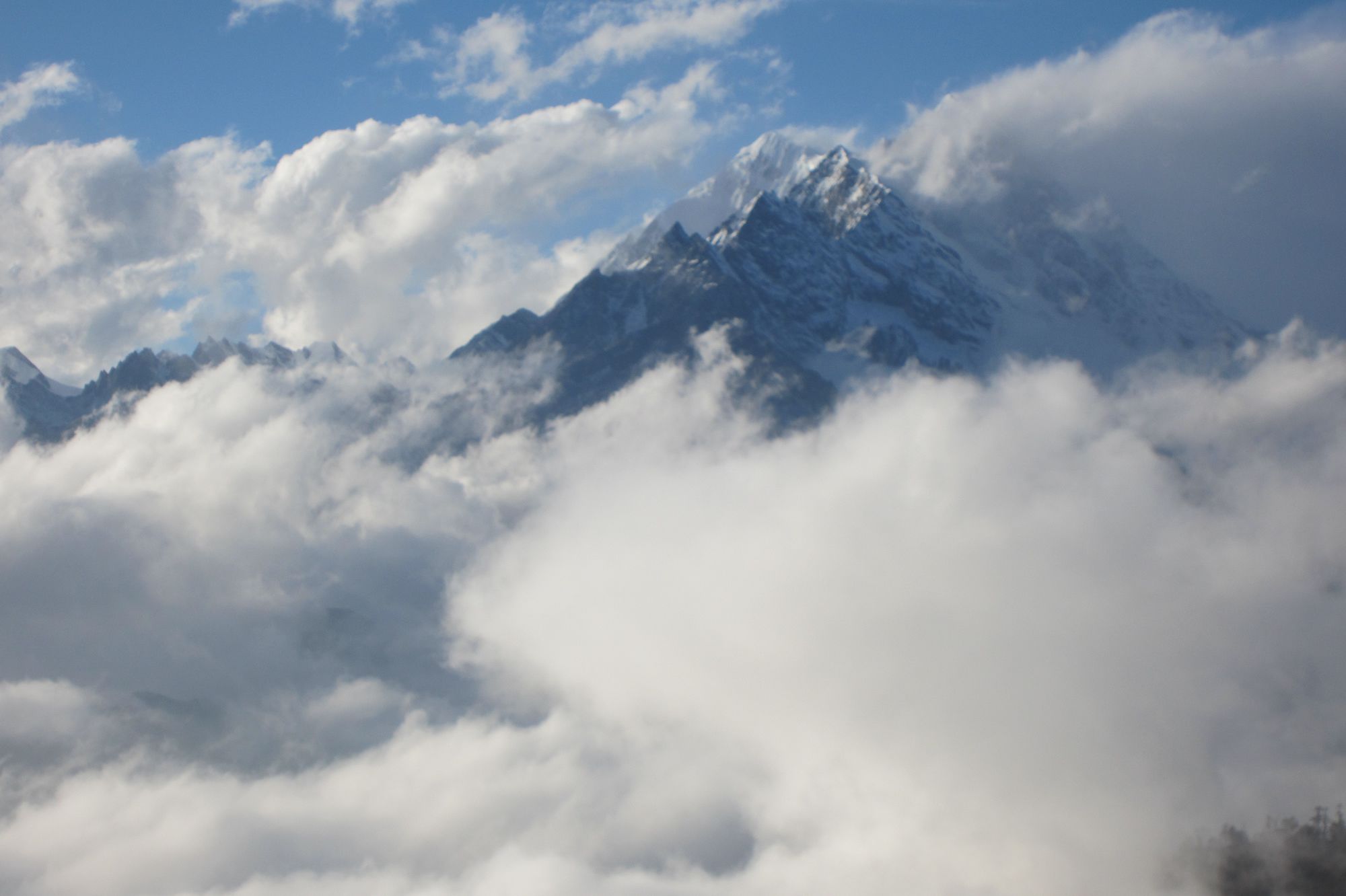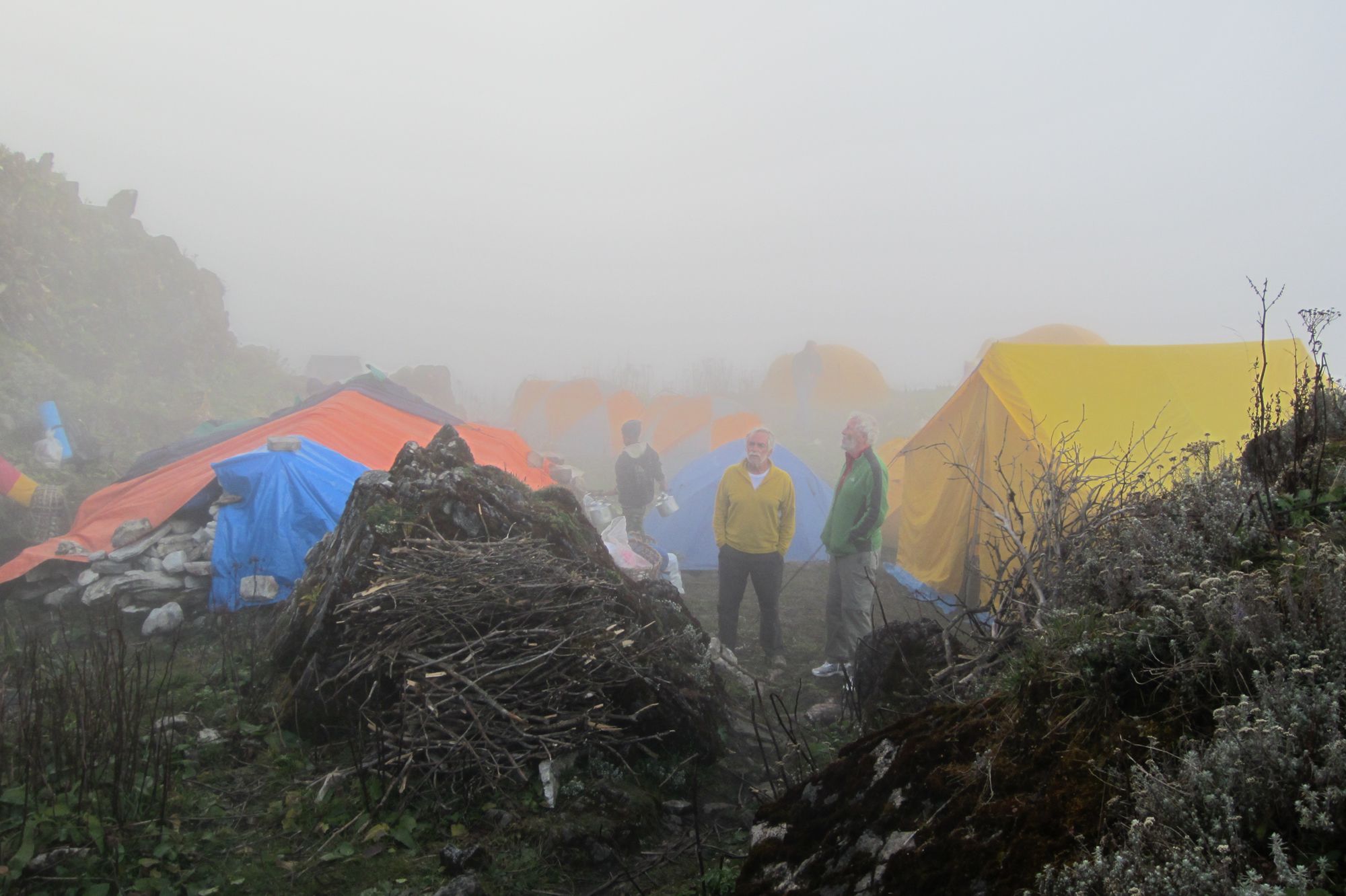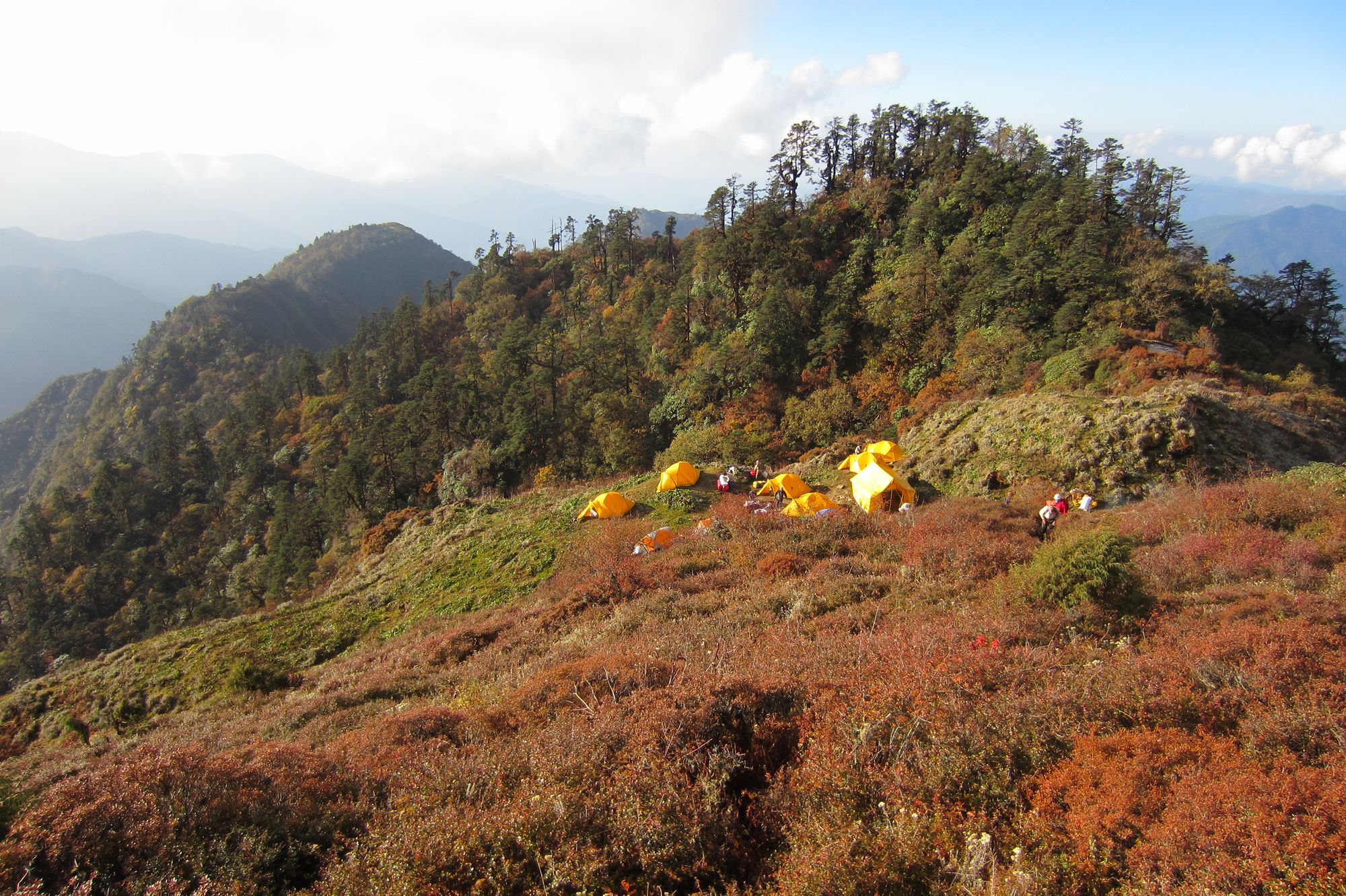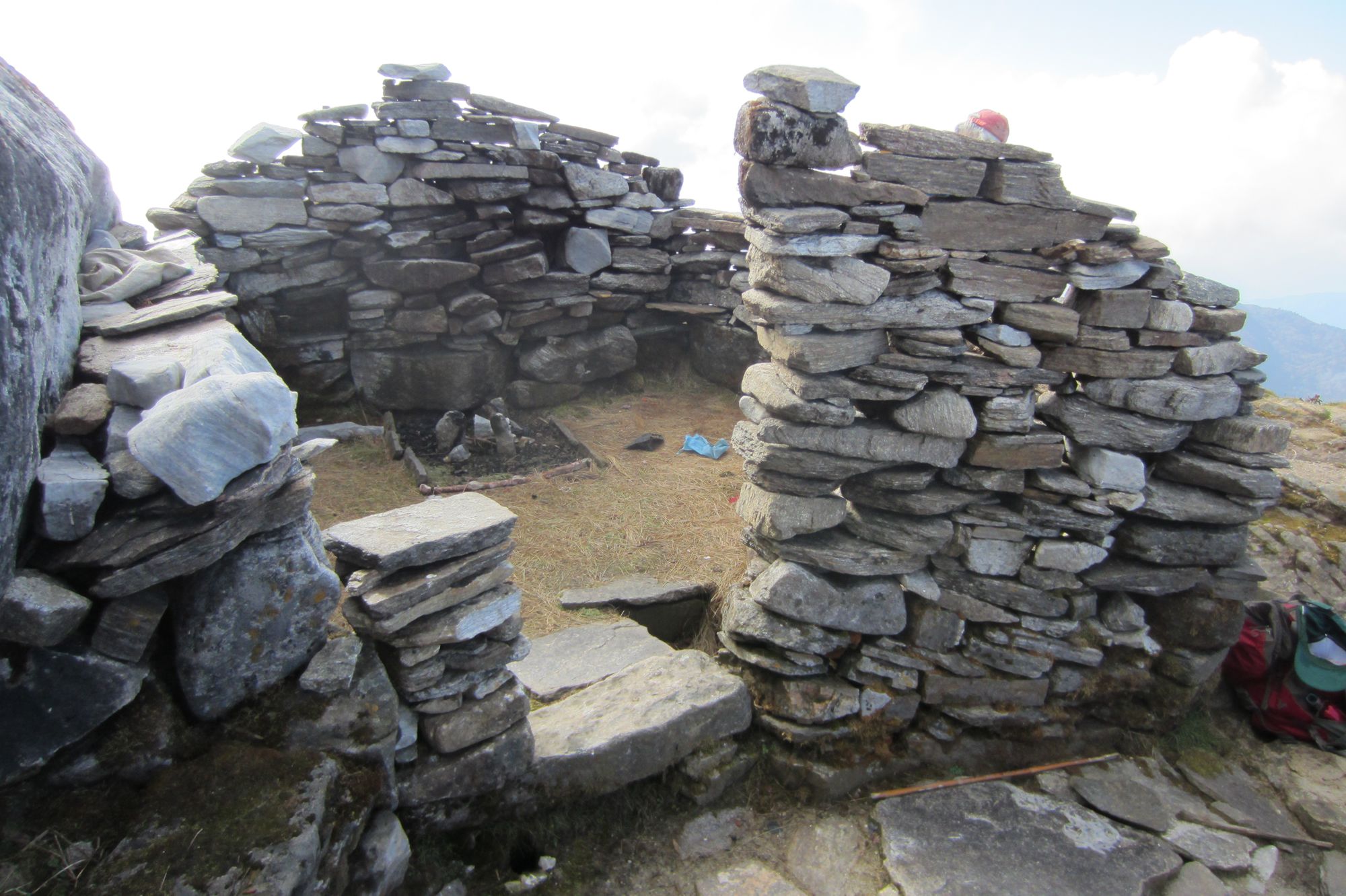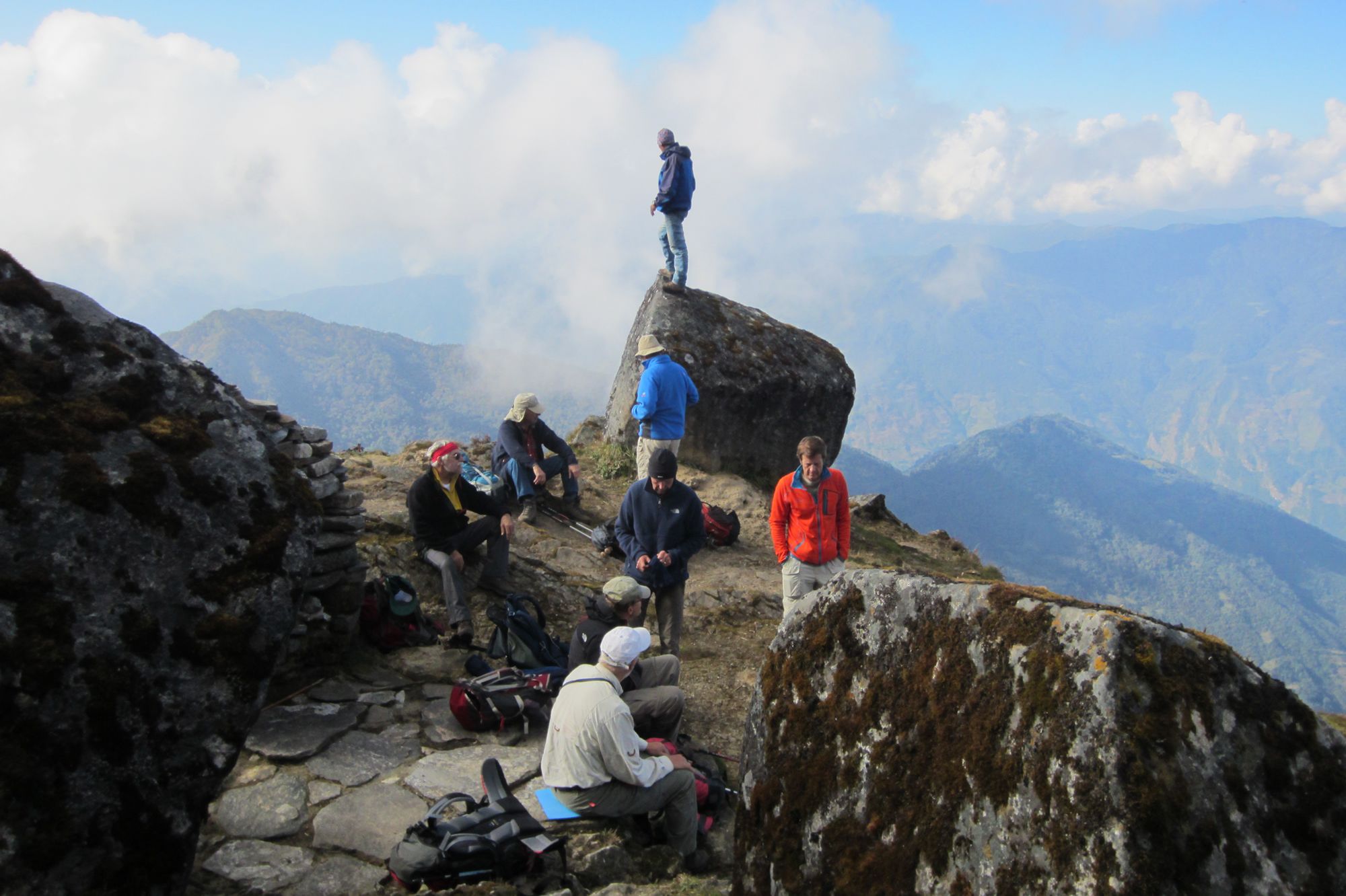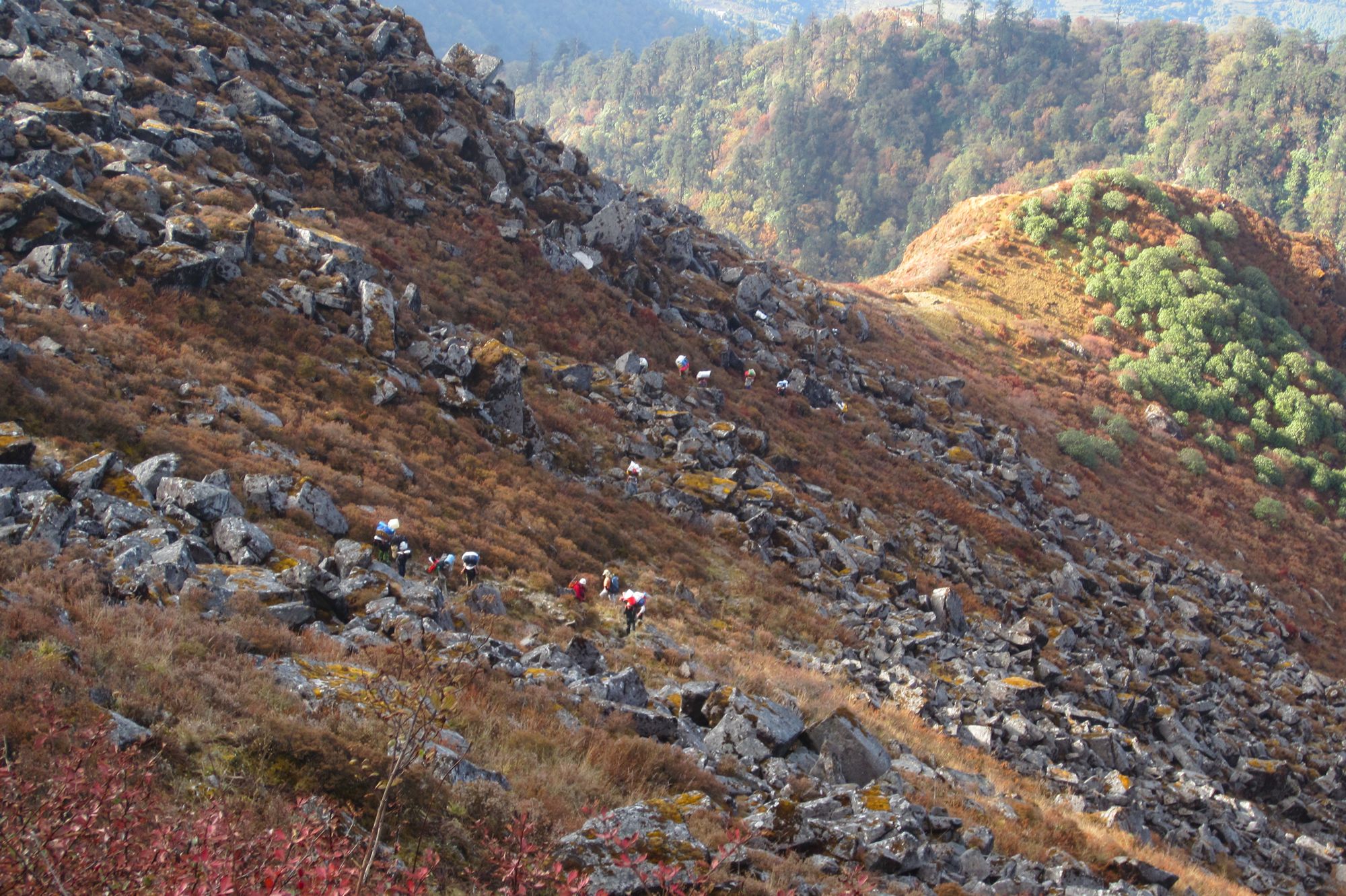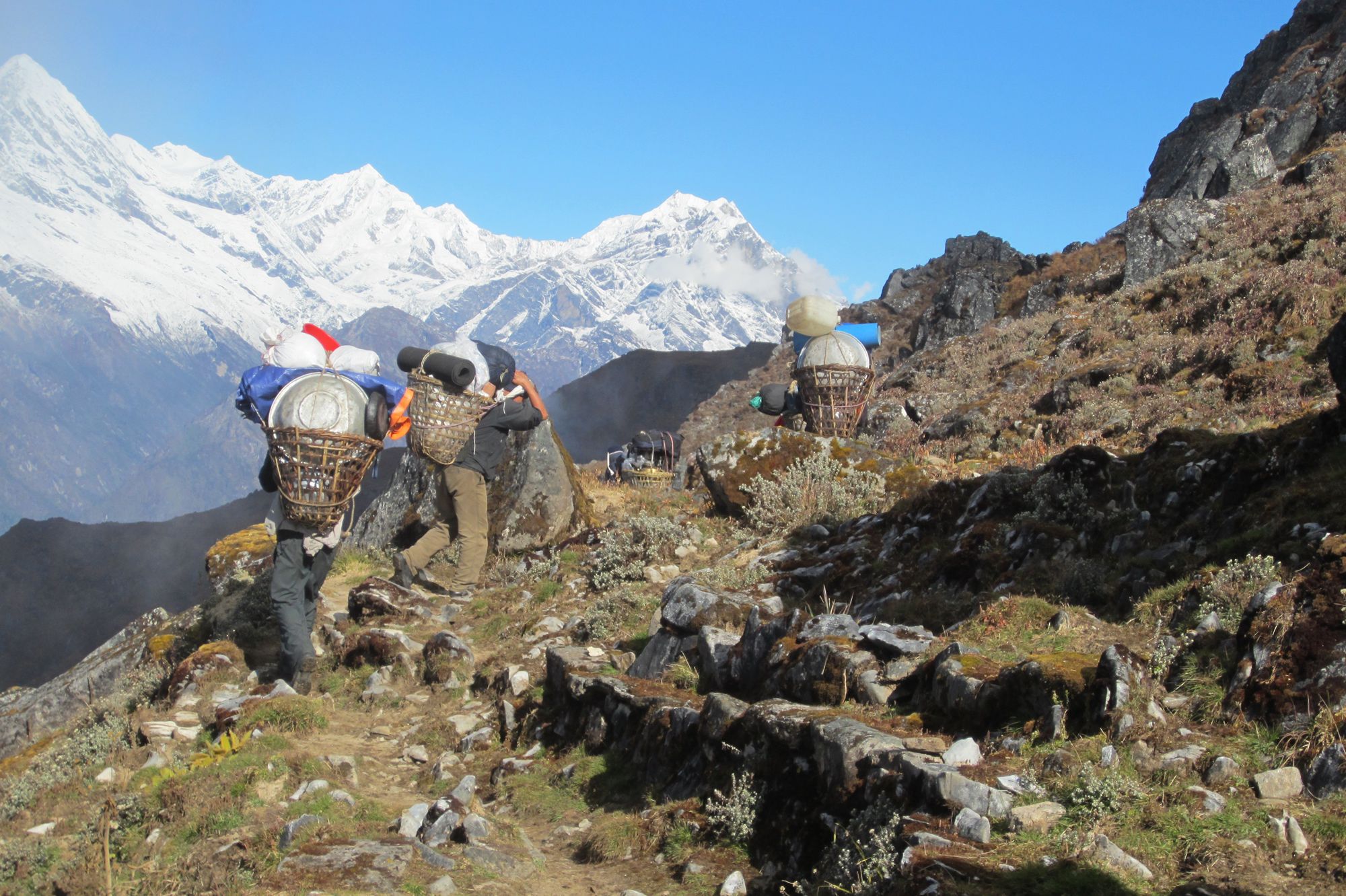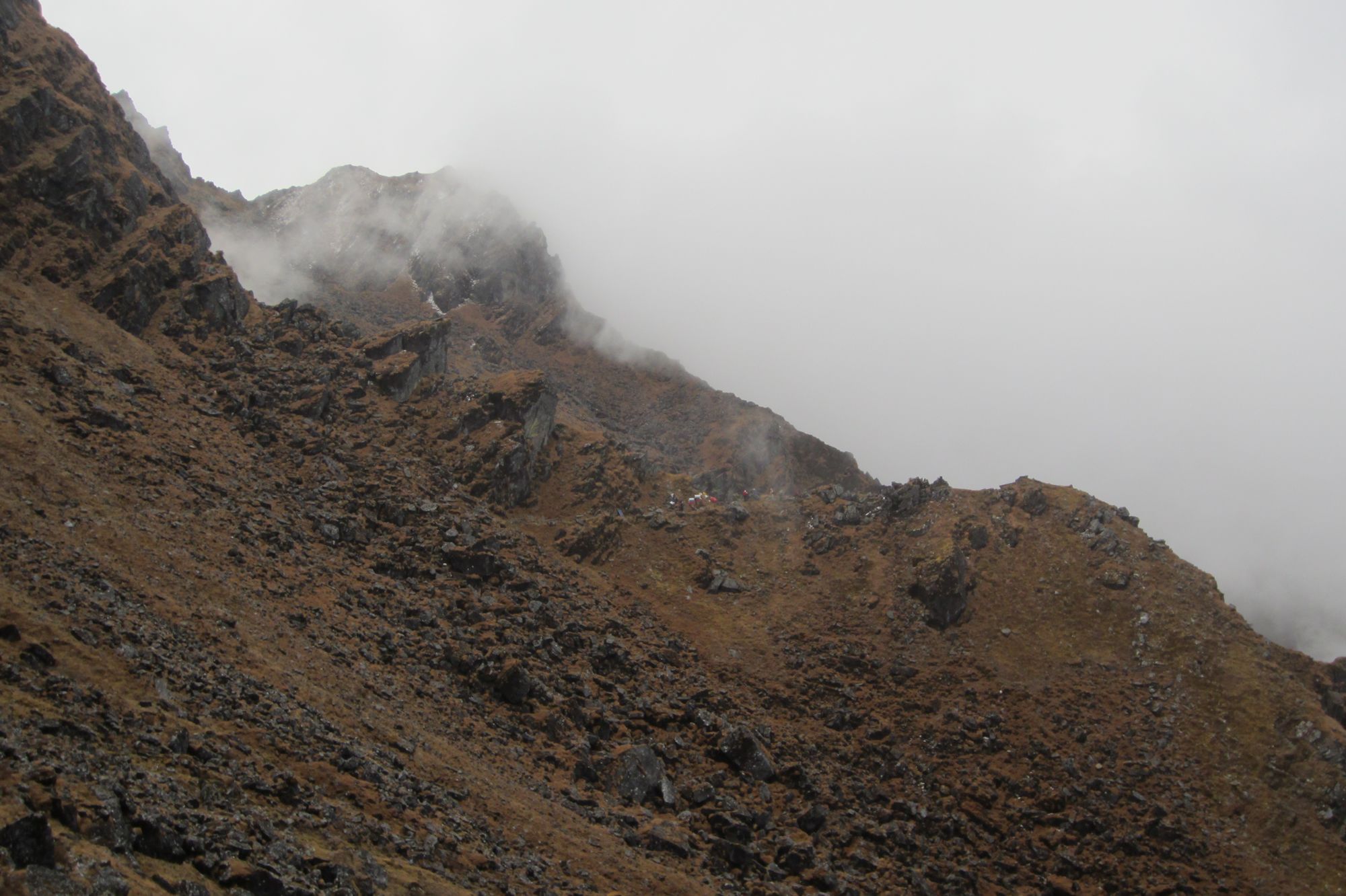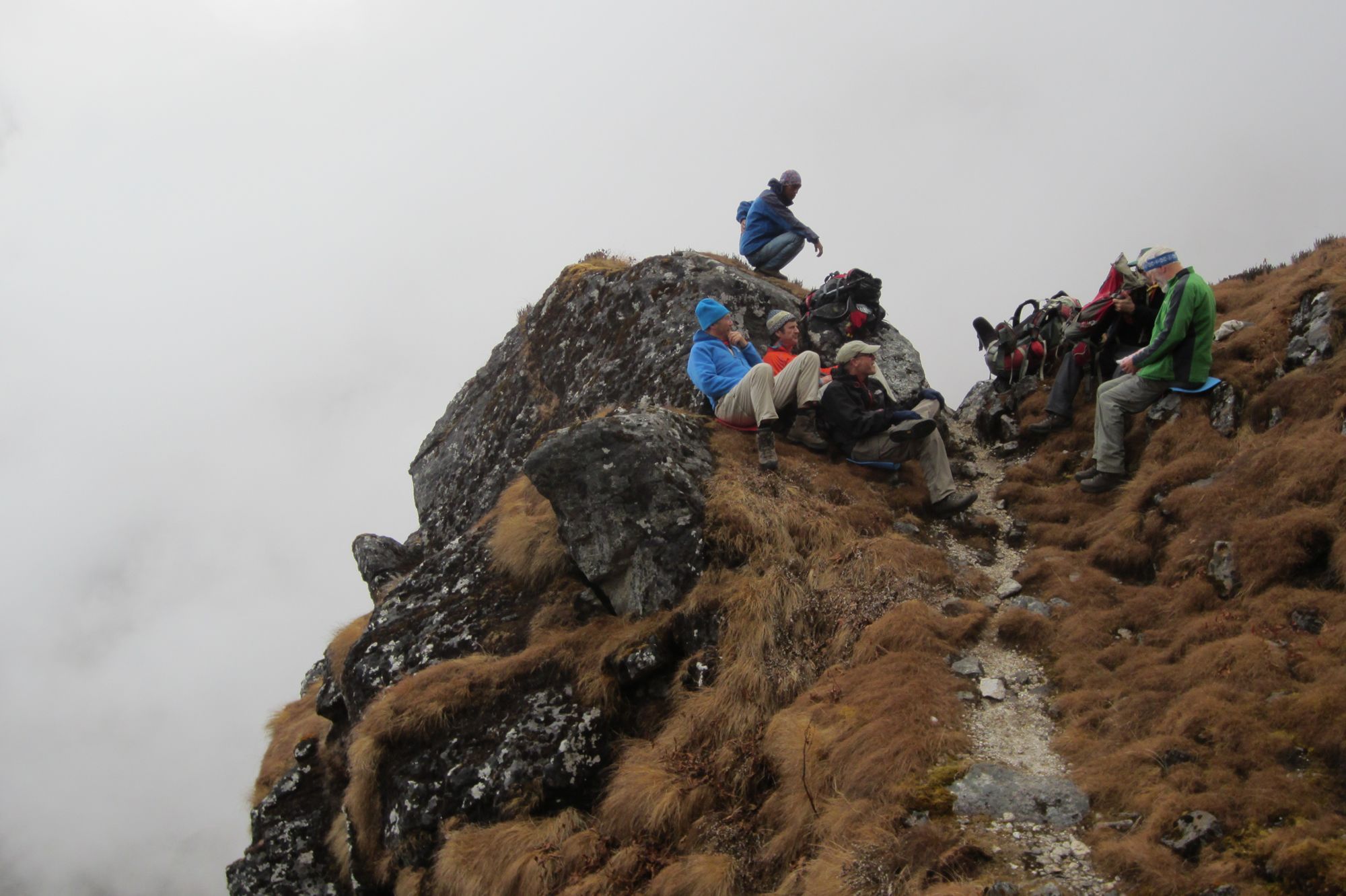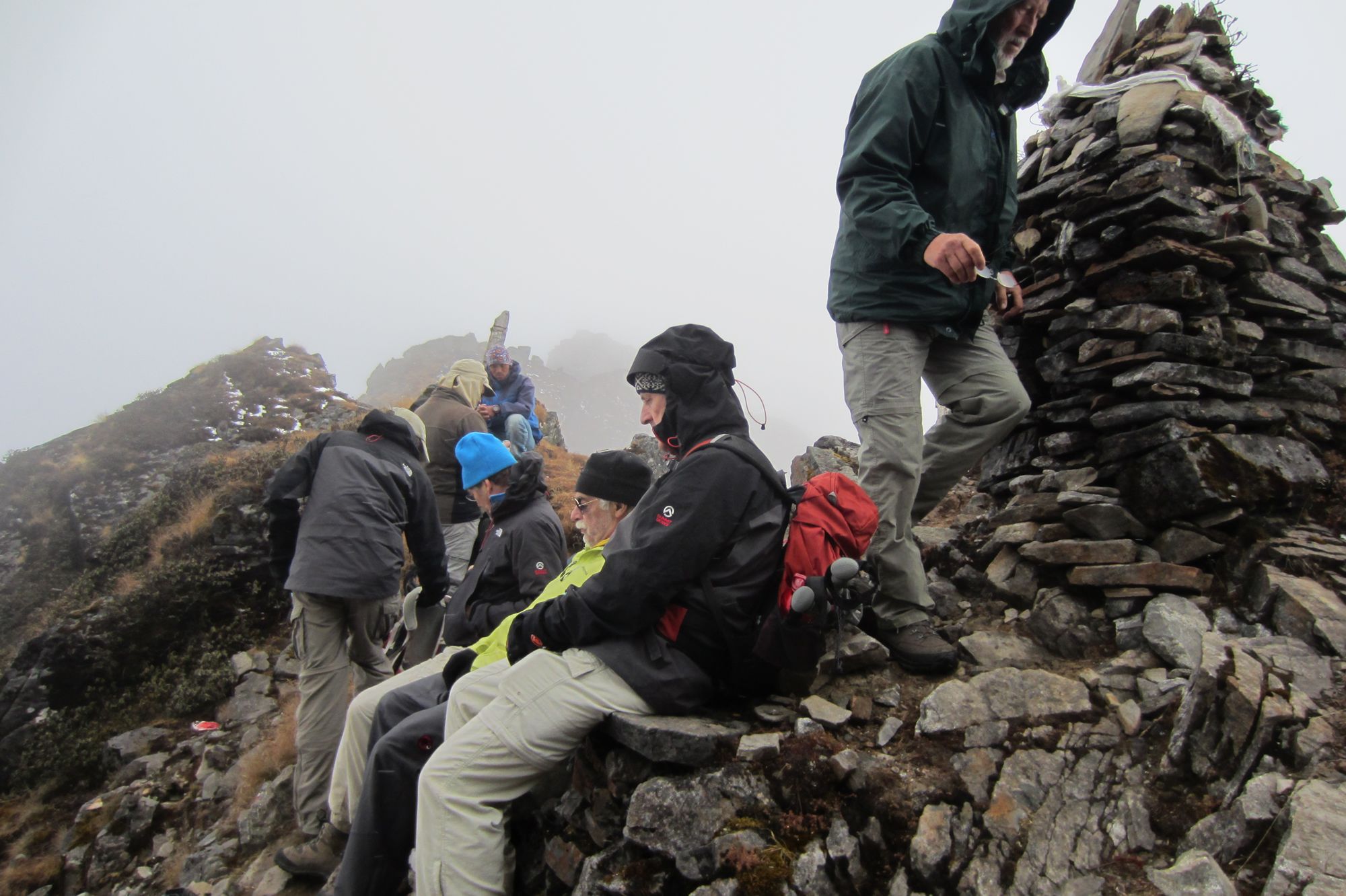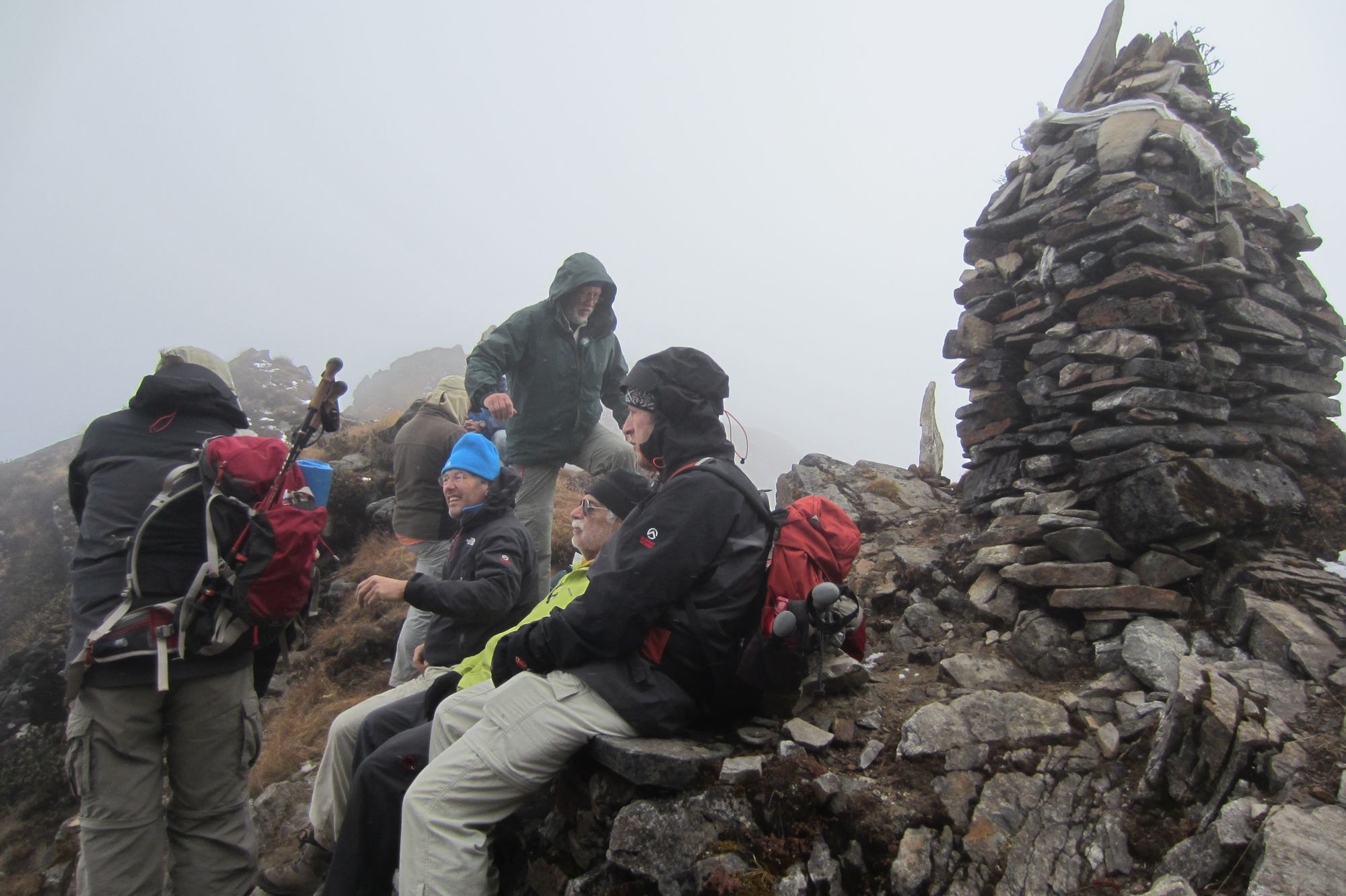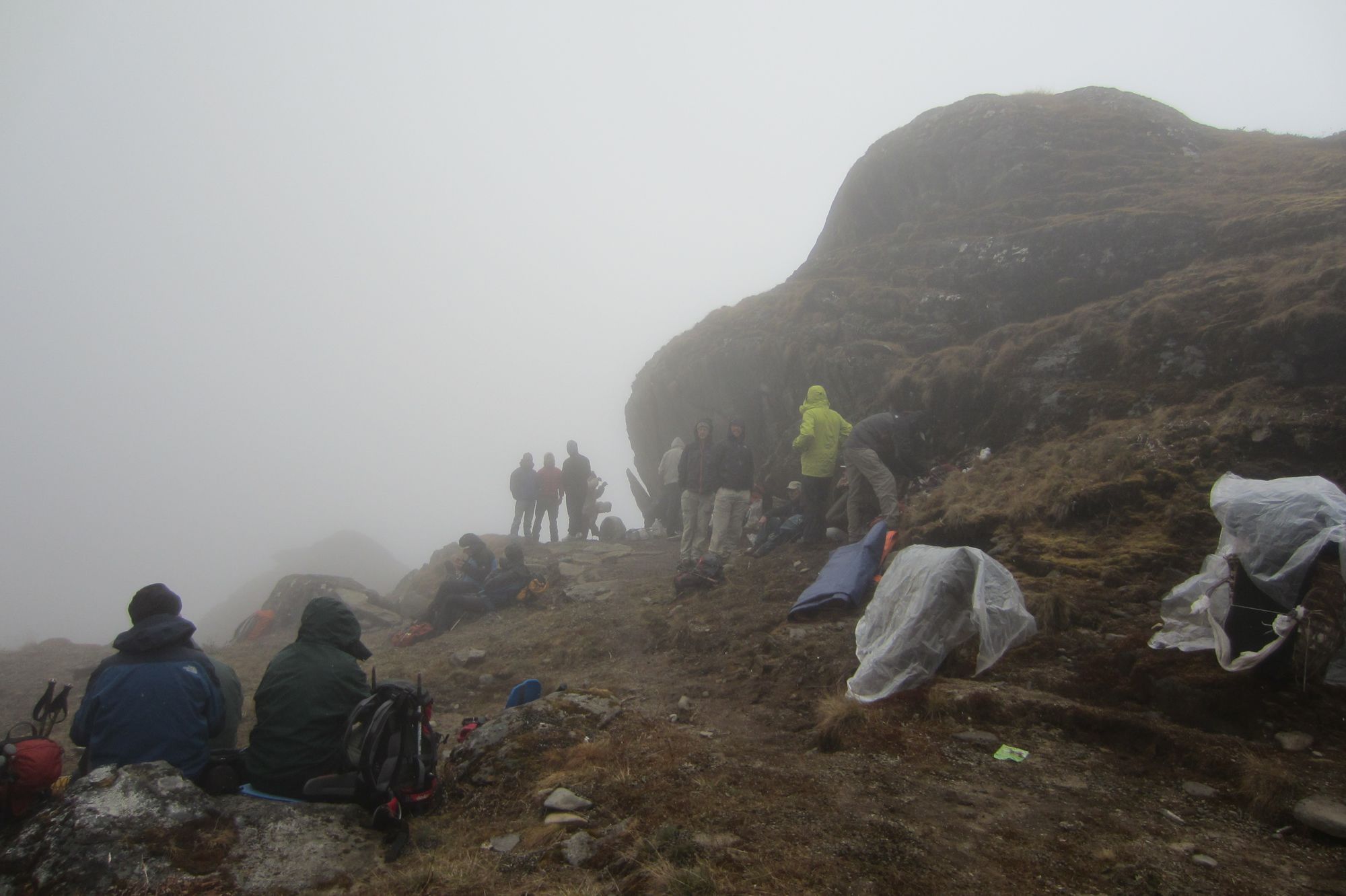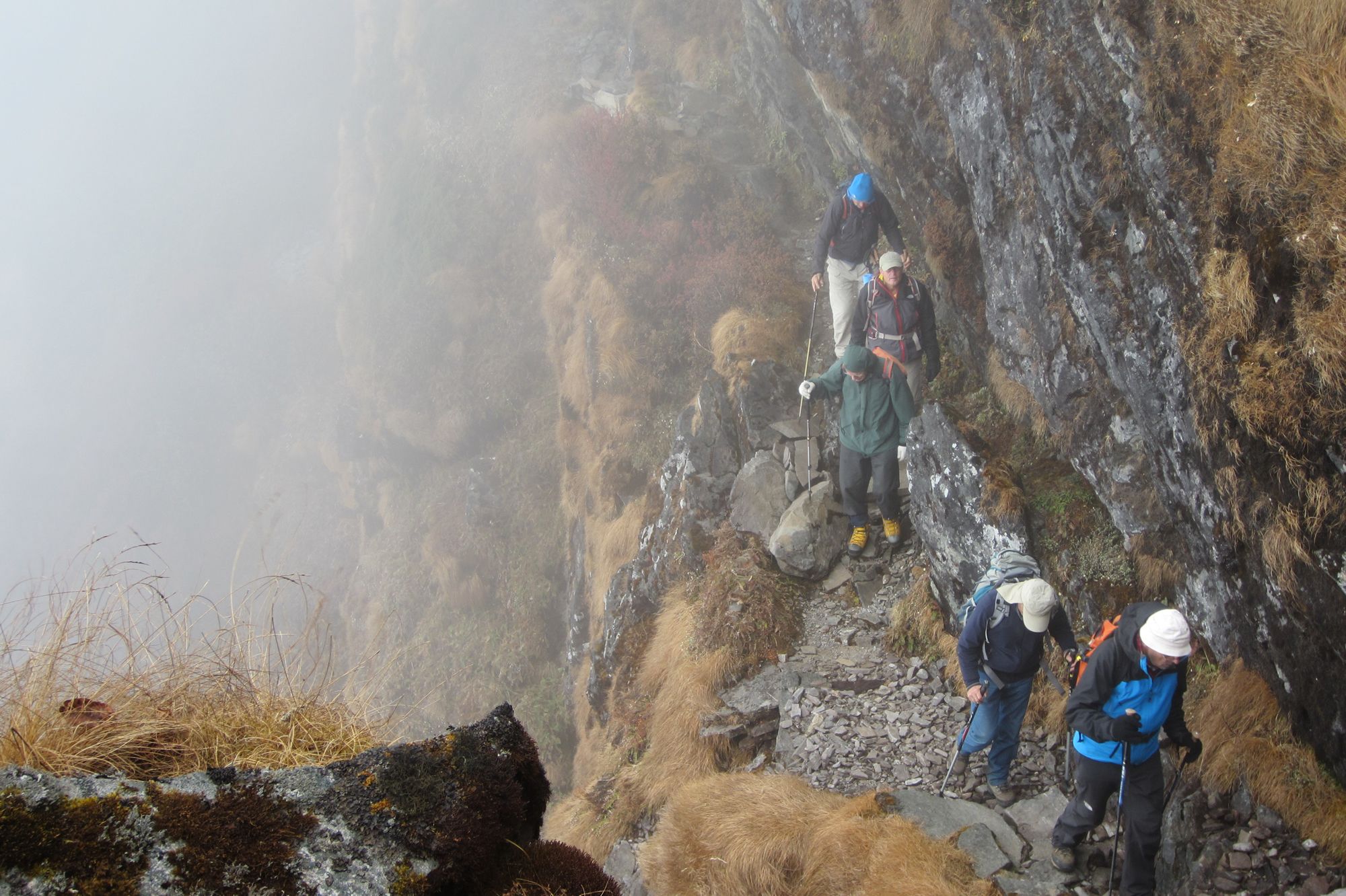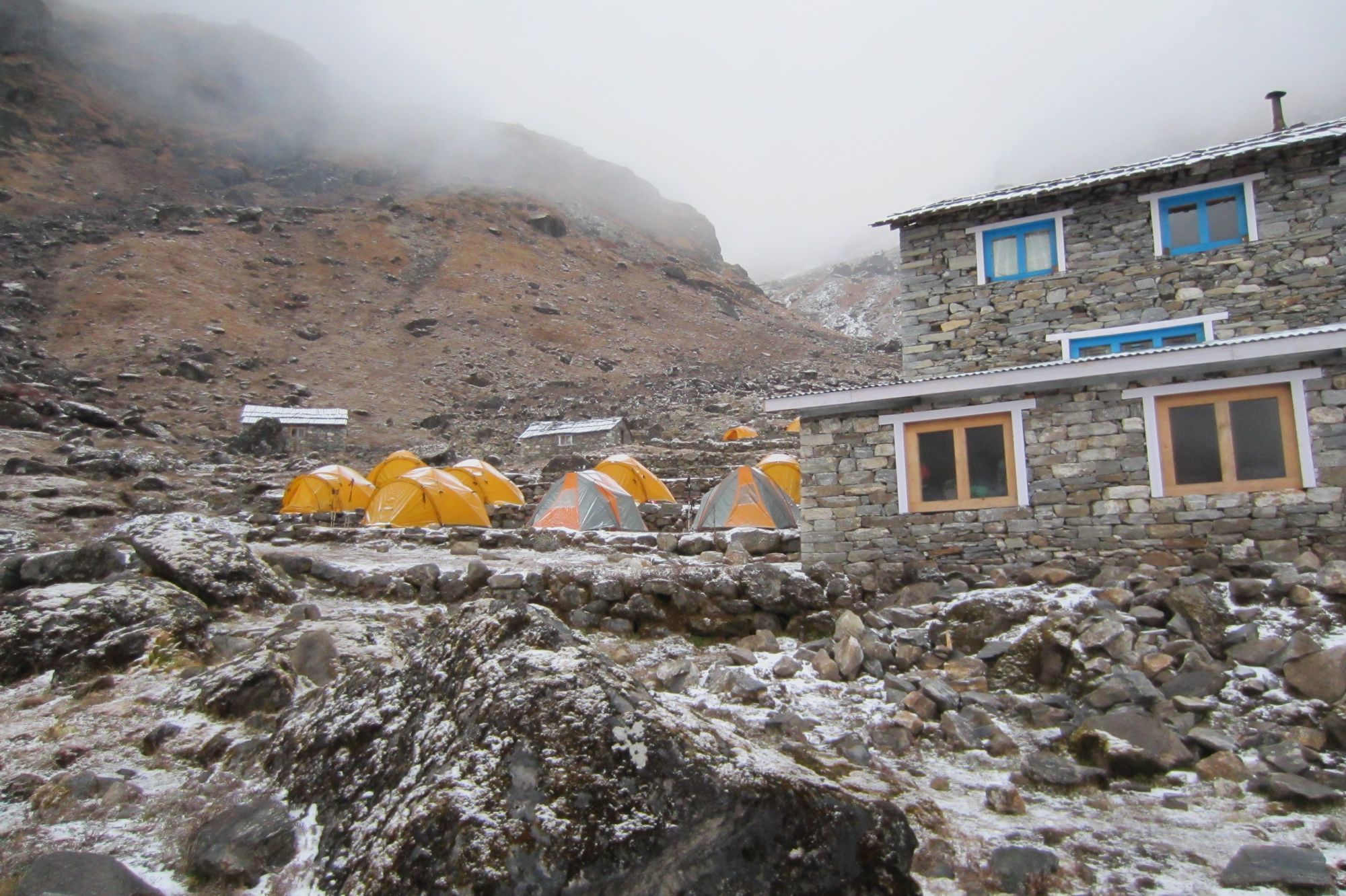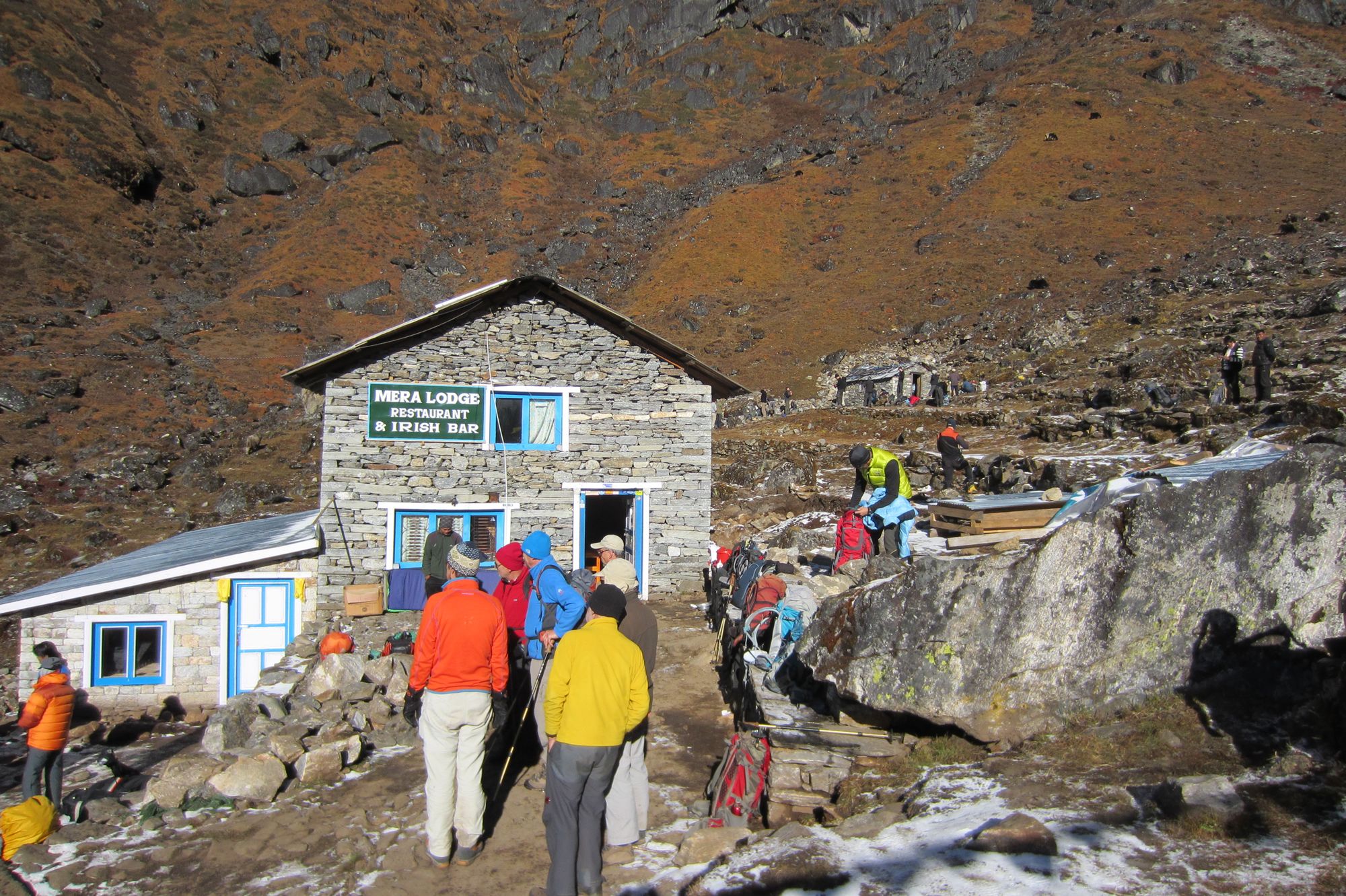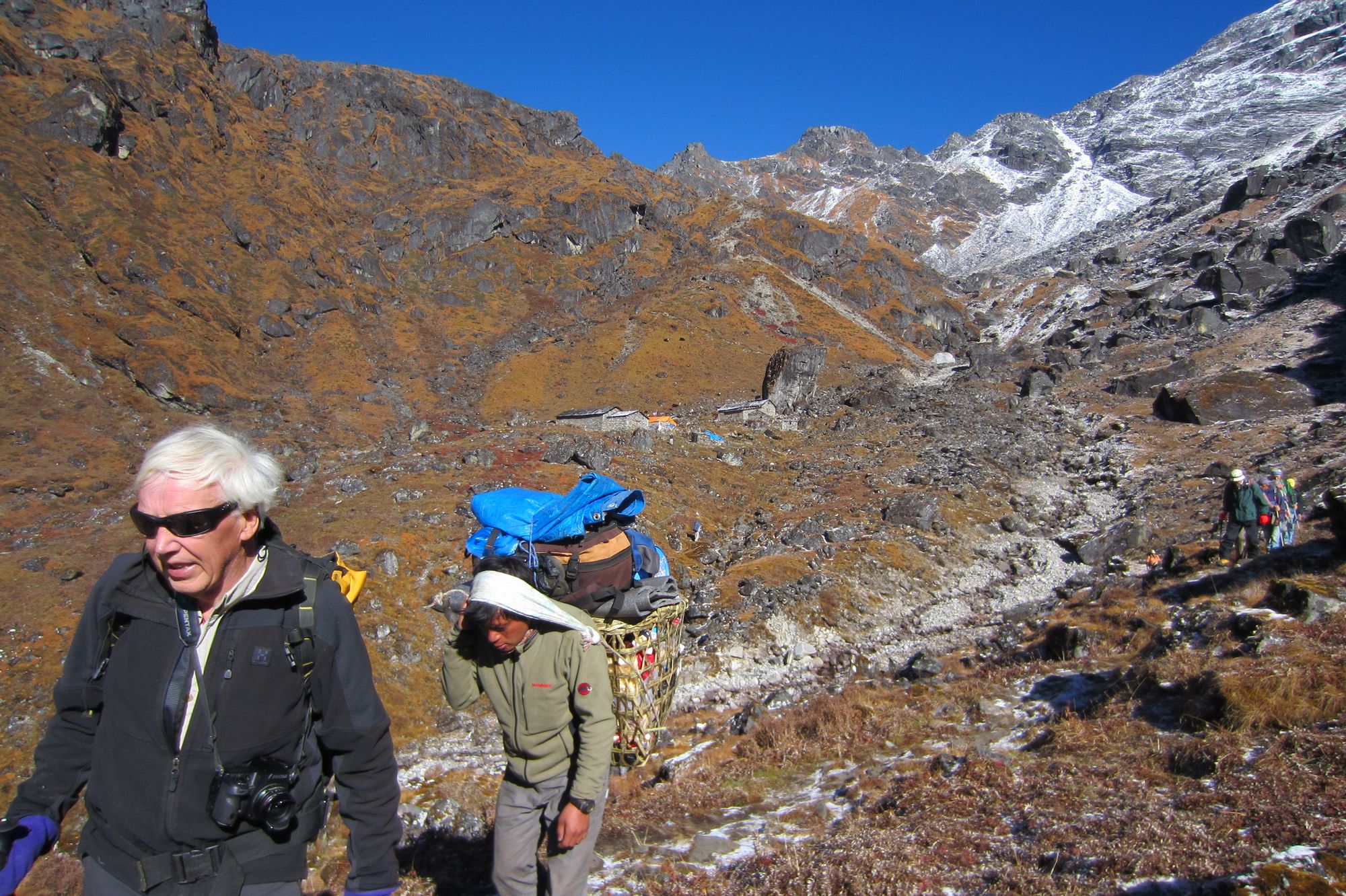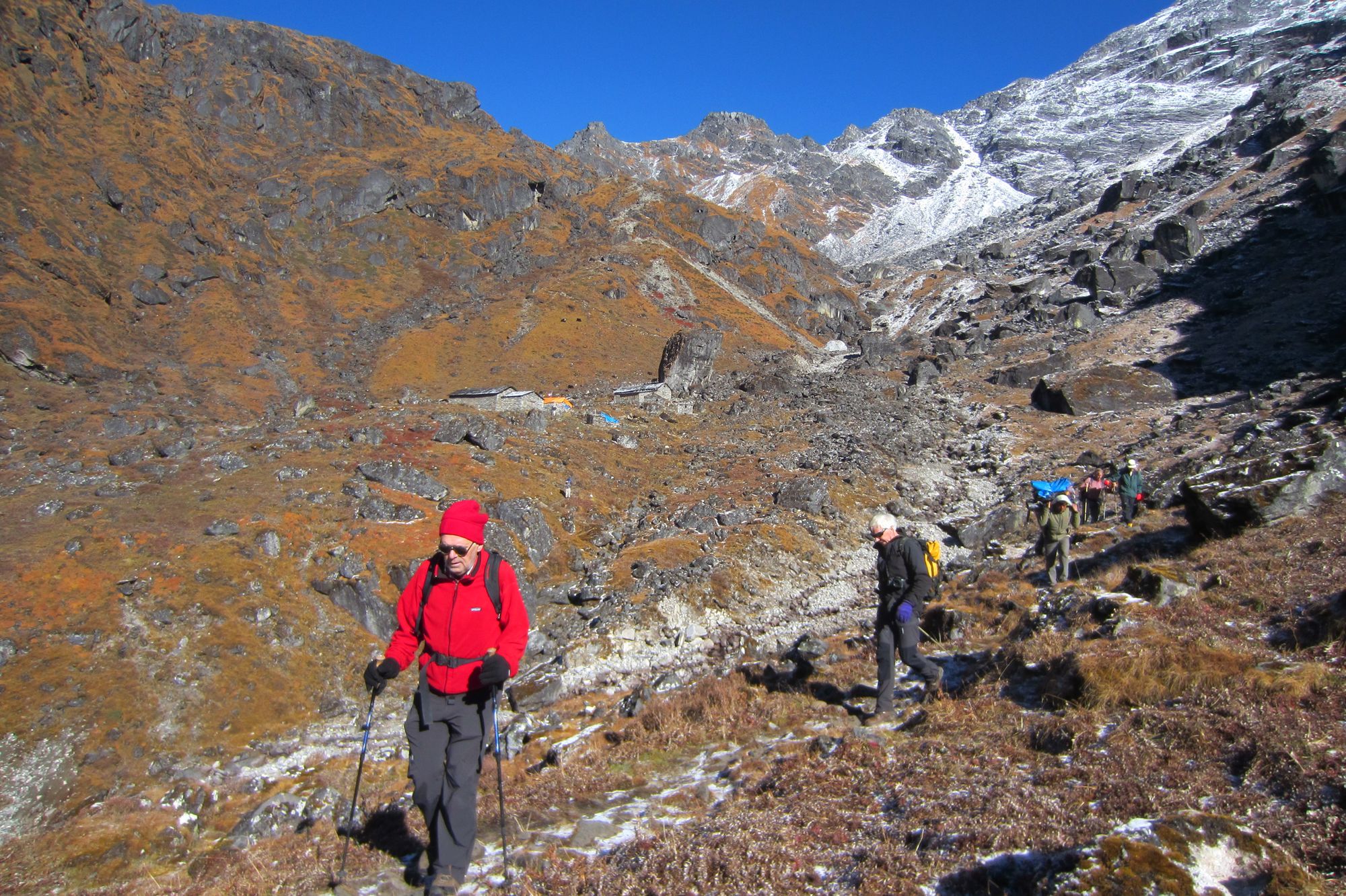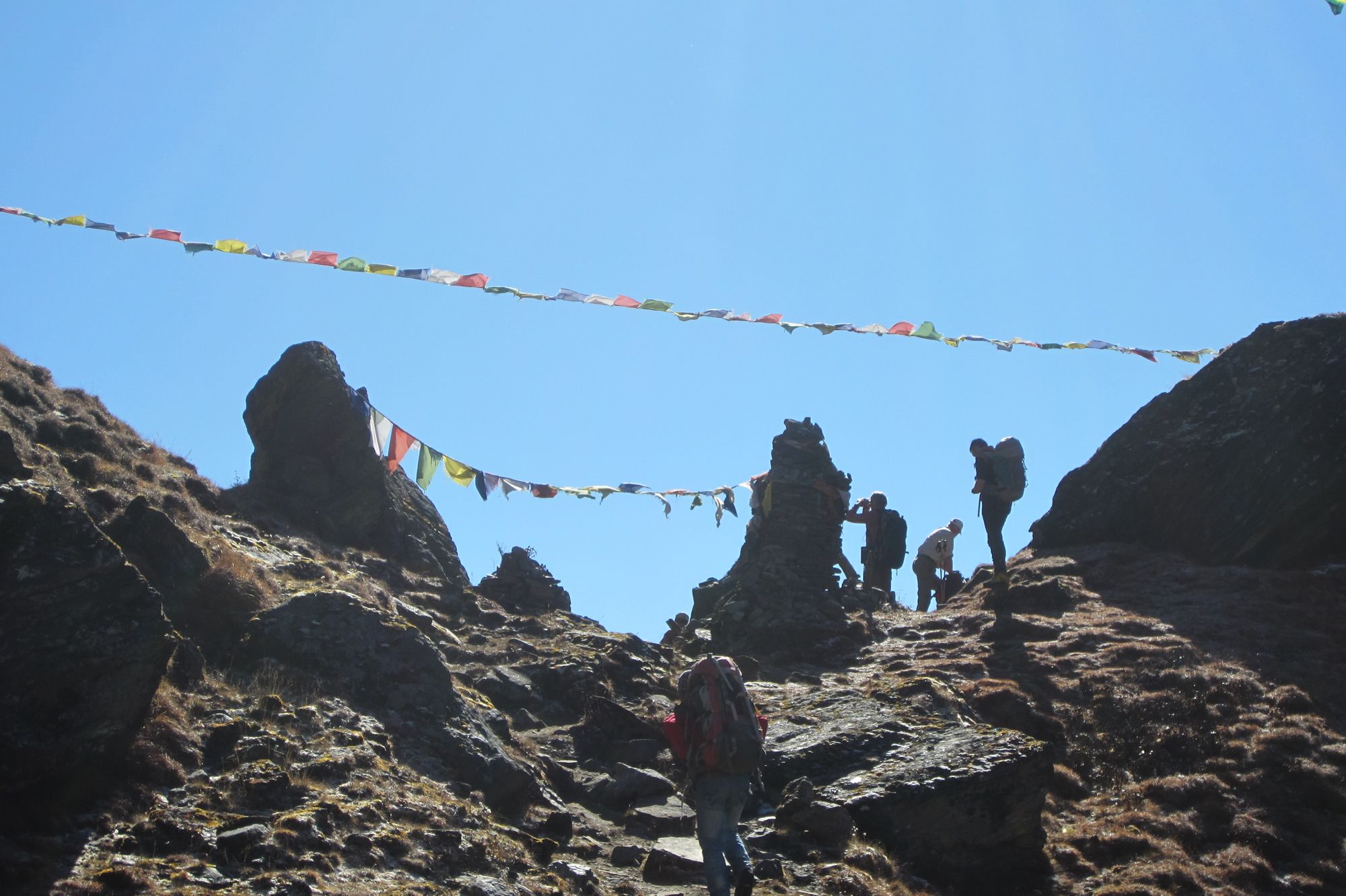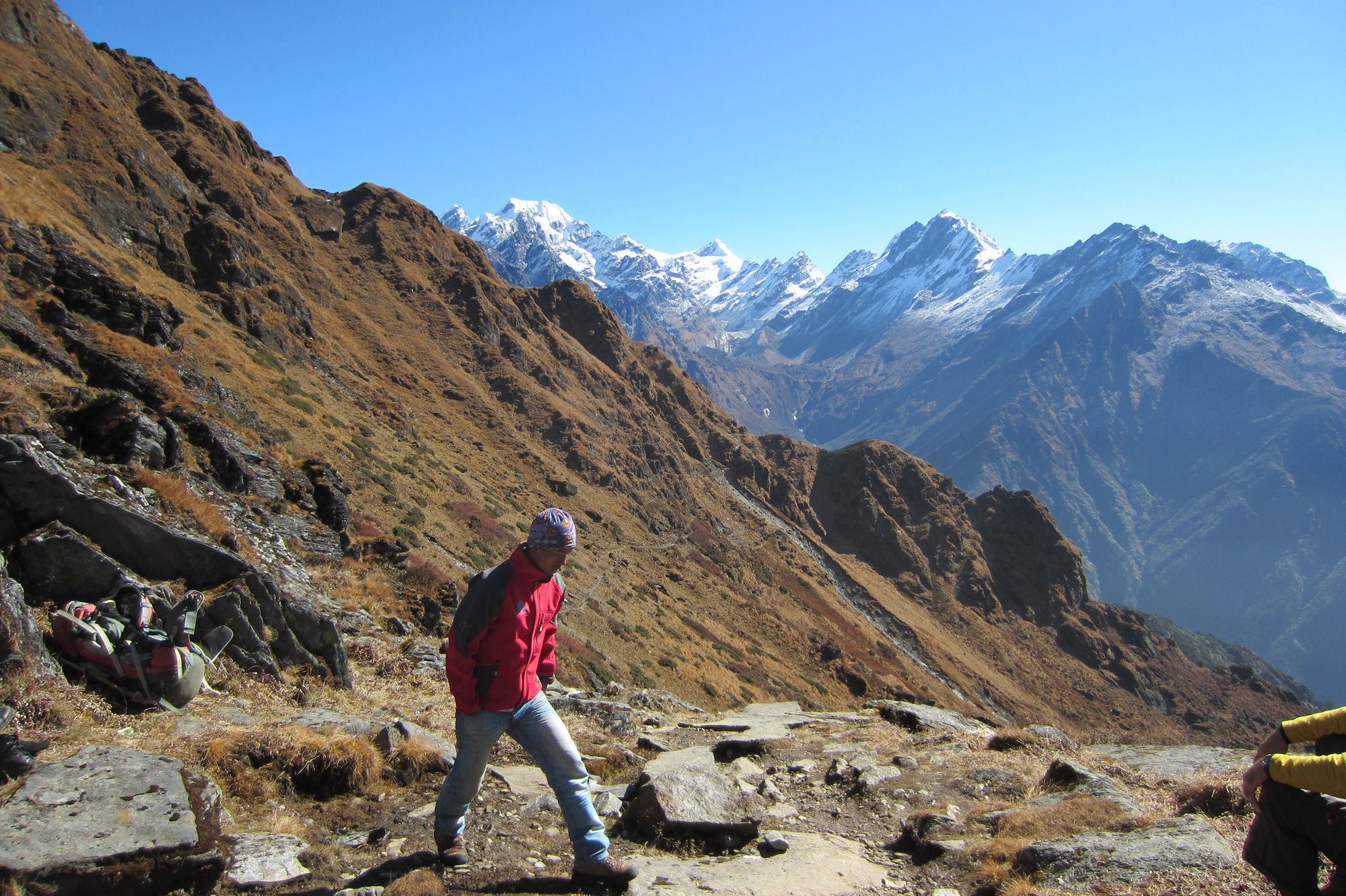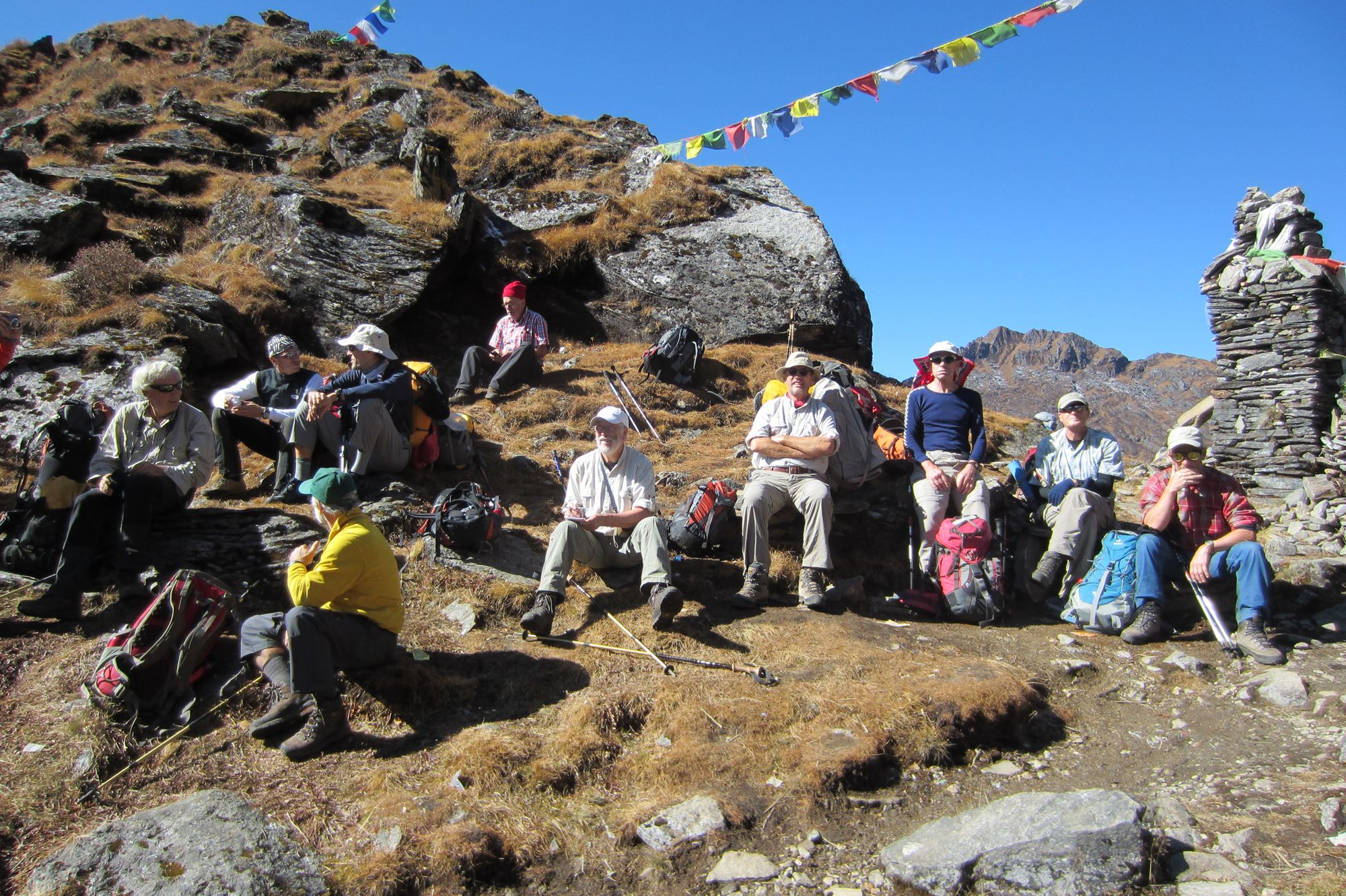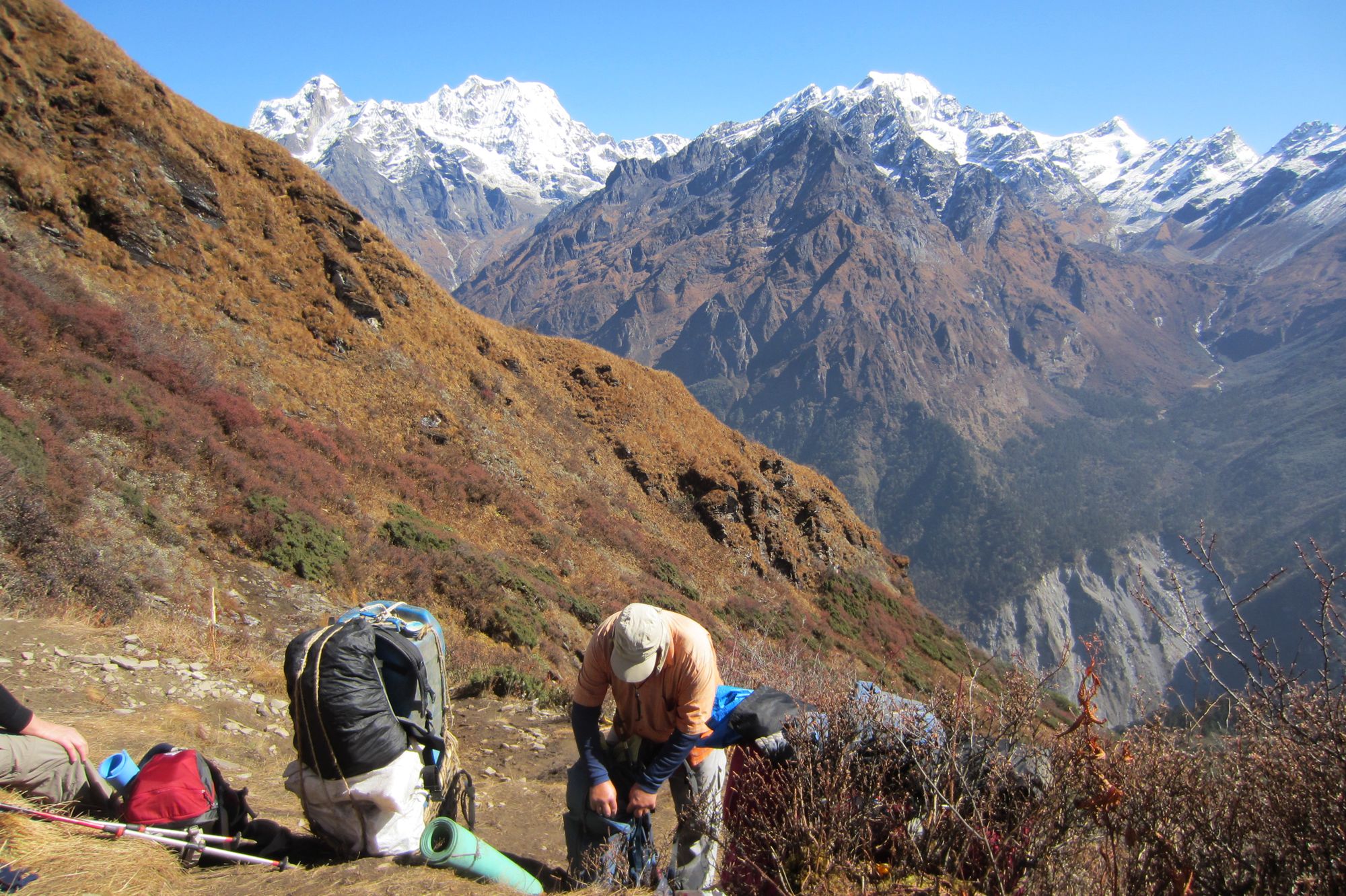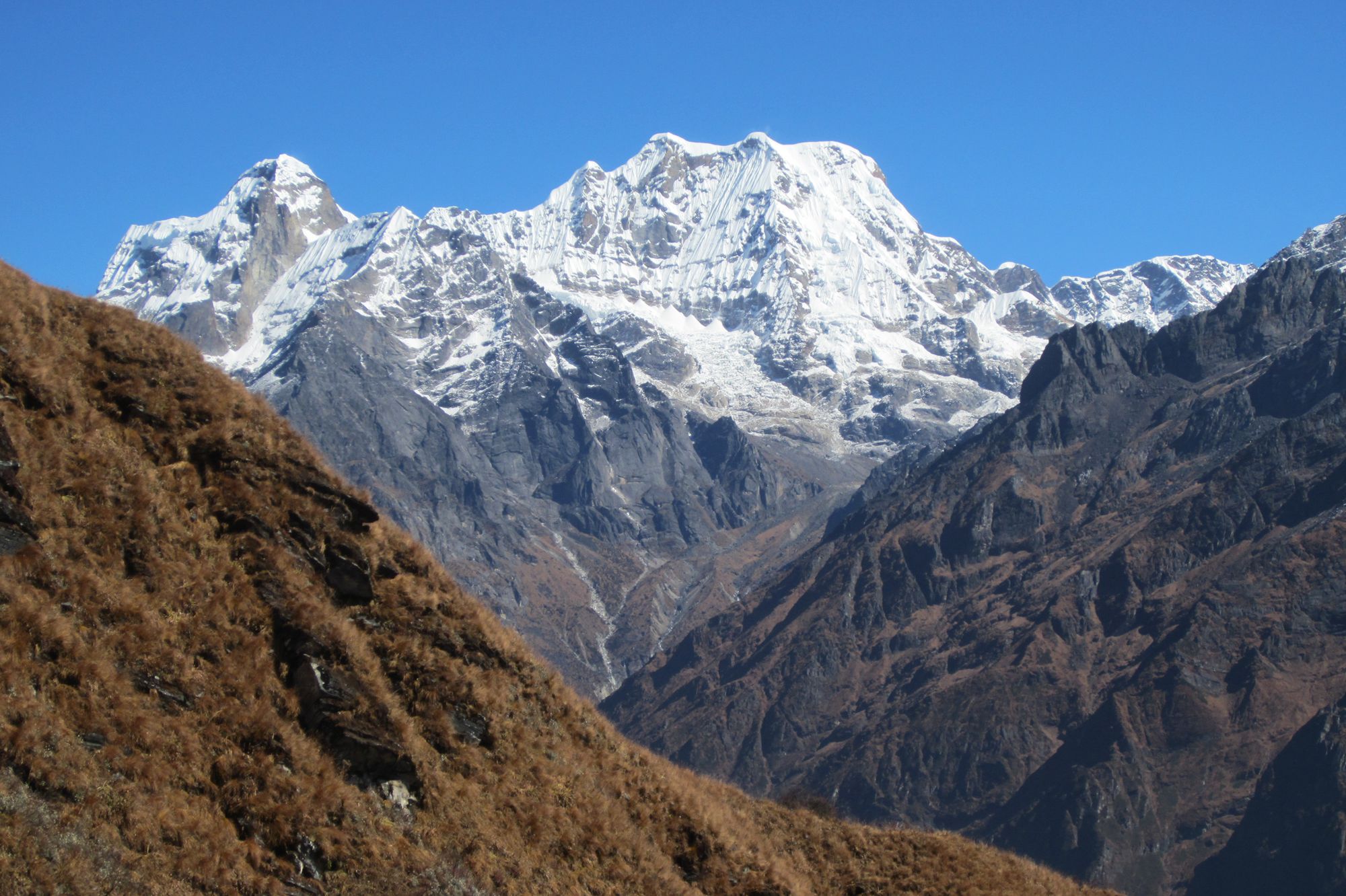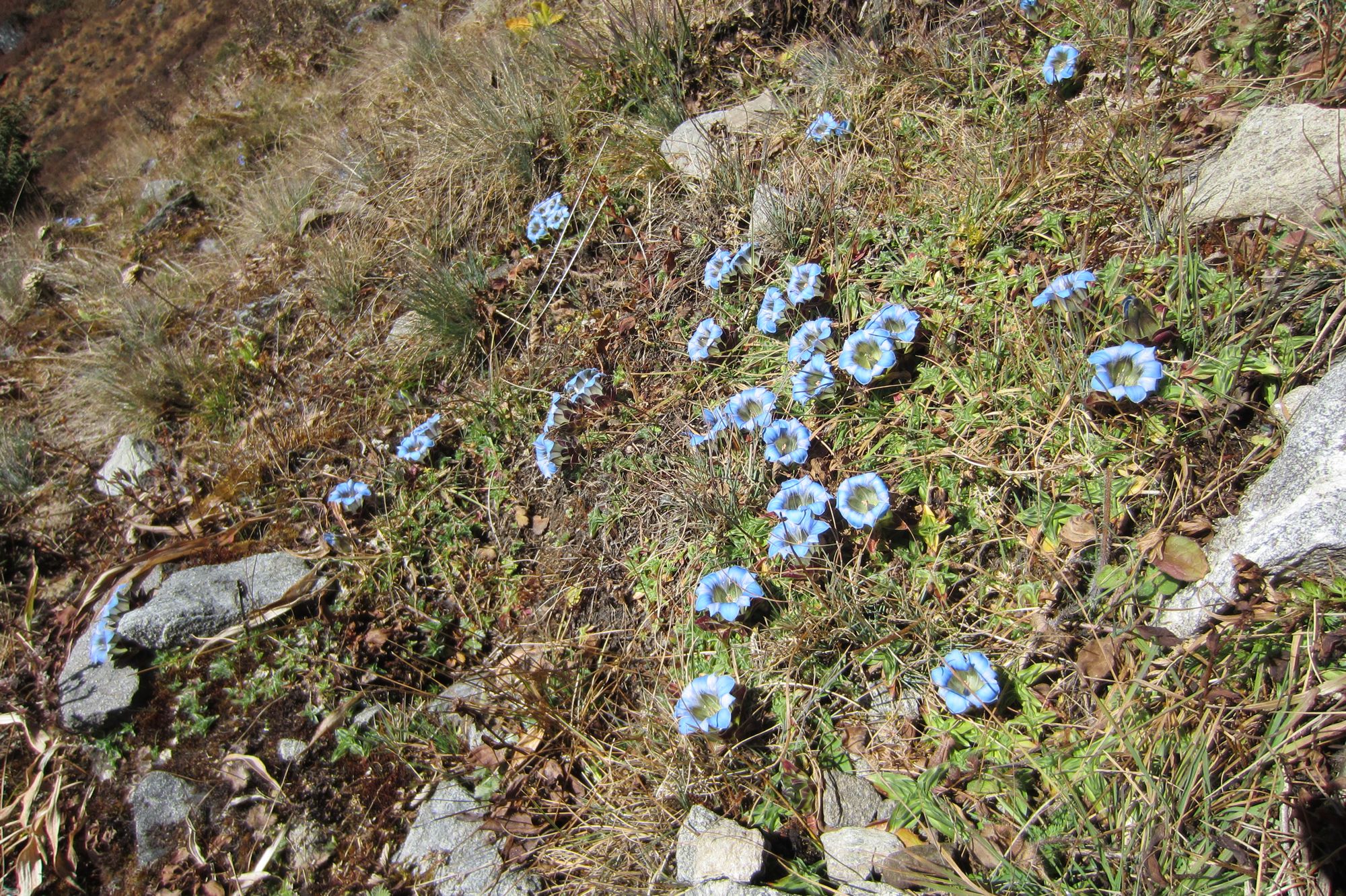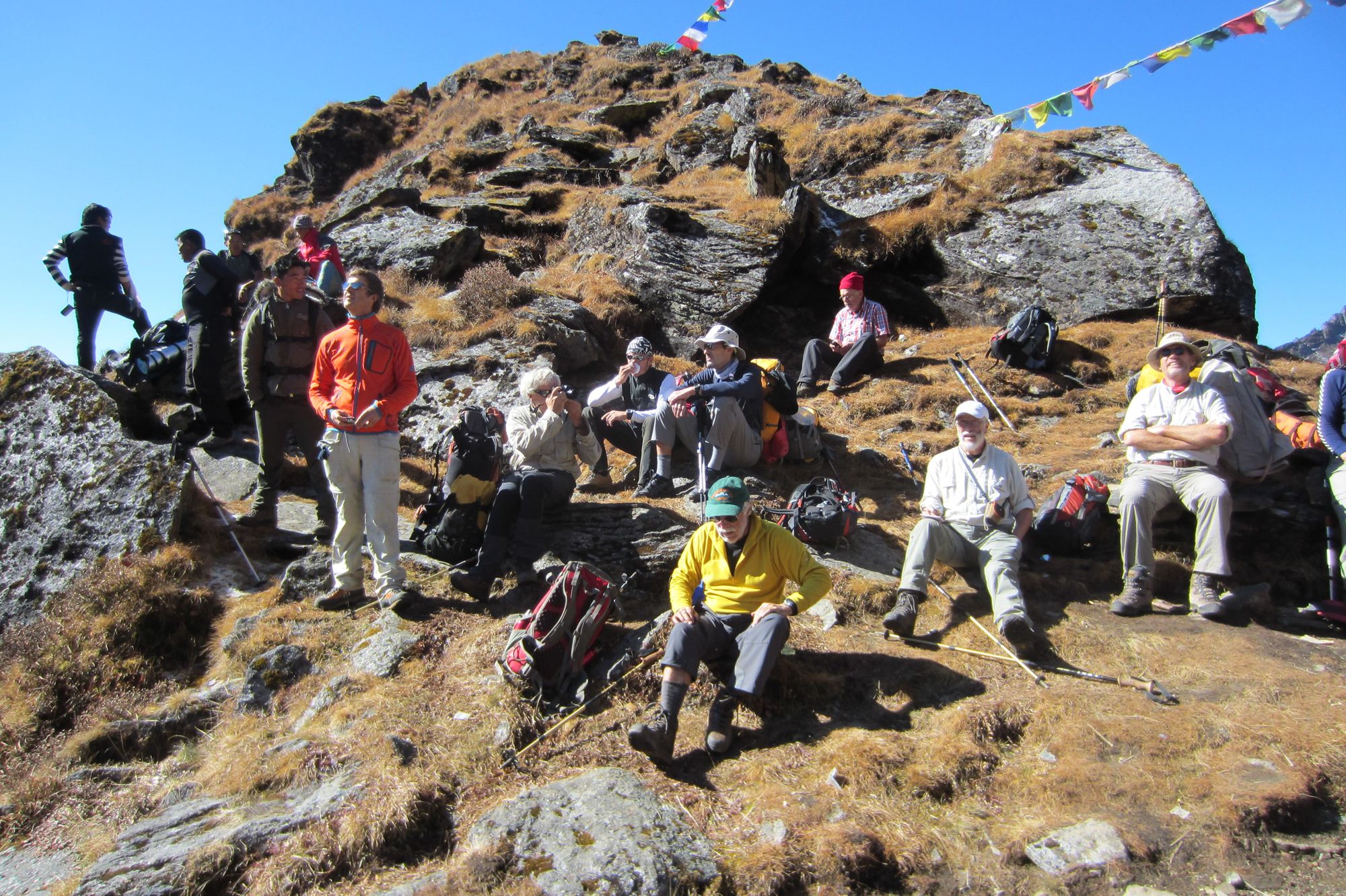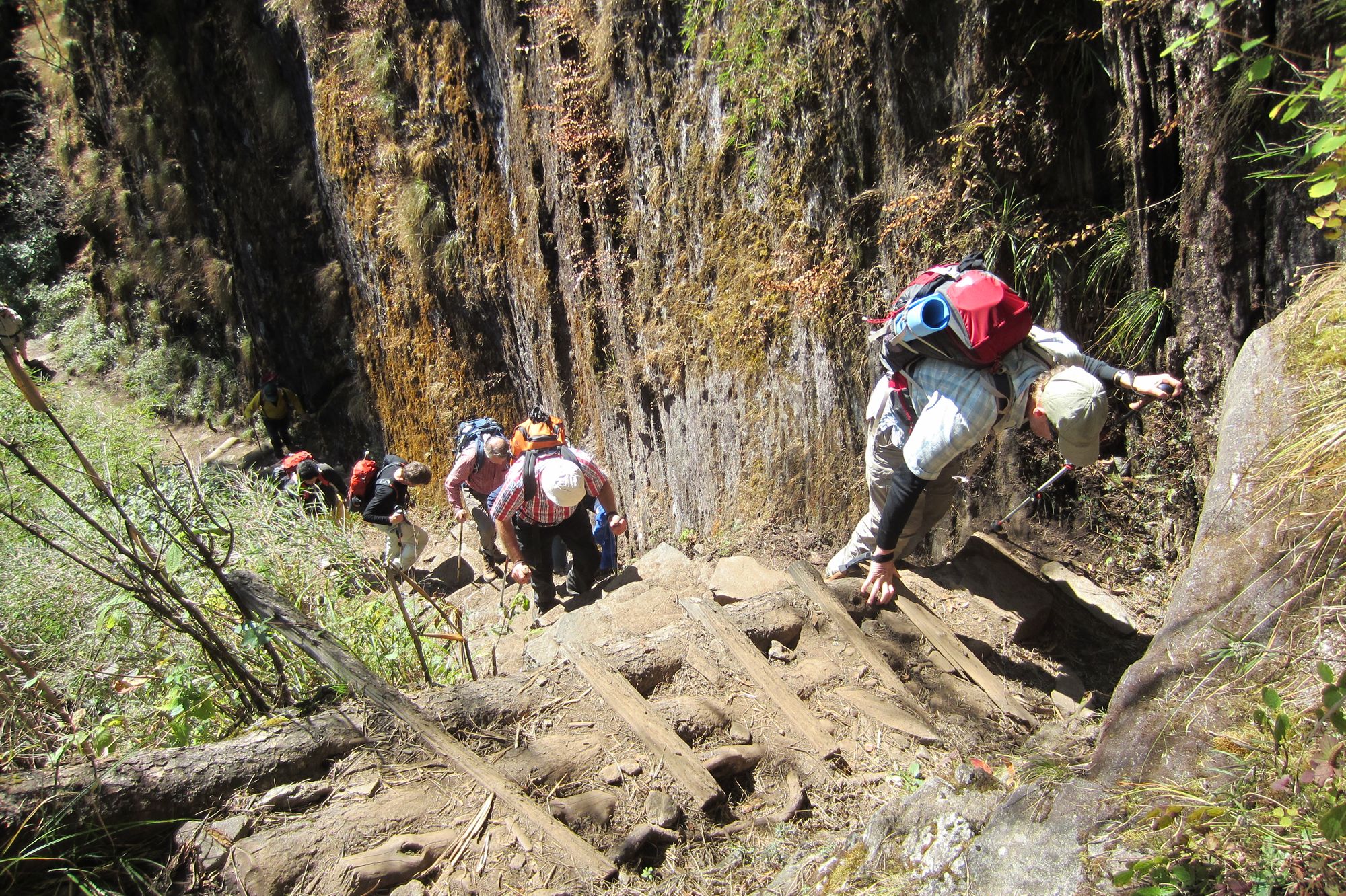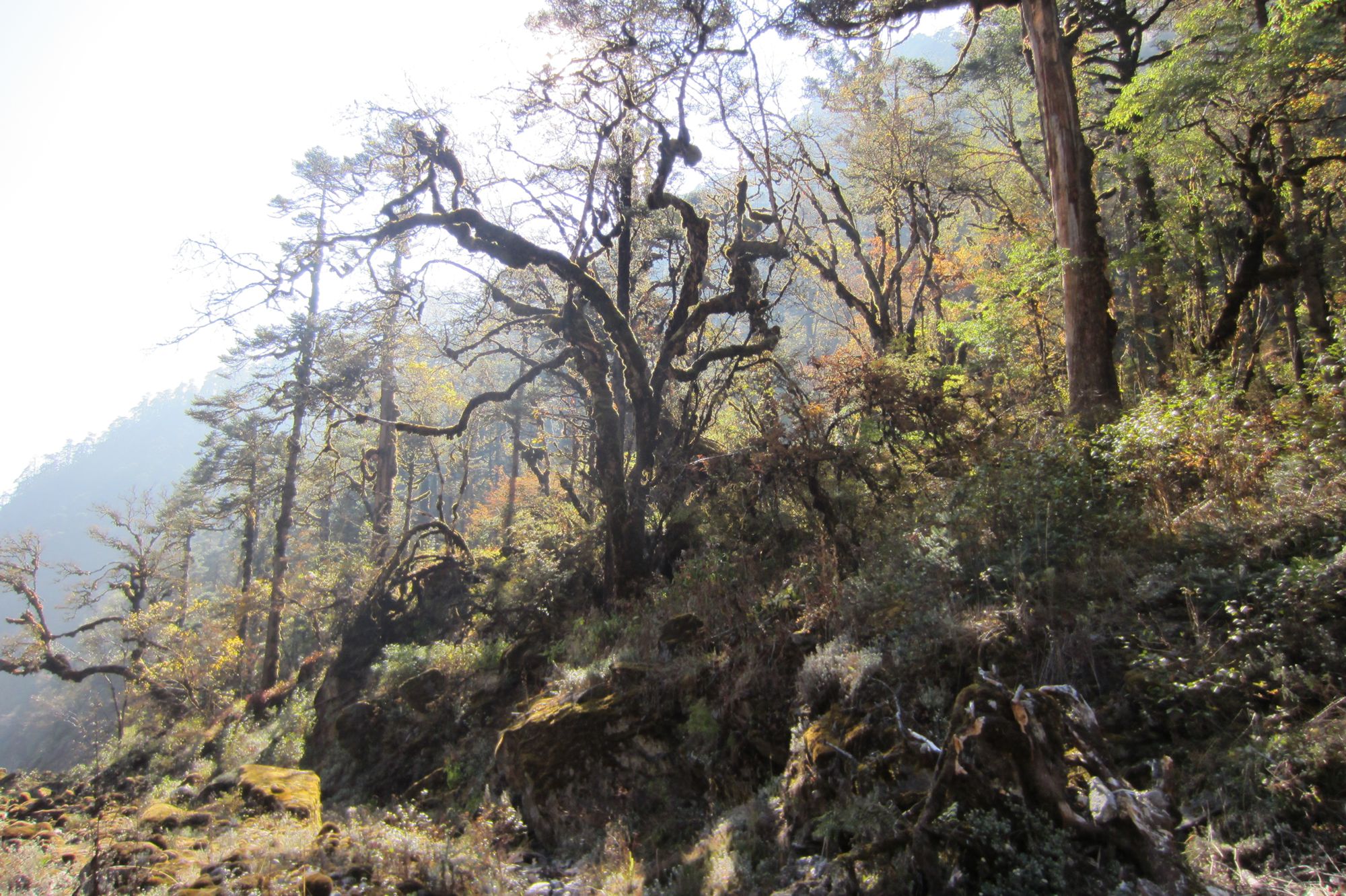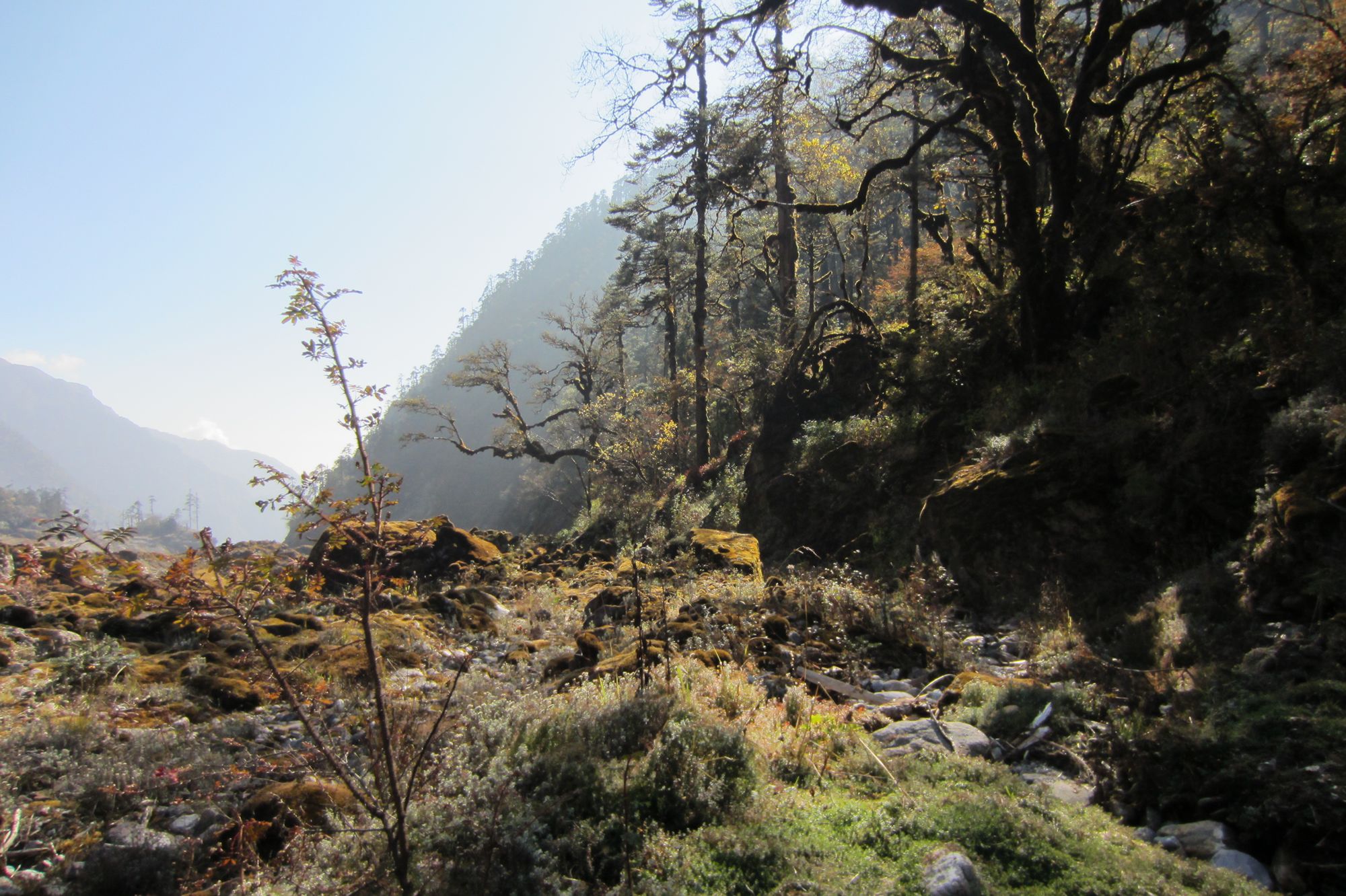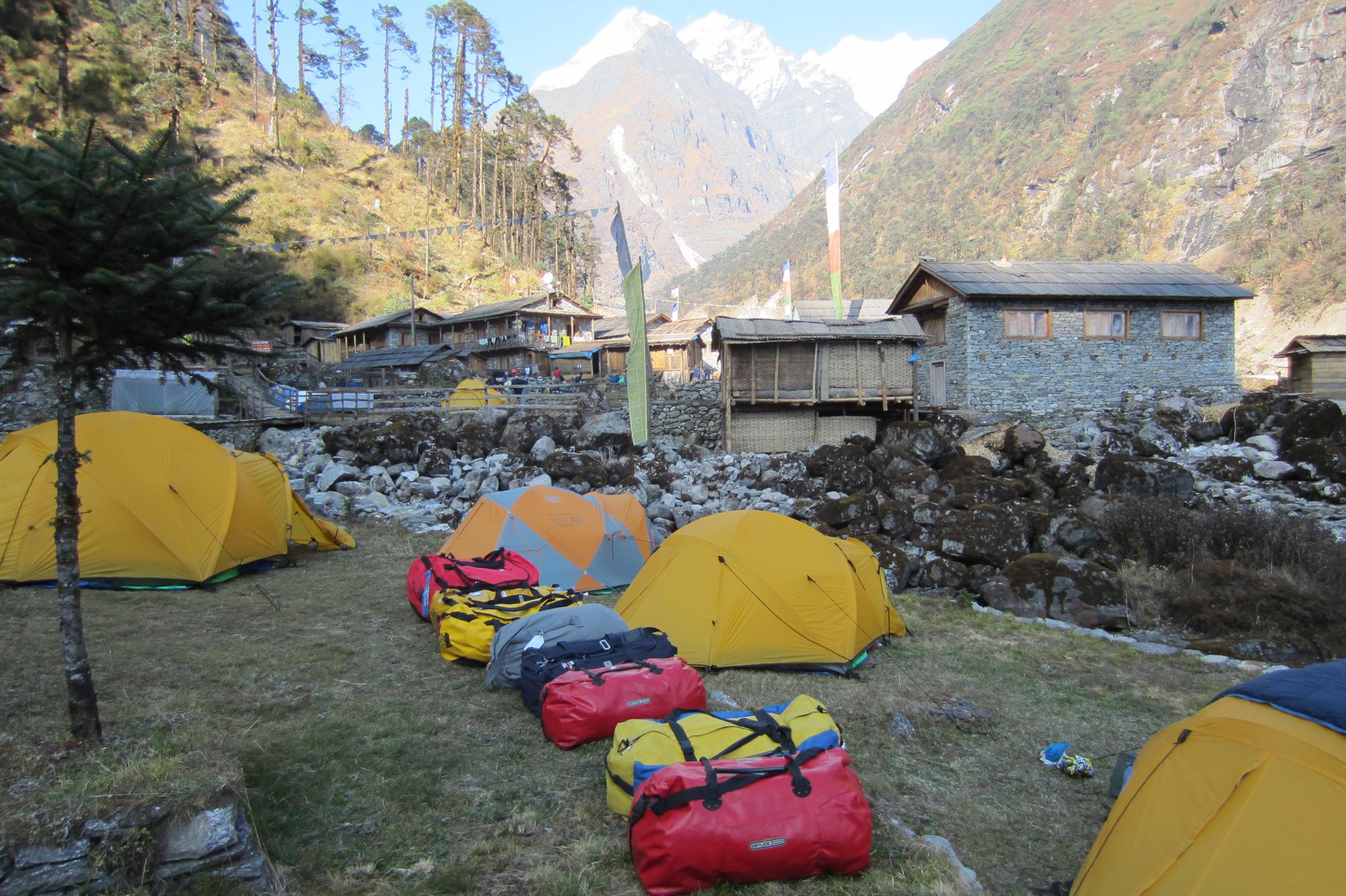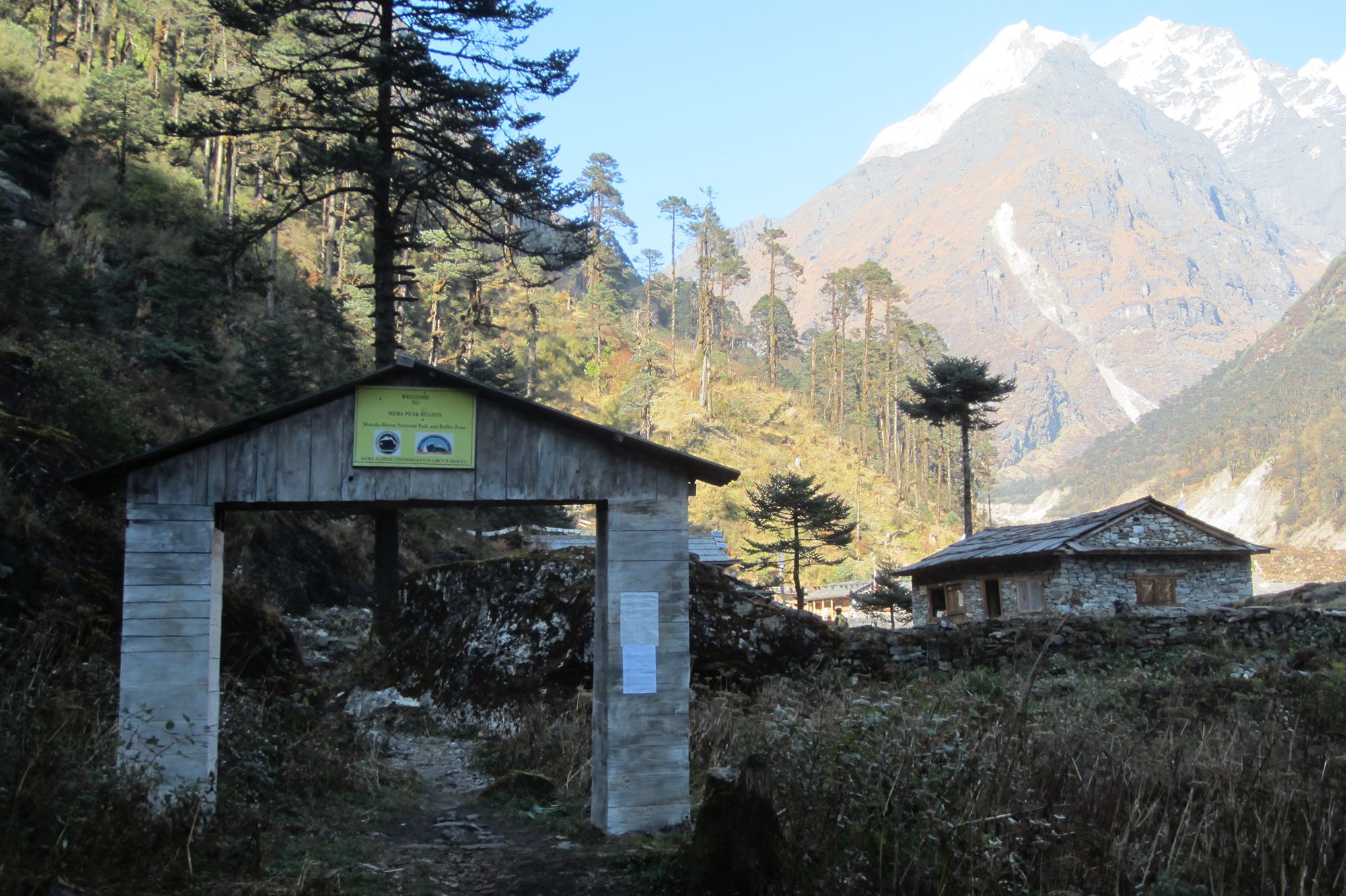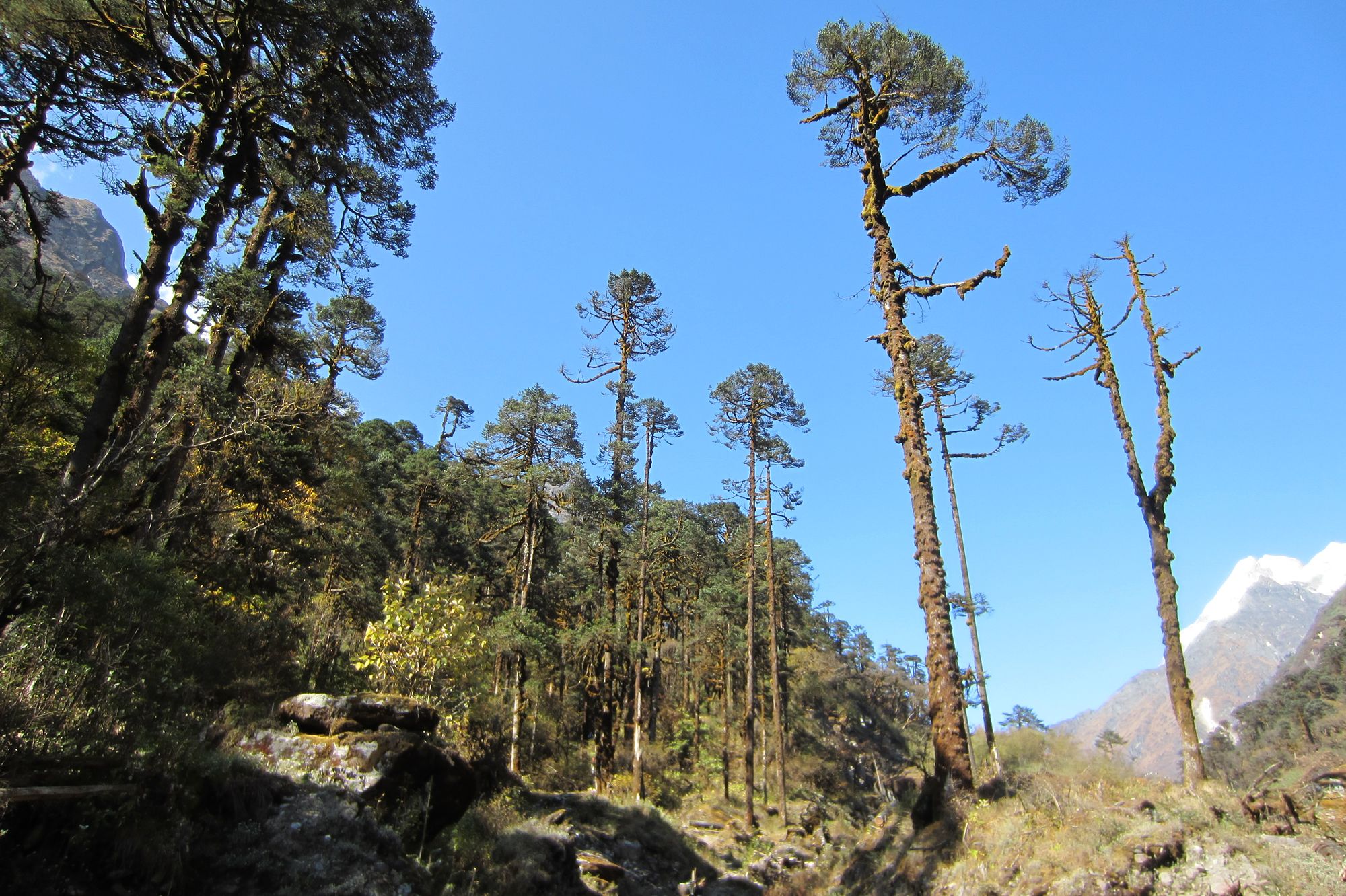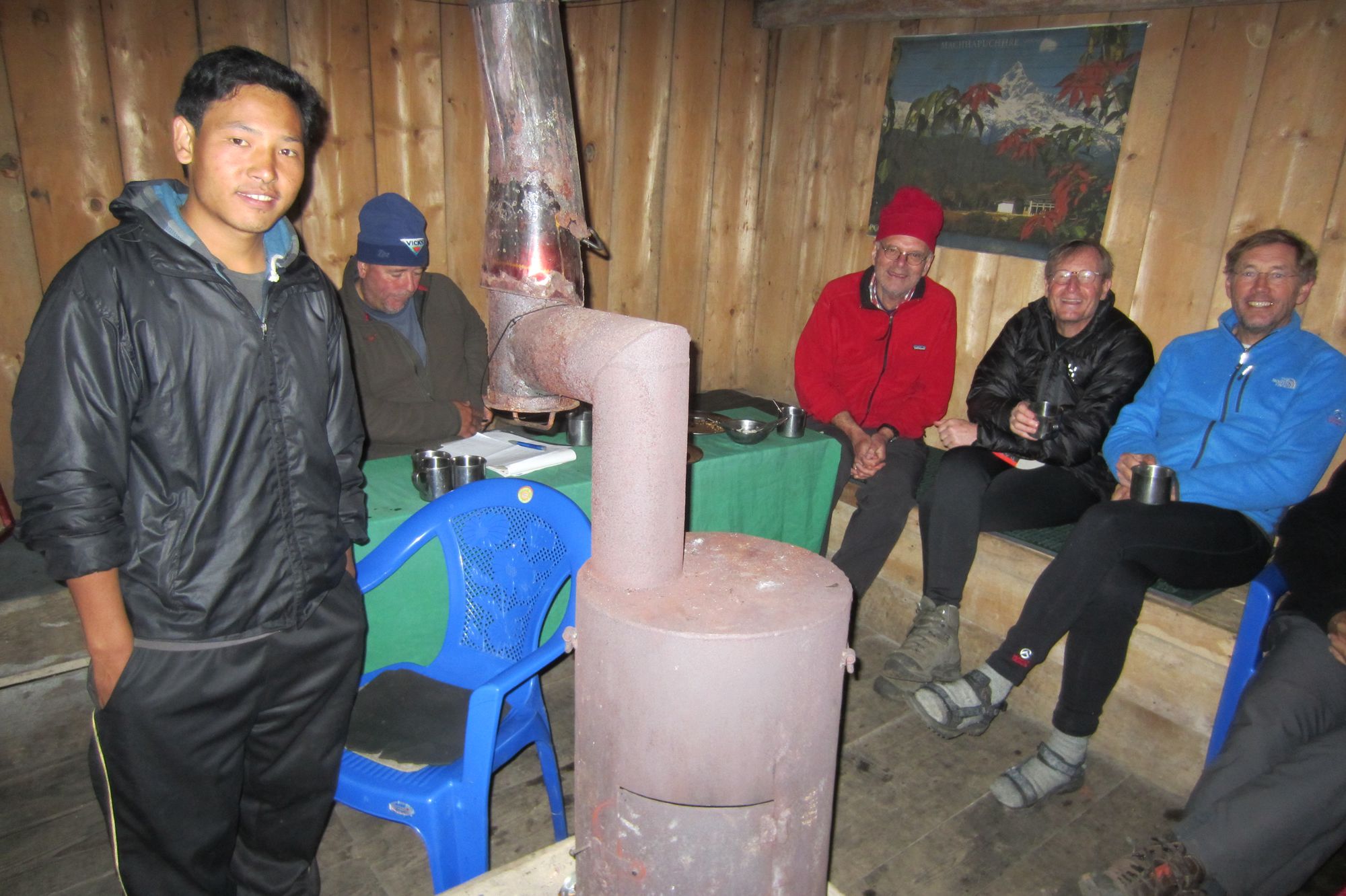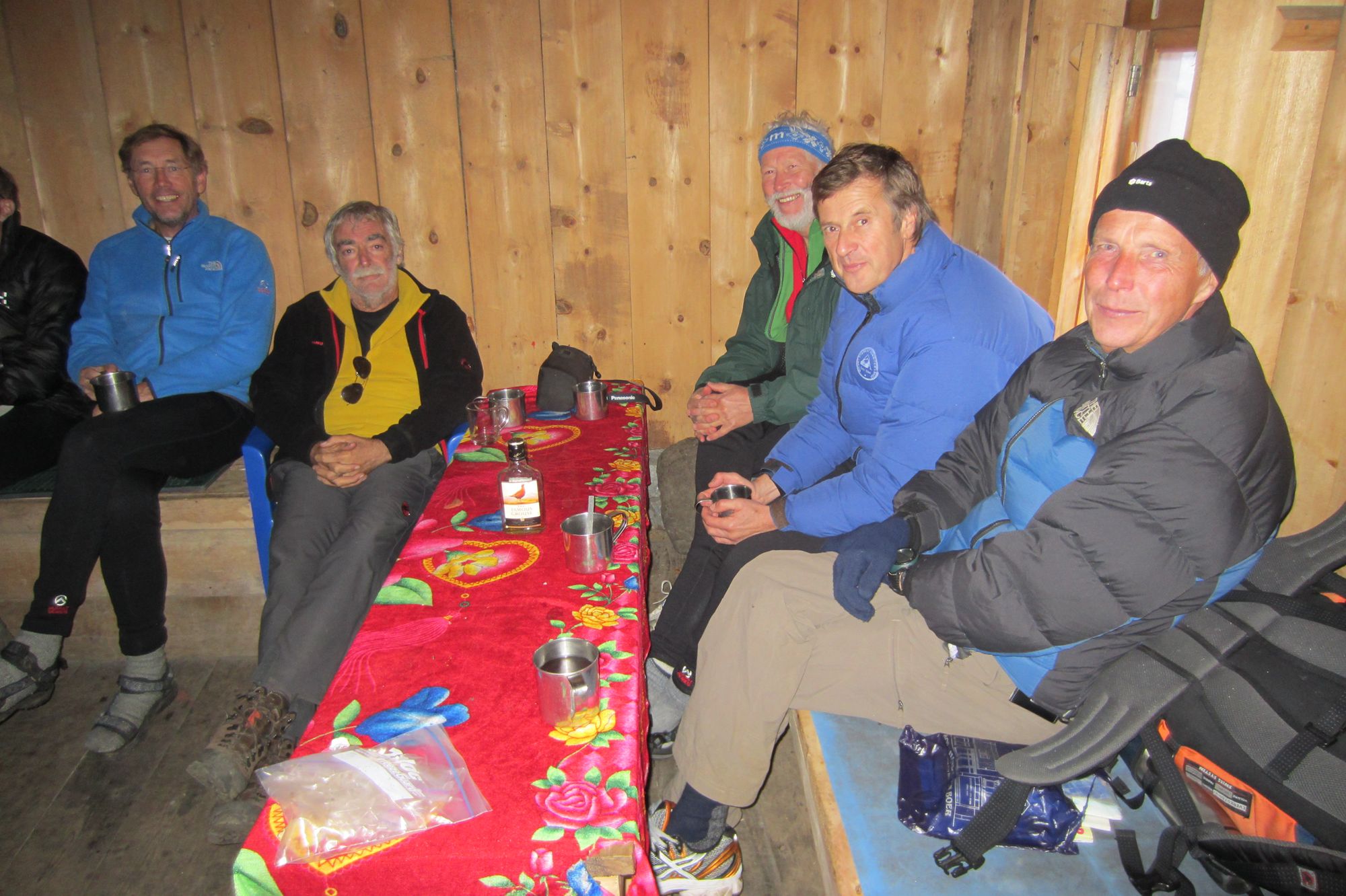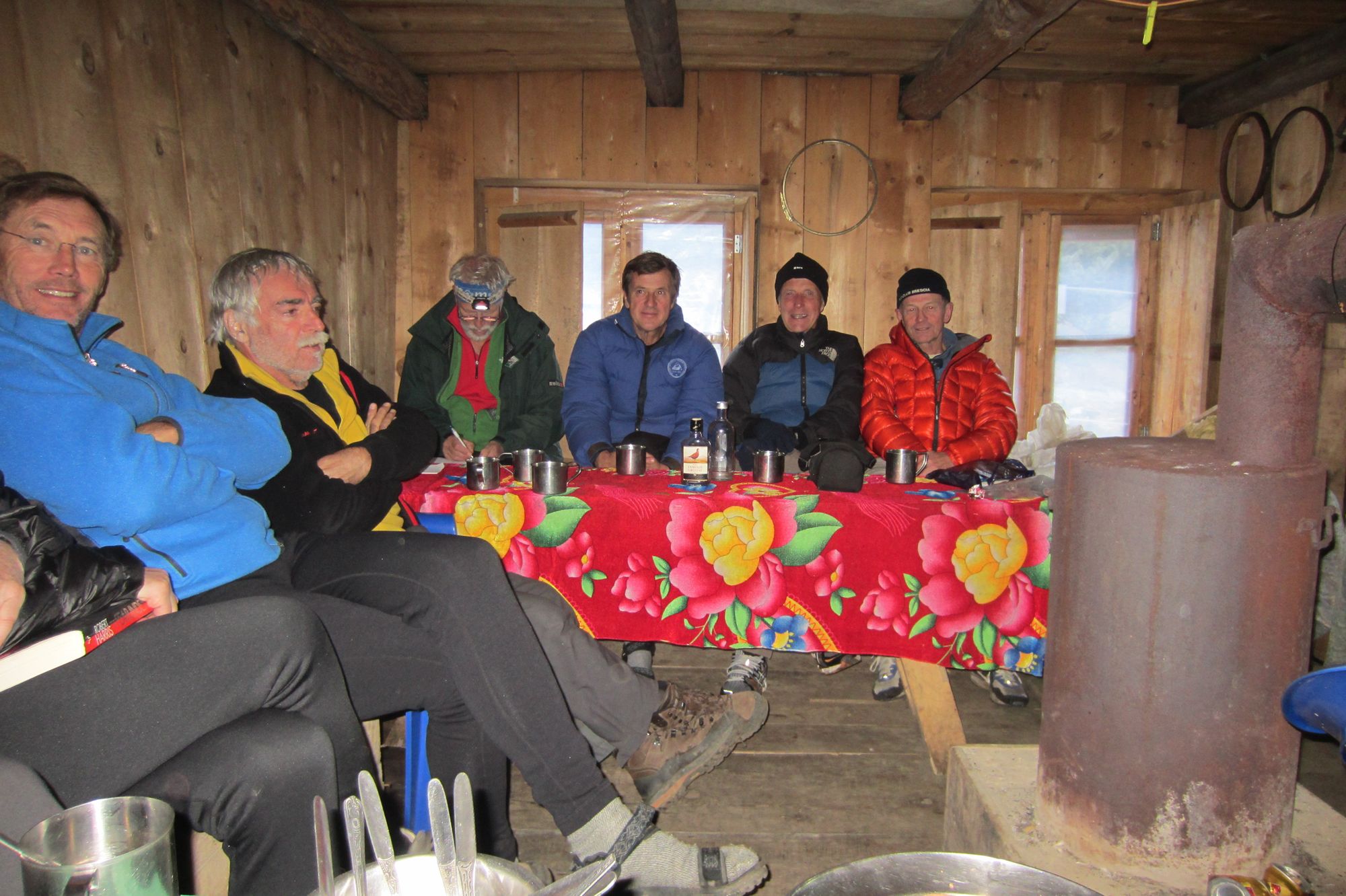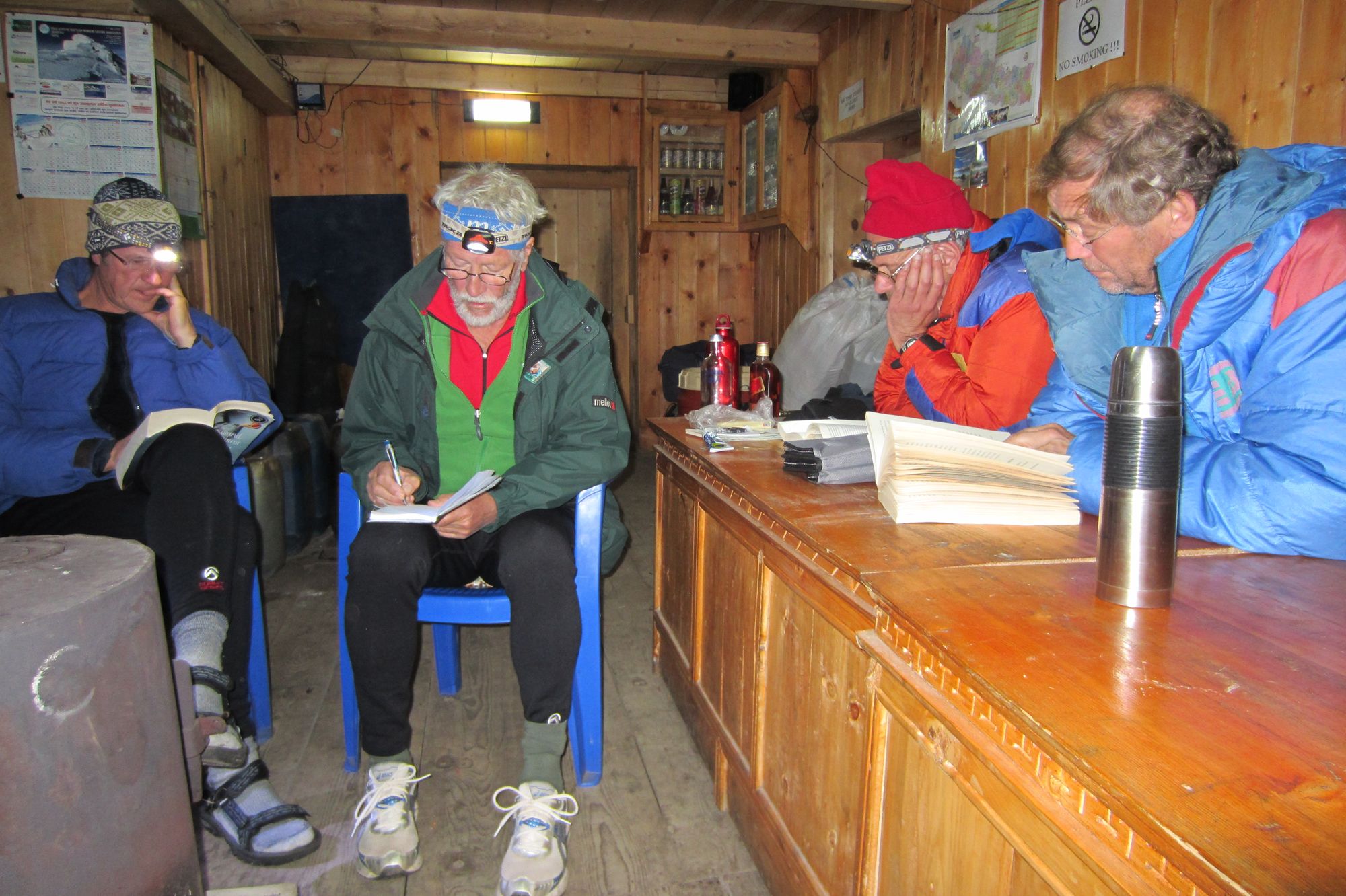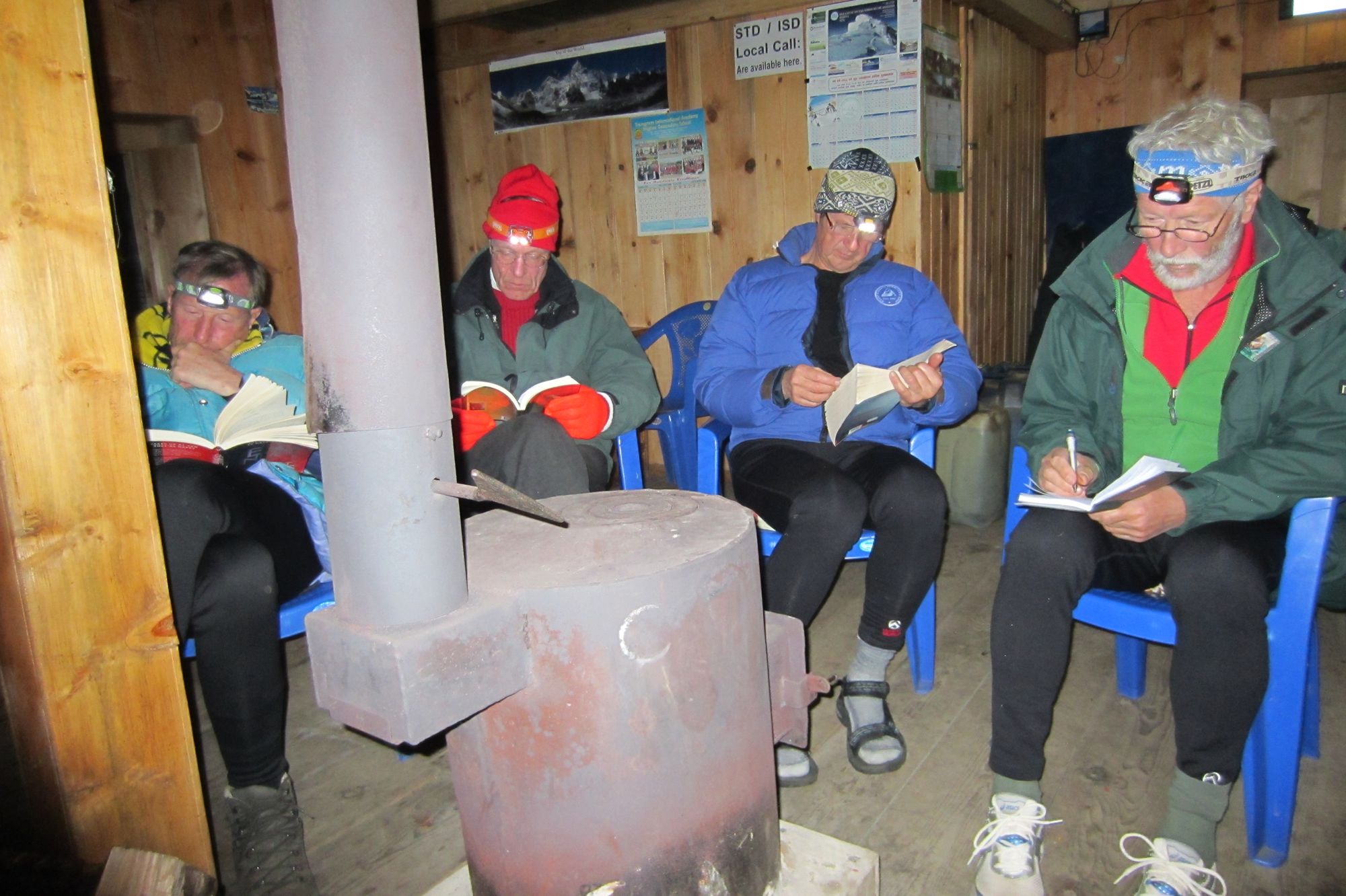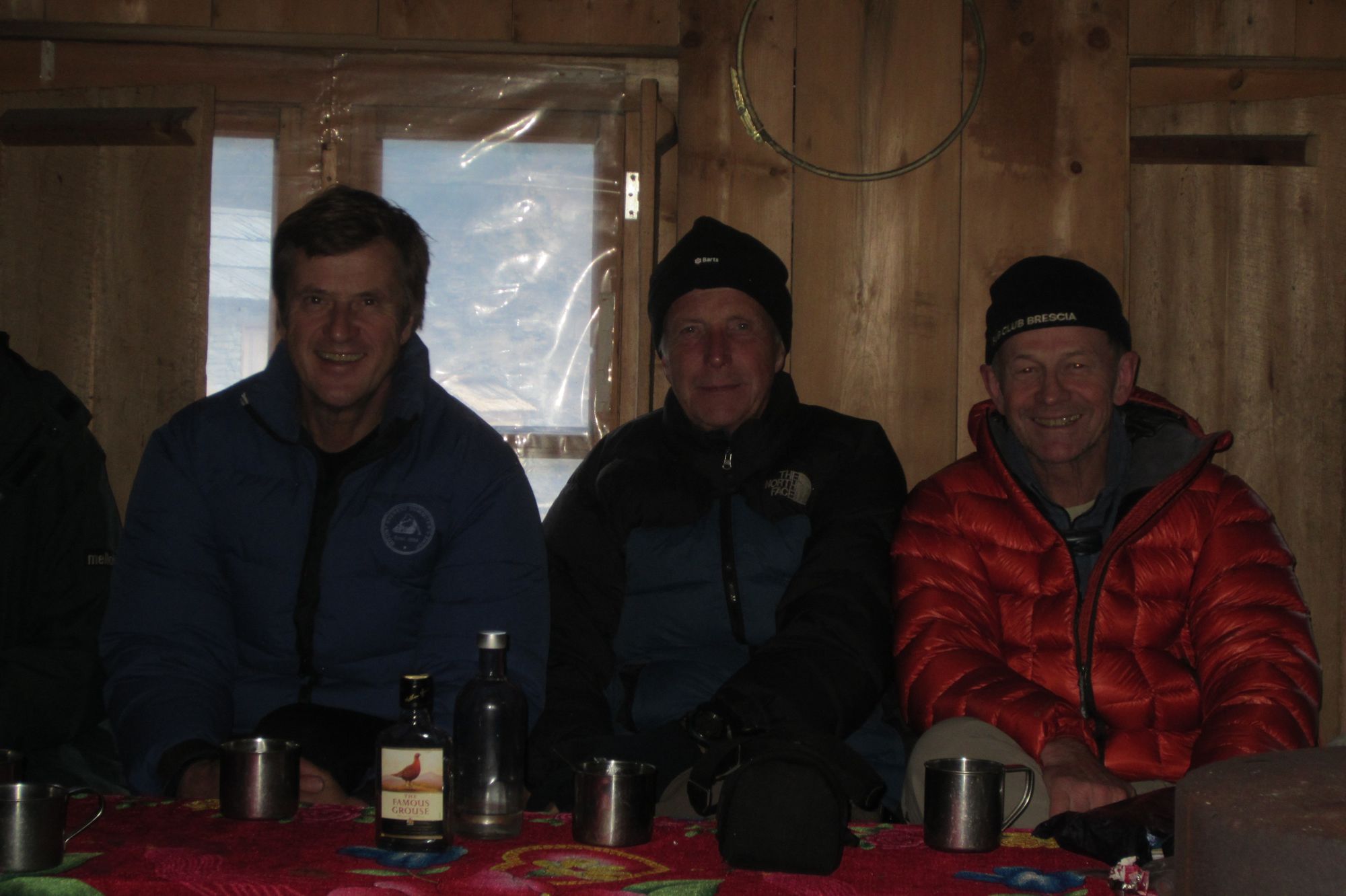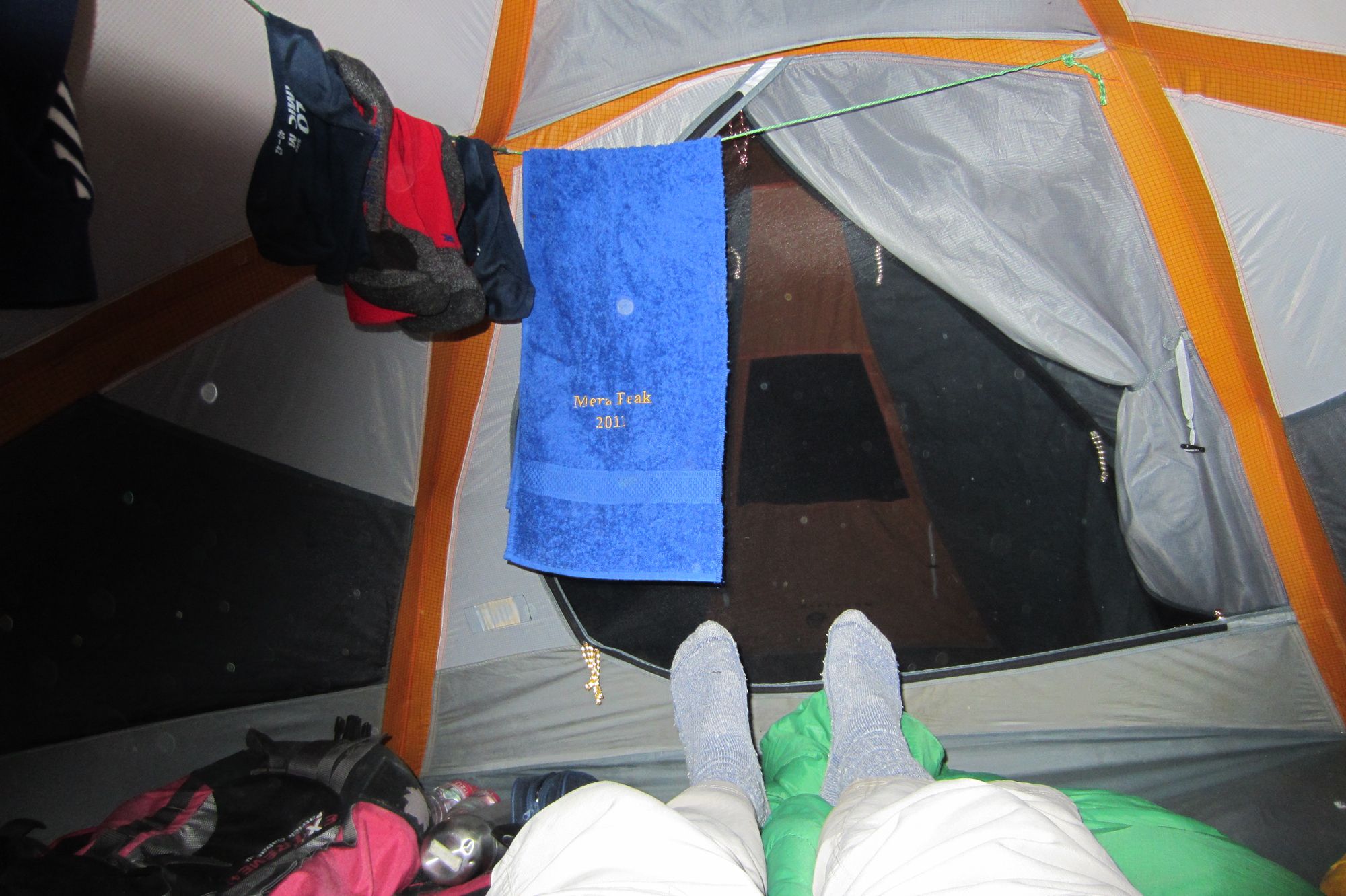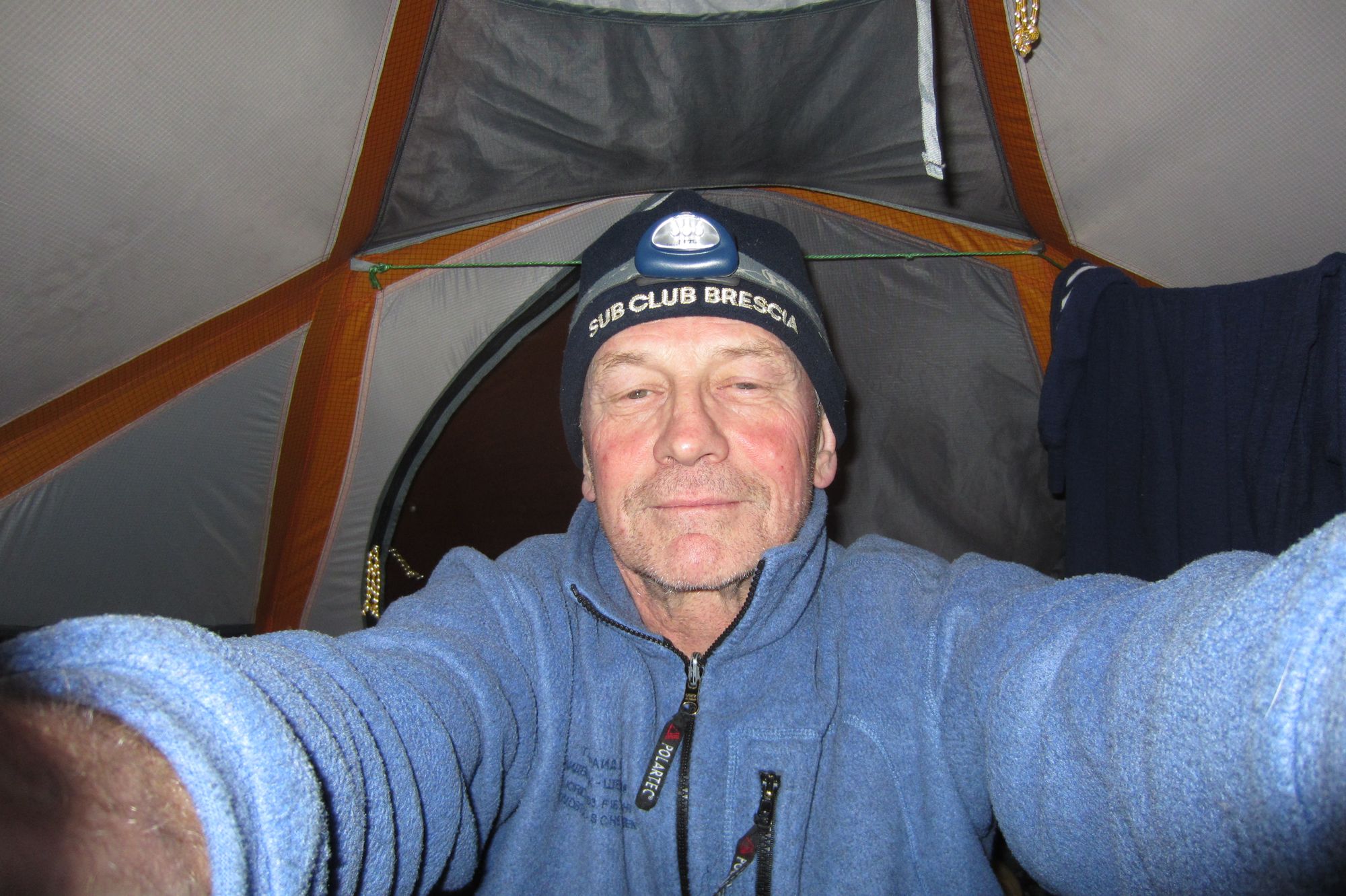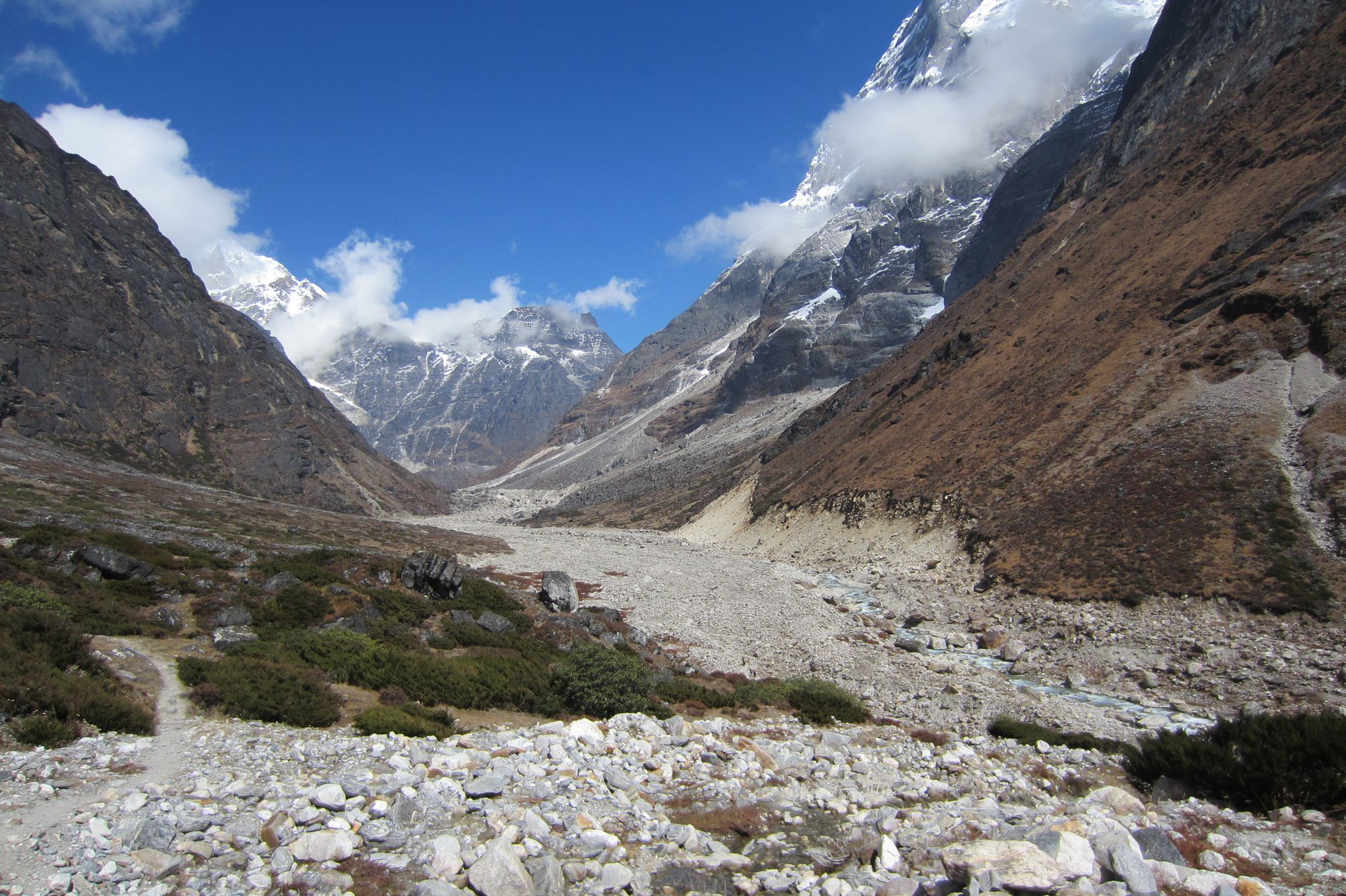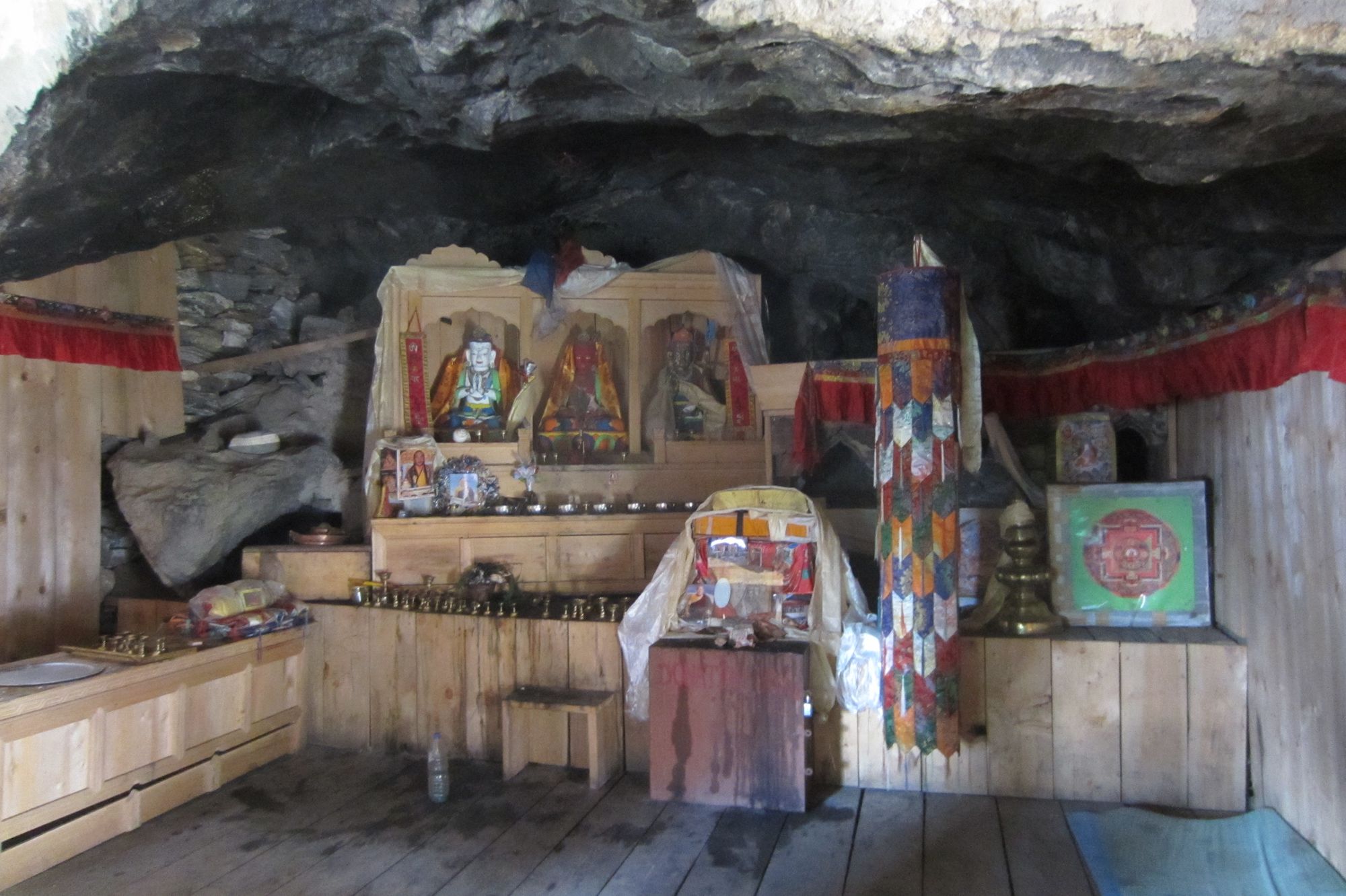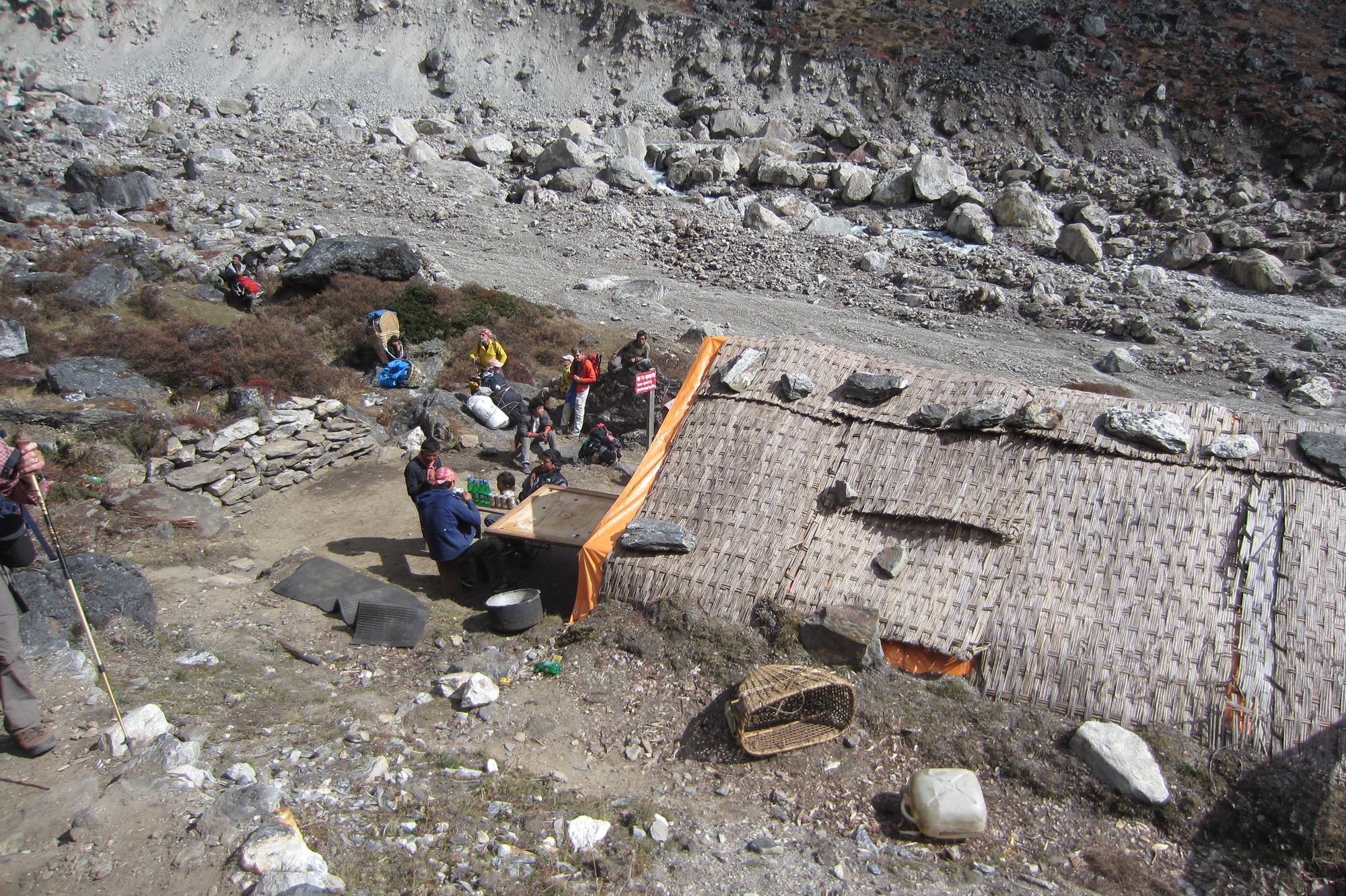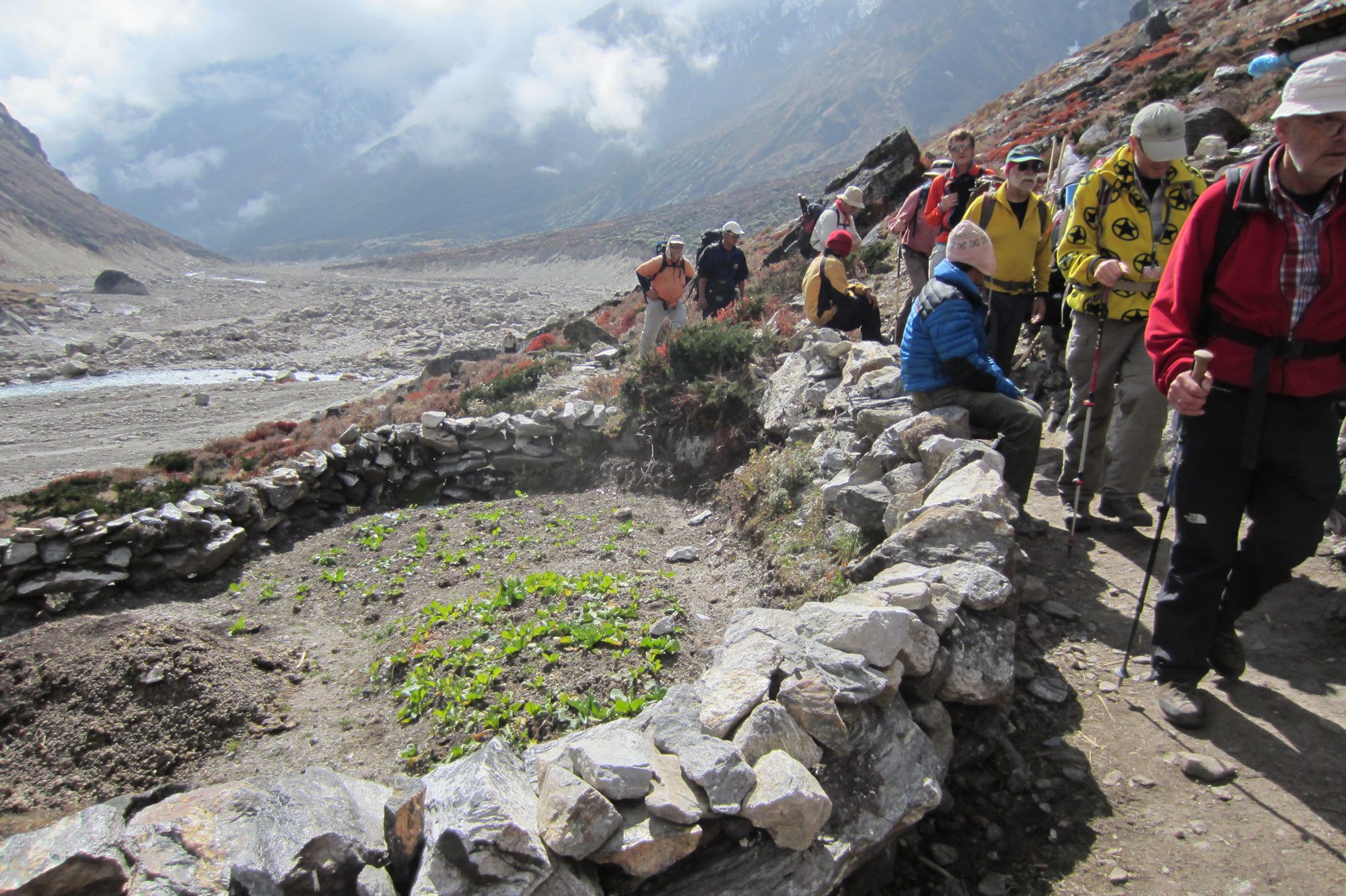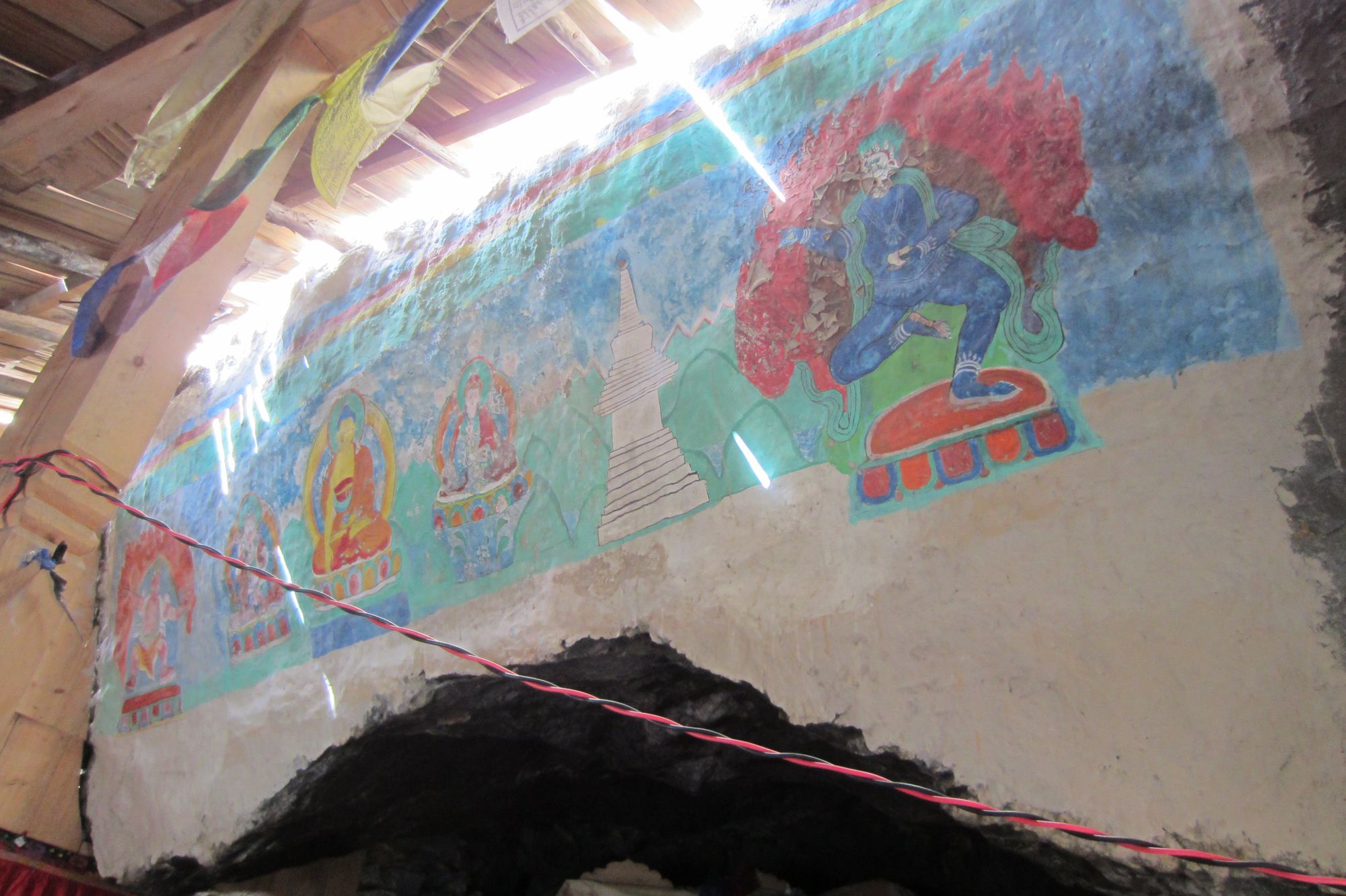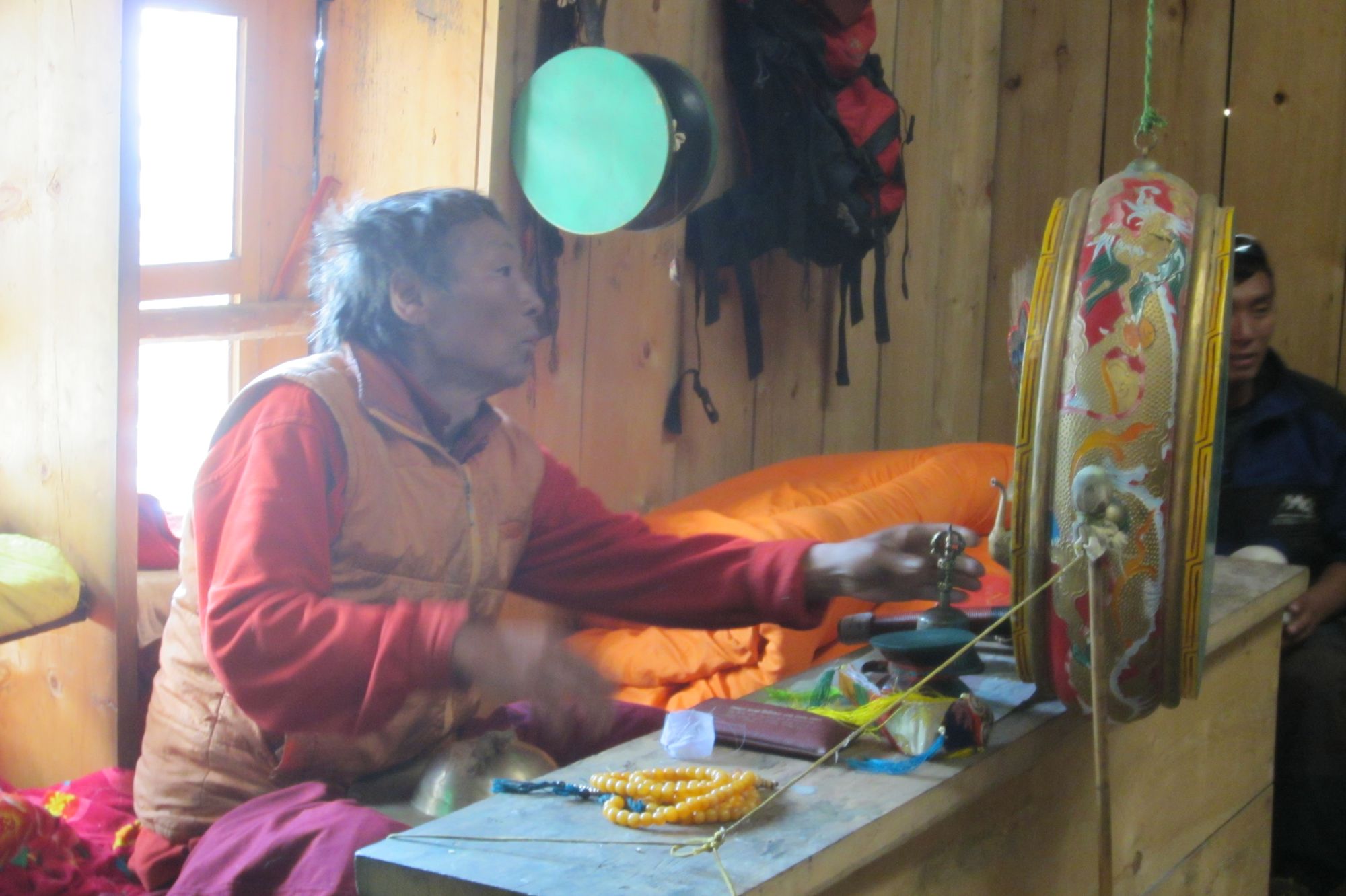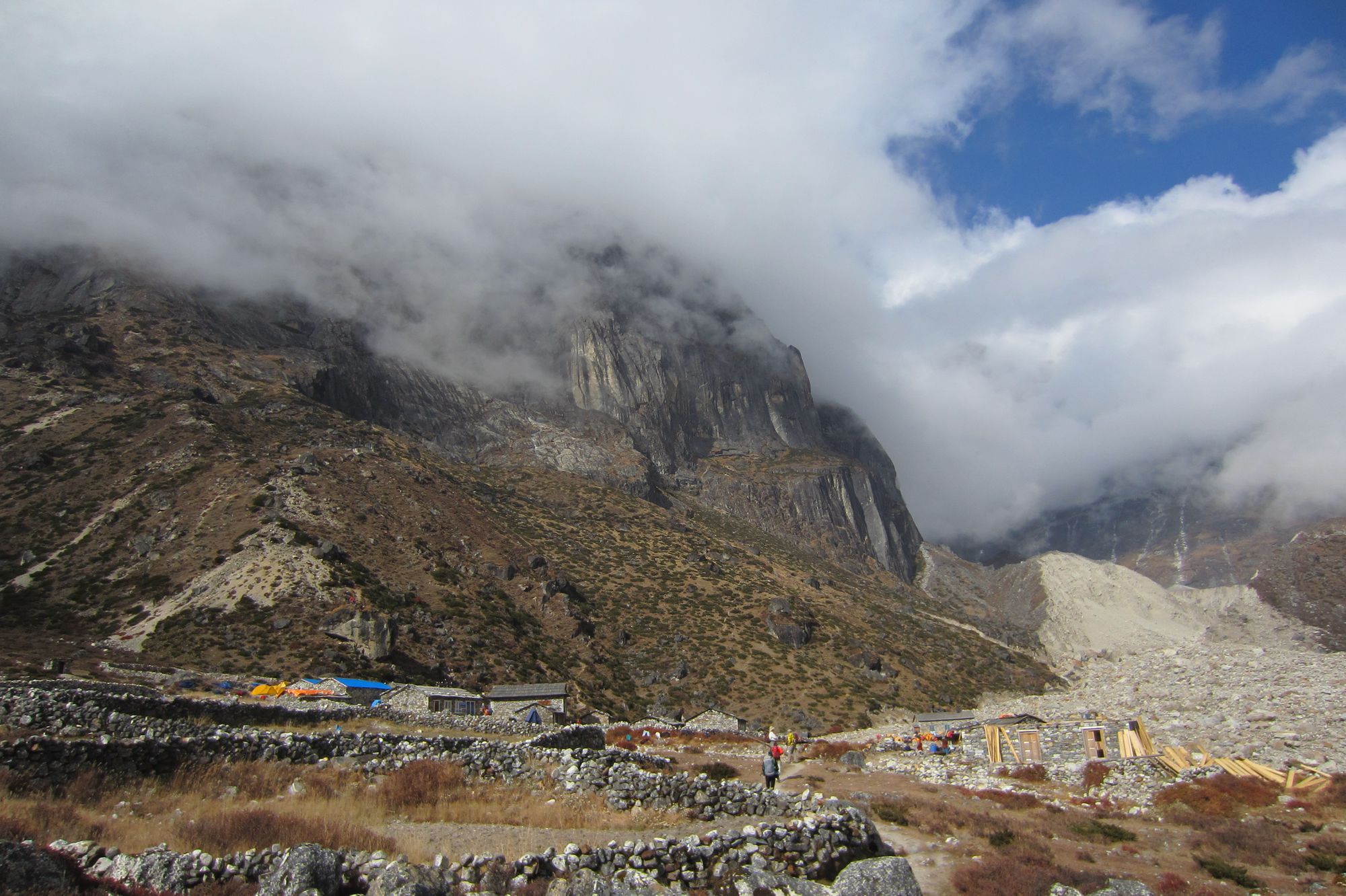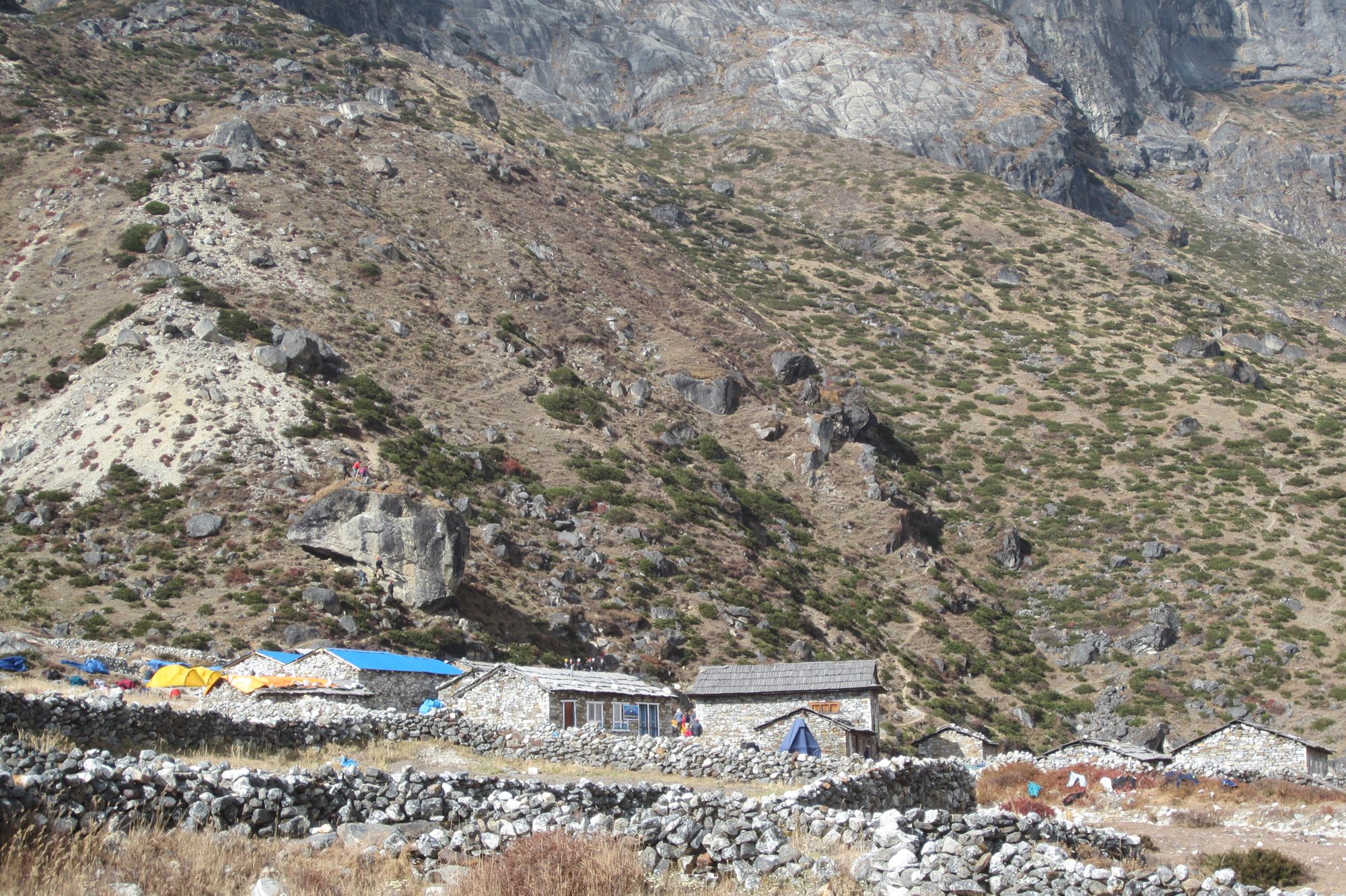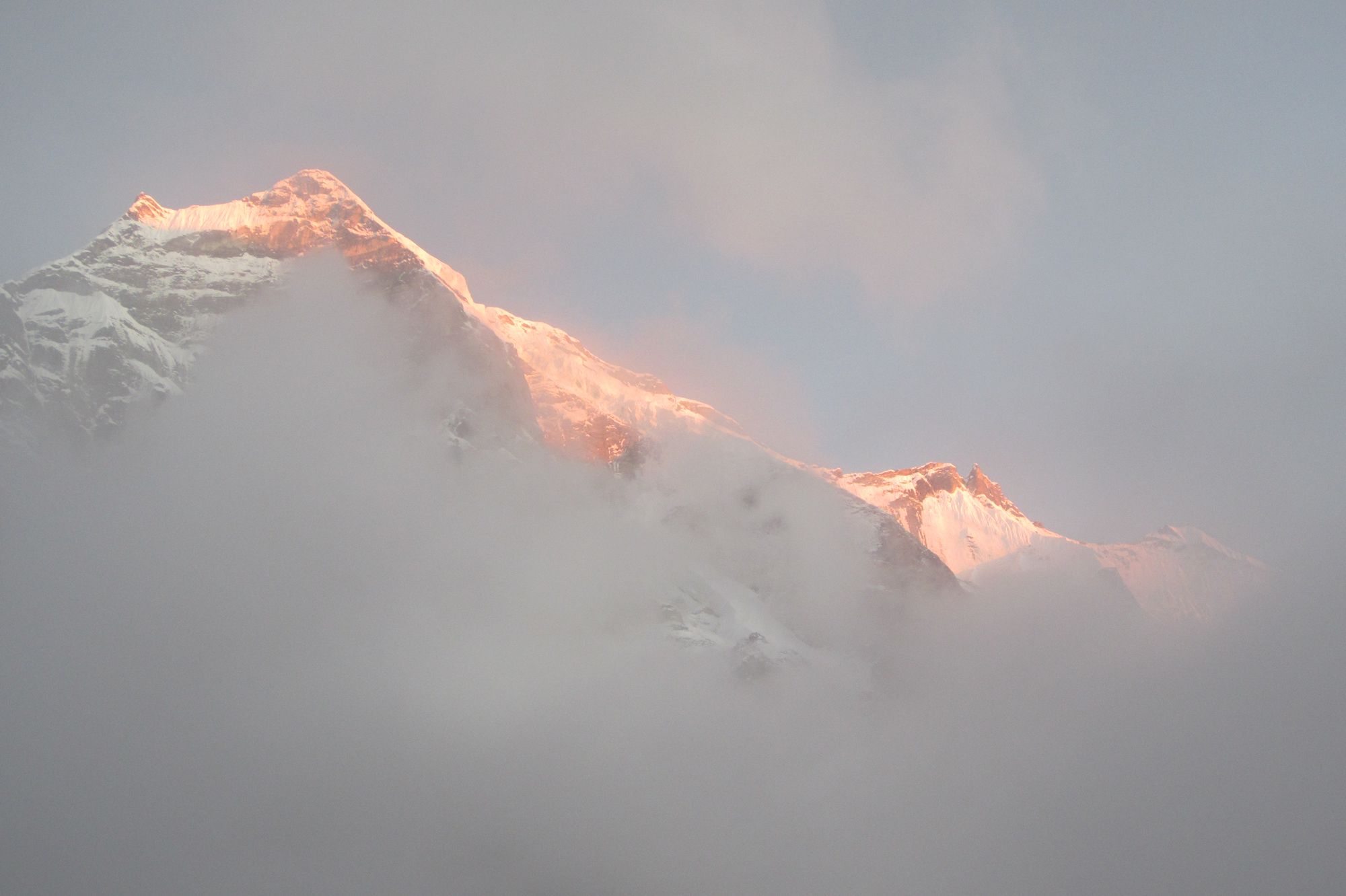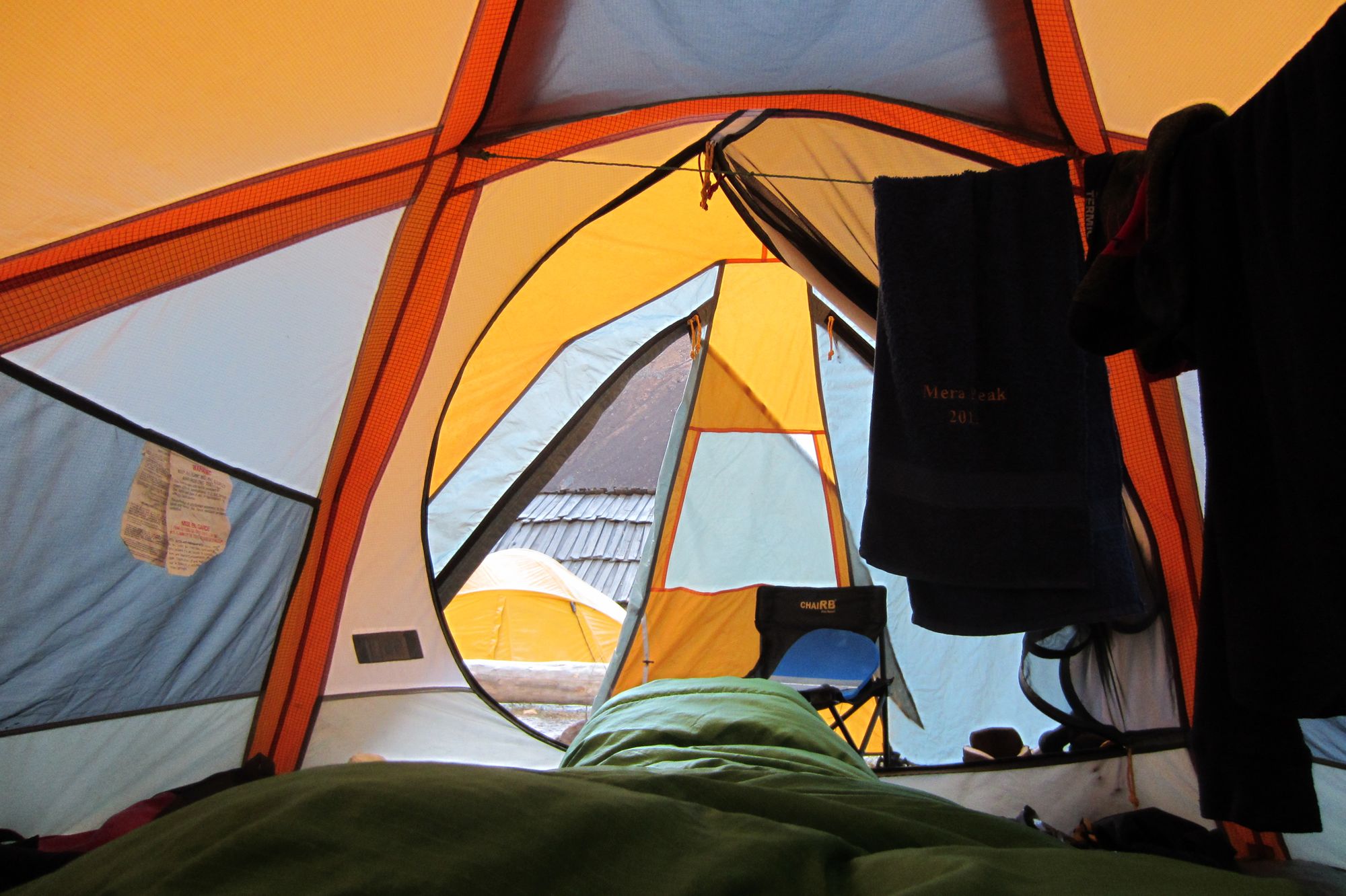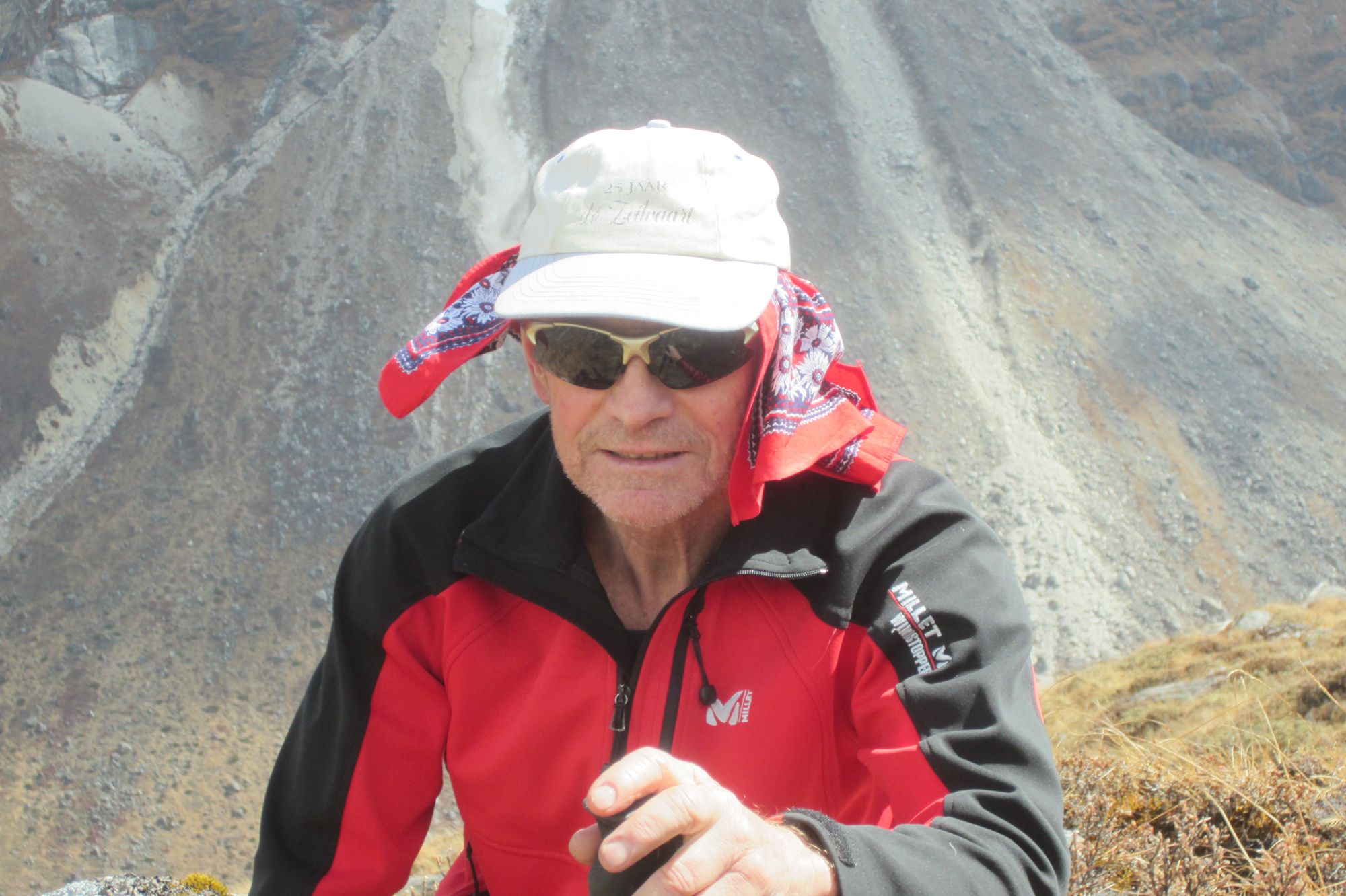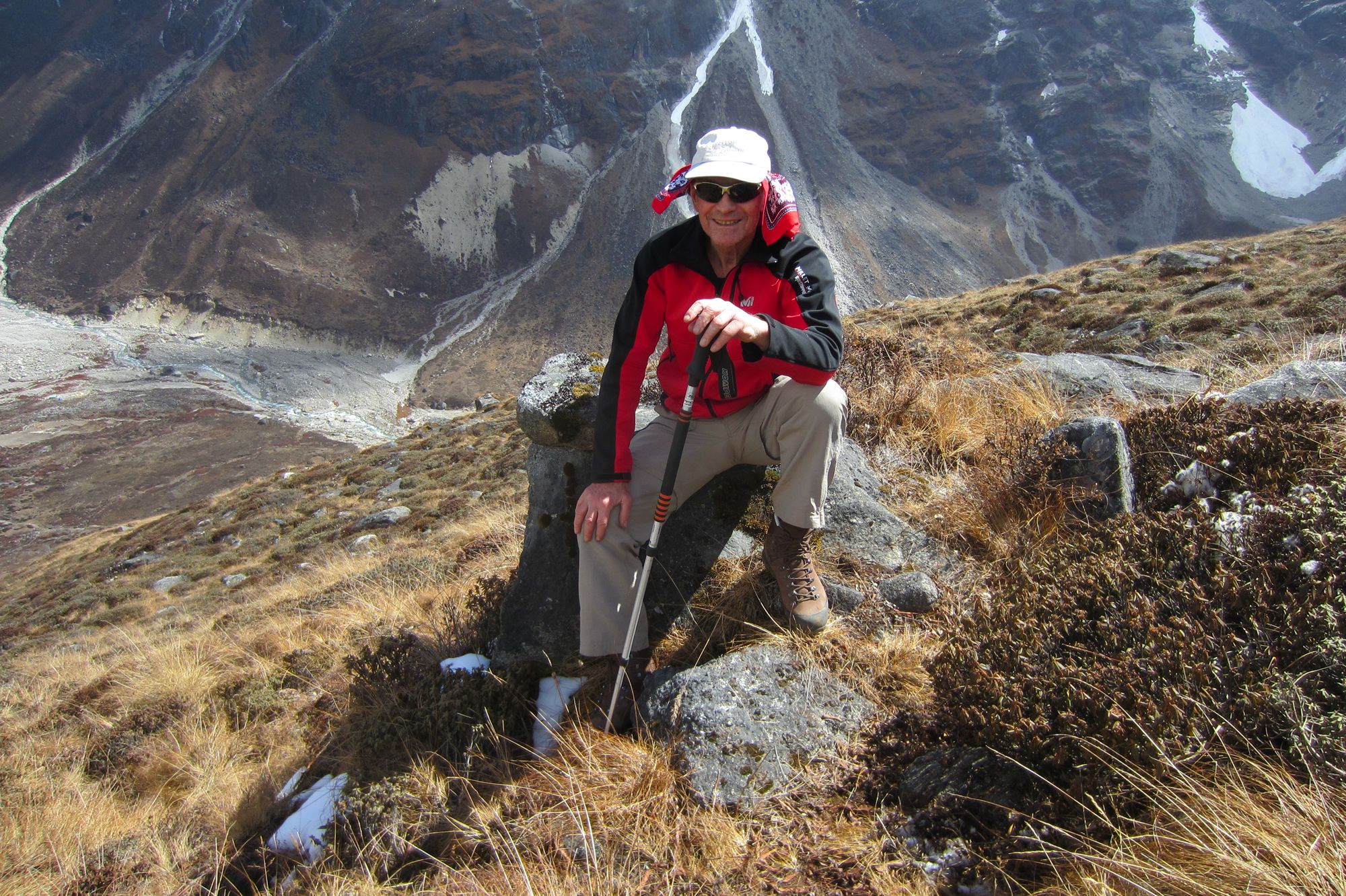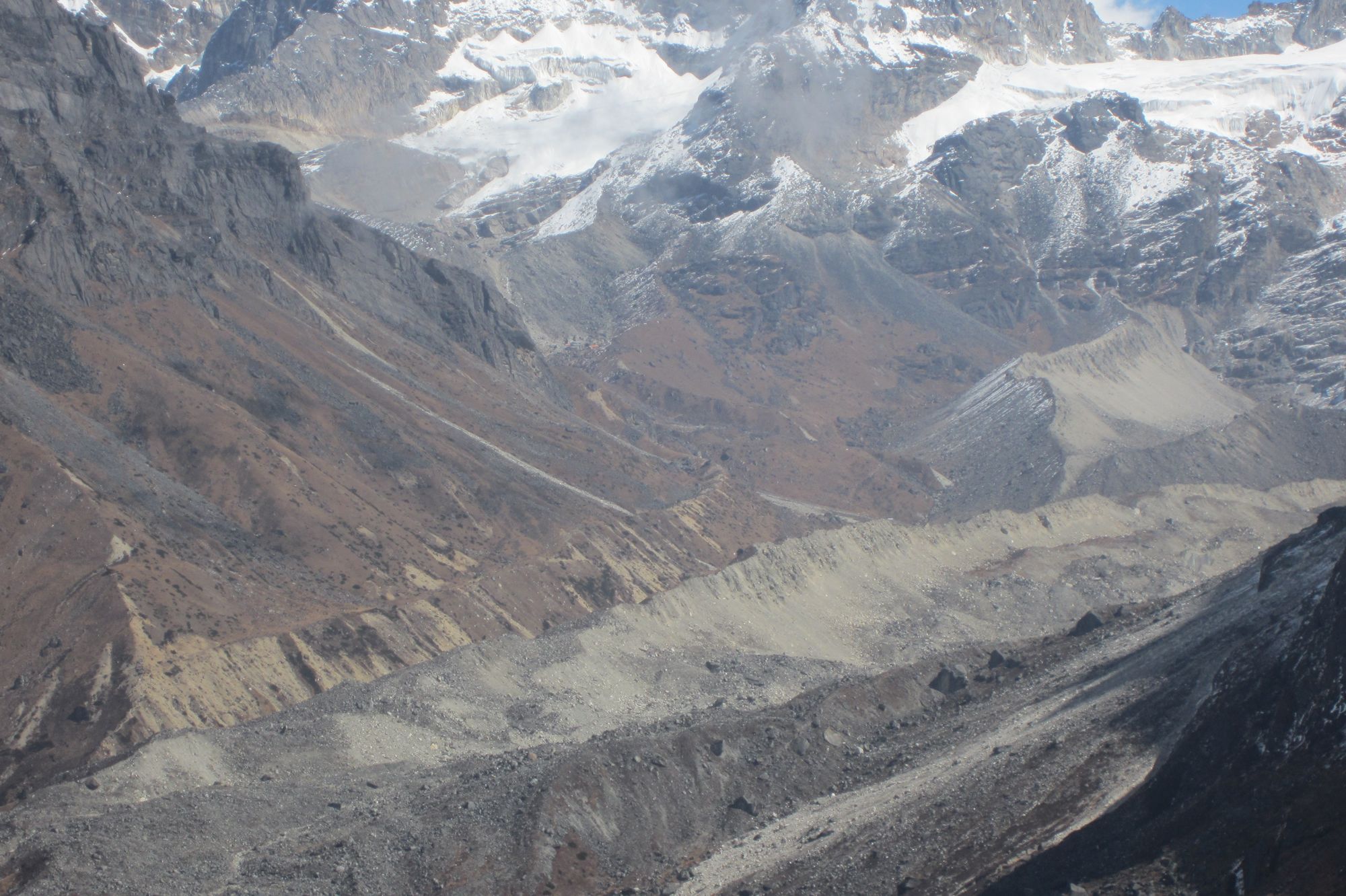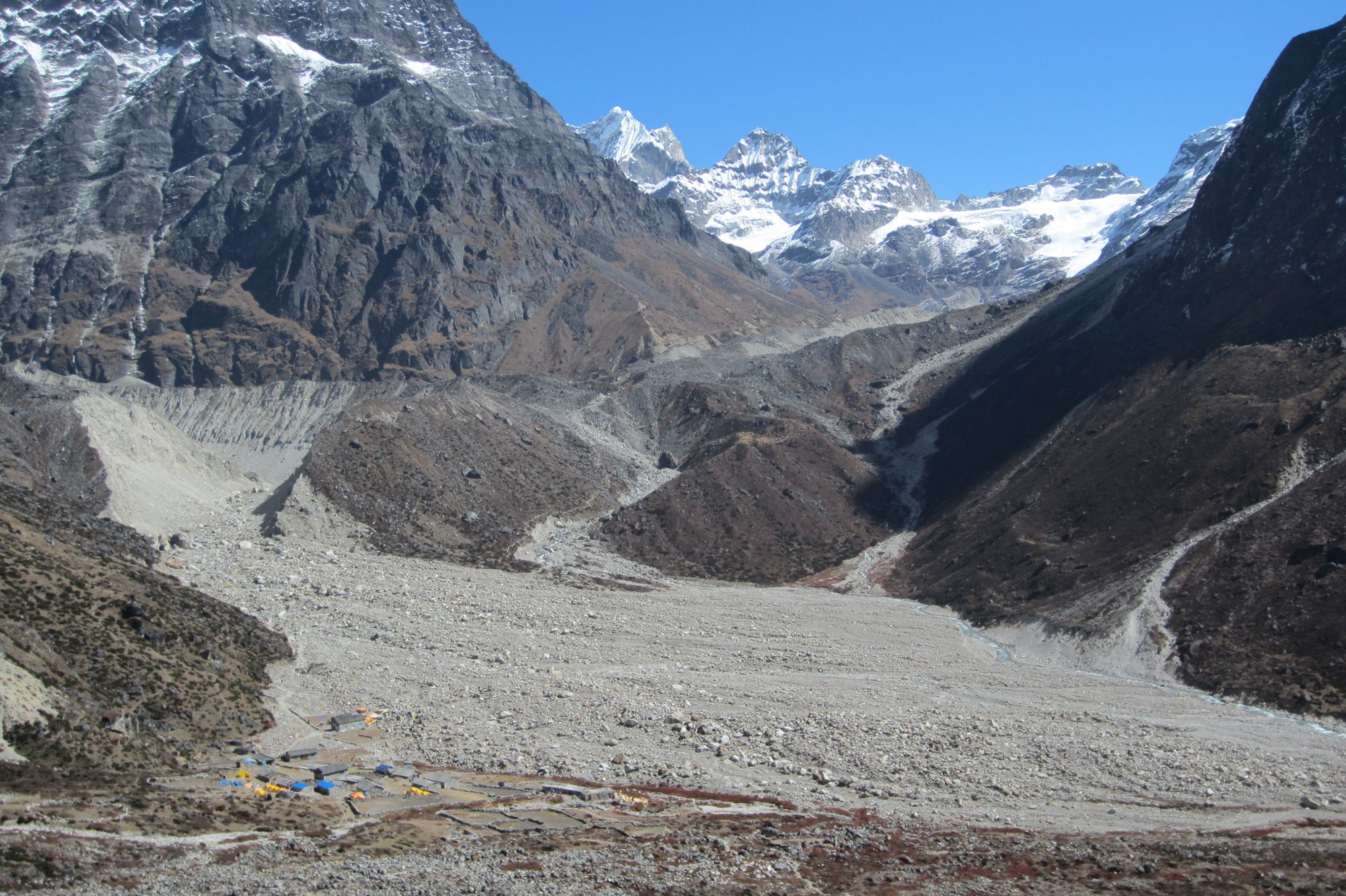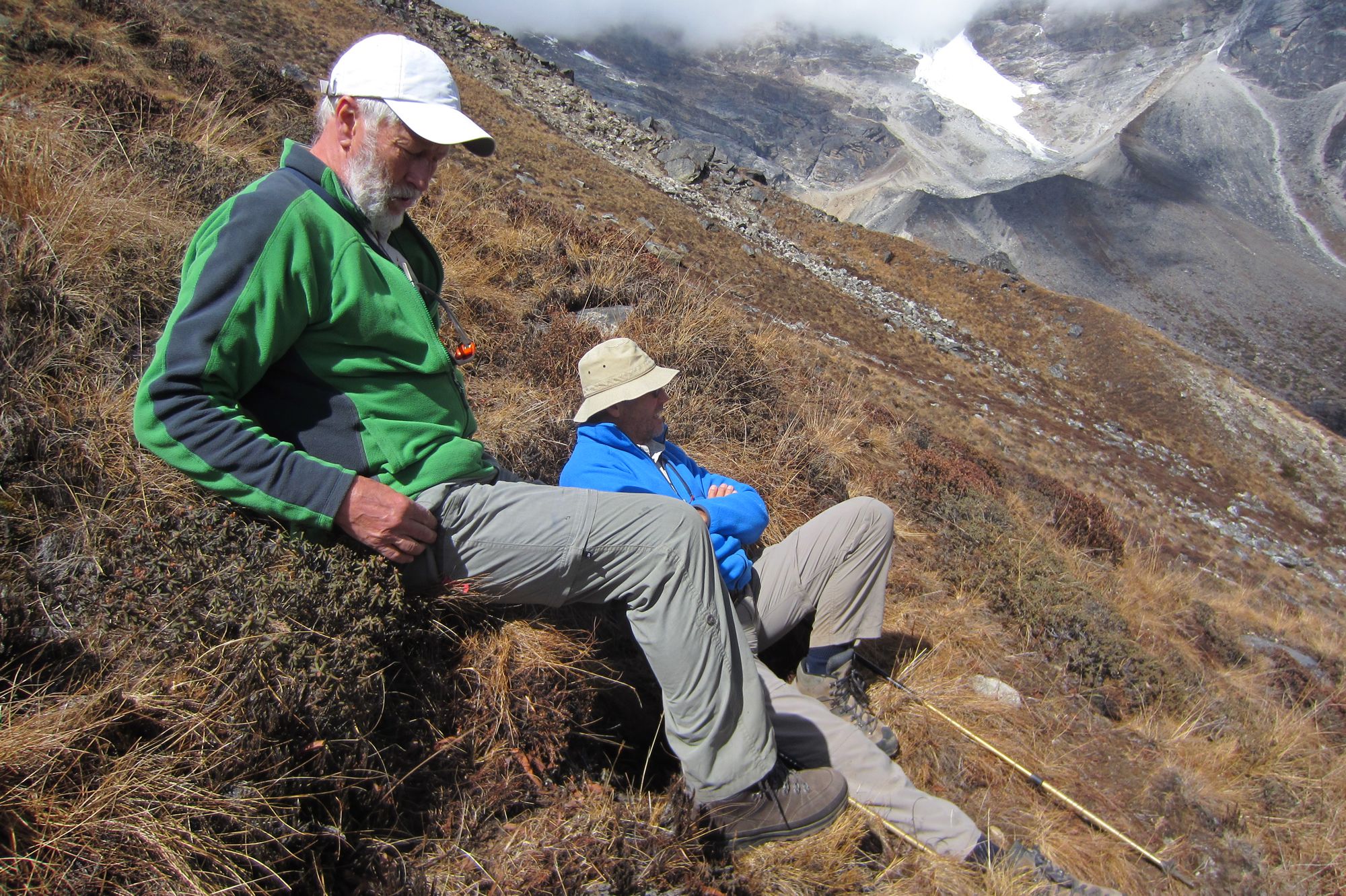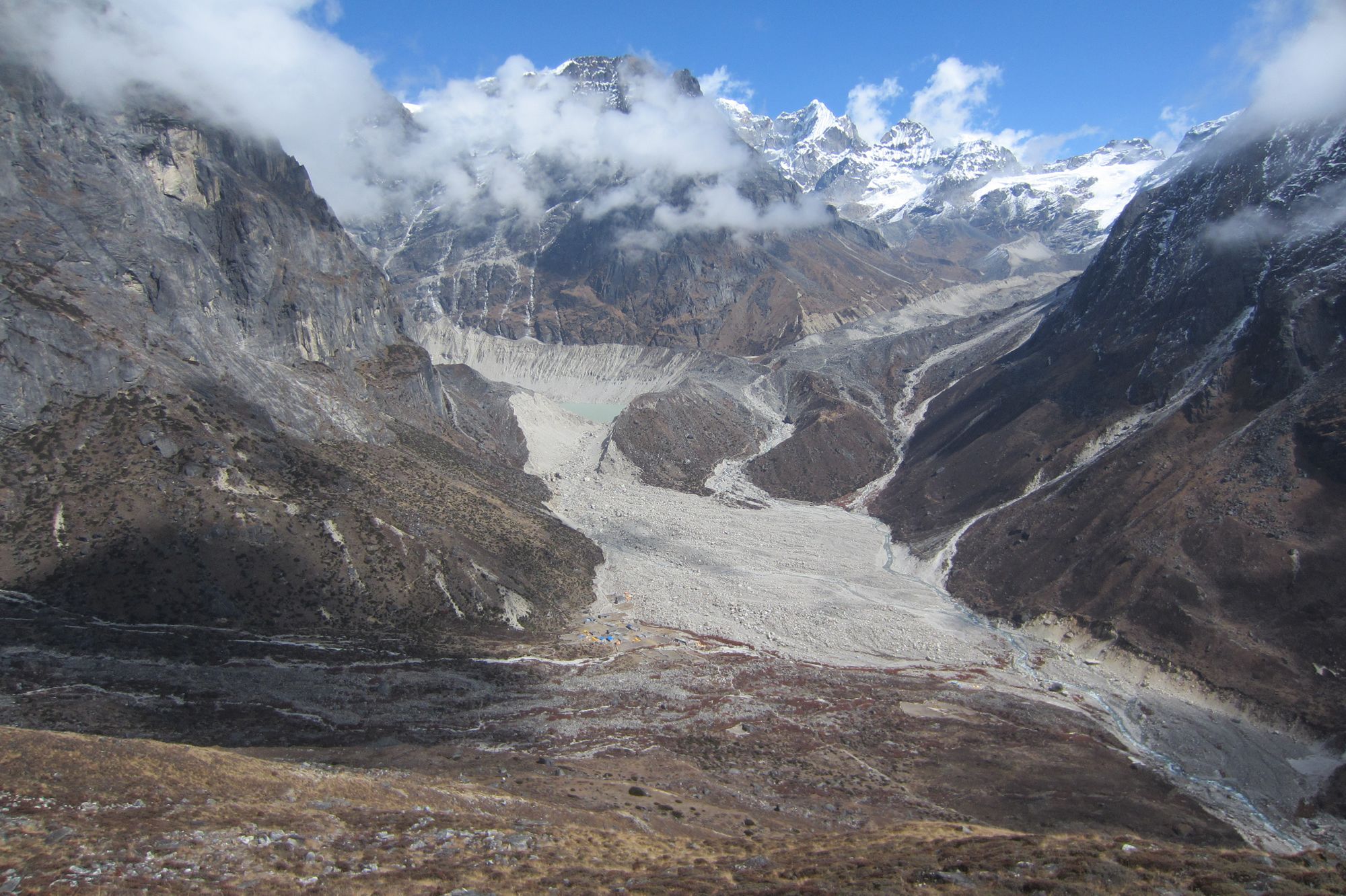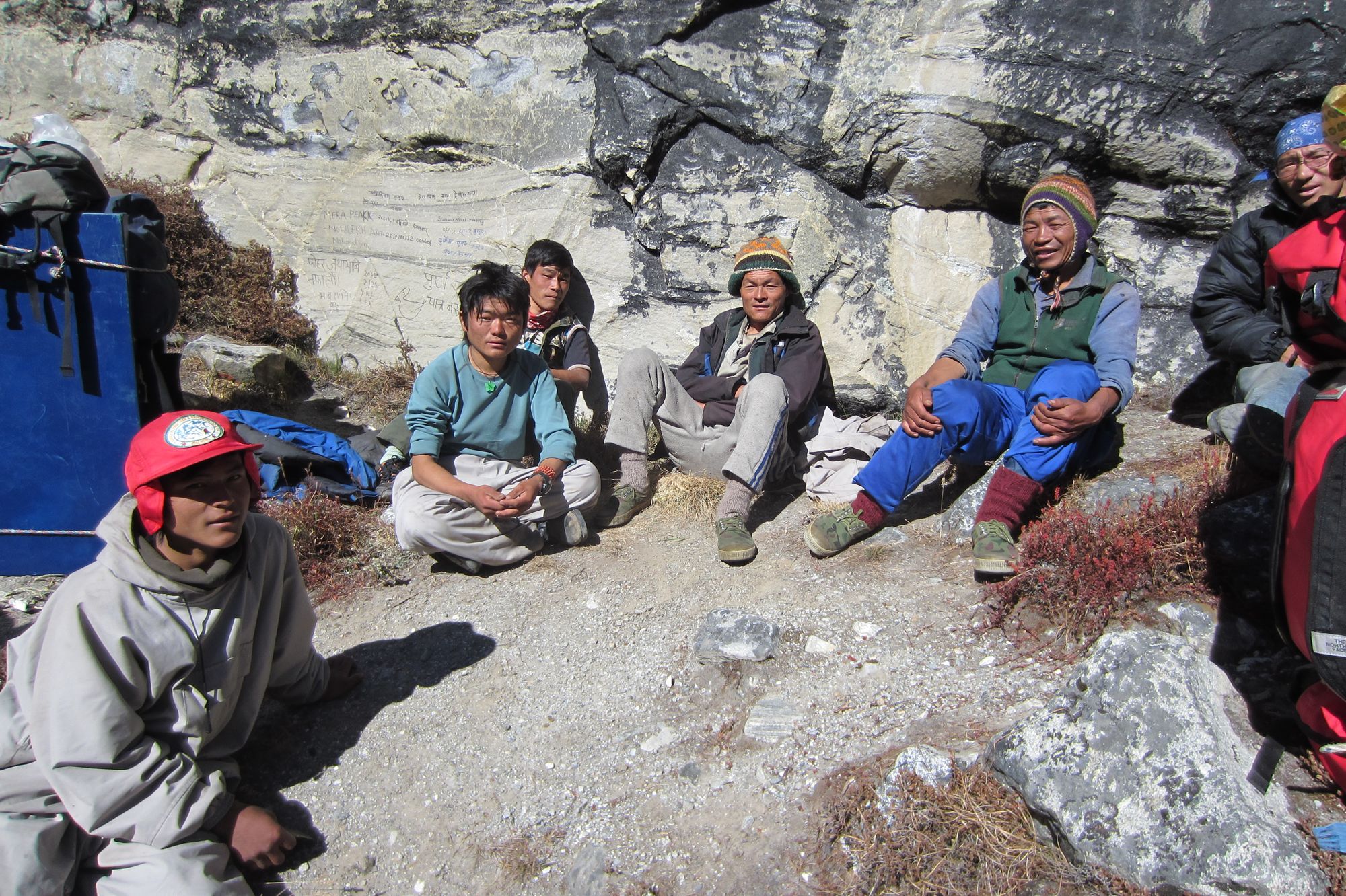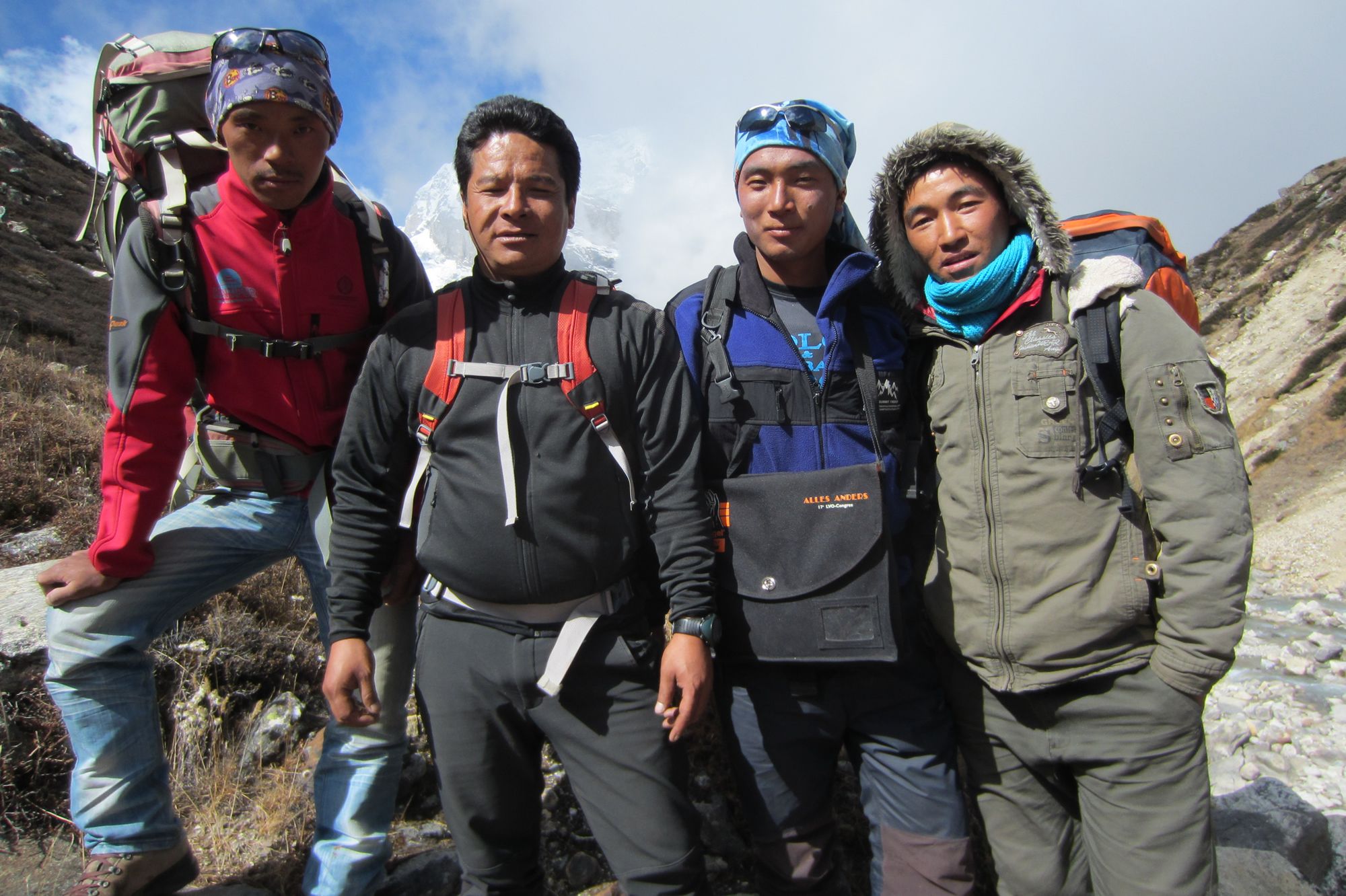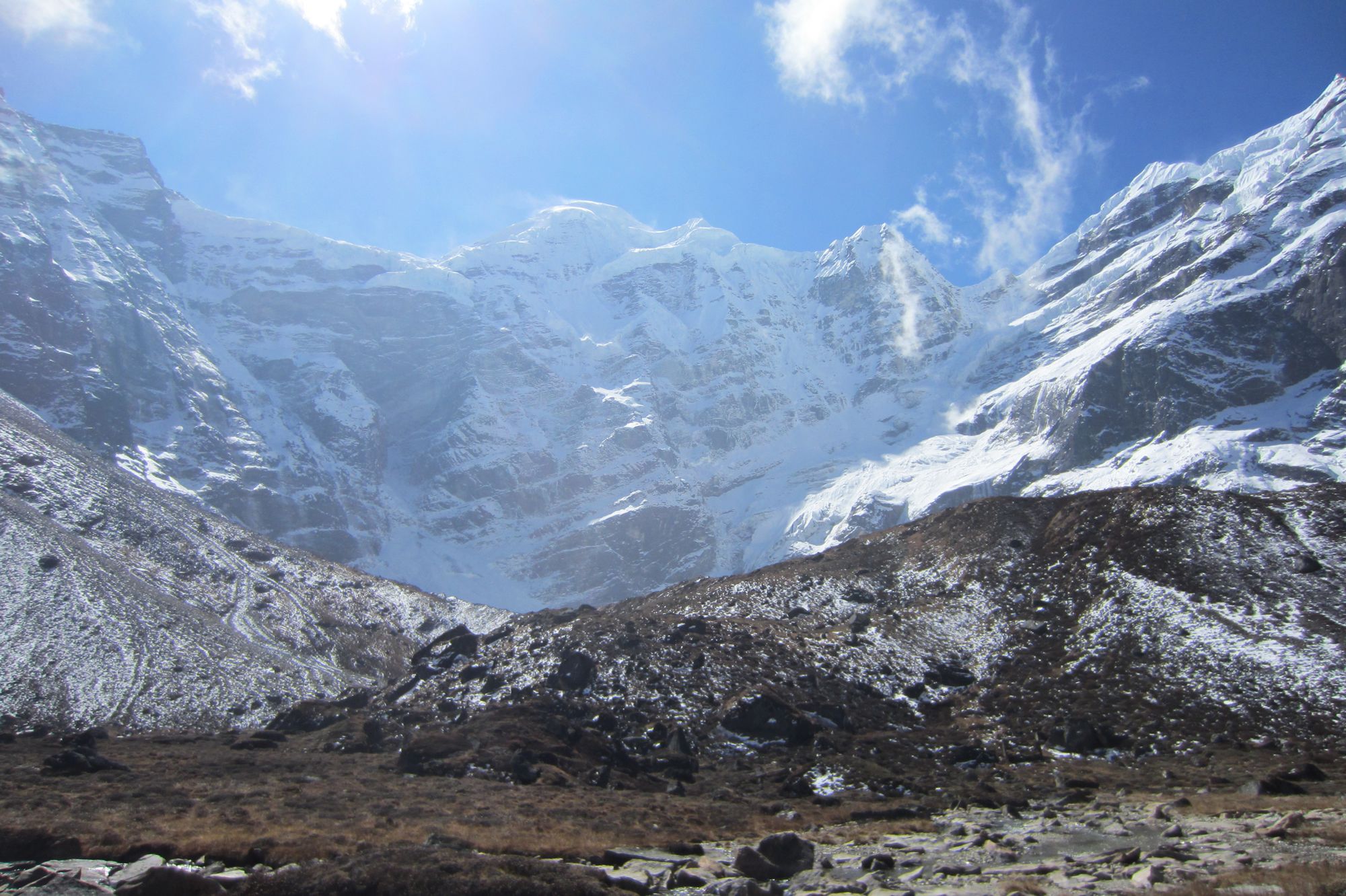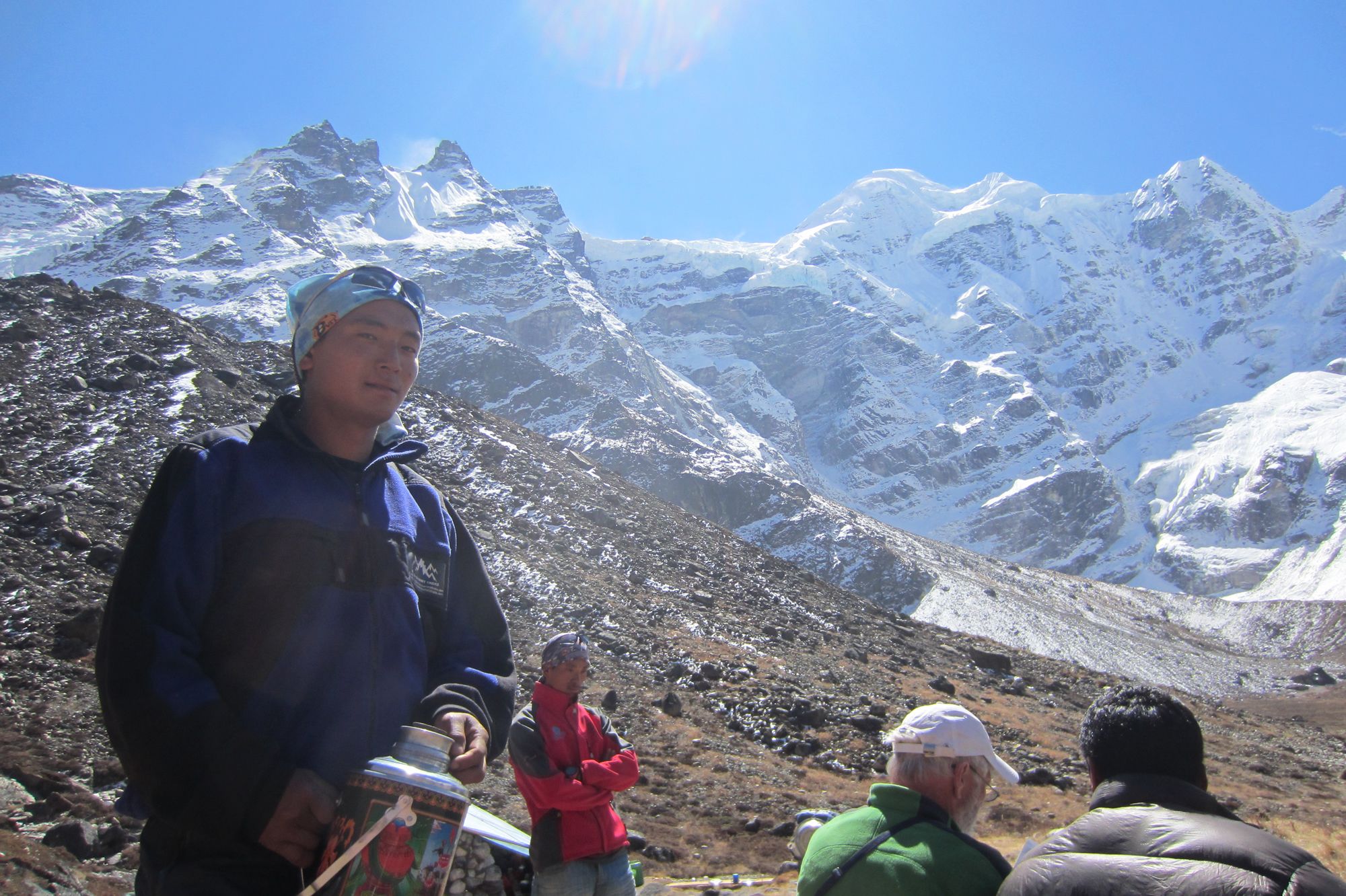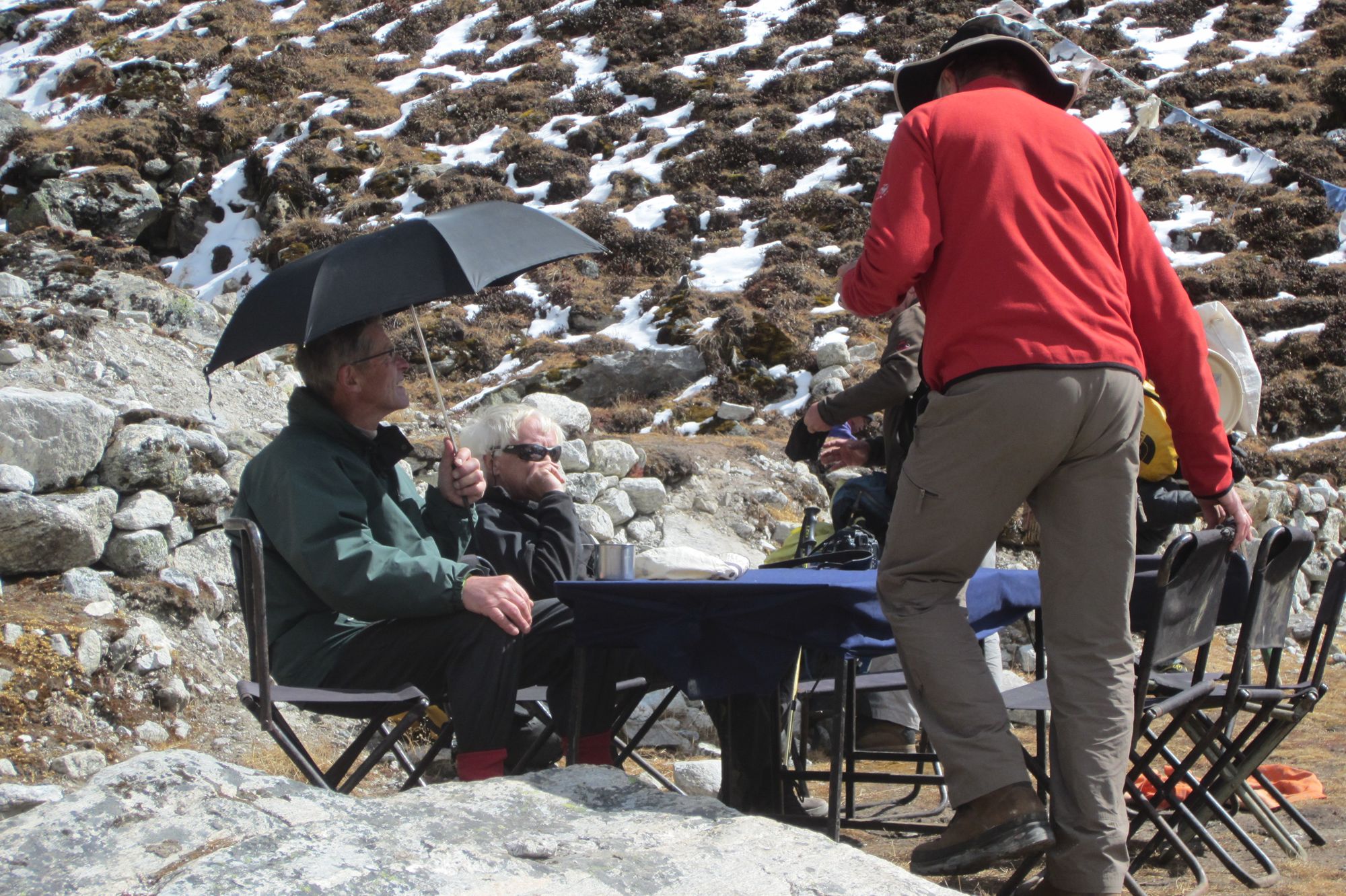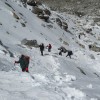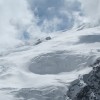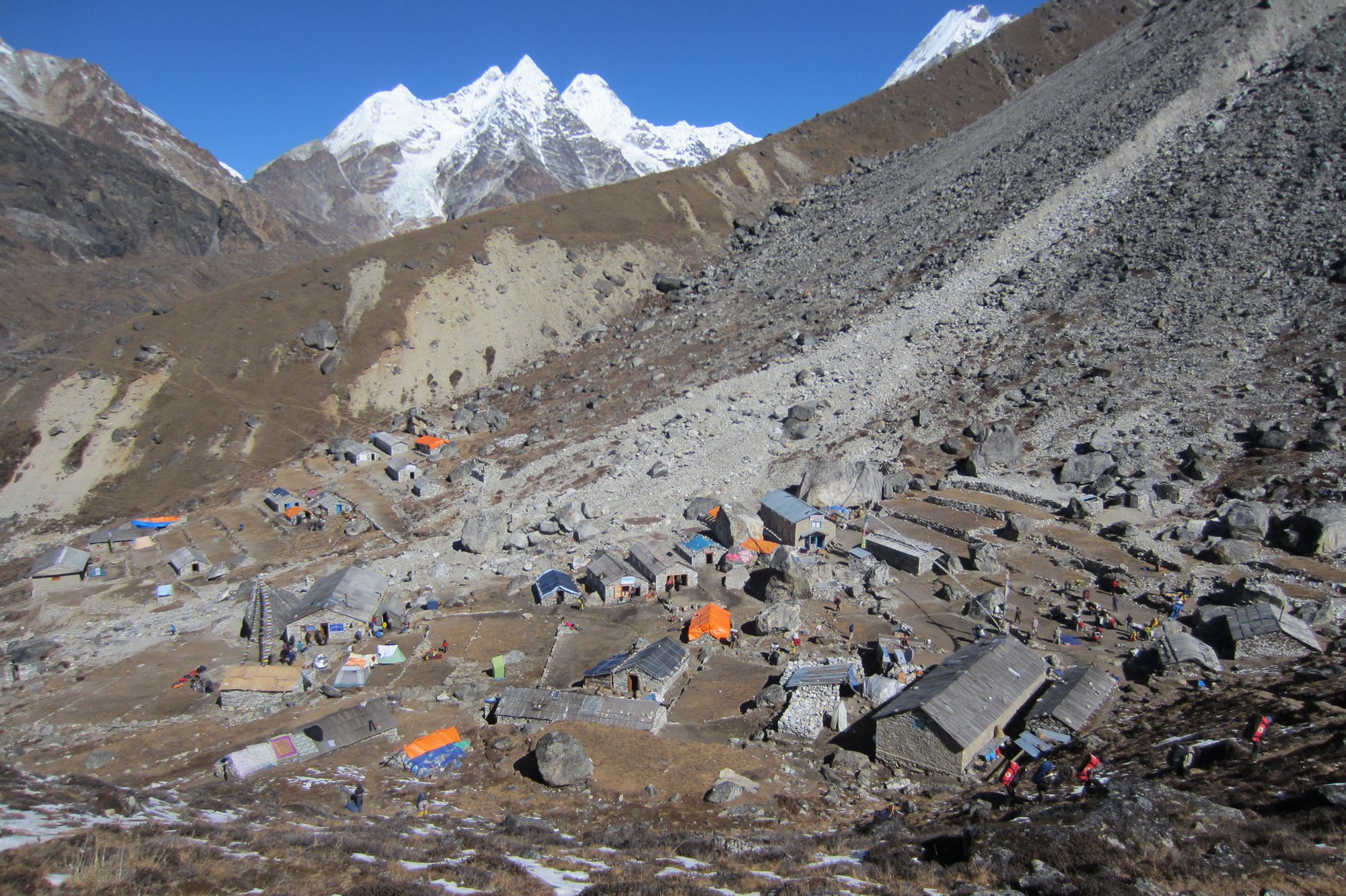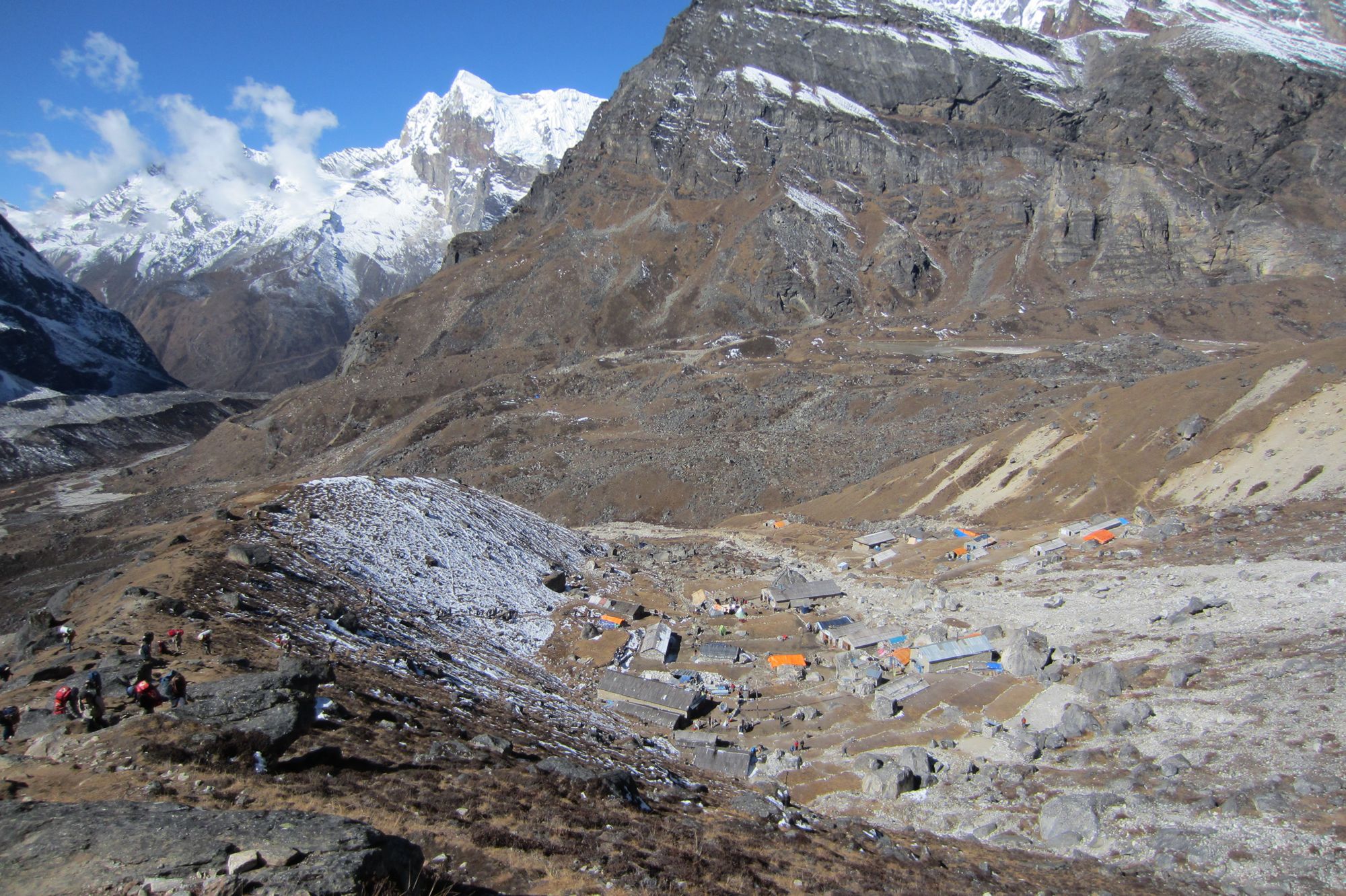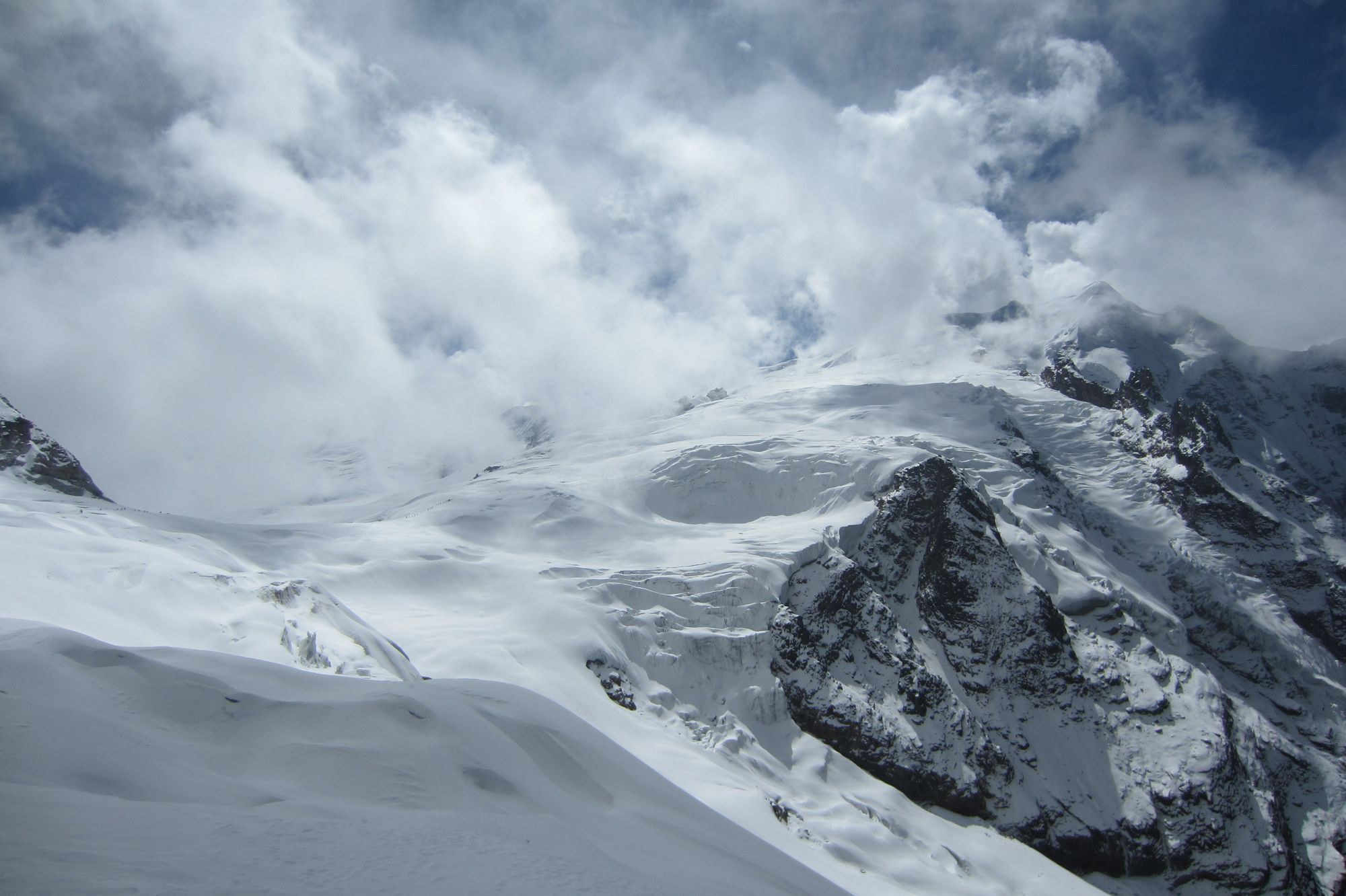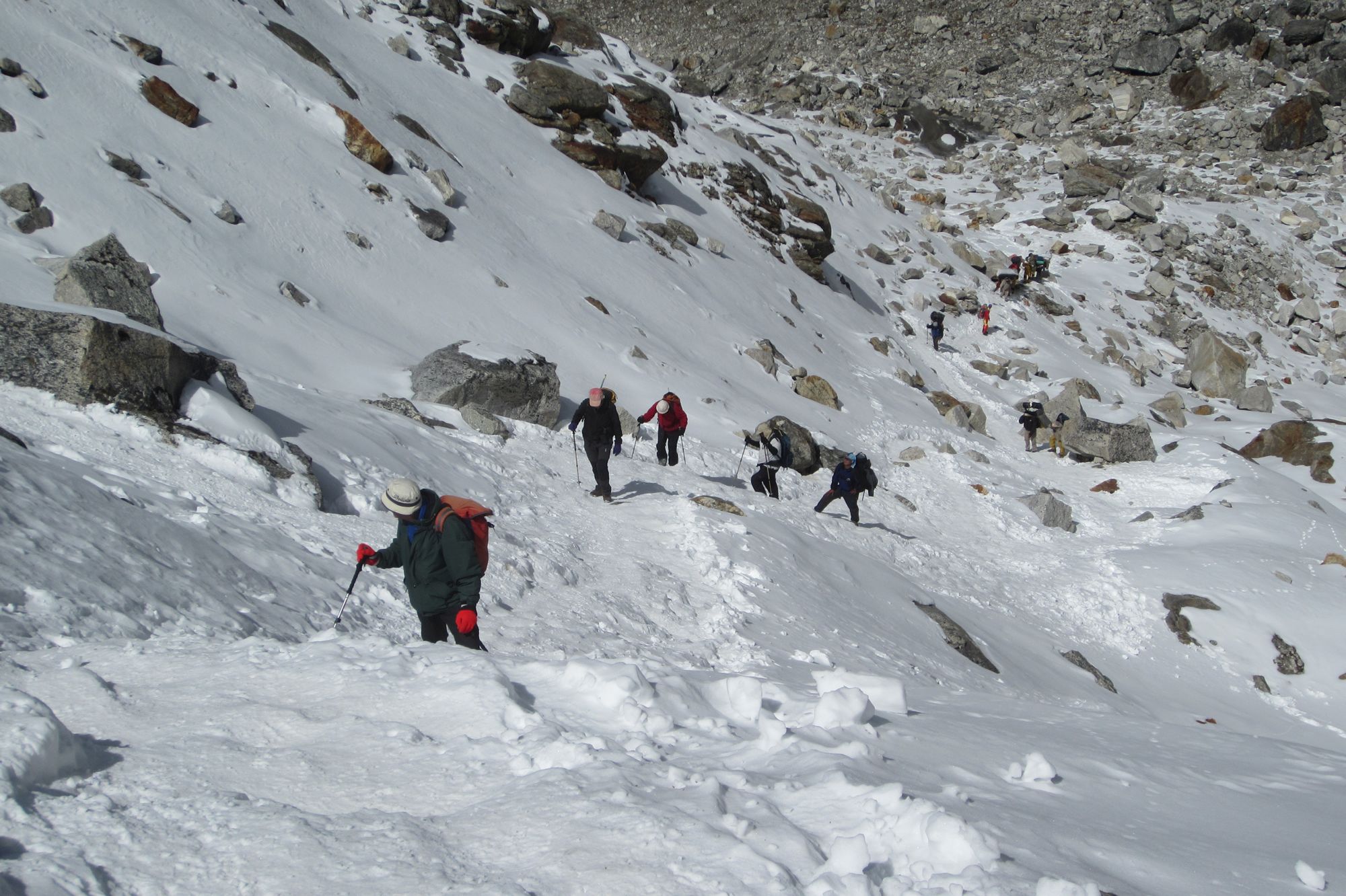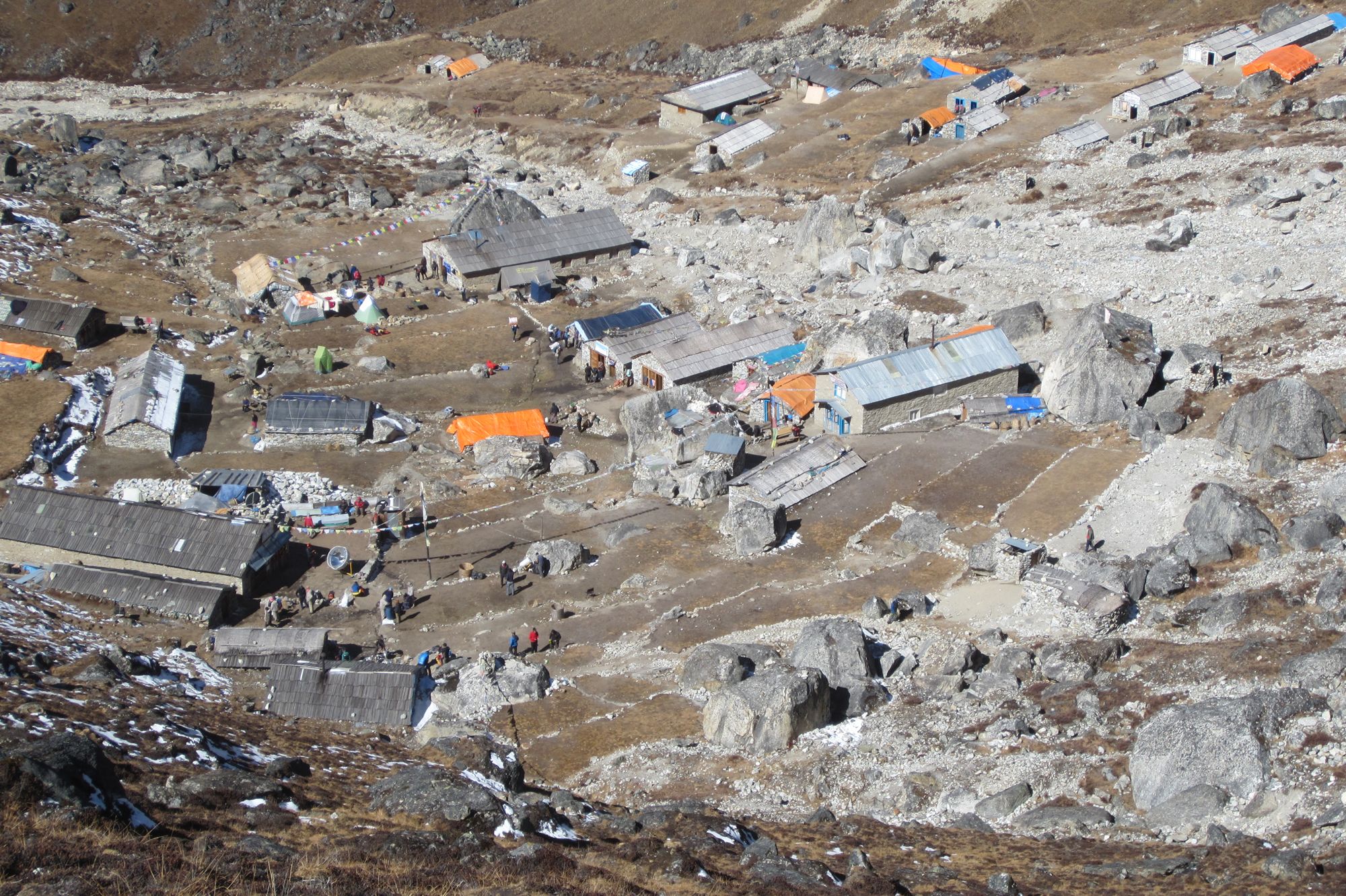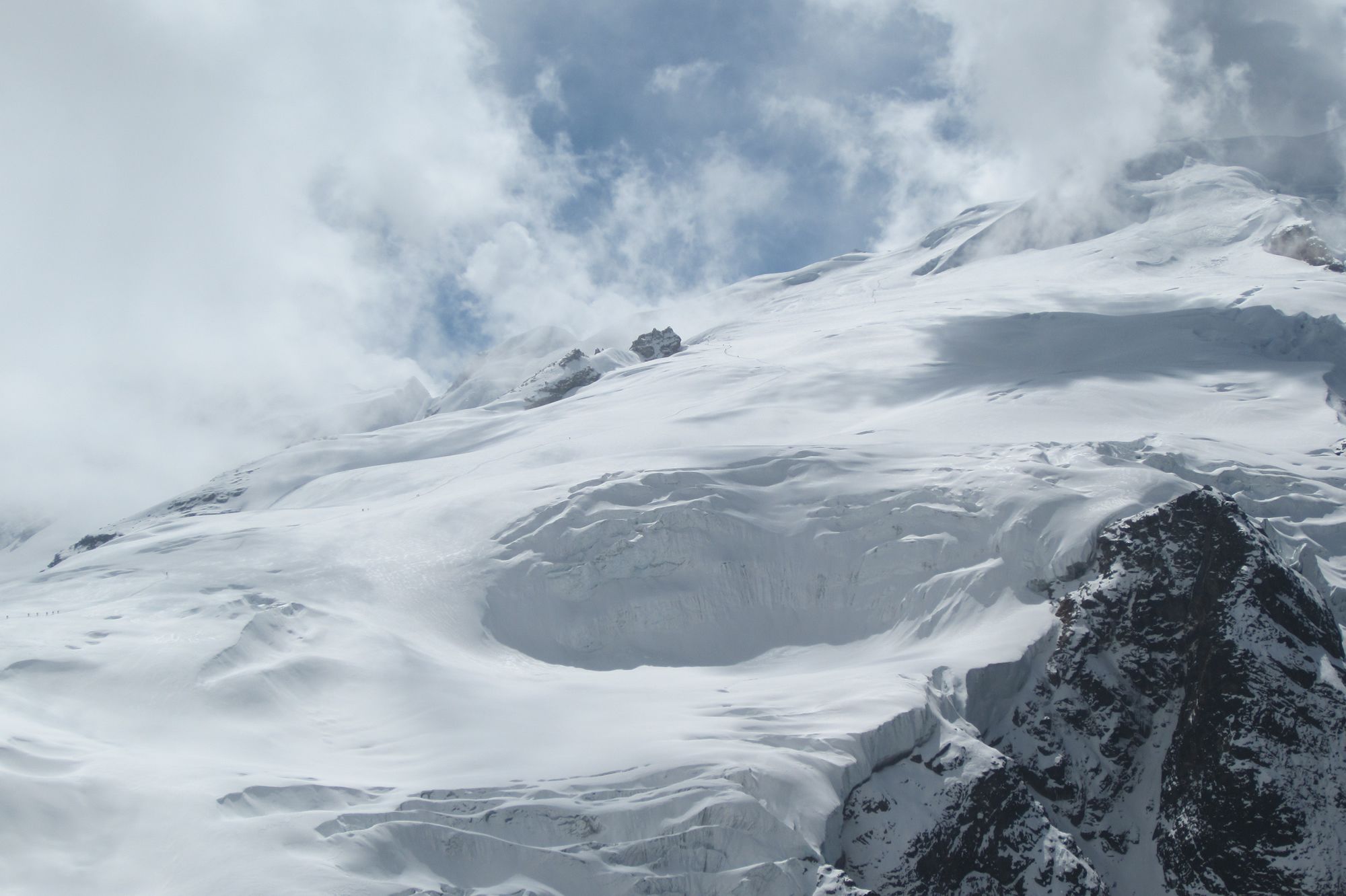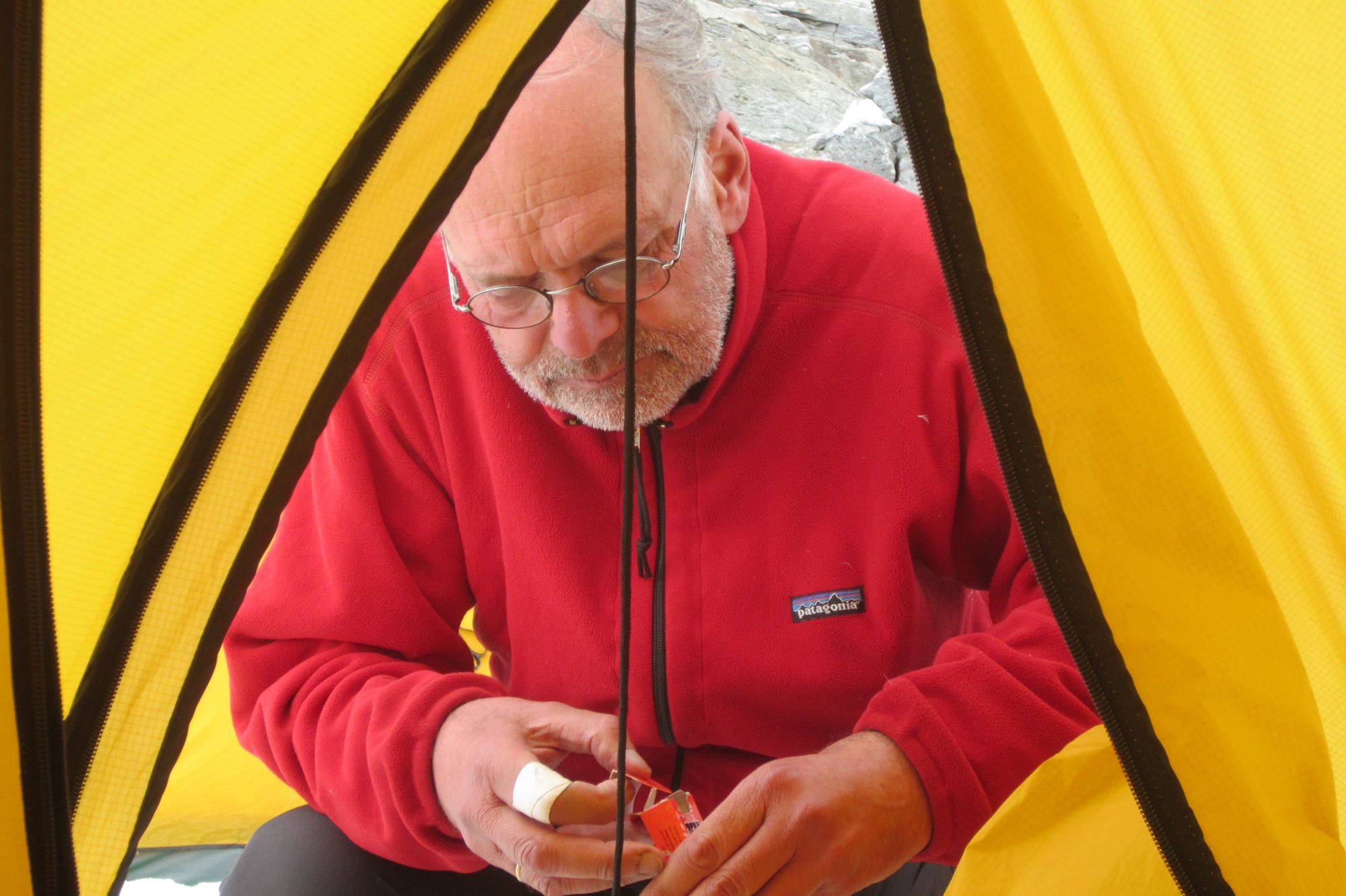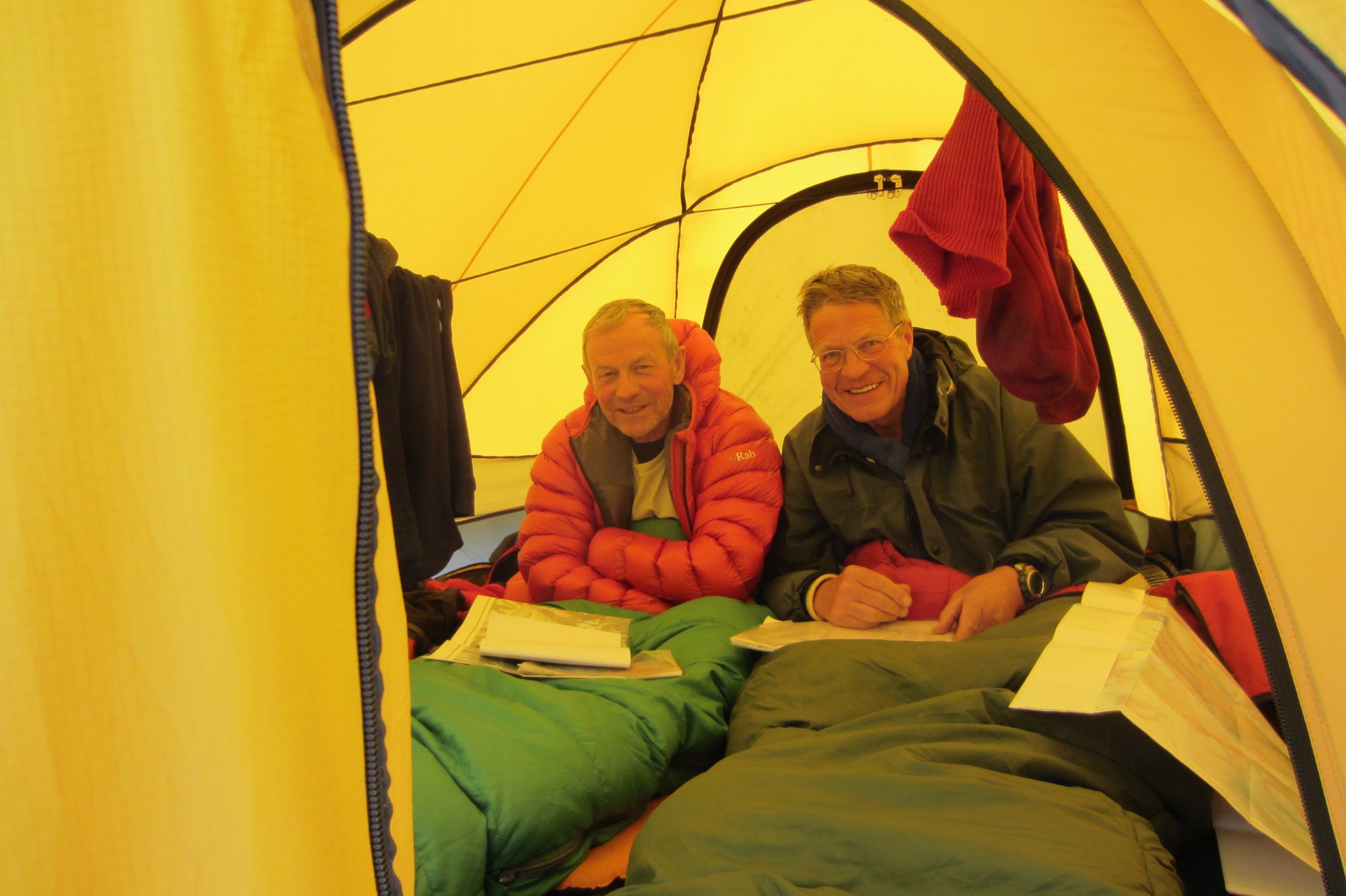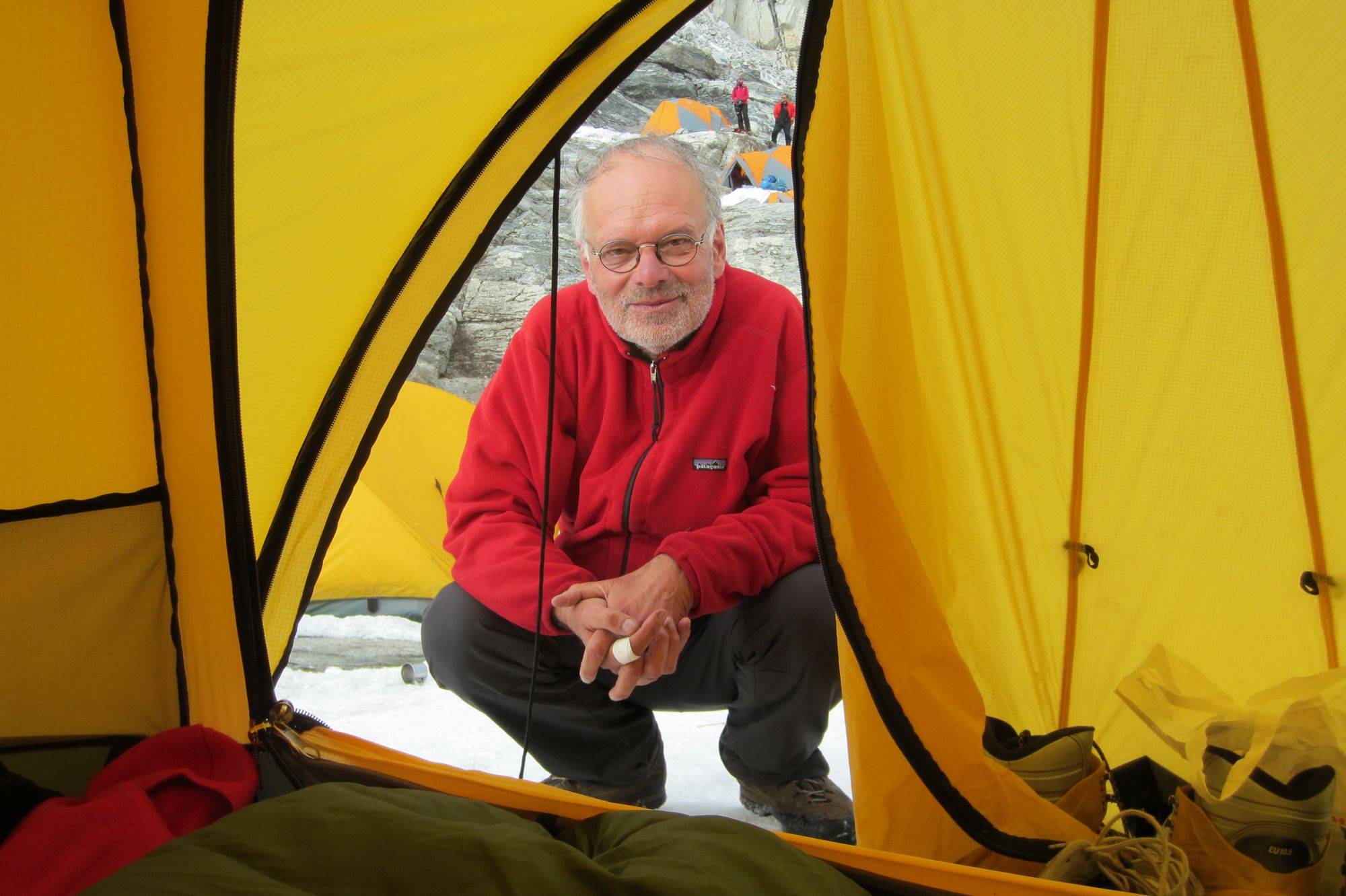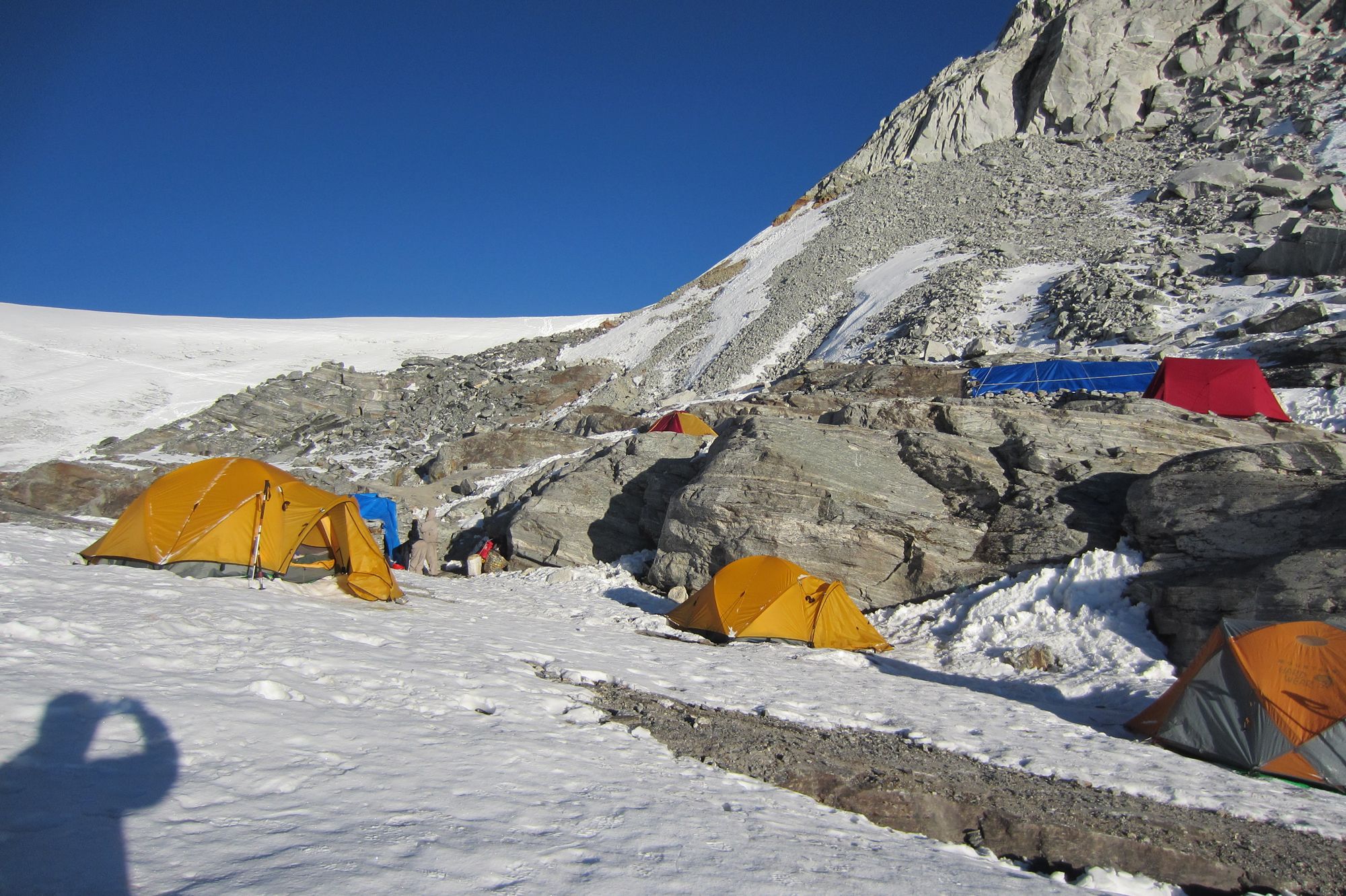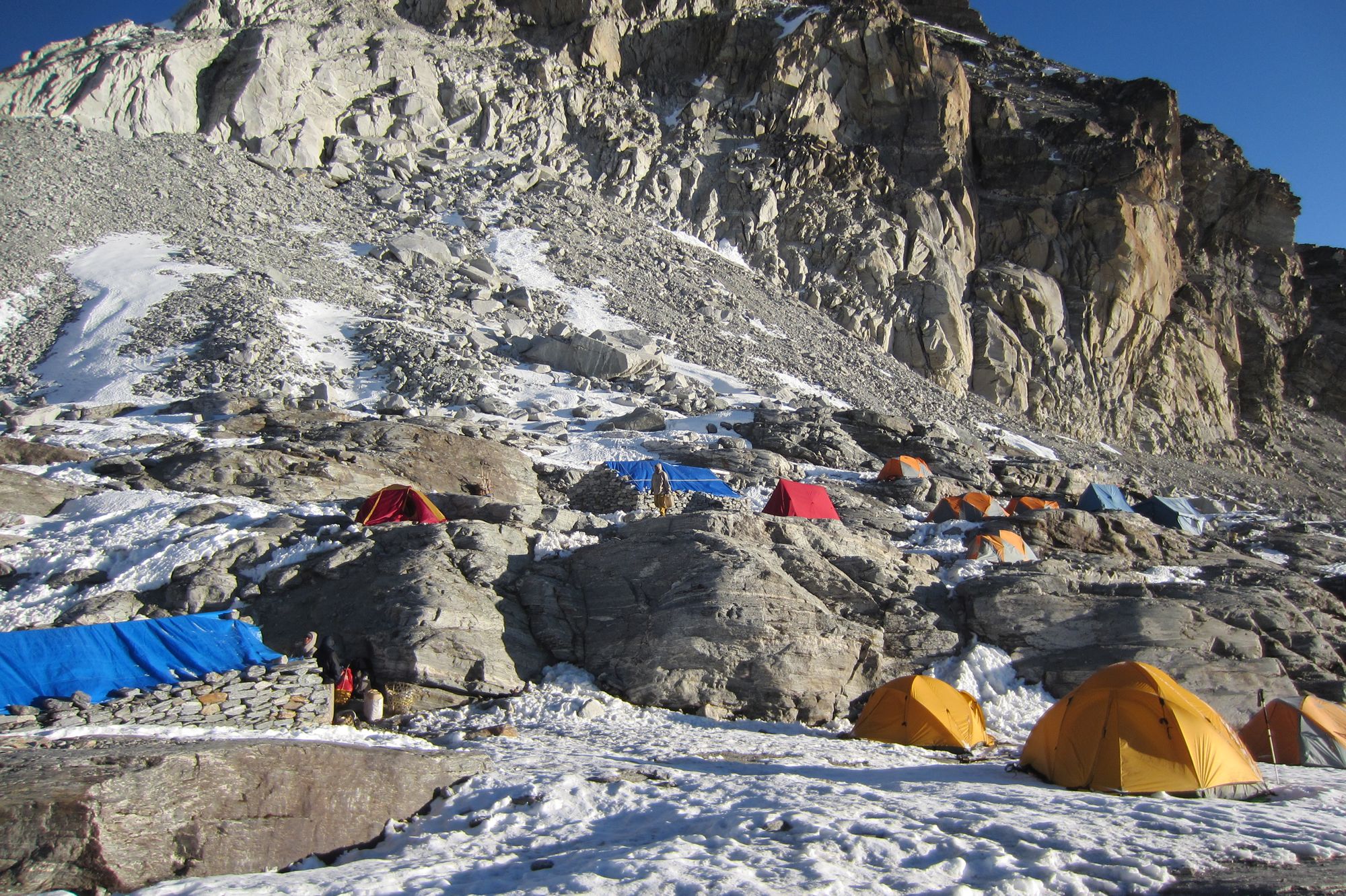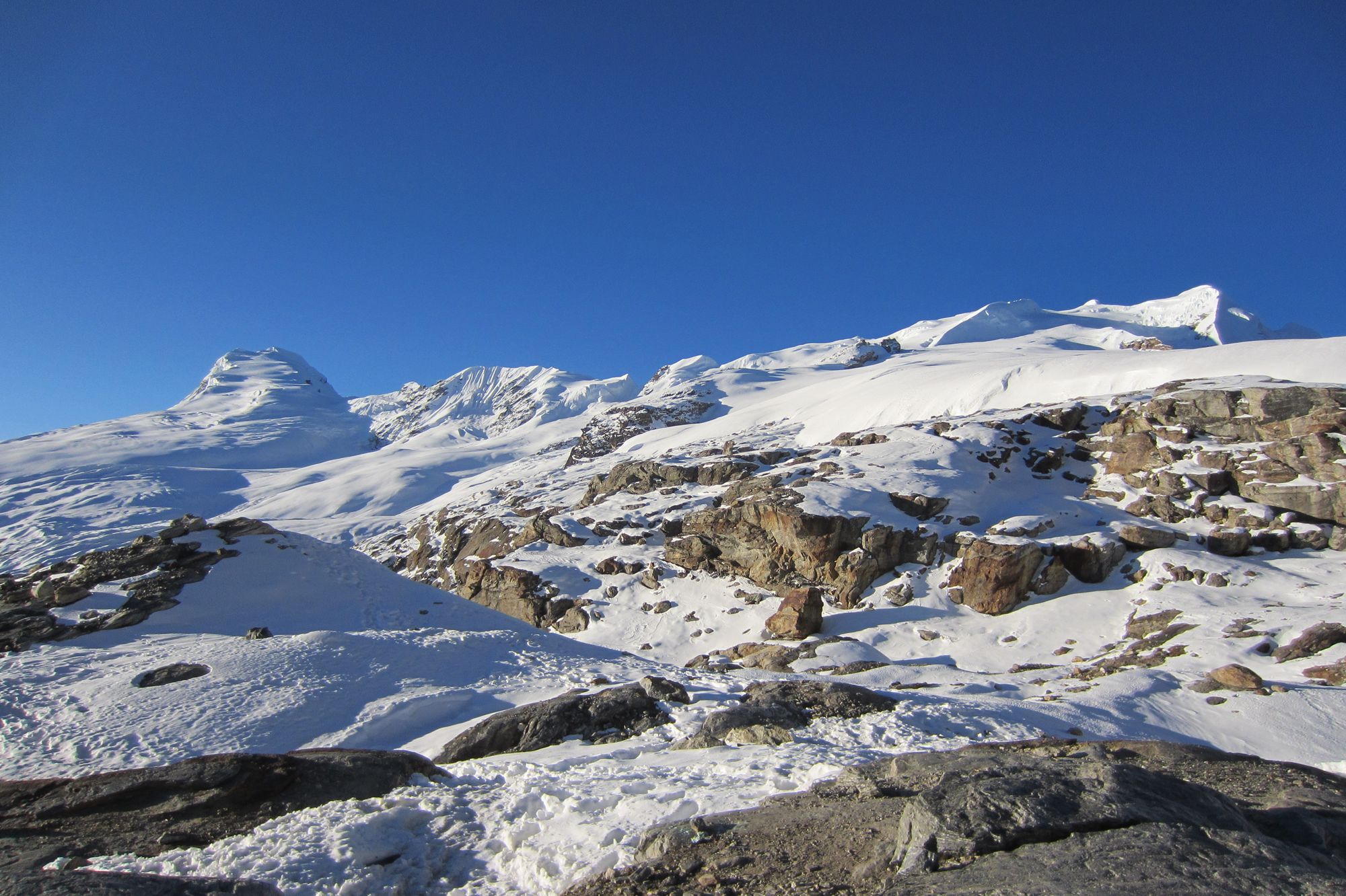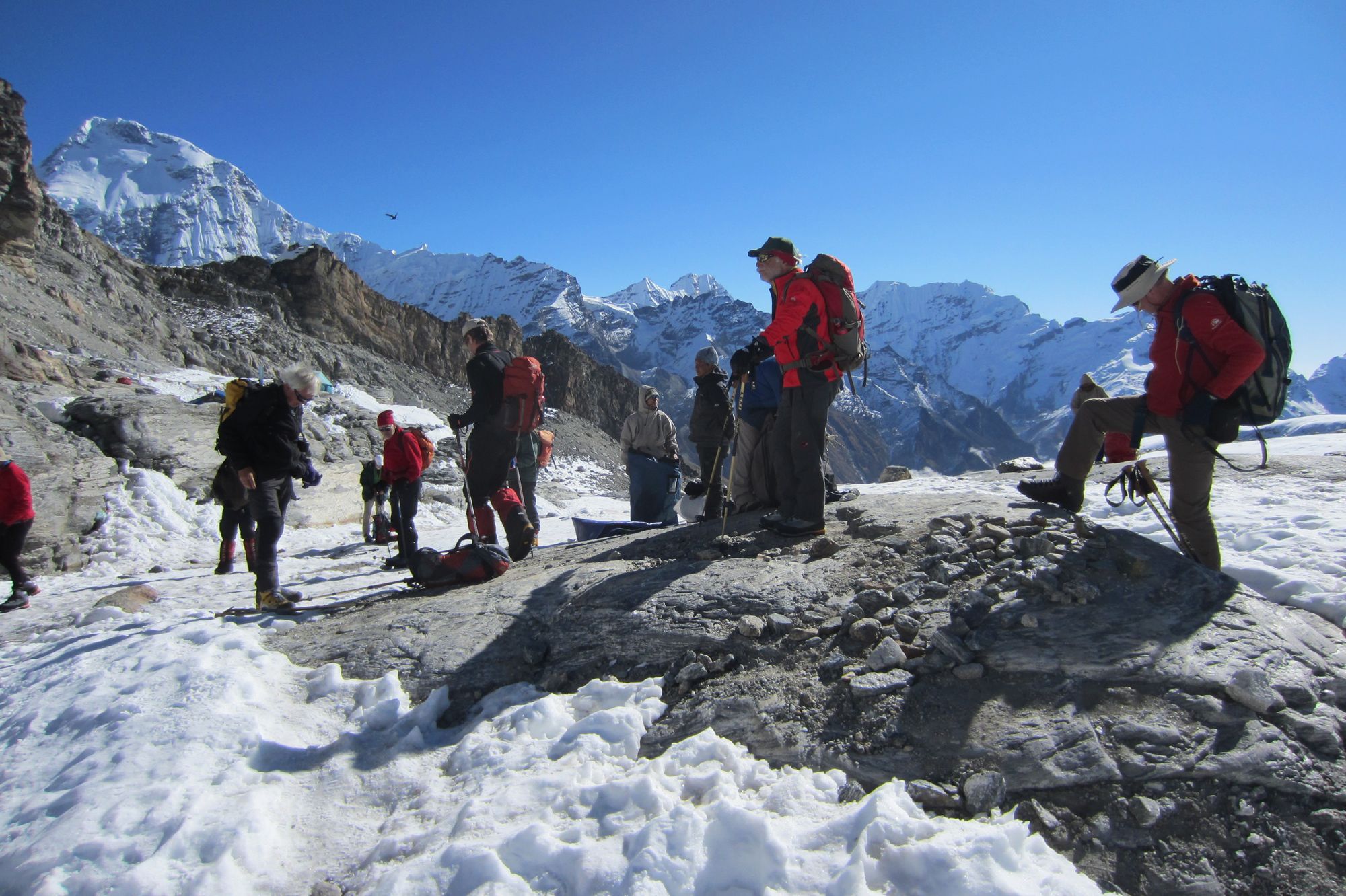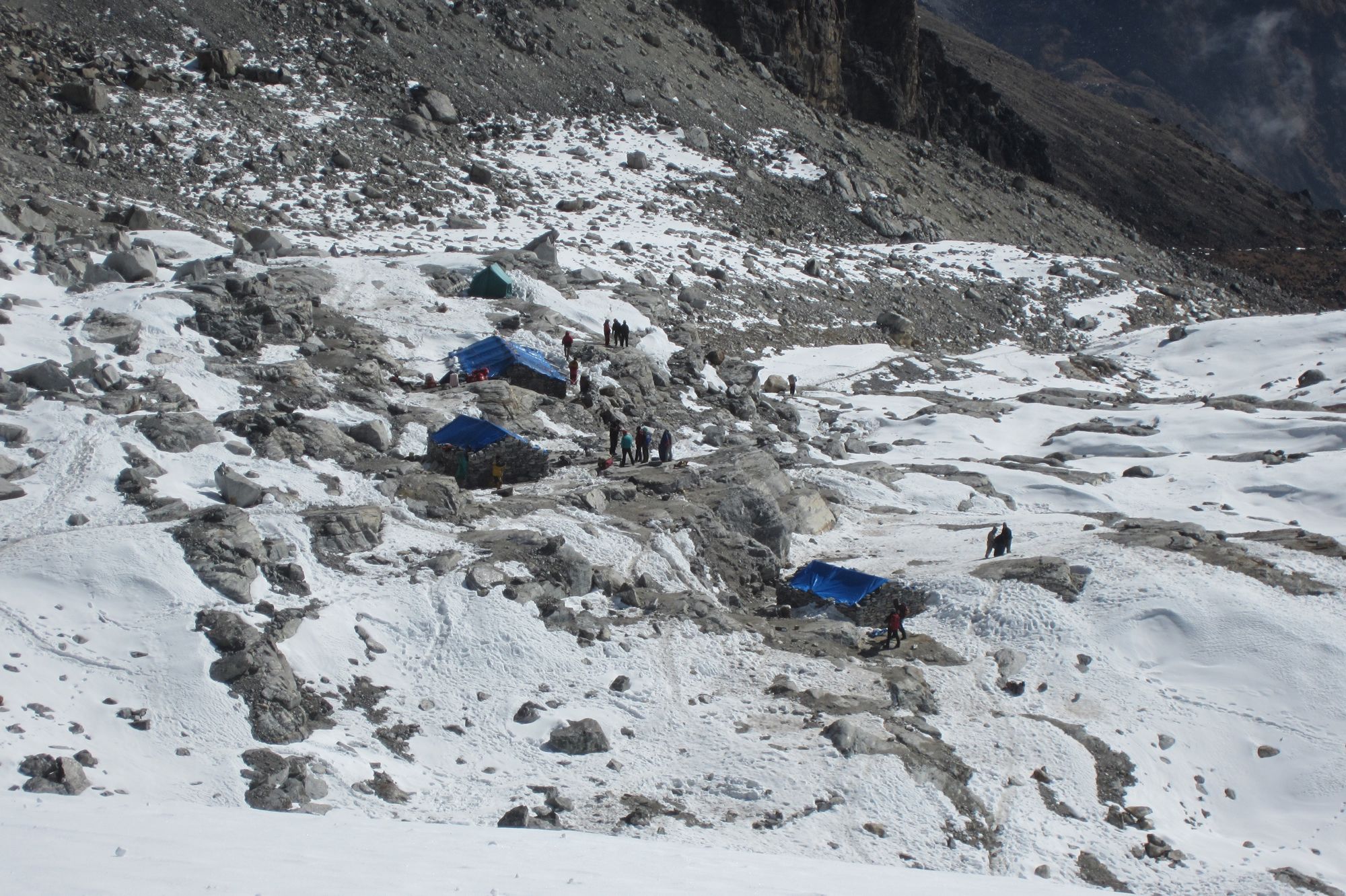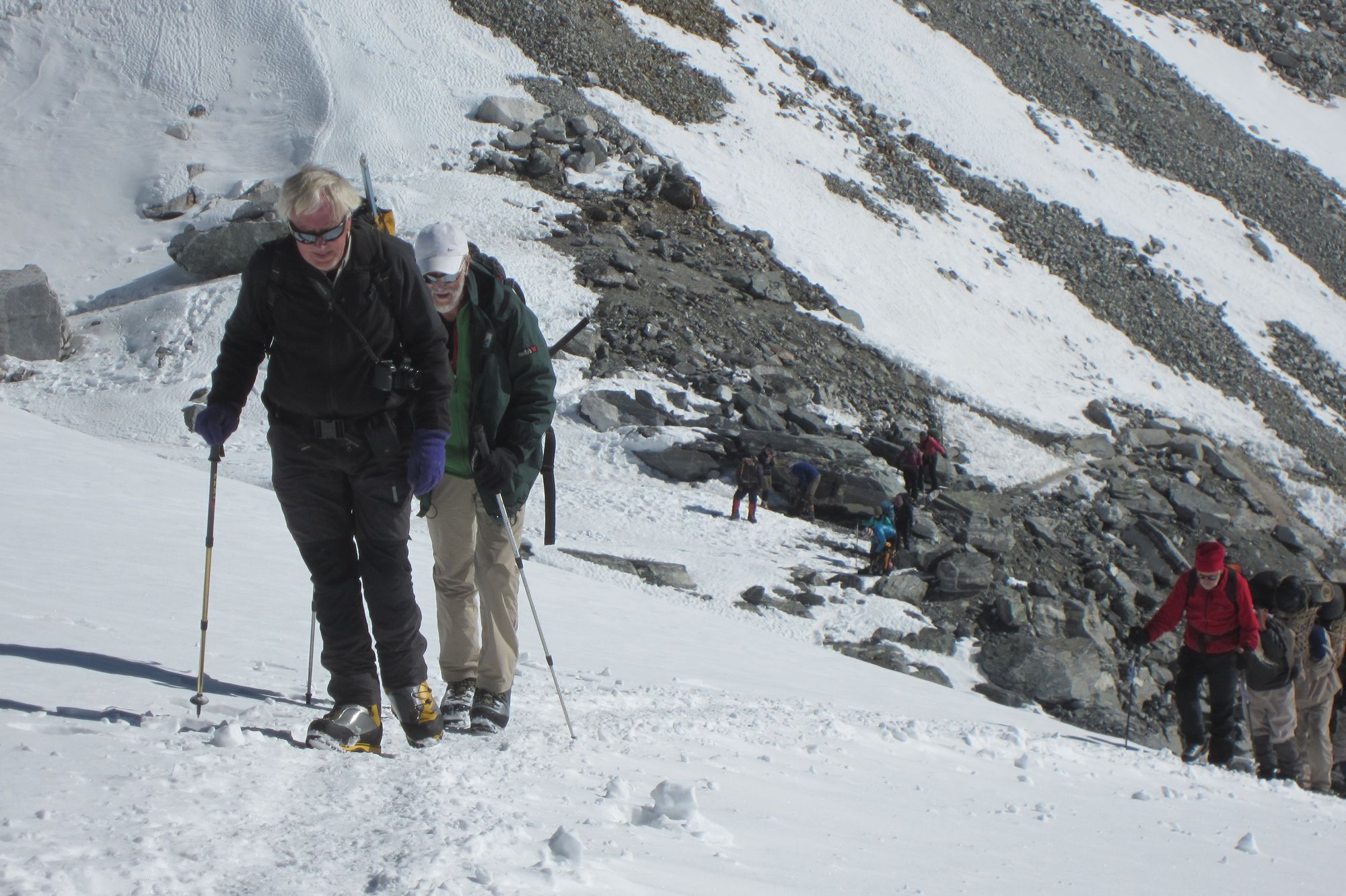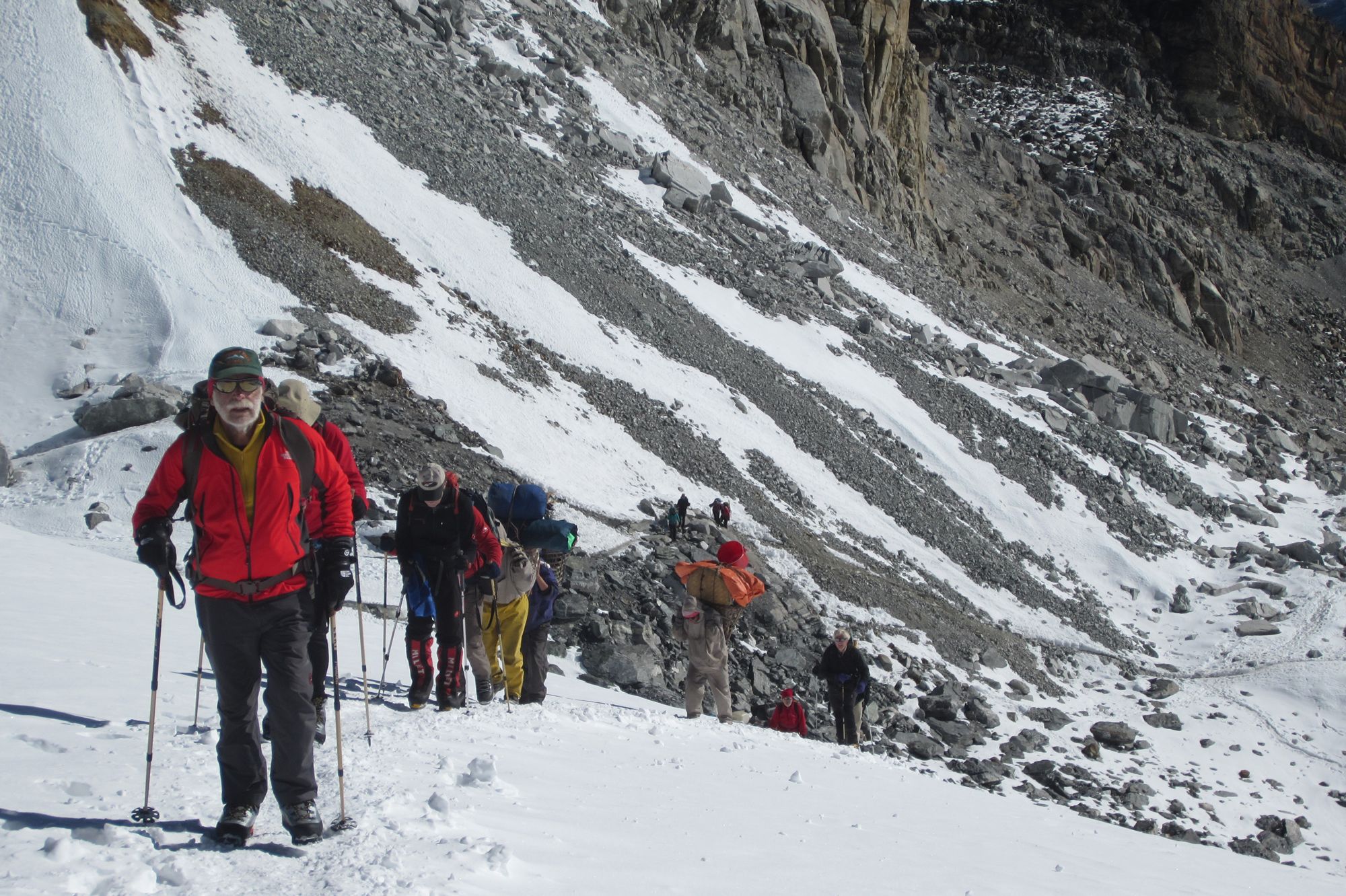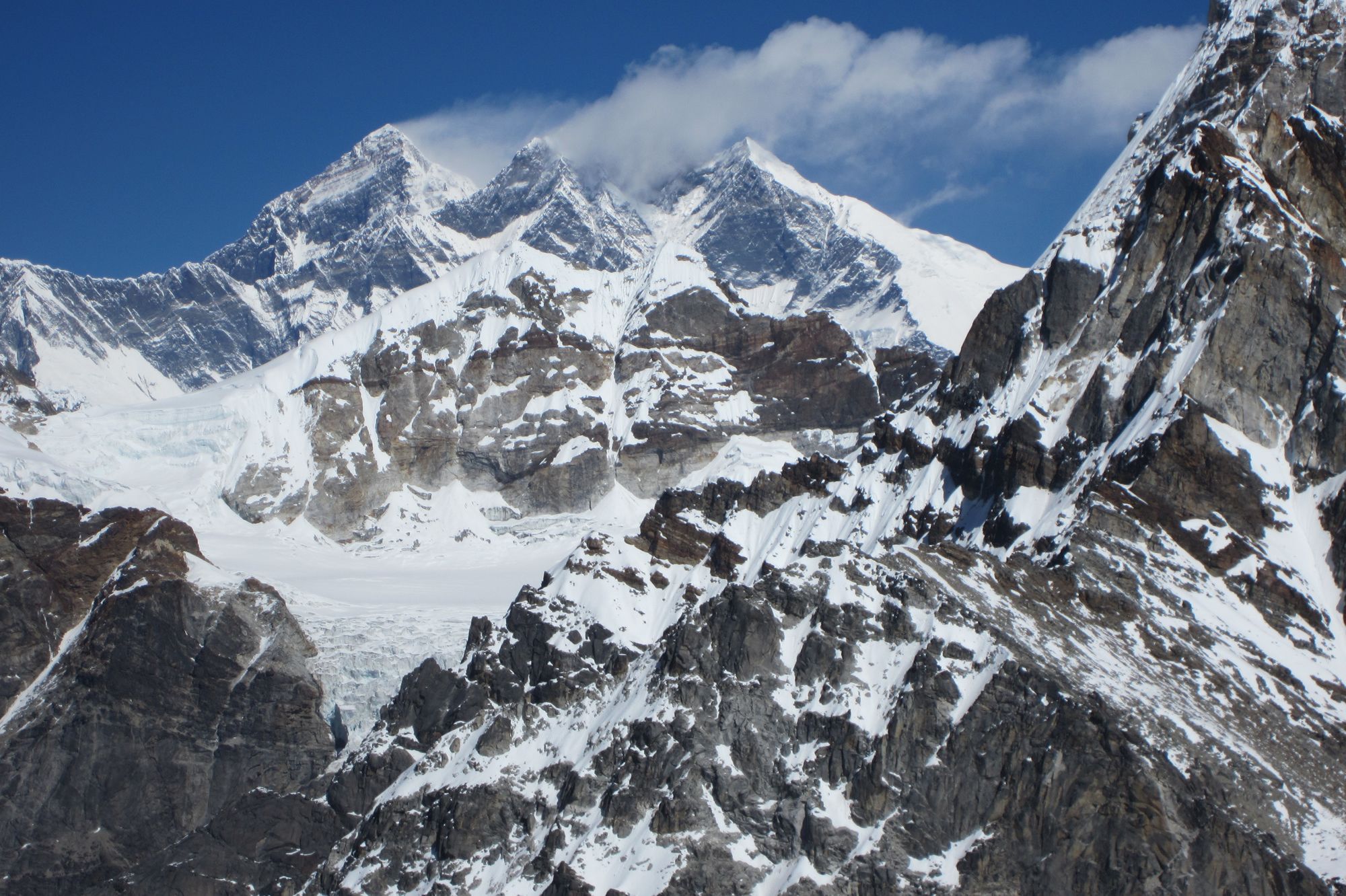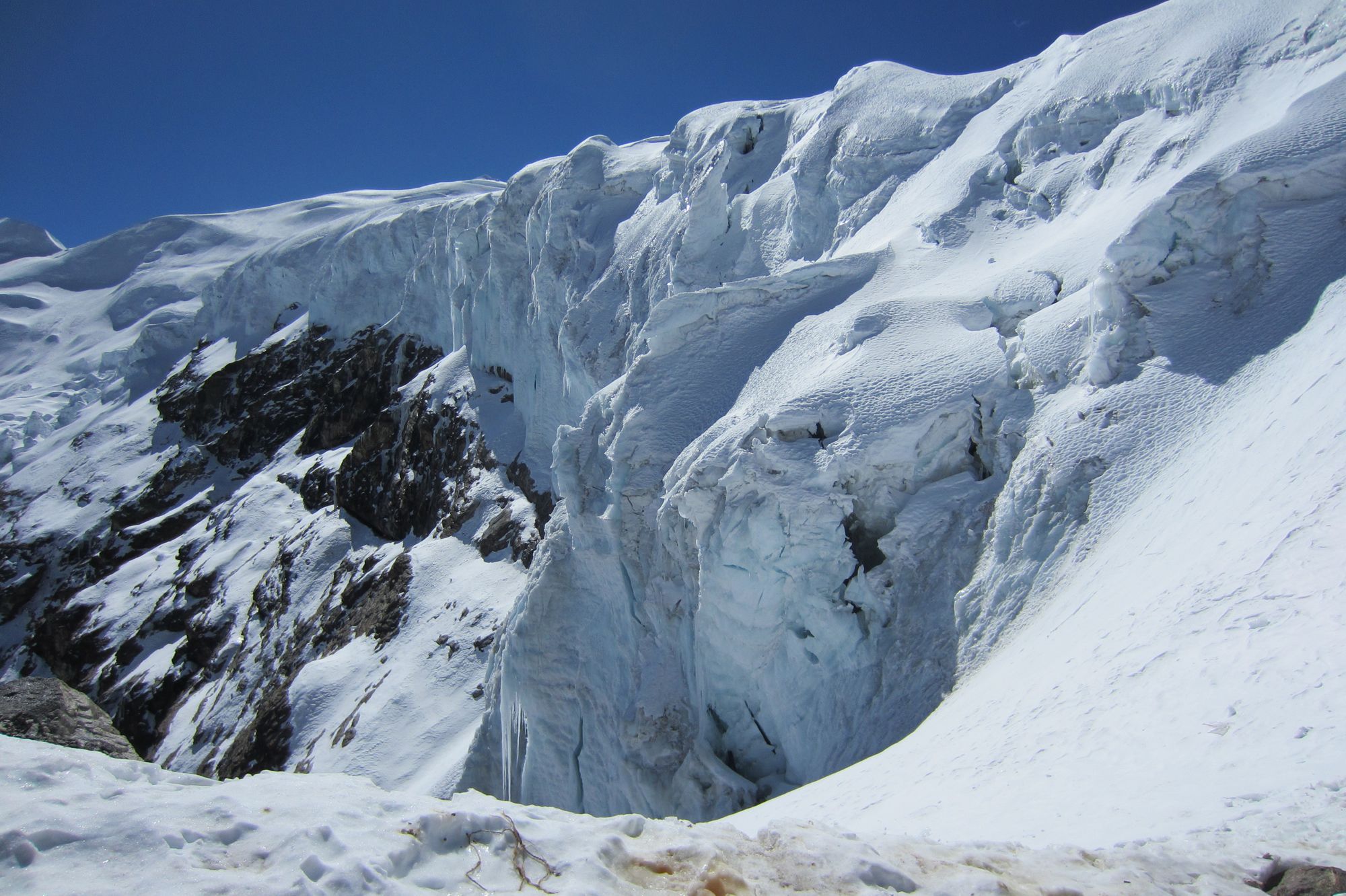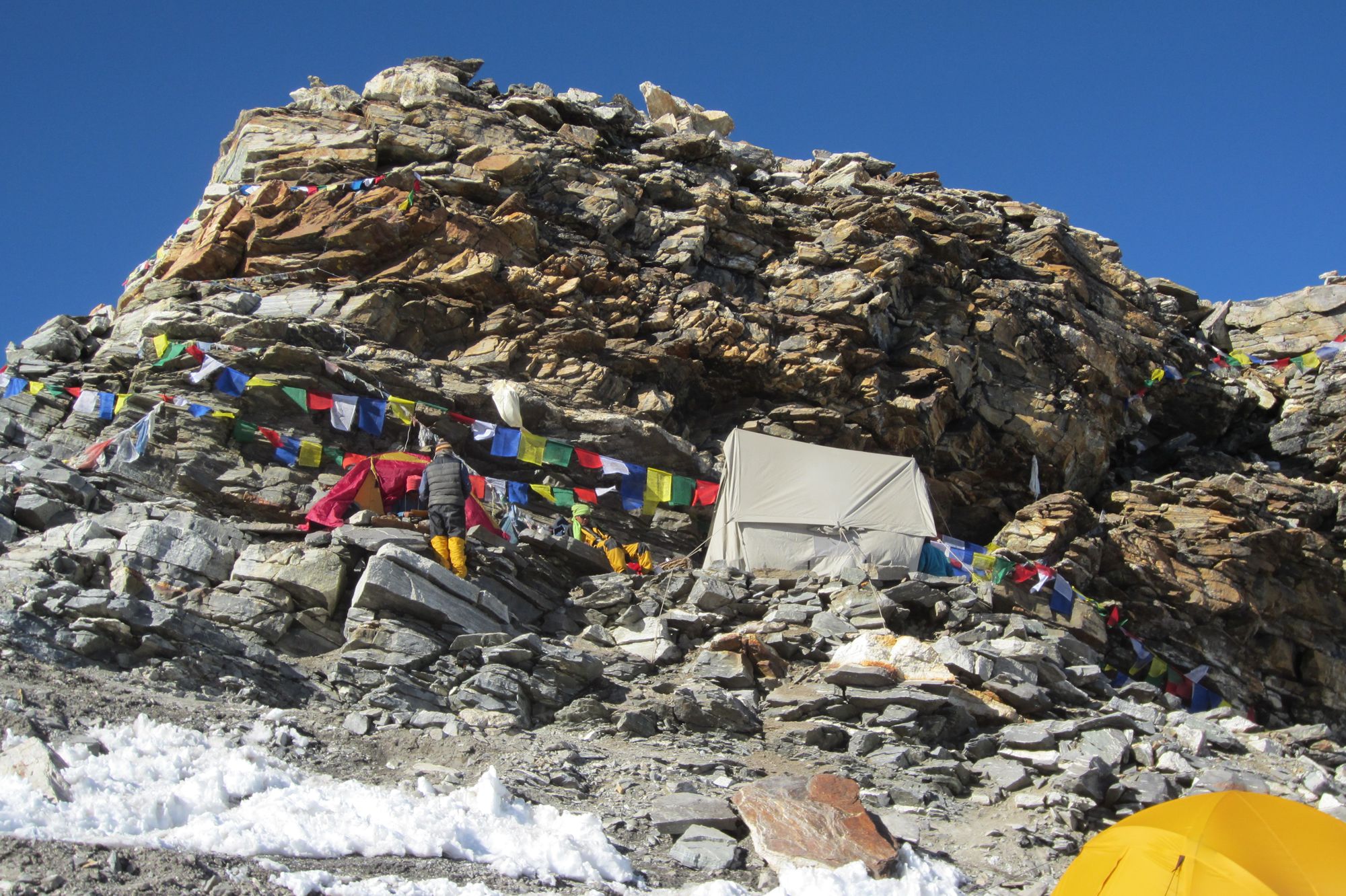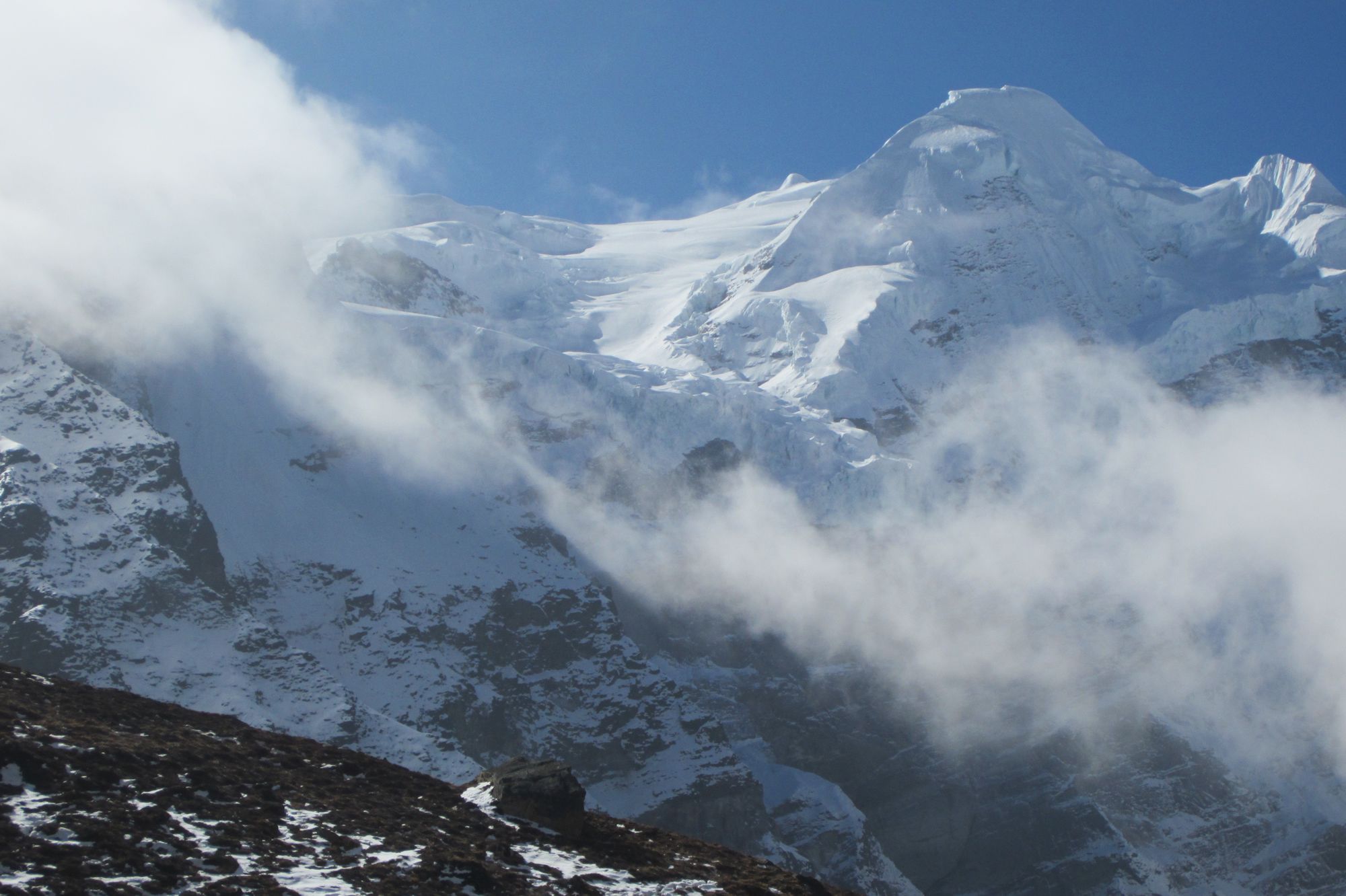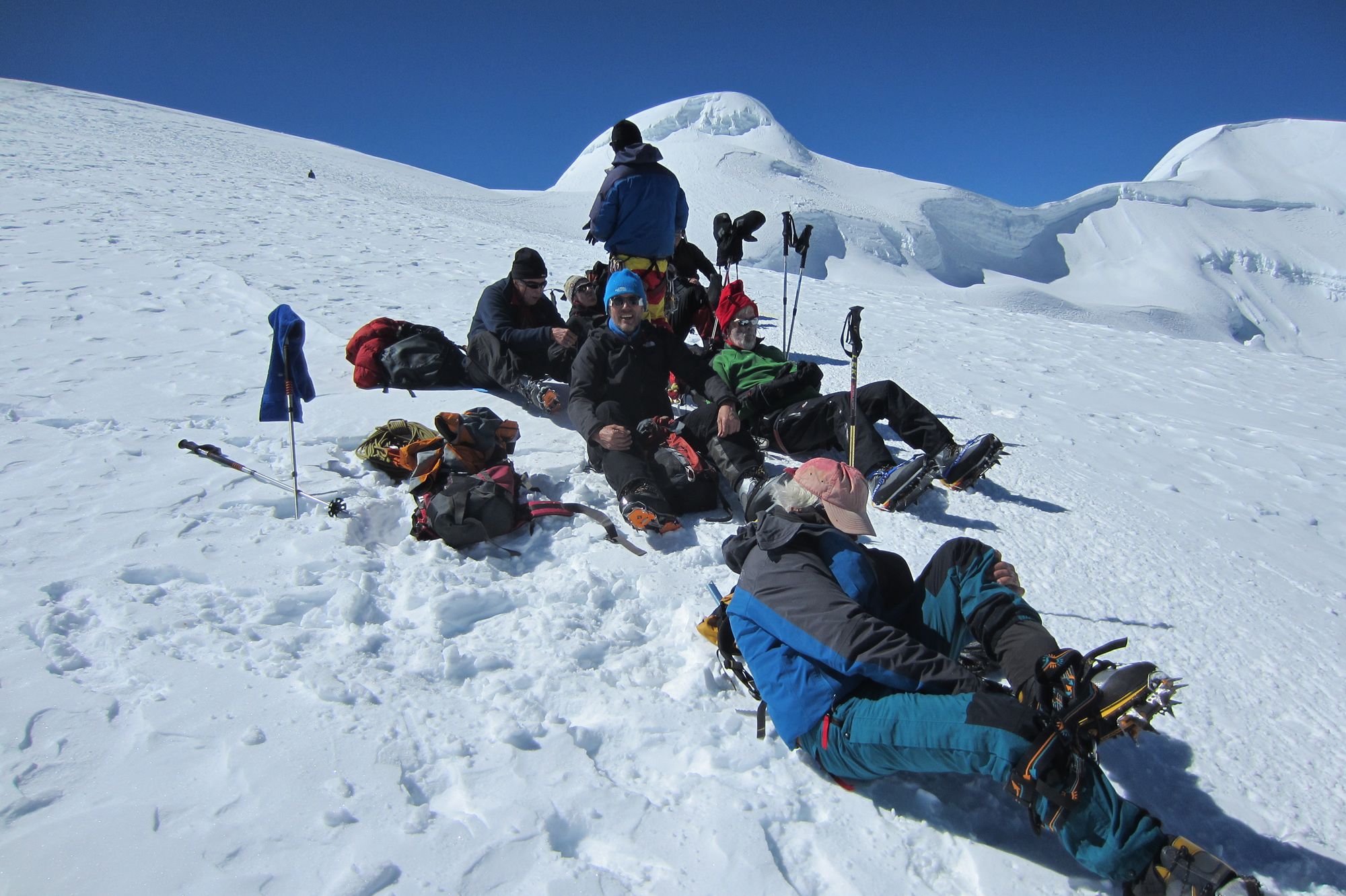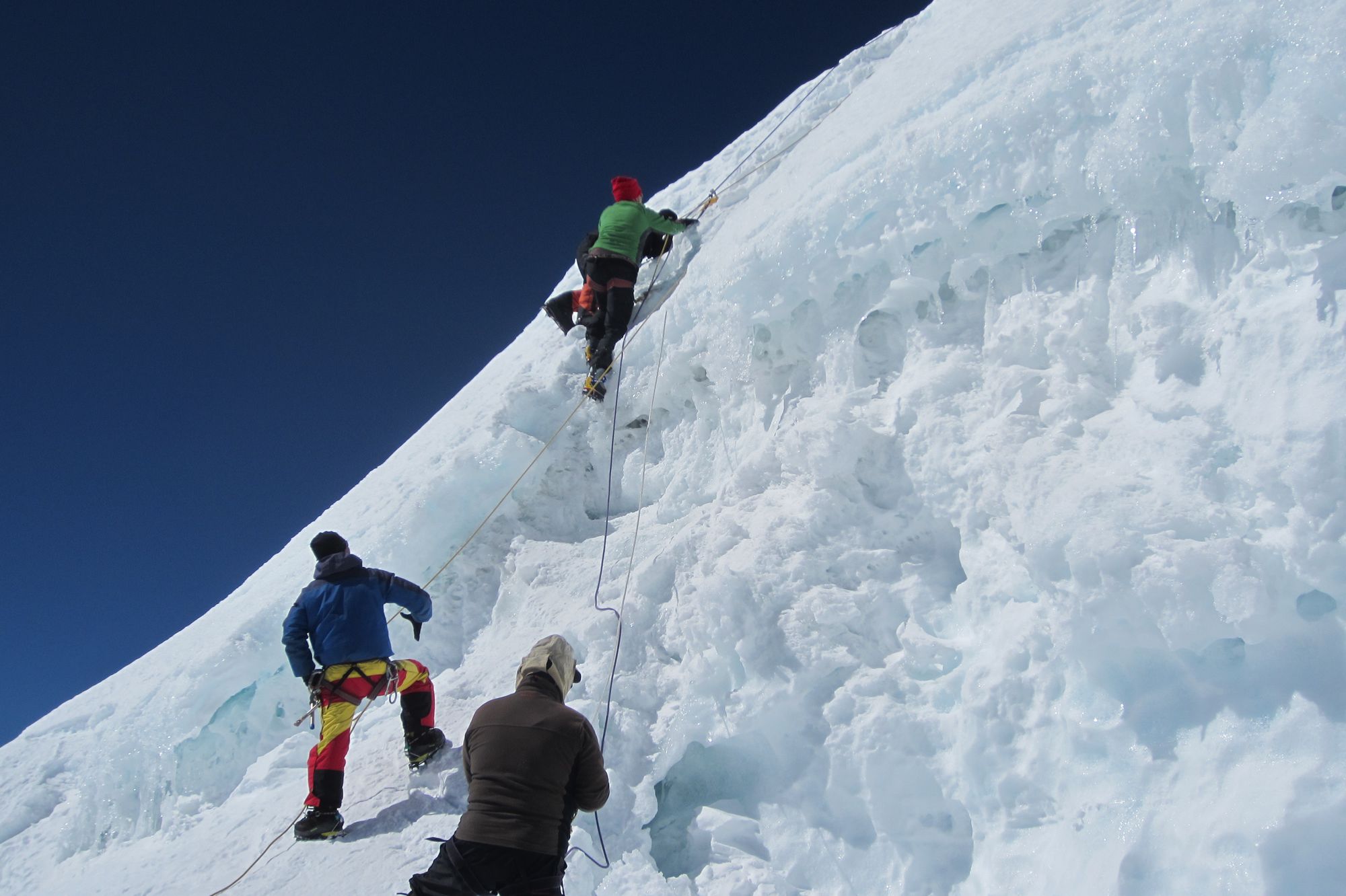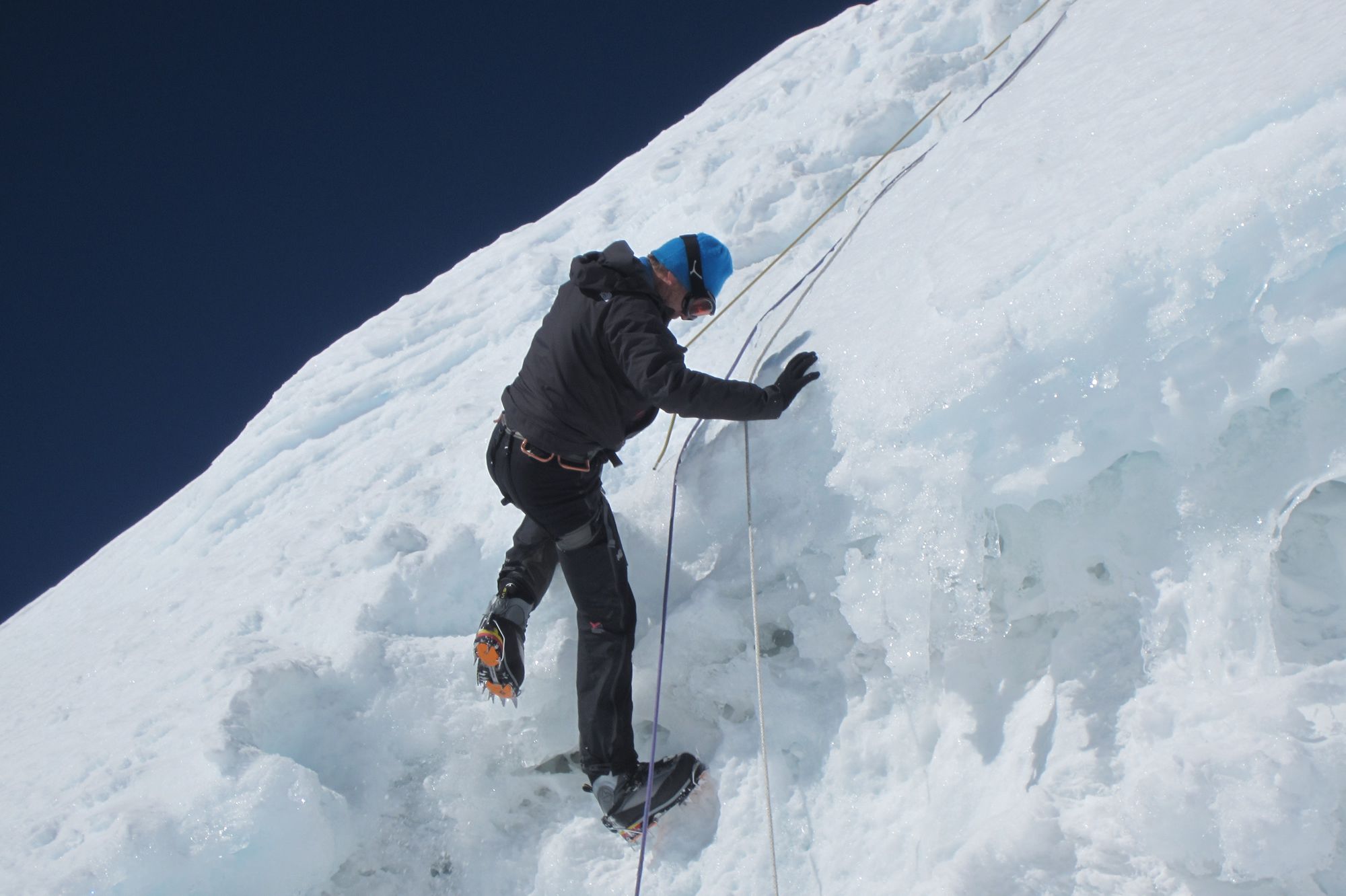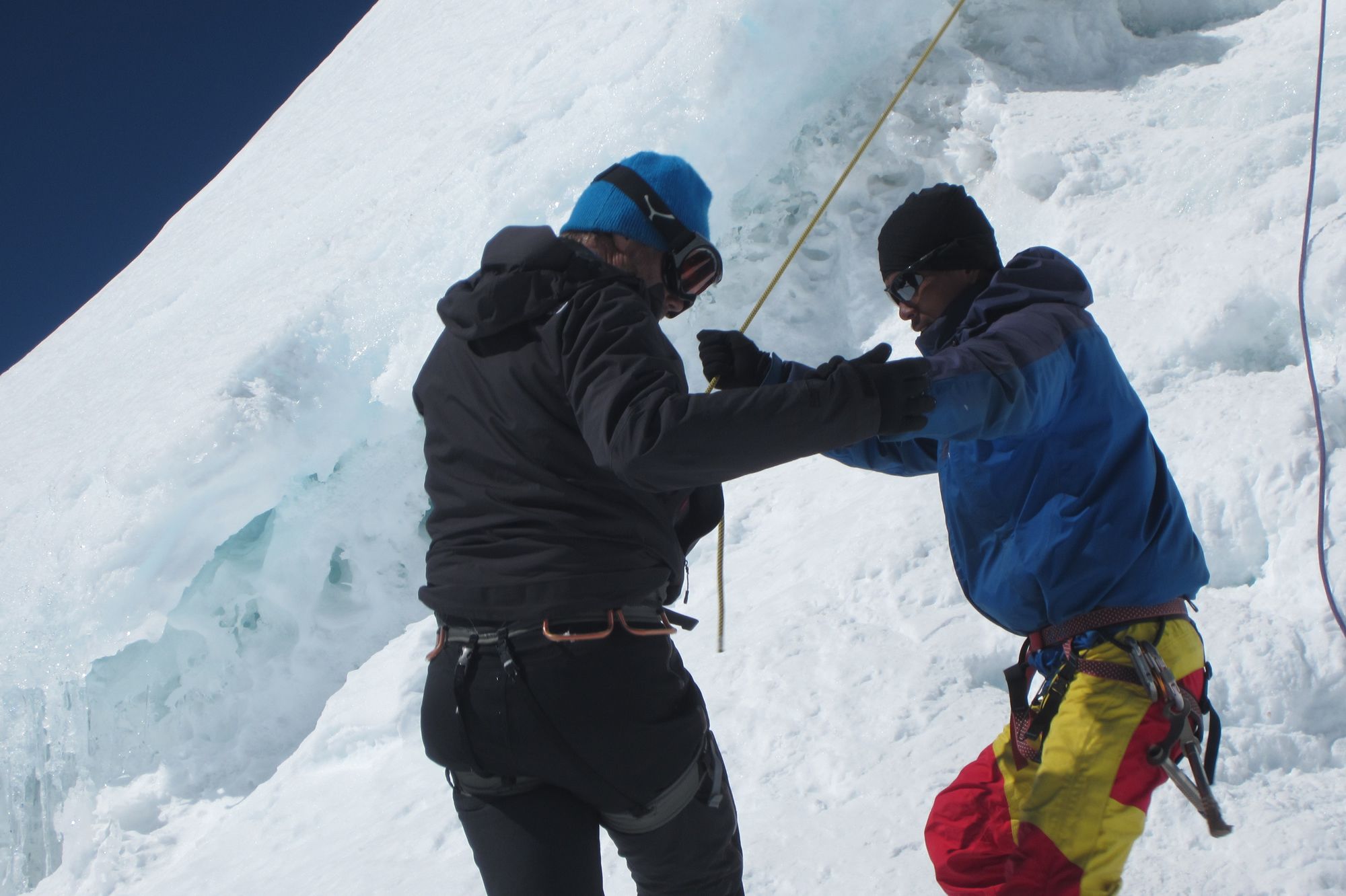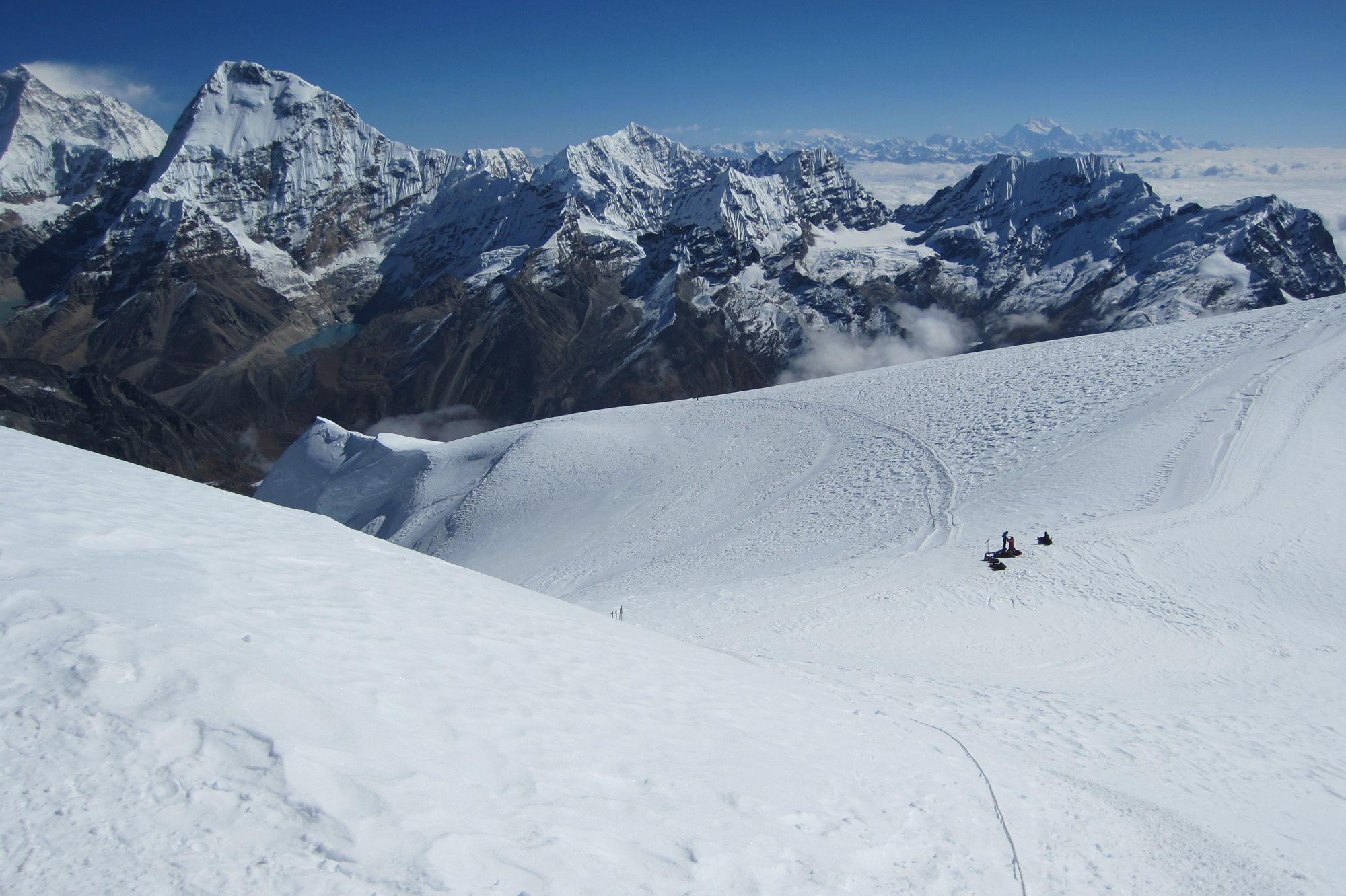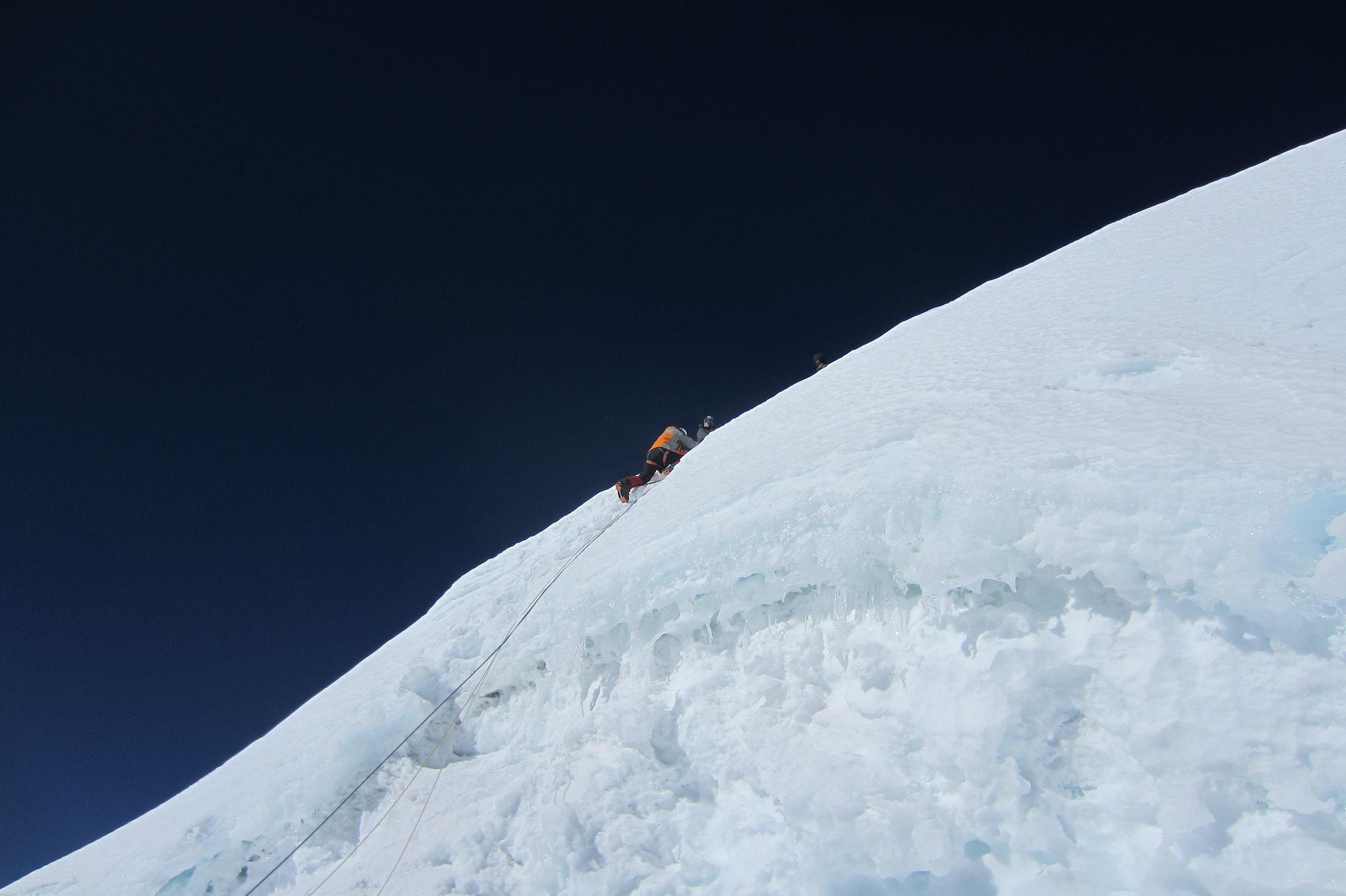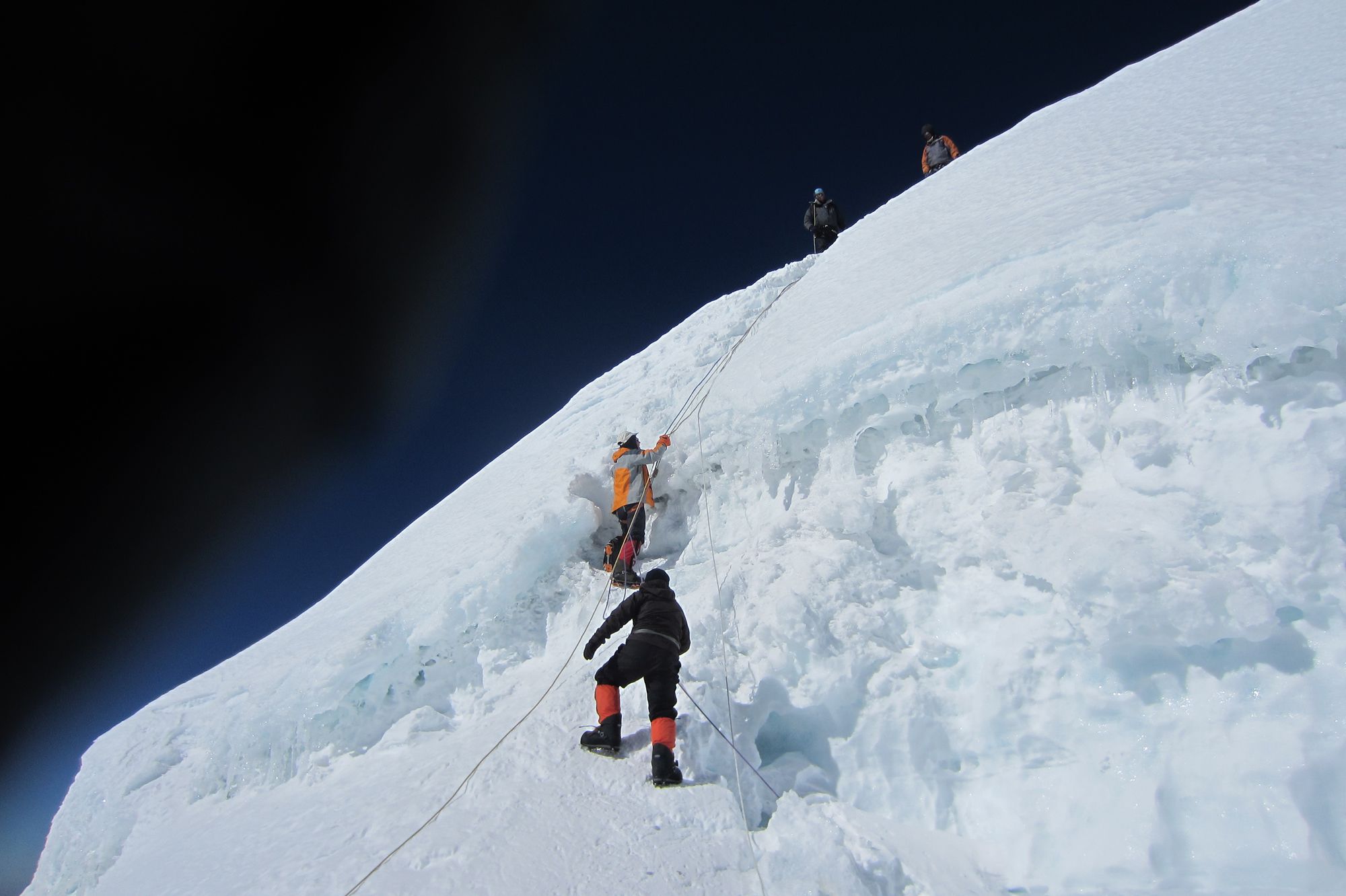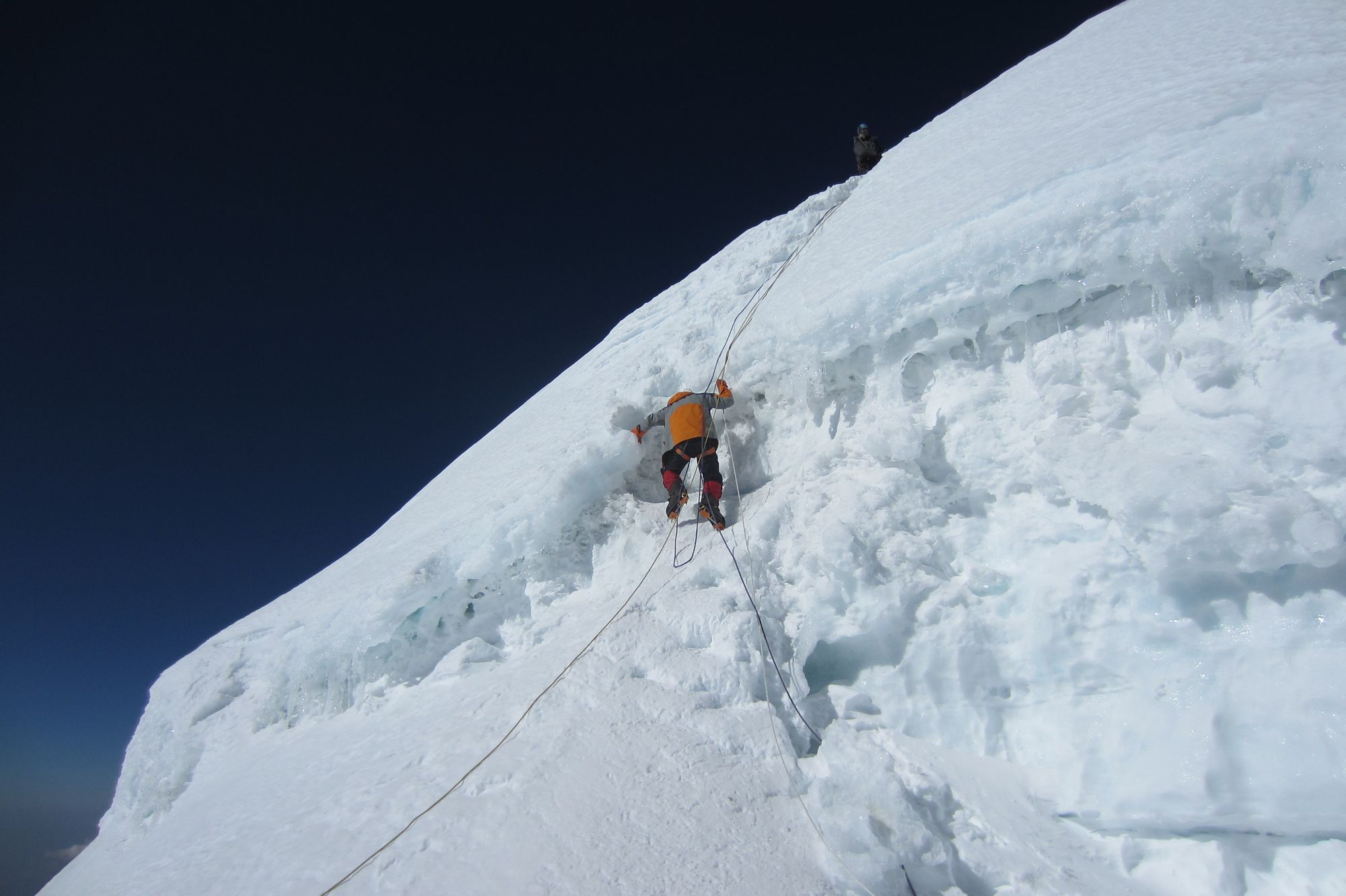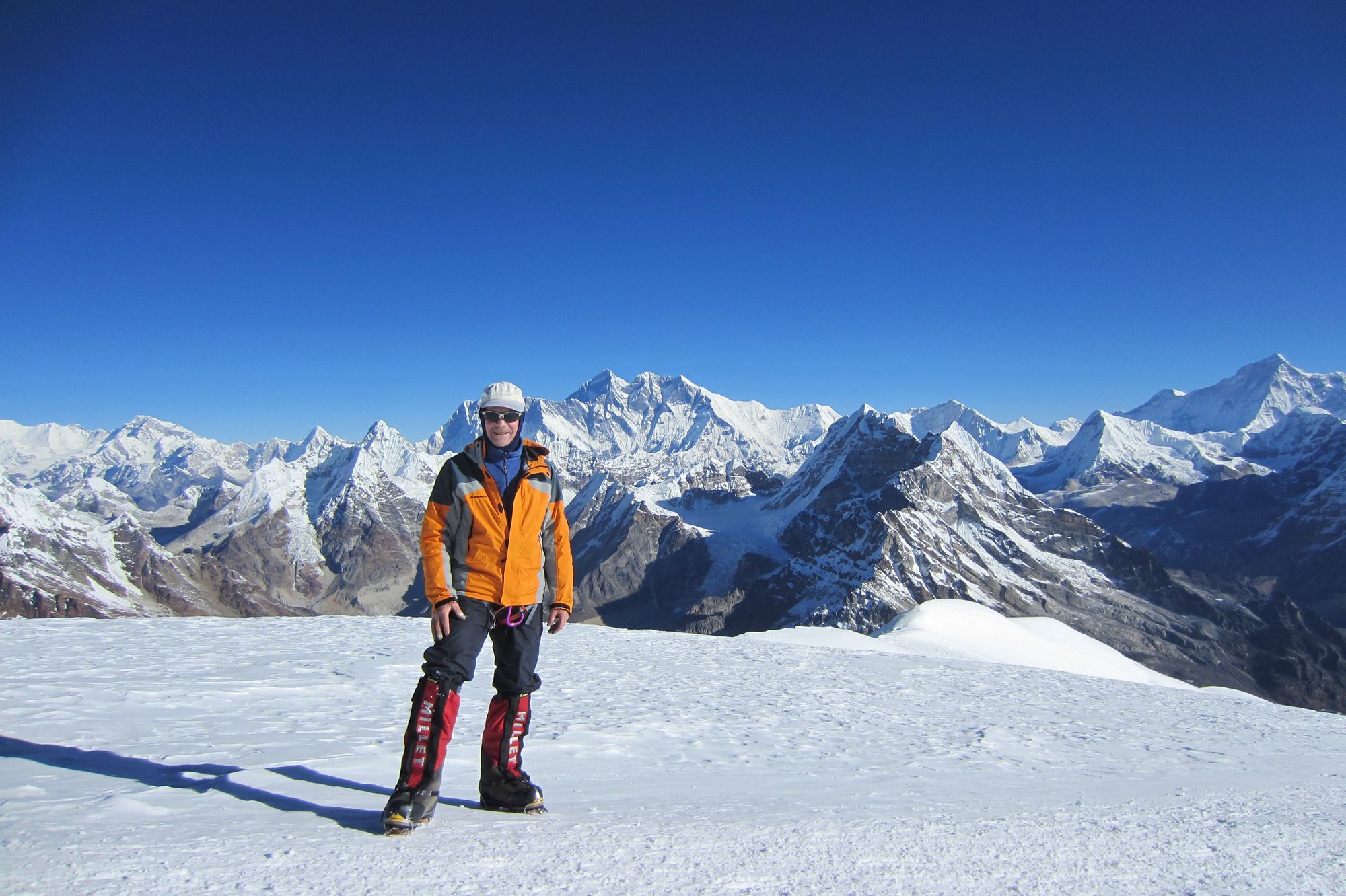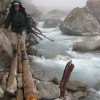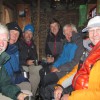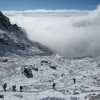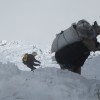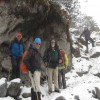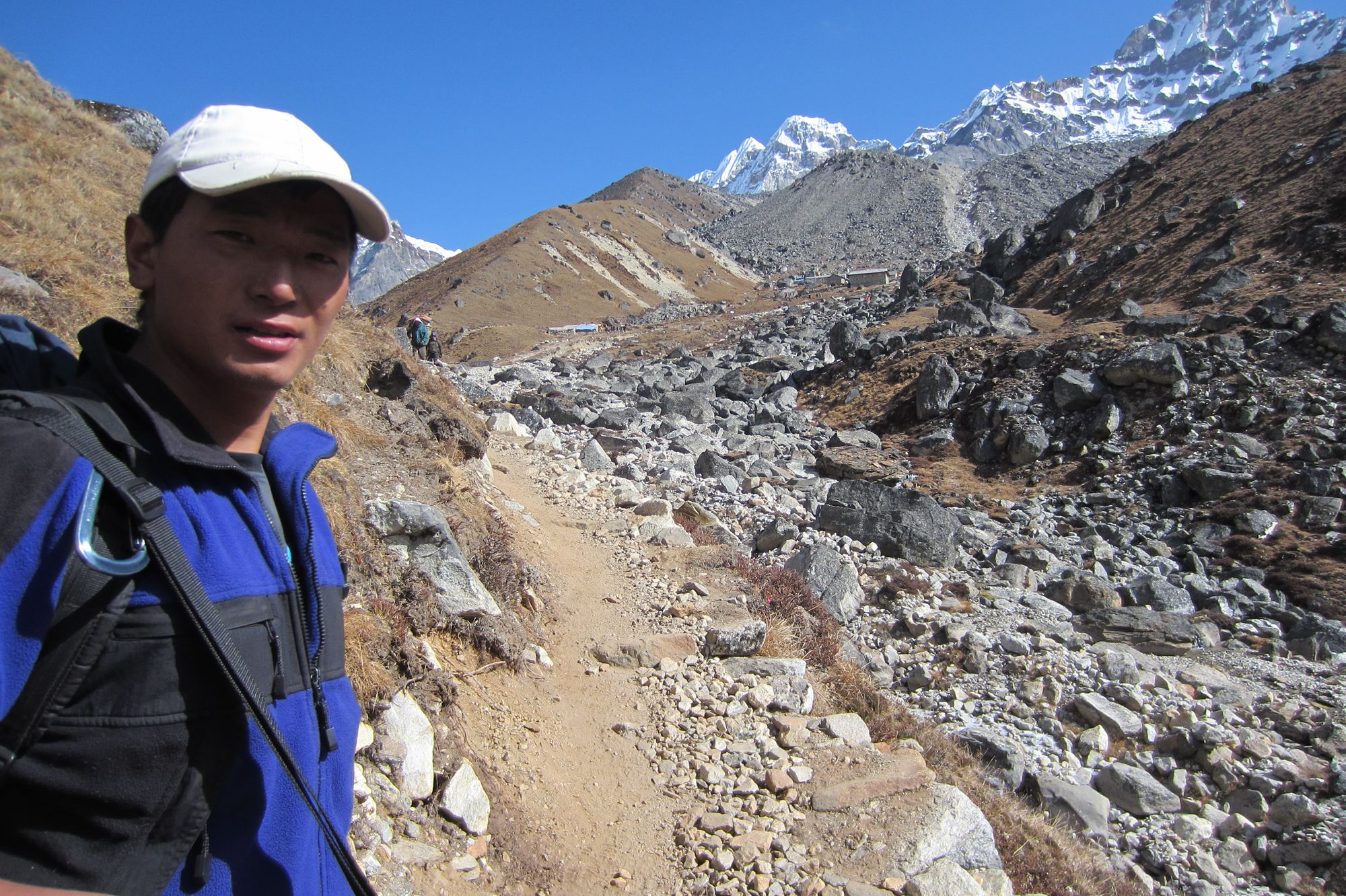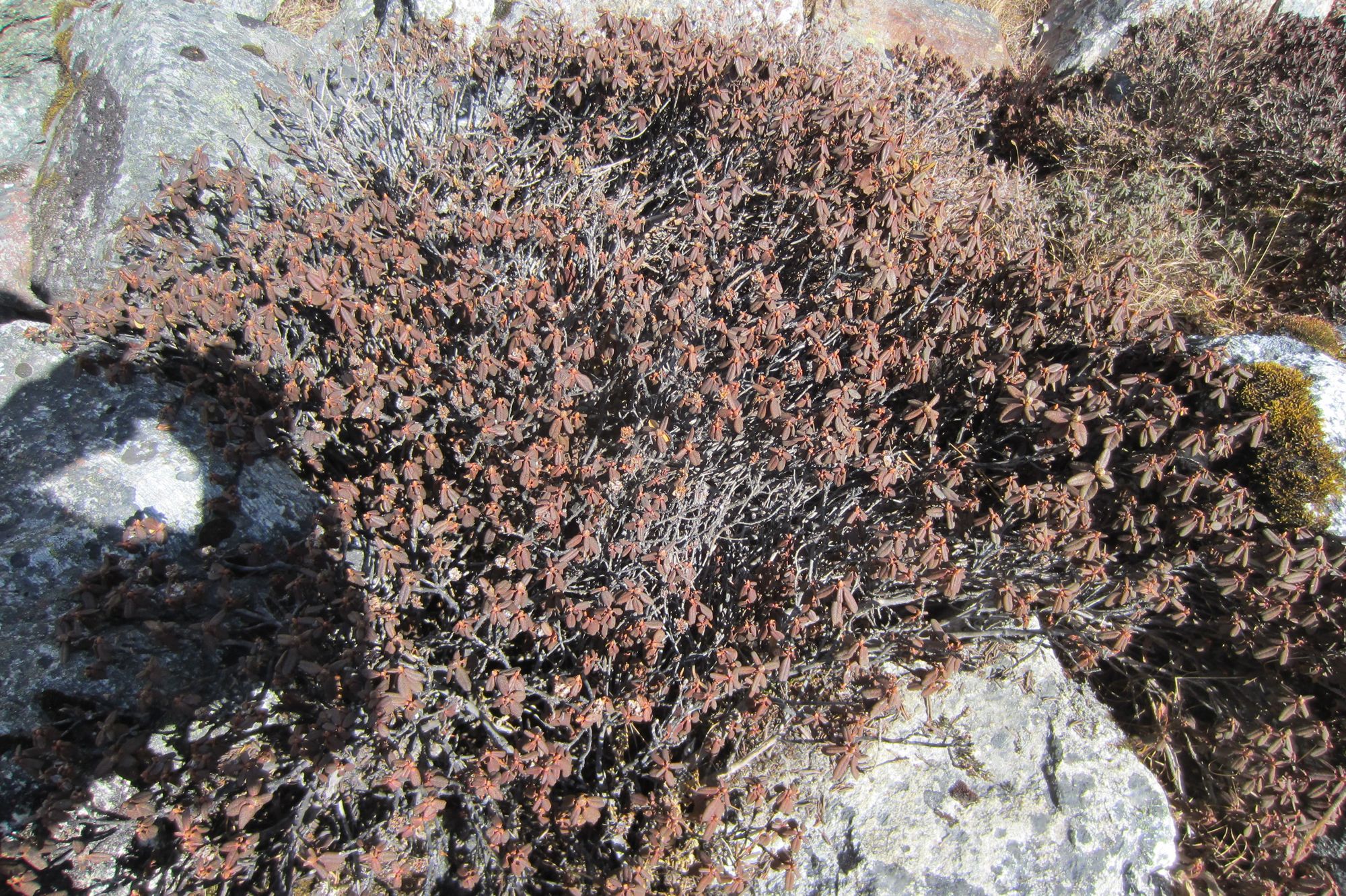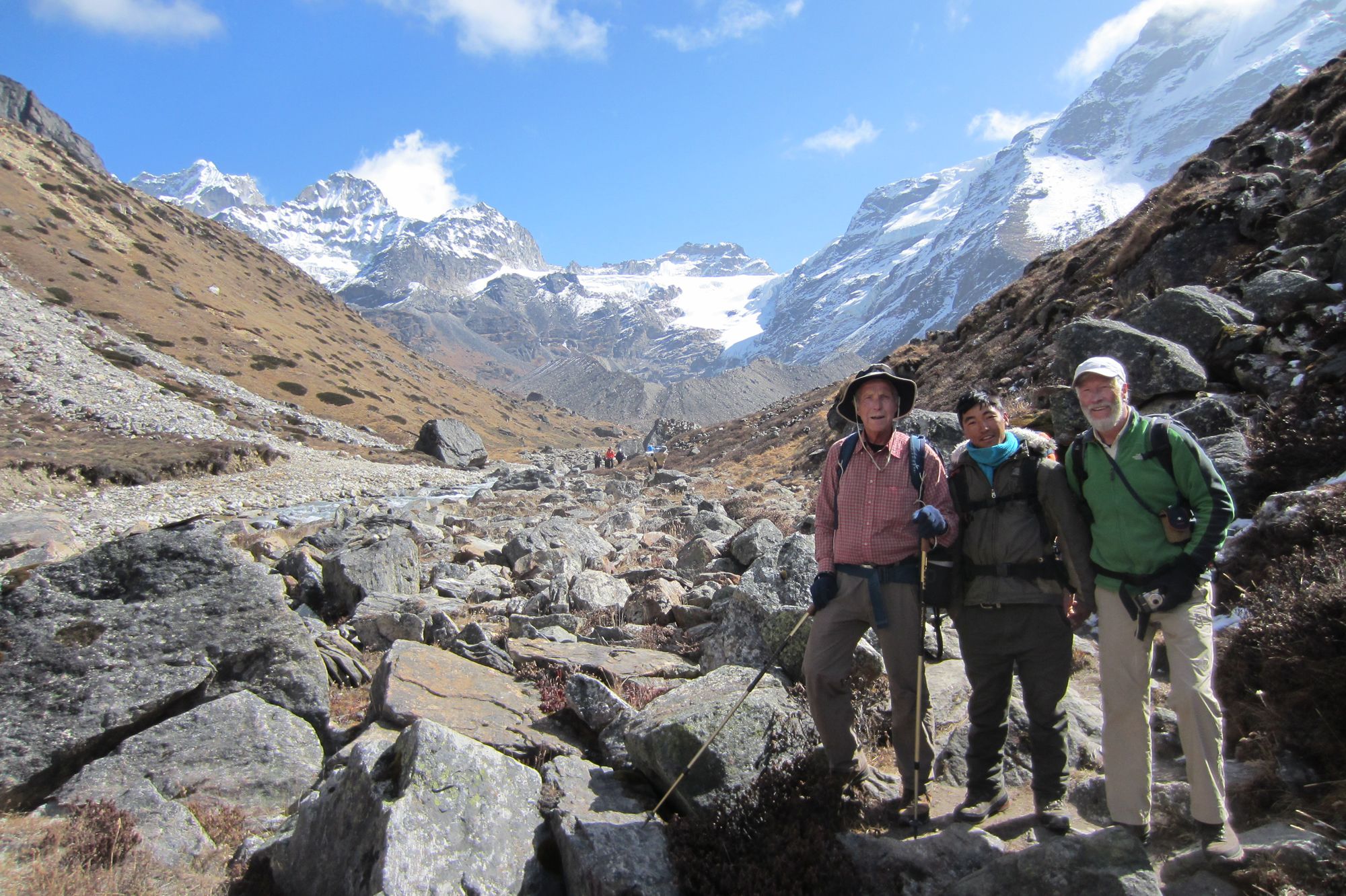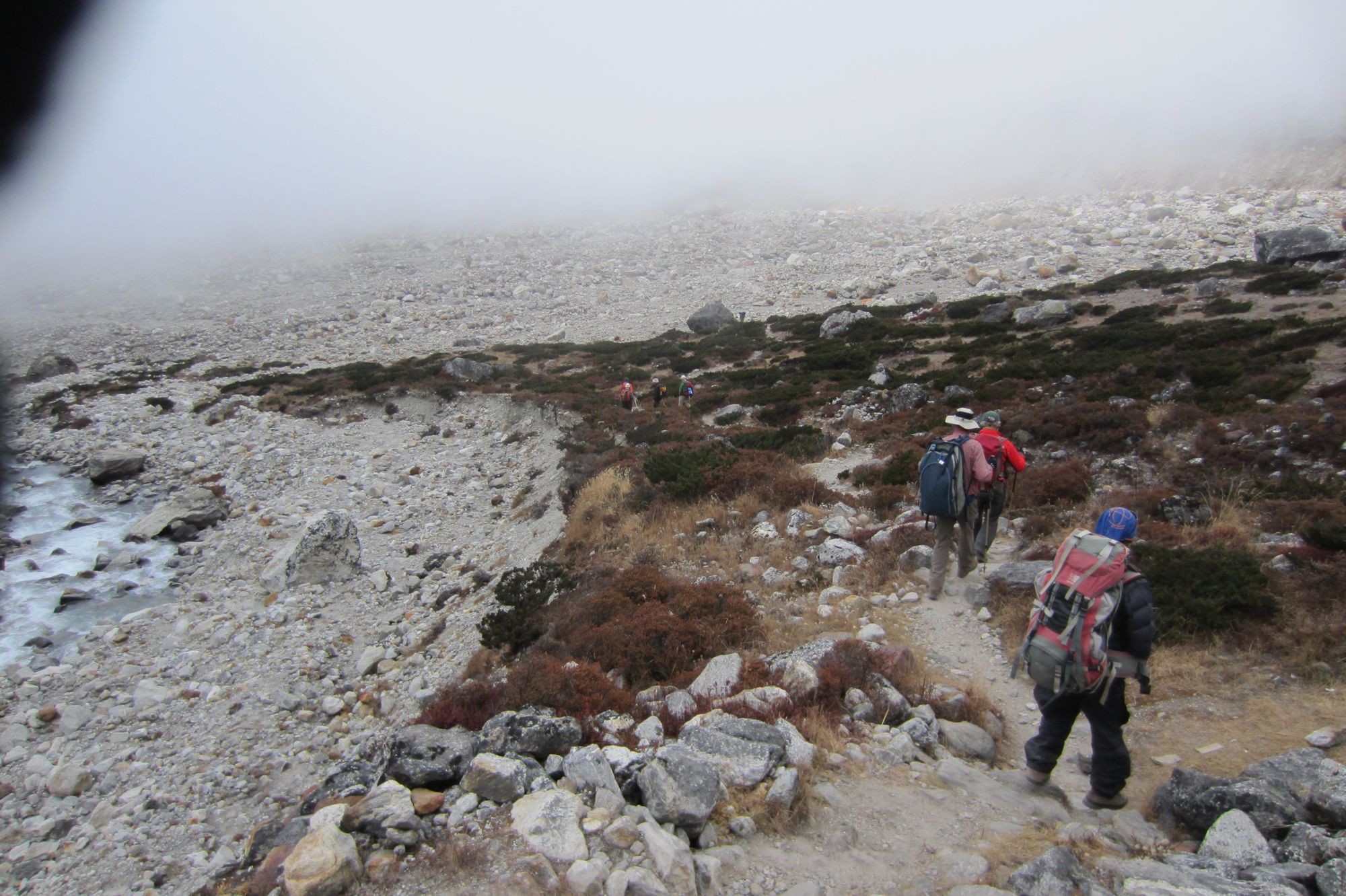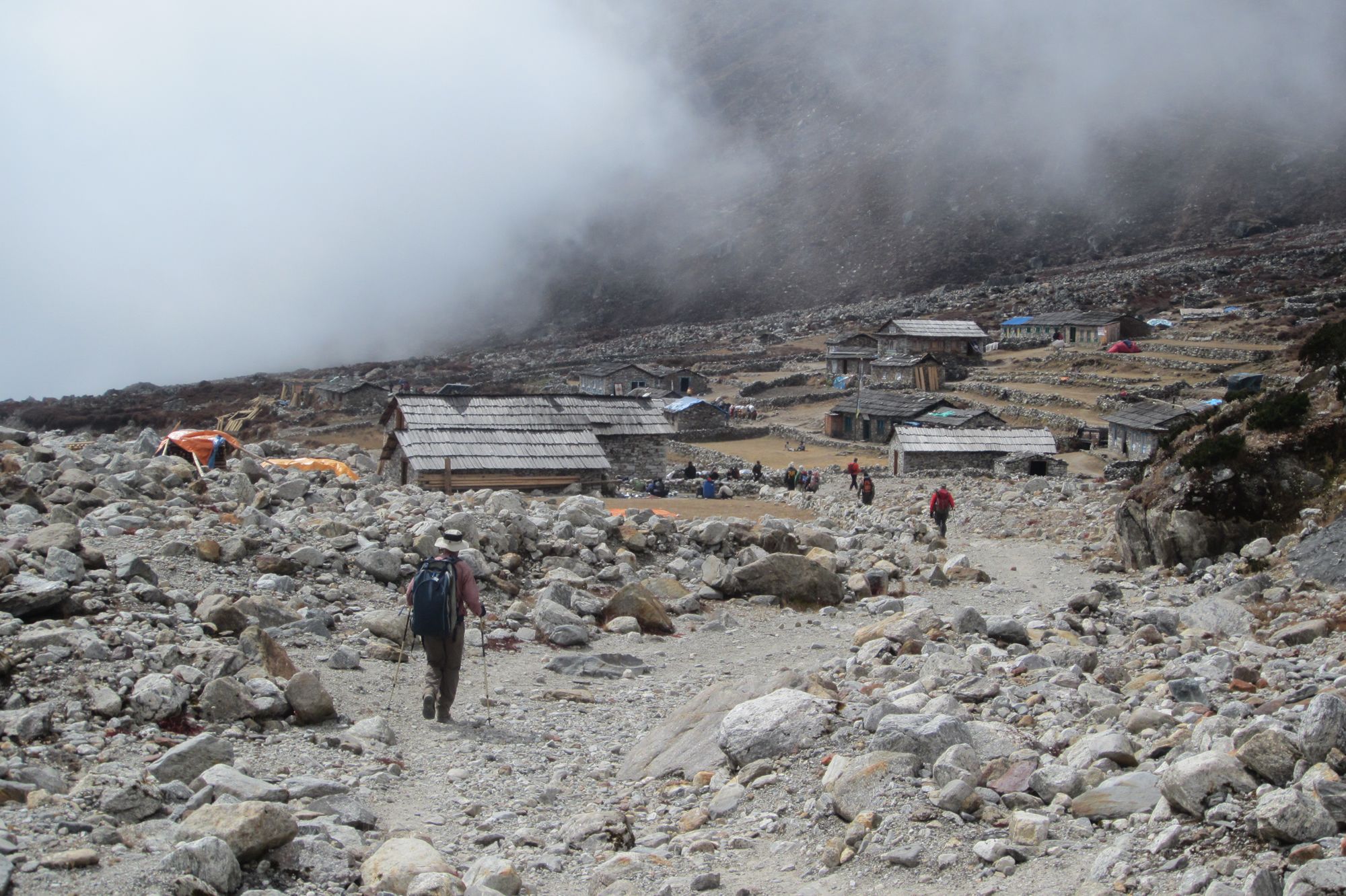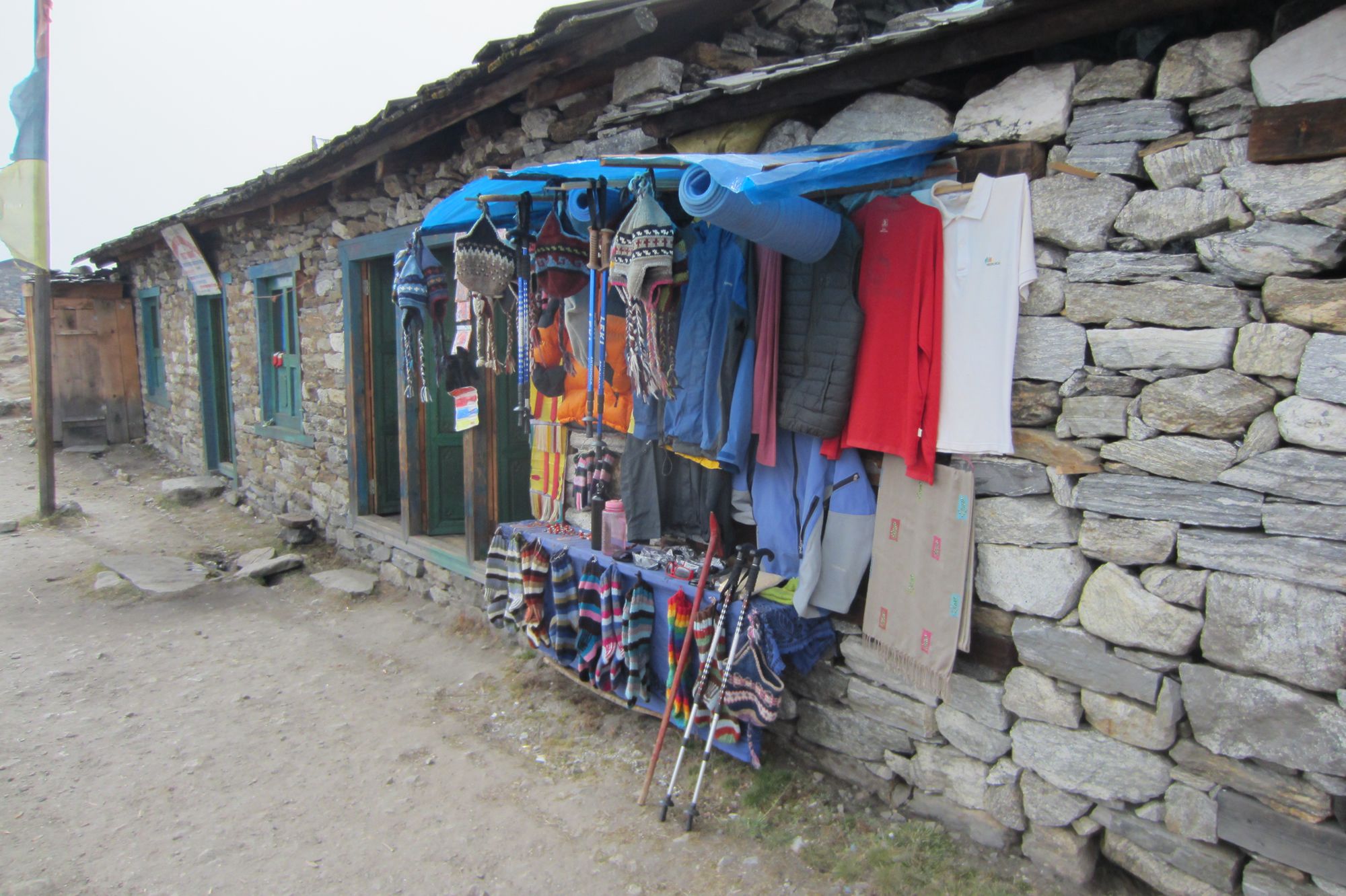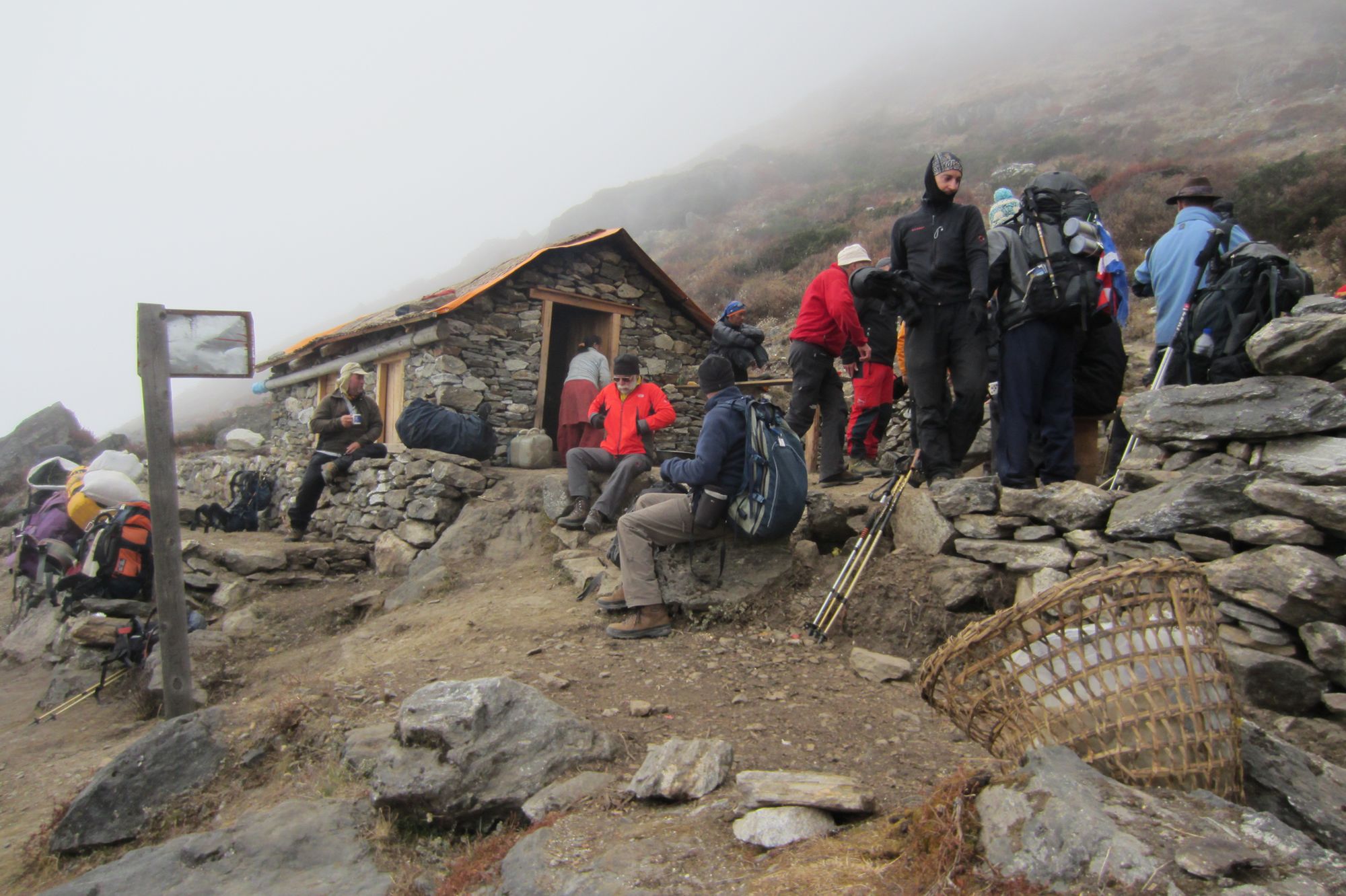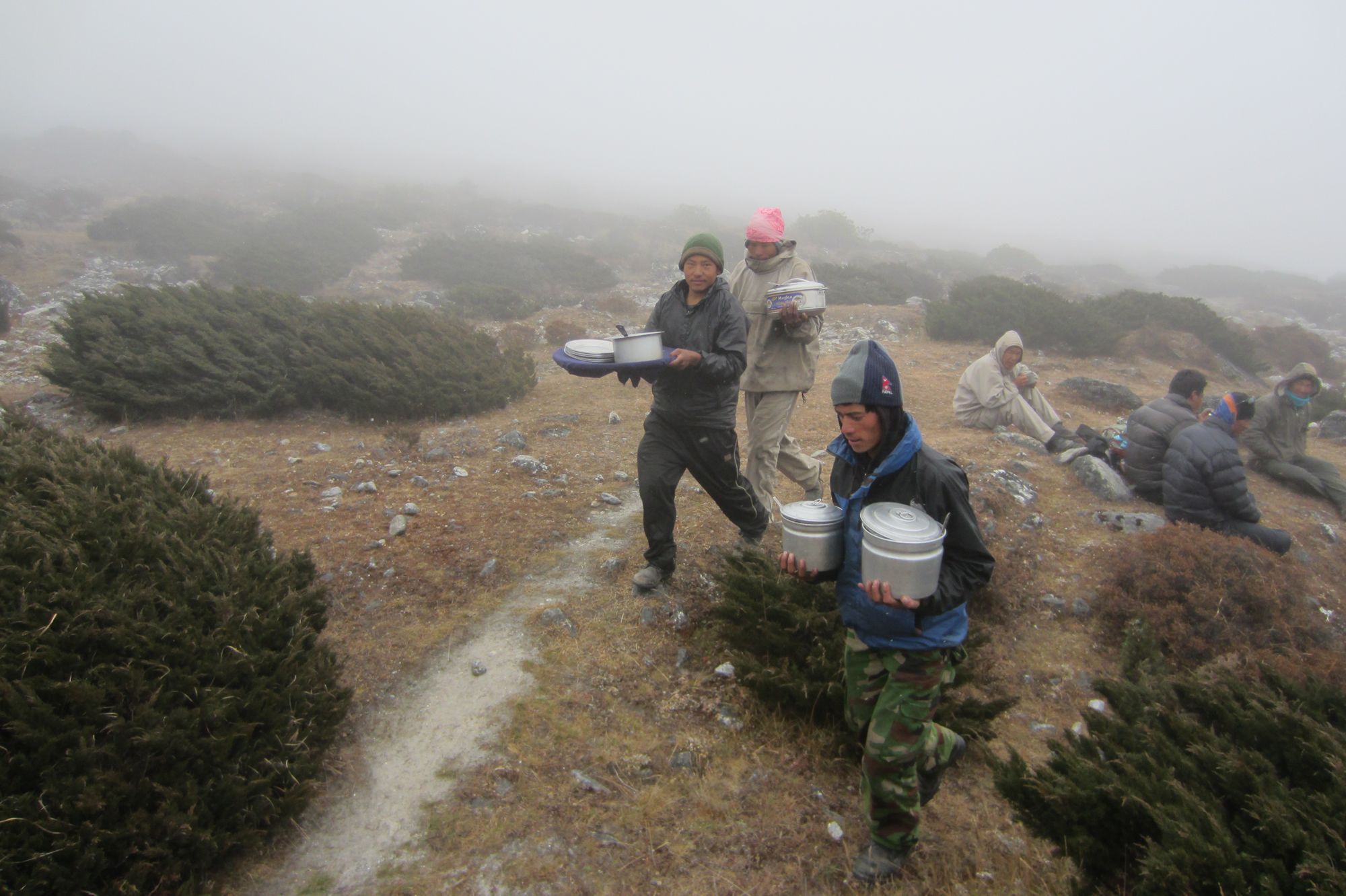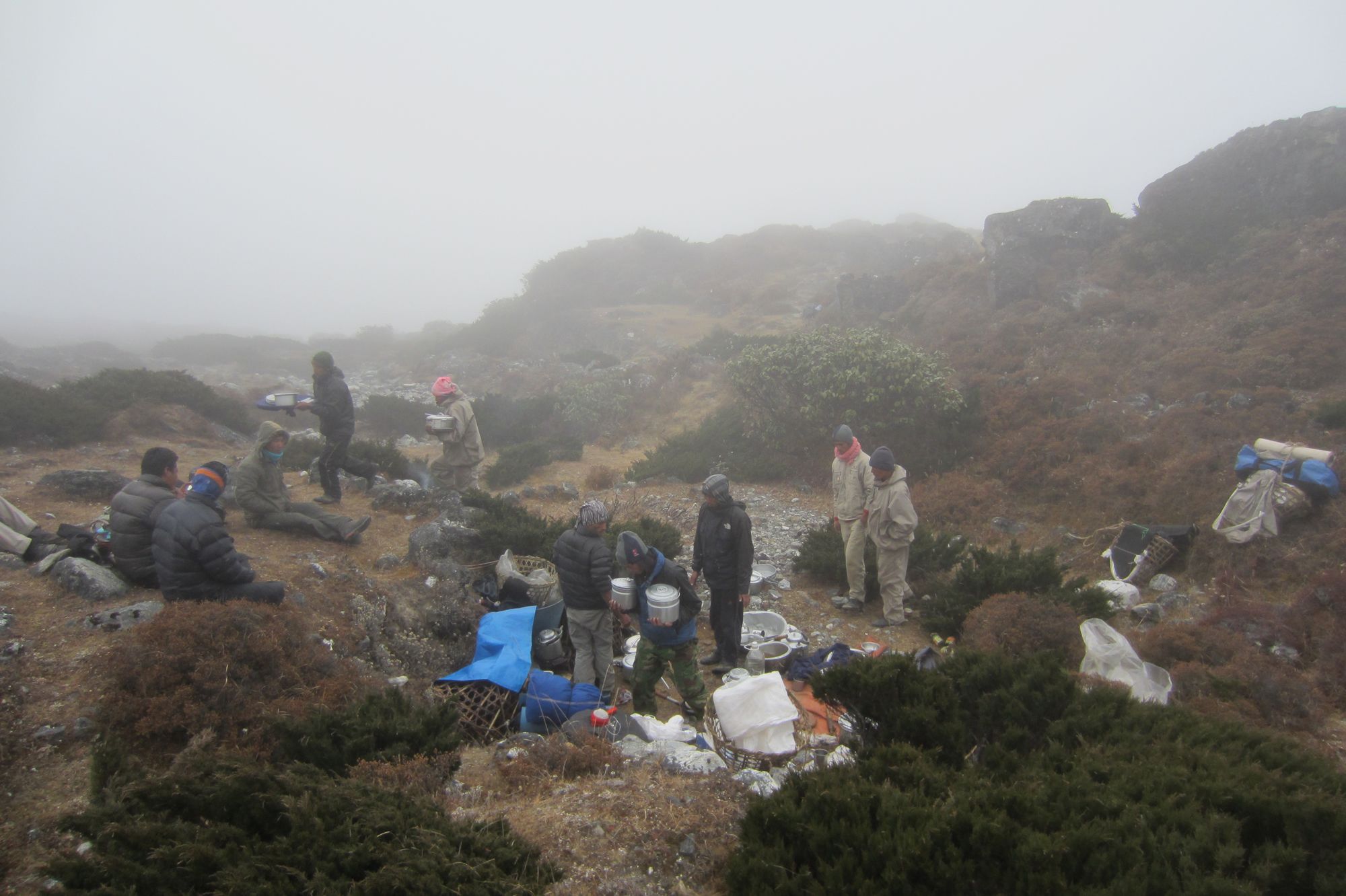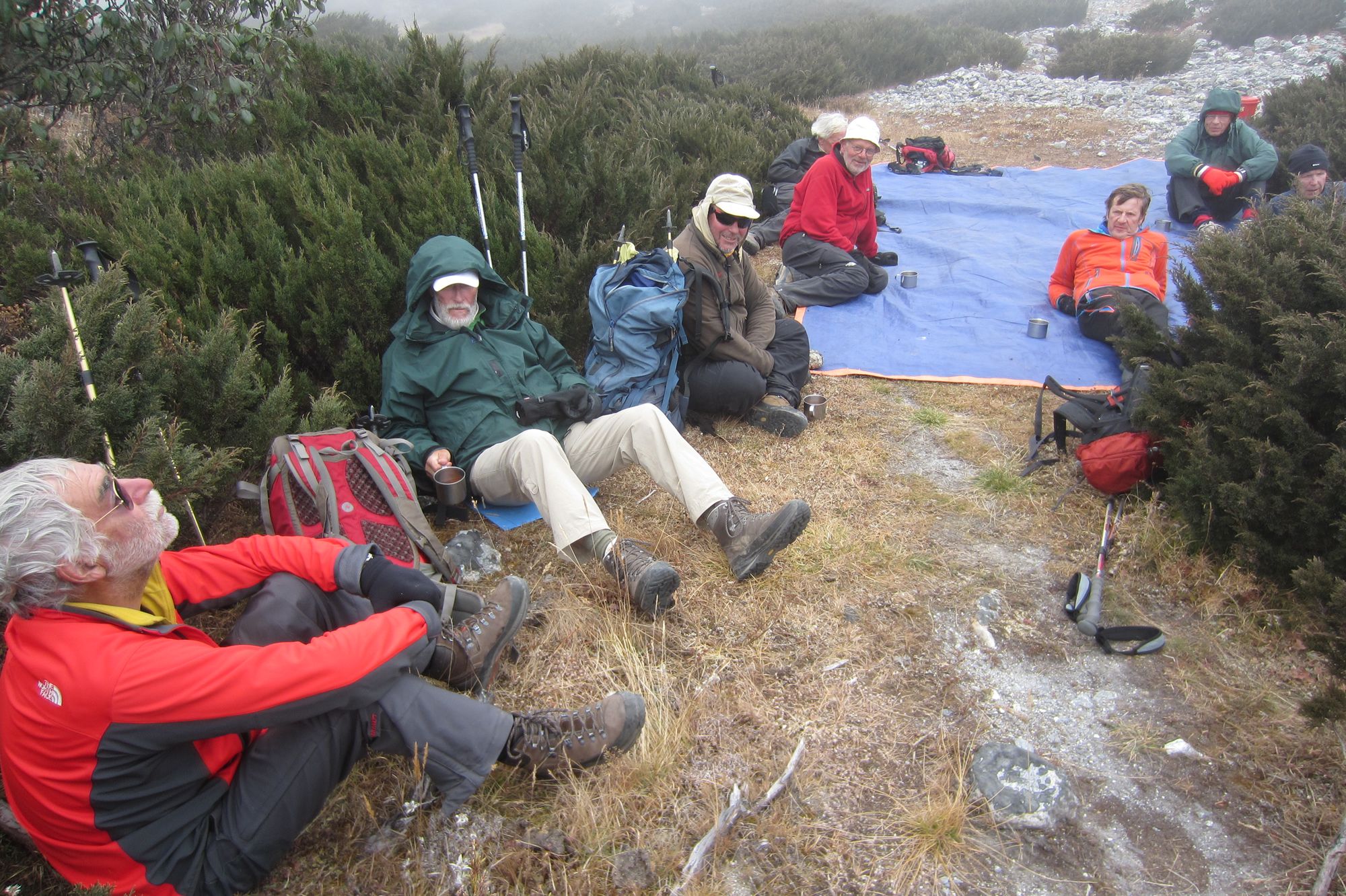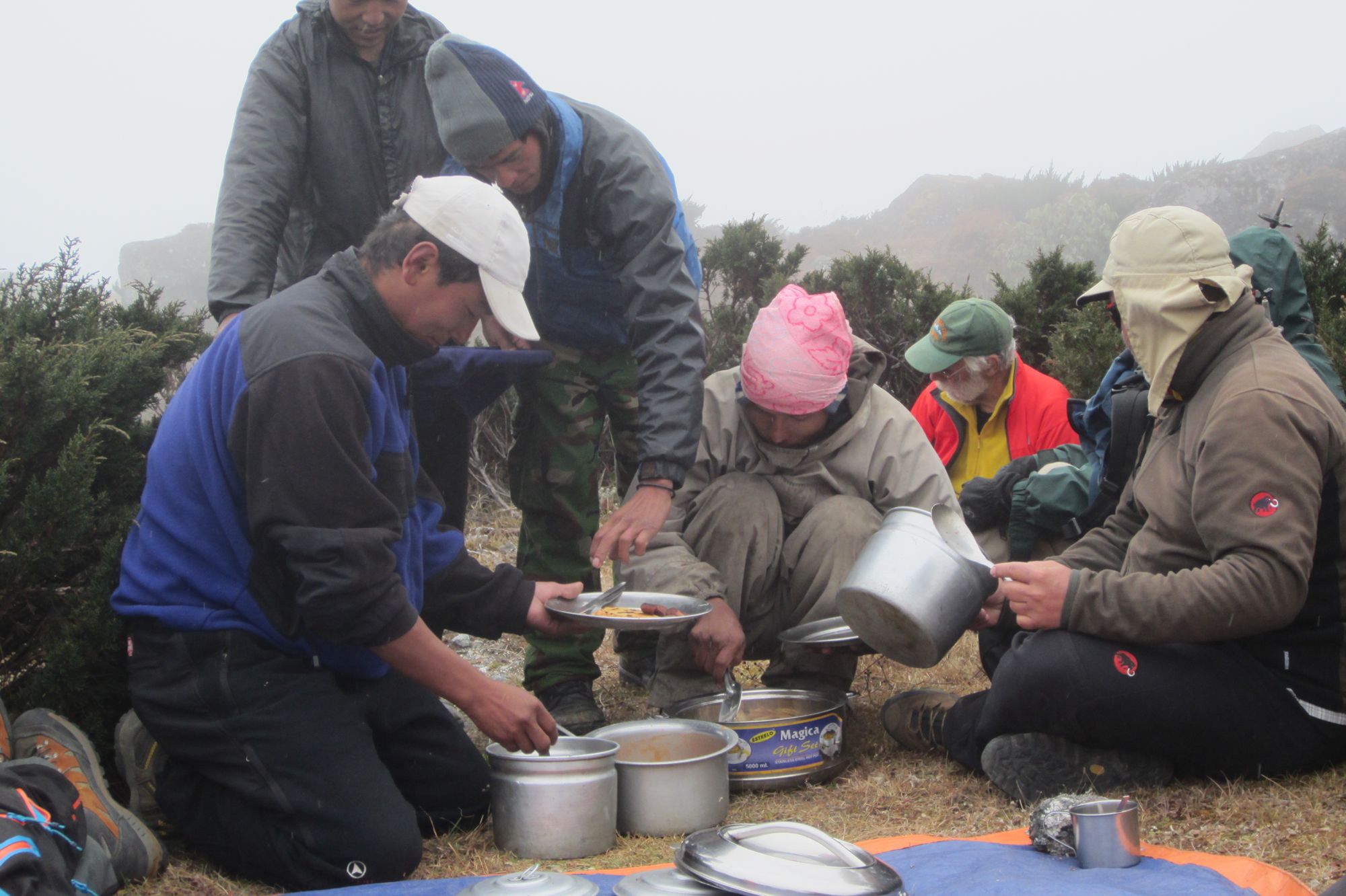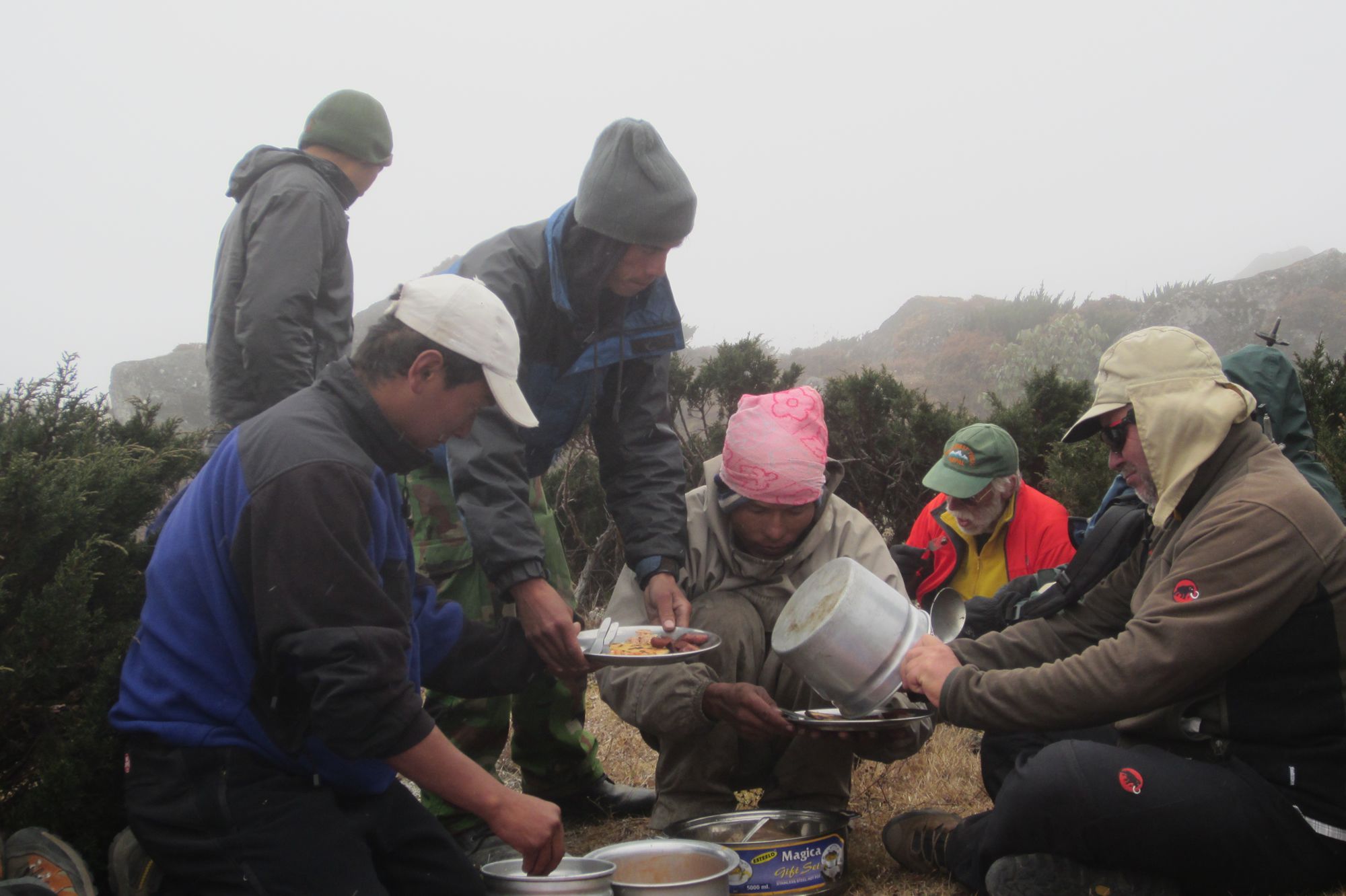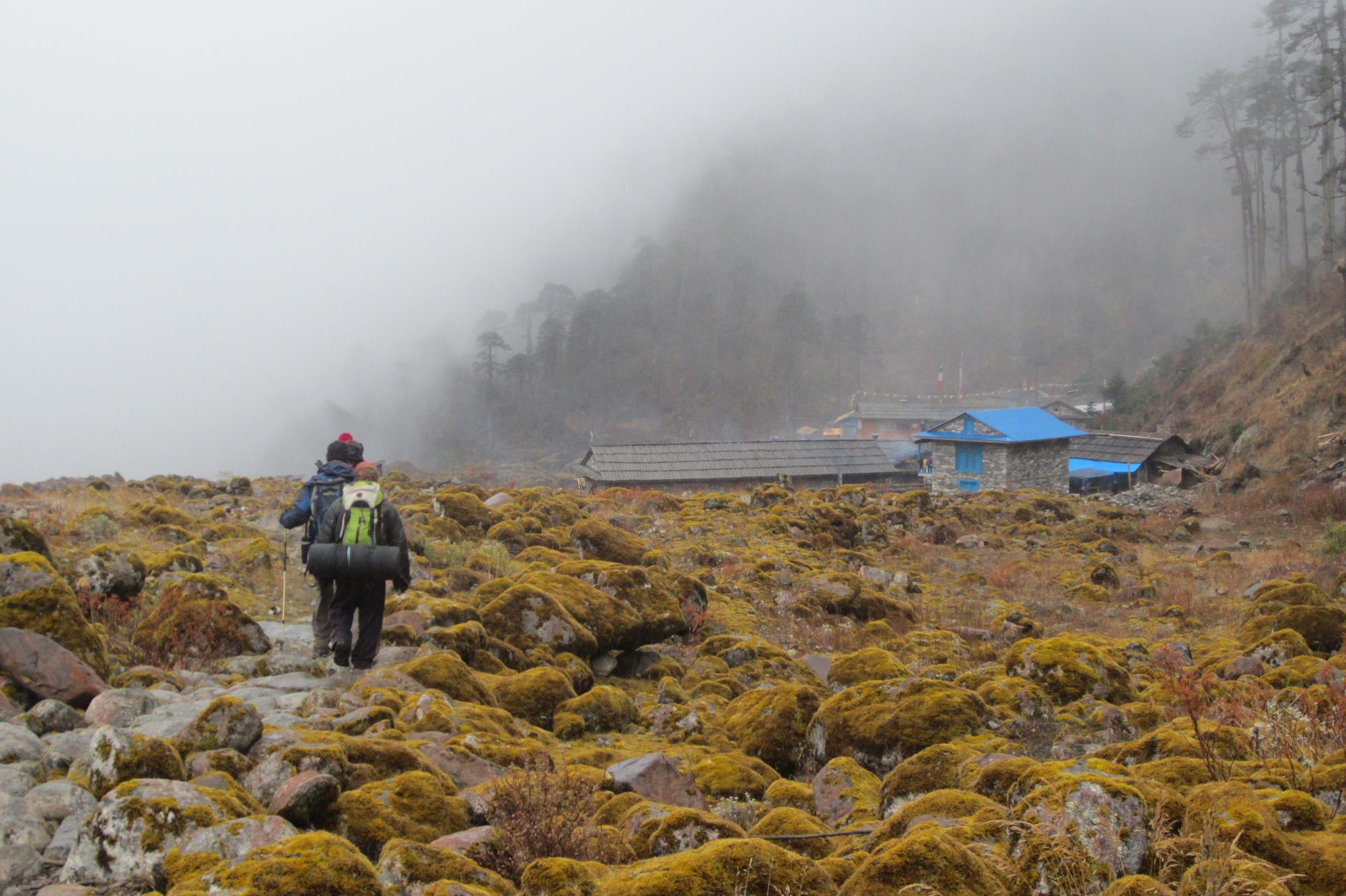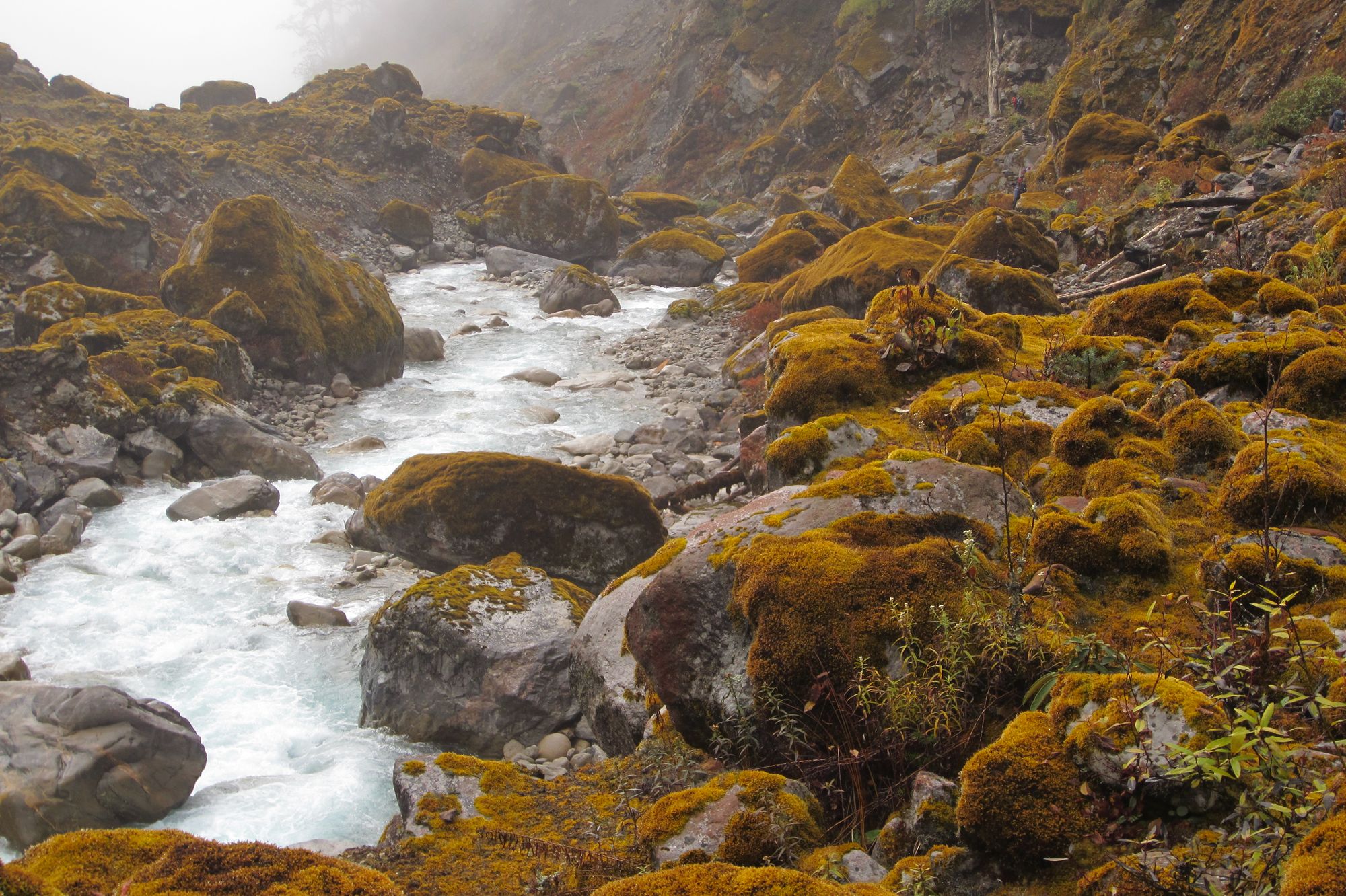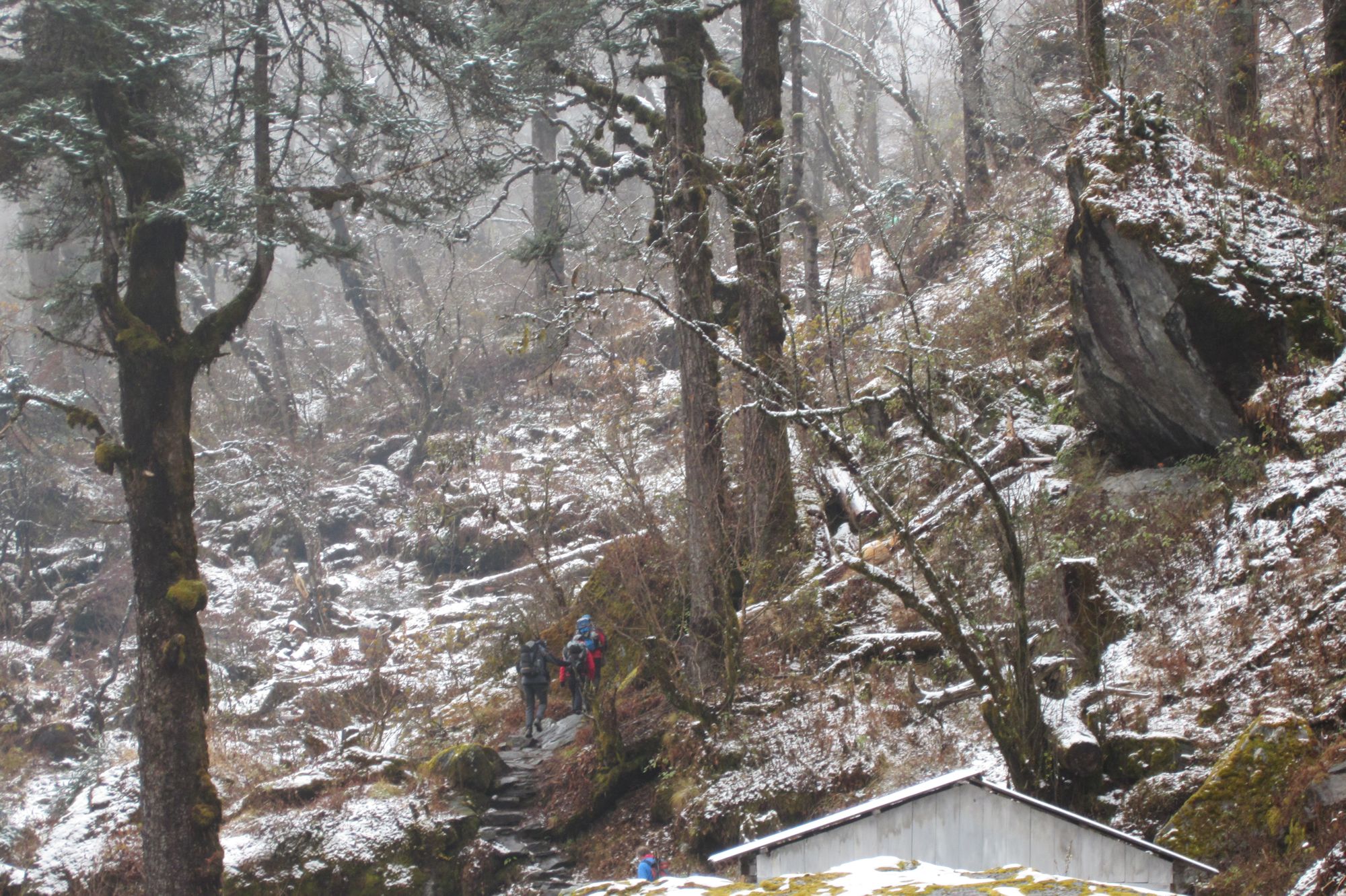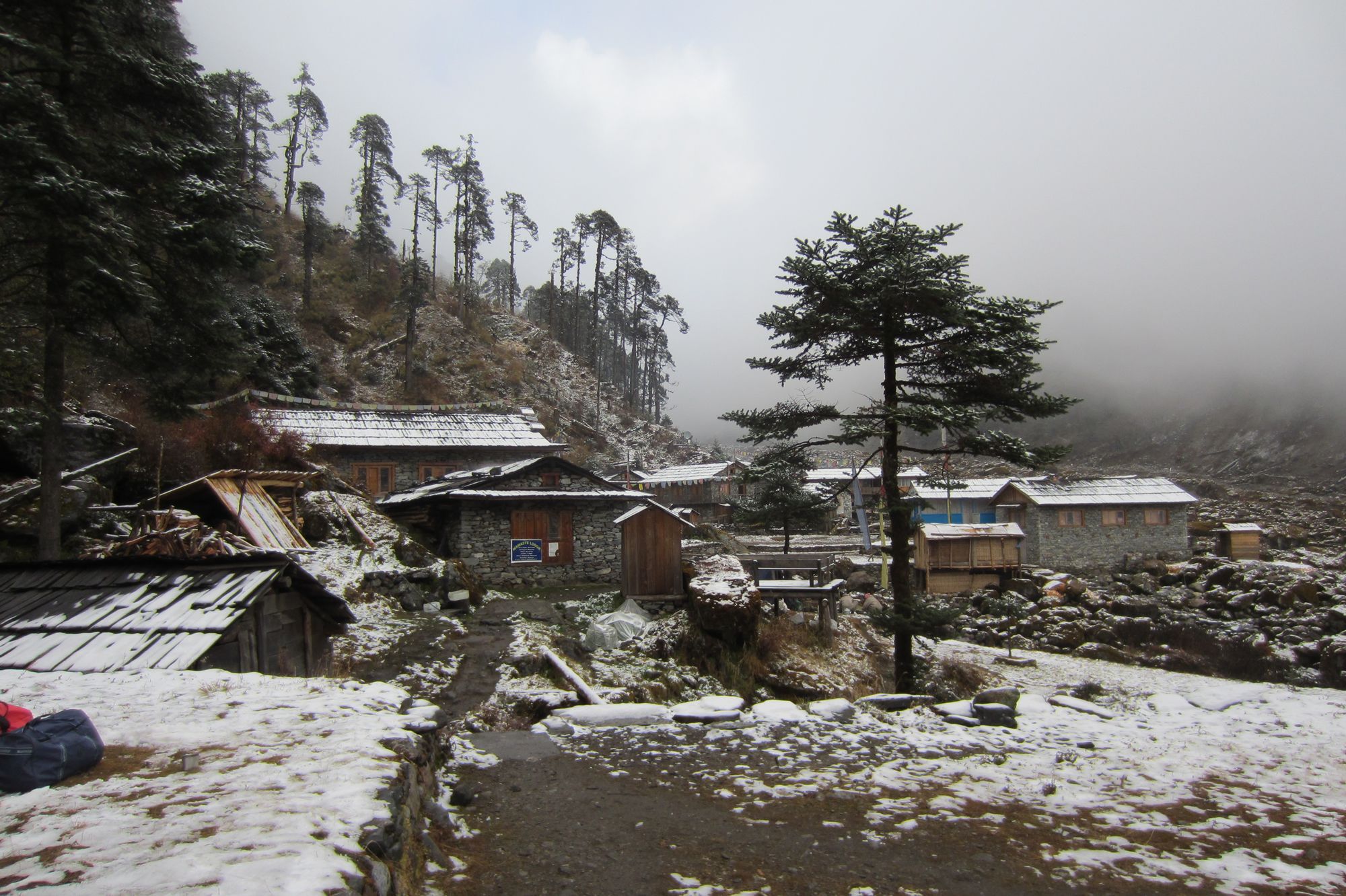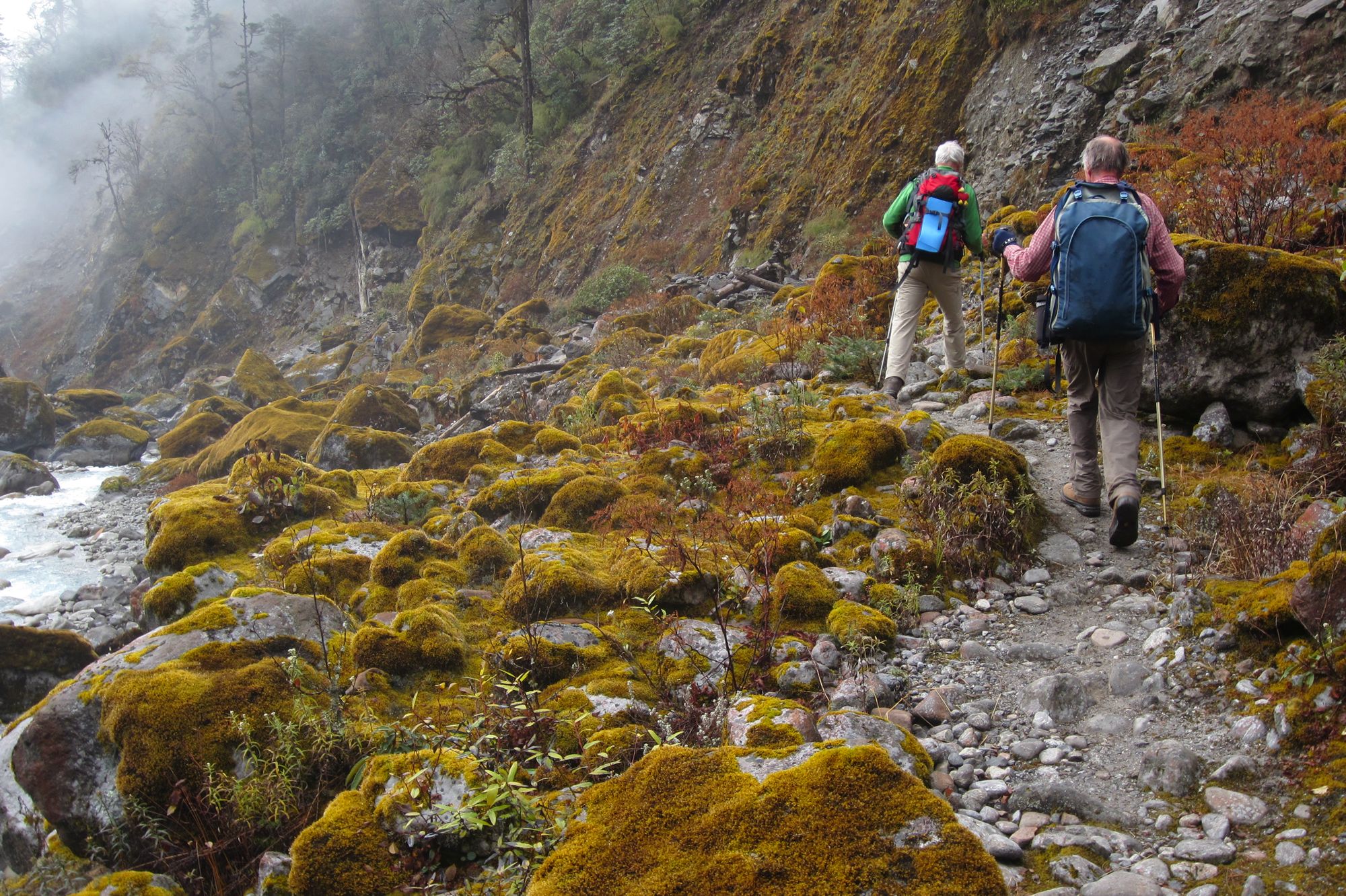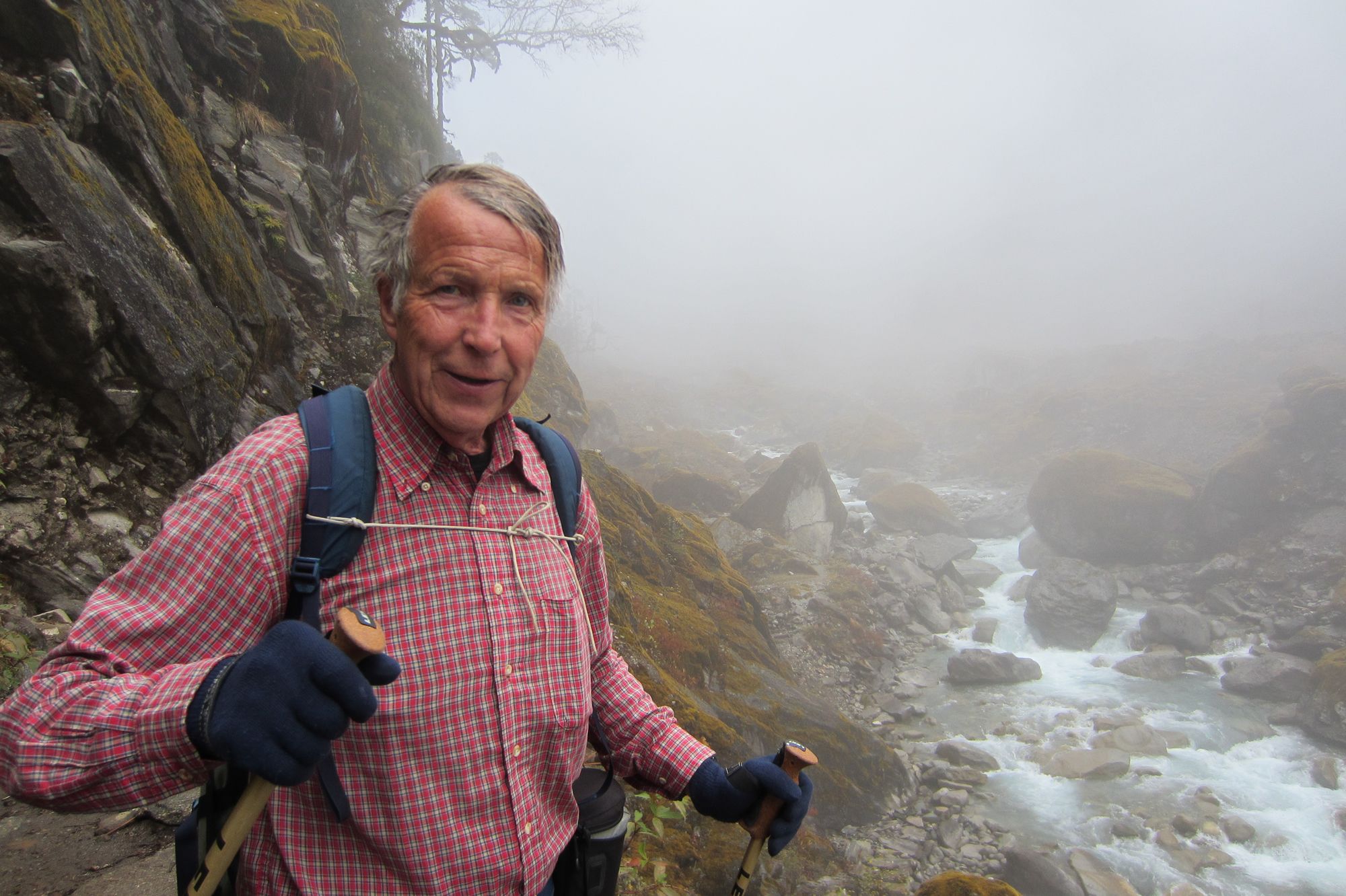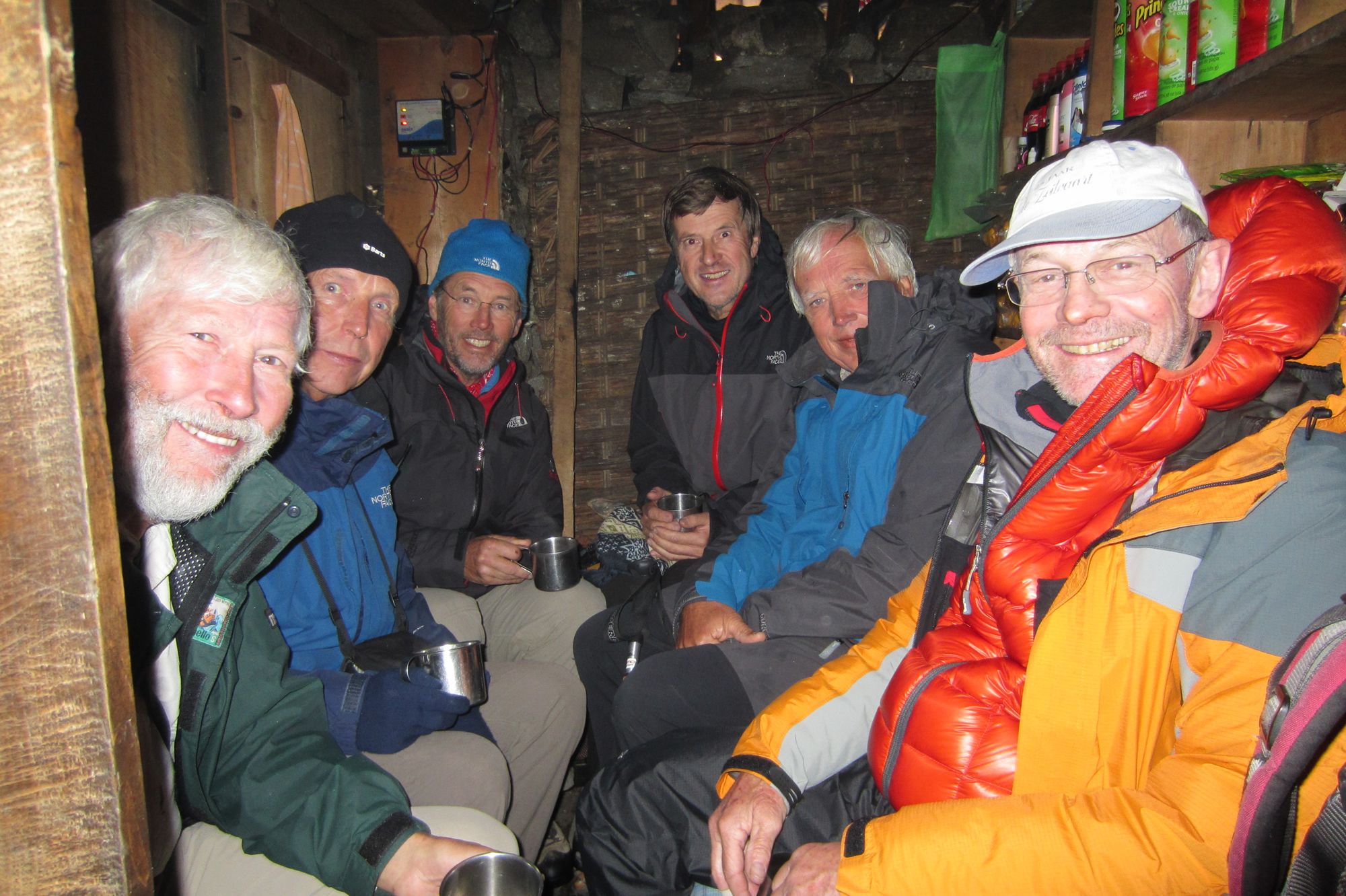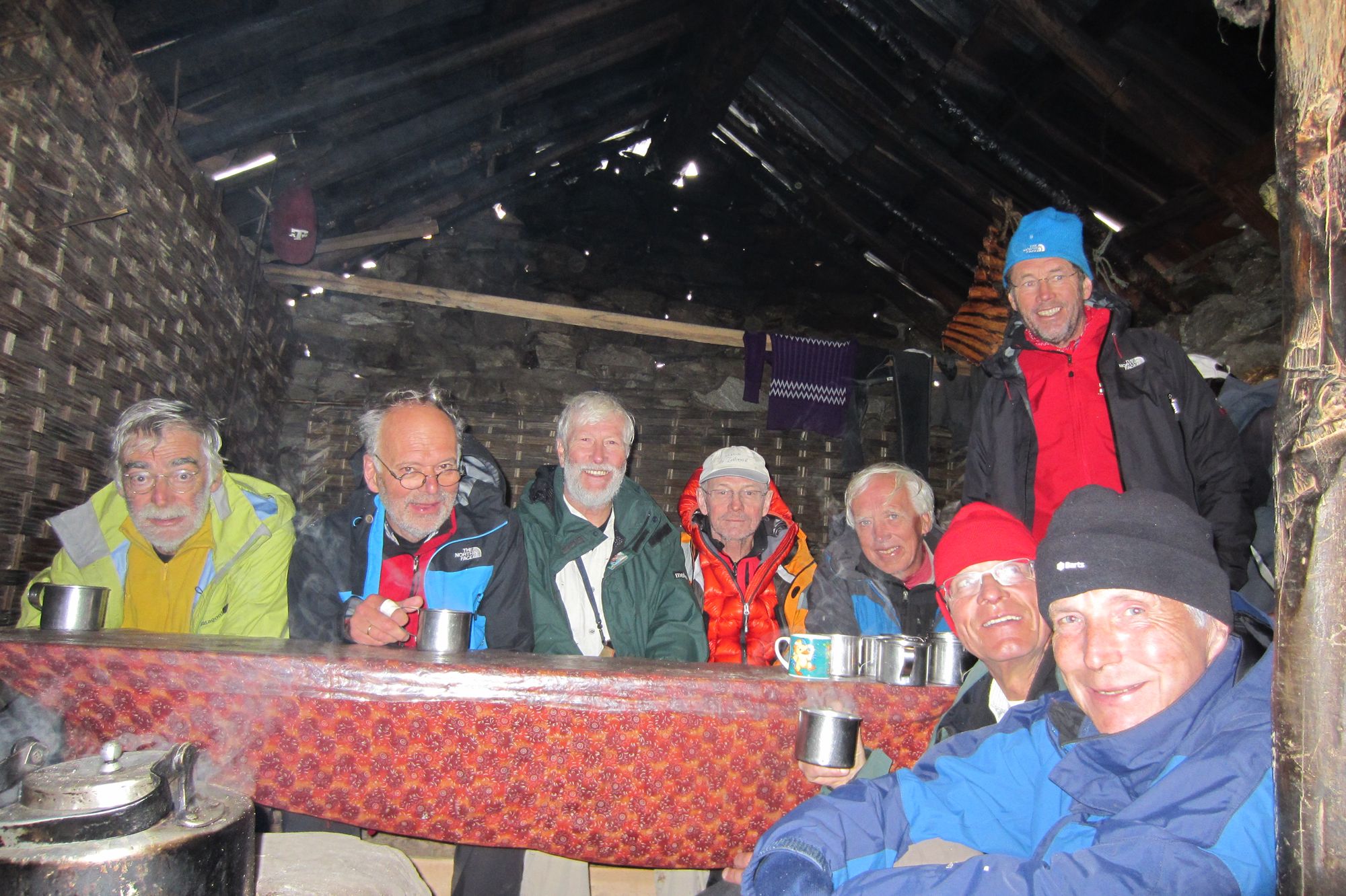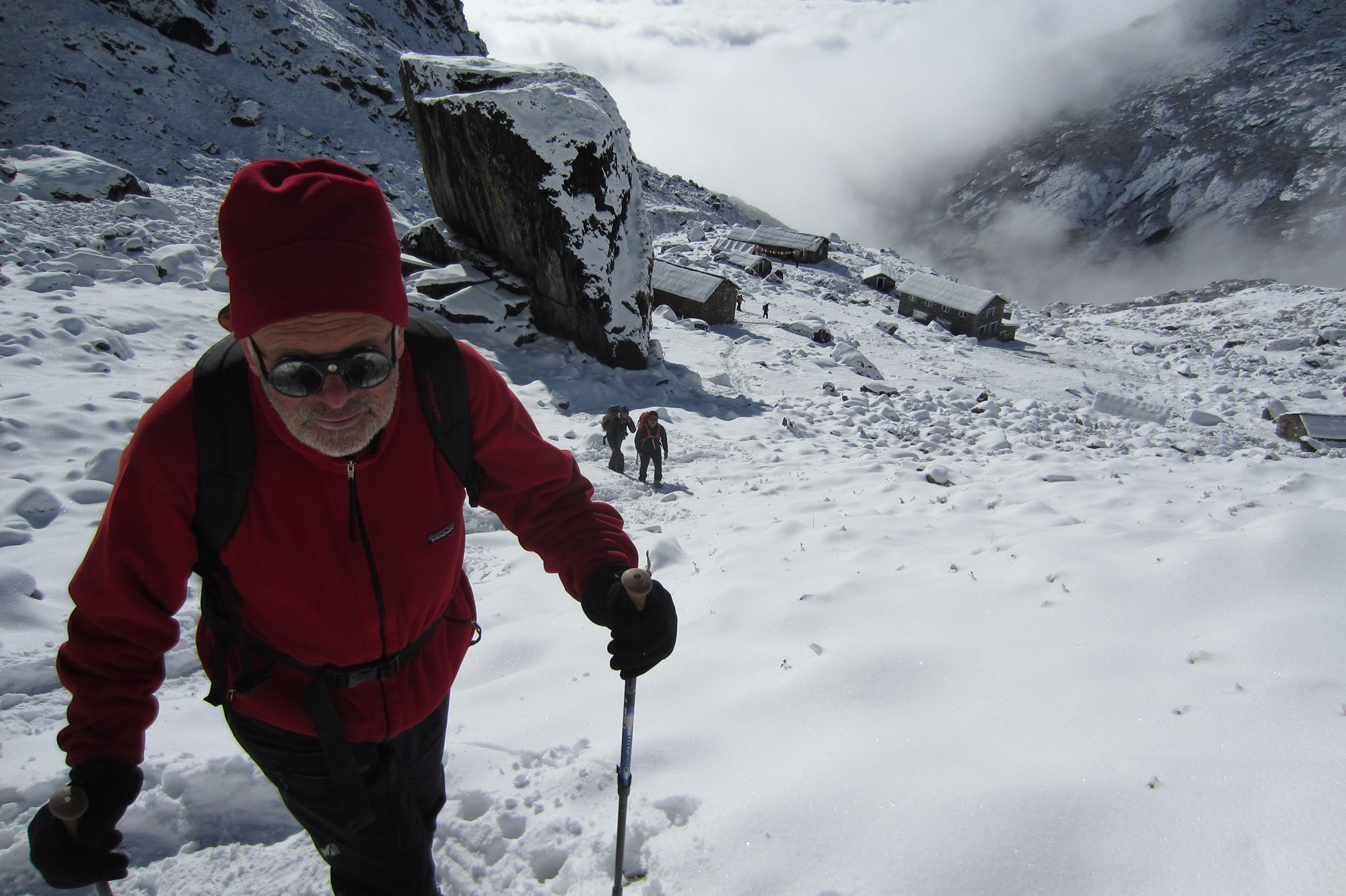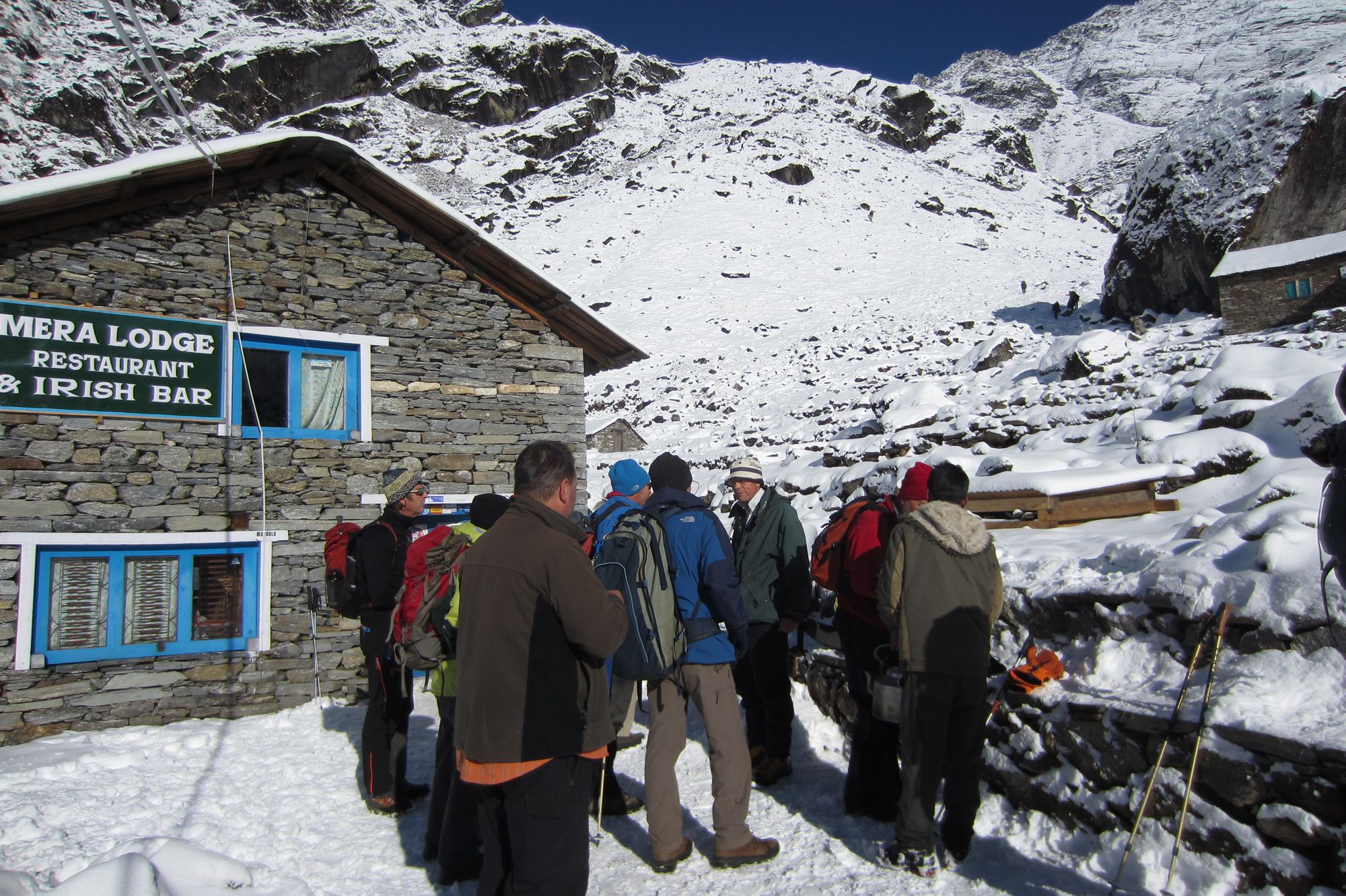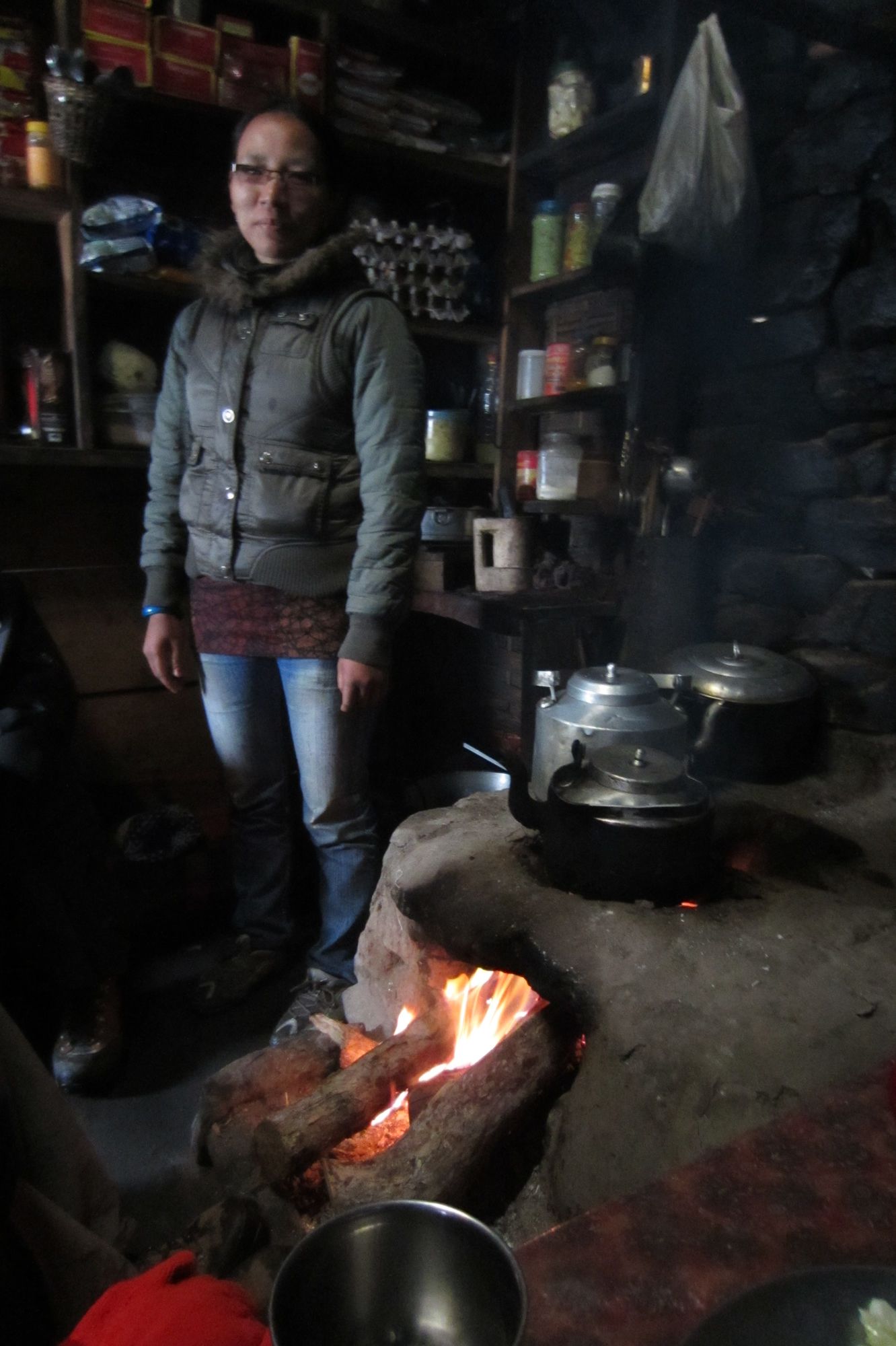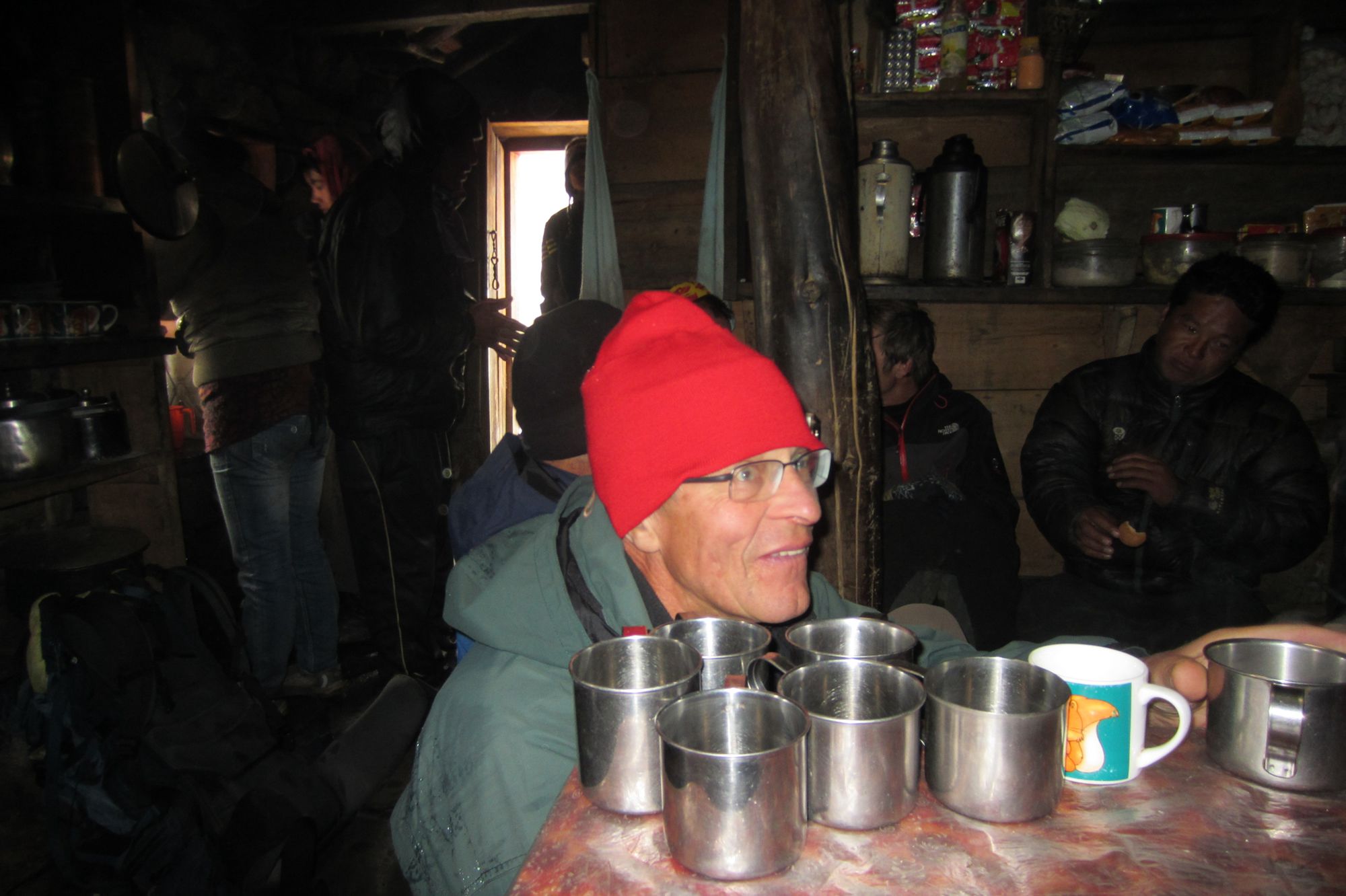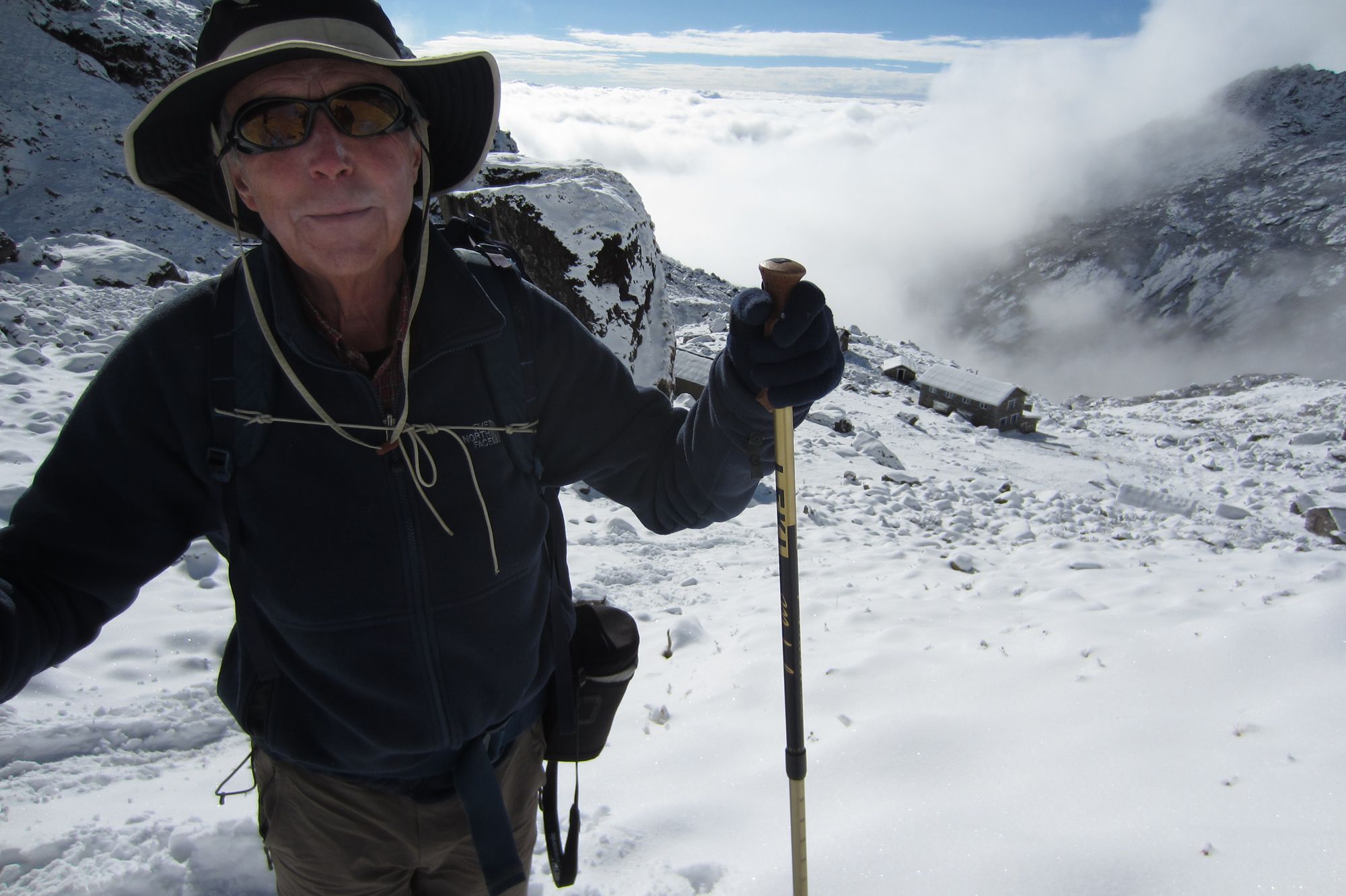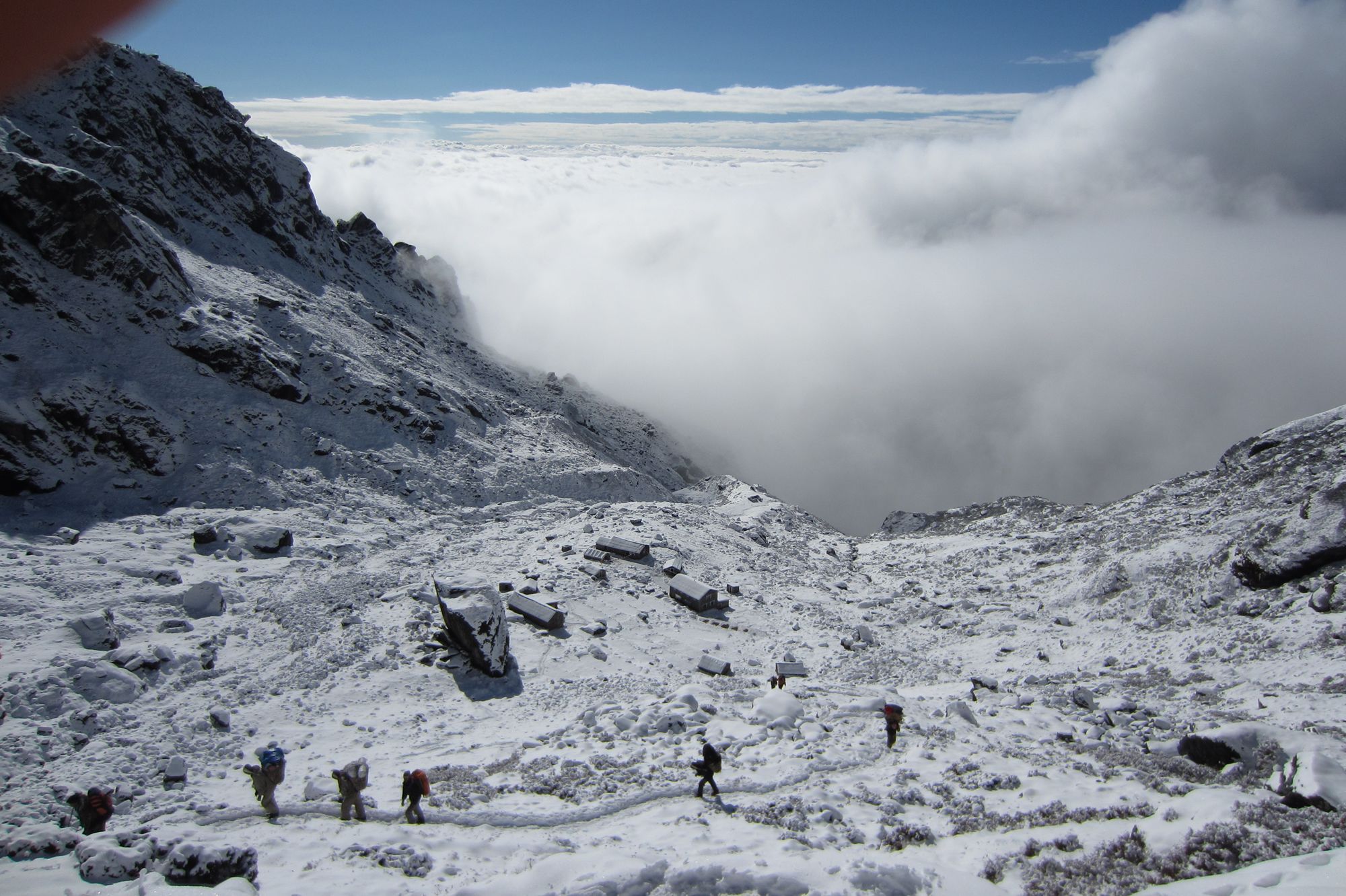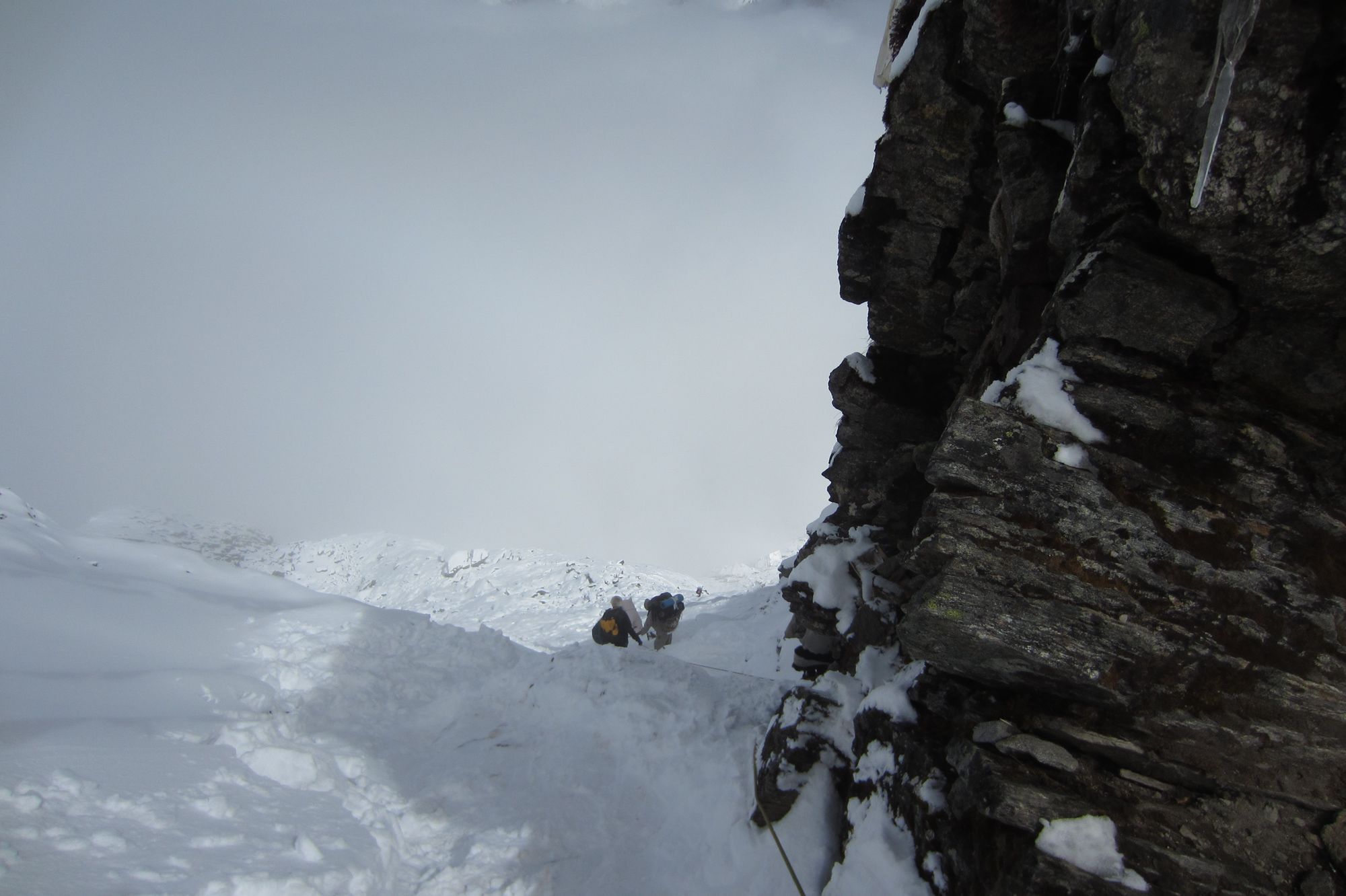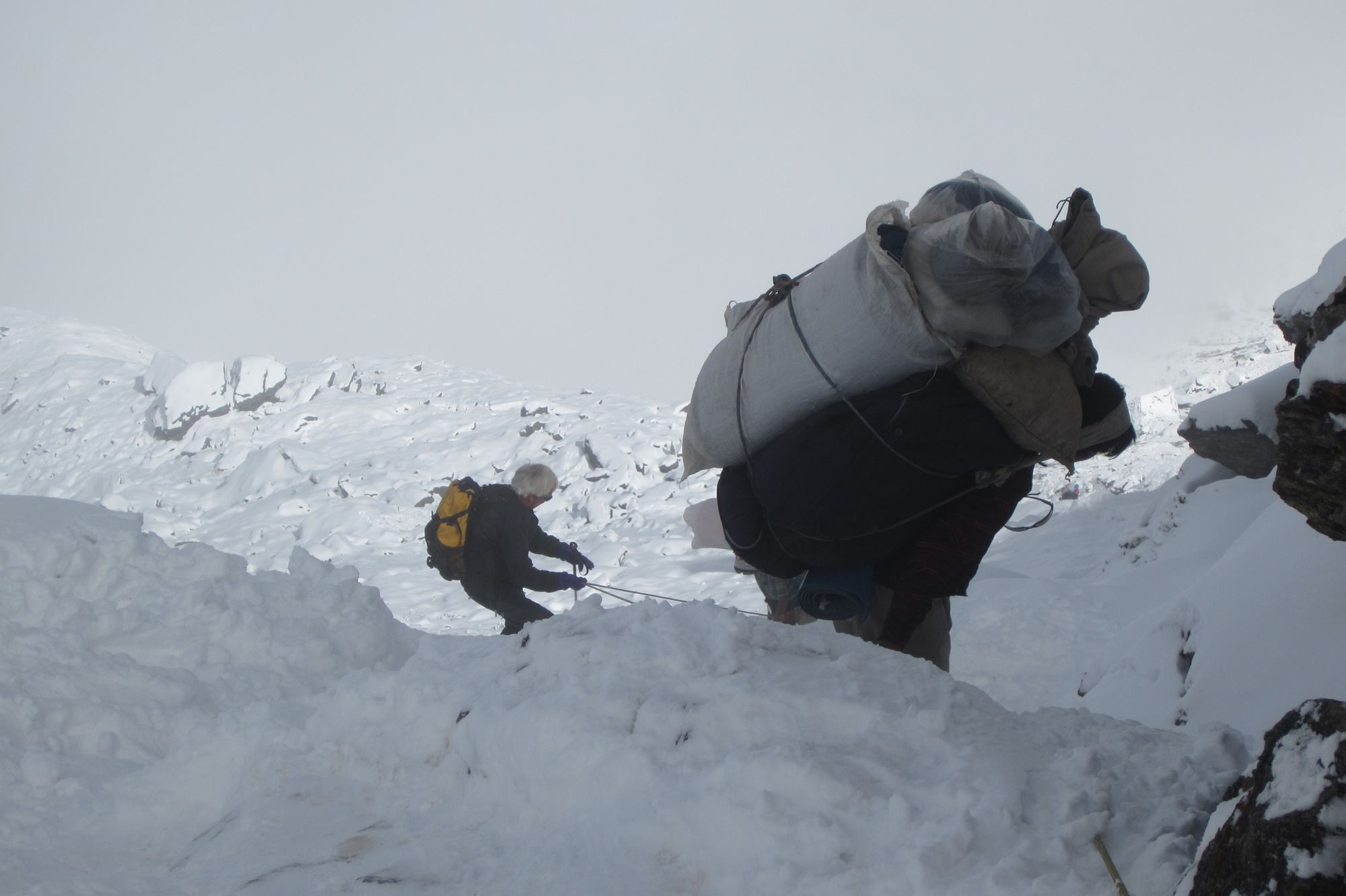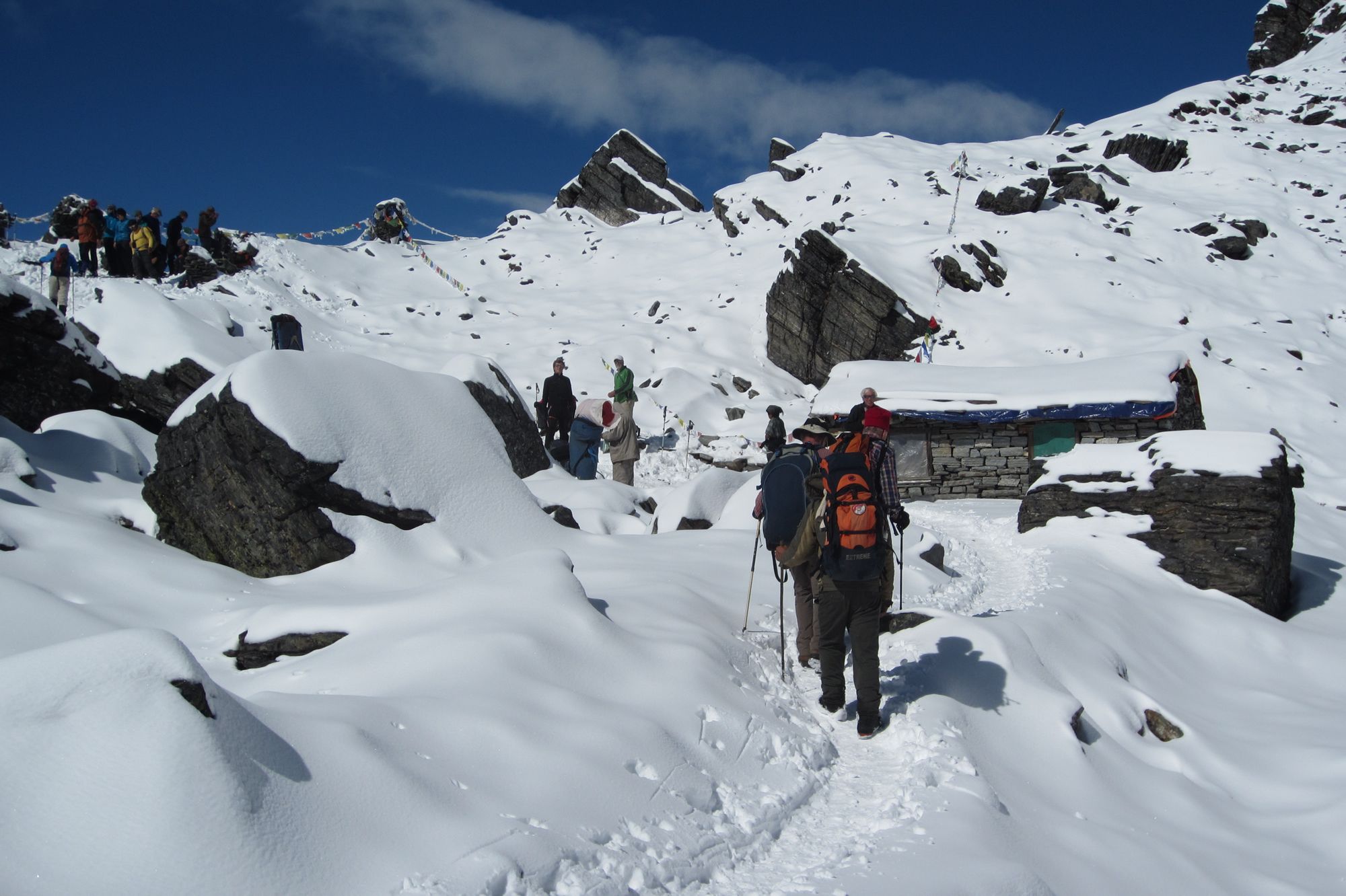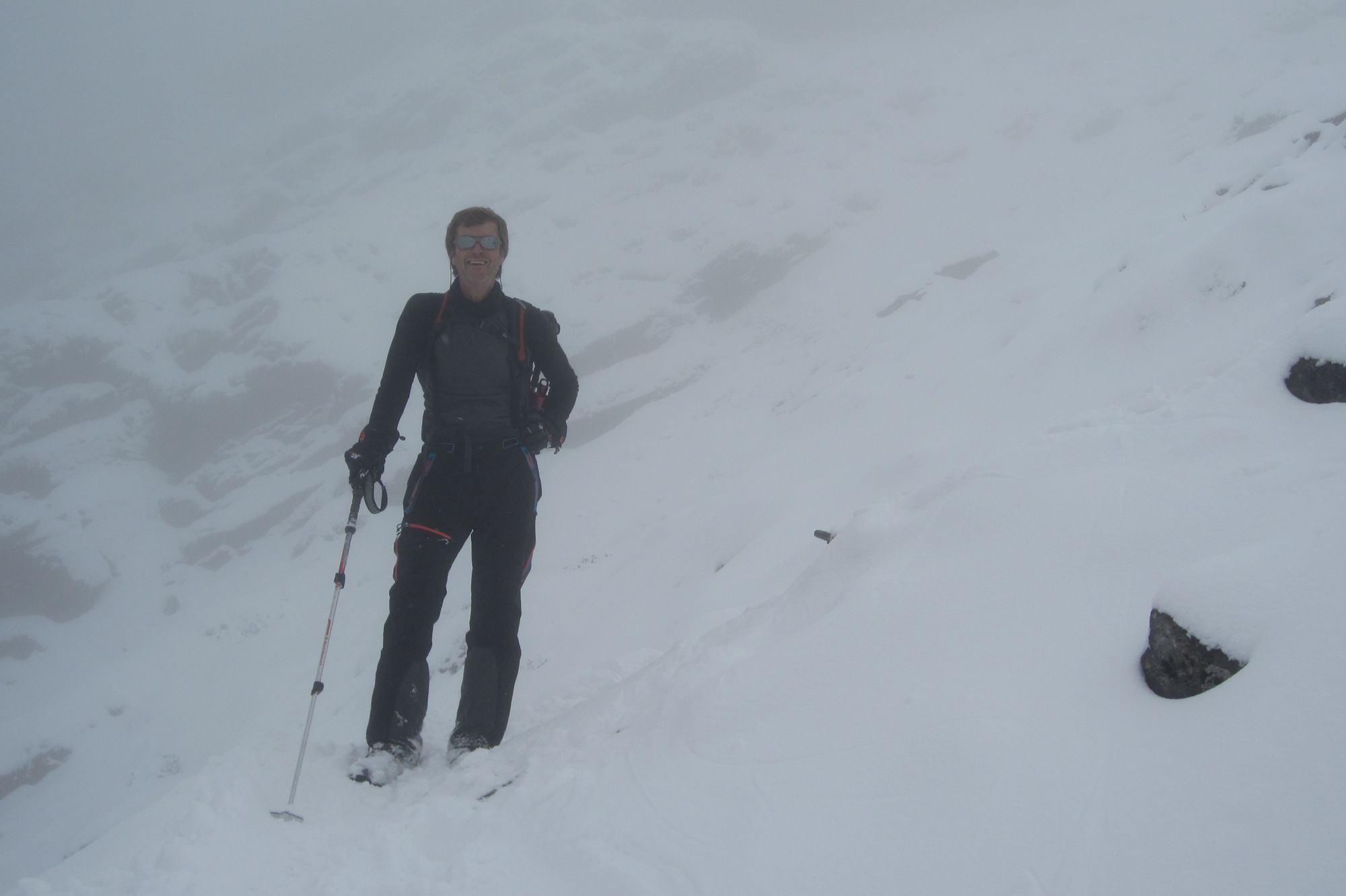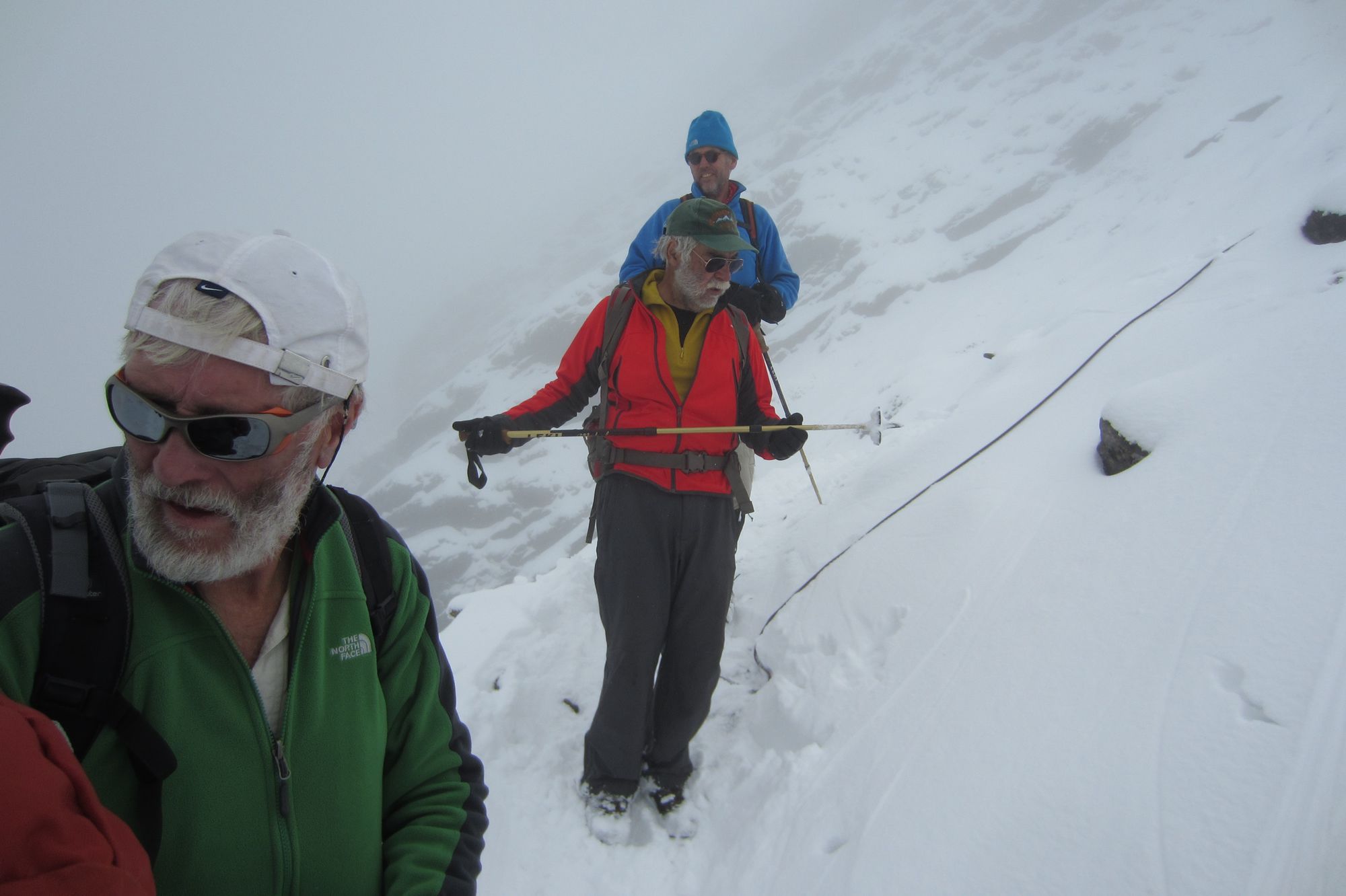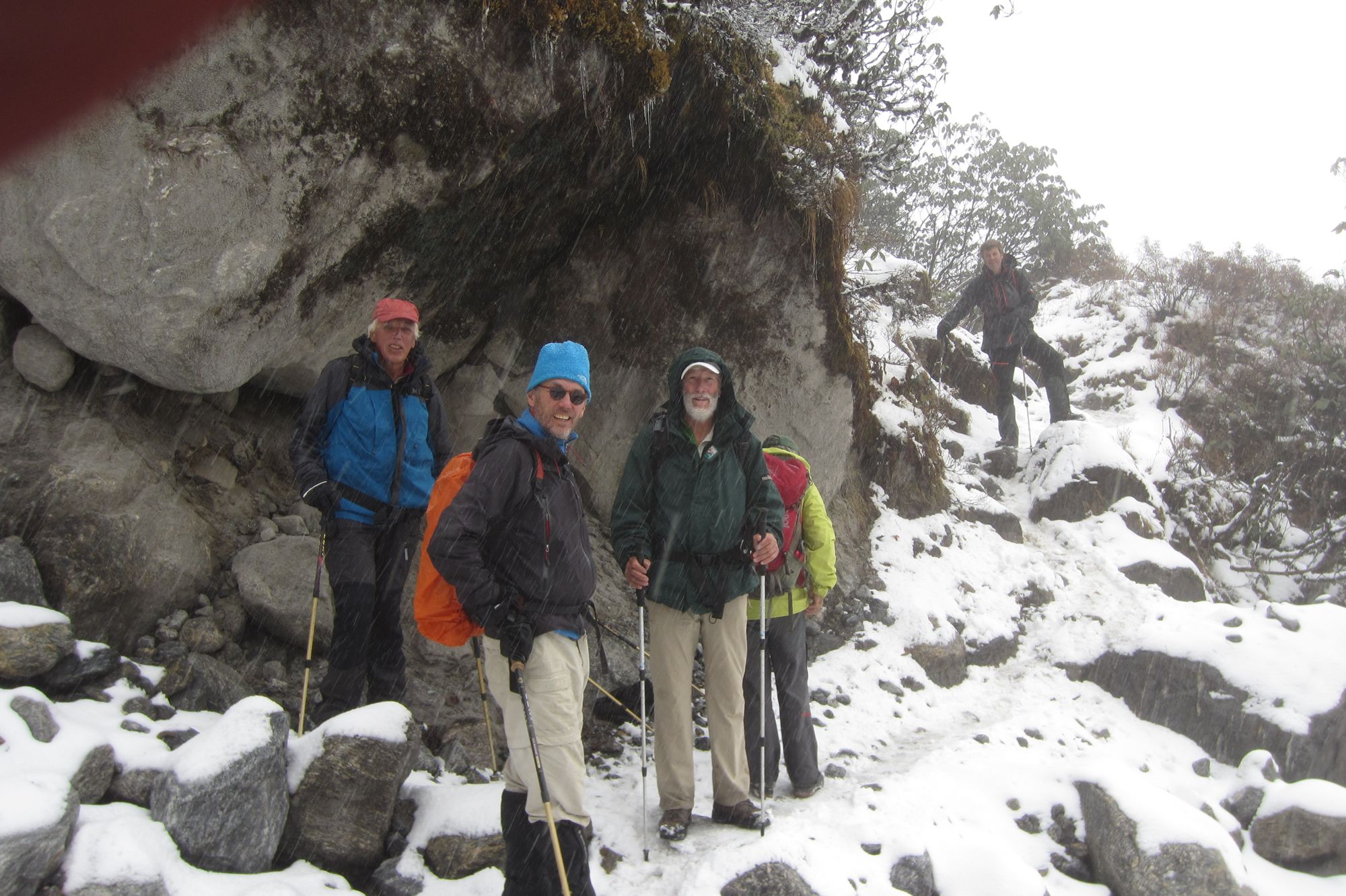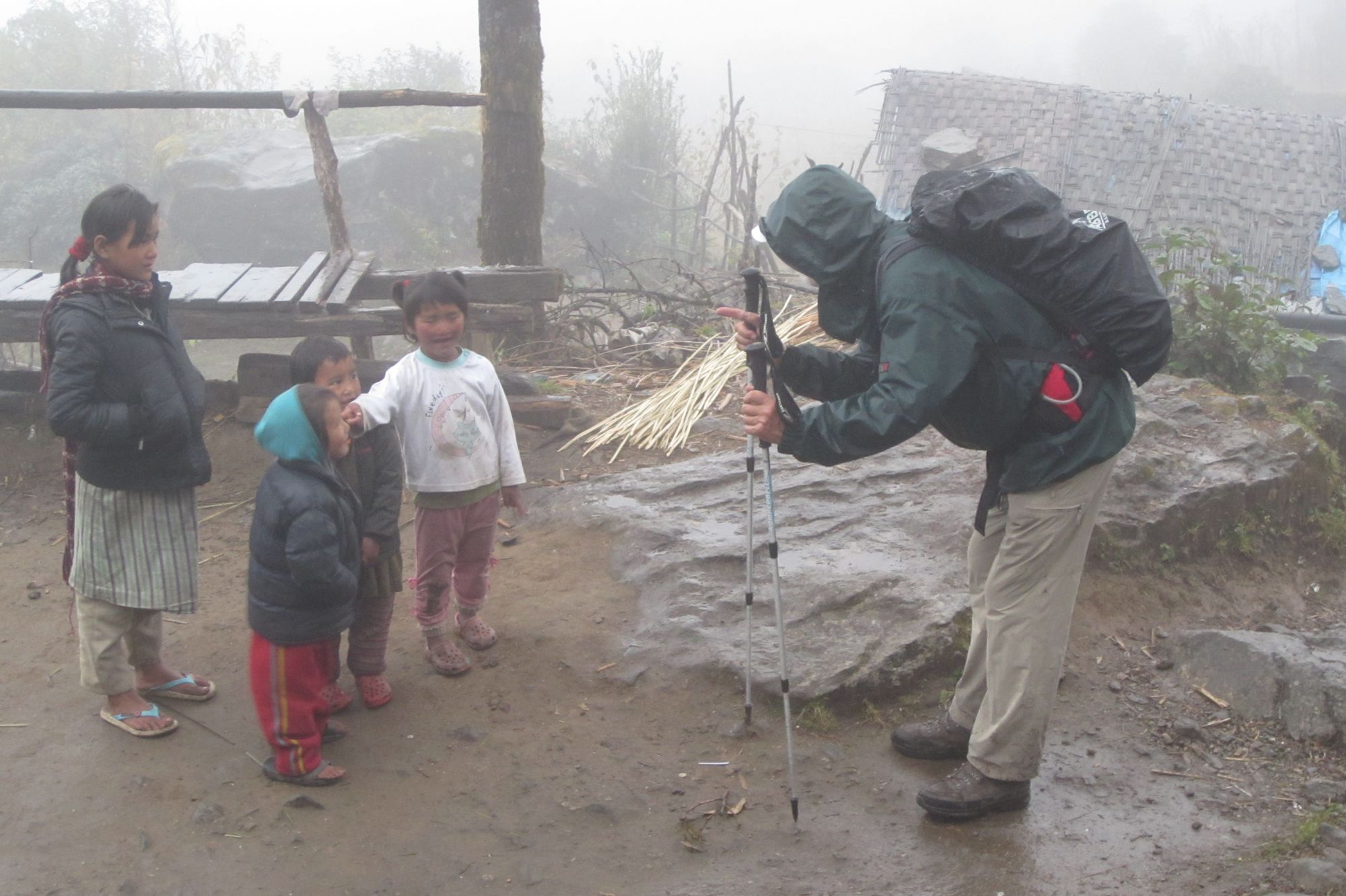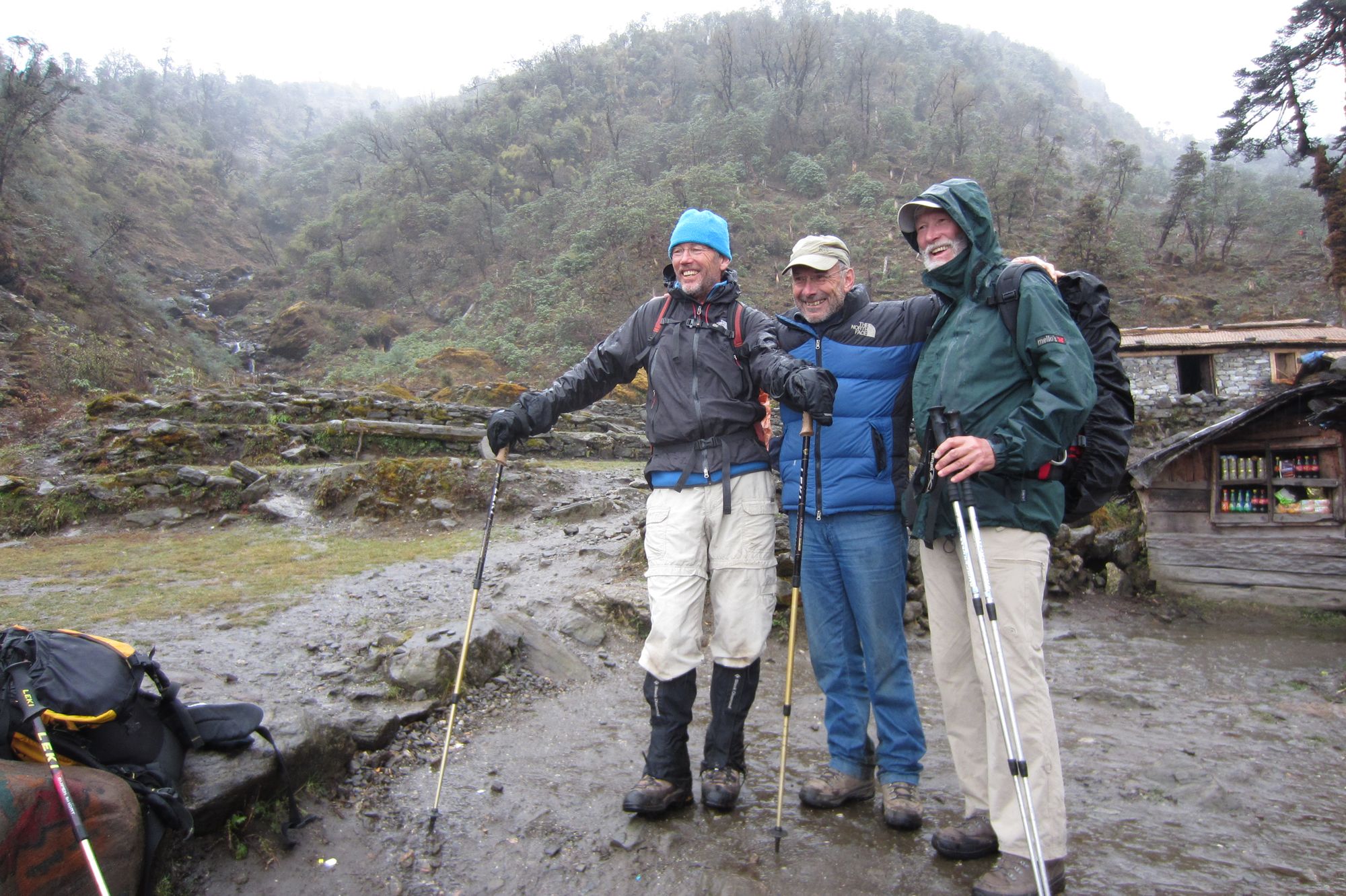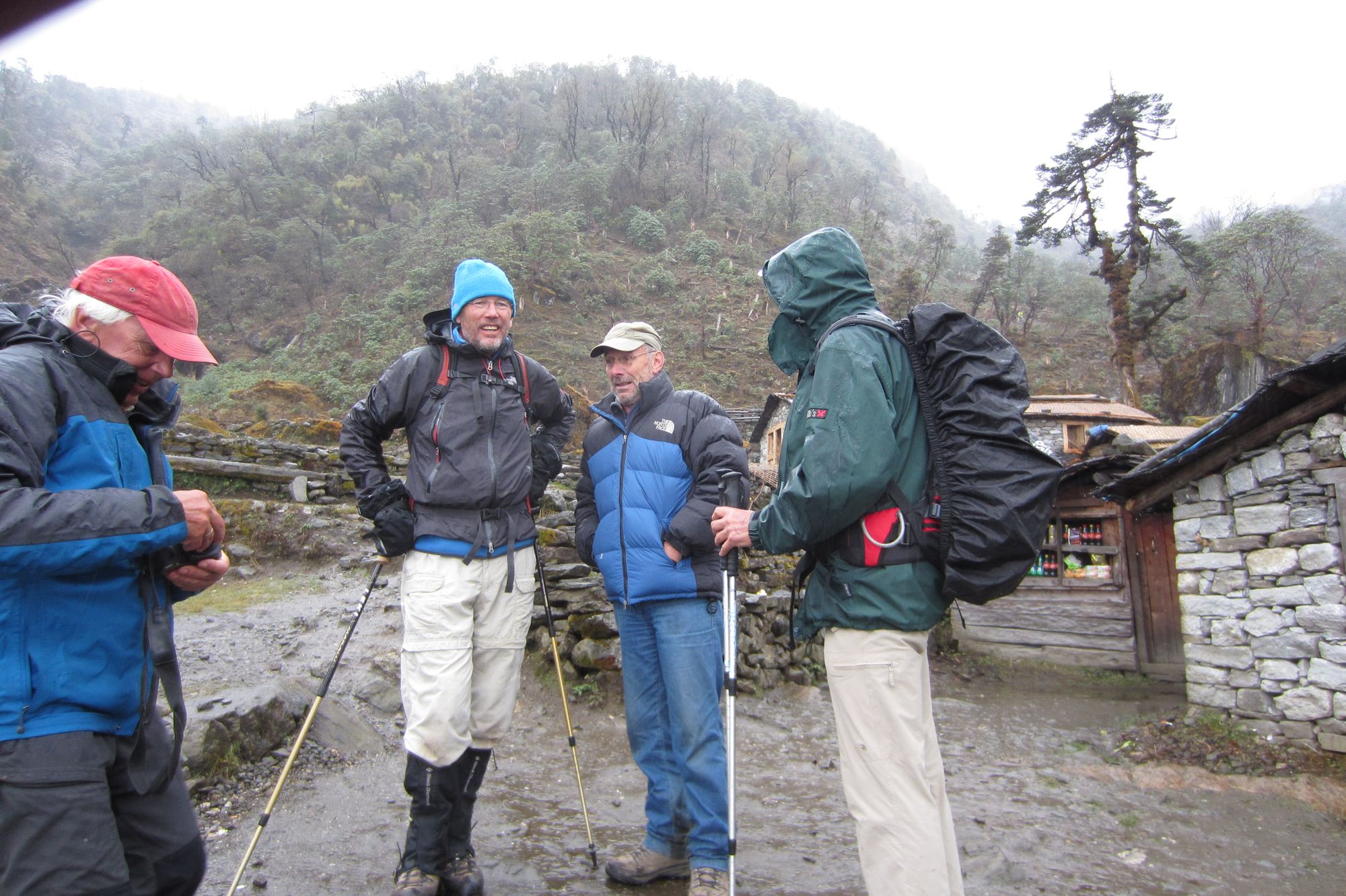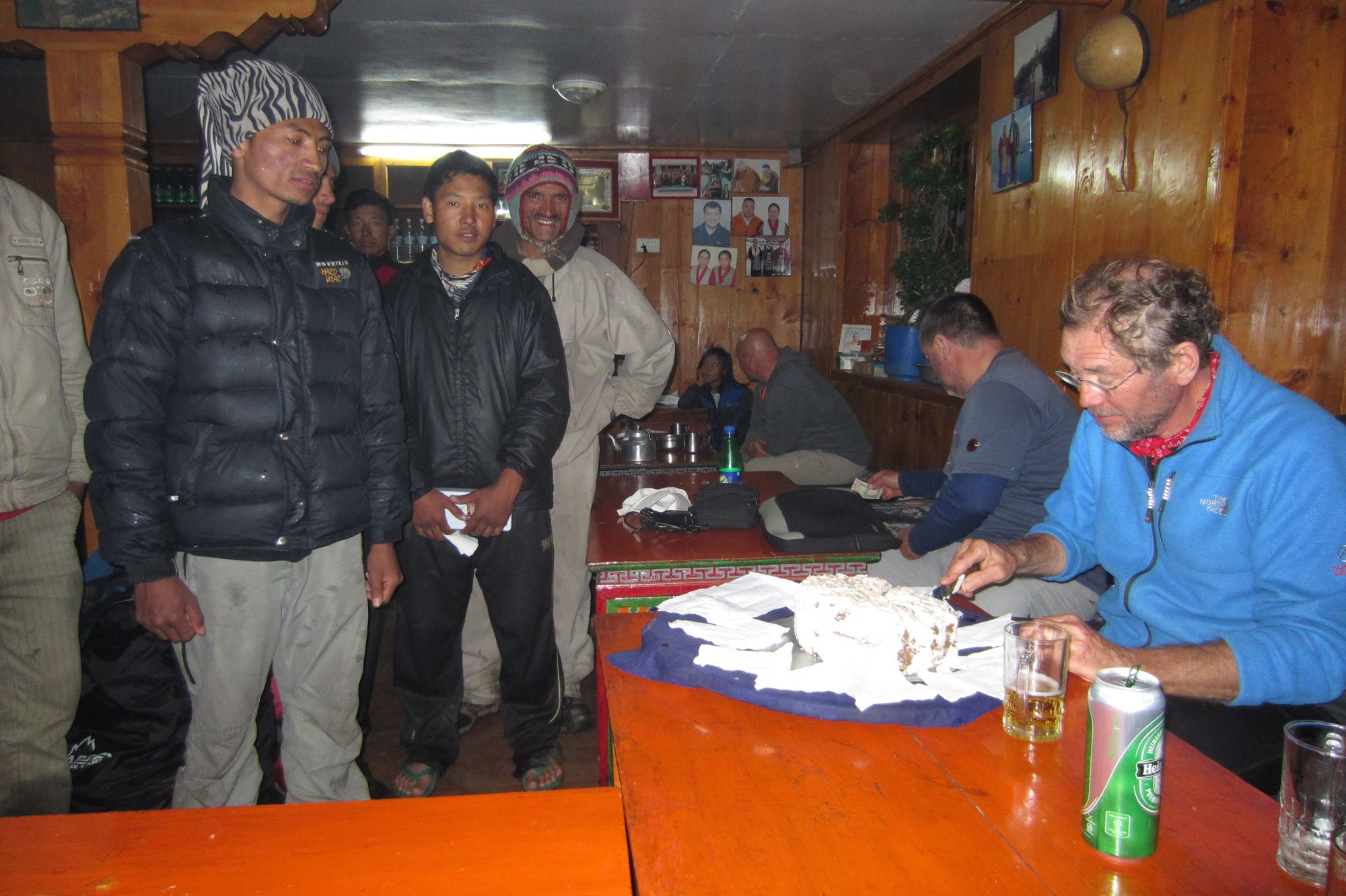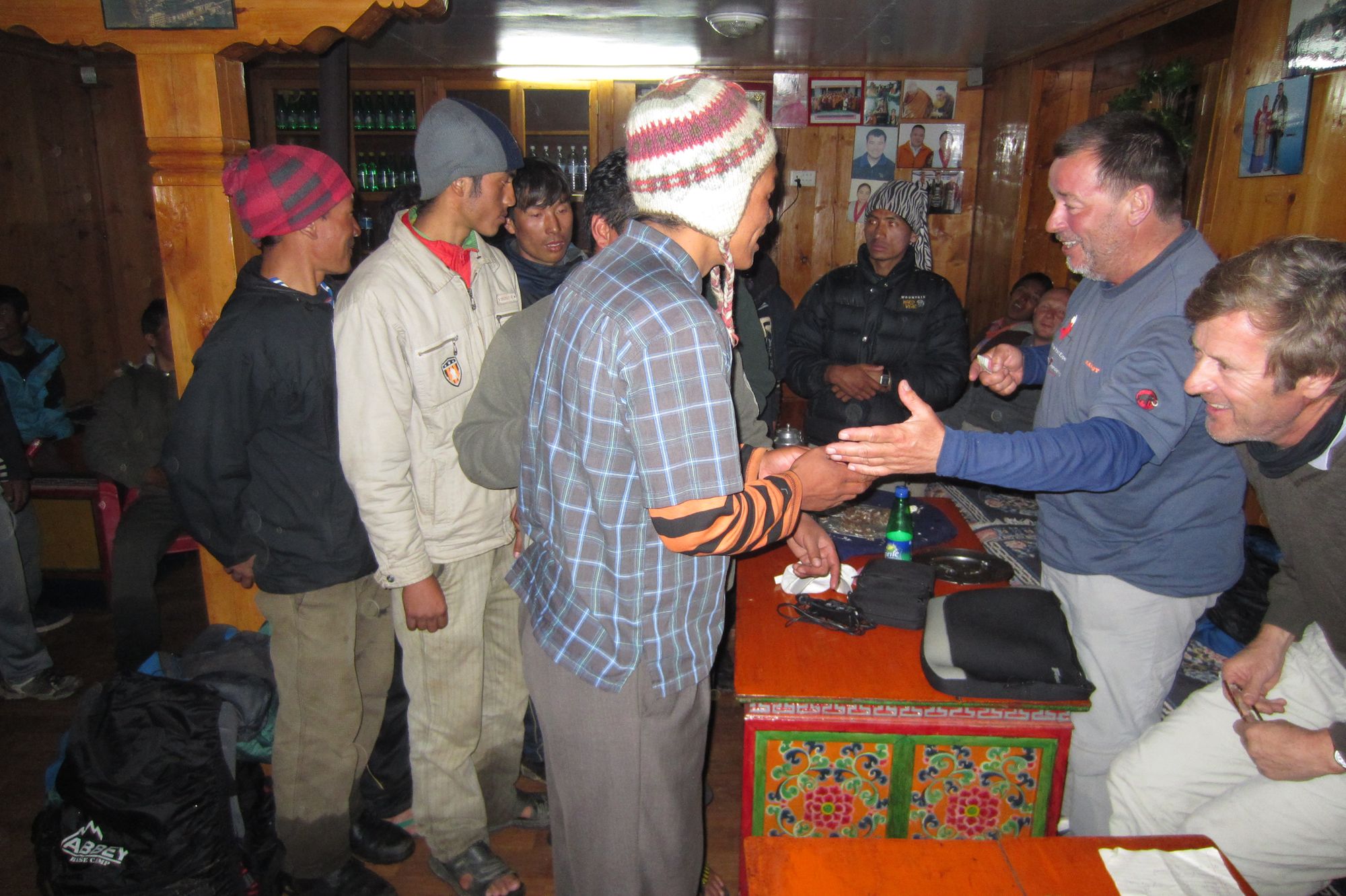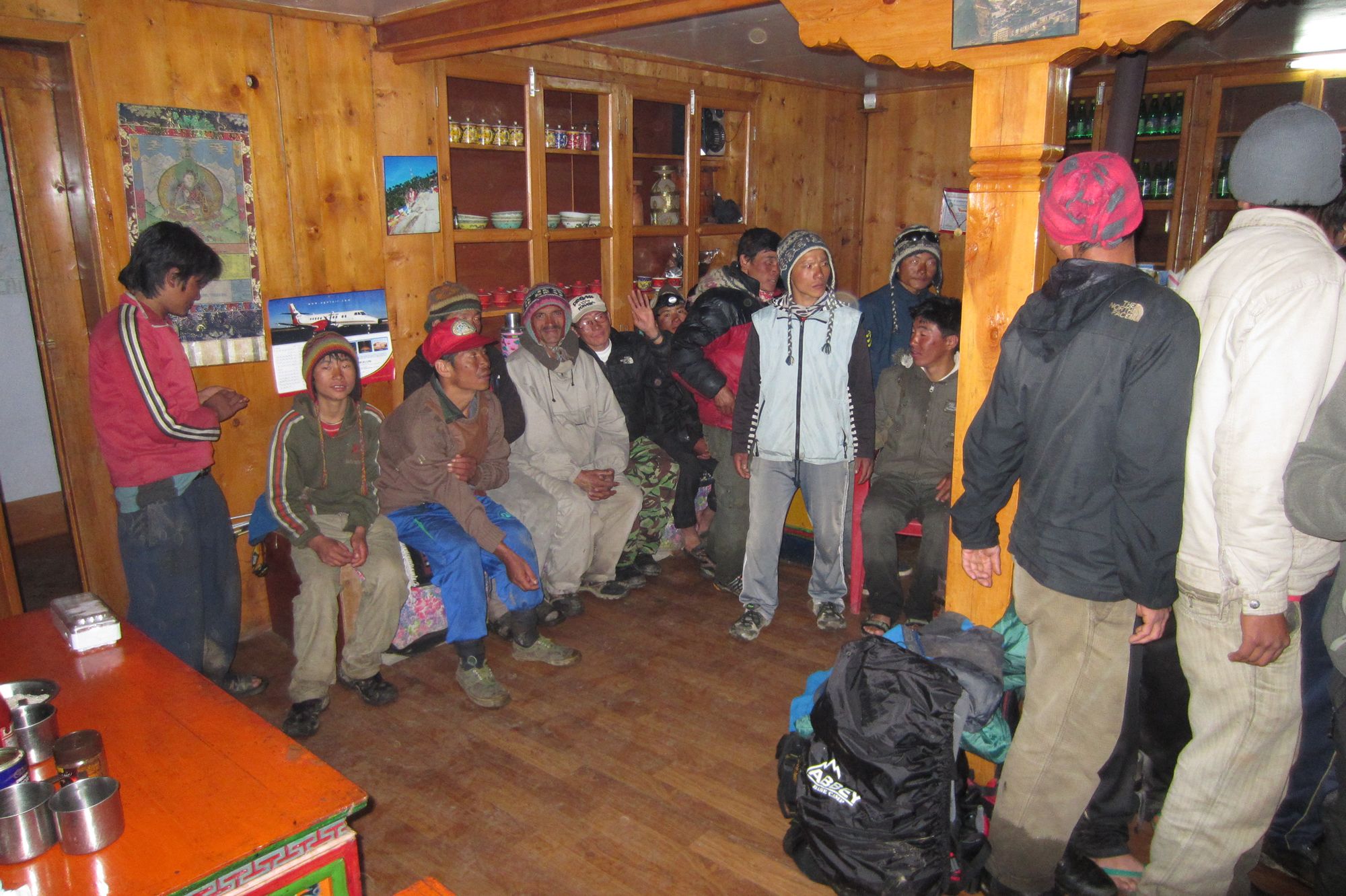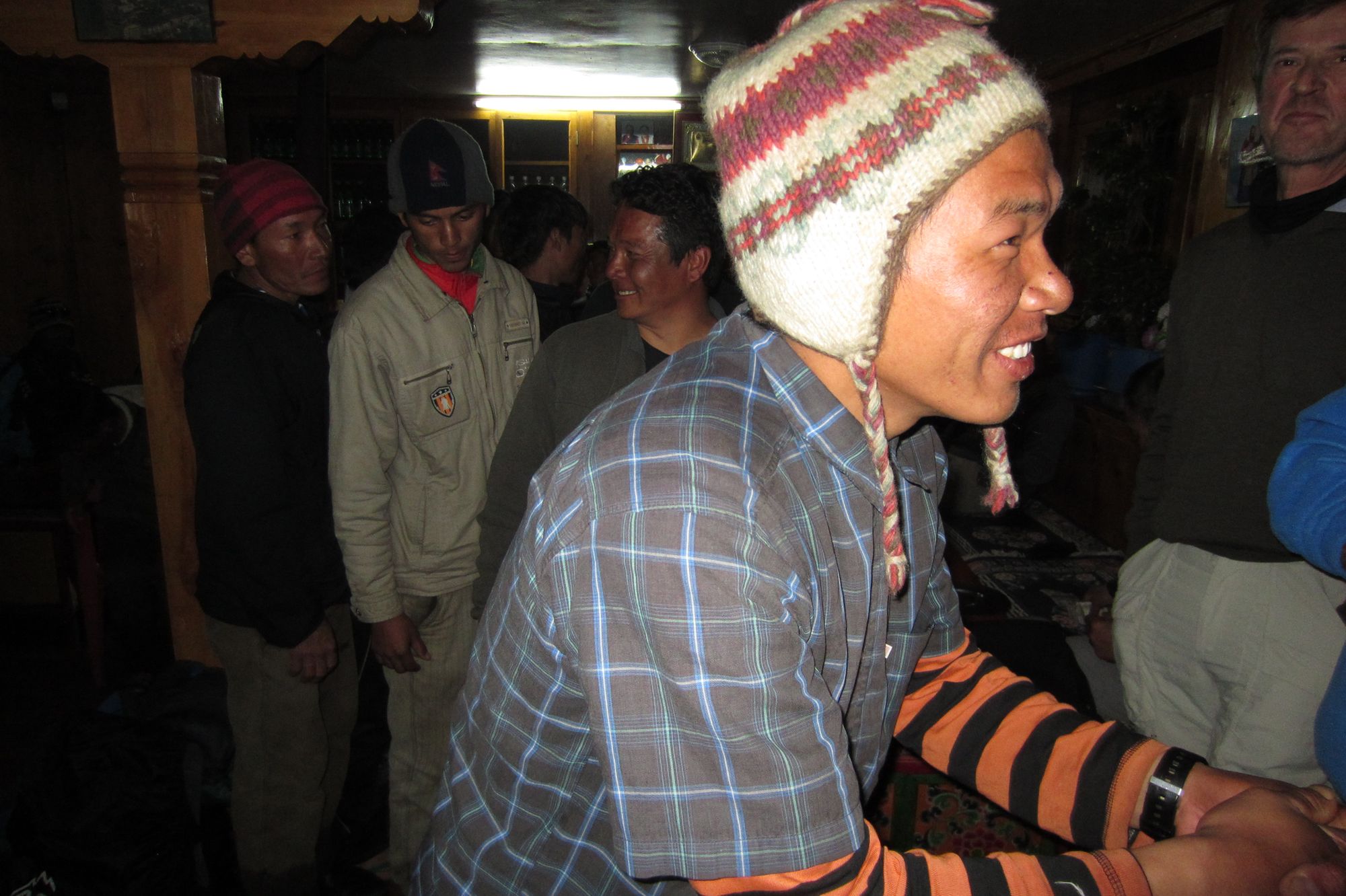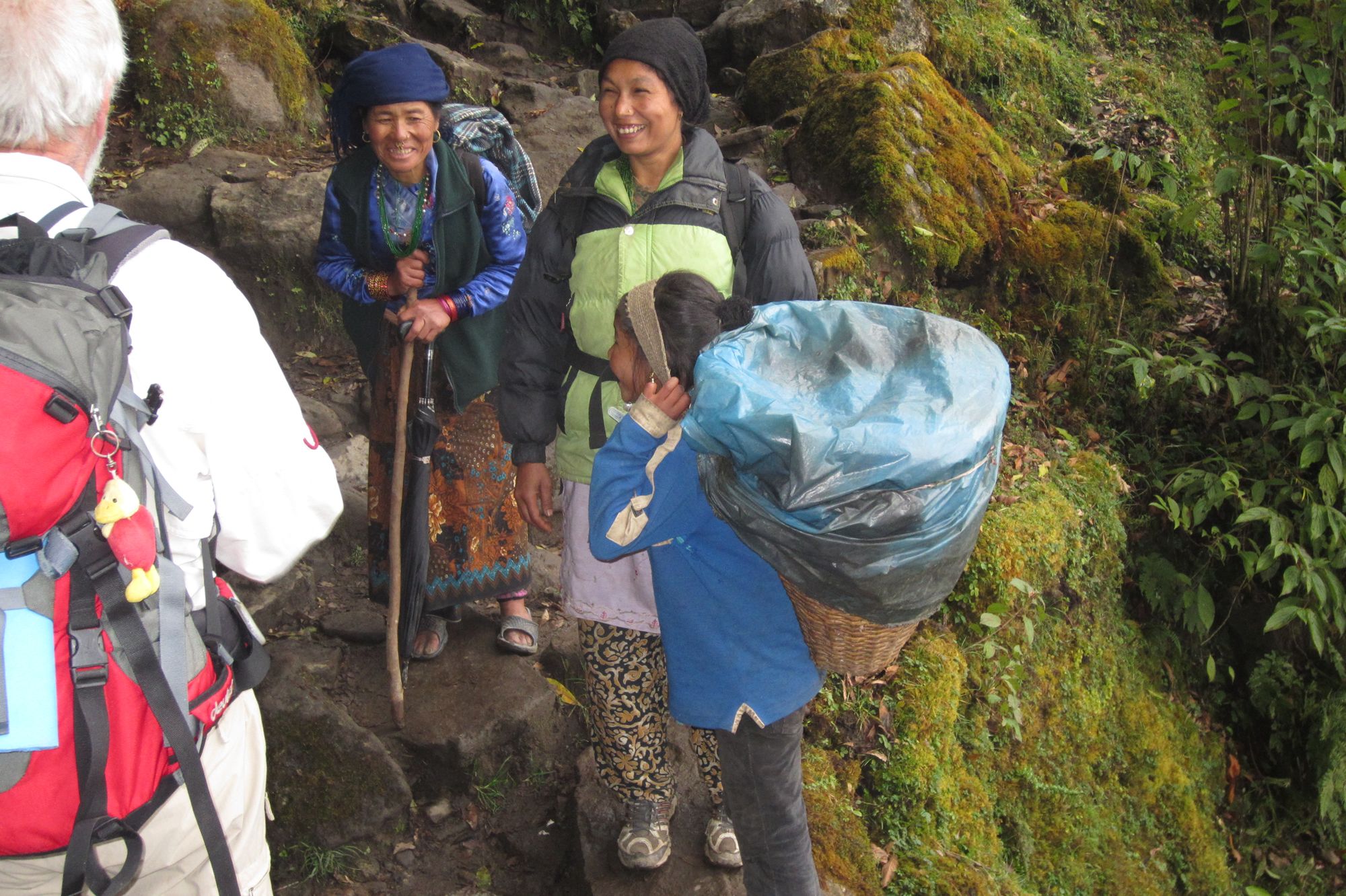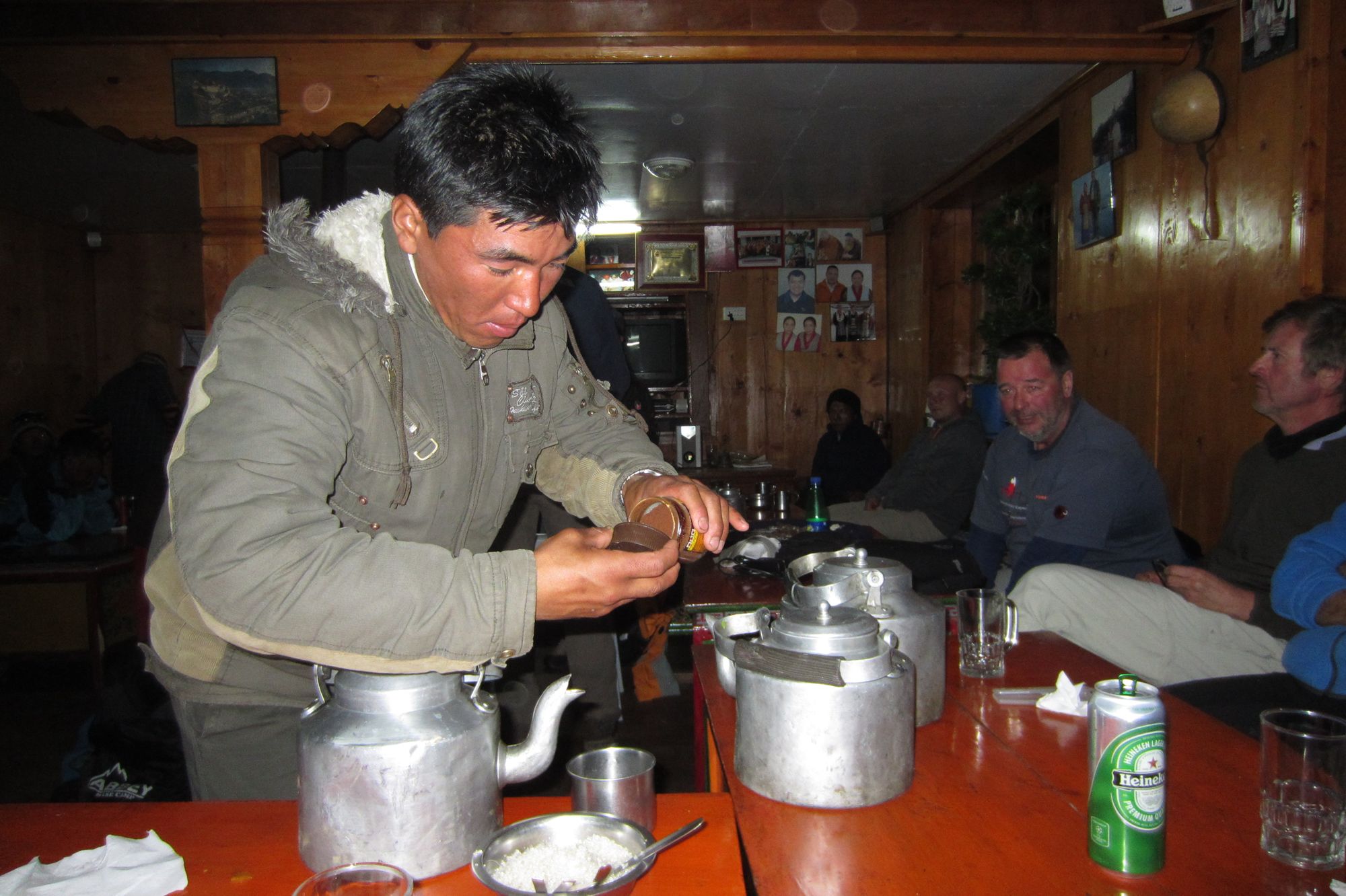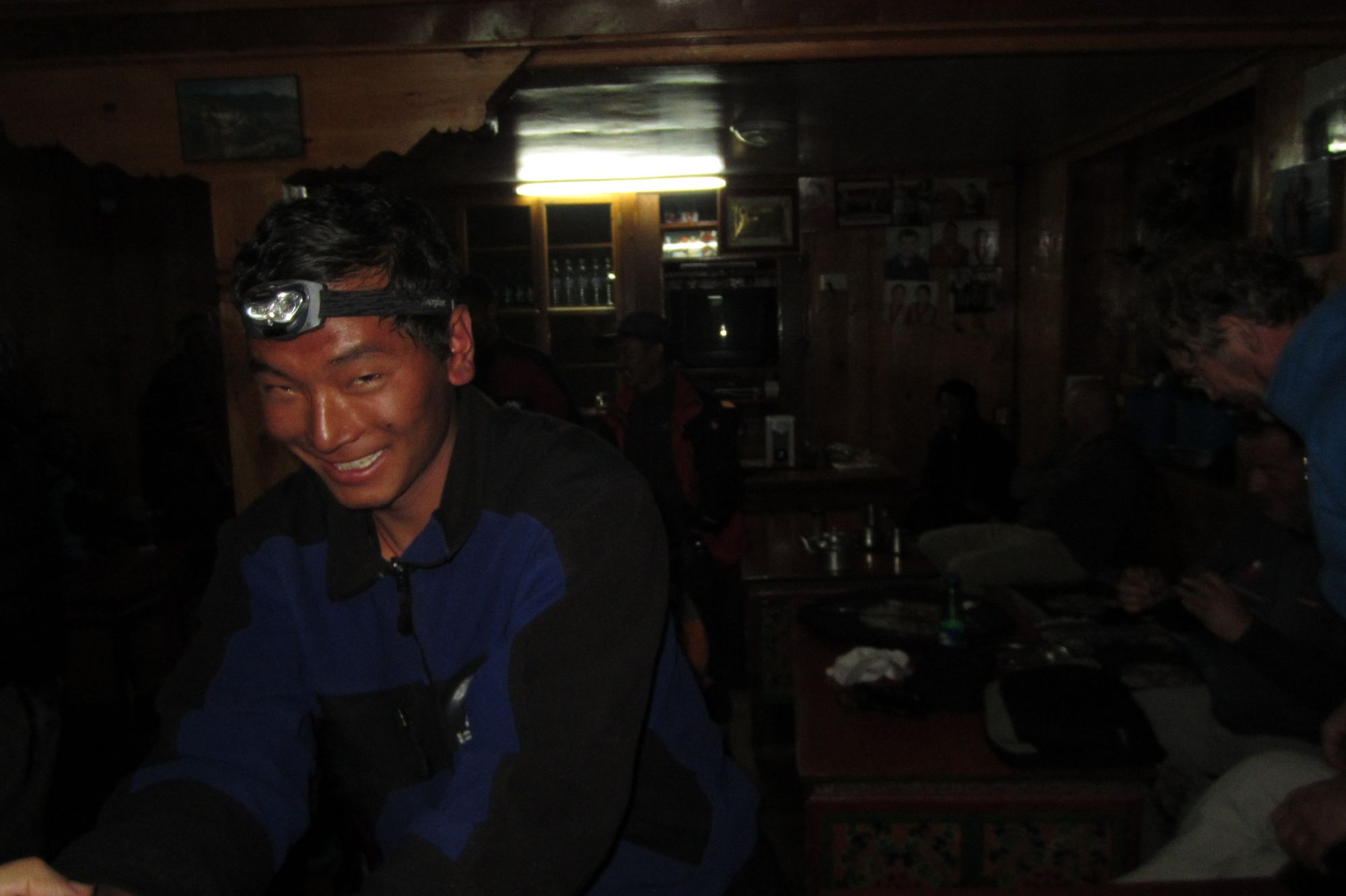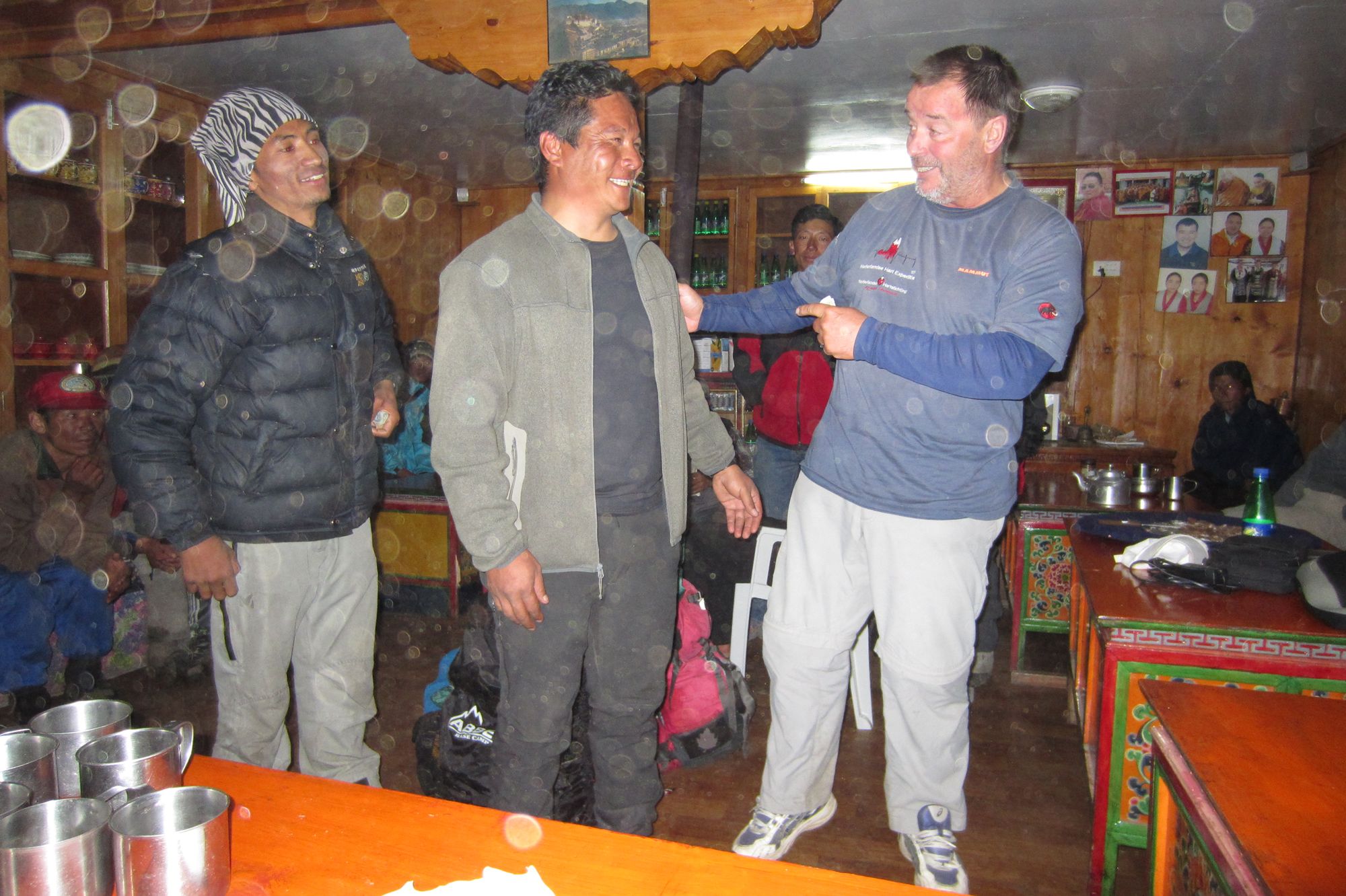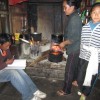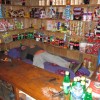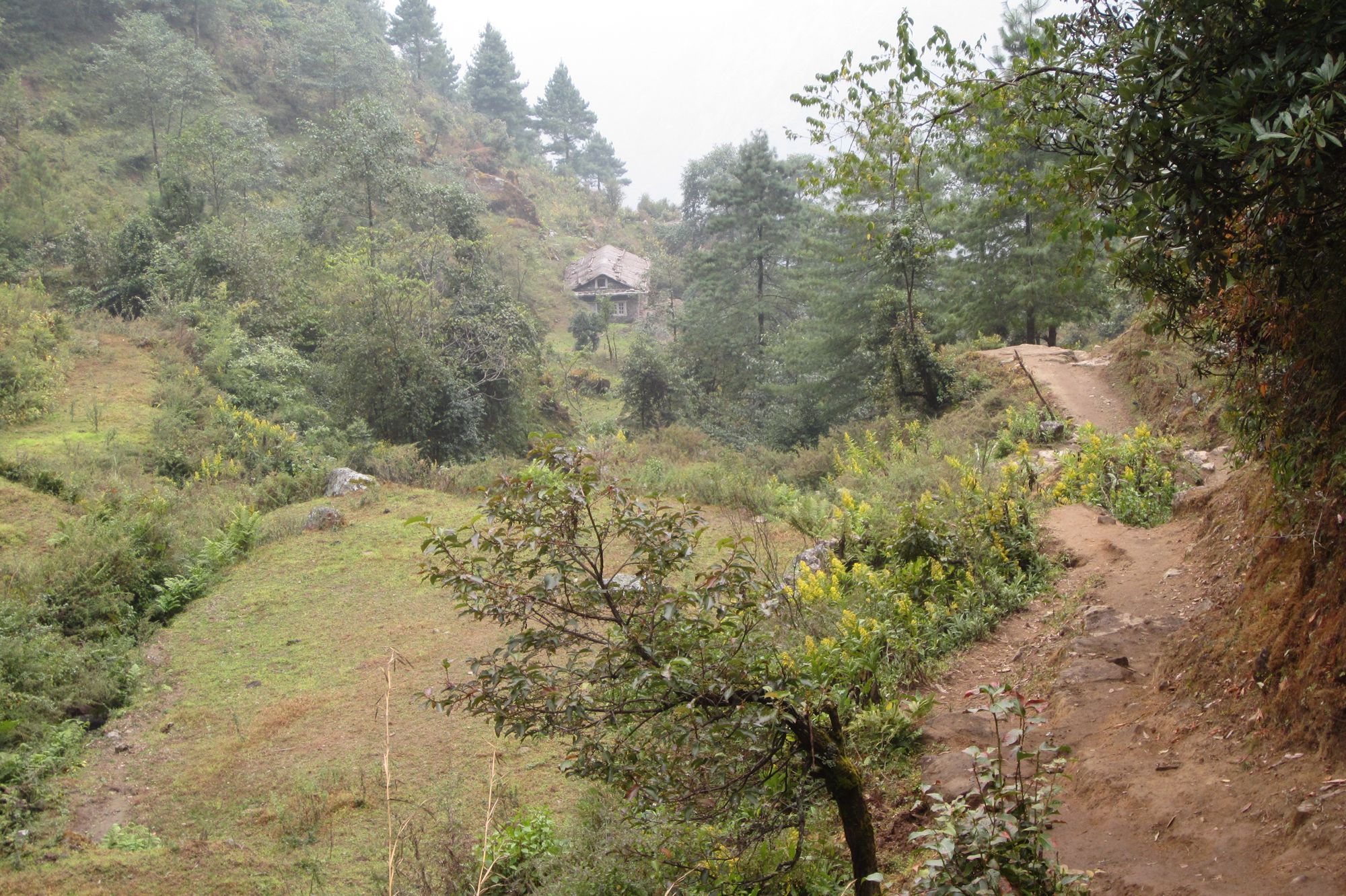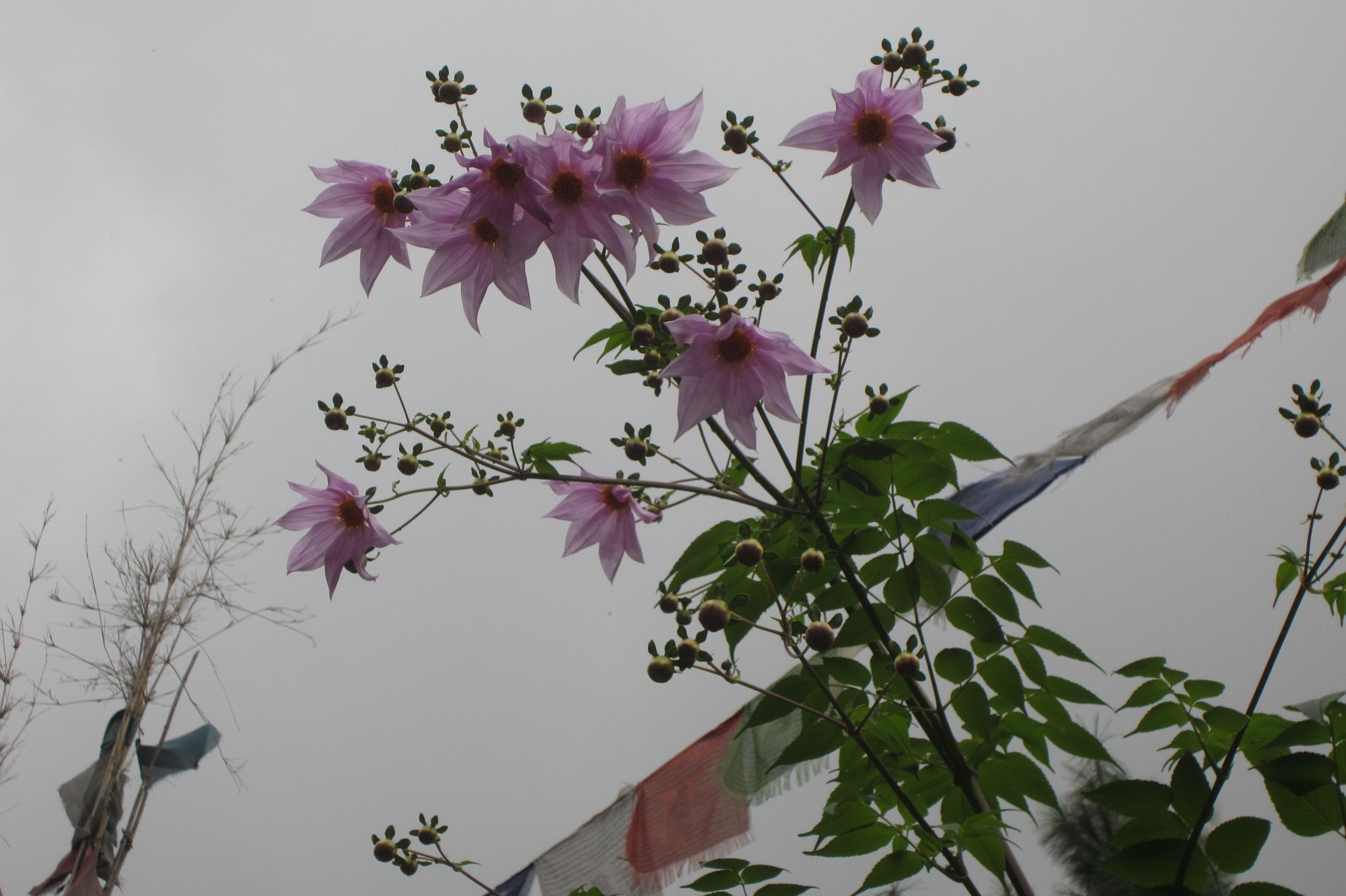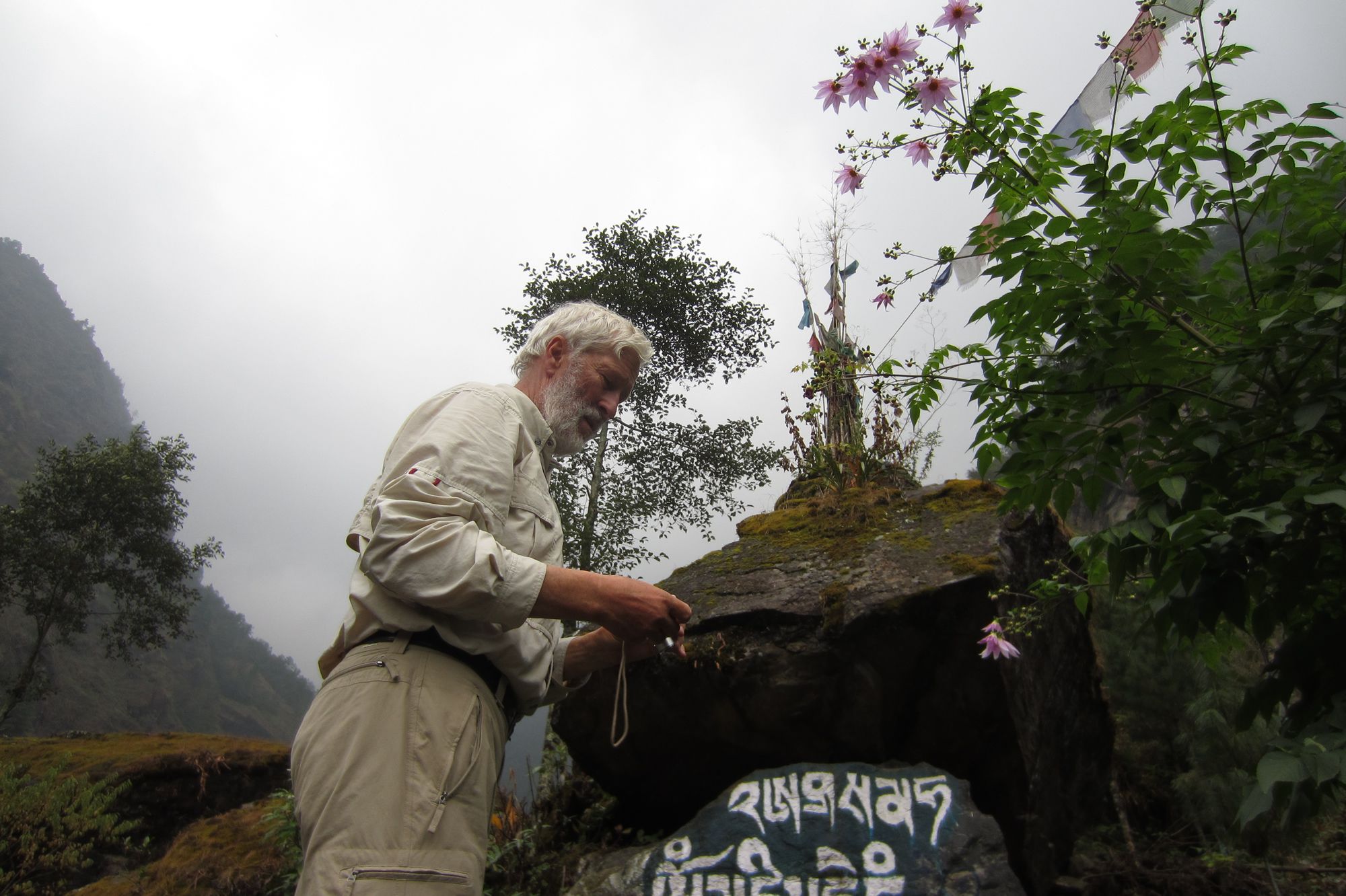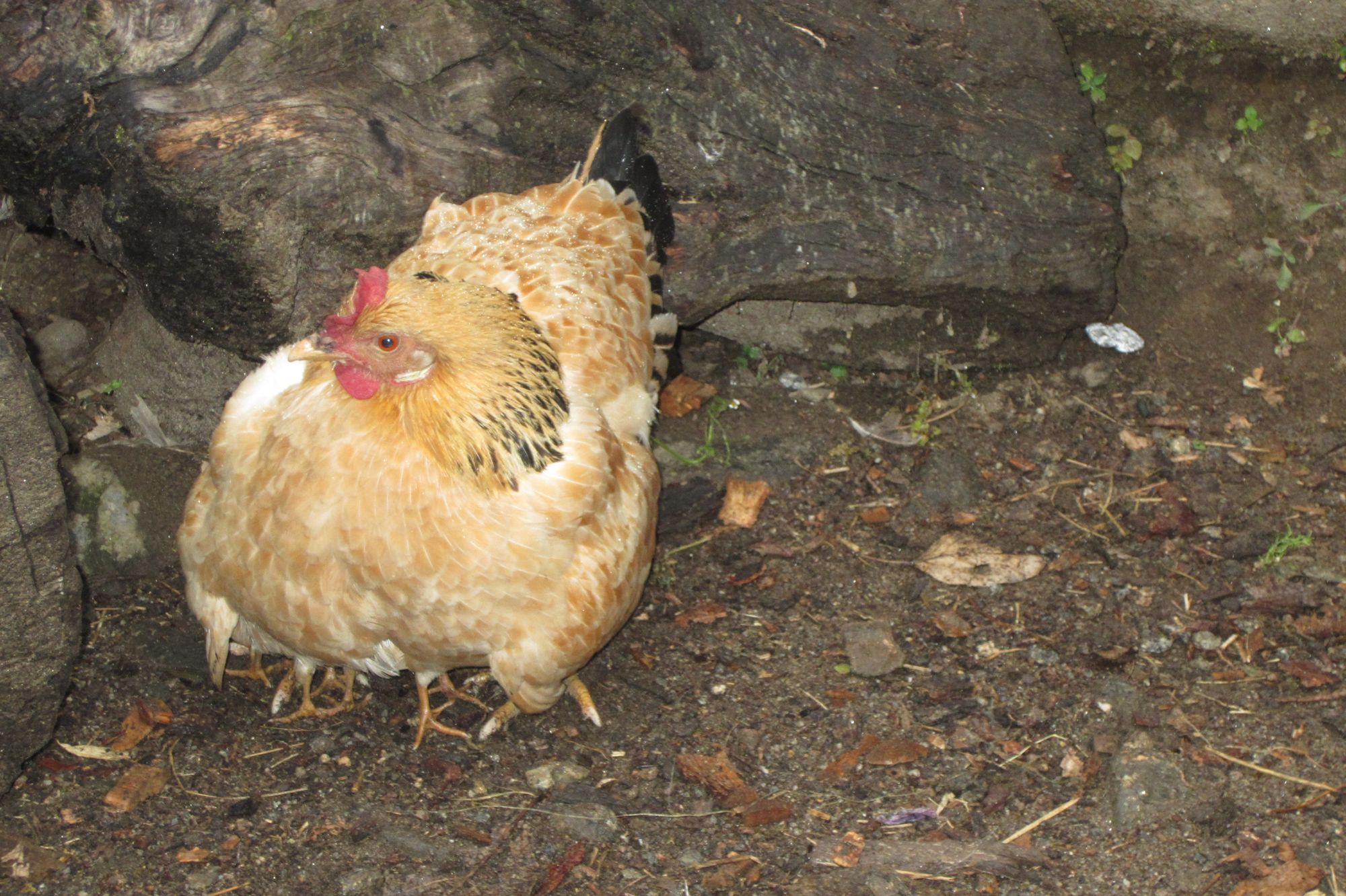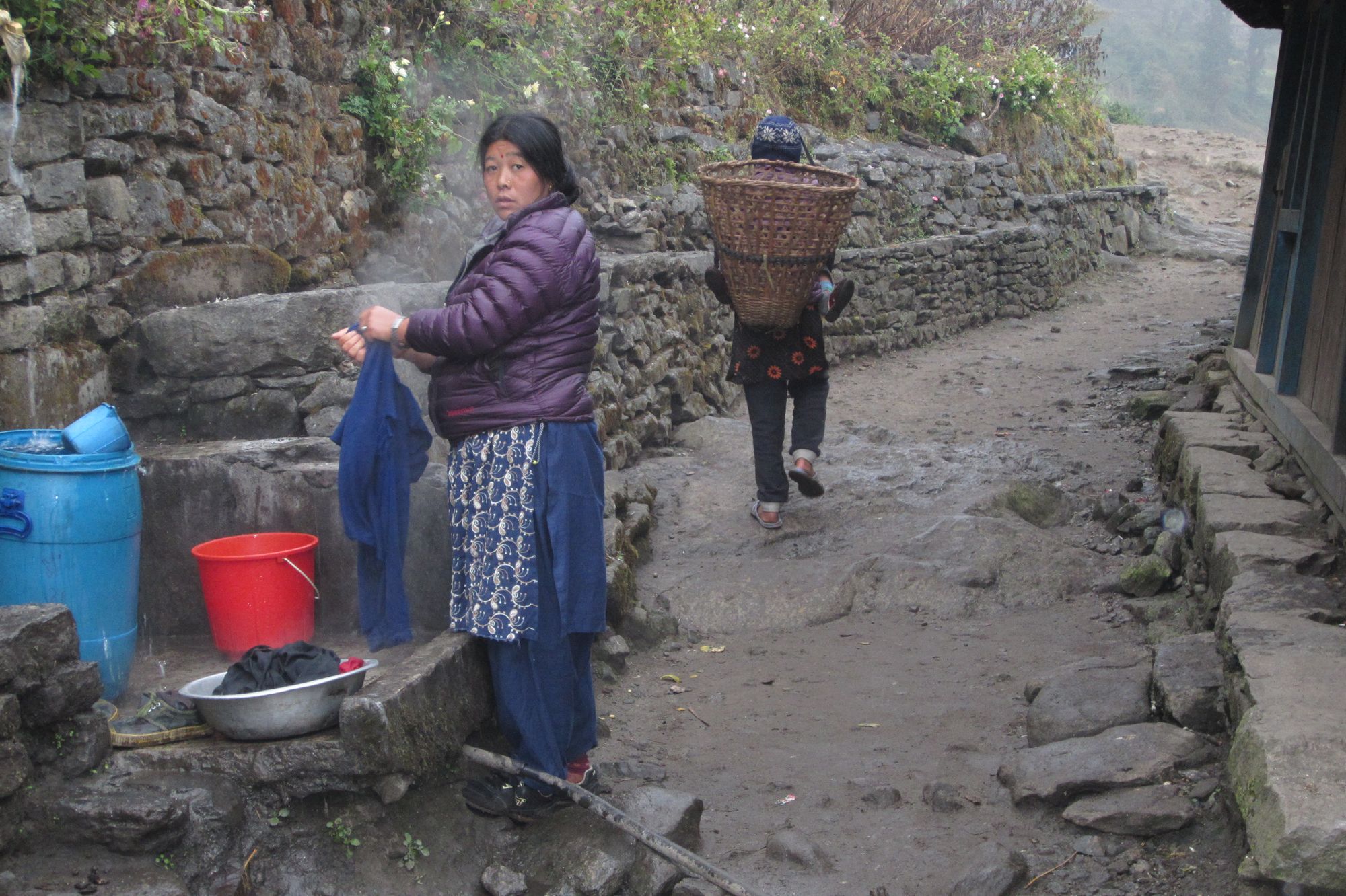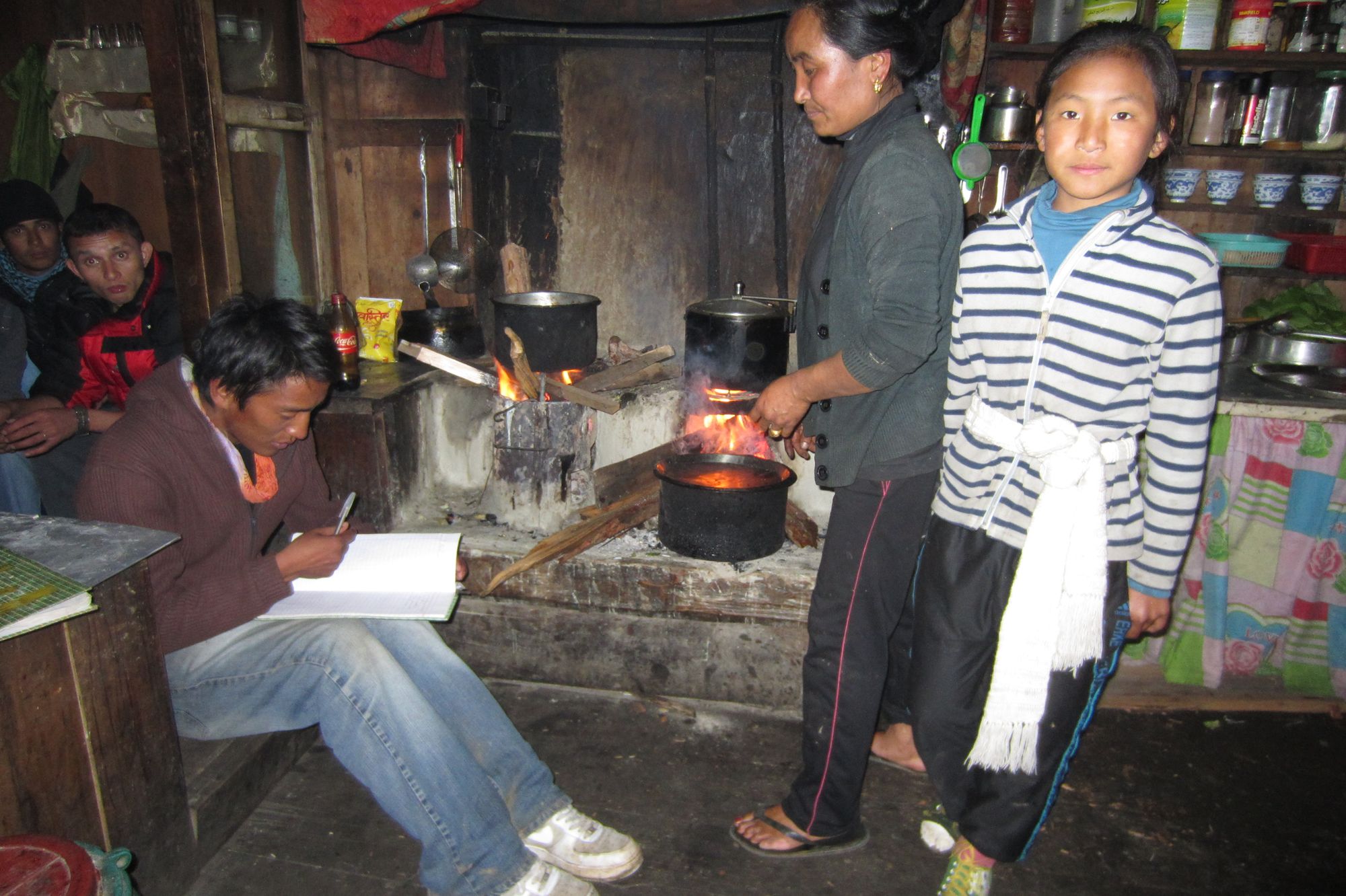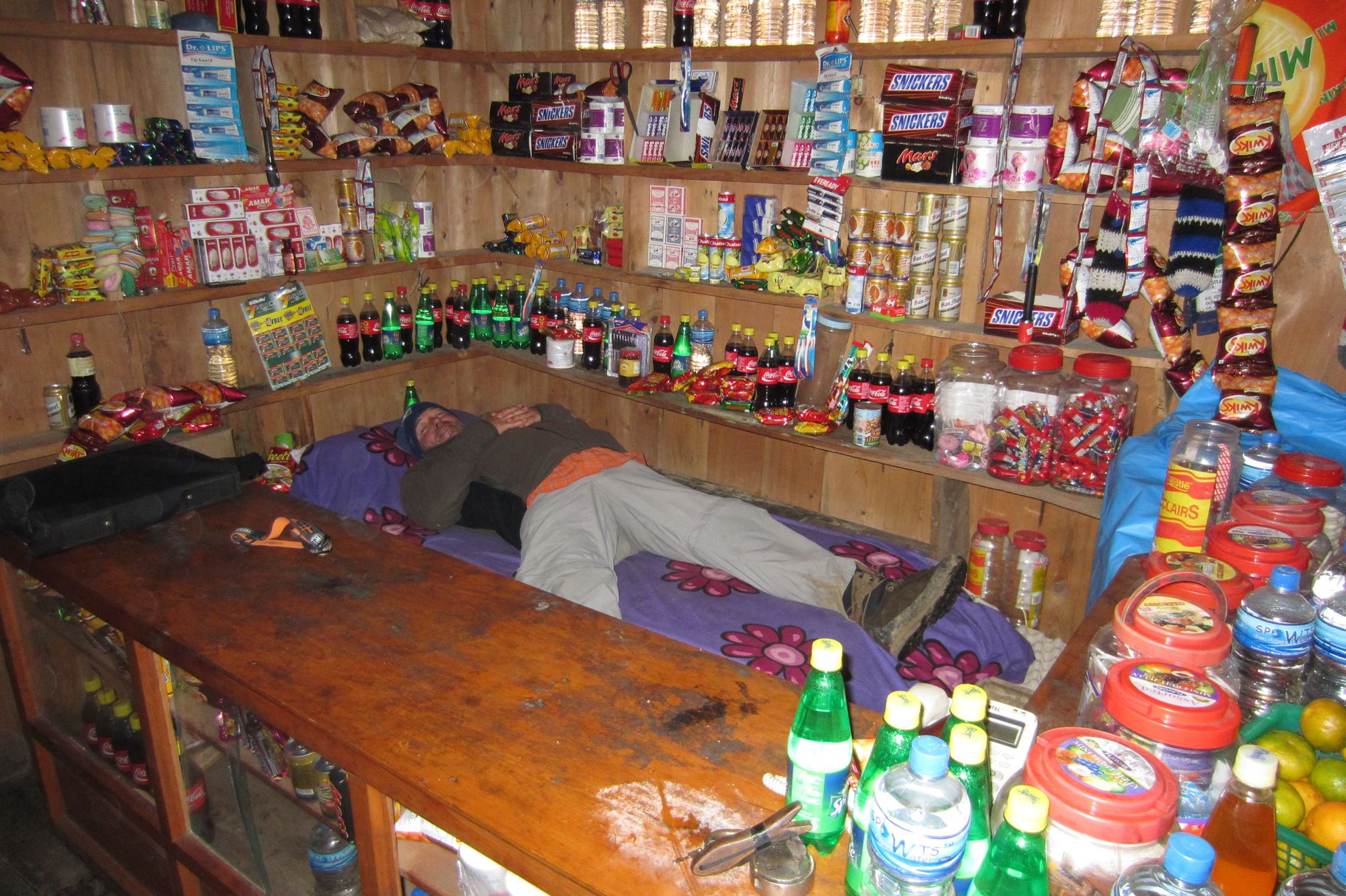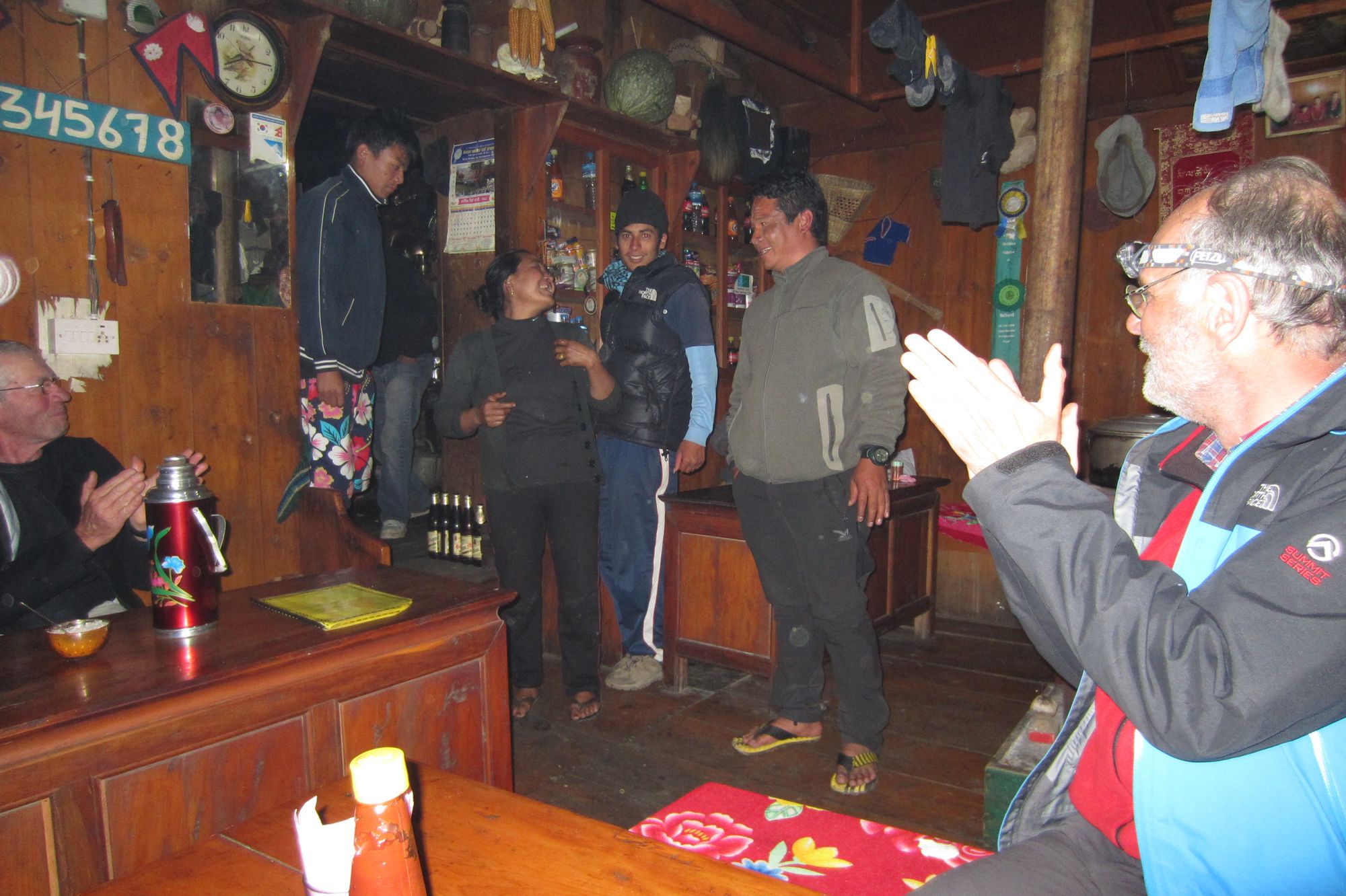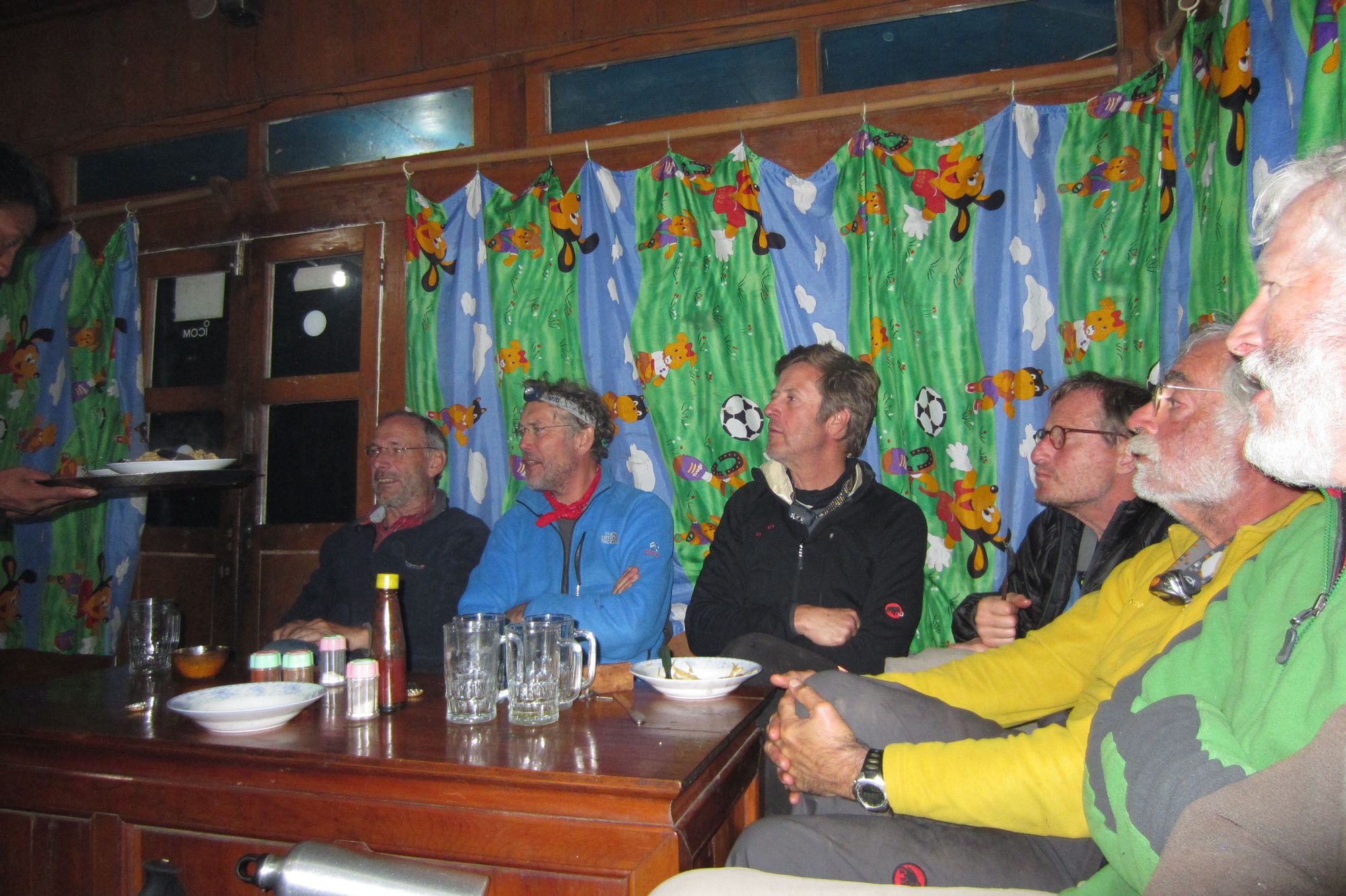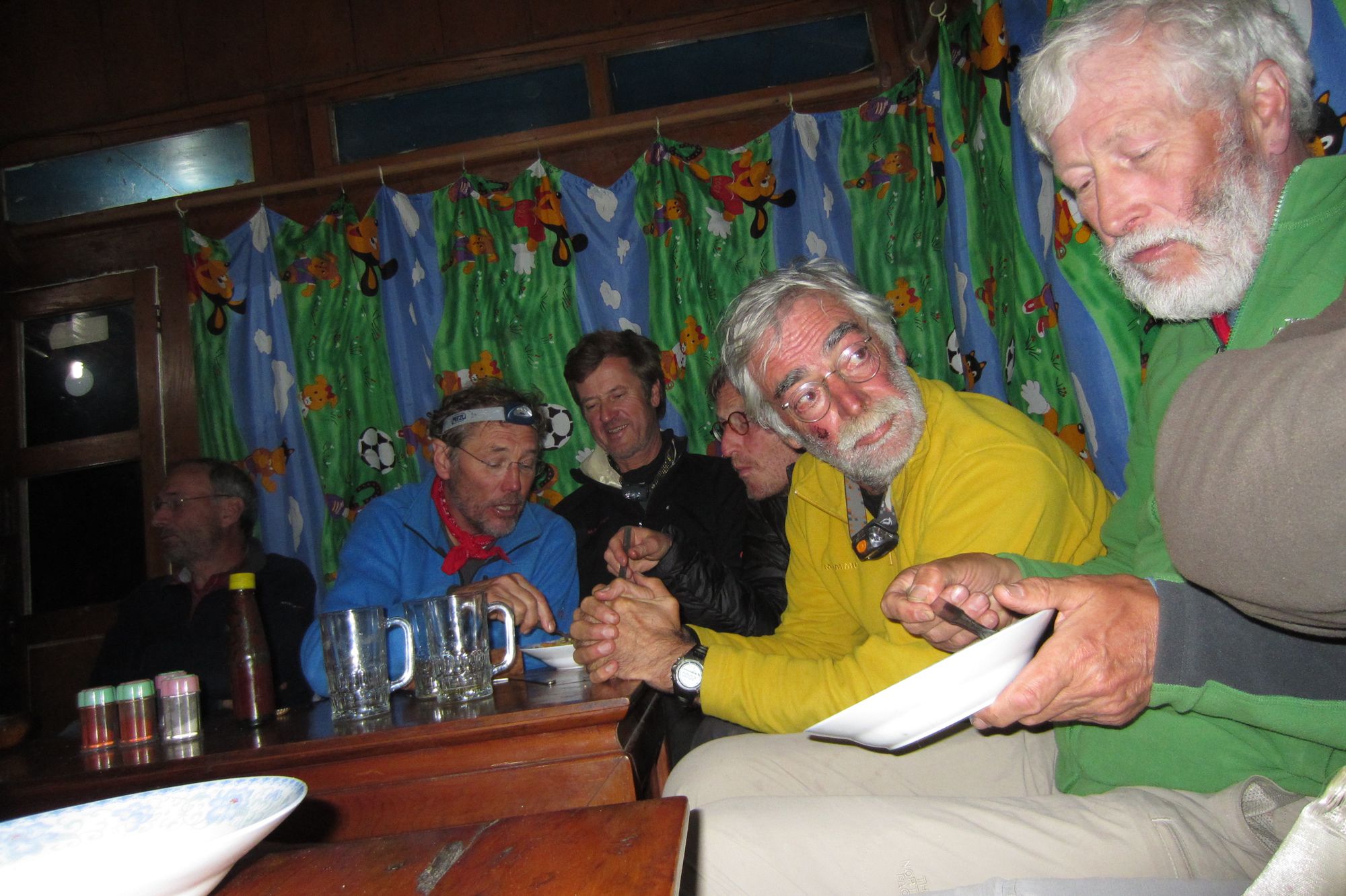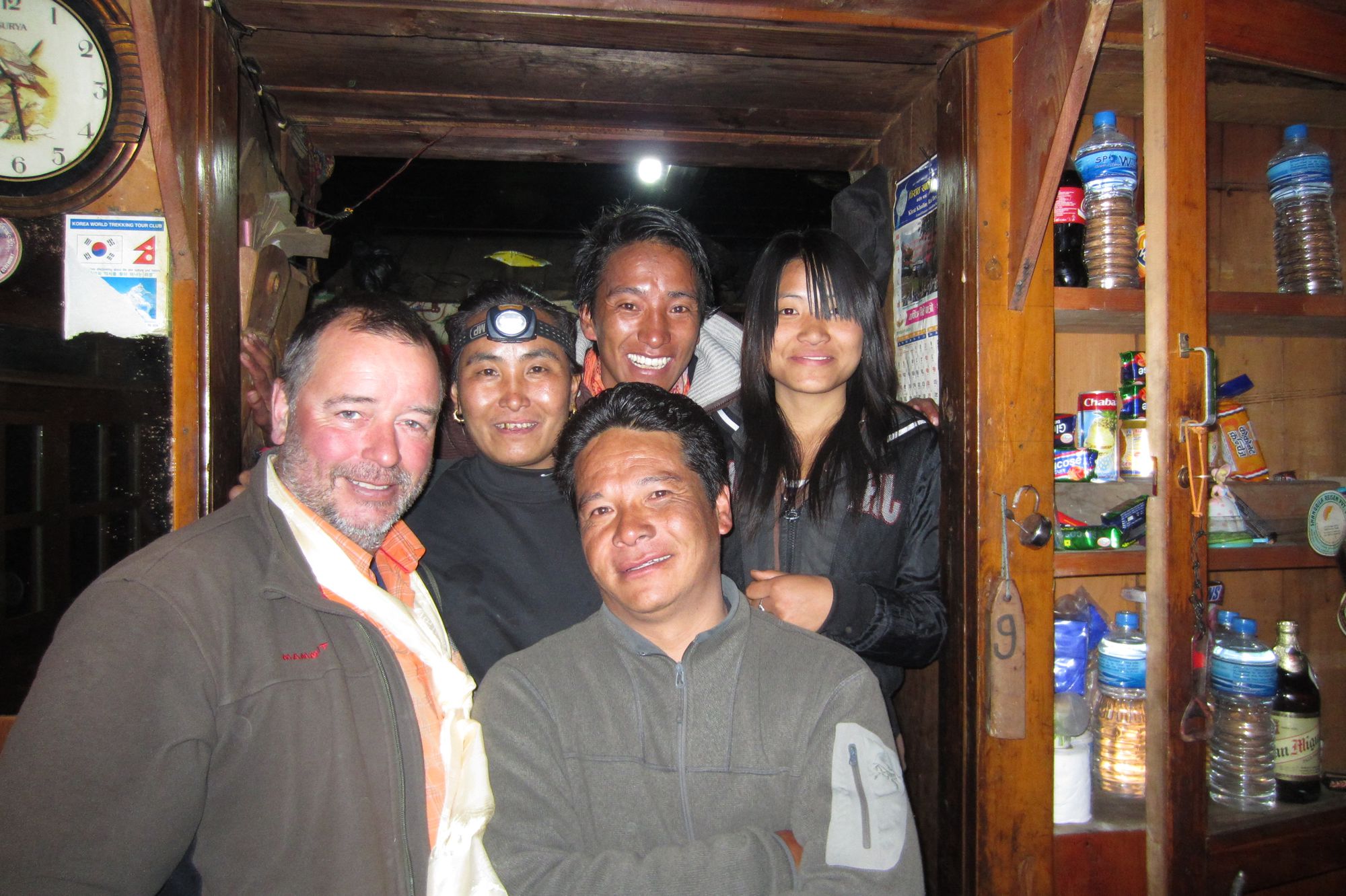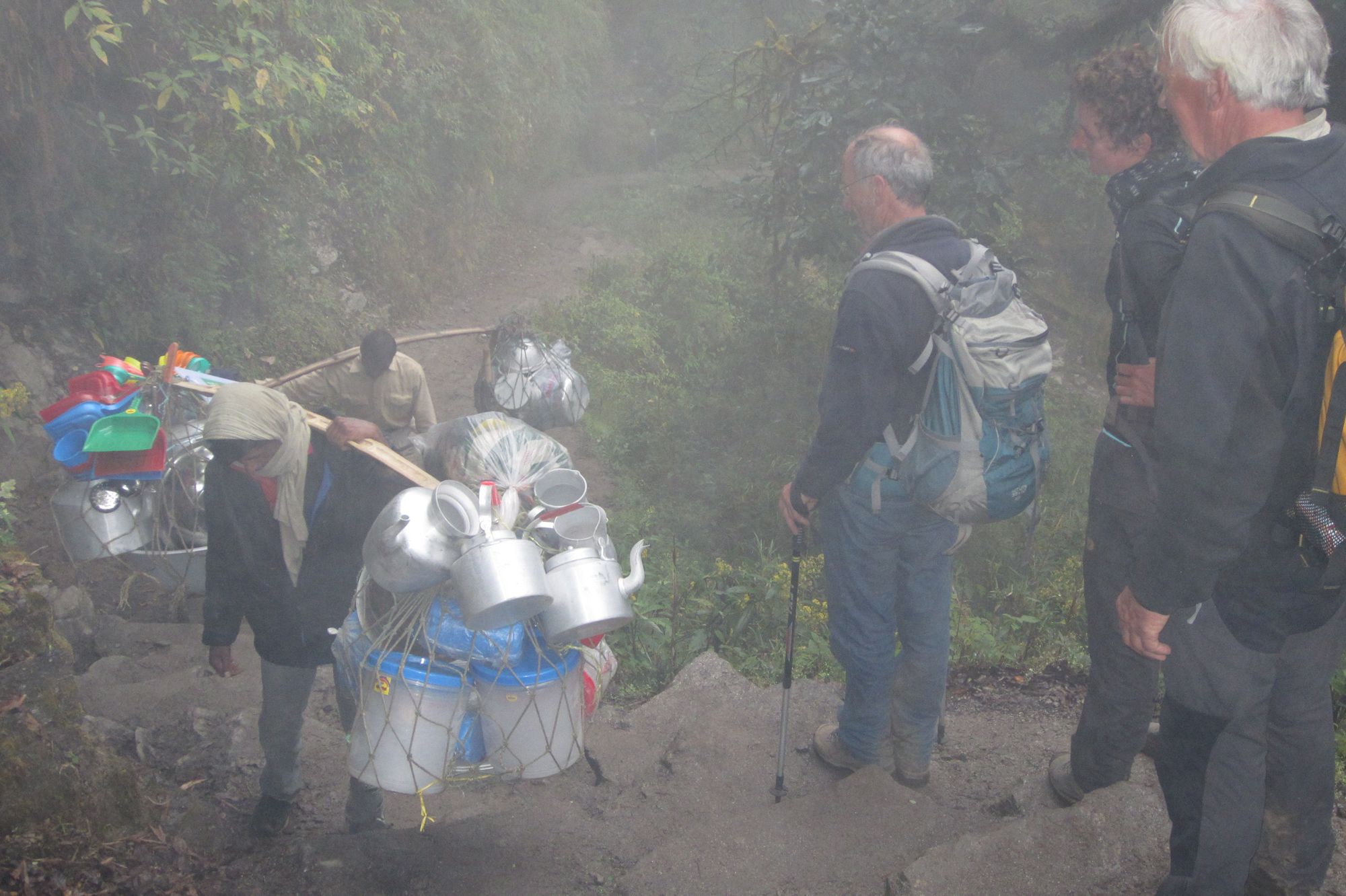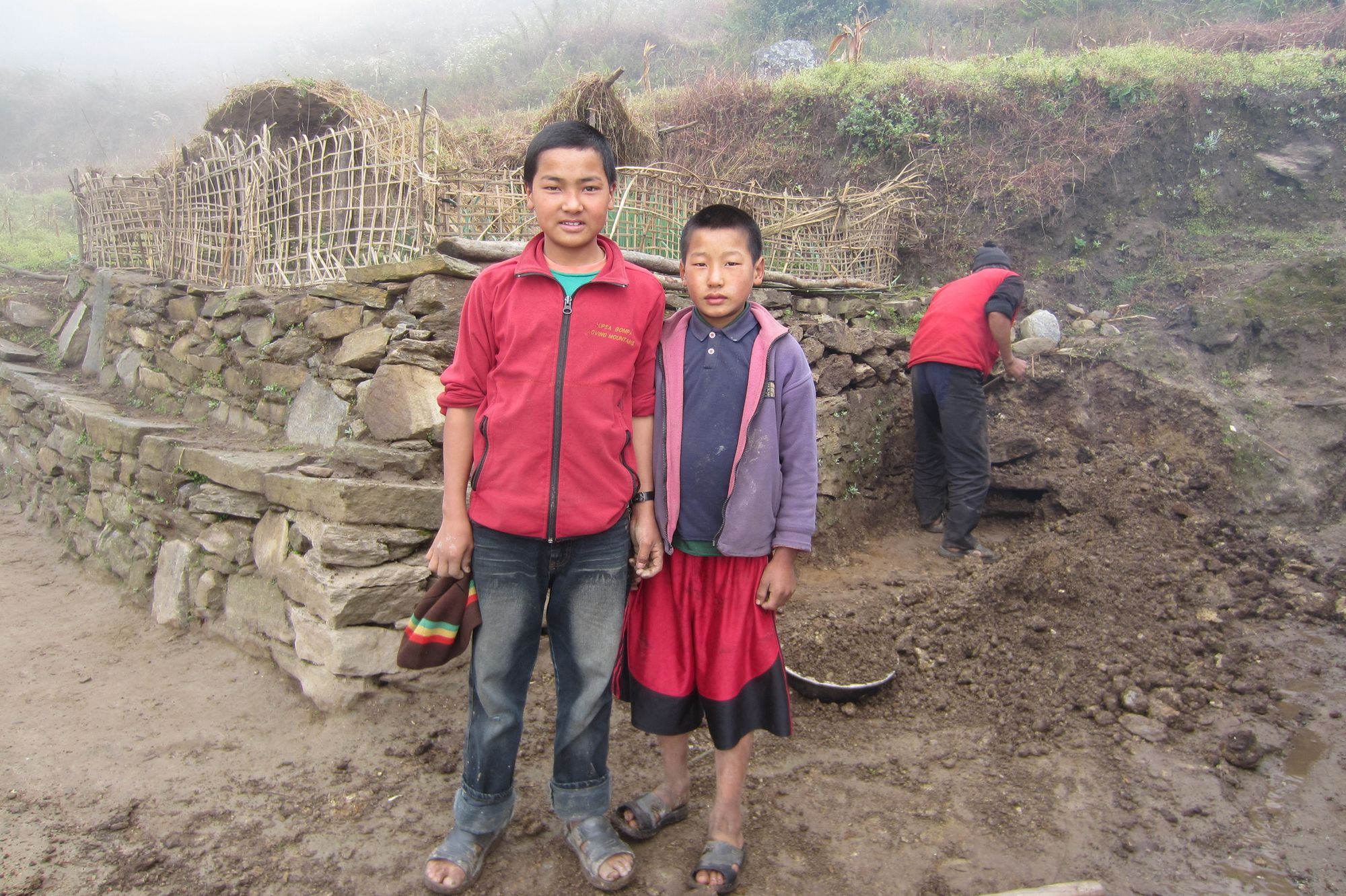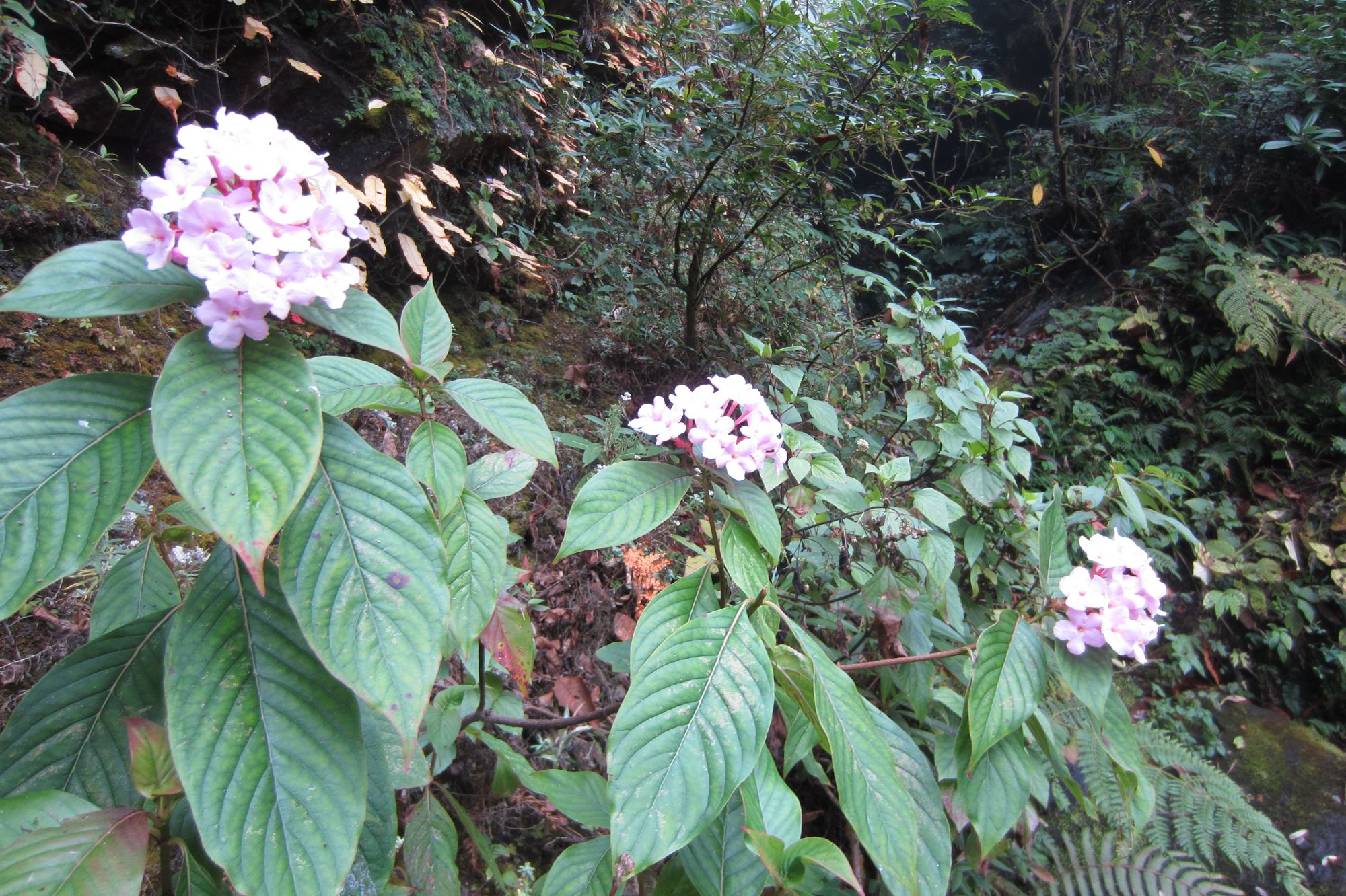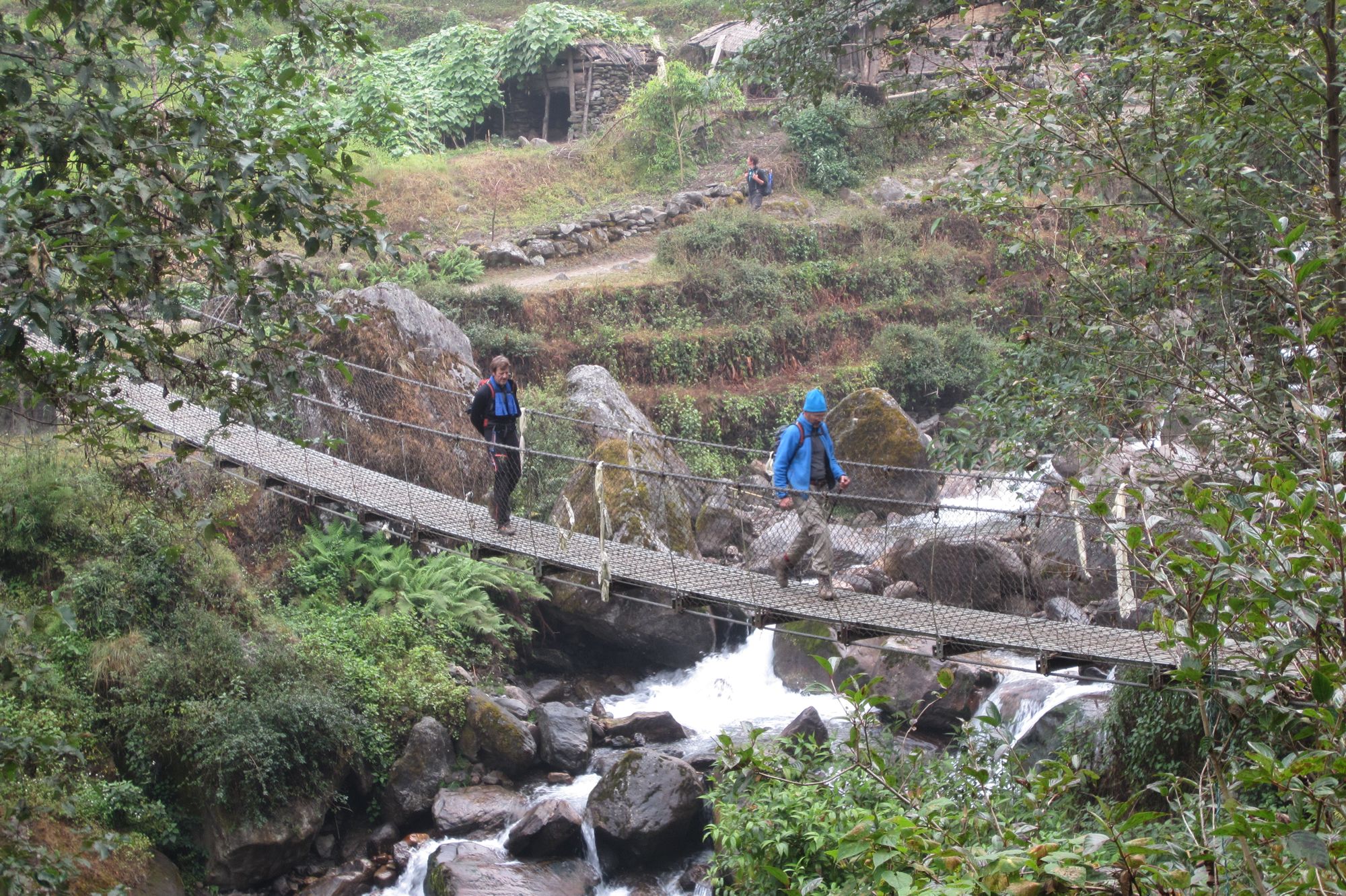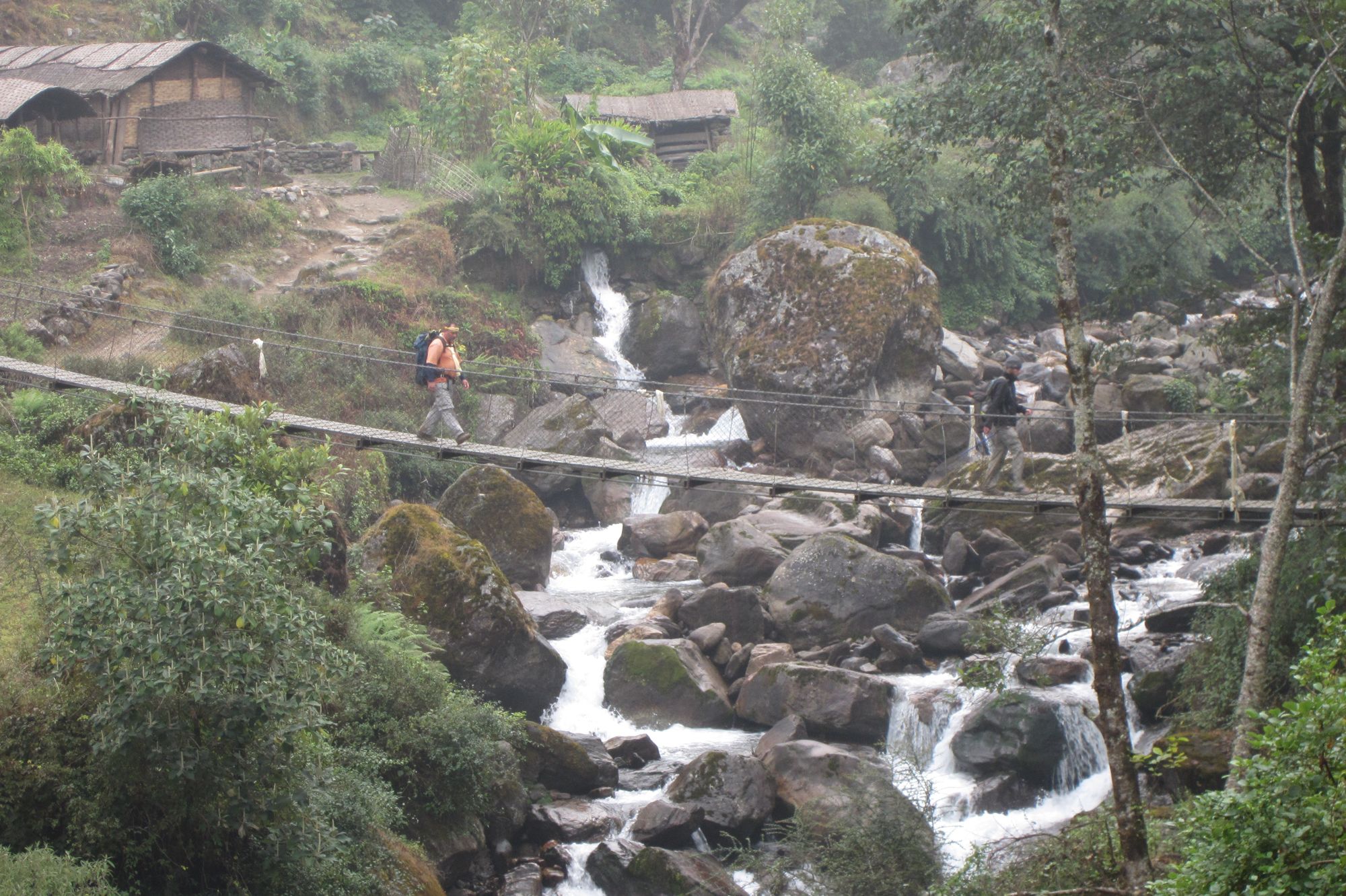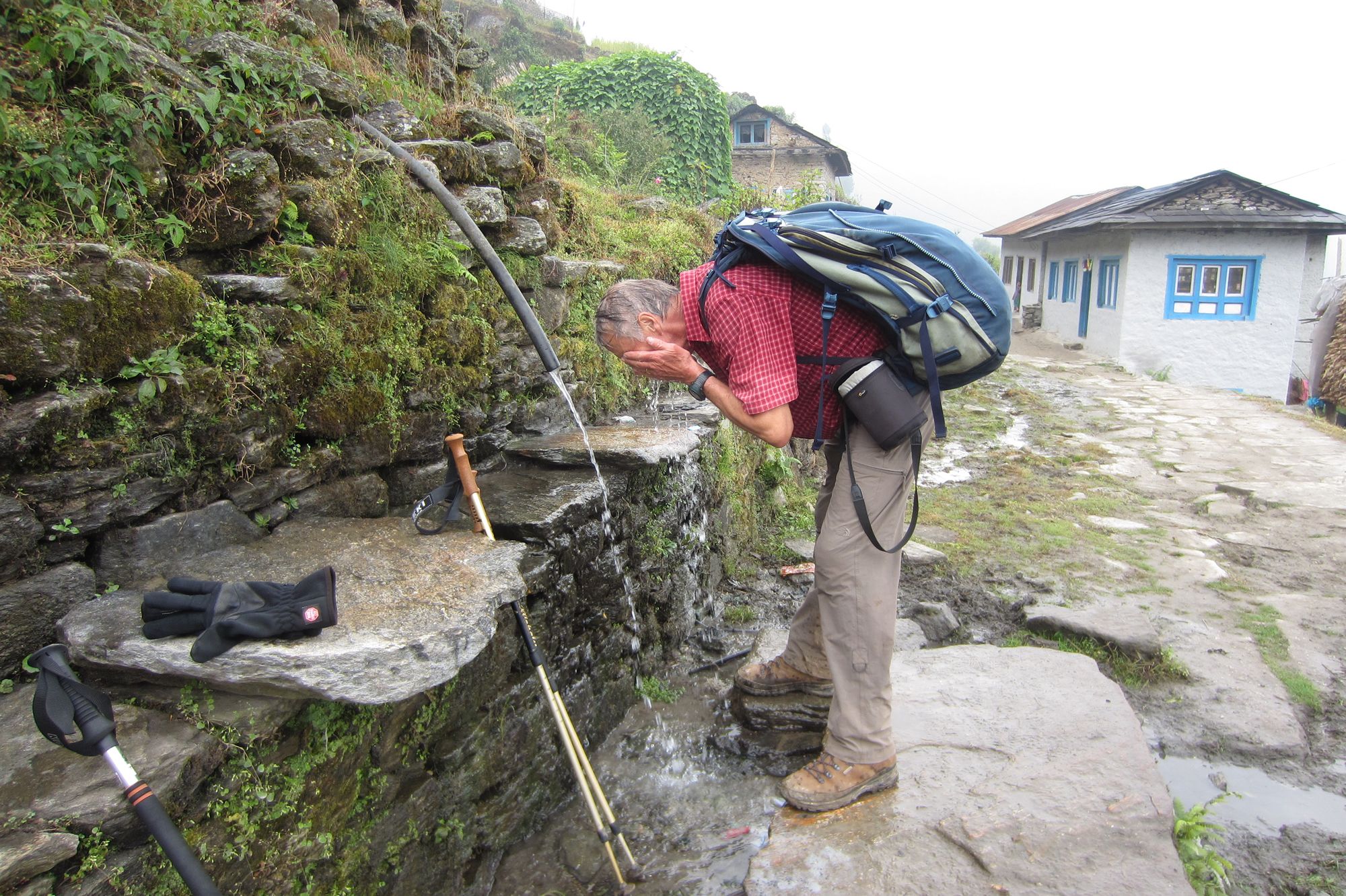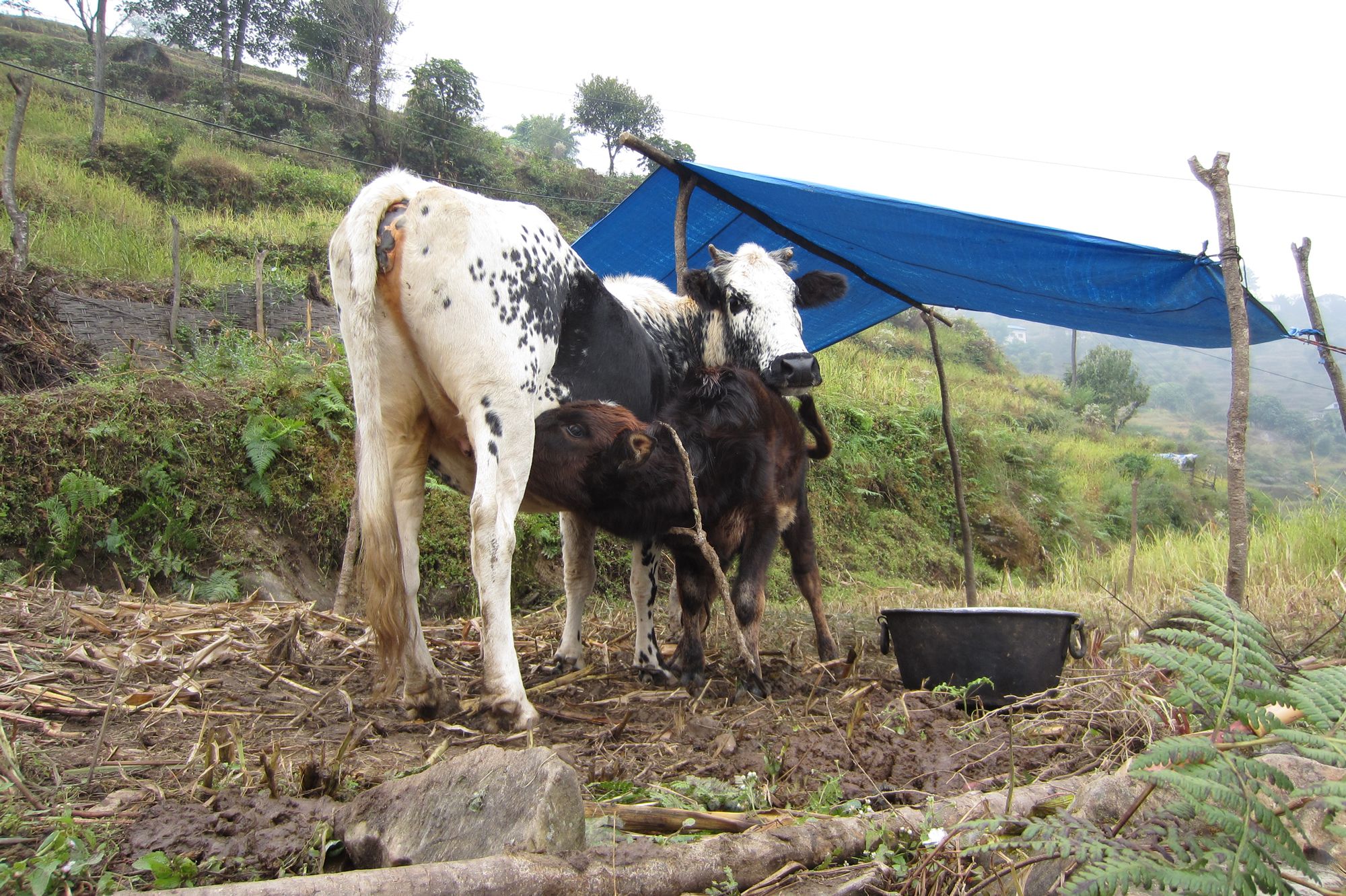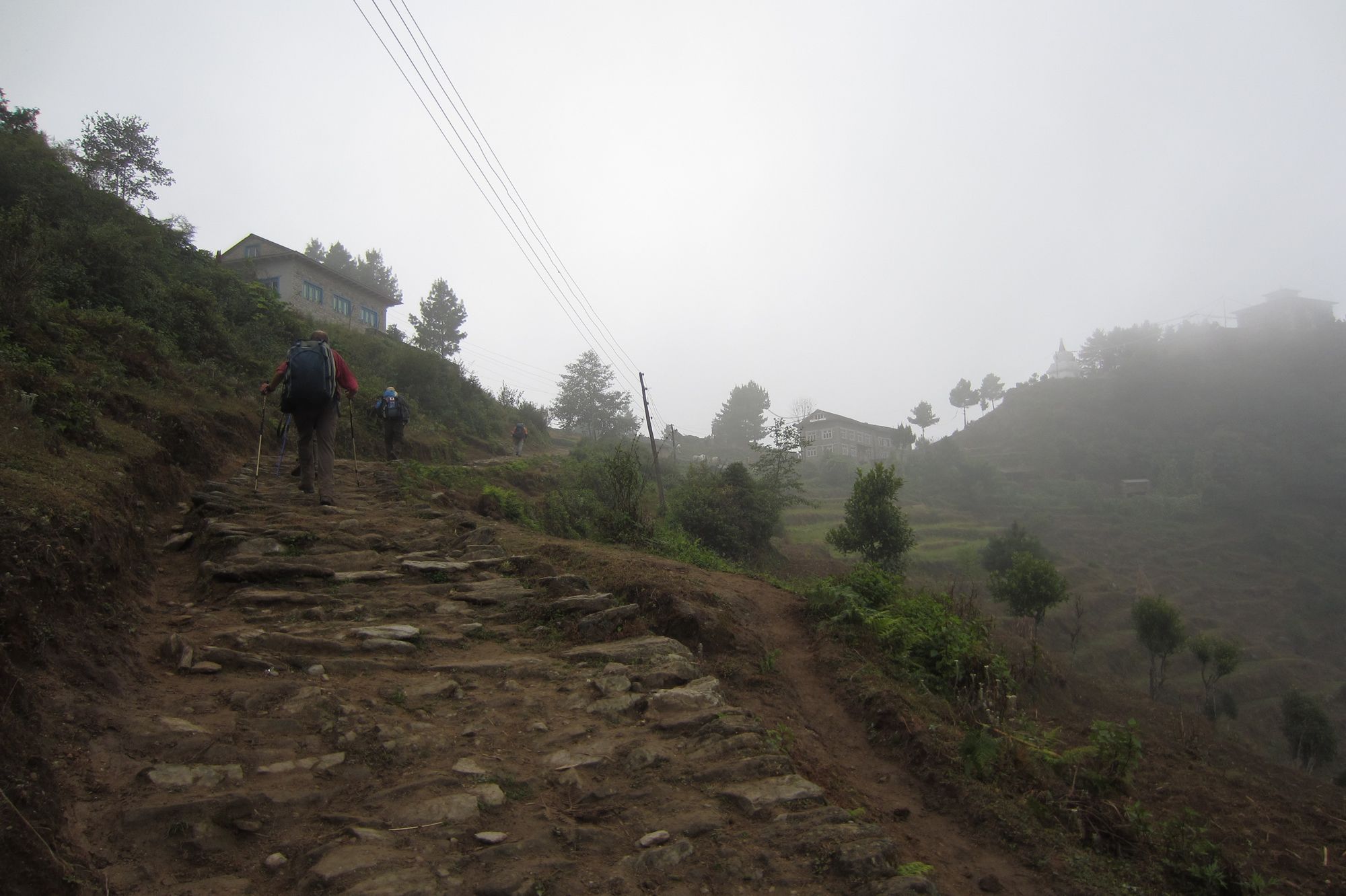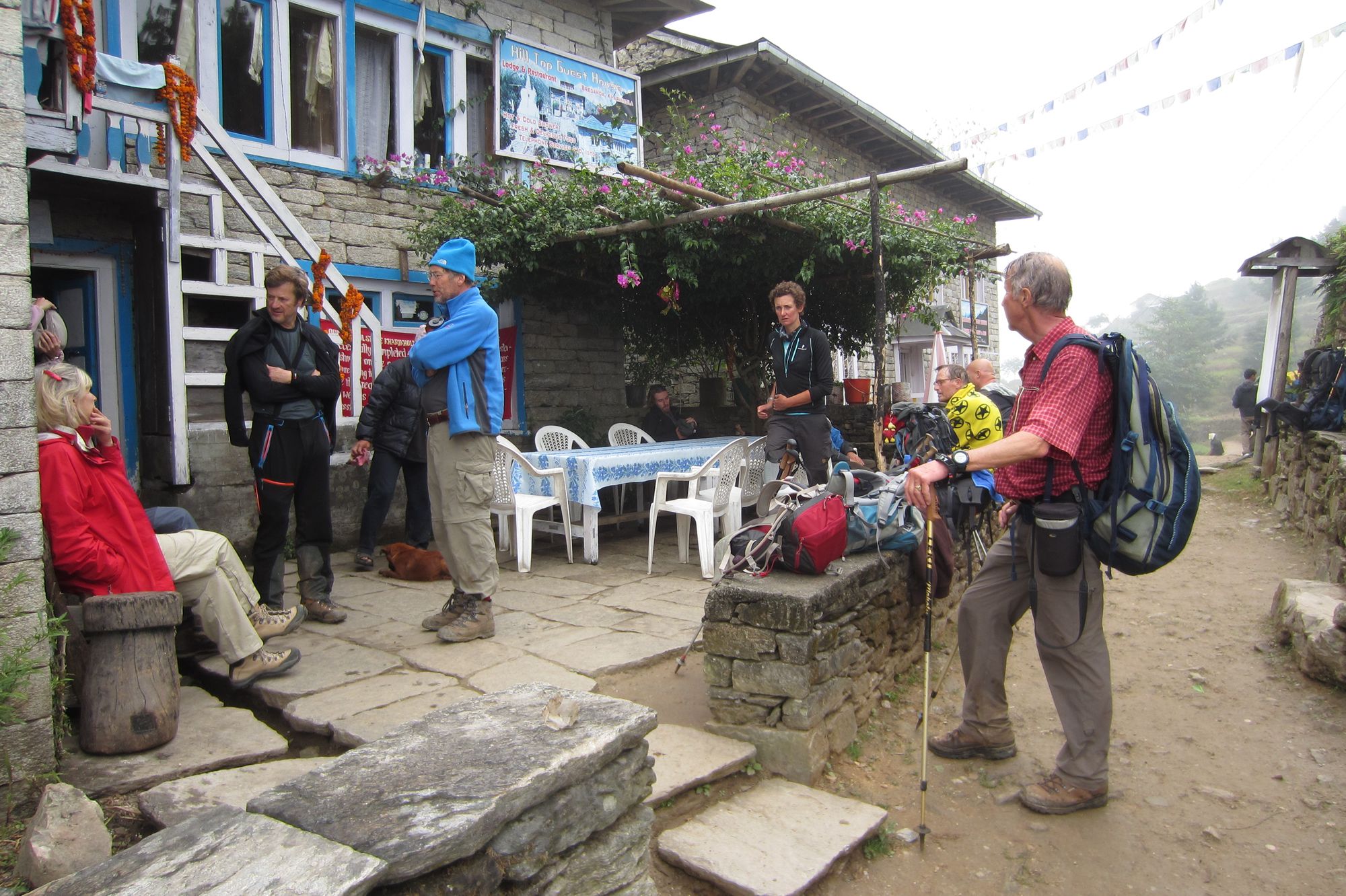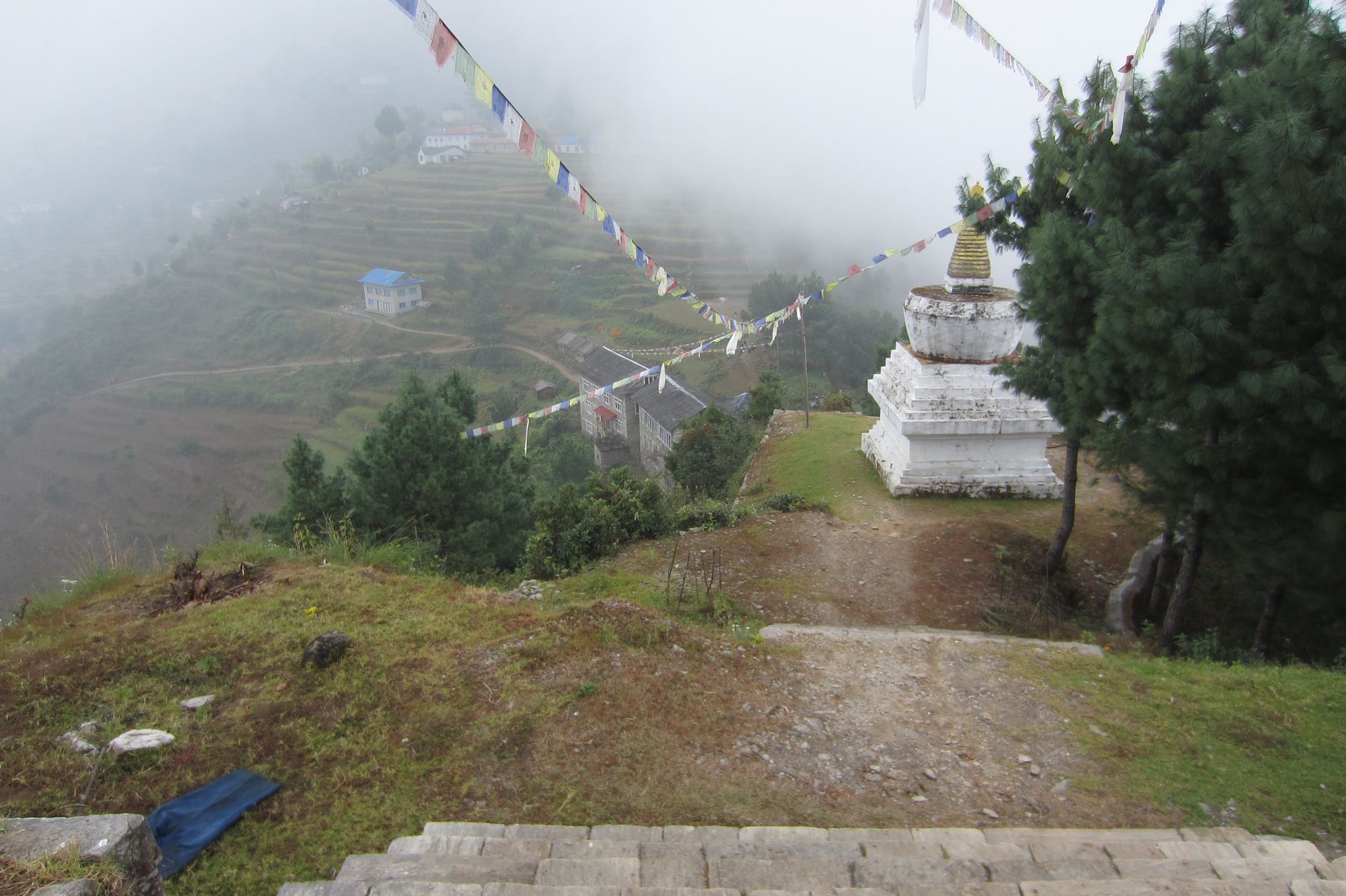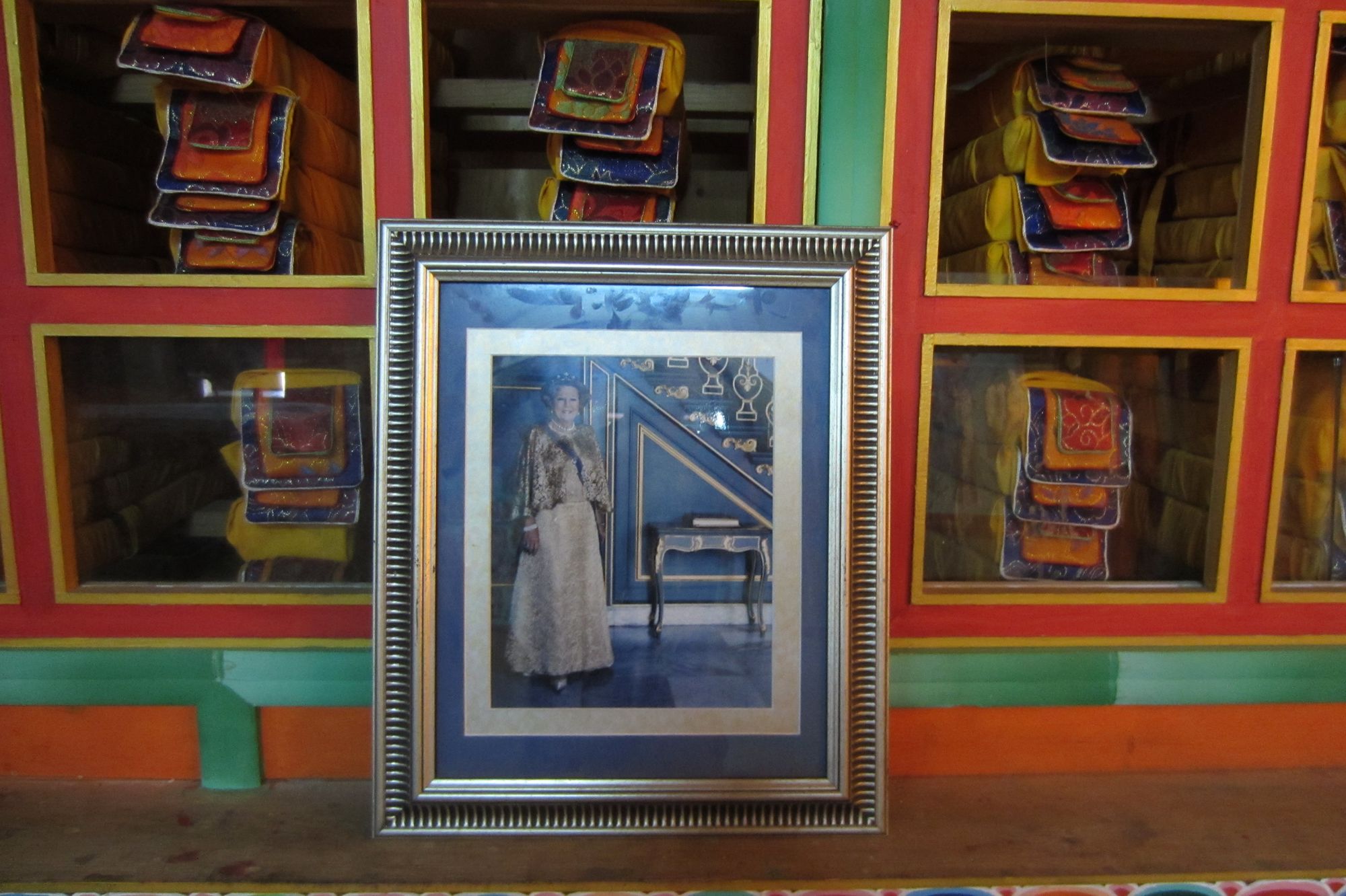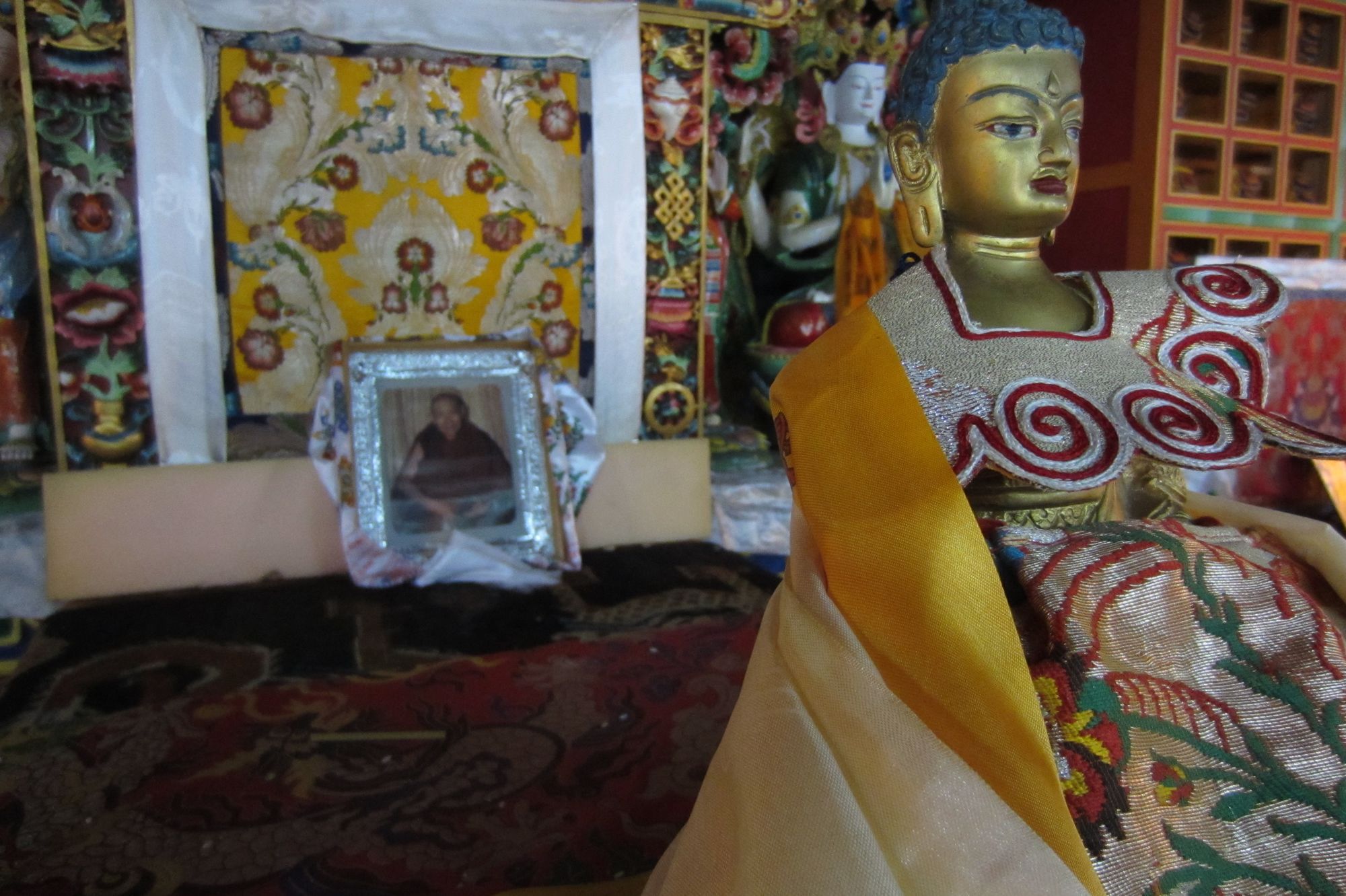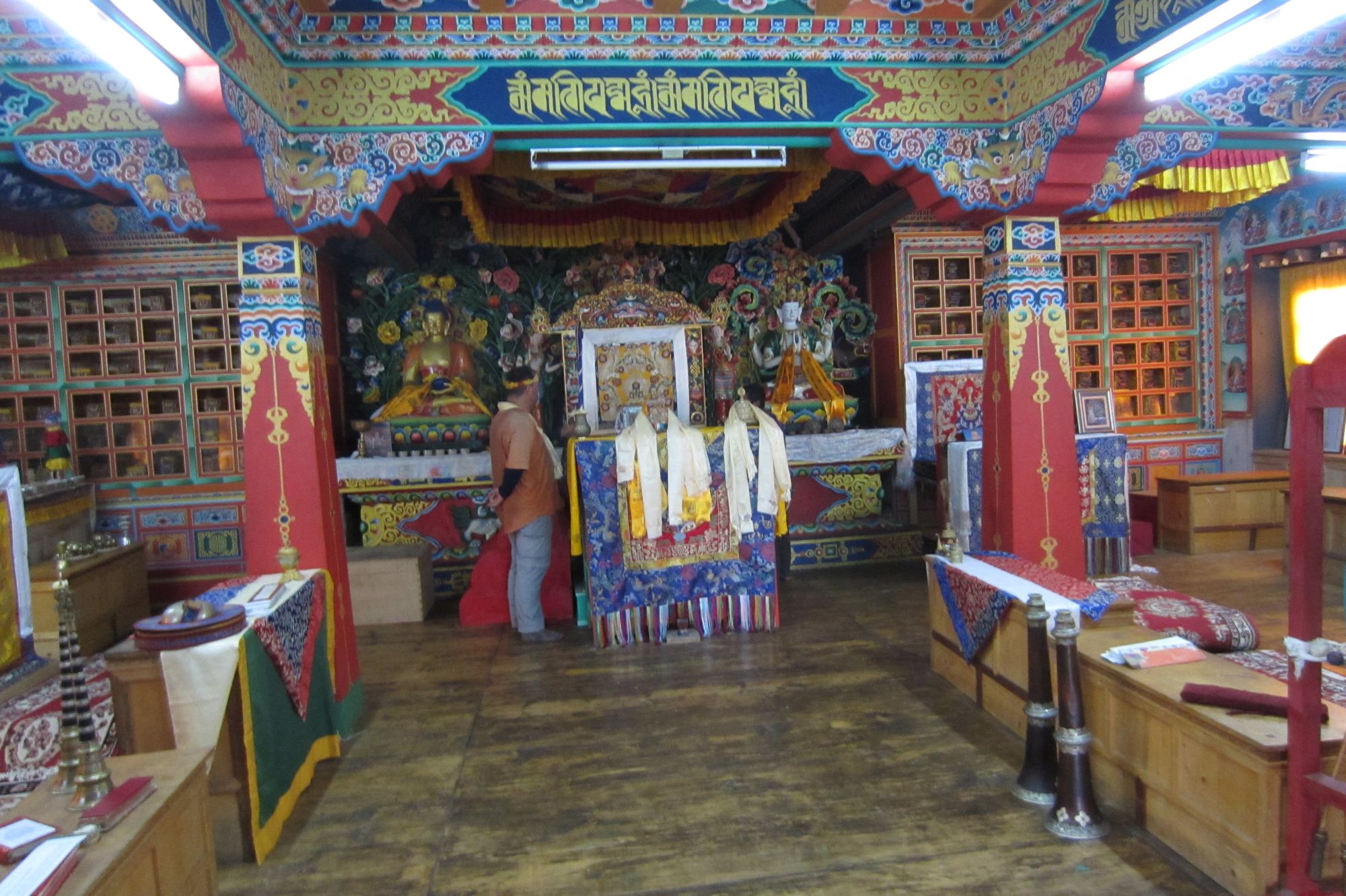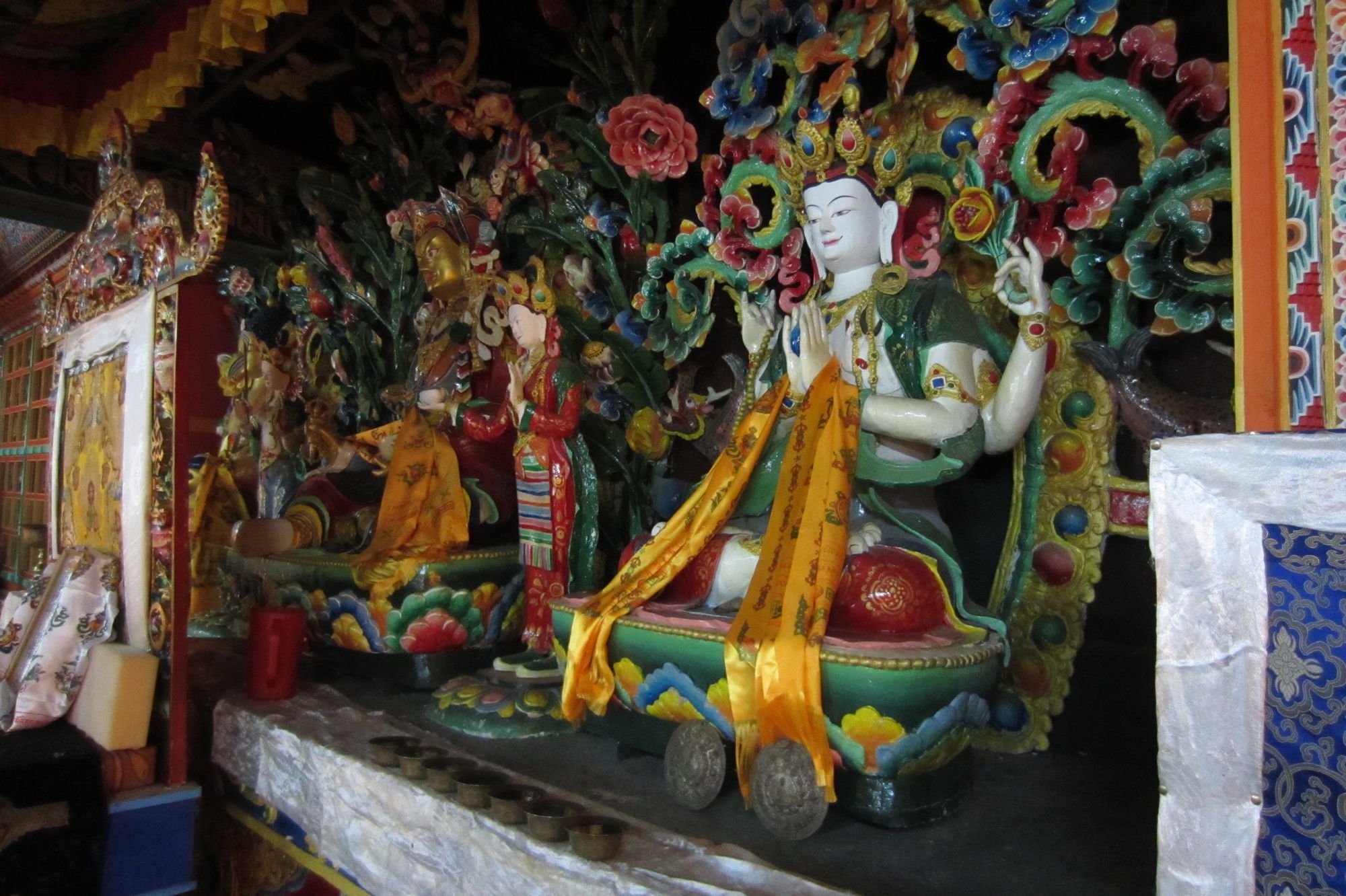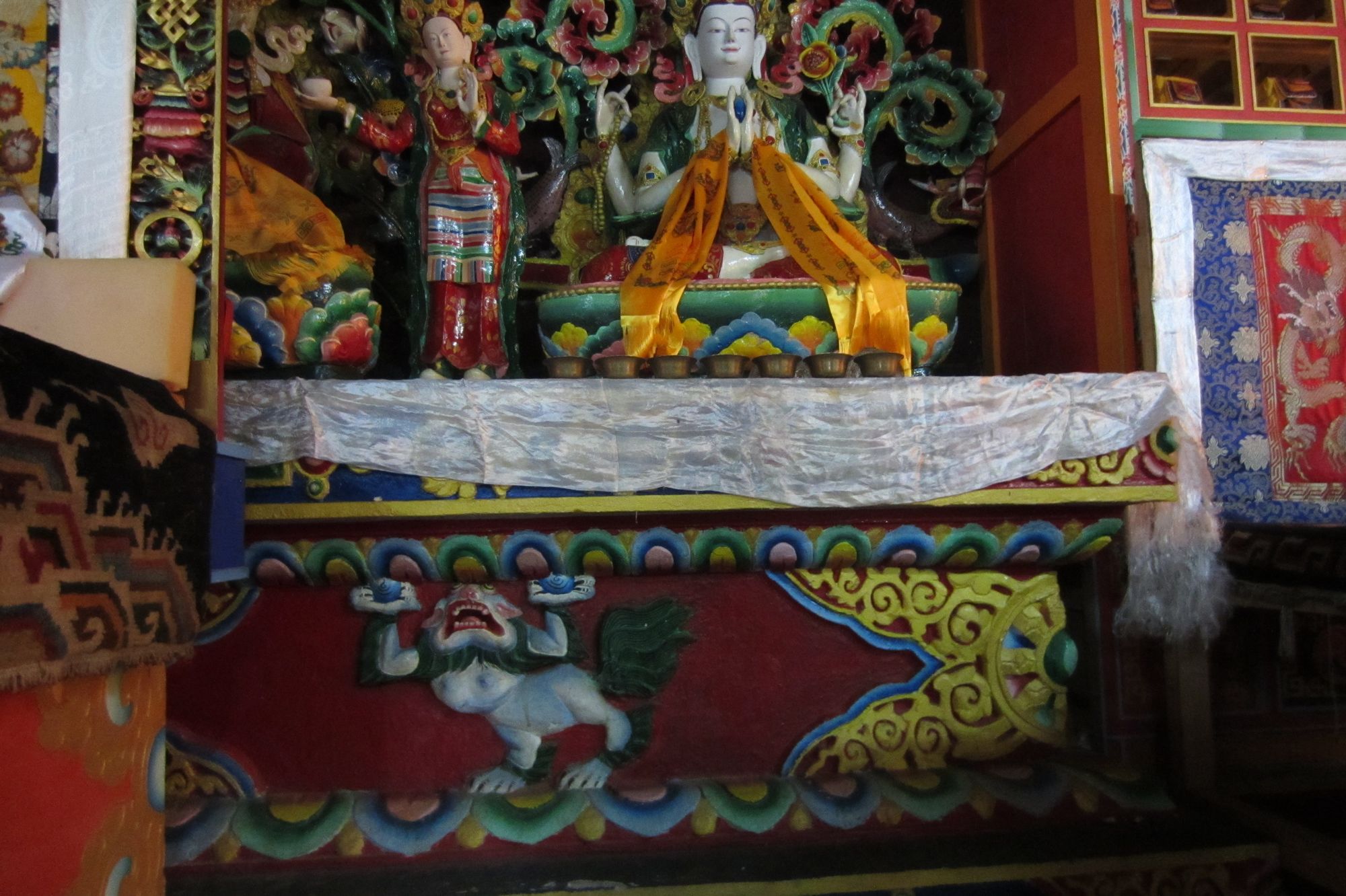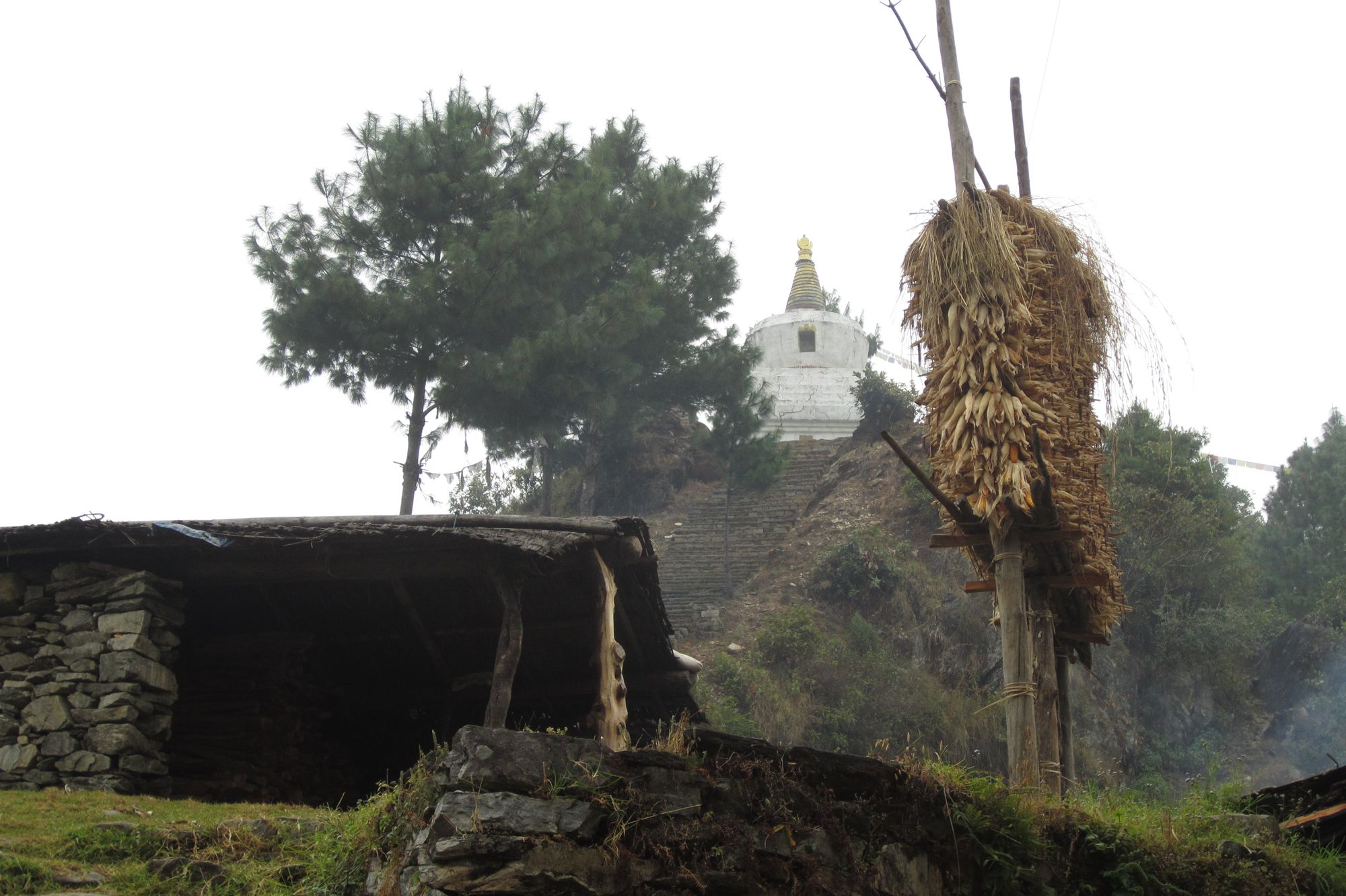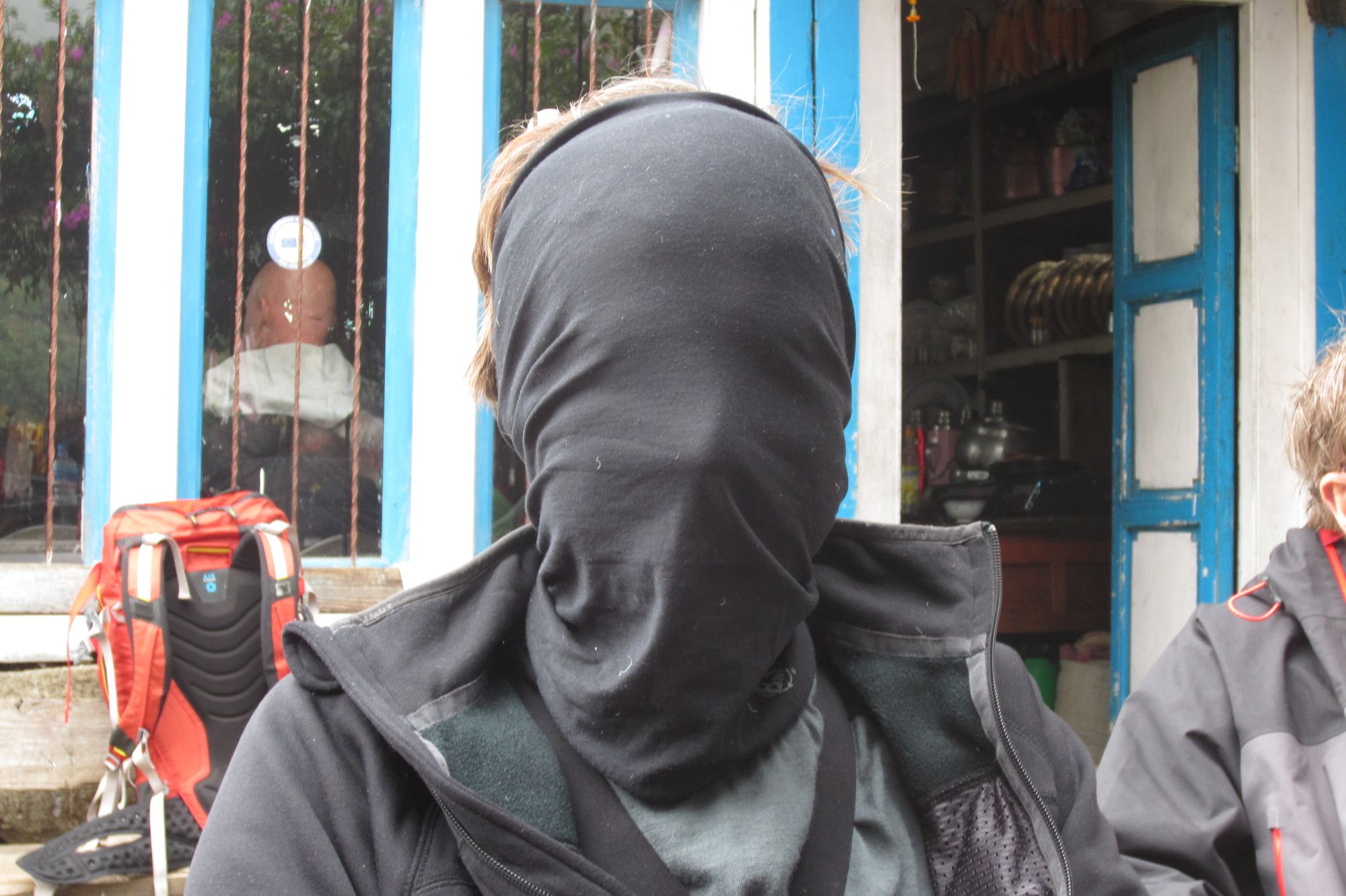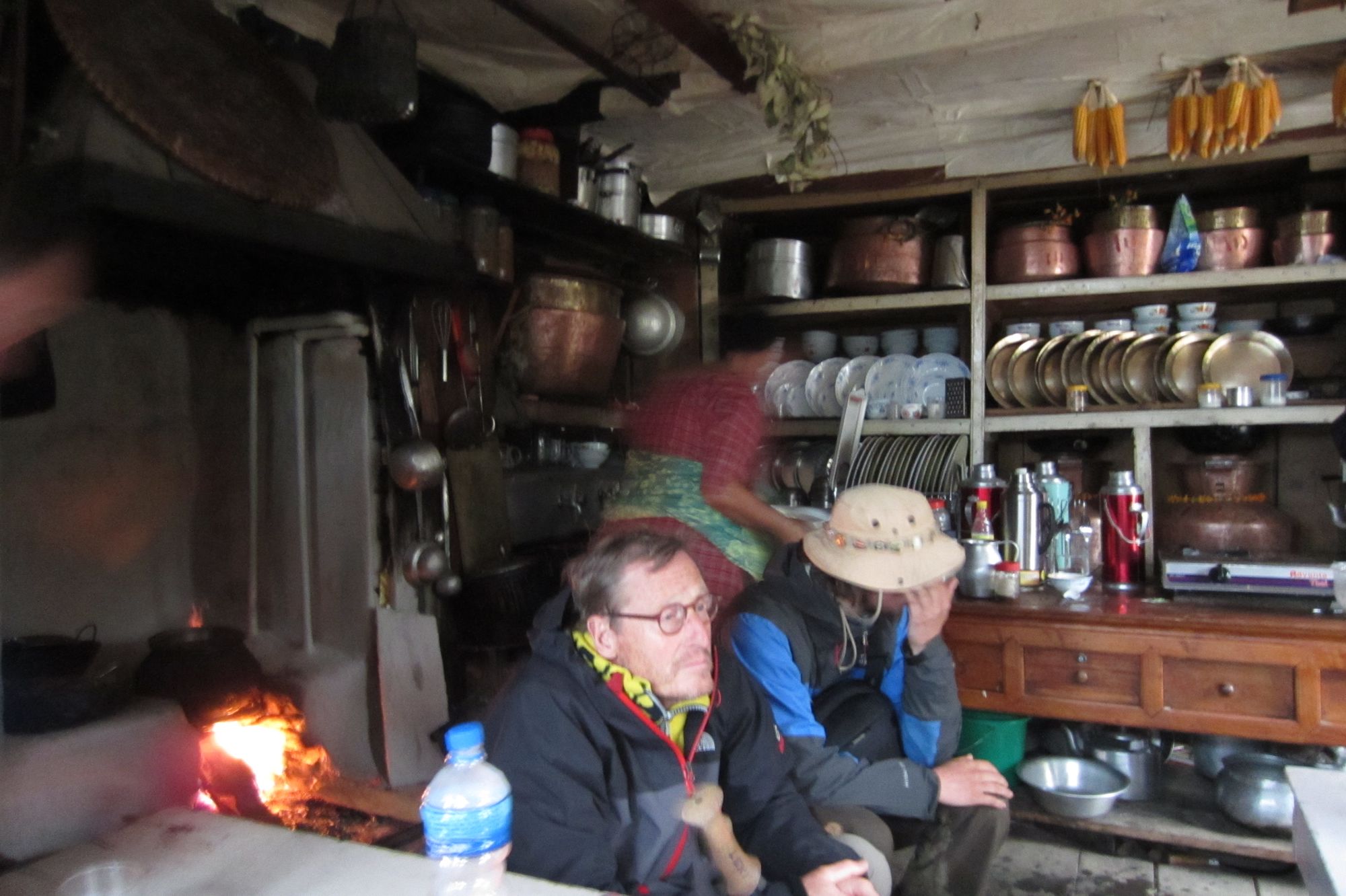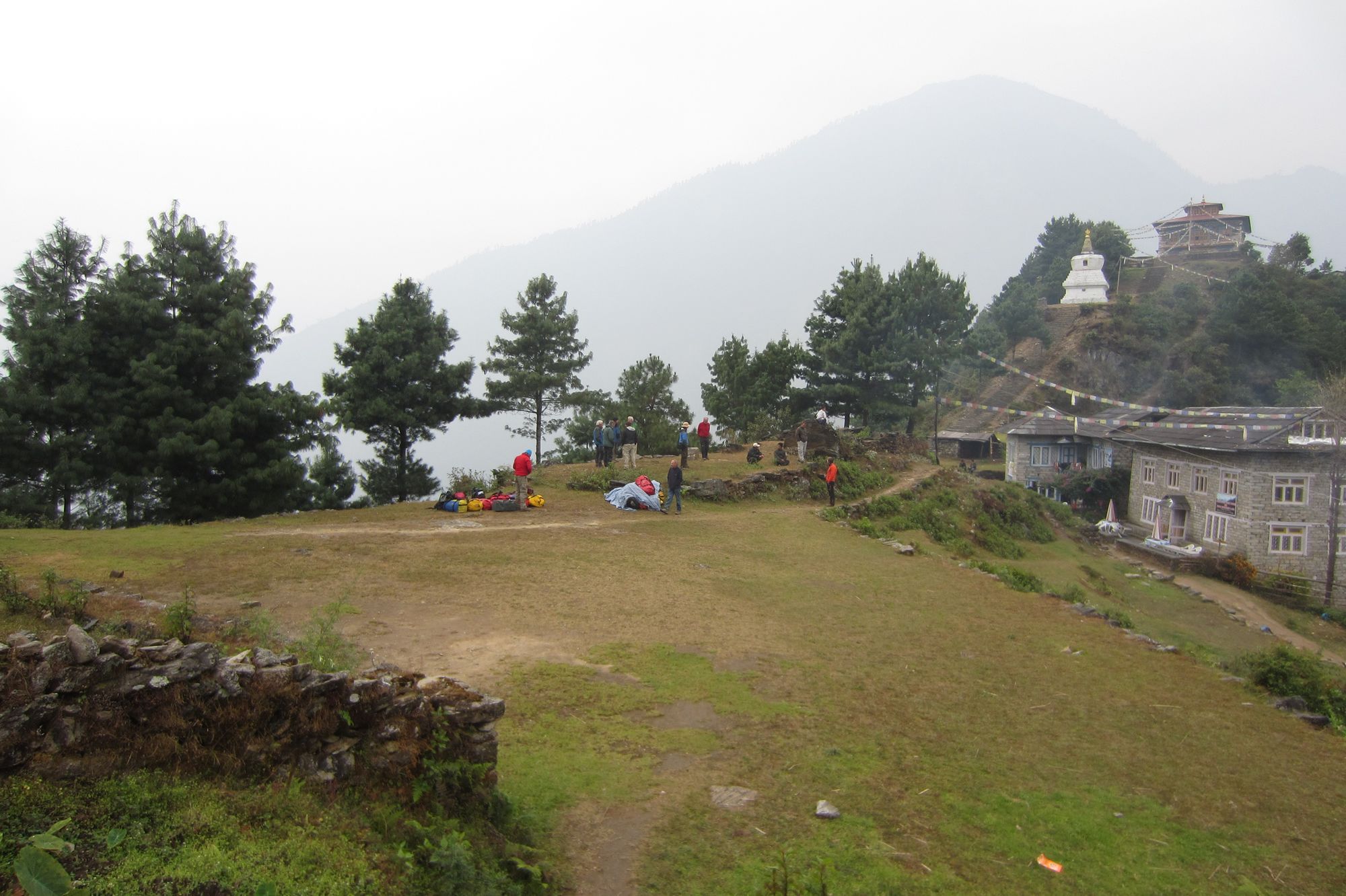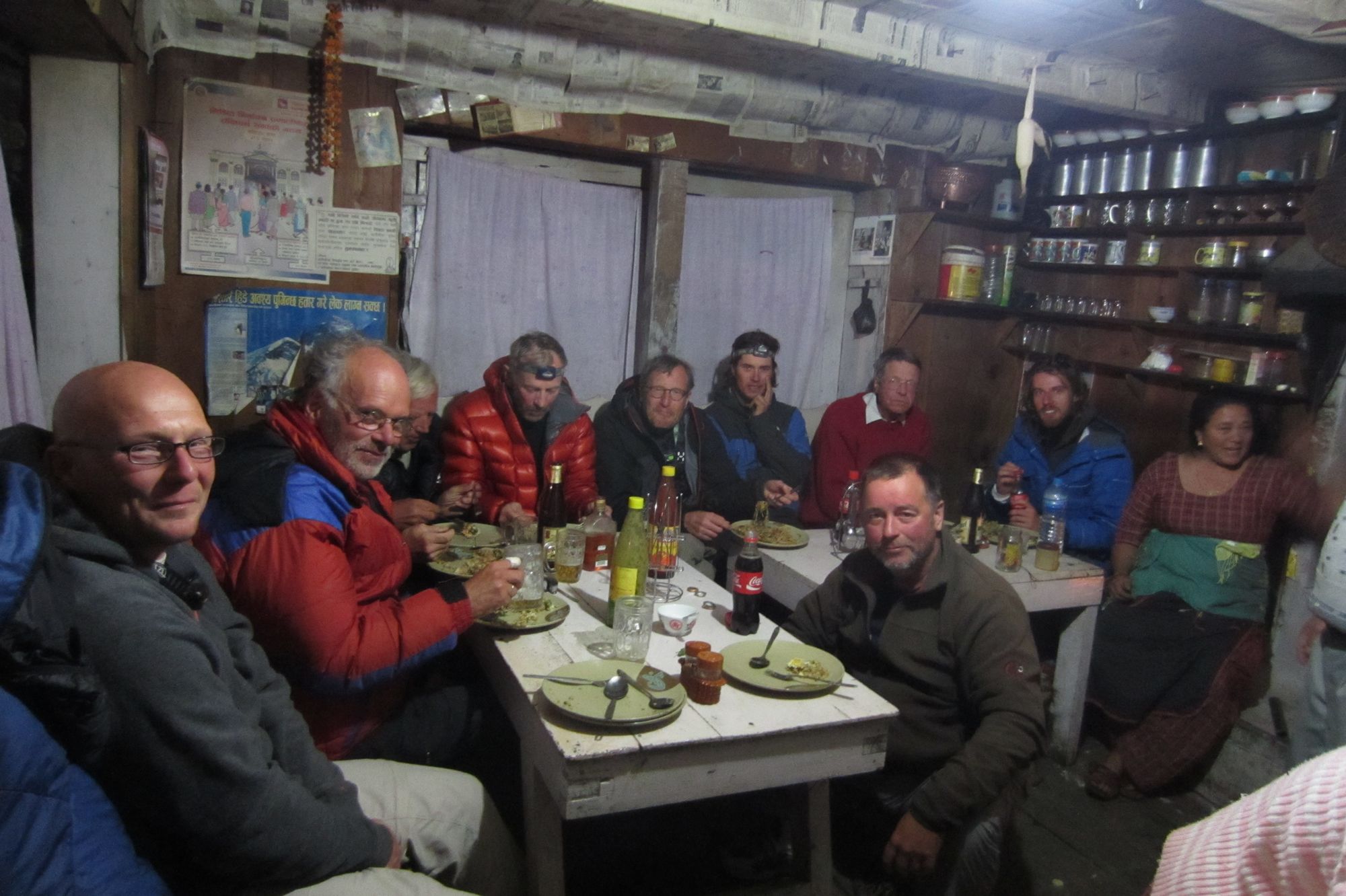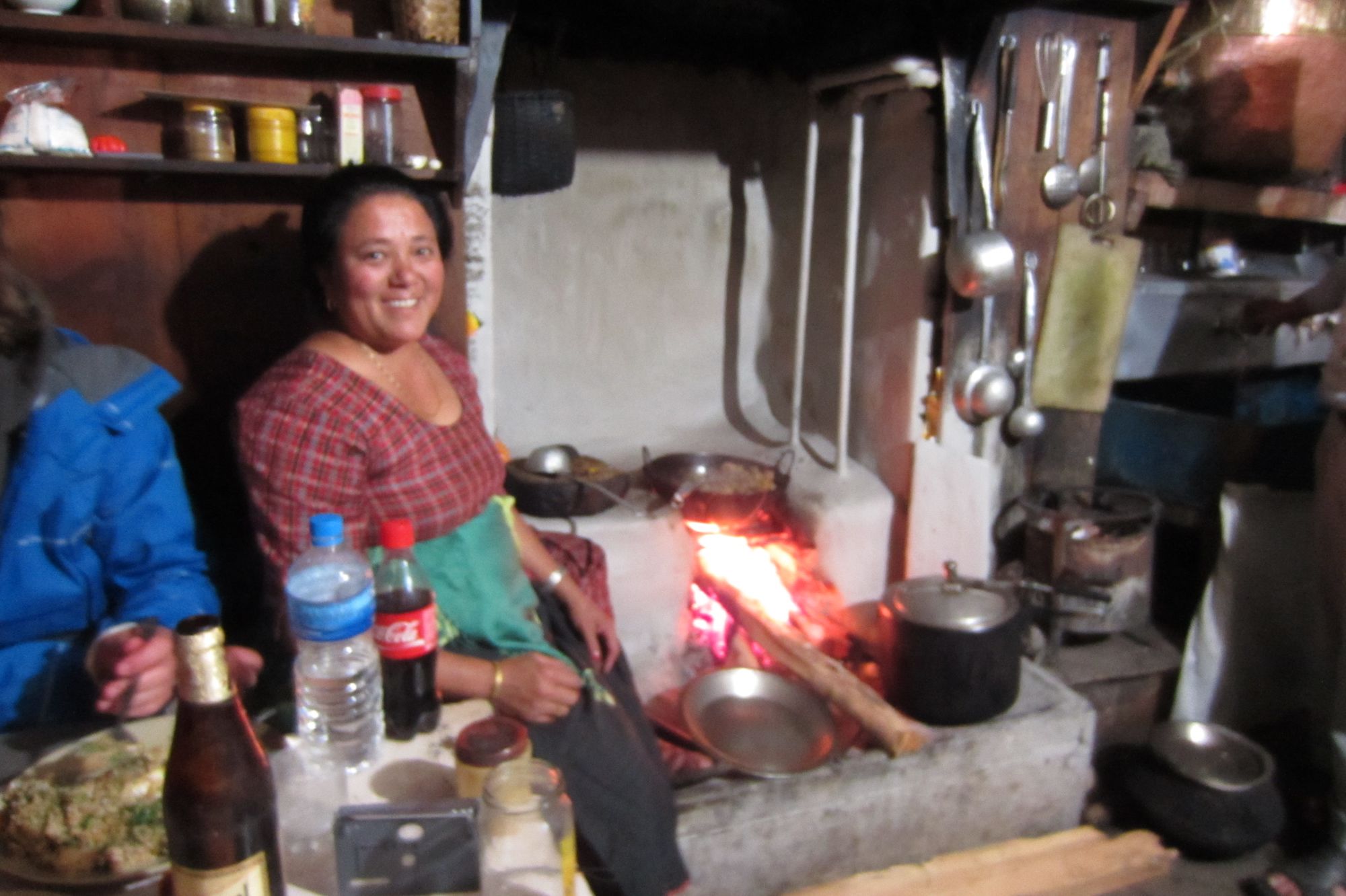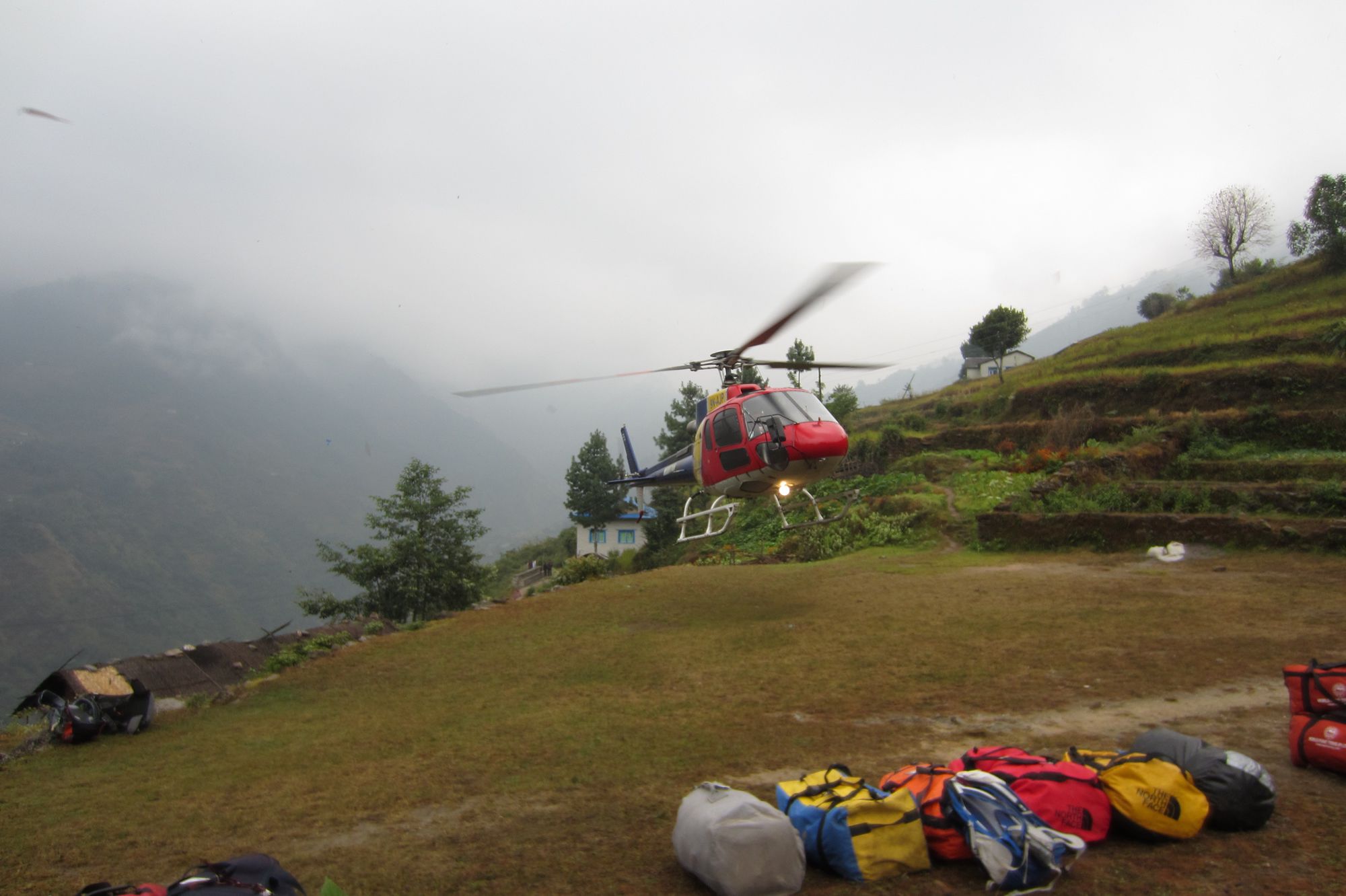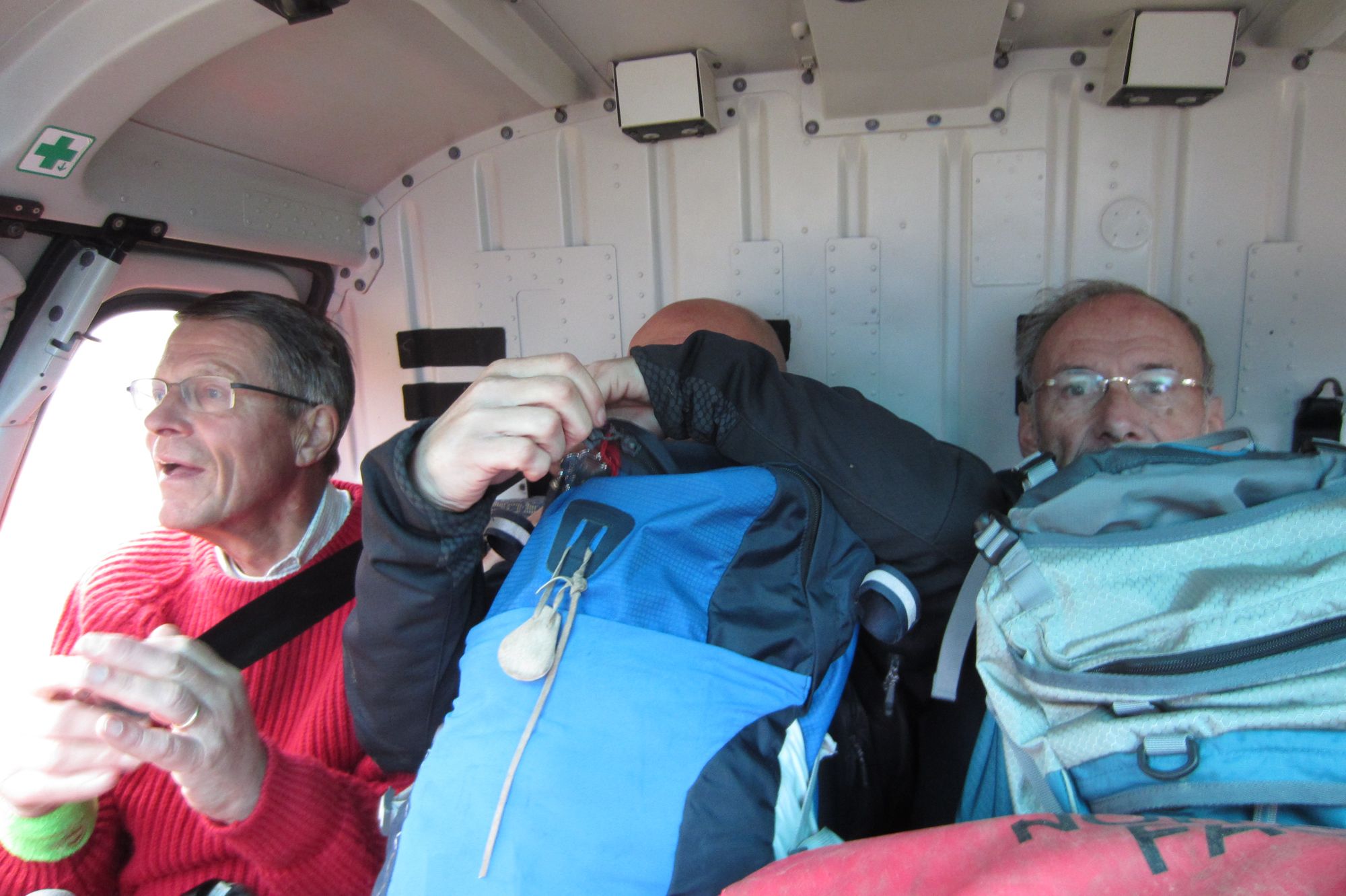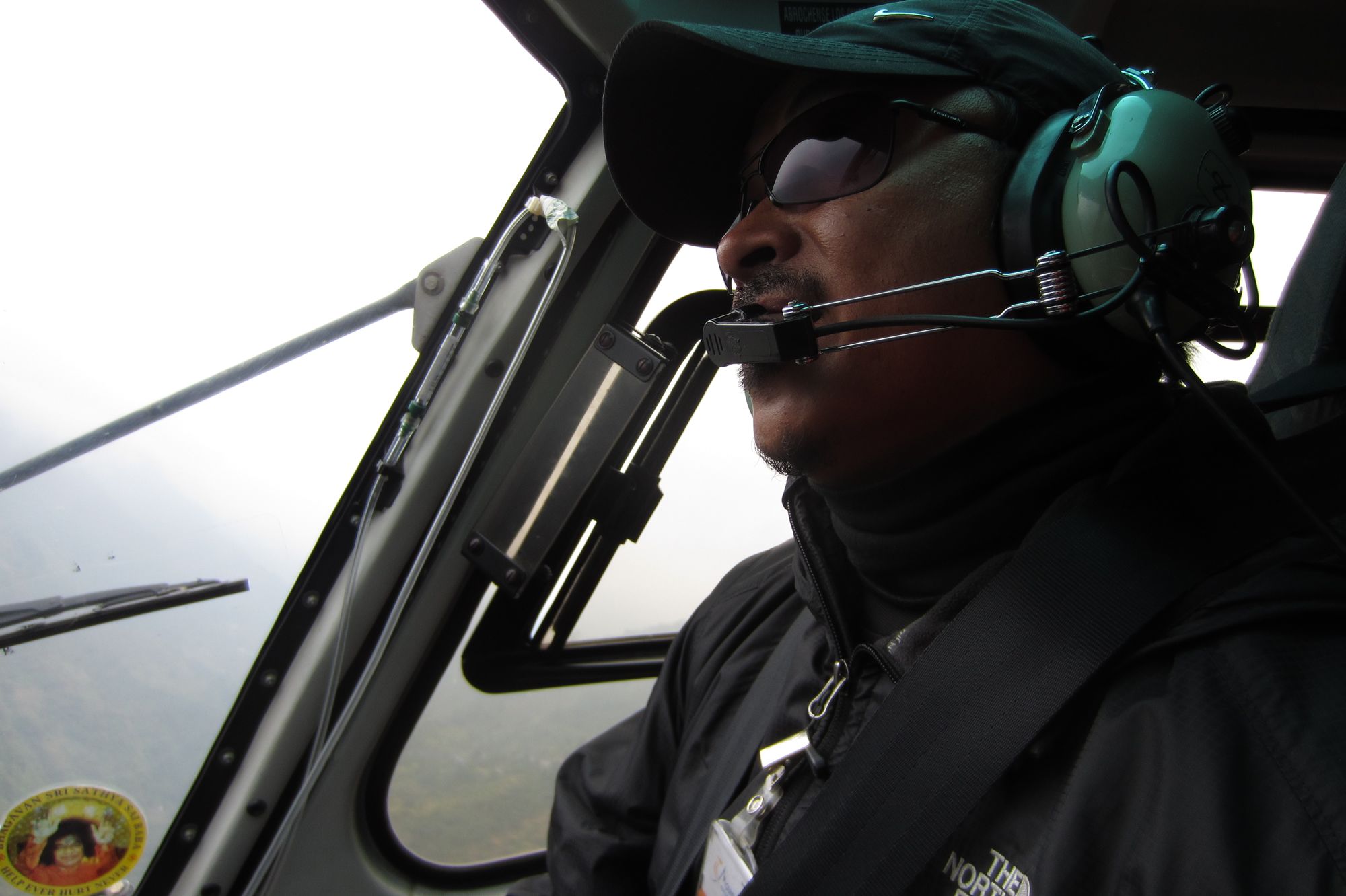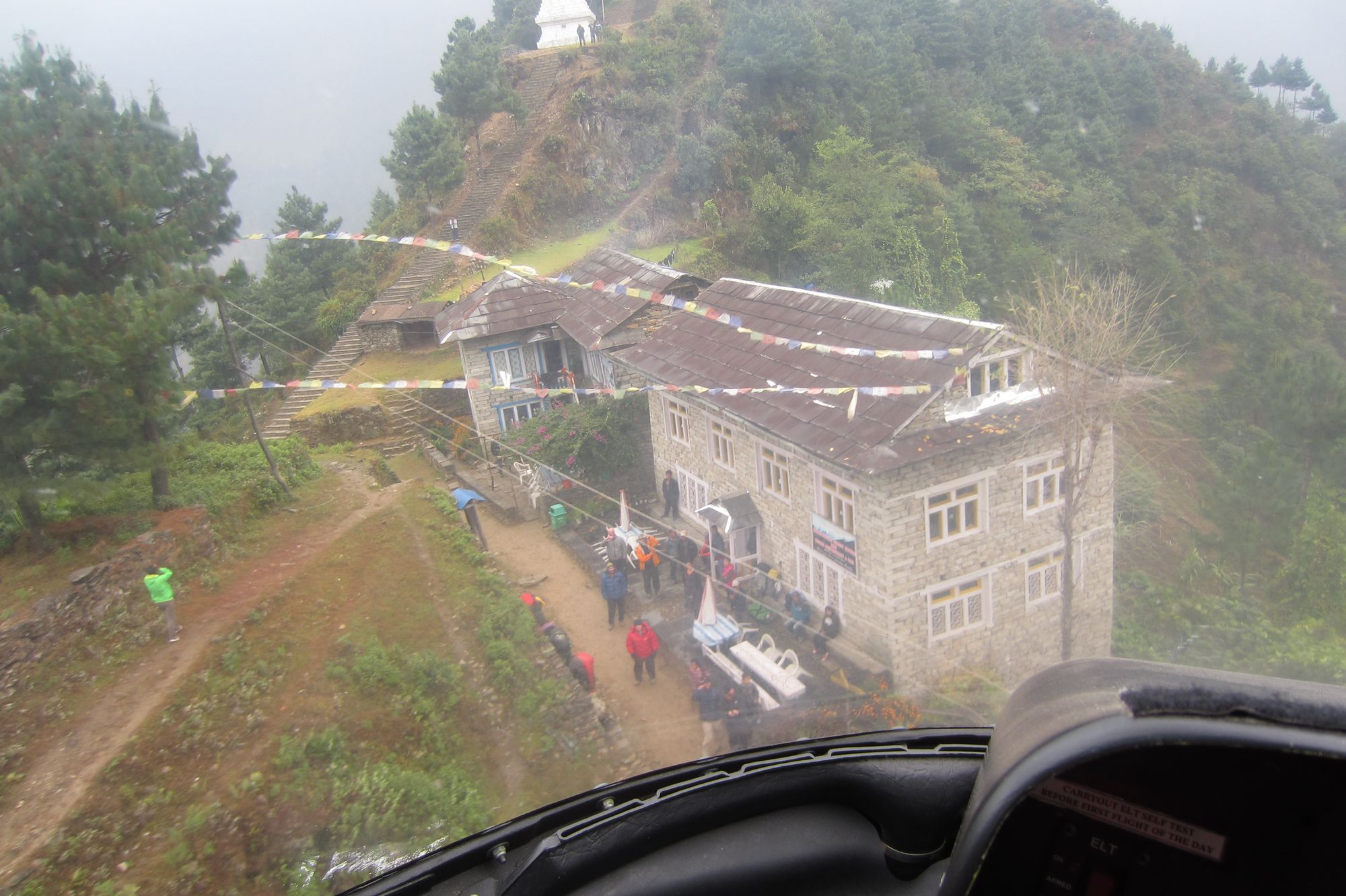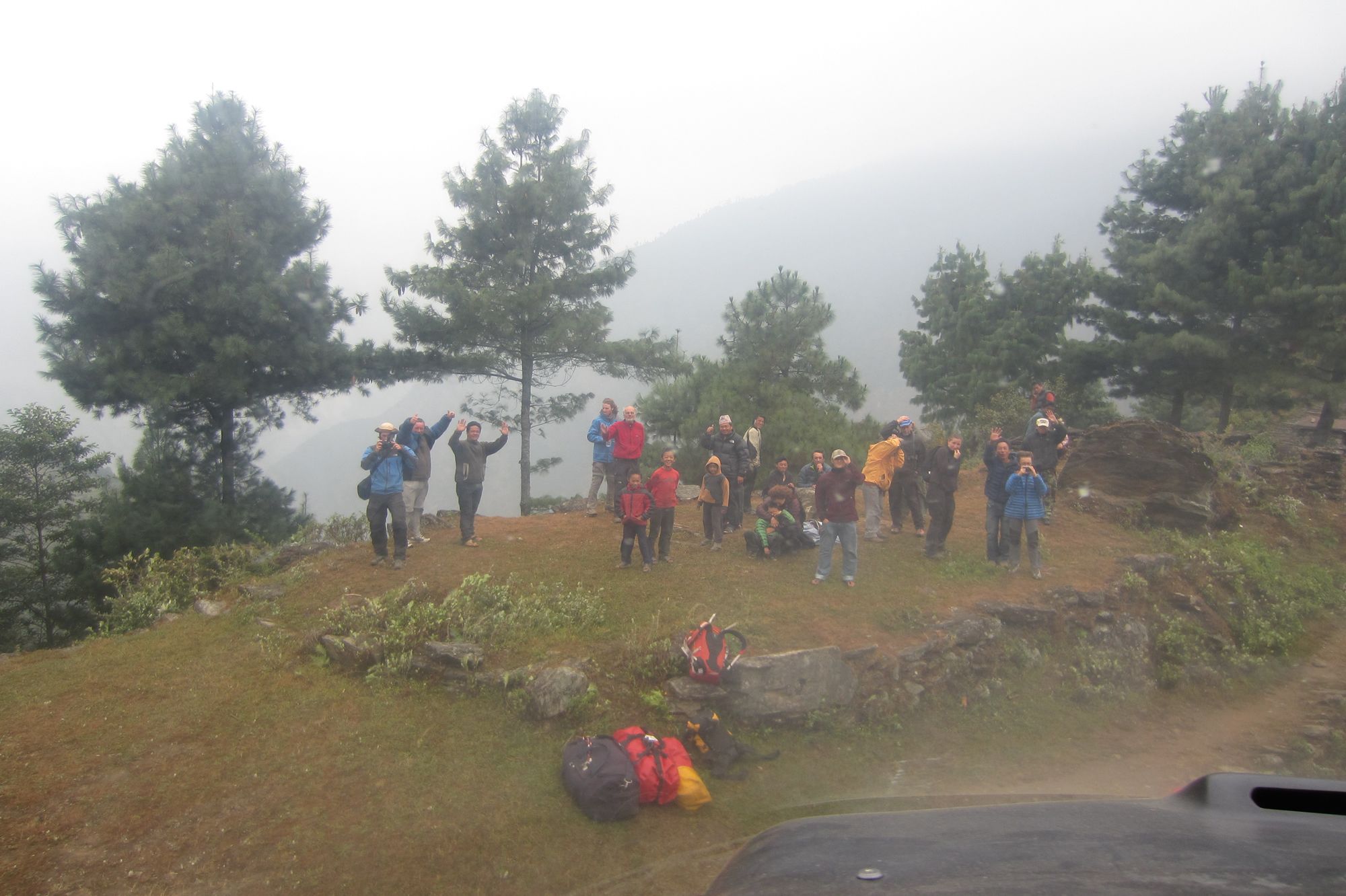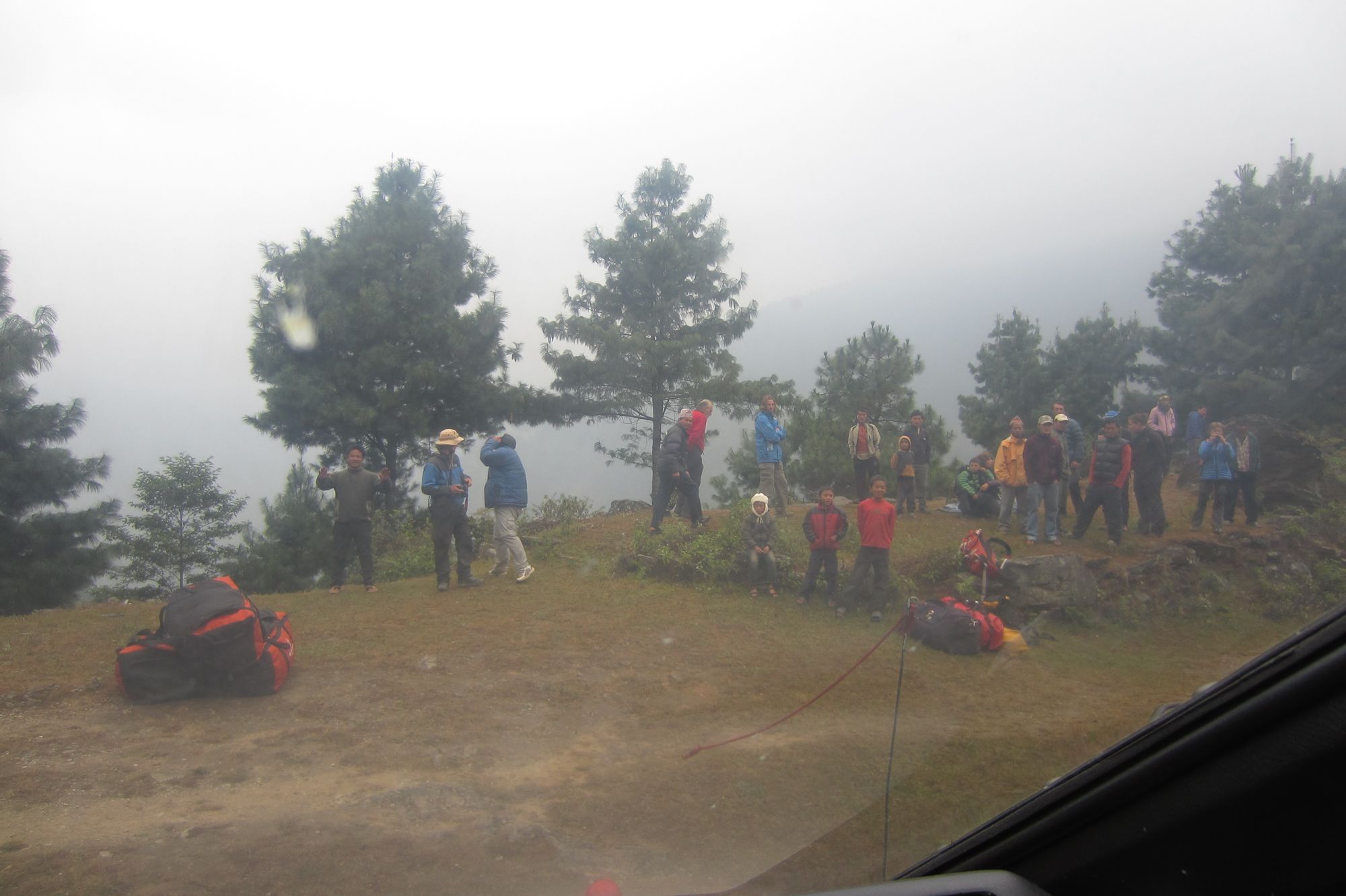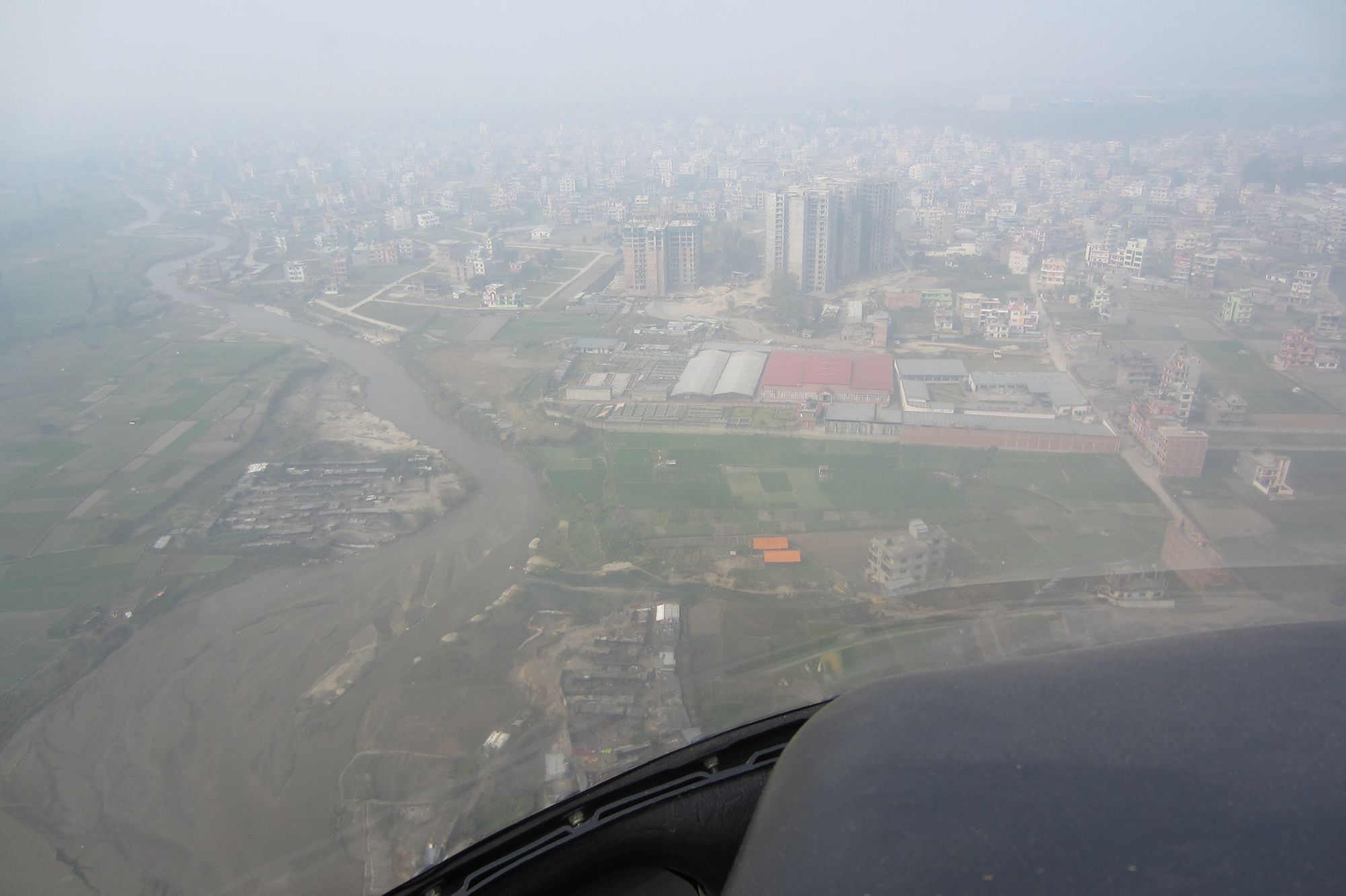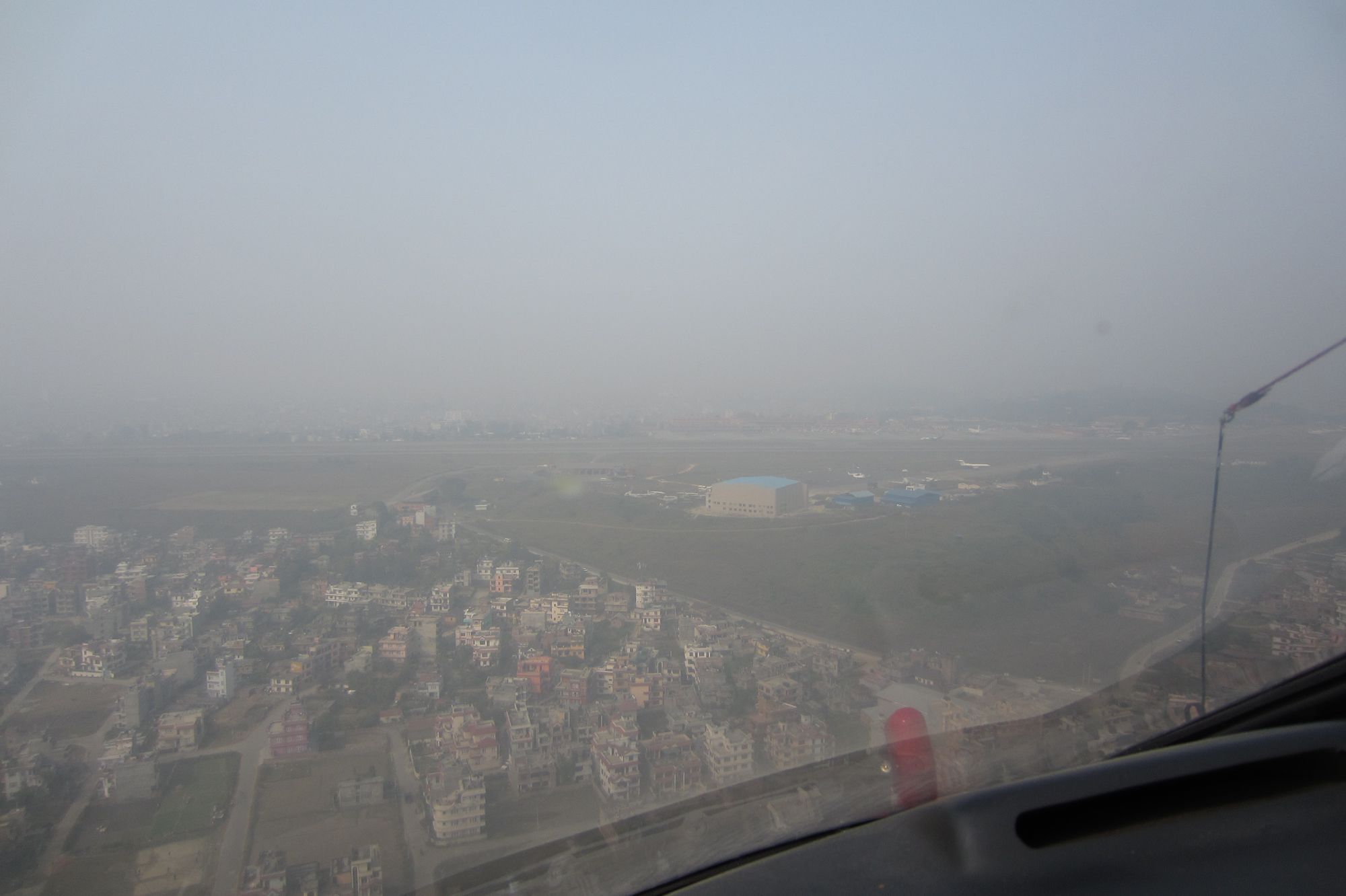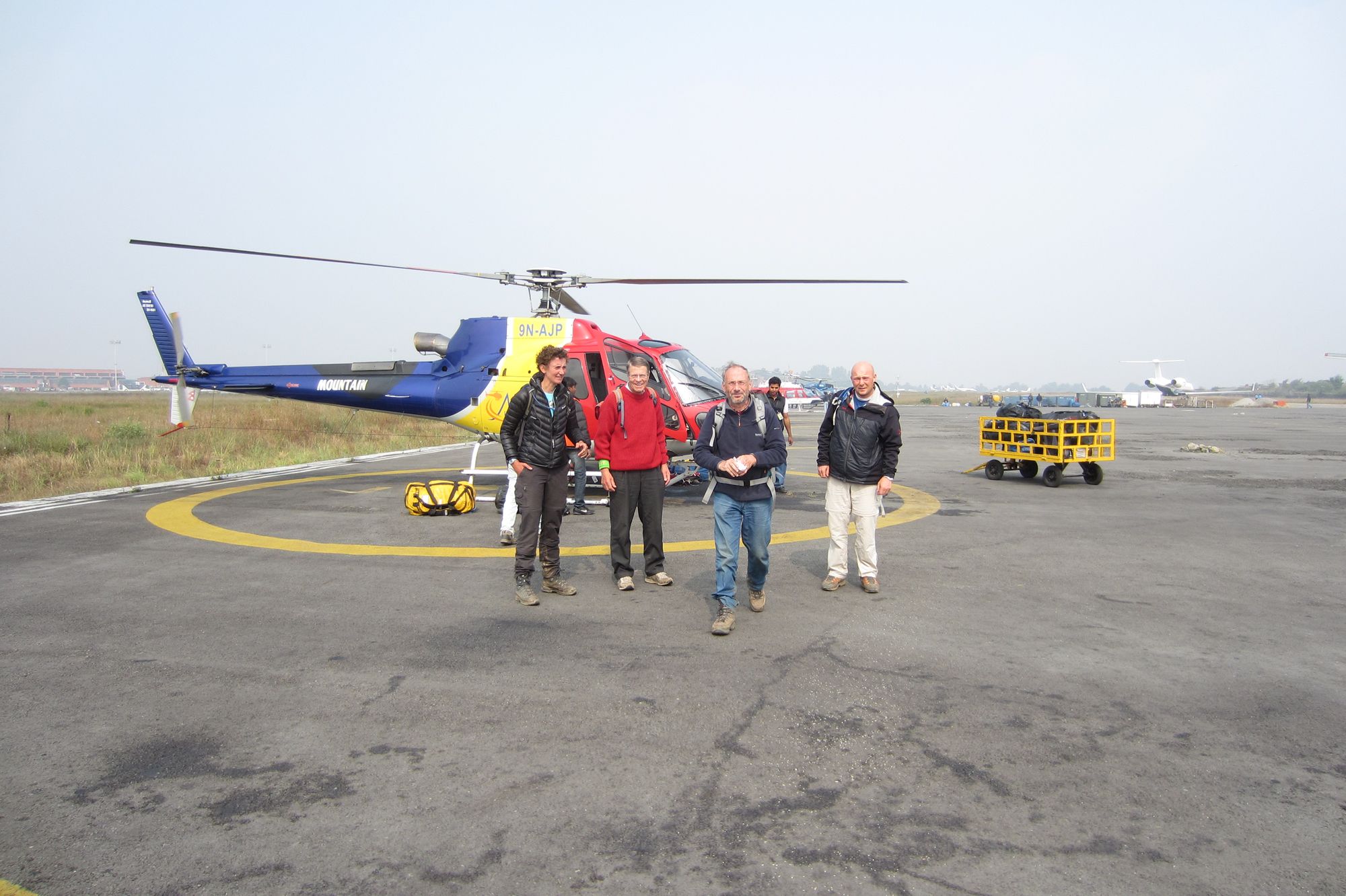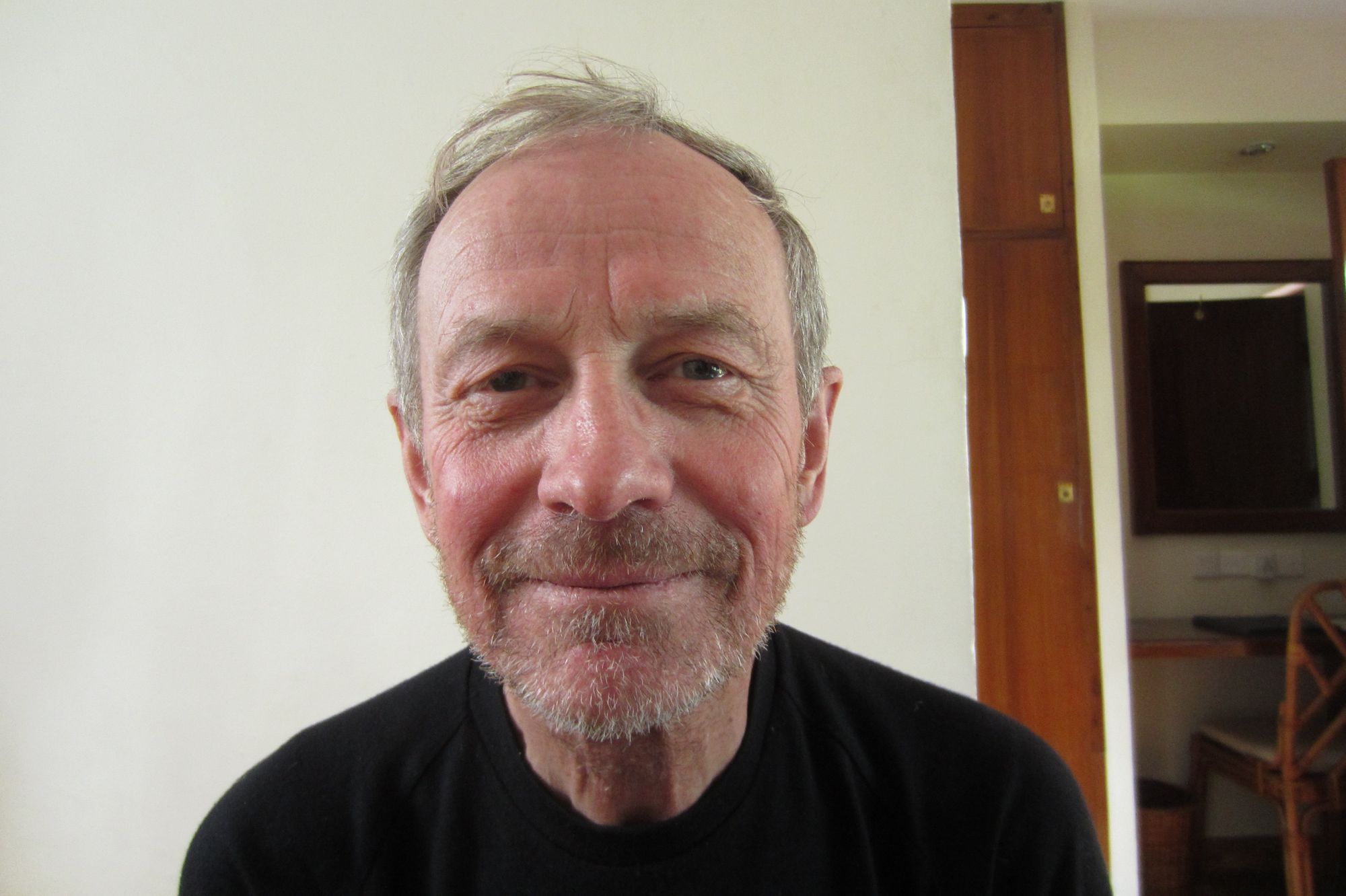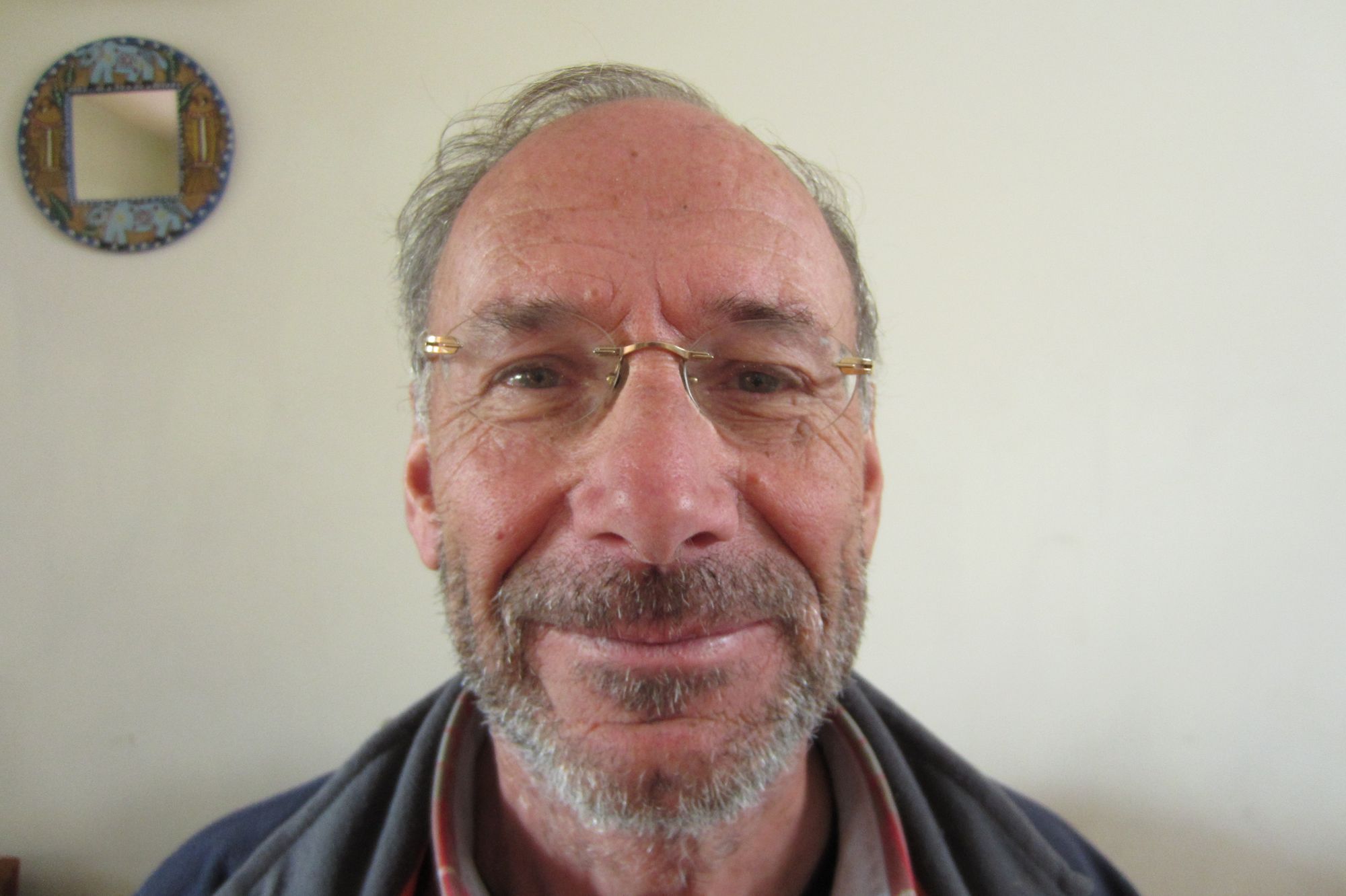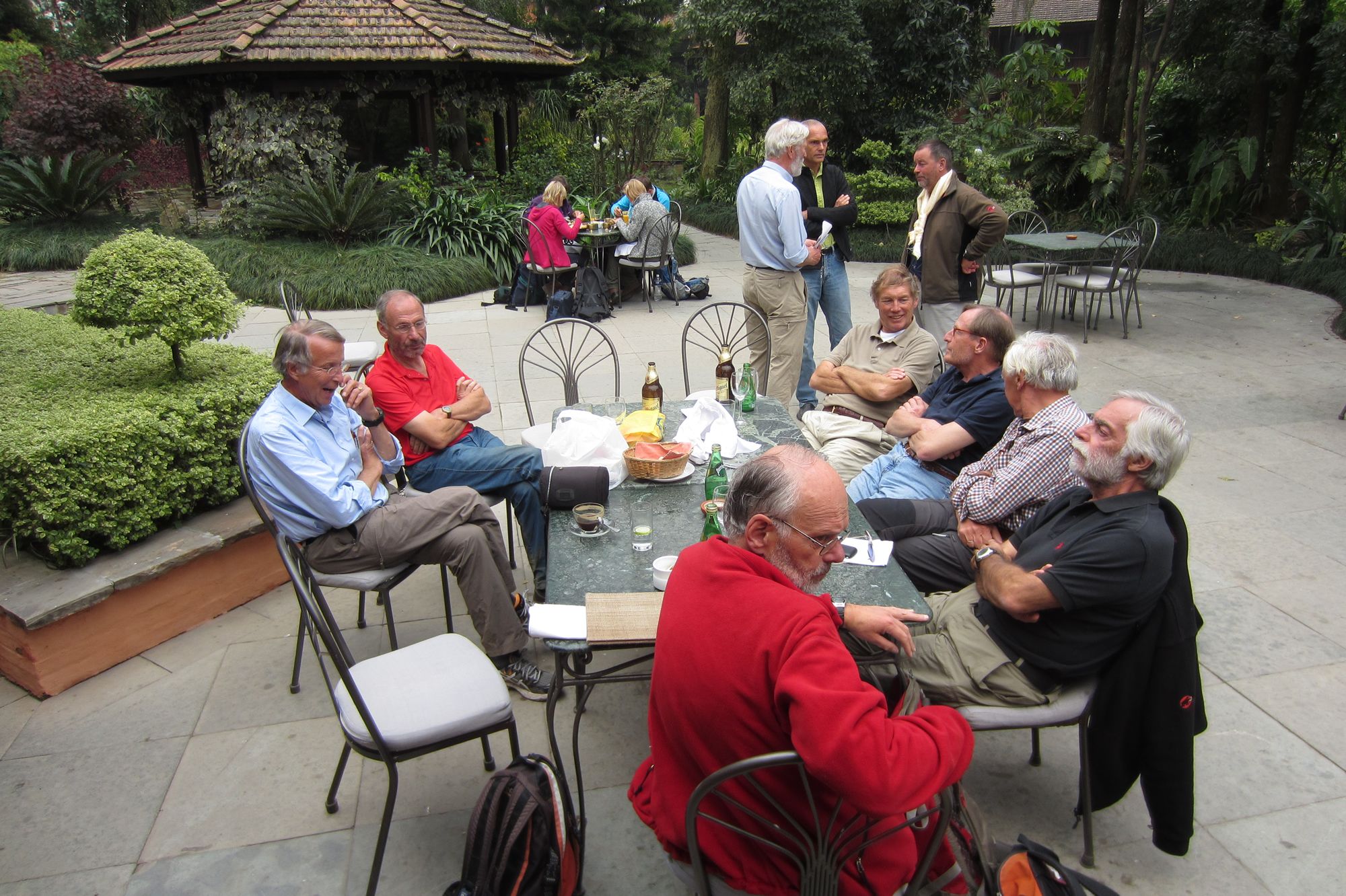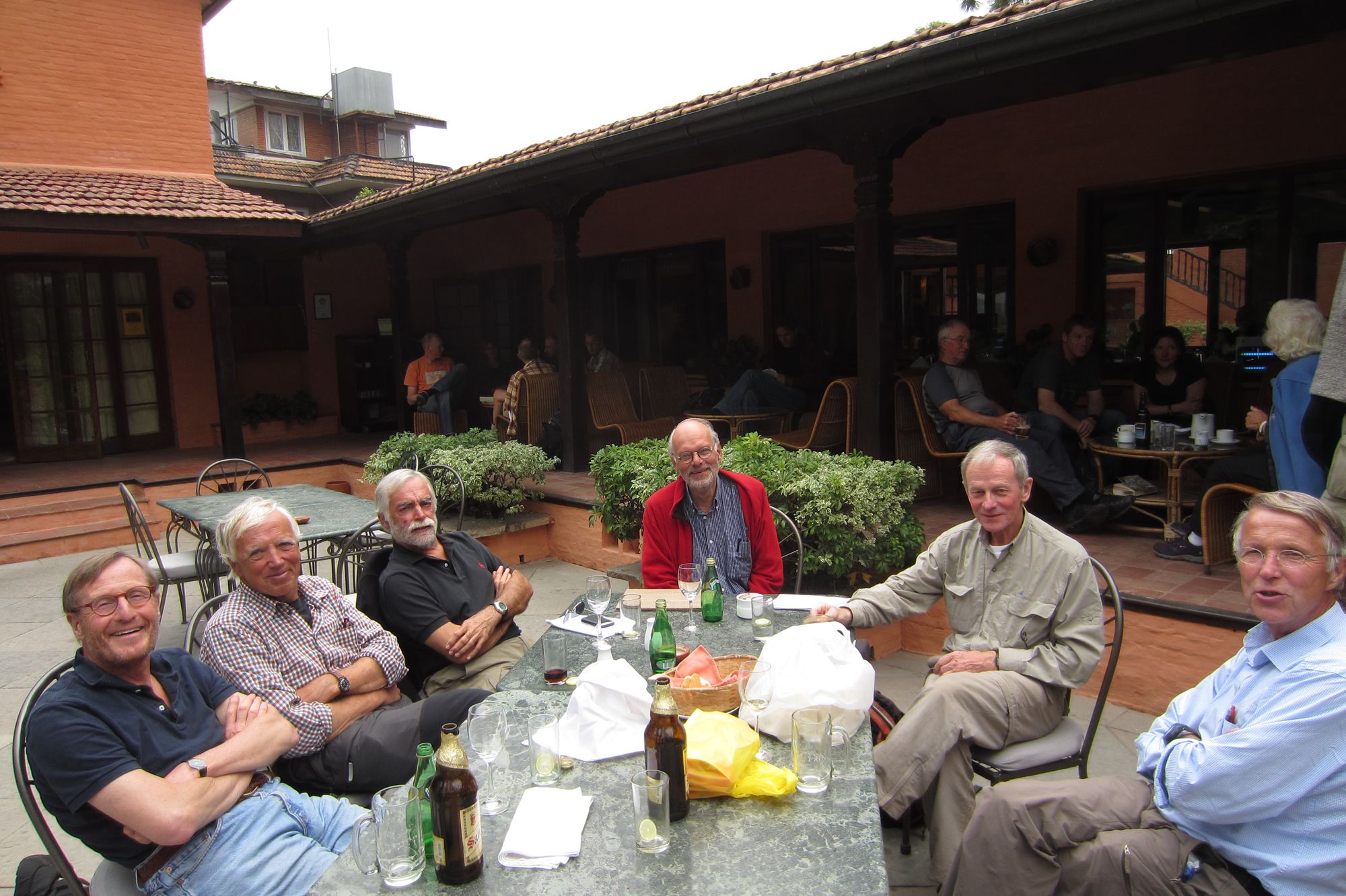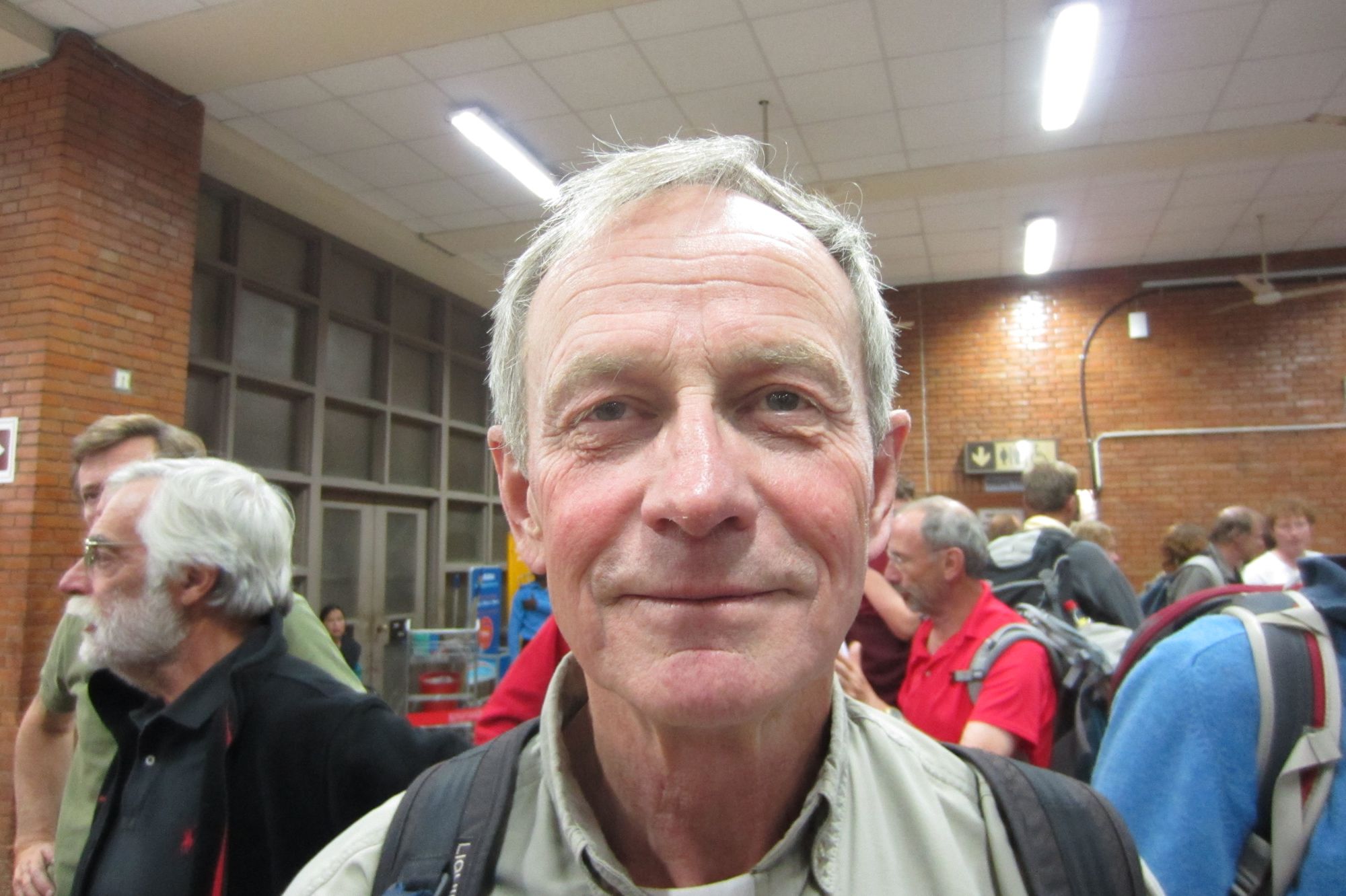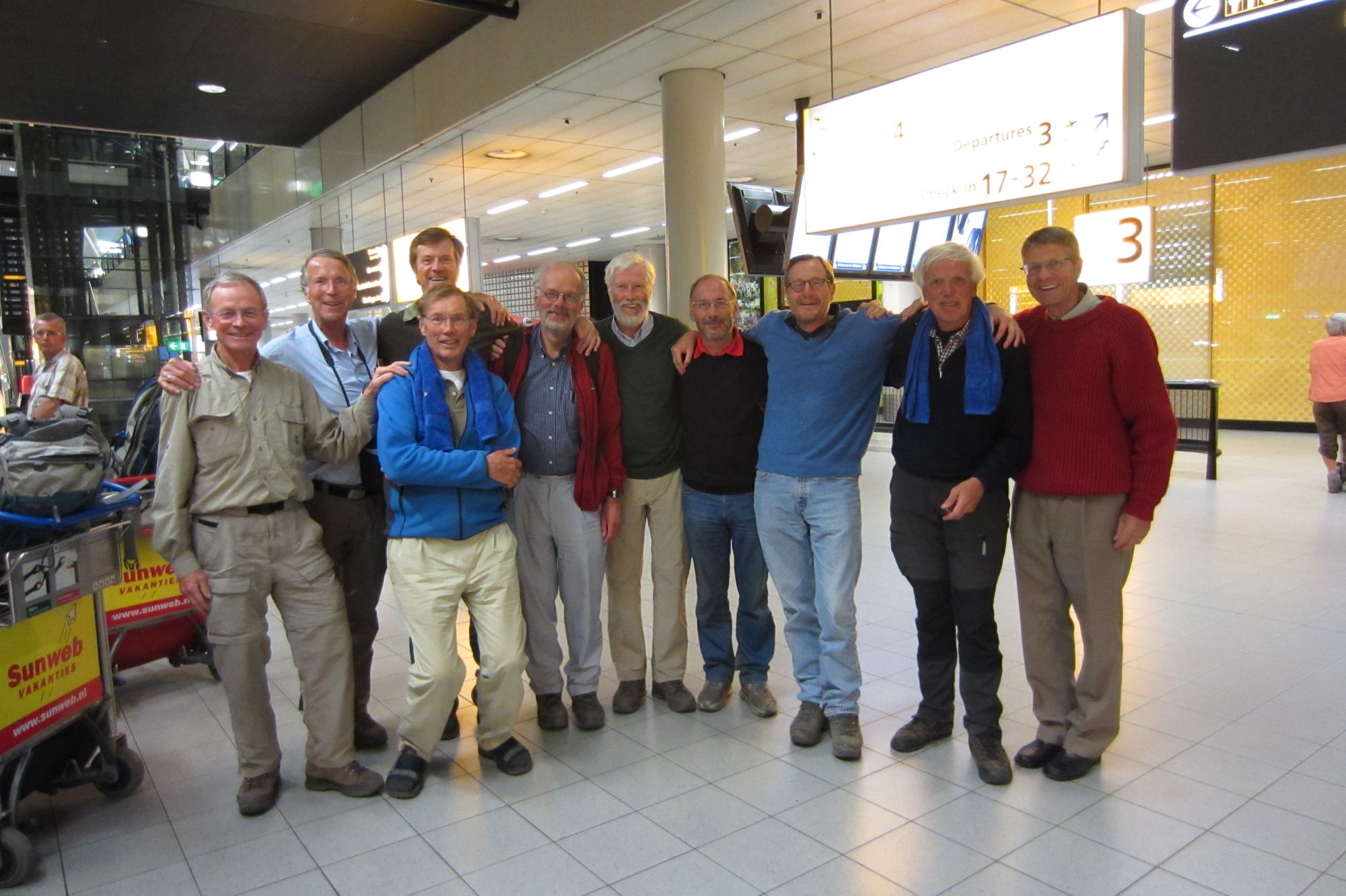MERA PEAK NEPAL
Period: 15 oktober - 6 november 2011.
Partcipants: Evert Jan Broekers, Maarten Broekers, Peter Broekveldt, Gerard Carriere, Jan Eisenloeffel, Richard Hauer, Pim Kamphuisen, Hans Lotgering, Peter Tordoir, Nico Westpalm van Hoorn, Johannes Wouters.
Trek Leader: René de Bos (Snow Leopard)
Friday, Oct. 14 to Sunday, Oct. 18: travelling to, in and around Kathmandu, how we can’t fly out to Luglha and do get there eventually
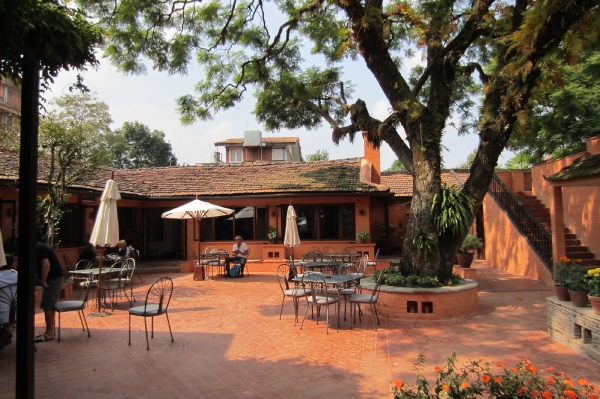 Late Friday night we all meet at Schiphol airport. Some of the group have known each other for a long time and have had previous alpine adventures together. Others, as I, are new to the group and sme have just recently practiced glacier walking techniques in the Alps. It is a diverse group, 59 to 69 years of age, bound together by an intricate web of A knows B and C knows D who knows A who knows C. The flight, with a refueling stop in Bahrein, arrives on schedule in Kathmandu, we are met by a hotel employee and spirited in a waiting taxi van through the chaotic traffic to the Summit Hotel situated on the southern side of the downtown core, just across the river. True to Nepali nature we are met in an extremely friendly manner and put up in rooms also excellent by he way) of the neighboring Greenwich Village Hotel as the rooms we had booked only many months ago had been given to other guests. The evening is spent on the Summit Hotel terrace under the tropical night sky enjoying each others company, drinks and dinner. The next morning after breakfast there is a briefing meeting. Also all items only needed for the ascent to the top of Mera Peak are packed separately to be separately carried up to Khare from where we will climb in three days to the top and return to.
Late Friday night we all meet at Schiphol airport. Some of the group have known each other for a long time and have had previous alpine adventures together. Others, as I, are new to the group and sme have just recently practiced glacier walking techniques in the Alps. It is a diverse group, 59 to 69 years of age, bound together by an intricate web of A knows B and C knows D who knows A who knows C. The flight, with a refueling stop in Bahrein, arrives on schedule in Kathmandu, we are met by a hotel employee and spirited in a waiting taxi van through the chaotic traffic to the Summit Hotel situated on the southern side of the downtown core, just across the river. True to Nepali nature we are met in an extremely friendly manner and put up in rooms also excellent by he way) of the neighboring Greenwich Village Hotel as the rooms we had booked only many months ago had been given to other guests. The evening is spent on the Summit Hotel terrace under the tropical night sky enjoying each others company, drinks and dinner. The next morning after breakfast there is a briefing meeting. Also all items only needed for the ascent to the top of Mera Peak are packed separately to be separately carried up to Khare from where we will climb in three days to the top and return to.
The rest of Sunday is spent in varying touristic activities, later in the evening capped by a delicious Thai dinner downtown. Back in the Summit Hotel, we received our rooms!, things are packed and readied for an early departure in the morning. We wake up at 7:00 and after a hasty breakfast go to the airport to catch, as we had been told, one of the early flights to Luglha. Chaos and pandemonium at the airport but Rene, our tour leader has “his man in Kathmandu” who knows all the ins and outs of the airport and will arrange everything for us. First thing we hear is that the flights to Luglha have been cancelled for the time being as the airfield in Luglha is shrouded in fog and clouds, impossible to land.
We go ahead, hopefully, to weigh our luggage and after up- and un-loading the scales several times, we finally agree with the officials on the weight which is in excess of the allowable. We pay what is due the amount not being more than €10 p.p. anyhow. Then the long wait starts, we get boarding tickets, they are cancelled again, we get boarding tickets a second time, our spirits and expectations rise but again all for nothing. We hear that planes are coming back from Lukhla without having been able to land and at the end of the day we return to the Summit Hotel for drinks and dinner and a bed for the night.
The next morning, Tuesday Oct. 18, we are a bit less rushed as flying conditions are not much improved and full of new hope we leave for the airport. There we hear from “our man in Kathmandu” that we are on the fourth flight out and 100% sure we will leave today. Time passes by but flights to Lukhla are not taking off. We hear that our luggage with the gear for Khare did leave yesterday. We start discussing alternative tours because if we don’t get a flight out today we will not have enough time left for the Mera Peak ascent! We have a chicken-fried-rice lunch in the cafeteria, lounge in some lazy chairs and then all of a sudden we hear that our plane is waiting for us and we rush to he gate, board a bus, get on an airplane, get off the plane and onto the bus again, then we see our luggage being loaded in another plane and we can board too!
Half an hour later we land successfully on the tricky airstrip of Luglha and walk up to Tara Lodge who’s owner is the Llama of Luglha. Tea is served on the terrace, our tents are set up,we take a walk through Luglha and dinner consisting of dahl, rice and nice tasting pieces of meat. After dinner the crew that will do everything for us in the next three weeks is introduced to us: the Nepalese expedition leader (sidar) Pasang Sherpa, the cook Shukra with his kitchen boys TejBahadur, Ganish and Arjun (all Tamang), the mountaineering guides Dakipa Dawa Sherpa and Sonong Sherpa. The porters apparently don’t have enough status to be introduced to us although they probably have physically the heaviest task for the next weeks. We are impressed with the fact that Pasang has been five times and Dakipa three times on top of Everest! We spend some more time around the stove in our dining room and at about 10 pm retire to our tents and try to keep warm in our sleeping bags with our eyes closed.
Wed. Oct. 19 to Thur. Oct. 27: climbing gradually 2060 m from Lukhla (2840 m) via Poyan (2800 m), Pangkongma (2930 m), Camp at 3745 m, Tulikharkha (4220 m), Kote (3600 m),Tangnag (4290 m), to Khare (4900 m).
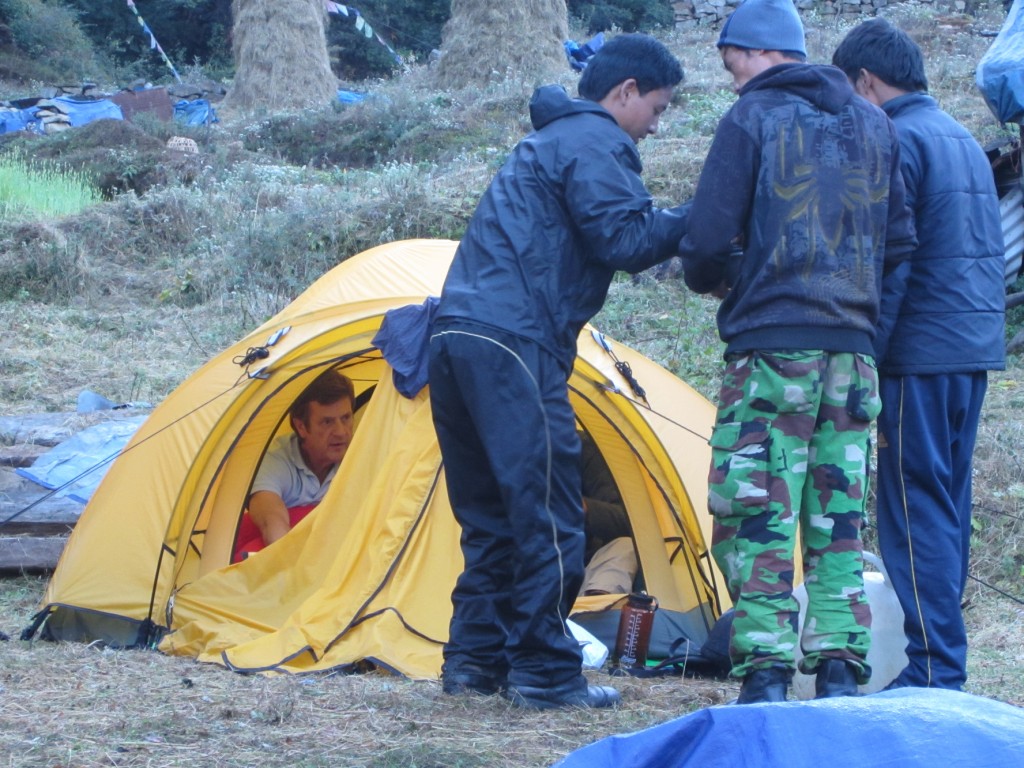
At 6:15 the morning ritual starts: the tent fly is zipped open, the kitchen boys appear, “good morning sir” the enthusiastic and happy voice of Tej announces, “had a good night sir, black tea sir? sugar sir?” and you take hold of a steaming hot metal mug politely pushed in your hands which you immediately put on the ground so as not to burn your fingers even more. Putting on gloves when woken up this friendly and insistent manner way is the answer to this I learn. While you are trying to cope with waking up and the first careful sips of this welcome morning brew, he is there again: “warm washing water sir?” and a bowl with water of the exact right temperature is deposited just outside the tent. You wash, dress, get your stuff packed and put it outside the tent which shortly after is packed for transport by the porters to this evenings camping spot. We have breakfast and at 8:00 we are on our way.
Today that will be Poyan which at a height of 2800 m lies at about the same height as Lukhla. An easy day’s hike the uninformed would think but nothing is less true. In this part of Nepal nothing is flat and during our seven hour hike we descend a total of 850 m and climb about 800 m. This is called “Nepalese flat” and we will see a lot of this in the next week to Khare with daily total climbing anywhere from 480 to 1000 m and total descent between 5 to 1100 m. We have a beautiful first day hike, enjoy the vistas, the foot traffic on the trail, admire and are amazed at the loads the various porters we see carry, and important for us, we can get used to walking up and down steep slopes for many hours. Arriving at Poyan at about 3 pm we are greeted with hot tea as we will be in the weeks to come. We rest a bit in our tents, have dinner in the lodge where we are camped and not long after sundown we retire for the night.
As we have lost two days due to the cancelled flights to Lukhla, our tour leader Rene proposes to shorten our route to Khare by one day and on the return from Khare another day. This means that on the way up we will take a more direct route to Tulikharkha and go through a first exposure to above 4000 m a day earlier. On the way back, after the Mera Peak climb and descent to Khare, we will walk a long day directly to Kote. This schedule will still provide us with a rest/acclimatization day at Tangnag (4290 m) and one at Khare (4900 m) but we cannot have any more days lost due to inclement weather or other causes. The second day to Pangkongma is much like the first day, beautiful weather in the morning and as the day progresses increasing cloudiness and in the afternoon, when the sun disappears behind the hills, it feels rather cold. Richard has had a difficult day due to a gastro-intestinal infection and it was a tough day for him. The others in the group are generally fine although some have problems finding their walking rhythm and perhaps with the elevation we are at.
The porters are a bit late and it is dark by the time we can put on extra clothing and our tents are set up. Dinner is served promptly at 6:30 in a nice ritual manner with a clear hierarchy: we are all seated on benches on three sides of the room, which usually has a wood burning stove in the middle, behind broad tables, the kitchen boys carry in the plates, cutlery and pans with food, the Sherpa’s serve the dinner in a very polite manner under the watchful eye of the lead Sherpa (Sirdar), the cook appears after a while and everybody looks on while we are enjoying our meal and see to it that we have enough. Tea coffee or hot chocolate is offered and after having enquired weather we had enjoyed the meal they excuse themselves for the evening. The third day out starts with in a steady rain, a visit to the monastery of Pangkongma, a steady climb via Pangkongma La, up the steep ridge of the Zattara Danda, through a beautiful forest of moss covered pine trees, huge rhododendrons, bamboo clumps, fallen rotting moss covered dead trees, to finally arrive at our camp at 3745 m just under the tree line. It is a small area where we can only just fit in our tents. There is no water available so a few porters are sent down a one hour hike to fetch water and lug it uphill for two hours back to our camp! Richard has had an extremely difficult day and only through sheer willpower managed to get up the steep ascent to late in the afternoon finally in our camp.
Our doctor Johannes has taken such good care of him that by the next morning Richard feels up to the day’s trials. That day we climb to 4400 m before descending down to Tulikharkha at 4220 m. We are now clearly above the tree line in rough high alpine country, clouds and mist blows around us, light snow and hail occasionally falls upon us, the trail is slippery at times. Our tents at Tulikharkha are covered with light snow and ice. A third Sherpa, Chongwha, joins us here.
It is cold in the morning when we wake up at 6:30 to a bright morning, our ice covered tents still in the shadow, but once the first sun rays reach us it warms up considerably to a very nice hiking temperature. After about an hours hike at the Perbu La we can for the first time look into the Hinku Valley and see the high white mountains peaks behind which our goal, Mera Peak, is hiding for now but which we will see before the day is over. Behind us in the bright morning sky we see a helicopter struggling to gain height in order to pick up a group in Tulikharkha. The next few days we will see helis daily on rescue missions to bring down people with acute height illness.
Soon the trail goes steep downward along a creek back into the rhododendrons and forest, it becomes quite warm. Once in the valley we follow the wild mountain river upstream through beautiful wooded terrain to Kote. A pre-dinner bath in the icy cold water washes away the sweat of the day. This elicits cries “ooh, they must be Swedes” from a group of English ladies, not knowing (then) that we are from the country on the other side of the North Sea from them.
The next few days up to Khare the weather stays stable and good: bright cold mornings, as the day progresses more cloud and wind develops, cold mist surrounds us at the end of the day, after dinner it is often clear again. In 1999 the Sabaltsho Lake above Tangnag broke suddenly through its end moraine emptying itself in a devastating burst of water, rock and earth into the valley below wiping out the lower lying part of Tangnag, depositing boulders everywhere and transforming the valley into the rugged terrain through which we now walk.
In Tangnag Gerard and Pim decide to abandon the attempt to go up Mera Peak due to height related considerations. They will return to Lukhla via the route we will also take back and from there hike up to Namche Bazar to eventually meet up with us again for the flight back to Kathmandu. The others in the group are doing fine, the biggest nuisance being a breathing problem, called Cheynes-Stokes breathing, at night: as you doze off and your breathing slows down, suddenly you wake up with a feeling of suffocation caused by a lack of oxygen with a fear to go to sleep as a result. In the end sheer exhaustion and a light sleeping pill causes sleep to come. Luckily the nights are long and you do get sufficient sleep to wake up fresh and chipper in the morning.
As we go higher and the nightly temperature dips to well below zero on the clear nights we are experiencing I have problems staying warm at night. My sleeping bag is a North Face Chamoix good for -20 C, purchased in the mid 70’s and frequently used for (Canadian) winter camping until 1988 for the annual Canadian Ski Marathon Coureur du Bois gold event. Although I have kept the bag well stored I do wonder if the down has not lost its loft (and insulating properties) over the years. That fear will prove to be unfounded: after drying the bag well outside, regularly fluffing up the down to prevent clumping and ensure good spread, use of the bivouac cover to prevent direct condensation on the bag and lastly making sure to pull the hood tight to prevent heat loss from head and shoulders, I will not feel cold in the coming nights. Pulling the hood tight does require some willpower as the C-S breathing makes you want to open and loosen everything around neck and chest!
Later in the morning of our rest day at Tangnag, Nico, Johannes and I walk up about an hour to 4600 m to get some exercise today. From this height we are just able to see in the distance Khare, a small orange speck in the distance, our goal for tomorrow. Back in camp I do some laundry near a creek, tend my feet, read a bit and later in the afternoon we are all together in the lodge run by a very nice family with three young daughters. They are normally at school in Lukhla and for a few vacation days are at home to “help out mother” they tell us.
The 600 m hike to Khare is an easy walk up through a broad valley bordered by moraines with in front and up from us the Mera Glacier visible. To the right and south an ice covered nameless mountain (6255 m) and Mera Peak North (6124 m) tower high above us. Twice we see huge avalanches crash downward. To the left a bare stony south slope rises up to 5641 m. Dig Kharka in the middle of this high alpine landscape is nothing more than a teahouse shelter of a roofed over pile of stones but they serve tea and cookies! Up a steep hill and then we see Khare clearly. It turns out to be a rather large lively village with lodges, cafes, cooking tents and many terraces for tent camps. We get a spot at the upper part to the right for the next two days.
The rest day is used to acclimatize to the altitude (4900 m) and get ourselves ready and the equipment sorted out for our ascent to Mera Peak in the next 3 days. The heavy high altitude boots, crampons, ice picks brought to Khare directly from Lukhla will be brought up one step further to Base Camp. Tomorrow we will still use our hiking boots. To save on weight for the Porters only gear needed for the next three days is to go along and we will all share tents. I am able to locate and purchase a wide capped one liter bottle so as not to have to leave the relatively warm tent at night for the frequently necessary “answer to a call of nature”.
As soon as the sun disappears behind the peaks it becomes very cold and we gather in the lodge around a big square table filling up the whole room under which a stove burns. By putting the carpets draped over the table on your lap you keep the lower body parts nice and warm, what a finding! Pasang has scored 5 kg. chicken that came up with a rescue helicopter earlier today and Shukra made a delicious meal of that with french fries (served cold again, we wonder if this is the way they are eaten in Nepal) and rice. We are well prepared for the next three days in which we will attempt to make it up to Mera Peak and come back to Khare when we retire to our icy tents at 8 pm.
Fri. October 28: Khare - Base Camp.
Tea and washing water is served promptly at 7:30, dress, pack your gear, 8:30 breakfast and 9:30 we are on our way. At the small teahouse just under the Mera Glacier we take a short break and then it goes steeply up the foot of the glacier. On advice of Pasang we walk on our hiking boots (Evert Jan even on his running shoes!) but soon we walk on a trampled snow path and it is pretty slippery going, crampons would have been welcome. Once on the glacier it becomes considerably flatter to Mera La (5400 m). Once there we descend steeply about 40 m on the east side to arrive at 12:30 at the Base Camp (5364 m). The weather has changed to become grey and cold.
The tents are pitched on the few available horizontal spots in the snow, we get tea, eat our pack lunch, get soup, all in our tents, today and tomorrow there will not be a communal eating tent. Light snow and hail is falling. We rest a bit in our sleeping bags and later dinner is served and eaten in our tents as it is too cold to stay long outside exposed to wind and snow. Weather: a.m. sunny, then increasing cloud with later on snow and hail, light winds.
Vertical: Khare is at 4900 m, Mera La at 5400 m, Base Camp at 5364 m or + 464 m. My height meter indicates up 506 m and down 51 m.
Sat. October 29: Base Camp – High Camp.
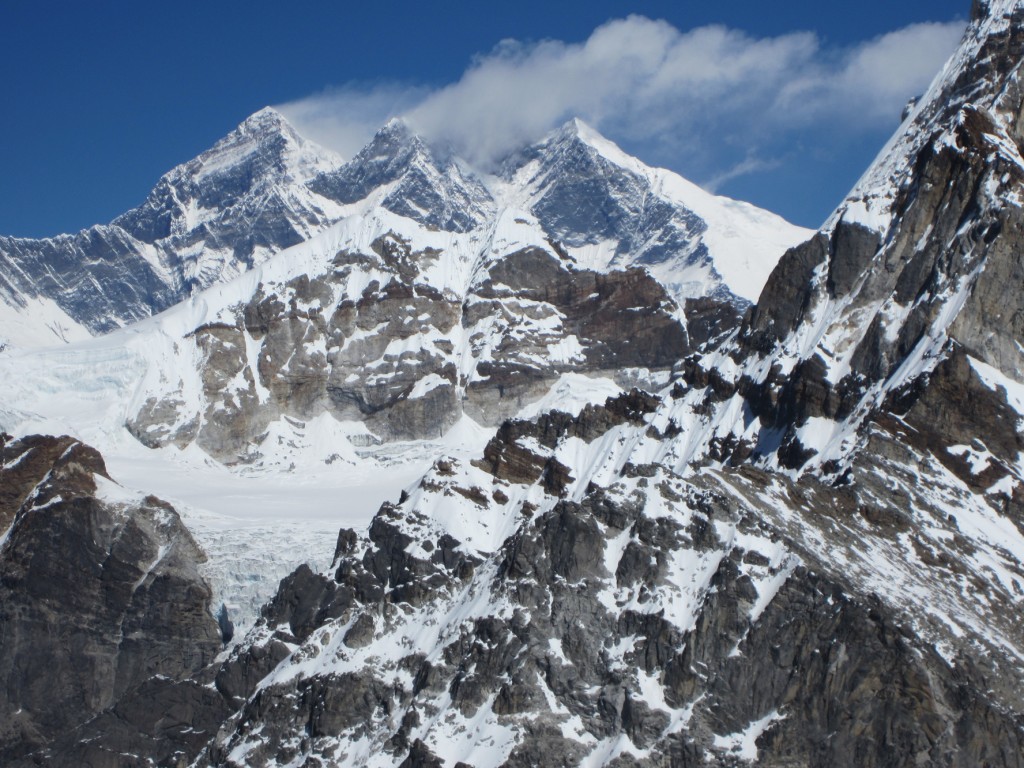
We are camped on the eastside of Mera La and benefit from the warm sunrays which shine upon us at 6:30, a welcome change from the previous days to be woken up in a warm tent. I get up right away to scout our incredible surroundings on this bright morning. I have had a relatively good night and am rested enough after what I call a “wakeful sleep”, I had less problems with C-S breathing, resting on your back seems to help. And I was sufficiently warm with the mummy bag hood well closed, in the bivouac sac which I also pulled well inside the hood at the chin so as to catch the moist exhaled breath thereby keeping the upper parts of the sleeping bag dry and therefore the insulating properties optimal. Keeping the down dry, not clumped but well spread, is important, therefore the first thing I do after having seen what there is to be seen is to spread out the bag in the warm morning sun, fluffing it up at regular intervals until it needs to be packed. Today the high altitude expedition boots go on and at 9:30 we are on our way via Mera La to High Camp which we can see in the distance above us. The Mera Glacier did not seem very steep as we were approaching it from Tangnag and Khare but it feels quite the opposite now. The ascent is steep at times; progress is a slow step by slow step process, a careful regulation of breathing at this height. The view is incredible in this bright weather; to the north Everest, Lothse and Nuptse and far away to the east Kangchenjunga, are prominently visible.
At around 11:30 we arrive at High Camp and see a few of our tents are up already. Pasang had sent a Sherpa and porter up early this morning to “claim” the few available tent sites on this exposed “eagles nest”. Maarten and I, we share the tent tonight, prepare ourselves for the early morning tomorrow by amongst some other things having our boots ready complete with crampons so we can just slip them on without much ado in the darkness. After dinner, served in the tents, the “light” is put out early for a good nights rest and to be ready for the ascent tomorrow.
Weather: beautiful clear and sunny day, light wind from the west aside from periodic very strong gusts in the afternoon and evening, excellent view.
Vertical: High Camp lies at 5750 m this is 416 m higher than Base Camp.
Sun. October 30: High Camp – Mera Peak – Khare.
Luckily we retired early yesterday, what else could you do when it’s dark and cold at 6:00 pm and you there is nowhere to go except your tent, because at 2:30 am the kitchen boys arrive with hot tea and porridge.It was (for me) a restless night, sporadic strong gusts made me think of Rene’s story of nearly being blown in the abyss next to us on his first time up here years ago, the C-S breathing problem and probably also the anticipation of the climax of this trip: would I be capable of reaching the top of Mera Peak? Soon after Maarten and I stand ready to go in the cloudless, cold, “thank Buddha” windless morning. Our clothing is checked (I’m wearing everything I have), the crampons are tightened once more by Dakipa. We are all deeply impressed by the diligent hard work of the 3 Sherpa’s helping us with our boots, crampons and clothing, to try and get us on the road, but it still takes until 4 before we get the sign to go.
With the first few steps I take I notice I can hardly breath; all the clothing I was forced to put on confines the chest too much. I take off my down jacket and, boy, does that ever feel good. I have lost quite a distance to the group but find my rhythm and slowly catch up to the stragglers and the group. After an hour there is enough daylight to extinguish the headlamp, also my fingers are nice and warm again. I have to repeat: it is an absolutely beautiful morning here on the glacier. To the left, the east, the previously velvety dark horizon is being colored by increasingly bright streaks and when at precisely 6:30 the first rays of the sun reach me I can feel their immediate warmth. Just like yesterday to High Camp I am again amazed by how steep the ascent is. From Khare the glacier seemed to rise so gently but the opposite is true; there are long sections I have to walk up sideways! Eventually I catch up with the “train” formed by Nico, Maarten, Johannes and Hans who walk up short sections relatively fast to then stop to catch their breath. That rhythm is not to my liking; I prefer a steady pace with, depending on the steepness, 2 to 5 second pauses between steps to regulate breathing. I notice that I catch up to the “train” when it pauses and have to stop too, which breaks my rhythm again. At a spot where the path is a bit wider I decide to pass the small group hoping I will not regret that later and higher up. At my own speed I continue and at 8:15 come to just below the top, drink a bit, enjoy the sights and wait for the others to arrive. About ten minutes later Nico arrives with Chongwha Sherpa who urges us on not to wait for the others and continue the steep ascent to the top, one by one with the use of ropes. That way we don’t have to wait too long for each other. That last part up vertically about 20 m takes a lot of effort without the use of an icepick. Completely out of breath I arrive at the top while Chongwha keeps the rope tight but I recover and a moment later at 9:15 I’m standing on top of Mera Peak being proud of myself, relishing the view, the experience, joined soon by Nico and Chongwha.
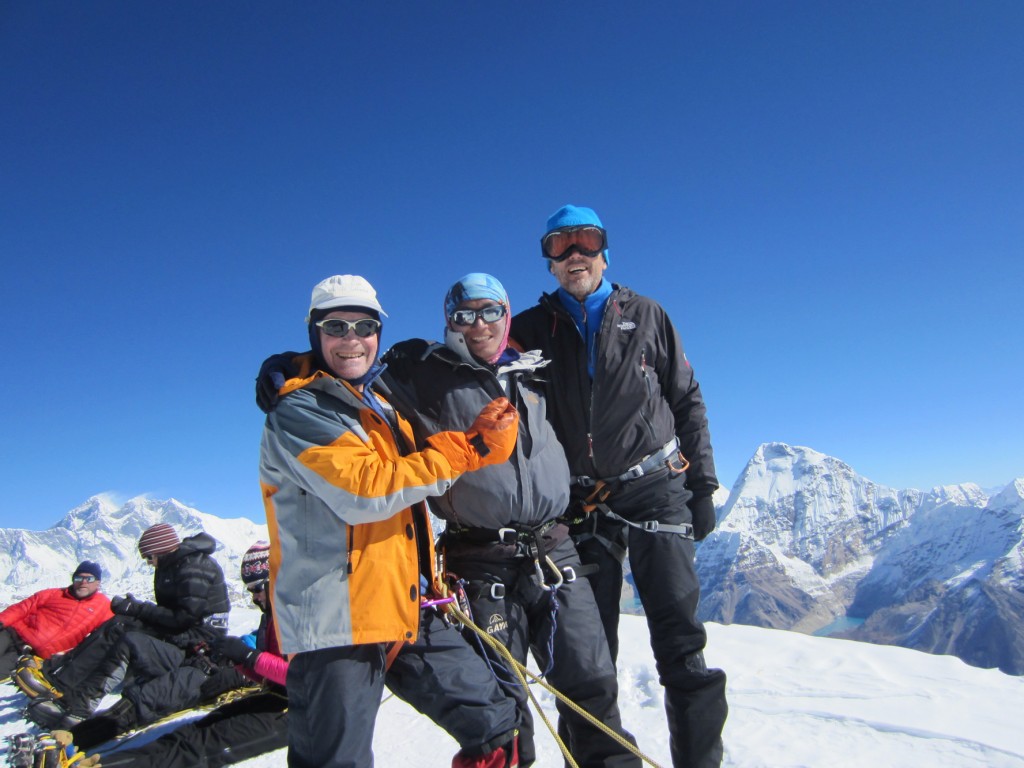
In the meanwhile the “train” and Rene have arrived just below the top and a little bit lower we can see Peter T. accompanied by Dakipa Sherpa slowly making up their way. After the mandatory top photo’s we are urged to leave the top to make space for the others who are ready to be hoisted the last part to the top. Later Nico and I regret this as a joint photo of the 6 top achievers and Rene cannot be made however, photoshop can do wonders we hear. After everyone has come back from the peak we descend a bit and take a pause to drink and and eat. Here Hans makes a group photo with Mera Peak in the back after which at 11:00 we start our descent down to Khare. The walk down is pretty tiring but I soon rediscover my fast downhill walking technique developed years ago in the Adirondacks. I follow in Dakipa’s wake, not braking with every step, letting myself go controlled, careful not to trip over the crampons. At High Camp a kitchen boy has remained behind to serve us warm lemonade and soup! Lower down at Mera La it becomes light cloud shrouds us in a mist. At the end of the glacier Dakipa says to remove the crampons, somewhat premature as it turns out to be very slippery on the trampled snow but we make it down without falling to the ramshackle Tea House we saw on the way up 3 days ago. We take a tea break and to our surprise a few moments later Johannes arrives. He missed the right track somewhere at the end of the glacier and came down the much steeper and more dangerous slope looking up to the left above us. A lot shorter but, as he remarks himself, you don’t want to slip there! Together the three of us walk the last part down to Khare where we arrive at 15:30, a very long day indeed. There we find Richard, Evert Jan and Peter B. in their tents and hear they stopped the ascent at about 6000 m and had a enjoyable slow walk down. Within an hour the rest of the party have all arrived too, we gather in the room with the heater under the table for warmth, liquids replenishment, talk about our experience today, a good evening meal, finish off the little bit remaining whiskey, just be together, relish our achievement. It has been a fantastic day!
Weather: a beautiful sunny day with hardly any wind, later light cloud, misty and finally heavier cloud.
Vertical: the height difference between High Camp and Mera Peak is 700 m; total down is 1575 m
Mon. October 31 through Wed. November 2: Khare – Kote – Tulikharkha – Lukhla.
The next 3 days we walk back to Lukhla. Today, to make up for the days lost at the airport in Kathmandu, we walk in one day to Kote. Leaving Khare It is very sunny, but around noon at Tangnag clouds and mist come up the valley, later it starts snowing lightly turning to rain just before we arrive in Kote late afternoon. Pasang has found a newly built lodge for us to stay overnight for which we are very grateful; Rene thinks we are softies en wil sleep in hie wet snow coverd tent. But then, he still young and strong! Today we have descended 1302 m and climbed 48 m.
The following day to Tulikharkha we get into more snow as we gain height. The path first goes up and down considerably as it follows the wild river and finally it goes up steeply until lunch at Pak Tor. It is snowing lightly but steadily. We wait for the others and have lunch inside by a cooking fire. What a difference with 10 days ago on our way out when we had bright warm sunshine and met a Russian female climbing group in shorts and tank tops! Just the thought keeps you warm. Later we continue our trek through the snow to Perbu La and then not much further we arrive in Tulikharkha at around 4:00 pm. Richard takes not far before Tulikharkha wrong track, notices this and backtracks towards Perbu La. We only find out at about 5 pm when Evert Jan and Rene arrive, supposedly the last ones. Immediately two Sherpa’s backtrack and luckily find him soon and they return before dark. Richard had yodeled for help, this had been heard by some of us but had been interpreted as a sign of happiness instead! Also, Maarten’s bag has not arrived yet. It soon becomes apparent that the porter carrying his bag did not get any further than our lunch spot due to “illness” (read: a hangover from a party the previous night). Dakipa Sherpa and a porter go back all the way to Perbu La in the dark to fetch the porter’s load and are back only at 11 pm that evening. We stay at the Mera Lodge & Irish Bar instead of in the tents. Today we climbed 1116 m and descended 335 m.
The day to Lukhla starts in bright sunshine, a steep climb of 235 m in 20 cm fresh snow to Zatrwala. Fog and cloud pushes it’s way up and once over the pass we descend soon into greyness. A steep section down follows which we negotiate with the help of three rope lengths tied together. After it remains steep down but it is good going in the snow. Peter B. trips at a certain moment, falls head forward on the steep path into the heels of Hans and takes him down too and end up head to heel on top of each other.
Lucky neither is seriously hurt although Peter B. has a bleeding wound on his cheek where his glasses had been pushed in. It could have been a lot worse on this slope with boulders all over the place. Our Monastery visits and donations have mollified the gods. It is snowing steadily wet snow now, we are hungry and thirsty, we do not know exactly where lunch will be, we stop at a little village, score some cola, share the last of my trail mix, continue and at 2 pm we arrive in Chitanga where a hot lunch is served by our faithful kitchen crew.
At three, just when the last of the party arrive, we continue our way down. Not much further as we pass a house we see to our surprise Pim come out of the doorway! He walked up from Lukhla to meet up with us and together we continue to arrive in Lukhla at 5 pm. Today we climbed 325 m to Zatrwala, another 153 m to Lukhla an descended a total of 1853 m. After dinner in Tara Lodge our cook Shukra arrives with slef made surprise delicious chocolate/whipped cream cake! At the “tip ceremony” everyone gets a piece, even the porters, who hardly mingled with us during the past 3 weeks, finally participate, they know what is good!
Thur. 3 through Sun. November 6: Lukhla – Poyan – Kharikhola – Kathmandu – Amsterdam.
Lukhla is filled to the brim with tourists as for a few days already airplanes can’t land. Cloud and fog make a landing on this small strip too dangerous. Gerard had been able to secure a large hotel room with 3 beds and Pim has a tiny room with an extra bunk space left over. Peter T., Nico and I have gratefully made use of these extra beds last night. At breakfast it becomes clear that our scheduled flight at 10:00 will not depart. The weather forecast indicates improvement of the cloud cover only by Monday. Alternative plans are discussed of which a possible evacuation by helicopter is the only one that gives us a chance to leave on our scheduled flight to the Amsterdam, Saturday at 18:00. Pim and Gerard the past days had already talked with someone who arranges heli flights out and this contact is taken up again. Pasang is also actively looking at evacuation possibilities and comes with a plan that we are picked up by heli in Kharikhola at a two days walking distance from here at a cost of $675. Gerard and Pim have arranged a possible pick up by heli today in Surke, a two hour walk below us, for $880. Both plans depend heavily on a lifting of fog and cloud, at this point in the morning flights are impossible from anywhere near. What to do? There is a chance we can actually fly out today from Surke. On the other hand Kharikhola has, at a lower altitude, a higher chance that is below the cloud cover. The expertise of Hans, an aeronautical engineer and amateur pilot, comes in handy. We need to decide now as the Lukhla contact can’t keep our reservation any longer and we need to start walking soon for either plan! A brief group discussion and a vote takes place, Pasang’s plan gets the nod. The decision taken we soon hike down the same path as day 1 past the landing strip down into the valley below. A few hours later, hiking above Surke, we hear the first helicopters come in and a bit later we see in the distance below us two heli’s with crowds milling about presumably trying to get a spot on board. This view gives rise to some grumblings in the group however, the decision is taken and with hindsight everything is always more clear. We have a long day in front of us and just before dark we are all in the Hotel in Poyan. The reception is great by the friendly owners with tea, warmth from the kitchen stove, beers, and food. For the night we get spacious rooms where we bunk down with our mats and sleeping bags for a good nights sleep.
The following morning (Friday Nov. 4) we are on our way at 5 am after a quick breakfast of tea and porridge as the first heli pick up in am. Four hours later we cross the hanging bridge over the Khari Khola. At this altitude below 2000m the vegetation is lush with even some palm tree here and there. The path goes up through the village of Kharikhola and a bit further at Mane Dingma is a hotel with just above it a soccerl field that functions also as a heli pad. But at 10:00 no helicopter(s)! Our disappointment grows as we wait on the hotel terras, drinking tea, having lunch, all the while hearing and seeing helicopters fly through the valley towards Lukhla or Surke. Grumblings in the group again, had we taken the other plan we would have been in Kathmandu already, Rene “shoots out of his slippers”(this is dutch for someone being upset), bur the argument is settled quickly. We draw lots for the order of departure and visit the Monastery on top of the prominent bulge above our hotel. It had been recently beautifully restored with financial help of the Netherlands-Nepal community and among the many religious images inside we found a photo of our dutch queen Beatrix! Not long after we suddenly hear a helicopter close by and, YES, it lands on our field, the first 5 of the group can depart. The pilot says he’ll try to make another flight before dark but an hour we hear by phone that he is not allowed to depart from Kathmandu and that the first flight out tomorrow morning will be for us, IF the view in Kathmandu and here is sufficient for him to fly. We spend an agreeable evening in the hotel kitchen, get our rooms, spread our mats and sleeping bags and go to sleep hopeful that tomorrow we will fly out in time to catch our scheduled flight to Amsterdam.
Indeed, just after 9 am the next morning (Sat. November 5) a first heli arrives and the next 6 people can hop on. The flight to Kathmandu takes about 45 minutes where at one moment it seems to barely clear the fast approaching and receding ridges of the fertile terraced land below, the next moment it noisily seems to hover far above the deep valleys below. Then suddenly houses, roads, the airport, the helipads and we touch down, safely, much to the relief of some in the group. A taxi takes us to the Summit Hotel where we have a copious lunch and ready ourselves for the trip home. This takes place the way it should and Sunday morning at 3:30 we take a last picture of the group in the arrival Schiphol hall.
